crowdsourcing
description: obtaining services, ideas, or content from a group of people, rather than from employees or suppliers
555 results

Bold: How to Go Big, Create Wealth and Impact the World
by
Peter H. Diamandis
and
Steven Kotler
Published 3 Feb 2015
AbundanceHub content is driven by the Abundance360 community, my mastermind group of entrepreneurs whom I’ve committed to coach over a twenty-five-year period. Crowdsourcing.org: The industry-leading resource for everything crowdsourcing. Known as one of the most influential and credible authorities in the crowdsourcing space, they are recognized for their in-depth industry analyses, definitive crowdsourcing platform directory, and unbiased thought leadership. Their mission is to serve as a complete resource of information for analysts, researchers, journalists, investors, business owners, crowdsourcing experts, and participants in crowdsourcing platforms. Crowdsortium: Using the crowd to dissect, organize, and collectively move the young and evolving crowdsourcing industry forward, Crowdsortium helps organizations find, evaluate, and execute new ideas by working with online crowds and providing events, meet-ups, resources, and guides.
…
And as of today, the site has about 300,000 users. So, while the point of the Freelancer and the Tongal case studies were to explore two different crowdsourcing platforms that offer today’s entrepreneur astounding leverage, the point of reCAPTCHA and Duolingo is the inverse—an example of the kind of crowdsourcing platform a bold entrepreneur might be interested in creating, the kind that both makes money and betters the world at the same time. How to Crowdsource As you can see from our case studies, crowdsourcing is a diverse and growing field, with more novel applications being dreamed up every day. So, before we dive into lessons learned, to give you a better sense of what’s going on, I’ve broken this section into four of the most common uses for crowdsourcing and provided a short explanation for each. 1.
…
PREPARE YOUR DATA SET For non-design-specific tasks, there is usually a data set that you must submit for analysis, categorization, and so on. If you don’t have a perfectly formatted and ready-to-go .csv file, you can turn to the crowd for help. Most of the time crowdsourcing workers have actually crowdsourced projects themselves, so they know all the best ways to prepare your data for this process. vi. QUALIFY YOUR WORKERS Unfortunately, crowdsourcing does have the potential to create undesired results. The quality of the results can sometimes be inadequate, and crowdsourcing is not sheltered from the scammers and bots lurking on the Internet. Luckily, qualifying your workers and curating a trustworthy work force can help you avoid these issues.

Data Action: Using Data for Public Good
by
Sarah Williams
Published 14 Sep 2020
Jeff Howe codified the term's more contemporary meaning in a 2006 article in Wired titled “The Rise of Crowdsourcing,” using the term to describe the strategic appropriation of specialized labor markets to “create content, solve problems, even do corporate R&D.” 45 Howe tied crowdsourcing to Amazon's Mechanical Turk program, a “Web-based marketplace that helps companies find people to perform tasks computers are generally lousy at,” such as identifying images, sifting through interpretive information in documents, creating annotations, and more.46 This is where historical and contemporary treatments of the term “crowdsourcing” diverge: modern crowdsourcing privileges human intervention over computational algorithms, and relies on the dialectic relationship between humans and technology. Although the term “crowdsourcing” was coined for application to corporations, many public participation science research projects have employed elements of crowdsourcing methodologies in order to annotate or collect large amounts of data that could not otherwise be annotated with a smaller number of researchers addressing the problem. Crowdsourcing is controversial. One of the criticisms levelled at the crowdsourcing method of data collection involves the same criticism of participatory methods: data inaccuracy.
…
Ultimately, the team developed a more streamlined sensor, which could be bought as a DIY kit from the KitHub website.44 Rather than going to test the sites themselves, the Safecast team decided to employ crowdsourcing techniques to collect data from all over Japan. Crowdsourcing is a term that describes a spectrum of initiatives involving (sometimes) massive numbers of people participating in task-based problem solving. Jeff Howe codified the term's more contemporary meaning in a 2006 article in Wired titled “The Rise of Crowdsourcing,” using the term to describe the strategic appropriation of specialized labor markets to “create content, solve problems, even do corporate R&D.” 45 Howe tied crowdsourcing to Amazon's Mechanical Turk program, a “Web-based marketplace that helps companies find people to perform tasks computers are generally lousy at,” such as identifying images, sifting through interpretive information in documents, creating annotations, and more.46 This is where historical and contemporary treatments of the term “crowdsourcing” diverge: modern crowdsourcing privileges human intervention over computational algorithms, and relies on the dialectic relationship between humans and technology.
…
One of the criticisms levelled at the crowdsourcing method of data collection involves the same criticism of participatory methods: data inaccuracy. Some methods of crowdsourcing are extremely exploitative: at sites such as Amazon's Mechanical Turk, CrowdFlower, Clickworker, or Toluna, for example, workers are often paid well below minimum wage—exploiting labor pools at home and abroad.47 Data Action does not support using exploitative crowdsourcing. In many ways the popularity of crowdsourcing was driven by technology that allowed easy access to vast groups of people. The increased availability of smartphones beginning in 2007 with the release of the first iPhone and Android HTC device catalyzed widespread personal, mobile access to the internet.
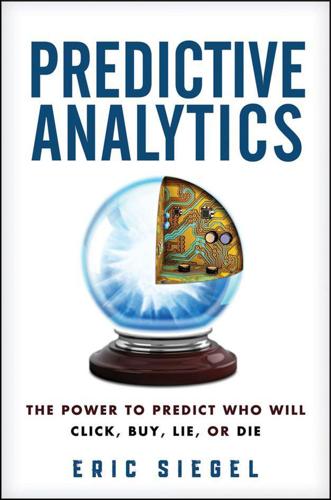
Predictive Analytics: The Power to Predict Who Will Click, Buy, Lie, or Die
by
Eric Siegel
Published 19 Feb 2013
Although built from real data, the example decision trees in this chapter are not from the deployed Chase mortgage project. 8 Ian Ayres provides an informative overview of the fundamental intuition versus data debate in the Chapter “Experts versus Equations” of Super Crunchers: Why Thinking-by-Numbers Is the New Way to Be Smart (Bantam, 2007). 9 This non-existence of a universal solution to machine learning is known as the “no free lunch” theorem. 10 To view a non-buggy, proficient Tetris player we evolved, see www.predictionimpact.com/tetris. 11 CART® is a registered trademark licensed exclusively to Salford Systems. 12 The form of micro-risk relevant to the economic crisis is that of delinquent debtors, rather than the micro-risk predicted in this chapter’s case study, mortgage prepayments. But predicting delinquent accounts with PA is also subject to these same limitations. Chapter 5 The Ensemble Effect Netflix, Crowdsourcing, and Supercharging Prediction To crowdsource predictive analytics—outsource it to the public at large—a company launches its strategy, data, and research discoveries into the public spotlight. How can this possibly help the company compete? What key innovation in predictive analytics has crowdsourcing helped develop? Must supercharging predictive precision involve overwhelming complexity, or is there an elegant solution? Is there wisdom in nonhuman crowds?
…
PA competitions do for data science what the X Prize did for rocket science. Mindsourced: Wealth in Diversity [Crowdsourcing is] a perfect meritocracy, where age, gender, race, education, and job history no longer matter; the quality of the work is all that counts. —Jeff Howe, Crowdsourcing: Why the Power of the Crowd Is Driving the Future of Business When pursuing a grand challenge, from where will key discoveries appear? If we assume for the moment that one cannot know, there’s only one place to look: everywhere. Contests tap the greatest resource, the general public. A common way to enact crowdsourcing, an open competition brings together scientists from far and wide to compete for the win and cooperate for the joy.
…
A common way to enact crowdsourcing, an open competition brings together scientists from far and wide to compete for the win and cooperate for the joy. With crowdsourcing, a company outsources to the world. The $1 million Netflix Prize attracted a white-hot spotlight and built a new appreciation for the influence crowdsourcing has to rally an international wealth of bright minds. In total, 5,169 teams formed to compete in this contest, submitting 44,014 entries by the end of the event. PA crowdsourcing reaps the rewards brought by a diverse brainshare. Chris Volinsky, a member of a leading Netflix Prize team named BellKor from AT&T Research, put it to me this way: “From the beginning, I thought it was awesome how many people in the top of the leaderboard were what could be called ‘amateurs.’
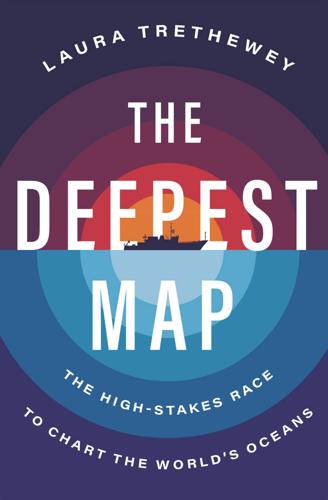
The Deepest Map
by
Laura Trethewey
Published 15 May 2023
That’s a bit of a myth,” said Brian Calder, the associate director of CCOM. Calder has written extensively about the uncertainties contained in professionally made maps, and he’s experimenting with crowdsourcing himself. Yes, trained hydrographers make good maps, he said, but so can a “superobserver,” his term for an untrained crowdsourcer committed to the cause. Both Calder and Desrochers dislike the crowdsourcing label. It naturally draws comparisons with the world’s best-known and most successful crowdsourcing effort: Wikipedia. The online encyclopedia’s legion of unpaid writers and editors validate one another’s work through sheer critical mass, eventually arriving at an approximate version of the truth.
…
As seas rise and coastlines change, the small island states of the Pacific, such as the Republic of Palau, the Republic of Kiribati, and the Republic of the Marshall Islands, are all grappling with a dire need for new and improved charts. Crowdsourcing offers a way into the mapping world without the bigger budget of a developed country. A smaller local survey boat can reach shallow, hard-to-reach coastlines regularly where a larger survey vessel might get snagged or return only occasionally. Jennifer Jencks felt excited by the potential to crowdsource the seafloor. Jencks, who oversees the NOAA data center in Boulder, Colorado, where all of Seabed 2030’s maps are held, also chairs the Crowdsourced Bathymetry Working Group at the International Hydrographic Organization (IHO).
…
But it was clear that their numbers weren’t growing, and neither was the map. To Jencks, those problems seemed interconnected. “Crowdsourced bathymetry came about a few years ago, when IHO was saying, ‘At this rate we’re never going to map the whole darn ocean. We really need to start looking outside the box,’” she remembered. As her working group started to spearhead crowdsourcing projects, she began to notice new faces at ocean-mapping events. When we spoke, she had just wrapped up a Caribbean mapping workshop during which Costa Rica had agreed to allow crowdsourcing in its waters under national jurisdiction. “The folks who are coming to the table is so much broader now,” she said.
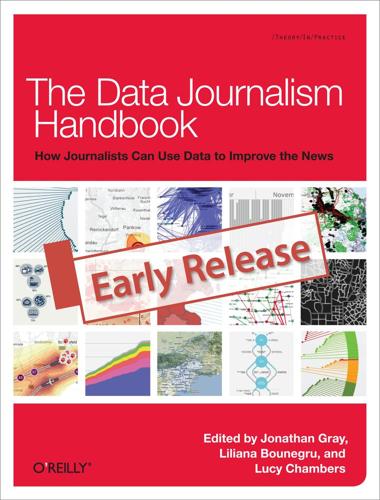
The Data Journalism Handbook
by
Jonathan Gray
,
Lucy Chambers
and
Liliana Bounegru
Published 9 May 2012
The only disappointment is the lack of absolute values—you only get relative percentages, which can be hard to interpret. Figure 4-11. Google Insights (Google) — Pete Warden, independent data analyst and developer Crowdsourcing Data at the Guardian Datablog Crowdsourcing, according to Wikipedia, is “a distributed problem-solving and production process that involves outsourcing tasks to a network of people, also known as the crowd.” The following is from an interview with Simon Rogers on how the Datablog used crowdsourcing to cover the MPs’ expenses scandal, drug use, and the Sarah Palin papers: Sometimes you will get a ton of files, statistics, or reports which it is impossible for one person to go through.
…
What both of these projects have in common is that they are about issues that people really care about, so they are willing to spend time on them. A lot of the crowdsourcing we have done relies on help from obsessives. With the MPs’ expenses, we had a massive amount of traffic at the beginning and it really died down. But we still have people that are obsessively going through every page looking for anomalies and stories. One person has done 30,000 pages. They know a lot of stuff. We also used crowdsourcing with the Sarah Palin papers. Again this was a great help in scouring the raw information for stories. In terms of generating stories crowdsourcing has worked really well for us. People really liked it and it made the Guardian look good.
…
My colleagues continued to use and build on the techniques learned on that day to create more ambitious and technical projects, such as a database of the administrative costs of housing. With this data, I made an interactive map in Fusion Tables. We asked our readers to play around with the data and crowdsourced results at http://bit.ly/scratchbook-crowdsourcing, for example. After a lot of questions on how we made a map in Fusion Tables, I also recorded a video tutorial. What did we learn? We learned a lot, but we also came along a lot of obstacles. We recognized these four: Where to begin: question or data? Almost all projects stalled when searching for information.
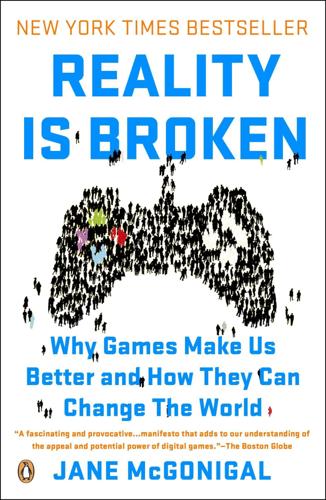
Reality Is Broken: Why Games Make Us Better and How They Can Change the World
by
Jane McGonigal
Published 20 Jan 2011
So they decided to enlist the public’s direct help in uncovering whatever it was the authorities didn’t want uncovered. In other words, they “crowdsourced” the investigation. The term crowdsourcing, coined by technology journalist Jeff Howe in 2006, is shorthand for outsourcing a job to the crowd.3 It means inviting a large group of people, usually on the Internet, to cooperatively tackle a big project. Wikipedia, the collaboratively authored online encyclopedia created by a crowd of more than 10 million unpaid (and often anonymous) writers and editors, is a prime example. Crowdsourcing is a way to do collectively, faster, better, and more cheaply what might otherwise be impossible for a single organization to do alone.
…
“MPs’ Expenses: Critics Attack Censorship as Redactions Black Out Documents.” Guardian, June 19, 2009. http://www.guardian.co.uk/politics/2009/jun/18/mps-expenses-censorship-black-out. 3 Jeff Howe. Crowdsourcing: Why the Power of the Crowd Is Driving the Future of Business (New York: Crown Business, 2008), 4-17. 4 Andersen, Michael. “Four Crowdsourcing Lessons from the Guardian’s (Spectacular) Expenses-Scandal Experiment.” Nieman Journalism Lab, June 23, 2009. http://www.niemanlab.org/2009/06/four-crowdsourcing-lessons-from-the-guardians-spectacular-expenses-scandal-experiment/. 5 “Participation on Web 2.0 Websites Remains Weak.” Reuters, April 18, 2007. http://www.reuters.com/article/technologyNews/idUSN1743638820070418. 6 Wright, Steven, and Jason Groves.
…
Or investigate by political party. All the MPs’ records are on there now—so let us know what you find. Just three days into the game, it was clear that the crowdsourcing effort was an unprecedented success. More than 20,000 players had already analyzed more than 170,000 electronic documents. Michael Andersen, a member of the Nieman Journalism Lab at Harvard University and an expert on Internet journalism, reported at the time: “Journalism has been crowdsourced before, but it’s the scale of the Guardian’s project—170,000 documents reviewed in the first 80 hours, thanks to a visitor participation rate of 56 percent—that’s breathtaking.”4 A visitor participation rate measures the percentage of visitors who sign up and make a contribution to a network.
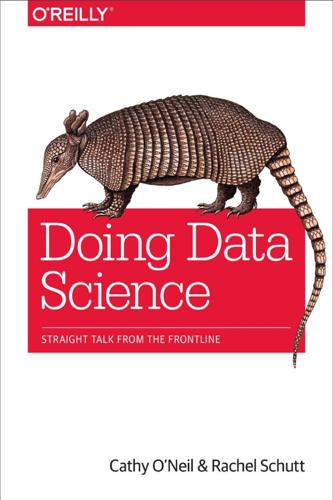
Doing Data Science: Straight Talk From the Frontline
by
Cathy O'Neil
and
Rachel Schutt
Published 8 Oct 2013
connected graphs, Centrality Measures constraints, on algorithms at runtime, Runtime interpretability of, Interpretability scalability, Scalability thought experiments for, Logistic Regression–Media 6 Degrees Exercise understanding, You constructing features, How to Be a Good Modeler continuous density function, Probability distributions continuous variables in decision trees, Handling Continuous Variables in Decision Trees converged algorithms, Alternating Least Squares Conway, Drew, The Current Landscape (with a Little History), The Current Landscape (with a Little History) correlated variables, Feature Selection correlation vs. causality, Correlation Doesn’t Imply Causation–Confounders: A Dating Example cosine similarity, Similarity or distance metrics, Nearest Neighbor Algorithm Review Cosma Shalizi, The Current Landscape (with a Little History) CountSketch, Enter MapReduce Crawford, Kate, Populations and Samples of Big Data Crawshaw, David, About David Crawshaw creating competitions, Background: Data Science Competitions credit score example, Example with credit scores–Example with credit scores Cronkite Plaza (Thorp/Rubin/Hansen), Cronkite Plaza cross-validation, Adding in modeling assumptions about the errors, Last Thoughts on These Algorithms crowdsourcing DARPA and, Background: Crowdsourcing distributive, Background: Crowdsourcing InnoCentive and, Background: Crowdsourcing issues with, Background: Crowdsourcing Kaggle and, Background: Crowdsourcing Mechanical Turks vs., Background: Crowdsourcing organization, Background: Crowdsourcing Wikipedia and, Background: Crowdsourcing Cukier, Kenneth Neil, Datafication Cukierski, William, William Cukierski curves, goodness of, Research Experiment (Observational Medical Outcomes Partnership) D Dalessandro, Brian, Logistic Regression DARPA, Background: Crowdsourcing data abundance vs. scarcity, Data Abundance Versus Data Scarcity clustering, k-means extracting meaning from, Extracting Meaning from Data–Thought Experiment: What Is the Best Way to Decrease Concern and Increase Understanding and Control?
…
using, Data Engineering: MapReduce, Pregel, and Hadoop, Enter MapReduce word frequency problems, Enter MapReduce mathematical models, Modeling matrix decomposition, The Dimensionality Problem maximize information gain, The Decision Tree Algorithm maximum likelihood estimation, Fitting a model, Estimating α and β Mayer-Schoenberger, Viktor, Datafication McKelvey, Jim, About Square MCMC methods, Inference for ERGMs mean absolute error, Evaluation mean squared error, Adding in modeling assumptions about the errors, Adding in modeling assumptions about the errors, Evaluation, How to Be a Good Modeler meaning of features, Causality measurement errors, Some Problems with Nearest Neighbors Mechanical Turks, Background: Crowdsourcing Amazon, Background: Crowdsourcing crowdsourcing vs., Background: Crowdsourcing Mechanize, Scraping the Web: APIs and Other Tools Media 6 Degrees (M6D), Your Mileage May Vary Media 6 Degrees (M6D) case study, M6D Logistic Regression Case Study–Evaluation click models for, Click Models Media 6 Degrees (M6D) exercise, Media 6 Degrees Exercise medical data thought experiment, Thought Experiment, Closing Thought Experiment meta-definition thought experiment, Thought Experiment: Meta-Definition Metamarket, The Current Landscape (with a Little History) methods, Three Basic Algorithms feature selection, Example: User Retention MCMC, Inference for ERGMs metrics, Nearest Neighbor Algorithm Review Microsoft Research, Populations and Samples of Big Data misclassification rate, Pick an evaluation metric mixed-method approaches, Moving from Descriptive to Predictive modeling, Linear Regression EDA and, But how do you build a model?
…
—as well as what happens once you have your model, including visualization and communication. The team of Kaggle data scientists actually spends a lot of time creating the dataset and evaluation metrics, and figuring out what questions to ask, so the question is: while they’re doing data science, are the contestants? Background: Crowdsourcing There are two kinds of crowdsourcing models. First, we have the distributive crowdsourcing model, like Wikipedia, which is for relatively simplistic but large-scale contributions. On Wikipedia, the online encyclopedia, anyone in the world can contribute to the content, and there is a system of regulation and quality control set up by volunteers.
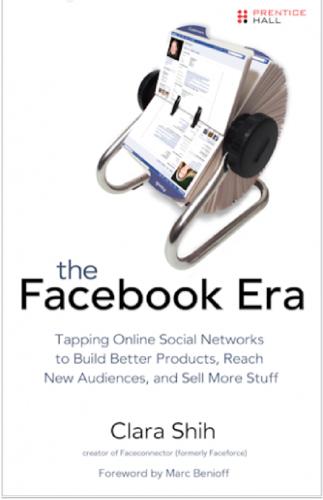
The Facebook era: tapping online social networks to build better products, reach new audiences, and sell more stuff
by
Clara Shih
Published 30 Apr 2009
See also friends blocking, 49 de-friending, 49 content aggregation, 27 continual iteration in innovation, 120 changing customers into partners, 121 crowdsourcing feedback, 120 with polls, 120 conversations in unsanctioned communities, listening to, 150-153 corporate alumni networks, 139-140 corporate governance, 195-196 cross-boundary collaboration, 196-197 industry standards and portability, 197-198 input from legal, IT, and PR departments, 200-202 From the Library of Kerri Ross 226 co r p o ra te g ove r n a n ce open networks versus closed networks, 196 risk management, 198-200 brand misrepresentation, 200 identity, privacy, security, 198-199 intellectual property, confidentiality, 199-200 user adoption levels of social networking, 197 corporate IT, social future of, 206-207 corporate participation in unsanctioned communities, 153-155 corporate presence establishing on social networking sites, 155-157, 160-161 selecting social networking sites for, 156 in unofficial communities, 161 cost-effectiveness of hypertargeting, 86-87 CPC ad pricing model, 171 CPM ad pricing model, 171 credibility, establishing, 64-65 CRM (customer relationship management), 61 social networking sites versus, 80 cross-boundary collaboration, 196-197 crowdsourcing, 77-78 crowdsourcing feedback, 120 crowdsourcing ideation, 111-112 customer engagement, 145146. See also marketing establishing social networking presence, 155-157, 160-161 finding unsanctioned communities, 148-155 strategic planning for, 146-148, 166 customer feedback crowdsourcing, 120 with polls, 120 on prototyping, 116 customer organizations, navigating relationships in, 69-71 customer rapport, building/sustaining, 75-76 customer references, 74-75 customer relationship management (CRM), 61 social networking sites versus, 80 customer support, maintaining, 77-78 customers changing into partners, 121 prospecting for, 65-67 Cyworld, 221 D Dawkins, Richard, 109 de-friending contacts, 49 deactivating accounts, 49 decision-making in technology revolutions, 22-23 Del Monte, 20 Dell Computer, 112 diffusion of innovation theory, 118-119 The Diffusion of Innovations (Rogers), 118 digital media, evolution of, 25 creation and storage, 26 distribution, 26-29 Facebook, 34-36 impact of technology revolutions on, 31 online social graph, 42 social filtering, 29-32, 34 discovery sites, 18-19 distribution of digital media, 26-29 behavioral targeting, 28-29 content aggregation, 27 impact of technology revolutions on, 31 search engine marketing, 27-28 Web site communities, 27 social distribution, 96-97 passive word of mouth, 97-98 reaching new audiences, 101 social ads, 98-99 social shopping and recommendations, 101-103 viral marketing, 99-101 Doostang recruiting via, 125 statistics, 221 Dow Chemical Company case study (corporate alumni networks), 140 Dunn, Andy, 88 From the Library of Kerri Ross Fa ce b o o k Pa g e s E early adopters (in social epidemics), 100 Eastman Kodak, 204 education level, as hypertargeting dimension, 165 employee recruiting.
…
Because their ideas are heard, customers feel more accountable for providing input and more grateful when that input is incorporated in the design of new products. It is a win-win for companies and their customers. From the Library of Kerri Ross 108 Pa r t I I Tra n s fo r m i n g t h e Way We D o B u s i n e s s Concept Generation Social Processes: Meme Feeds, Crowdsourcing Ideas, Finding Expertise Continual Iteration Prototyping Social Processes: Crowdsourcing Feedback, Targeted Polling, Testing Ideas Social Processes: Crowdsourcing Feedback, Collaboration Commercial Implementation Social Processes: Winning Internal Buy-In, Persuading Customers to Adopt an Unproven Innovation Figure 6.1 The cycle of innovation typically follows four stages, each of which contains multiple social processes: concept generation, prototyping, commercial implementation, and continual iteration.
…
Figure 6.3 Yammer is a status broadcasting tool that allows employees of the same company to answer and view colleagues’ answers to a simple question: “What are you working on?” This is salesforce.com’s Yammer page. From the Library of Kerri Ross C h a p te r 6 S o c i a l I n n ovat i o n 111 Crowdsourcing Ideation In addition to providing us with inspiration, other people are a wonderful source of good ideas. We introduced the notion of crowdsourcing in Chapter 4,“Social Sales,” in the context of customer support. Product managers can also use crowdsourcing techniques to generate ideas from the community for their products. Depending on the product and competitive situation, it might make sense to engage with internal communities, external communities, or both.
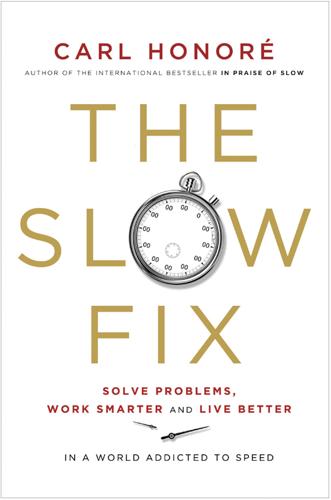
The Slow Fix: Solve Problems, Work Smarter, and Live Better in a World Addicted to Speed
by
Carl Honore
Published 29 Jan 2013
In 2010 the Icelandic Parliament set one up to gather input for the new national constitution. It also canvassed opinions on Twitter, YouTube and Facebook. To see how crowdsourcing politics works in the wild, I join an Assembly held in a school gymnasium on the outskirts of Reykjavik. Its mandate is to identify the “core competencies” upon which Iceland should be building its future. Some 150 people turn up on a grey, wet Saturday morning. True to the spirit of crowdsourcing, they represent a cross-section of Icelandic society plus a smattering of parliamentarians, a former mayor and the city’s chief of police. Most people are dressed casually, with many men sporting moustaches as part of an anti-cancer campaign.
…
So has the Assembly done its job? Has Iceland’s experiment in crowdsourcing unleashed a torrent of creative solutions to the nation’s problems? Sitting at Table K, brainstorming with the locals, I did not feel like I was witnessing problem-solving on a Promethean scale. Sure, we came up with an intriguing list of suggestions, but so too could a few people sitting together in a bar. But that might be the wrong way to the think about it. Maybe I am trying to assess a pointilliste painting from too close up. When you step back and look at the big picture, Iceland’s experiment with crowdsourcing does seem to be churning up useful ideas that might one day make their way into government policy.
…
And computer troubleshooting is just the tip of the iceberg: the Web is crammed with forums where crowds offer advice on everything from relationships to health to home repairs. Now is the time to sound a note of caution: collaboration and crowdsourcing both have their limits. Working together is not the only answer to every problem. Even teams with a fine track record can, over time, grow stale and narrow-minded. The crowd can make mistakes or be sabotaged by rogue members. With around 100,000 contributors constantly editing its content, Wikipedia is an example of the perils of crowdsourcing. Though a goldmine of information, the online encyclopedia is prone to inaccuracies and biases. The bubbles and crashes of recent years are a reminder that stock markets, another much-touted example of collective intelligence, are not always so clever.

Future Crimes: Everything Is Connected, Everyone Is Vulnerable and What We Can Do About It
by
Marc Goodman
Published 24 Feb 2015
The boss’s gamification strategy paid off and received widespread attention among his workers, with the Ferrari reserved for the chosen “employee of the month.” From Crowdsourcing to Crime Sourcing Of all the business innovation techniques utilized by Crime, Inc., perhaps none has been as widely adopted as crowdsourcing. Crowdsourcing began as a legitimate tool to leverage the wisdom of crowds to solve complex business and scientific challenges. The concept of crowdsourcing first gained widespread attention in an article written in 2006 by Jeff Howe for Wired. Howe defined crowdsourcing as the act of “outsourcing a task to a large, undefined group of people through an open call.” While hundreds of examples of crowdsourcing have been documented with great results, these very same techniques can be harnessed for criminal purposes as well.
…
Rather than having a small elite force of highly trained agents on hand to protect all of us, we are far better off enabling ordinary citizens to combat the problem as a group through crowdsourcing. To beat Crime, Inc. at its game, we must get good to scale, but bigger and better. The idea of crowdsourcing law enforcement is hardly new. In 1865, when John Wilkes Booth assassinated President Lincoln, he became the first fleeing felon to have his photograph appear on a wanted poster. Today, 150 years after the murder of our nation’s sixteenth president, government’s implementation of crowdsourced law enforcement has changed nary a bit. Cops distribute photographs to local news channels, and broadcasters warn that the wanted party is “armed and dangerous, please contact local law enforcement should you see him.”
…
If any of the participants involved are arrested, they are unlikely to be able to “rat” on their co-conspirators, whom they met for the first time at the scene of the crime. Similar incidents have taken place in Chicago, Philadelphia, and Los Angeles. Some crowdsourcing techniques are meant to give potential lawbreakers a leg up on the police. In the United States, mobile apps such as DUI Dodger, Buzzed, and Checkpoint Wingman allow those who have had too much to drink to crowdsource the location of DUI checkpoints, view them on an interactive map on the iPhone or Android device, and receive alerts when checkpoints are moved or newly established. When the 2011 London riots against government spending cuts turned violent, protesters created an app called Sukey, which allowed them to photograph police and upload their geo-tagged images to a crowdsourced interactive map.
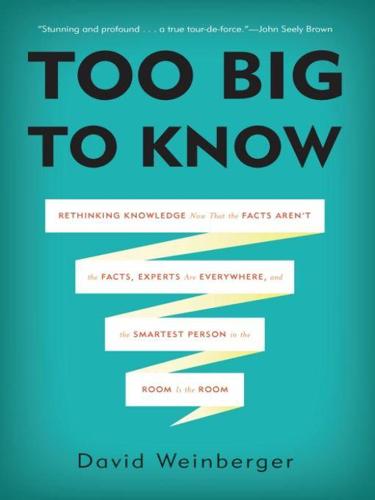
Too Big to Know: Rethinking Knowledge Now That the Facts Aren't the Facts, Experts Are Everywhere, and the Smartest Person in the Room Is the Room
by
David Weinberger
Published 14 Jul 2011
Our traditional knowledge-based institutions are taking their first hesitant steps on land, and knowledge is beginning to show its new shape: Wide. When British media needed to pore through tens of thousands of pages of Parliamentarians’ expense reports, they “crowd-sourced” it, engaging thousands of people rather than relying on a handful of experts. It turns out that, with a big enough population engaged, sufficient width can be its own type of depth. (Note that this was not particularly good news for the Parliamentarians.) Boundary-free. Evaluating patent applications can’t be crowd-sourced because it would require expertise that crowds don’t have. So, when the US Patent Office was frustrated by how long its beleaguered staff was taking to research patent applications, it started a pilot project that enlists “citizen-experts” to find prior instances of the claimed inventions, across disciplinary and professional lines.
…
Its massiveness alone gives rise to new possibilities for expertise—that is, for groups of unrelated people to collectively figure something out, or to be a knowledge resource about a topic far too big for any individual expert. The simplest forms are what Jeff Howe called “crowdsourcing” in a 2006 article in Wired.13 He intended it as a play on “outsourcing,” and his examples mainly were of “plugged-in enthusiasts” who will work for much less than traditional employees. But the term was so good that it quickly escaped its creator’s tether and now applies to just about any instance in which the mass of the Net lets us do things for little or no cost that otherwise would have been prohibitively expensive. The examples of crowdsourcing are familiar at this point. When Members of Parliament were found to be routinely taking frivolous deductions, the British newspaper The Guardian set up a site where 20,000 people pored through 700,000 expense claims.
…
An excerpt of the chapter titled “The New York City Draft Riots of 1863” can be found at http://www.press.uchicago.edu/Misc/Chicago/317749.html. 11 Howard Rheingold, Smart Mobs: The Next Social Revolution (Basic Books, 2003). 12 James Surowiecki, The Wisdom of Crowds (Random House, 2004). 13 Jeff Howe, “The Rise of Crowdsourcing,” Wired 14, no. 6 (June 2006), http://www.wired.com/wired/archive/14.06/crowds.html. See also Howe’s Crowdsourcing (Crown Business, 2008). 14 “Darpa Network Challenge: We Have a Winner,” https://network-challenge.darpa.mil/Default.aspx. 15 “How It Works” (MIT), 2009, http://balloon.mit.edu/mit/payoff/. 16 Darren Murph, “MIT-Based Team Wins DARPA’s Red Balloon Challenge, Demonstrates Power of Social Networks (and Cold Hard Cash),” December 6, 2009, http://www.engadget.com/2009/12/06/mit-based-team-wins-darpas-red-balloon-challenge-demonstrates/. 17 See Jonathan Zittrain’s “Minds for Sale” video at http://www.youtube.com/watch?
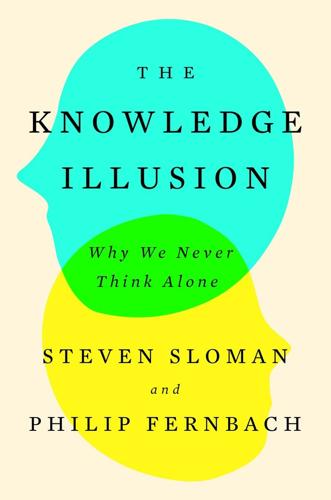
The Knowledge Illusion
by
Steven Sloman
Published 10 Feb 2017
The web has provided smart new tools for us to use, like GPS devices and operating systems that talk to us. But one of the most useful forms of web applications turns people themselves into tools. Crowdsourcing applications have created broader and more dynamic communities of knowledge than ever before by aggregating the knowledge and skills of large numbers of people. Crowdsourcing is the critical provider of information to sites and apps that integrate knowledge from different experiences, locations, and knowledge bases. Yelp and Amazon crowdsource reviews for services and products. Waze crowdsources maps of traffic conditions from the input of individual drivers on the road. Then there are sites like Reddit that allow users to ask questions and encourage anyone to provide an answer.
…
Each of us has our little window on the world, a little bit of knowledge that we have access to. Crowdsourcing is a way of looking through tens, hundreds, and sometimes thousands of windows simultaneously. But crowdsourcing works only when it provides access to expertise. Without expertise, it can be useless and even detrimental. Pallokerho-35 (PK-35) is a Finnish soccer club. A few years ago, the team invited fans to participate in decisions regarding recruiting, training, and even game tactics. They voted using cell phones. The outcome was disastrous. The team did poorly, the coach was fired, and the experiment came to an abrupt end. For a crowdsourcing scheme to work, it’s not enough just to have a big community; the community needs to have the necessary expertise.
…
Then there are sites like Reddit that allow users to ask questions and encourage anyone to provide an answer. When done right, crowdsourcing is the best way available to take advantage of expertise in the community. It gets as many people as possible involved in pursuing a goal. This means experts are more likely to offer their input. In the end, that’s the best way to achieve an objective: to make use of expertise. Yelp integrates knowledge from restaurant goers who purport to know how good a restaurant is, and Reddit tries to identify who has the most expertise to answer someone’s question. So crowdsourcing works best when those with the most expertise have sufficient incentive to participate in the community.

Whiplash: How to Survive Our Faster Future
by
Joi Ito
and
Jeff Howe
Published 6 Dec 2016
page=me_tab. 5 An earlier version of this section, including the quotes from Zoran Popović and Adrien Treuille, appeared in Slate. Jeff Howe, “The Crowdsourcing of Talent,” Slate, February 27, 2012, http://www.slate.com/articles/technology/future_tense/2012/02/foldit_crowdsourcing_and_labor_.html. 6 Jeff Howe, “The Rise of Crowdsourcing,” WIRED, June 1, 2006, http://www.wired.com/2006/06/crowds/. 7 Todd Wasserman, “Oxford English Dictionary Adds ‘Crowdsourcing,’ ‘Big Data,’” Mashable, June 13, 2013, http://mashable.com/2013/06/13/dictionary-new-words-2013/. 8 “Longitude Found: John Harrison,” Royal Museums Greenwich, October 7, 2015, http://www.rmg.co.uk/discover/explore/longitude-found-john-harrison. 9 Michael Franklin, “A Globalised Solver Network to Meet the Challenges of the 21st Century,” InnoCentive Blog, April 15, 2016, http://blog.innocentive.com/2016/04/15/globalised-solver-network-meet-challenges-21st-century/. 10 Karim R.
…
“The labor isn’t always free, but it costs a lot less than paying traditional employees. It’s not outsourcing; it’s crowdsourcing.” The term, originally coined in a joking conversation between Jeff and his Wired editor Mark Robinson, was quickly adopted, initially by people in vocations like advertising and journalism in which crowdsourcing had taken root, and then by the public at large. (The word first appeared in the Oxford English Dictionary in 2013.)7 As a business practice crowdsourcing has become standard operating procedure in fields ranging from technology and media to urban planning, academia, and beyond.
…
It’s the kind of result we’re beginning to see more and more of. A bigger circle benefits us all. PS: The Difference Difference Makes I spent much of 2007 and 2008 writing a book about crowdsourcing. I had no trouble identifying fascinating case studies; a burst of ambitious, if often ill-conceived, start-ups had sprung up in the years since Wired published my original article on the subject. But there were very few serious researchers studying the kinds of group behaviors that either made crowdsourcing click, or insured that it didn’t. Discovering Scott E. Page’s work on the mechanics of diversity represented a turning point—diversity was more than a policy plank or an indifferent bullet point on some HR presentation.

Exponential Organizations: Why New Organizations Are Ten Times Better, Faster, and Cheaper Than Yours (And What to Do About It)
by
Salim Ismail
and
Yuri van Geest
Published 17 Oct 2014
This strategy failed, largely due to legal issues about ownership and licensing costs, although another problem was that the students lacked a sense of purpose and commitment insofar as the company was concerned, which resulted in almost no contribution to the platform [Experimentation]. Undaunted, Jones and Rogers took another shot at attracting community, this time via crowdsourcing. They were successful this time around, and in March 2008, Local Motors debuted as the first community to completely crowdsource a car. (The company currently has eighty-three employees and three micro-factories for manufacturing.) The Local Motors staff then turned its attention to evangelizing, sharing its passion for the product on numerous designer sites, which acted as magnets for a like-minded community [Community & Crowd].
…
Here are some of the paper’s initiatives: In 2007, the Guardian offered a free blogging platform for thought leaders and created online forums and discussion groups [Community and Crowd]. Developers offered an open API to the paper’s website so they could leverage content on the site [Algorithms]. Investigative reporting for the millions of WikiLeaks cables fully crowdsourced [Community & Crowd]. The Guardian has institutionalized the crowdsourcing of investigative reporting and has successfully used that approach on several occasions, including after obtaining public documents from Sarah Palin’s tenure as governor of Alaska. Similarly, in 2009, when the UK government bowed to public pressure and released two million pages of parliamentary expense reports, the Guardian asked its readership to find any newsworthy needles in that vast haystack of words.
…
CRM is initiated by companies, VRM by customers. Differential real-time pricing models Real-time monitoring will allow for the institution of real-time pricing to maximize pricing based on real-time demand (e.g., airline tickets). AIs will prove extremely valuable in this transition. Crowdsourced online marketplaces for marketing materials Using online marketplaces to crowdsource TV commercials (Tongal), logos and banners (99 designs), or any marketing expertise (Freelancer). PR & marketing will have to aim a lot further out to place business memes Due to accelerated pace of change it is mandatory to look further into the future to launch marketing and PR campaigns by identifying when a meme is booming (predictive planning) or, even better, when it first emerges.
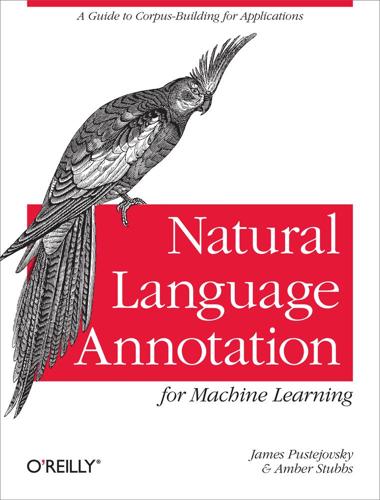
Natural Language Annotation for Machine Learning
by
James Pustejovsky
and
Amber Stubbs
Published 14 Oct 2012
In Chapter 4 we discussed interoperability and reproducibility as it applies to data formats, but the concept applies to the annotation task as well. Crowdsourcing Crowdsourcing is another approach that is being used more frequently in the annotation community. Essentially, instead of asking a small number of annotators to tag a large number of extents, the task is broken down into a large number of smaller tasks, and a large number of annotators are asked to tag only a few examples each. One popular crowdsourcing platform is Amazon’s Mechanical Turk (MTurk), a resource where people who have tasks that require human intelligence to perform can place requests that are then fulfilled by people across the country and around the world.
…
“Annotating expressions of opinions and emotions in language.” Language Resources and Evaluation 39(2–3):165–210. References for Using Amazon’s Mechanical Turk/Crowdsourcing Aker, Ahmet, Mahmoud El-Haj, M-Dyaa Albakour, and Udo Kruschwitz. 2012. “Assessing Crowdsourcing Quality through Objective Tasks.” In Proceedings of the 8th International Conference on Language Resources and Evaluation (LREC’12), Istanbul, Turkey. Filatova, Elena. 2012. “Irony and Sarcasm: Corpus Generation and Analysis Using Crowdsourcing.” In Proceedings of the 8th International Conference on Language Resources and Evaluation (LREC’12), Istanbul, Turkey. Fort, Karën, Gilles Adda, and K.
…
gold standard data set, Creating the Gold Standard (Adjudication) guidelines, writing, Writing the Annotation Guidelines–Example 4: Link Tags—Semantic Roles infrastructure of project for, The Infrastructure of an Annotation Project light annotation task, Semantic Roles machine learning algorithms, matching to, Matching Annotation to Algorithms MAMA cycle, Be Prepared to Revise metadata, Metadata Annotation: Document Classification–Multiple Labels: Film Genres multimodel, Semantic Roles POS tagsets and, Kinds of Annotation–Kinds of Annotation process of, Kinds of Annotation reporting on, About Your Annotation Task and Annotators semantic value, Kinds of Annotation specification vs. guidelines, Specification Versus Guidelines splitting files for, Splitting Up the Files for Annotation standards, Different Kinds of Standards–Other Standards Affecting Annotation, Applying and Adopting Annotation Standards–ISO Standards and You (see also annotation standards) syntactic bracketing, Kinds of Annotation text extent, Text Extent Annotation: Named Entities–Stand-off Annotation by Character Location TimeBank, creation of, Annotation: The Creation of TimeBank–Annotation: The Creation of TimeBank annotation-dependent feature, Decision Tree Learning annotators, The Infrastructure of an Annotation Project, Metadata, Preprocessed Data, Writing the Annotation Guidelines–Example 4: Link Tags—Semantic Roles, Example 2: Multiple Labels—Film Genres, Annotators–Annotators, Annotators, Annotators, Annotators, Annotators, About Your Annotation Task and Annotators, SputLink, Crowdsourcing Annotation–User-Generated Content bias with, potential for and avoiding, Metadata chosing, Annotators crowdsourcing as source of, The Infrastructure of an Annotation Project, Crowdsourcing Annotation–User-Generated Content finding, Annotators guidelines, writing for, Writing the Annotation Guidelines–Example 4: Link Tags—Semantic Roles and outside information, Example 2: Multiple Labels—Film Genres practical considerations for, Annotators preprocessed data and, Preprocessed Data reporting on, About Your Annotation Task and Annotators revising, Annotators SputLink vs., SputLink AP (Associated Press), Building the Corpus ARDA workshop, and the TimeML, Annotation: TimeML arity, Some Example Models and Specs Artificial Intelligence (AI), Language Data and Machine Learning Association for Computational Linguistics (ACL), Organizations and Conferences ATIS, as source for Penn TreeBank, What Is a Corpus?

Smart Cities: Big Data, Civic Hackers, and the Quest for a New Utopia
by
Anthony M. Townsend
Published 29 Sep 2013
Wherever at the head of some new undertaking you see the government in France, or a man of rank in England, in the United States you will be sure to find an association.”48 Social technologies are but the latest upgrade to this urge that’s embedded in the DNA of American democracy. Crowdsourcing is a way of tapping and directing the inherent sociability of cities. But as powerful as this approach can be, we need to be cautious. While seemingly progressive, crowdsourcing can also open the door for those who would cut the legs out from under government. Where crowdsourced efforts fill gaps left behind by shrinking budgets, the appearance of an inefficient and ineffective public sector will be difficult to avoid. In cities in the developing world, where crowdsourcing offers services governments have never adequately provided, they may allow for a permanent offloading of obligations.
…
Poor communities may not have the luxury of this level of engagement—the day-to-day realities of survival often leave few resources for volunteerism. Taken to its extreme, crowdsourcing is tantamount to the privatization of public services—the rich will provide for themselves and deny services to those outside their enclaves. Unless we are ready to embrace anarchy and institutionalize unequal access to public services, there will be limits to what crowdsourcing can accomplish. Crowdsourcing with care means limiting its use to areas where government needs to mobilize citizens around efforts where it lacks capacity, and there is broad consensus over desired outcomes.
…
And there will always be an urge to “do something,” if only for self-preservation. As Heeks argues, “In a globalized world, the problems of the poor today can, tomorrow—through migration, terrorism, and disease epidemics—become the problems of those at the pyramid’s top.”50 This brings us to the final dilemma: crowdsourcing and the future role of government in delivering basic services. In smart cities, there will be many new crowdsourcing tools that, like OpenStreetMap, create opportunities for people to pool efforts and resources outside of government. Will governments respond by casting off their responsibilities? In rich countries, governments facing tough spending choices may simply withdraw services as citizen-driven alternatives expand, creating huge gaps in support for the poor.
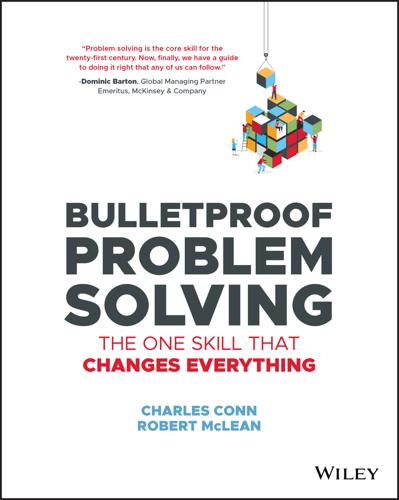
Bulletproof Problem Solving
by
Charles Conn
and
Robert McLean
Published 6 Mar 2019
See Situation‐observation‐resolution Component disaggregation, 180 Component tree, 53–58 Compound growth, 115–116 Compounding, 212 Computers predictions, 160–161 usage, 161 Conclusions, linkage (failure), xxiii–xiv Conditional probabilities, estimation, 202 Conduct analyses, 111 Confirmation bias, 101, 218 avoidance, 180 Constructed experiments, 140 case study, 141, 149–151 Constructive challenging, usage, 83 Constructive confrontation, 104–105 Contested characters, 69e, 70e Cook, Chuck, 245–246 Co‐Opetition (Brandenberger/Nalebuff), 200 Correlation, impact, 145 Correlation tools, usage, 138, 140 Council for Aid to Education (CAE), xviii Courtney, Hugh, 197, 198, 201 Cripps, Sally, 148, 202 Critical analyses conducting, 6 findings, synthesis, 6 Critical path analyses, 185 finding, 88 Cross‐docking, 62 Crowd‐sourced algorithms, case study, 141 Crowd‐sourced problem solving, 140 Crowd‐sourced solutions, 136 Crowdsourcing, 156 algorithms, 164–176 Crowd, wisdom (principle), 165 Csapo, Beno, xvii CSIRO defense, 118, 168–171 patent infringement, 170e Cultivation, change stage, 228 D Dalio, Ray, 181 DALY. See Disability‐affected life years Data analytics, 225 bias, 164 data‐fishing expeditions, 137 overfitting, 146 synthesis/analysis, 180 visualization, case studies, 141 Data sets approach, 256 errors, 164 Data sources, broadening, 106 Decision‐making engine, usage, 161 Decision‐making processes, 160–161, 163 Decision tree, 68–71, 165–166, 166e argument structure, 192e example, 70e final storyline structure, 190–191 format, representation, 123–124 game theory problem usage, 174 Deductive arguments, 188e Deductive conclusion, 58 Deductive logic trees, 58–59, 67 Deductive reasoning, 188 Deductive statement, structuring, 58 Deep‐domain expertise, usage, 255 Deep‐learning algorithms, 162 Deep memory system, 100 Define (step), 44 Delp, Scott L., 143 Design thinking flow, 45e steps, 43–46 Development options inclusion, 214–216 value, 215 Dialectic standard, 104 Di, Q., 143 Direction, understanding, 112 Disability‐affected life years (DALY), 238 Disaggregation, 53, 98.
…
Could you imagine delegating your decision to a machine about which city to move to, an algorithm that made the decision based on carefully weighing the preferences of thousands of other individuals and considering your situation? Clearly not—though you might be interested in seeing the results. Crowdsourcing Algorithms Besides doing sophisticated analysis within your own team, we now have the ability to go outside the organization to harness more analytic power. Enter crowdsourcing as a way to pair enterprises searching for solutions with teams of individuals that have ideas for implementation. Participants often compete for a prize to solve challenging problems, which previously required the contracting of consultants and experts.
…
If you are solving your problem solo, find a way to brainstorm your ideas with a diverse range of others, insiders and outsiders, at each stage of the process. Phillip Tetlock's work on forecasting shows that teams always outperform individuals in this form of problem solving, even very high‐performing solo practitioners. And the best superforecasting teams even beat crowd‐sourcing and prediction markets.5 Always try multiple trees/cleaves: Even when a problem seems perfectly designed for your favorite framework, try multiple cleaving frames to see what different questions and insights emerge. When we decided to look at obesity as a wicked problem, discussed in Chapter 9, we had a team meeting where we tried out various alternative‐cleaving frames.
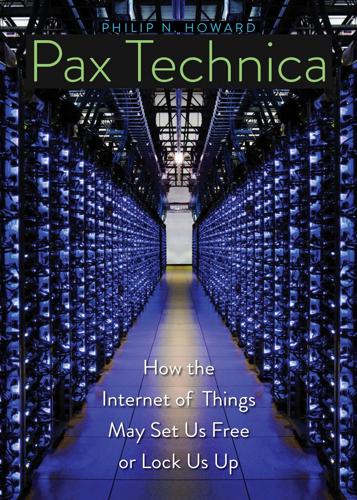
Pax Technica: How the Internet of Things May Set Us Free or Lock Us Up
by
Philip N. Howard
Published 27 Apr 2015
Such initiatives are rarely able to cover an entire country in a systematic way, and they often need the backing of funding and skills from neutral outsiders like the National Democratic Institute.32 But even the most humble projects to map voting irregularities, film the voting process, or crowd-source polling results help expose and document electoral fraud. Such projects allow citizens to surveil government behavior at a local level, though democracy at the national level isn’t necessarily an outcome. Still, the highlight reels of voter fraud can end up online, wearing down bad government.33 Ushahidi is a user-friendly, open-source platform for mapping and crowd-sourcing information. These days, there are well over thirty-five thousand Ushahidi maps in thirty languages.34 In complex humanitarian disasters, most governments and United Nations agencies now know they need to take public crisis mapping seriously.
…
Research on China’s feeble attempts at open government demonstrates that crowd sourcing doesn’t work well, and in China’s context is better thought of as “cadre sourcing.”18 This is because the kinds of information sought by the government have already been distorted by the government, enthusiastic cadre participants are more likely to report favorable information than accurate information, and news about independent crowd-sourcing initiatives don’t circulate far. Only during complex humanitarian disasters do people decide to take on the risks of contributing quality information. As device networks spread, civic initiatives will always have more positive impacts in open societies. Authoritarian societies are structurally prevented from making use of people’s goodwill and altruism. In the bounded device networks of an authoritarian regime, crowd-sourcing initiatives are likely to create negative feedback loops and big data efforts are likely to generate misinformation about the actual conditions of public life.
…
For example, the latest smartphones, watches, and wearable technologies reveal how immersive and pervasive the internet of things will be. Cell phones have the ability to take one location point per second, but don’t do so because their power supply is limited. If you give an application on your phone permission to use location information, it will send information to a server at the rate the developer chooses. If you use a crowd-sourcing application for traffic data, your phone is sending data about your commute. If you use an application to keep track of your jogging, your phone is generating geotagged data about your movements relative to other people. Every time you take a picture, check in with your favorite social networking application, or track your health, data is sent from your phone to a cell phone tower or router and over a vast network of digital switches.
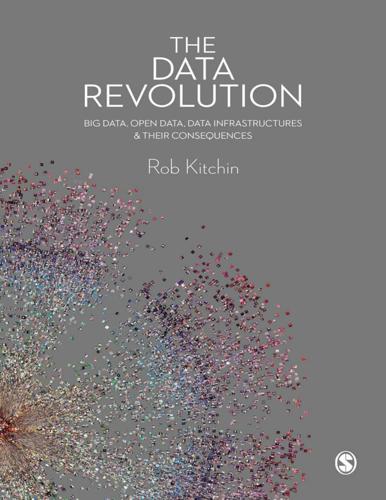
The Data Revolution: Big Data, Open Data, Data Infrastructures and Their Consequences
by
Rob Kitchin
Published 25 Aug 2014
Clearly the production of such life-logs raise a number of questions concerning privacy, the ownership of the data produced, and how such data are used (Dodge and Kitchin 2007b). Crowdsourcing Crowdsourcing is the collective generation of media, ideas and data undertaken voluntarily by many people to solve a particular task. While social media content can be said to be crowdsourced in the sense that it is sourced from a large number of people, its purpose is diffuse and lacking in focus. Instead, crowdsourcing focuses on the collective production of information and on creating solutions to particular issues by drawing on the energy, knowledge, skills and consensual and collective action of a crowd of people (Howe 2008).
…
Instead, crowdsourcing focuses on the collective production of information and on creating solutions to particular issues by drawing on the energy, knowledge, skills and consensual and collective action of a crowd of people (Howe 2008). Howe (2008) argues that there are four developments that support the growth of crowdsourcing: a renaissance of amateurism (often at professional standards), the emergence of the open source software movement, the increasing availability of the tools of production outside of firms, and the rise of vibrant online communities organised according to people’s interests. Together these enable distributed and democratised pooling of ideas, tools, and materials. There are three main types of crowdsourcing operating at present: those that collectively produce a solution (e.g., OpenStreetMap, Wikipedia); those that use crowd to evaluate multiple solutions/products (e.g., Amazon, Tripadvisor reviews); and those that seek single or multiple solutions from a crowd (e.g., InnoCentive, hackathons).
…
These translate approximately into scientific and financial gains, the cumulative effect of benefits, and who gains from such infrastructures. The scientific arguments for the storing, sharing and scaling of data within data infrastructures centre on the promises of new discoveries and innovations through the combination of datasets and the crowdsourcing of minds. Individual datasets are valuable in their own right, but when combined with other datasets or examined in new ways fresh insights can be potentially discerned and new questions answered (Borgman 2007). By combining datasets, it is contended that the cumulative nature and pace of knowledge building is accelerated (Lauriault et al. 2007).

The Future of the Professions: How Technology Will Transform the Work of Human Experts
by
Richard Susskind
and
Daniel Susskind
Published 24 Aug 2015
At PatientsLikeMe, 300,000 people connect with other people who share their conditions (at the moment, around 2,300 conditions), and swap experiences and treatments.37 It is reported that Facebook is planning to develop online ‘support communities’ in this spirit.38 One-third of doctors in the United States use the network known as Sermo to distribute research, post clinical cases, and talk amongst each other.39 The same proportion use a network known as QuantiaMD, with similar functionality.40 More than half of the doctors in the United States are members of Doximity, another doctor-specific networking tool.41 Medicine is also making use of crowdsourcing, where large numbers of individuals are drawn upon for their collective ideas and support. At CrowdMed, people post their symptoms and crowdsource diagnoses from an online community of 2,000 doctors—so-called ‘Medical Detectives’.42 At InnoCentive, medical institutions crowdsource ideas by offering large online rewards for those who solve their medical ‘challenges’.43 At Watsi, people in need of medical care, but unable to afford it themselves, can use their online crowdfunding platform to raise finance from donors.44 3-D printing techniques enable many medical objects, from casts to prosthetics to dentist’s caps and crowns, to be personalized and then printed on demand.
…
In Chapter 2 we observed cases where experts and lay people collaborate with each other, with the former, for example, reviewing, editing, or supplementing the user-generated content. A third type of online collaboration is crowdsourcing. Here large numbers of people—experts or non-specialists—are invited to contribute to a well-defined project or problem that is so large that it requires many hands, or is so difficult that it might benefit from the ‘wisdom of crowds’,24 or so obscure that an answer is most likely to be found if the net of inquiry is spread widely enough. WikiHouse and Arcbazar in architecture, and Open Ideo and WikiStrat in consulting, have run crowdsourcing projects in this manner. Realization of latent demand One of the attractions of the new approaches to professional work and, in particular, of various online services, is that practical expertise is steadily becoming more affordable and accessible.
…
In this way, for example, it is easy jointly to co-author complex documents, even if the contributors are in different countries. A related form of production occurs when online humans crowdsource (as is discussed briefly in section 3.7). Ordinarily, this involves large numbers of people being called upon to co-operate on discrete projects whose completion would be beyond the scope of individuals or conventional organizations. A common approach adopted here is to break some large task down into a manageable number of sub-tasks and invite a community of users each to undertake some of them. Crowdsourcing draws on networks of human beings to solve particular problems, to carry out pieces of work, or even to raise finance for given initiatives.
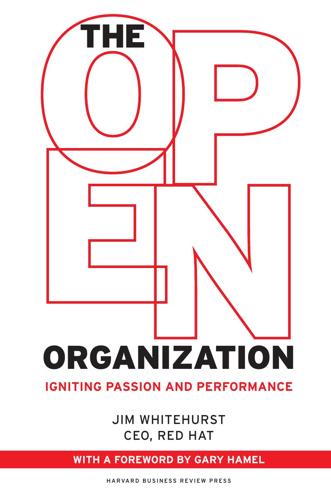
The Open Organization: Igniting Passion and Performance
by
Jim Whitehurst
Published 1 Jun 2015
This book will show leaders and aspiring leaders—in companies large and small, and in established companies as well as start-ups struggling to grow—how to develop a new, open organizational model that uniquely matches the speed and complexity that businesses must master today. From Crowdsourcing to Open Sourcing Much has been written recently about a new way of working called “crowdsourcing,” which is the power of mass participation to generate phenomenal ideas, solve complex problems, and organize broad movements. We’ve seen examples, such as Wikipedia or the Linux operating system (which played a key role in Red Hat’s start), where communities of people spontaneously self-organize around a problem or activity.
…
There are also competitions like the Ansari XPRIZE, which awarded $10 million to the first nongovernment organization to launch a reusable manned spacecraft into space twice within two weeks, or Kaggle, which crowdsources solutions to big data–type analytical challenges, that get a multitude of participants to deliver a bunch of ideas or solutions, where the single best of the bunch wins and receives an award. The Limitations of Crowdsourcing As effective as these “tapping the wisdom of the crowd” approaches are at providing companies with new ideas and solutions to problems, they are often limited in that they are either timebound, say, for the duration of a competition, or are narrowly focused on a single, specific goal, such as generating an idea for a new product.
…
So, while many companies have tapped the power of participation in targeted ways, few have leveraged its power more broadly within their own organizations. What if you could make this kind of engagement standard, not just one-and-done, for how work gets done in your organization, so that you’re engaging at this level every single day? Another problem with crowdsourcing is that it’s a one-way transaction. Crowdsourcing approaches typically depend on the contributions of volunteers—people who contribute to the product primarily for the reputational advantage, not necessarily for a monetary one. And, too often, it seems that companies approach these volunteers with the goal of extracting value, with what has been called a “Tom Sawyer” model of collaboration.1 As you might recall from your childhood reading, Tom was a bit of a manipulator, someone who was always trying to get out of doing chores.
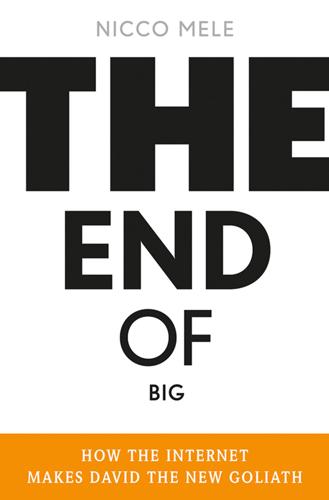
The End of Big: How the Internet Makes David the New Goliath
by
Nicco Mele
Published 14 Apr 2013
It makes me feel better; I know I’m safe because of an interconnecting web of institutions that operate to encourage the best and make sure my interests are protected. In a crowd-sourced, maker world, we’re missing some of the institutions that have helped to provide accountability and reliability. Just as the end of Big News has meant a demonstrable loss of accountability journalism, we might worry that the end of Big Companies could mean a demonstrable loss of accountability, especially in industries where technical expertise or competency is required. While I tend to sympathize with the views of Ben Kaufman of Quirky and others who believe that anything—literally anything—can be crowd-sourced, I’m not sure everything should be crowd-sourced. Would you want to fly on a small airline that uses a craft- or maker-produced airplane whose engines come from a craft- or maker-produced engine company?
…
In another study, “just 4 percent of consumers would be willing to stick with a brand if its competitors offered better value for the same price.24 It turns out that the more technology you use, the more likely you are to have a lot less brand loyalty.25 From Groupon to iPad shopping apps to Amazon, consumers respond overwhelmingly to price and to the recommendations of trusted peers in their social networks—not to brands. Crowdsourcing works well for designing large, complex, expensive products purchased by organizations, not just small consumer items. The U.S. military has begun designing its vehicles using crowdsourcing—with some initial promise. In four months, a team designed, built, and deployed an “experimental crowd-derived combat support vehicle” or XC2V for short. The site used to design it is called LocalMotors, which “harnesses the creativity of the world’s underemployed car designers.”26 Thousands of people on the site participate in the design of vehicles, some of which actually find their way into production.
…
Smith explained that the site focused on assembling strong content and waited for people to discover it on their own; with social media and the dynamics of viral sharing holding sway, “push is a much more effective way of reaching people than pull.”29 Continuing to build on its success, the Tribune shows that a new organization can carry the torch of accountability and journalistic integrity formerly carried by “big” institutions at their best. CSI (Crowd-Sourced Investigations) The Texas Tribune is an example of a new organization providing accountability journalism, but Britain’s venerable Guardian newspaper (founded in 1821) offers a compelling glimpse of an old big institution experimenting and trying to find its way. In recent years, the Guardian has offered a free blogging platform to online opinion leaders, hosted chatrooms and discussion boards, and emerged as an early convert to podcasting.
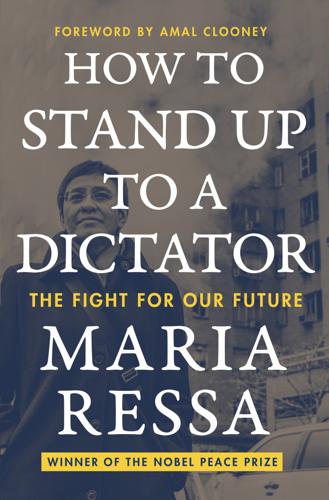
How to Stand Up to a Dictator
by
Maria Ressa
Published 19 Oct 2022
One area in which we wanted to have real impact was the Philippines’ record on elections and encourage more of our citizens to vote. We wisely aimed all of our news network initiatives toward the May 2010 presidential elections, for which I co-opted two ideas popularized by American writers: the tipping point and crowdsourcing.8 The idea of the tipping point has its roots in epidemiology: when a virus multiplies below the radar screen and then hits the point when it changes the entire system. Crowdsourcing suggests that if a group’s members have diversity of ideas, independence of one another, a decentralized structure, and a mechanism for turning judgments into a collective decision, they can make smarter decisions than any lone genius can.
…
Nieto predicted that Rappler would close down in 2018. In April, I flew to San Jose, California, for the F8, Facebook’s annual developer conference. Facebook had asked me to attend, meet with its officers and partners, and talk about our work at Rappler. A year earlier, Facebook had featured Rappler and our crowdsourcing efforts during disasters37 at F8. #ProjectAgos, the crowdsourcing platform we had built for typhoons and disasters, had been included in the rollout of Facebook’s Free Basics, the low-bandwidth app available on mobile phones for free. But my feelings about the company had changed in the intervening year. My warnings to our Facebook partners in Singapore the previous August had been entirely ignored.
…
My ambition was to create a new standard of investigative journalism in my country, one that would harness the social media platforms to build communities of action for better governance and stronger democracies. At the time, I was the truest of true believers in the power of social media to do good in the world. Using Facebook and other platforms, we were able to crowdsource breaking news, find pivotal sources and tips, harness collective action for climate change and good governance, and help increase voter knowledge and participation in our elections. We were a fast success, but by Rappler’s fifth year of existence, we had gone from being lauded for our ideas to being targeted by our government—all because we continued to do our jobs as journalists: to tell the truth and hold power to account.
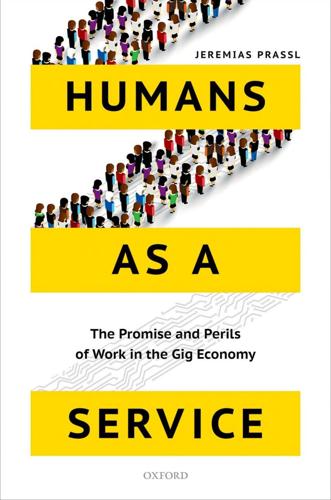
Humans as a Service: The Promise and Perils of Work in the Gig Economy
by
Jeremias Prassl
Published 7 May 2018
Lilly Irani, ‘The cultural work of microwork’ (2013) 17(5) New Media & Society 720, 729. 13. Ibid., 732. 14. Ibid., 738. 15. Jeff Howe, Crowdsourcing: How the Power of the Crowd Is Driving the Future of Business (Random House 2009), 15. 16. Frank Pasquale, ‘Two narratives of platform capitalism’ (2016) 35(1) Yale Law & Policy Review 309, 312. chapter 1 1. Jeff Howe, ‘The rise of crowdsourcing’, Wired (1 June 2006), http://www. wired.com/2006/06/crowds/, archived at https://perma.cc/44XE-MLDR 2. Ibid. See also Jeff Howe, Crowdsourcing: How the Power of the Crowd Is Driving the Future of Business (Random House 2009). Crowdsourcing is by no means limited to labour markets: consumers, governments, and businesses have turned to the Internet in a wide range of areas—from the US National Aeronautics and Space Administration (NASA) asking citizens for help in its quest to identify exoplanets (http://www.zooniverse.org/projects/marckuchner/backyard-worlds-planet-9, archived at https://perma.cc/LR8S-7QUF), to start-ups raising capital for new business ideas through platforms such as Kickstarter (http://www.kickstarter.
…
The long-standing distinction between employees working for large companies and amateurs engaging in their craft as a hobby had become increasingly blurred: Hobbyists, part-timers, and dabblers suddenly have a market for their efforts, as smart companies in industries as disparate as pharmaceuticals and television discover ways to tap the latent talent of the crowd. The labor isn’t always free, but it costs a lot less than paying traditional employees. It’s not outsourcing; it’s crowdsourcing.1 Crowdsourcing, he subsequently explained, is the ‘act of taking a job trad- itionally performed by employees and outsourcing it to an undefined, gen- erally large group of people in the form of an open call’.2 Its rise from nowhere has been little short of meteoric: a mere decade later, recourse to the crowd has begun to permeate our daily lives.
…
* * * Understanding the Gig Economy 13 To grapple with the constant evolution of the on-demand economy, sev- eral academics have attempted to come up with a taxonomy of gig-economy work. One of the leading authors in this field is Jan Marco Leimeister of Kassel University in Germany. Together with his team, he has developed an extensive classificatory scheme of crowdsourcing and crowdwork. This distinguishes, for example, between ‘internal’ and ‘external’ crowdwork, depending on whether on-demand workers are employed by the platform operator or not. The latter category is then subdivided into a series of ‘arche- types’, including categories such as ‘Microtask’, where ‘tasks are predomin- antly simple and repetitive’, or ‘Marketplace platforms’, through which ‘more long-term and complex jobs are given into crowd’.5 This understanding of crowdwork as a purely digital form of on-demand labour, whereby tasks can be completed behind a computer anywhere, is usually contrasted with gigwork, whereby tasks mediated through a platform have to be completed offline—think food delivery or cleaning.6 The axes along which the field could be organized are nearly unlimited.
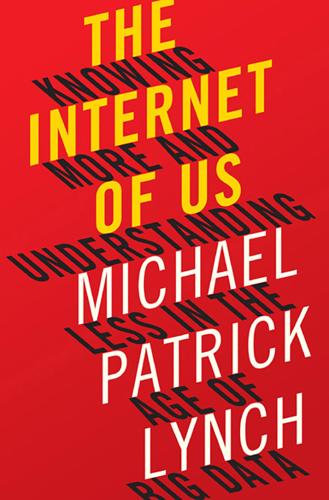
The Internet of Us: Knowing More and Understanding Less in the Age of Big Data
by
Michael P. Lynch
Published 21 Mar 2016
It allows researchers to pass their work directly to those who might be interested in it, or benefit from it. Inclusivity of a different sort can come about by what Wired’s Jeff Howe dubbed “crowdsourcing” in 2006. Crowdsourcing is not simply any activity that uses the World Wide Web as a platform for people to network about problems—like Intrade or rankings on Amazon. As computer scientist Daren Brabham defines it, crowdsourcing is an online problem-solving and production model that “leverages the collective intelligence of online communities to serve specific organizational goals.”2 In other words, it is the top-down organized use of the Internet hive-mind.
…
The popular incentive-based innovation platform InnoCentive is often cited as an example of the inclusivity of crowdsourcing. (InnoCentive is ancient in Web 2.0 terms: it was founded in 2002.) Here’s how it works: nonprofits and businesses post prize competitions for solutions to challenges. These can run the gamut—from retail product positioning to early detection mechanisms for inflammatory bowel disease. The prizes themselves vary in size, with some topping nearly a million dollars but many being significantly less. InnoCentive is only one example of how crowdsourcing can work, of course. Other famous examples include Amazon’s Mechanical Turk, which allows companies (and scientific researchers) to outsource specific tasks to a huge network of “Turkers” to perform tasks that humans are still better at than computers, such as image identification and translation.
…
“The traditional dream of rags to riches is being supplanted by a new dream of sustainable quality of life”—a life where we can spend more time engaged in pursuits that interest us, such as making music, cooking better food and thinking about philosophy.6 Rifkin thinks the same revolution is happening at the level of knowledge—perhaps especially there, since the wide availability of knowledge is the fuel powering the rest of our economy. But while Rifkin’s collaborative vision might be appealing, the death of capitalism—and exploitative versions of it—is hardly near. Take crowdsourcing as an example. Instead of an economy of skilled laborers that require resources to train, equip and compensate, crowdsourcing makes it possible for companies to distribute and generate knowledge without the expense of hiring those experts. This isn’t necessarily more “democratic.” But it is more capitalistic. Even some of the most active workers for Amazon’s Mechanical Turk can make very little, two to five dollars an hour.

Frugal Innovation: How to Do Better With Less
by
Jaideep Prabhu Navi Radjou
Published 15 Feb 2015
Yet the Booz study estimates that only 8% of large R&D budgets are spent on digital tools that, among other things, track changing customer needs and help firms work with customers to create solutions.8 It is an obvious way to improve front-end innovation performance and, thanks to plummeting technology costs, affordable digital tools and techniques now exist to improve the depth and breadth of customer engagement. Deploy crowdsourcing and social media Crowdsourcing is a cost-effective technique for collecting customers’ ideas and ascertaining specific, explicit needs. For instance, SoapBox, a Toronto-based online crowdsourcing site, provides companies with a platform for individuals to talk about their ideas and gauge initial public reactions through its thumbs-up or thumbs-down voting system. Ideas that garner sufficient support are packaged with supporting data and sent to the relevant managers, who in turn signal their view of its potential to executives responsible for taking such ideas forward.
…
Chapter 6 looks at ways consumers – especially the tech-savvy millennial generation (those born between 1982 and 2004) – are evolving from passive individual users into communities of empowered “prosumers”, who collectively design, create and share the products and services they want. As a result, R&D and marketing leaders at firms like Auchan are working with do-it-yourself (DIY) and crowdsourcing pioneers, such as TechShop and Quirky, to bolster and harness the collective ingenuity and skills of consumer communities. Additionally, big brands such as IKEA are linking up with start-ups such as Airbnb to develop a “sharing economy” in which consumers share goods and services. The chapter also outlines how sales and marketing managers can build greater brand affinity and deepen their engagement with customers by co-creating greater value for all.
…
Quirky claims that 10% of its direct revenues are shared with its online community; in 2013, inventors and online influencers shared a pot of $3.8 million. According to Ben Kaufman, the company’s CEO, two consumer products are developed every week. Quirky has launched several products based on crowdsourced ideas, including a flexible power strip, an egg separator and a smartphone-controlled air conditioner. Kaufman uses this as evidence to explain to corporate leaders he meets that the most innovative ideas do not necessarily come from the boardroom or from within the company, but from consumers and the general public.
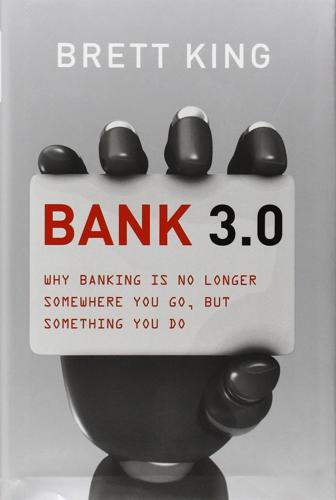
Bank 3.0: Why Banking Is No Longer Somewhere You Go but Something You Do
by
Brett King
Published 26 Dec 2012
If you aren’t in the game already, it’s getting harder and harder to get a proper seat at the table. There’s no technological fix to being able to tell whether or not people like you. There’s only the ability to change the way you talk to your audience. Crowdsourcing—use the power of the crowd The “occupy” movement we talked about earlier is an example of how communities work in the social, hyperconnected landscape of today. However, there is a mechanism for using crowdsourcing as a mechanism for designing new products and services that are immediately advocated by customers because they were designed by the crowd, for the crowd. Commonwealth Bank in Australia has invited the crowd to submit, discuss and vote on ideas that improve the Australian banking experience.
…
Commonwealth is hoping to drum up more ideas along the lines of Kaching, a mobile app that lets people make P2P payments via email, Facebook and wireless phone numbers. Figure 8.6: Use the power of the crowd for good, not evil (Credit: Washington Post) The concept of an idea lab or crowdsource engagement platform is hardly new. In fact, CommBank’s IdeaBank appears to be a close facsimile of First Direct’s “lab” launched five months earlier. First Direct was the UK’s first financial provider to exploit the power of crowdsourcing. First Direct Lab is, according to the official press release, a social platform “that will be populated with content every month such as product designs, service innovations and website concepts.
…
Users will have the chance to critique the content through a comment facility and forum, with the feedback collated and inputted into the product or service teams before release”. Figure 8.7: First Direct was the first to launch a crowdsourcing platform for regular interaction with the crowd (Credit: First Direct UK) Finding out how customers interact with financial services can be tricky and expensive. Crowdsourcing appears to be an effective tool that vastly simplifies that, but only if you’re an engaged brand with strong social media values. On the one hand, it makes customers feel heard and valued; on the other, it can also drive innovation very cheaply.

Everything Is Obvious: *Once You Know the Answer
by
Duncan J. Watts
Published 28 Mar 2011
The solution is the Mullet Strategy: In the back pages where few people will see any particular story, let a thousand flowers bloom (or a million of them); then selectively promote material from the back to the front page, with all its premium advertising space, and keep that under strict editorial control.6 The Mullet Strategy is also an example of “crowdsourcing,” a term coined in a 2006 Wired article by Jeff Howe to describe the outsourcing of small jobs to potentially very large numbers of individual workers. Online journalism, in fact, is increasingly moving toward a crowdsourced model—not just for generating community activity around a news story but also for creating the stories themselves, or even deciding what topics to cover in the first place. The Huffington Post, for example, relies on thousands of unpaid bloggers who contribute content either out of passion for the topic they write about or else to benefit from the visibility they receive from being published on a widely read news site.
…
And BuzzFeed—a platform for launching “contagious media”—keeps track of hundreds of potential hits and only promotes those that are already generating enthusiastic responses from users.8 As creative as they are, these examples of crowdsourcing work best for media sites that already attract millions of visitors, and so automatically generate real-time information about what people like or don’t like. So if you’re not Bravo or Cheezburger or BuzzFeed—if you’re just some boring company that makes widgets or greeting cards or whatnot—how can you tap into the power of the crowd? Fortunately, crowdsourcing services like Amazon’s Mechanical Turk (which Winter Mason and I used to run our experiments on pay and performance that I discussed in Chapter 2) can also be used to perform fast and inexpensive market research.
…
Journal of Law, Economics & Organization 7:24–52. Hoorens, Vera. 1993. “Self-Enhancement and Superiority Biases in Social Comparison.” European Review of Social Psychology 4 (1):113–39. Howard, Philip K. 1997. The Death of Common Sense. New York: Warner Books. Howe, Jeff. 2006. “The Rise of Crowdsourcing.” Wired Magazine 14 (6):1–4. ———. 2008. Crowdsourcing: Why the Power of the Crowd Is Driving the Future of Business. New York: Crown Business. Hu, Ye, Leonard M. Lodish, and Abba M. Krieger. 2007. “An Analysis of Real World TV Advertising Tests: A 15-year Update.” Journal of Advertising Research 47 (3):341. Huckfeldt, Robert, Paul E.
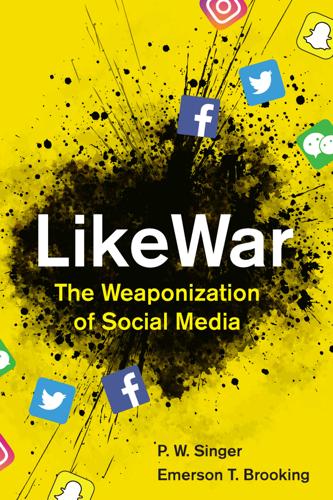
Likewar: The Weaponization of Social Media
by
Peter Warren Singer
and
Emerson T. Brooking
Published 15 Mar 2018
There is a word for this: “crowdsourcing.” An idea that had danced excitedly on the lips of Silicon Valley evangelists for years, crowdsourcing had been originally conceived as a new way to outsource software programming jobs, the internet bringing people together to work collectively, more quickly and cheaply than ever before. As social media use had skyrocketed, the promise of crowdsourcing had extended into a space beyond business. Mumbai proved an early, powerful demonstration of the concept in action. The incidents would swiftly multiply from there. At its core, crowdsourcing is about redistributing power—vesting the many with a degree of influence once reserved for the few.
…
At its core, crowdsourcing is about redistributing power—vesting the many with a degree of influence once reserved for the few. Sometimes, crowdsourcing might be about raising awareness, other times about money (also known as “crowdfunding”). It can kick-start new businesses or throw support to people who might once have languished in the shadows. It was through crowdsourcing, for instance, that septuagenarian socialist Bernie Sanders became a fundraising juggernaut in the 2016 U.S. presidential election, raking in $218 million online. Of course, like any useful tool, crowdsourcing has also been bent to the demands of war. A generation ago, Al Qaeda was started by the son of a Saudi billionaire.
…
Hezbollah, the Iranian-sponsored terror group that allied with the Syrian regime, ran an “equip a mujahid” campaign on Facebook and Twitter. It similarly allowed online supporters to fulfill their religious obligations by buying weapons and ammunition for the war. As radical transparency merges with crowdsourcing, the result can wander into the grotesque. In 2016, a hard-line Iraqi militia took to Instagram to brag about capturing a suspected ISIS fighter. The militia then invited its 75,000 online fans to vote on whether to kill or release him. Eager, violent comments rolled in from around the world, including many from the United States.
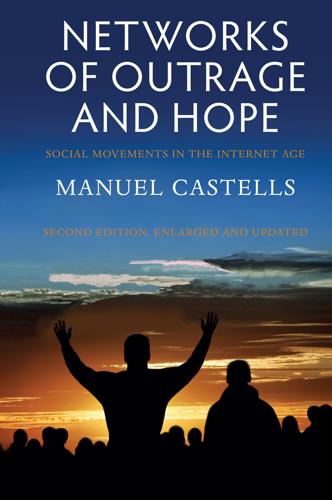
Networks of Outrage and Hope: Social Movements in the Internet Age
by
Manuel Castells
Published 19 Aug 2012
Landamore, H. (2014) We, All the People. Five lessons from Iceland’s failed experiment in creating a crowdsourced constitution. Future Tense, [Online] July 31. Available at: <http://www.slate.com/articles/technology/future_tense/2014/07/five_lessons_from_iceland_s_failed_crowdsourced_constitution_experiment.html> [Accessed on November 17, 2014]. Siddique, H. (2011) Mob rule: Iceland crowdsources its next constitution. The Guardian, [Online] June 9. Available at: <http://www.guardian.co.uk/world/2011/jun/09/iceland-crowdsourcing-constitution-facebook/print> [Accessed on January 9, 2012]. On Iceland’s financial crisis Journal articles Wade, R. and Sigurgeirsdottir, S. (2010) Lessons from Iceland.
…
On the Icelandic revolution Web resources Bennett, N. (2011) Iceland’s crowdsourced constitution – a lesson in open source marketing. [Online] Available at: <http://socialmediatoday.com/nick-bennett/305690/icelands-crowdsourced-constitution-lesson-opensource-marketing> [Accessed on January 9, 2012]. Boyes, R. (2009) Age of Testosterone comes to end in Iceland. The Times, [Online] February 7. Available at: <http://www.timesonline.co.uk/tol/news/world/europe/article5679378.ece> [Accessed on January 9, 2012]. Brown, M. (2011) Icelanders turn in first draft of crowdsourced constitution. Wired News, [Online] August 1. Available at: <http://www.wired.co.uk/news/archive/2011-08/01/iceland-constitution> [Accessed on January 9, 2012].
…
That the Constitution of a country could explicitly reflect principles that, in the context of global capitalism, are revolutionary shows the direct link between a process of genuinely popular crowdsourcing and the content resulting from such a participatory process. It should be remembered that the consultation and elaboration took place in four months as requested by the parliament, belying the notion of the ineffectiveness of participatory democracy. Granted, Iceland has only 320,000 citizens. But the defenders of the experience argue that with the Internet and with full Internet literacy and unrestricted access, this model of political participation and crowdsourcing of the legislative process is scalable. The reference that the Icelandic revolution came to be for European social movements battling the consequences of a devastating financial crisis is explained by its direct connection to the main issues that induced the protests.
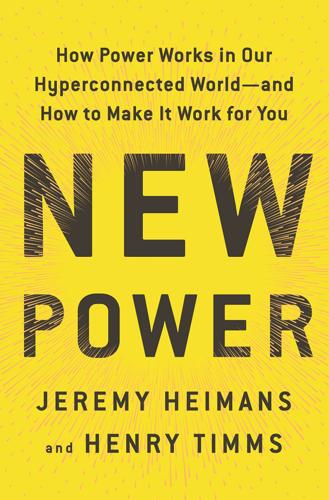
New Power: How Power Works in Our Hyperconnected World--And How to Make It Work for You
by
Jeremy Heimans
and
Henry Timms
Published 2 Apr 2018
Participatory budgeting is an idea that started decades ago in the Brazilian city of Porto Alegre but is now spreading throughout the world and merging with internet crowdsourcing culture. Paris’s ambitious participatory budgeting program, led by Mayor Anne Hidalgo, has led to hundreds of thousands of Parisians passionately debating and voting on projects close to their daily lives, everything from greening public space to aiding the homeless. This mirrors the success of the citizen engagement and budgeting program in Reykjavik, which has attracted nearly 60 percent of that city’s people. Plans like this must account for the bias inherent in any crowdsourcing exercise—especially the challenge of distinguishing between what is vital and what has viral appeal, and ensuring that they don’t mostly benefit the already privileged.
…
This patient had learned about her condition through PatientsLikeMe, an online community of over 500,000 people living with more than 2,700 diseases, each of whom shares their personal medical data and experiences with others on the platform, creating tens of millions of data points. Think of it as a massive support group, learning community, and data set, all rolled into one. Patients on the platform have even worked together to crowd-source their own drug trials, such as when a group of ALS patients conducted a test of lithium as a treatment in a fraction of the time it would have taken the health authorities. Letitia Browne-James, another member of the community, stumbled upon PatientsLikeMe “out of desperation.” She had suffered from epilepsy her whole life, enduring frequent and debilitating seizures that were just getting worse.
…
Thanks to today’s ubiquitous connectivity, we can come together and organize ourselves in ways that are geographically boundless and highly distributed and with unprecedented velocity and reach. This hyperconnectedness has given birth to new models and mindsets that are shaping our age, as we’ll see in the pages ahead. That’s the “new” in new power. A popular thread on Reddit, the link-sharing platform, crowd-sourced memories of growing up in the 1990s, when life felt very different. For those who were there, the posts offered warm nostalgia. For those who weren’t yet born, it told stories of an alien world: The anxiety of waiting for your yearbook photo to arrive, which was “the only time you saw a picture of you and your friends at school.”
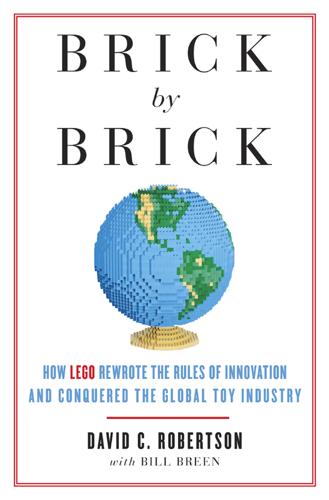
Brick by Brick: How LEGO Rewrote the Rules of Innovation and Conquered the Global Toy Industry
by
David Robertson
and
Bill Breen
Published 24 Jun 2013
Keep in mind that LEGO launched its experiment with crowdsourcing in 2004, a full year before James Surowiecki came out with his groundbreaking book The Wisdom of Crowds, in which he posited that because groups of people are “often smarter than the smartest people in them,” a crowd’s “collective intelligence” will produce better outcomes than a small group of experts. Since the publication of that and other books on customer cocreation, initiatives ranging from LINUX to Wikipedia to more than 240,000 open-source software development projects (according to SourceForge.net) have amply demonstrated that crowdsourcing opens an organization up to a broad swath of insights and ideas that it could never muster by itself.
…
During the first years of the past decade, the heaving growth of massive online communities inspired books such as Open Innovation, Wikinomics, and The Wisdom of Crowds, which showed how creative companies were harnessing the collective genius of virtual communities to spur innovation and growth. LEGO, a conservative company whose numerous battles over patent infringements had made it hyperprotective of its intellectual property, certainly did not rush into the crowdsourcing craze. But LEGO did take some tentative first steps. For much of its history, LEGO was a monolith—a massively intractable organization that viewed its fans solely as consumers, never as cocreators. The company’s mostly Danish designers believed that when it came to conjuring the next cycle of brick-based construction toys, they were the smartest guys in the room.
…
Most tellingly, such sites let fans share online photos and videos of their strikingly clever “MOCs,” otherwise known as “My Own Creations,” which offered tangible evidence that not even the LEGO Group’s most talented designers could consistently outinnovate the millions of LEGO fanatics from across the globe. The creative output of its sprawling, online community of independent brick masters convinced LEGO to give crowdsourcing a modest test. In mid-2000, LEGO commissioned a software development outfit to begin work on the LEGO Digital Designer, a computer-aided design program that let enthusiasts build their own dream models using virtual 3-D bricks (see insert photo 6). The company’s strategy was to let fans use the Designer software (which was based on the Darwin project’s technology) to create virtual models and upload them to a LEGO website, which would eventually come to be called LEGO Factory.

The Second Machine Age: Work, Progress, and Prosperity in a Time of Brilliant Technologies
by
Erik Brynjolfsson
and
Andrew McAfee
Published 20 Jan 2014
It was an example of what Amazon CEO Jeff Bezos called “artificial artificial intelligence,” and another way for people to race with machines, although not one with particularly high wages.26 Mechanical Turk, which quickly became popular, was an early instance of what came to be called crowdsourcing, defined by communications scholar Daren Brabham as “an online, distributed problem-solving and production model.”27 This model is interesting because instead of using technology to automate a process, crowdsourcing makes it deliberately labor intensive. The labor is provided not by a preidentified group of employees, as is the case with most industrial processes, but instead by one or more people (often many more), not identified in advance, who choose to participate. In less than a decade, crowdsourced production has become an important phenomenon.
…
His recombination of theory and data earned him a thirty-thousand-dollar reward from the space agency. In recent years, many organizations have adopted NASA’s strategy of using technology to open up their innovation challenges and opportunities to more eyeballs. This phenomenon goes by several names, including ‘open innovation’ and ‘crowdsourcing,’ and it can be remarkably effective. The innovation scholars Lars Bo Jeppesen and Karim Lakhani studied 166 scientific problems posted to Innocentive, all of which had stumped their home organizations. They found that the crowd assembled around Innocentive was able to solve forty-nine of them, for a success rate of nearly 30 percent.
…
One of its most successful products, a flexible electrical power strip called Pivot Power, sold more than 373 thousand units in less than two years and earned the crowd responsible for its development over $400,000. Affinnova, yet another young company supporting recombinant innovation, helps its customers with the second of Weitzman’s two phases: sorting through the possible combinations of building blocks to find the most valuable ones. It does this by combining crowdsourcing with Nobel Prize–worthy algorithms. When Carlsberg breweries wanted to update the bottle and label for Belgium’s Grimbergen, the world’s oldest continually produced abbey beer, it knew it had to proceed carefully. The company wanted to update the brand without sacrificing its strong reputation or downplaying its nine hundred years of history.
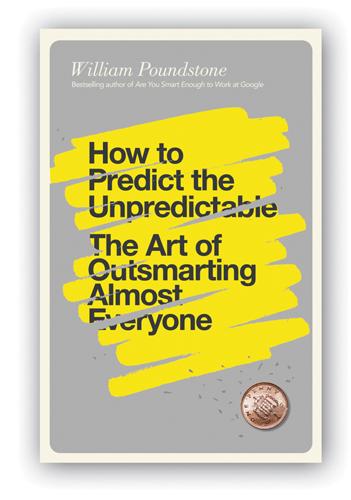
How to Predict the Unpredictable
by
William Poundstone
Use the phrase to remember the password. See notes on this chapter Nine How to Outguess Crowd-Sourced Ratings We live in the golden age of crowd sourcing. Anyone with a smartphone can rate restaurants, books, movies, and songs on the go (1 to 5 stars). Focus groups rate cars, carbonara sauces, and candidates (on a scale of 1 to 10). What, if anything, do we learn from that? It might seem that ratings ought to peak in the exact middle of the scale. They usually don’t. They’re more like report card grades where C is effectively below average. Crowd-sourced ratings have a tendency to peak at about 7 out of 10 (or around 70 percent of the maximum rating, whatever it is).
…
The film isn’t intended to appeal to everyone, and there are always some online reviewers who select the “wrong” movie to see. When a business has a broader audience (such as a blockbuster movie or a family restaurant), the 0-star reviews are more informative. They help gauge the likelihood of a bad experience. Recap: How to Outguess Crowd-Sourced Ratings • People asked to think of a number between 1 and 10 most often pick 7. This can distort ratings of focus groups and crowd-sourced Web reviews. • The percentage of raters giving a product a perfect 10 (or 5 out of 5 stars) may be a better measure of the product’s sales potential than its average score. See notes on this chapter Ten How to Outguess Fake Numbers Mark Nigrini grew up in Cape Town, South Africa, charmed by the magic of numbers.
…
— Dan Guterman See notes on this chapter Contents Prologue: The Outguessing Machine Part One: The Randomness Experiment 1 The Zenith Broadcast 2 How to Outguess Rock, Paper, Scissors 3 How to Outguess Multiple-Choice Tests 4 How to Outguess the Lottery 5 How to Outguess Tennis Serves 6 How to Outguess Football Penalty Kicks 7 How to Outguess Card Games 8 How to Outguess Passwords 9 How to Outguess Crowd-Sourced Ratings 10 How to Outguess Fake Numbers 11 How to Outguess Manipulated Numbers 12 How to Outguess Ponzi Schemes Part Two: The Hot Hand Theory 13 In the Zone 14 How to Outguess Football Bets 15 How to Outguess Oscar Pools 16 How to Outguess Big Data 17 How to Outguess Retail Prices 18 How to Outguess Property Prices 19 How to Outguess the Unpredictable 20 How to Outguess the Stock Market Epilogue: Fortune’s Wheel Acknowledgments Notes Bibliography Index Prologue The Outguessing Machine The outguessing machine began with a messy laboratory accident.

The Dictionary People: The Unsung Heroes Who Created the Oxford English Dictionary
by
Sarah Ogilvie
Published 17 Oct 2023
Trimmer was not only a collector of words, though he was that, with a grand total of 4,690 slips for the Dictionary; he was also a collector of plants for another crowdsourced project, run by the Botanical Society of London, to catalogue and map the indigenous wild flowers of Britain. The Botanical Society had been founded in 1836 and from its beginnings ‘welcomed professionals and amateurs’. Like the Dictionary, the Society had a system of cards or slips for its crowdsourced project. The botanist noted on the card the name of the plant, its location, their own name and the date of the plant sighting. Over the course of his life, Trimmer filled out 84 of these cards: his first when he was thirty-two years old, and his last when he was seventy-nine.
…
The new Dictionary would trace the meaning of words across time and describe how people were actually using them. The founders, however, were smart enough to recognize that the mammoth task of finding words in their natural habitat and describing them in such a rigorous way could never be done alone by a small group of men in London or Oxford. The OED was the Wikipedia of the nineteenth century – a huge crowdsourcing project in which, over seventy years between 1858 and 1928, members of the public were invited to read the books that they had to hand, and to mail to the Editor of the Dictionary examples of how particular words were used in those books. The volunteer ‘Readers’ were instructed to write out the words and sentences on small 4 x 6-inch pieces of paper, known as ‘slips’.
…
Most people worked for free but a few were paid, and the editorial assistants formed two groups – one under the leadership of Murray in the Scriptorium and the other managed by Henry Bradley at the Old Ashmolean building in the centre of Oxford. A 4 x 6-inch ‘slip’ sent in by one of the most prolific female contributors, Edith Thompson of Bath, who sent in 13,259 slips. The underlinings and markings were made by Dr Murray. In the first twenty years, this system of crowdsourcing enlisted the help of several hundred helpers. It expanded considerably under James Murray, who sent out a global appeal for people to read their local texts and send in their local words. It was important for Murray that everyone adhere strictly to scientific principles of historical lexicography and find the very first use of a word.
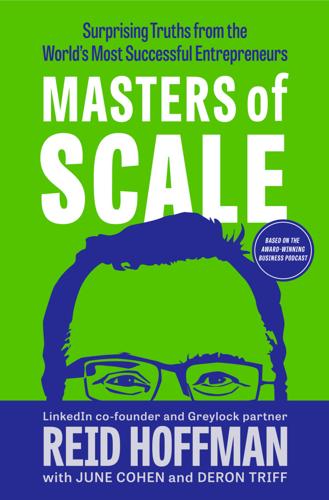
Masters of Scale: Surprising Truths From the World's Most Successful Entrepreneurs
by
Reid Hoffman
,
June Cohen
and
Deron Triff
Published 14 Oct 2021
Looking forward, she says, “I think that’s going to happen both inside Bumble and outside of Bumble in terms of our physical presence in the world.” I believe crowdsourcing can scale your business in unexpected ways—as long as you align your mission with your crowd’s motivation. Luis von Ahn uncovered a hugely valuable resource in crowdsourcing. In fact, it was the resource that would shoot Duolingo to massive scale. And he found it by reaching out to his passionate crowd of users who loved the company’s mission of offering a free way to learn language enough to help him fulfill it. A similar effect happened with Charles Best when he created the first crowdsourcing platform, DonorsChoose.org, back in 2001.
…
Charles’s particular do-good mission aligned perfectly with his crowd’s motivation: so much so, in fact, that he also was able to recruit a volunteer crowd of experienced DonorsChoose teachers to authenticate all the other teachers’ project requests, saving time and money. And this is the kind of alignment you need to get crowdsourcing right. Crowdsourcing is a way to tap skills—and scale—that you don’t have in-house. When it works, it opens extraordinary opportunities. It lets you scale faster and further than you ever could on your own. But if you get the alignment wrong, you can end up with anything from a weak fizzle to a fiery disaster. Rallying people who share your mission to gather beneath your banner is the Holy Grail—or maybe the Rosetta Stone in Luis’s case—of crowdsourcing. To keep them there, you have to make sure you’re directing their efforts toward something that engages them and feels like a worthwhile use of their passion.
…
Mariam had stumbled onto the power of crowdsourcing—the idea that ordinary people, coming together in large numbers, can do work once reserved for experts. The implications were clear: Because of new opportunities created by technology, almost anyone could become a stationery designer. And if their designs were good enough, they could rise up—and gain exposure and a following. “It was a true meritocracy that you could actually build and unleash,” Mariam says. There was just one problem: Out of the $2.5 million originally raised, Mariam had only about $100,000 left to promote these crowdsourced designs. Mariam’s plan to start a lifestyle business hadn’t panned out, and now she didn’t have enough funding left to adequately support her Plan B.

Ghost Work: How to Stop Silicon Valley From Building a New Global Underclass
by
Mary L. Gray
and
Siddharth Suri
Published 6 May 2019
The MTurk API, and those that followed, allowed programmers to use humans to do tasks that are beyond a computer’s capacity, like accurately making a quick judgment call, as Kala and Joan do when they determine what is and isn’t adult content. In fact, anyone sitting in front of a web browser could now answer an automated request for help. Businesses call this mix of APIs, rote computation, and human ingenuity “crowdsourcing,” “microwork,” or “crowdwork.” Computer scientists call it “human computation.” Any project that can be broken down into a series of discrete tasks can be solved using human computation. Software can use these APIs to manage the workflow and process the output of computers and individuals and even pay people for their contributions once they have completed the task.
…
She just accepted a job routed from Uber to CrowdFlower’s software, and now she is an invisible yet integral part of the ride. CrowdFlower and its competitors with similarly hip-techy names, like CloudFactory, Playment, and Clickworker, offer their platform’s software as a service to anyone who needs quick access to a ready crowd of workers. Tens of thousands of people like Ayesha log on to crowdsourcing platforms like CrowdFlower every day, looking for task-based work. Now Ayesha—and any other invisible workers who happen to have responded to CrowdFlower’s request—will determine whether Sam picks up Emily. Uber and CrowdFlower are two links in a growing supply chain of services that use APIs and human computation to put people to work.
…
Along with a call for transparency, Ghost Work holds lessons for tech entrepreneurs who want a productive workforce, engineers who are building the labor platforms of the future, and policy makers charged with shaping this new commercial landscape. But the still untold story of the invisible workers who power the apps on our phones and the websites we look at should interest a wide range of general readers who’ve seen some coverage of “gigging it” or “Turk work,” not to mention “crowdsourcing” and “microwork,” and heard a lot about the rise of robots but want a deeper look at how, exactly, AI reshapes the working world and what, precisely, people do in the shadow of it. We offer a textured, nuanced, and ultimately hopeful account. Among other things, we show how moving beyond the full-time-freelance divide alone could go a long way toward sharing the wealth generated by the internet with those tasked to grapple with the paradox of automation’s last mile.

The Patient Will See You Now: The Future of Medicine Is in Your Hands
by
Eric Topol
Published 6 Jan 2015
Murphy, “Crowdfunding Tips for Turning Inspiration into Reality,” New York Times, January 23, 2014, http://www.nytimes.com/2014/01/23/technology/personaltech/crowdfunding-tips-for-turning-inspiration-into-reality.html. 125. B. L. Ranard et al., “Crowdsourcing—Harnessing the Masses to Advance Health and Medicine, a Systematic Review,” Journal of General Internal Medicine 29, no. 1 (2013): 187–203. 126. S. Novella, “CureCrowd—Crowdsourcing Science,” Science Based Medicine, May 7, 2014, http://www.sciencebasedmedicine.org/curecrowd-crowdsourcing-science/. 127. “Open-Source Medical Devices: When Code Can Kill or Cure,” The Economist, May 31, 2012, http://www.economist.com/node/21556098. Chapter 12 1.
…
Honeyman et al., “Detection of a Recurrent DNAJB1-PRKACA Chimeric Transcript in Fibrolamellar Hepatocellular Carcinoma,” Science 343, no. 6174 (2014): 1010–1014. 102. A. D. Marcus, “Frustrated ALS Patients Concoct Their Own Drug,” Wall Street Journal, April 15, 2012, http://online.wsj.com/news/articles/SB10001424052702304818404577345953943484054?mg=reno64-wsj. 103. D. L. Scher, “Crowdsourced Clinical Studies: A New Paradigm in Health Care?,” Digital Health Corner, March 30, 2012, http://davidleescher.com/2012/03/30/crowdsourced-clinical-studies-a-new-paradigm-in-health-care/. 104. A. Hamilton, “Could ePatient Networks Become the Superdoctors of the Future?,” Fast Coexist, September 28, 2012, http://www.fastcoexist.com/1680617/could-epatient-networks-become-the-superdoctors-of-the-future. 105.
…
The information itself is quite useful to researchers as well. The company’s scientists have published seventeen publications in peer-reviewed journals, having discovered novel gene variants on conditions that span from Parkinson’s disease to photic sneeze.82 They have received large peer-reviewed grants from the National Institutes of Health for crowdsourcing data from individuals with such conditions as allergies or asthma. Much of this work has been done with a database of only a few hundred thousand individuals. If the 23andMe objective of twenty-five million customers were ever reached, even with the rather limited part of the genome that 23andMe assays, the opportunity to make discoveries on the root cause of diseases, how our DNA interacts with medications, and enriched understanding of genetic circuitry—how a variant in one gene cancels out the effect of another, for instance—would all be markedly improved.
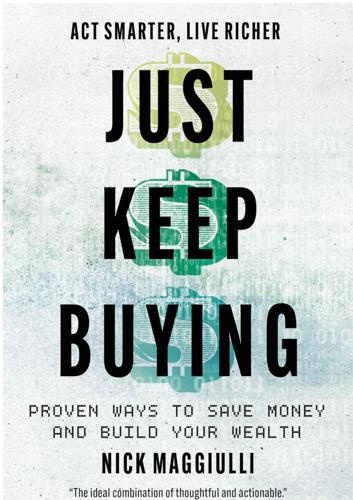
Just Keep Buying: Proven Ways to Save Money and Build Your Wealth
by
Nick Maggiulli
Published 15 May 2022
While buying individual farmland is no small undertaking, the most common way for investors to own farmland is through a publicly traded REIT or a crowdsourced solution. The crowdsourced solution can be nice because you have more control over which farmland properties you specifically invest in. The downside of crowdsourced solutions is that they are only typically available to accredited investors (people with a net worth >$1 million or annual income >$200,000 for the last three years). In addition, the fees for these crowdsourced platforms can be higher than with other public investments. I don’t think these fees are predatory given the amount of work that goes into structuring these deals, but if you hate the idea of fees, this is something to keep in mind.
…
May generate higher returns than public market offerings. Publicly non-traded REITs: Not traded on a stock exchange, but available to all public investors through crowdsourcing. More regulatory oversight than private REITs. Minimum investment requirements. Less liquid due to longer required holding period. May generate higher returns than public market offerings. Though I have only ever invested in publicly traded REIT ETFs, real estate crowdsourcing firms are a non-traded alternative that could offer higher long-term returns. Why You Should/Shouldn’t Invest in REITs No matter how you decide to invest in REITs, they generally have stock-like returns (or better) with a somewhat low correlation (0.5–0.7) to stocks during good times.
…
However, like most other risky assets, publicly traded REITs tend to sell off during stock market crashes. Therefore, don’t expect diversification benefits from REITs on the downside. How Do You Invest in REITs? As mentioned above, you can either invest in publicly traded REITs available through any brokerage platform, or go to a crowdsourced site to buy publicly non-traded or private REITs. I personally lean towards publicly traded REITs simply because they are more liquid (i.e., easier to buy/sell), but there can be benefits to looking at publicly non-traded or private options where you get to pick which specific properties you invest in.
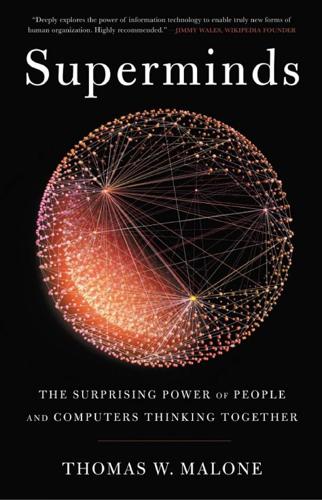
Superminds: The Surprising Power of People and Computers Thinking Together
by
Thomas W. Malone
Published 14 May 2018
Of course, Climate CoLab wasn’t solely responsible for the development of all these ideas. Some of them were based on work their developers had been doing for years. But Climate CoLab’s crowdsourcing approach provides a way of framing important problems, finding people who have good ideas about these problems wherever they are, encouraging them to develop the ideas into a form that can be shared, systematically comparing these ideas, and then helping to bring attention and other resources to the most promising ones. This crowdsourcing approach to problem solving is very different from the conventional problem-solving approach where you hire the best people you can find, pay them to work on your problem, and then hope they are successful.
…
This crowdsourcing approach to problem solving is very different from the conventional problem-solving approach where you hire the best people you can find, pay them to work on your problem, and then hope they are successful. Neither is guaranteed to work, but crowdsourcing can often solve problems the conventional approach can’t. And crowdsourcing is only one of a number of possibilities we’ll see for how new technologies can make groups smarter by involving more individuals. THE BRUTE-FORCE EFFECT As we’ve already seen, there are many tasks in the physical world for which larger groups (like armies or companies) are better than smaller ones. We can call this the brute-force effect. The same principle holds true for many tasks in the information world, too.
…
“Wikipedia:Bots,” accessed August 18, 2016, https://en.wikipedia.org/wiki/Wikipedia:Bots. 7. Aniket Kittur, Boris Smus, Susheel Khamkar, and Robert E. Kraut, “CrowdForge: Crowdsourcing Complex Work,” in Proceedings of the ACM Symposium on User Interface Software and Technology (New York: ACM Press, 2011), http://smus.com/crowdforge/crowdforge-uist-11.pdf. 8. Figure from Kittur A., Smus, B., Khamkar, S., Kraut, R.E., “CrowdForge: Crowdsourcing Complex Work.” UIST 2011: Proceedings of the ACM Symposium on User Interface Software and Technology. New York: ACM Press, http:doi.acm.org/10.1145/2047196.2047202. © 2011 Association for Computing Machinery, Inc.
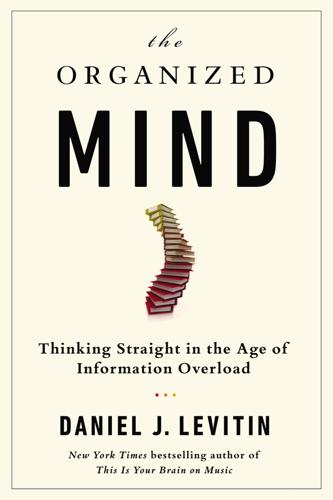
The Organized Mind: Thinking Straight in the Age of Information Overload
by
Daniel J. Levitin
Published 18 Aug 2014
Kiva applied the concept to banking, using crowdsourcing to kick-start economic independence by sponsoring microloans that help start small businesses in developing countries. In its first nine years, Kiva has given out loans totaling $500 million to one million people in seventy different countries, with crowdsourced contributions from nearly one million lenders. The people who make up the crowd in crowdsourcing are typically amateurs and enthusiastic hobbyists, although this doesn’t necessarily have to be the case. Crowdsourcing is perhaps most visible as a form of consumer ratings via Yelp, Zagat, and product ratings on sites such as Amazon.com. In the old, pre-Internet days, a class of workers existed who were expert reviewers and they would share their impressions of products and services in newspaper articles or magazines such as Consumer Reports.
…
Whenever we read of terrorist attacks or war atrocities, the most wrenching and visceral reactions are to descriptions of children being harmed. This feeling appears to be culturally universal and innate. The Amber Alert is an example of crowdsourcing—outsourcing to a crowd—the technique by which thousands or even millions of people help to solve problems that would be difficult or impossible to solve any other way. Crowdsourcing has been used for all kinds of things, including wildlife and bird counts, providing usage examples and quotes to the editors of the Oxford English Dictionary, and helping to decipher ambiguous text. The U.S. military and law enforcement have taken an interest in it because it potentially increases the amount of data they get by turning a large number of civilians into team members in information gathering.
…
A large number of people—the public—can often help to solve big problems outside of traditional institutions such as public agencies. Wikipedia is an example of crowdsourcing: Anyone with information is encouraged to contribute, and through this, it has become the largest reference work in the world. What Wikipedia did for encyclopedias, Kickstarter did for venture capital: More than 4.5 million people have contributed over $750 million to fund roughly 50,000 creative projects by filmmakers, musicians, painters, designers, and other artists. Kiva applied the concept to banking, using crowdsourcing to kick-start economic independence by sponsoring microloans that help start small businesses in developing countries.
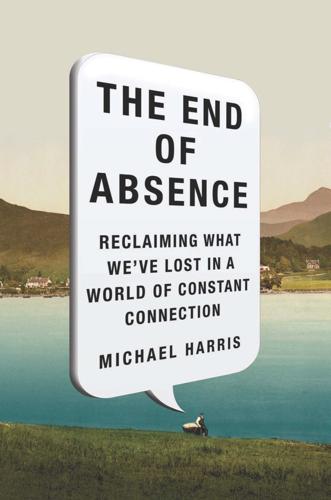
The End of Absence: Reclaiming What We've Lost in a World of Constant Connection
by
Michael Harris
Published 6 Aug 2014
The process of intellectual exploration, once highly idiosyncratic, becomes an opportunity to promote whatever material has the highest view count. “Until now,” Ng told me, “education has been a largely anecdotal science, and we can now make it data-driven.” This reminded me, of course, of Karthik Dinakar, eager to “harden” the soft sciences of psychology and psychiatry with reams of crowdsourced data. The crowdsourcing of education is further highlighted by Ng’s interest in Wiki lecture notes. “At Stanford,” he explained to me, “I taught a class for a decade, and writing the lecture notes would take forever. And then, every year, students would find more bugs, more errors, in my notes. But for online classes, I put up a Wiki and invite students to write their own lecture notes; students watch my lectures and create the notes themselves.
…
Dinakar watched the program, figuring there must be a way to stem such cruelty, to monitor and manage unacceptable online behavior. Most social Web sites leave it to the public. Facebook, Twitter, and the like incorporate a button that allows users to “flag this as inappropriate” when they see something they disapprove of. In the age of crowdsourced knowledge like Wikipedia’s, such user-driven moderation sounds like common sense, and perhaps it is.8 “But what happens,” Dinakar explains, “is that all flagging goes into a stream where a moderation team has to look at it. Nobody gets banned automatically, so the problem becomes how do you deal with eight hundred million users throwing up content and flagging each other?”
…
Unfortunately, Feldman (though she may well be a real person) did not invent the hair iron, and on September 15, 2009, Wikipedia was forced to consign the Feldman affair to their growing list of hoaxes. Not a particularly scandalous or even interesting hoax, but such is the banality of error. Four years later, I asked Wiki.Answers.com (the largest Q&A site online) who Erica Feldman is and was redirected to a set of crowdsourced “Relevant Answers” that claimed she is both alive and that she invented the hair straightener in 1872 (making her more than 140 years old). I was also informed of the Feldman hairdo, which involves “slicked-back long hair with one strand hanging over the forehead.” These results were displayed alongside a number of hair-focused advertisements.
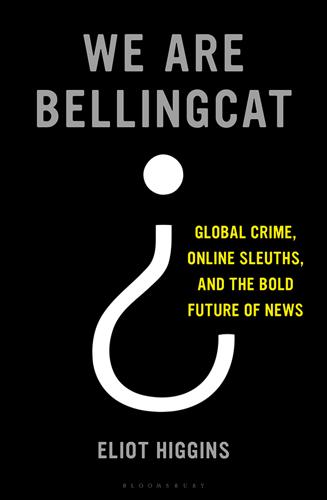
We Are Bellingcat: Global Crime, Online Sleuths, and the Bold Future of News
by
Eliot Higgins
Published 2 Mar 2021
doi=10.1.1.552.239&rep=rep1&type=pdf 65 www.aljazeera.com/news/2019/03/brother-muslim-worshipper-words-gunman-190315152715528.html 66 www.washingtonpost.com/world/2019/03/15/with-strobe-lights-guns-bearing-neo-nazi-slogans-new-zealand-gunman-plotted-massacre/ 67 www.bellingcat.com/news/rest-of-world/2019/03/15/shitposting-inspirational-terrorism-and-the-christchurch-mosque-massacre/ 68 www.cjr.org/analysis/christchurch-shooting-media-coverage.php 69 www.buzzfeed.com/markdistefano/the-daily-mail-let-readers-download-the-new-zealand-mosque 70 www.bellingcat.com/news/americas/2019/04/28/ignore-the-poway-synagogue-shooters-manifesto-pay-attention-to-8chans-pol-board/ 71 www.bellingcat.com/news/americas/2019/08/04/the-el-paso-shooting-and-the-gamification-of-terror/ 72 www.bellingcat.com/news/americas/2019/04/28/ignore-the-poway-synagogue-shooters-manifesto-pay-attention-to-8chans-pol-board/ 73 encyclopediadramatica.rs/High_Score 74 www.nytimes.com/2019/08/04/technology/8chan-shooting-manifesto.html 75 www.nytimes.com/2019/08/04/technology/8chan-shooting-manifesto.html 76 www.theverge.com/2019/11/4/20947429/8chan-8kun-online-image-board-shooter-gunmen-manifesto 77 twitter.com/rcallimachi/status/734053117109624836 78 twitter.com/rcallimachi/status/734053117109624836 79 twitter.com/jenanmoussa/status/734054748031160320 80 twitter.com/jenanmoussa/status/734105719612407808 81 www.bellingcat.com/news/uk-and-europe/2017/06/01/crowdsourcing-europols-stop-child-abuse-trace-object-campaign/ www.bellingcat.com/news/uk-and-europe/2017/06/15/update-crowdsourcing-europols-stop-child-abuse-trace-object-campaign/www.youtube.com/watch?v=XrOAy6PfYlYwww.europol.europa.eu/stopchildabuse 82 www.europol.europa.eu/newsroom/news/you-have-identified-70-objects-taken-child-sexual-abuse-imageswww.europol.europa.eu/newsroom/news/your-help-we-are-21-000-steps-closer-to-saving-child-sexual-abusewww.bellingcat.com/news/uk-and-europe/2017/08/28/stop-child-abuse-2nd-update/ 83 www.bellingcat.com/news/uk-and-europe/2020/04/22/creating-impact-a-year-on-stop-child-abuse-trace-an-object/ 84 www.europol.europa.eu/newsroom/news/241-victims-of-child-sexual-abuse-safeguarded-thanks-to-global-law-enforcement-efforts 85 en.wikipedia.org/wiki/Russians_in_the_Baltic_states 86 www.thedailybeast.com/the-baltic-elves-taking-on-pro-russian-trolls 87 www.bbc.co.uk/news/av/world-europe-48401922/how-finland-fights-the-fake-news-trolls 88 disinfoportal.org/governments-countering-disinformation-the-case-of-sweden/ 89 stacks.stanford.edu/file/druid:fv751yt5934/SHEG%20Evaluating%20Information%20Online.pdfamp.usatoday.com/amp/2769781002?
…
First came a gush of identical posts on Russian social media, in tweets and on Facebook, all insisting that the video of the Buk with a missile gone had been filmed in a Ukrainian-controlled town. Next, identical fake posts turned up on Western social media, then Russian state TV and separatist websites. Last stop in the disinformation chain was the Russian Defence Ministry briefing of 21 July 2014. ‘This was a deliberate attempt to simulate “crowd-sourcing” of geolocation efforts,’26 she said. Unfortunately for the Kremlin, our efforts were not over. A fresh clip appeared on YouTube, seemingly filmed from within another building, this time overlooking a communal patch of dry grass and a roadway. A flatbed truck passed, transporting the Buk. The person who had posted this seemed aware of the need to verify online claims, so included geographical coordinates – 48°01’01.1″N, 38°18’06.6″E – and the time of day of the footage.
…
SLEUTHING AROUND THE GLOBE The MH17 case helped make Bellingcat, but our new form of investigation could be applied to almost any topic. Every new inquiry – as I had found when moving from the Libya conflict to phone-hacking to the Syrian civil war – connected to a fresh node of obsessives online, expanding the network of crowd-sourced expertise, while spreading word of what digital sleuthing could achieve. During our first couple of years, Bellingcat conducted cases from Latin America and the United States, to the Arabian Peninsula and Turkey. A French freelancer, Aliaume Leroy, geolocated Mexican cartel hitmen via YouTube videos and produced a study of drug lord bling on social media.44 We published on the illegal activities of a Detroit street gang, as tracked down via their habit of scrawling graffiti with a hashtag.45 We delved into the civil war in Yemen,46 and gave an award-winning glimpse into a Turkish military coup via the plotters’ leaked WhatsApp feed.
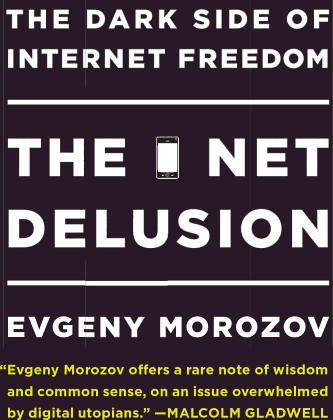
The Net Delusion: The Dark Side of Internet Freedom
by
Evgeny Morozov
Published 16 Nov 2010
(At least for most nonlawyers, those are probably far less satisfying than the porn pages they were seeking to visit.) The practice of “crowdsourcing” censorship is becoming popular in democracies as well. Both the British and the French authorities have similar schemes for their citizens to report child pornography and several other kinds of illegal content. As there are more and more websites and blogs to check for illegal material, it’s quite likely that such crowdsourcing schemes will become more common. The Thai, Saudi, and British authorities rely on citizens’ goodwill, but a new scheme in China actually offers monetary awards to anyone submitting links to online pornography.
…
One such tool, Ushahidi, was first designed to report on violence during the postelection crisis in Kenya and since then has been successfully deployed all over the world, including in the devastating earthquakes in Haiti and Chile in early 2010. But the reason why many projects that rely on crowdsourcing produce trustworthy data in natural disasters is because those are usually apolitical events. There are no warring sides, and those who report data do not have any incentives to manipulate it. The problem with using such crowdsourced tools for other purposes—for example, documenting human rights abuses or monitoring elections, some of the other uses to which Ushahidi has been put—is that the accuracy of such reports is impossible to verify and easy to manipulate.
…
World Politics: A Quarterly Journal of International Relations 4, no. 2 (1952): 145-158. Currion, Paul. “Better the Devil We Know: Obstacles and Opportunities in Humanitarian GIS.” Humanitarian.info, January 25, 2006. www.humanitarian.info/humanitarian-gis/. ———. “Correcting Crowdsourcing in a Crisis.” Humanitarian.info, March 30, 2009. www.humanitarian.info/2009/03/30/correcting-crowdsourcing-in-a-crisis/. “Cyber-Nationalism: The Brave New World of E-hatred.” Economist, July 24, 2008. Dahlberg, L. “Rethinking the Fragmentation of the Cyberpublic: From Consensus to Contestation.” New Media & Society 9, no. 5 (2007): 827. Dewan, Shaila.
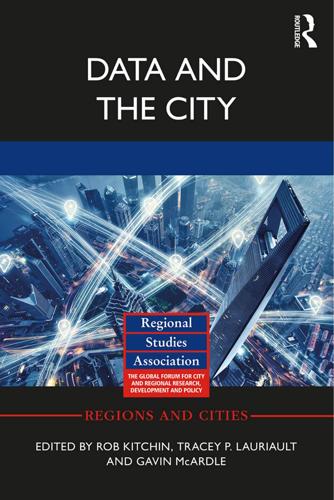
Data and the City
by
Rob Kitchin,Tracey P. Lauriault,Gavin McArdle
Published 2 Aug 2017
As public and private sectors become further intertwined in delivering ‘smart cities’ to the urban public, the clash between the need for data transparency and claims to confidential business information will need to be addressed. In some cases, the crowd-sourcing of unofficial crime maps has been used as a means of providing a counter-narrative to official visualizations. For example, HarassMap3 invites women to map and describe incidents of sexual harassment in Egypt, within a cultural context in which such harassment typically remains invisible and unreportable. While not a crime map per se (as it compiles data on harassment that ranges from criminal to non-criminal conduct), this is an example of how the crowd-sourcing of data can draw attention to a problem, and can be used in powerful visualization tools to create an alternative representation of the gendered experience of urban space.
…
While not a crime map per se (as it compiles data on harassment that ranges from criminal to non-criminal conduct), this is an example of how the crowd-sourcing of data can draw attention to a problem, and can be used in powerful visualization tools to create an alternative representation of the gendered experience of urban space. While crowd-sourced maps are interesting, they present many challenges. Stability and continuity are one challenge – both in terms of management of the project as well as in terms of public participation. In the case of crimes like sexual assault there are also significant privacy issues, risks of further victimization, other liability issues, as well as risks that first-person reports could be used by defence lawyers in criminal prosecutions to discredit victim witnesses. Nevertheless, crowd-sourcing remains an interesting tool particularly in contexts where certain crimes are not dealt with effectively by public authorities (Friedman 2014).
…
These are being complemented with big data generated by: (a) commercial companies such as mobile phone operators (location/movement, app use, activity), travel and accommodation sites (reviews, location/movement, consumption), social media sites (opinions, photos, personal info, location/movement), transport providers (routes, traffic flow), website owners (clickstreams), financial institutions and retail chains (consumption, in-store movement, location), and private surveillance and security firms (location, behaviour) that are increasingly selling and leasing their data through data brokers, or making their data available through APIs (e.g. Twitter and Foursquare); (b) crowdsourcing (e.g. OpenStreetMap) and citizen science (e.g. personal weather stations) initiatives, wherein people collaborate on producing a shared data resource or volunteer data. Other kinds of more irregular urban big data include digital aerial photography via planes or drones, or spatial video, LiDAR (light detection and ranging), thermal or other kinds of electromagnetic scans of environments that enable the mobile and realtime 2D and 3D mapping of landscapes.
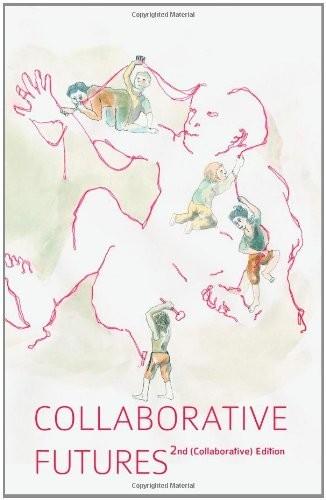
Collaborative Futures
by
Mike Linksvayer
,
Michael Mandiberg
and
Mushon Zer-Aviv
Published 24 Aug 2010
One of them is the Twi er Vote Report used in the 2008 US presidential elections <twi ervotereport.com> and its later incarnation as Swi River, a tool for crowdsourcing situational awareness: “Swi hopes to expand [Twi er Vote Report’s] approach into a general purpose toolkit for crowdsourcing the semantic structuring of data so that it can be reused in other applications and visualizations. The developers of Swi are particularly interested in crisis reporting (Ushahidi) and international media criticism (Meedan), but by providing a general purpose crowdsourcing tool we hope to create a tool reusable in many contexts. Swi engages self-interested teams of “citizen editors” who curate publicly available information about a crisis or any event or region as it happens” —Swi Project, 2010 <h p://github.com/unthinkingly/swi river_rails> These activist hacker initiatives are realizing the potential of loosely coordinated distributed action.
…
Process Fetishism There's a risk of making a fetish of process over product, of the act of collaboration over the artifact that results from it. How important is it that a product was produced through an open, distributed network if, in the end, it serves the interests of the status quo? If it's just another widget, another distraction, an added value that some giant conglomerate can take advantage of, as in some cases of crowdsourcing? Does open collaboration serve a purpose or is it more like a drum circle, way more fun and interesting for the participants than for those who are forced to listen to it? Collaboration is fundamental to human experience. It should be no surprise that collaboration also occurs online. The important question is what goals these new opportunities for cooperation and creation across space and time are put in service of.
…
Open appears to be an assertion of —though it is more accurately an aspiration towards—egalitarianism, inclusion, non-coerciveness, freedom. But what kind of freedom? Free as in unscripted and improvisatory, free as in freely chosen, free as in unpaid, or free as in it won't tie you down? As books like Jeff Howe’s Crowdsourcing: Why The Power of the Crowd is Driving the Future of Business show, corporate America is ready to collaborate. They want to have an open relationship with their workforce, because who can beat free? And by turning their consumers into collaborators, the bond between the company and their customers is made even stronger.
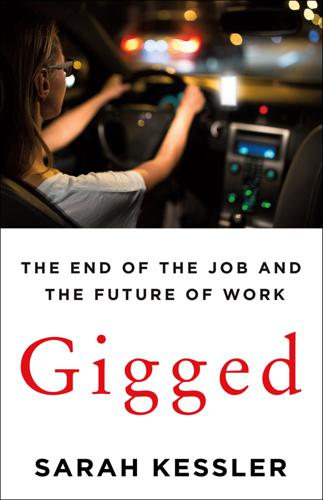
Gigged: The End of the Job and the Future of Work
by
Sarah Kessler
Published 11 Jun 2018
And as a daycare provider, when she’d been stiffed by most of her clients the week before Christmas (because they were also struggling to make ends meet), she had marched to each of their homes with a letter explaining that she could not afford her own Christmas dinner and demanding payment. If Kristy couldn’t figure out how to make a living, it wouldn’t be because she hadn’t tried, and it wouldn’t be because she wasn’t a fighter. Her first idea was to work more hours on Mechanical Turk. Founded in 2005, Mechanical Turk is an online “crowdsourcing” marketplace run by Amazon. Its clients post work tasks on a dashboard that a “crowd” of workers can choose to complete. The process doesn’t work that much differently than Gigster’s process. But the tasks on Mechanical Turk are often simple and pay just cents each. They’re jobs like adding tags to images, filling out spreadsheets with contact information, or writing product descriptions for websites.
…
Another layer bigger, and you’d see Arise, the big customer service company that had made a contract with the IBO. Only after another layer would you find Sears, the company that the customer thought he was dealing with all along. Arise, no surprise, presented this setup as innovation: Under the heading “Leveraging the power of crowdsourcing,” the company’s “about” page at the time explained to potential customers that Arise takes advantage of “innovative breakthroughs in technology and our own award winning, proprietary and patented technologies” and “provide[s] entrepreneurial opportunities to many underserved populations, where small business owners have the ability to create flexible schedules based on their lifestyle needs.”
…
A local chapter of the Teamsters in Seattle lobbied for a law that would allow Uber drivers to form a union. It passed. (Shortly later, the US Chamber of Commerce sued the city, saying the law conflicted with anti-trust law.) In Germany, a group of workers’ organizations created a list of best practices that, as of 2017, eight crowdsourcing companies had pledged to follow. Together they established an office where workers could report violations of this code.16 Regardless of the strategy, long-established unions faced the same problem as novice organizers like Abe, which was that they didn’t know who worked for gig economy companies.

Peers Inc: How People and Platforms Are Inventing the Collaborative Economy and Reinventing Capitalism
by
Robin Chase
Published 14 May 2015
What I failed to appreciate back then was the much larger movement made possible by the Internet. Zipcar was a trailblazer. When you can connect and share assets, people, and ideas, everything changes, not just how you rent a car. Google, eBay, Facebook, OKCupid, YouTube, Waze, Airbnb, WhatsApp, Duolingo—all are part of this transformation of capitalism. Web 2.0, the sharing economy, crowdsourcing, collaborative production, collaborative consumption, and network effects are simply terms we’ve created along the way in an effort to capture what is going on. Attributing all this to “the Internet” misses the building blocks and therefore the ability to replicate this type of activity in a more controlled way.
…
A $69 million financing in November 2013, including $30 million from GE, allowed Quirky to spin off Wink, a wholly owned subsidiary.27 Wink provides a technology ecosystem (a platform) that makes it simple to bring together connected-home devices with smartphones, giving GE a way to participate in both the Internet of Things and crowd-sourced innovation. (Chapter 8 will delve into the ways in which large mainstream companies are adapting to the new organizational paradigm.) The first GE + Quirky–branded product was the Aros air conditioner, which lets you change the room temperature setting from a distance when you are away, and which automatically instructs your Aros to begin cooling the room to a predetermined temperature when your smartphone is within a certain proximity of home.
…
Agency for International Development’s Ebola Grand Challenge is the late-breaking but now deep-within-the-crisis Peers Inc approach, using the OpenIdeo platform to collect insight into the situation on the ground and integrate learning from hospitals and universities.13 Today, we connected peers have access to crowdsourced best practices plus supercomputing power plus the insight of people who are right there on the ground and just a step ahead of us. Institutions tasked with responsibilities as enormous as fighting diseases such as Ebola are catching up as fast as they can. Even the U.S. Department of Defense has a disaster relief expert coordination team, STAR-TIDES, striving to provide the deft touch, the fluid access to expertise required to assist teams in the field with a connection to the right people at the right time.
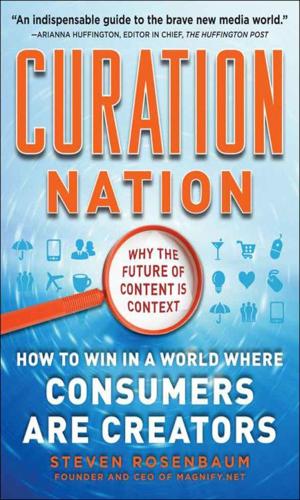
Curation Nation
by
Rosenbaum, Steven
Published 27 Jan 2011
CONTENT STRATEGISTS While the emerging curation ecosystem may leave the highbrow and pedigreed museum curation crowd with a furrowed brow, there’s another group who are equally troubled by the rise of human-powered finding and filtering—and that’s the code-centric solutions crowd that has been searching for the holy grail of machine-powered (or crowd-sourced) finding and filtering. This is the aggregation camp. And they too are anxious to see the emerging but noisy curation community replaced by elegant code. Blogger Clinton Forry has the most cogent distinction I’ve read so far: Aggregation is automated Aggregation collects content based on criteria in the form of metadata or keywords Criteria can be adjusted, but remain static otherwise Follows a preset frequency of publishing [as available, weekly, etc.]
…
Bonin Bough, the director of digital and social media at PepsiCo explains, “If you listen to what people have to say and give voice to their perspectives, you can inspire people and empower their ideas.” This may not seem like the words of a soda and snack food company, but Pepsi is putting its brand and its money where its mouth is by pledging more than 20 million dollars to a crowd-sourced grant program, with public voting determining who gets the grants. Each month, Pepsi will award up to $1.3 million to the winning ideas across six categories: Health, Arts and Culture, Food and Shelter, The Planet, Neighborhoods, and Education. It’s a listening campaign that is meant to send a message to a new generation of connected consumers.
…
And it appears that some of the companies that first were exposed to the power of consumer voice online and didn’t pay attention are drinking the Kool-Aid. Jarvis says Dell got the message, and years later Dell CEO Michael Dell told Jarvis, “No company can exist anymore on the idea that it’s just three people.” The era of the all-powerful CEO, CMO, and COO has been replaced by a crowd-sourced aggregation of suggestions, feedback, and complaints. TAKING CONTROL OF THE BRAND So what are the action items that this change from mass media to consumer-controlled conversations can offer? Well, there is a shift in how the buyers engage companies: no longer do they need to accept the “take it or leave it” attitude of many companies they do business with.

The Digital Party: Political Organisation and Online Democracy
by
Paolo Gerbaudo
Published 19 Jul 2018
The Five Star Movement, in less than a decade from its birth, has managed to become the largest party in Italy, and is currently heading the national government, while many other formations have had a similarly explosive growth trajectory. Like social networks, it is a party that feeds on the ‘engagement’ which its supporters and sympathisers provide. It is constantly busy eliciting feedback from its member/user base, crowdsourcing ideas from it, balloting on issues, measuring the response of the public, and modifying its strategy and messaging accordingly. It is a party that adopts the free sign-up process of social media and apps, to lower as much as possible the barrier to entry and its definition of membership, and exploit the close-to-zero marginal costs of communicating online with an ever-expanding base of members.
…
The organisational template introduced by the digital party has the merit of updating the party form to the technological and social conditions of our era. The digital party has demonstrated the ability to operate efficiently despite extremely limited economic resources, and introduced new forms of membership involvement, as seen in processes of participatory legislation, where ideas for new parliamentary initiatives are crowdsourced from members. However, such organisational restructuring does not result, as some platform party advocates would like us to believe, in a radical diffusion of power in the organisation, nor does it lead to a situation in which ‘everyone is of equal worth’, as suggested by the Five Star Movement slogan (ognuno vale uno).
…
It examines how different decision-making software integrate different visions of democracy, with some leaning more on deliberative functions and others more on representative and plebiscitary balloting. Chapter 7 discusses the process of online decision-making and how it is managed by the party staff. All digital parties involve some deliberative functions, crowdsourcing policy ideas from the party membership. However, preponderance goes to more top-down functions, in particular to referenda through which the leadership seeks to constantly renew their mandate, with most ballots returning the expected results. Chapter 8 explores the figure of the hyperleader. The hyperleader is a plebiscitary-charismatic figure tasked with representing the party in the media and internet spectacle, by attending TV talk shows and intervening obsessively on social media.
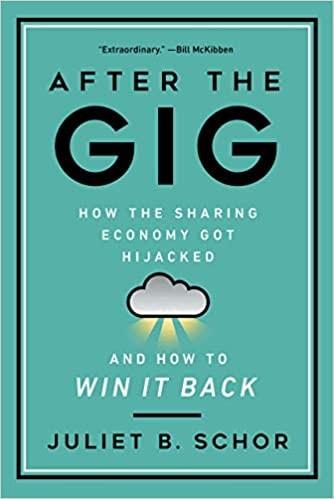
After the Gig: How the Sharing Economy Got Hijacked and How to Win It Back
by
Juliet Schor
,
William Attwood-Charles
and
Mehmet Cansoy
Published 15 Mar 2020
The boss is a jerk. I’ve spent much of my professional life studying these issues. When the financial system crashed in 2008, a powerful idea emerged from the rubble: digital technology could solve the problem of work. This is not because machines will replace people but because algorithms and crowdsourced information can make bosses redundant. Software can reorganize economic activity into a person-to-person structure. This empowers individuals to take control of their lives. Vast swathes of the economy, especially in services, are ripe for this transformation. This vision came to be called “the sharing economy.”
…
The vision was of a high-tech Jeffersonian world10 populated by small-scale asset-holders who self-govern in “harmonious community.”11 Many of these ideas would carry over into the original discourse of the sharing economy—personal empowerment through decentralized task-based work, egalitarianism, and community. An additional dimension of New Communalist thinking—cybernetics, the study of machine-based control—is also present in the design of sharing platforms. It focused on information, feedback loops, and self-correcting mechanisms, which appeared as dynamic algorithms, surge pricing, and crowd-sourced data.12 As it happened, the gelling of the Californian Ideology coincided with the neoliberal policy turn of the 1980s. Cyberutopians jumped on the “free market” bandwagon,* combining “the free-wheeling spirit” of hippies with the “entrepreneurial zeal” of yuppies.13 In the process they came to believe in what Thomas Frank calls “market populism,” the view that “markets enjoyed some mystic, organic connection to the people while governments were fundamentally illegitimate.”14 Technology corporations were heralded as agents of revolution,15 and the task of those in the digital vanguard was to free the companies from the pesky regulations of government bureaucrats.16 The crucial intellectual move here was the conflation of individual liberty with freedom for corporations, an equivalence that made sense to cyberutopians who had been heavily engaged with Silicon Valley companies for years.17 The 1996 Telecommunications Act deregulated the sector, and platforms such as Google, Facebook, and Amazon morphed into monopolies with virtually no opposition.
…
This was less true of platform employees, who were more aware of problems, and researchers, who from the beginning debated the pros and cons of sharing platforms, especially their economics.41 The Economics of the Platforms The conversation about what is propelling the growth of the platform sector has broken down along familiar lines. One group—mainstream economists, management scholars, and the companies—points to digital innovation and market structure, in particular algorithms, crowdsourced information, and network effects.42 Sociologists, legal scholars, and political economists point to platforms’ ability to exploit the labor and capital of sellers and to evade regulation. Both sides have a point. Sharing platforms are “two-sided markets,” whose function is to coordinate individual buyers and sellers.43 Traditionally, anonymous person-to-person markets have been stymied by the time involved in searching for the right match (think yard sales) and the risk of transacting with an unknown individual.

Blockchain Revolution: How the Technology Behind Bitcoin Is Changing Money, Business, and the World
by
Don Tapscott
and
Alex Tapscott
Published 9 May 2016
Combining the concepts of transparency, crowdsourcing, and online citizen participation—over a blockchain—we can envision reintroducing concepts of ancient Athenian democracy into the twenty-first century.55 CrowdJury56 looks to transform the justice system by putting several judicial processes online, using both crowdsourcing and the blockchain, including filing a charge or complaint, gathering and vetting of evidence, engaging citizens in open trials online and as online jurors, and issuing a verdict. Think transparent processes with crowdsourced discovery, crowdsourced analysis, and crowdsourced decision making and presto—you get an accurate outcome in a much shorter time frame and at vastly reduced cost.
…
“A wallet could be controlled by a piece of software that has no ownership and so you have the possibility of completely autonomous software agents that control their own money.”15 An autonomous agent could pay for its own Web hosting and use evolutionary algorithms to spread copies of itself by making small changes and then allowing those copies to survive. Each copy could contain new content that it discovers or even crowdsources somewhere on the Internet. As some of these copies become very successful, the agent could sell ads back to users, ad revenue could go into a bank account or posted on a secure place on the blockchain, and the agent could use this growing revenue to crowdsource more ad content and proliferate itself. The agent would repeat the cycle so that appealing content propagates and hosts itself successfully, and unsuccessful content basically dies because it runs out of money to host itself.
…
Patent Application of David Chaum, “Random Sample Elections,” June 19, 2014; http://patents.justia.com/patent/20140172517. 54. https://blog.ethereum.org/2014/08/21/introduction-futarchy/. 55. Federico Ast (@federicoast) and Alejandro Sewrjugin (@asewrjugin), “The CrowdJury, a Crowdsourced Justice System for the Collaboration Era,” https://medium.com/@federicoast/the-crowdjury-a-crowdsourced-court-system-for-the-collaboration-era-66da002750d8#.e8yynqipo. 56. http://crowdjury.org/en/. 57. The entire process is described in Ast and Sewrjugin, “The CrowdJury.” 58. A brief description of the jury selection process in early Athens is described at www.agathe.gr/democracy/the_jury.html. 59.
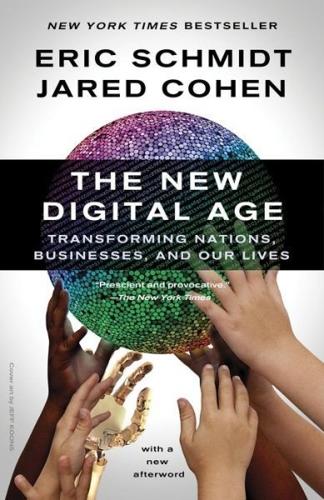
The New Digital Age: Transforming Nations, Businesses, and Our Lives
by
Eric Schmidt
and
Jared Cohen
Published 22 Apr 2013
Imagine if the end goal of the Chinese users was not to harass the kitten-stomper but to bring her to justice through official channels. In a conflict scenario, where institutions have broken down or are not trusted by the population, crowd-sourced energy will help to produce more comprehensive and accurate information, help track down wanted criminals and create demand for accountability even in the most difficult circumstances. But the importance and utility of crowd-sourced justice pales in comparison to the other modern development: data permanence. The exposure of atrocities in real time and in front of a global audience is vital, as is permanently storing it and making it searchable for everyone who wants to refer to it (for prosecutions, legislation or later study).
…
As people come online, they will quite suddenly have access to almost all the world’s information in one place in their own language. This will even be true for an illiterate Maasai cattle herder in the Serengeti, whose native tongue, Maa, is not written—he’ll be able to verbally inquire about the day’s market prices and crowd-source the whereabouts of any nearby predators, receiving a spoken answer from his device in reply. Mobile phones will allow formerly isolated people to connect with others very far away and very different from themselves. On the economic front, they’ll find ways to use the new tools at their disposal to enlarge their businesses, make them more efficient and maximize their profits, as the fisherwomen did much more locally with their basic phones.
…
Disillusioned with Russia’s liberal opposition parties, Navalny, a real-estate lawyer, started his own blog dedicated to exposing corruption in major Russian companies, initially supplying the disclosures himself by taking small stakes in the businesses and invoking shareholder rights to force them to share information. He later crowd-sourced his approach, instructing supporters to try to do the same, with some success. Eventually, his blog grew into a full-blown secret-spilling platform, where visitors were encouraged to donate toward its operating costs via PayPal. Navalny’s profile grew as his collection of scoops swelled, most notably with a set of leaked documents that revealed the misuse of $4 billion at the state-owned oil pipeline company Transneft in 2010.
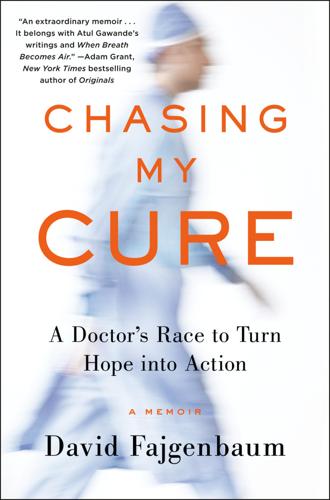
Chasing My Cure: A Doctor's Race to Turn Hope Into Action; A Memoir
by
David Fajgenbaum
Published 9 Sep 2019
When thinking about how the CDCN would accelerate research into how Castleman disease works and how to best diagnose and treat it, I came up with an ambitious but quite simple plan (I thought!): Instead of waiting for the stars to align, we would align the stars. First, we’d need to identify, connect, and build a global community to identify and prioritize high-impact research projects. Toward this end, we imagined an online crowdsourcing process that allowed any patient, physician, or researcher to suggest lines of inquiry or studies that seemed most important, regardless of that person’s ability to perform the study. This was a novel approach: The norm in medical research dictates that research ideas are pursued if they’re conceived by a researcher who can also garner the necessary funding and do the work.
…
This was a novel approach: The norm in medical research dictates that research ideas are pursued if they’re conceived by a researcher who can also garner the necessary funding and do the work. Promising ideas, if conceived by someone who can’t obtain the funding or perform the work, go unharnessed. We couldn’t afford to let that happen. We also proposed the creation of a scientific advisory board to prioritize the crowdsourced ideas based on their likely impact, feasibility, and rational order within an overarching framework (e.g., you shouldn’t perform in-depth investigations of the inner workings of a particular cell type until after you have identified that the particular cell type is in fact important in Castleman disease).
…
And when medications were repurposed for use in iMCD, we’d systematically track their effectiveness to guide future use and identify promising candidates for clinical trials. Finally, we understood that feeding information back to the community would be the critical component to keep all of this going—sharing findings would promote continued rounds of crowdsourcing, prioritization, expert recruitment, and execution. What we were proposing would maximize efficiency and give the best hope for breakthroughs in the shortest amount of time. Put simply, we’d bring all the key stakeholders together and then apply hyperfocus to research. Instead of soliciting grant applications and hoping that the right researcher would apply to conduct the right research, we’d ensure that the right research is done by the right researcher right now.

To Save Everything, Click Here: The Folly of Technological Solutionism
by
Evgeny Morozov
Published 15 Nov 2013
Sol Schwimmer is suing me”: Woody Allen, The Complete Prose of Woody Allen (New York: Wings Books, 1991), 105. 35 “when we think of information technology”: David Edgerton, Shock of the Old: Technology and Global History Since 1900 (London: Profile Books, 2011), xvi. 36 “the most wrenching cultural transformation since the Industrial Revolution”: “‘Antichrist of Silicon Valley,’ Andrew Keen Wary of Online Content Sharing,” Economic Times, May 29, 2012. 37 they don’t always capture the historical complexity: on the longitude problem, see Dava Sobel’s accessible history Longitude: The True Story of a Lone Genius Who Solved the Greatest Scientific Problem of His Time, reprint ed. (New York: Walker & Company, 2007). On early crowdsourcing efforts by the Smithsonian, see “Smithsonian Crowd-sourcing since 1849!,” Smithsonian Institution Archives, April 14, 2011, http://siarchives.si.edu/blog/smithsonian-crowdsourcing-1849. I learned of Toyota’s efforts via this blog post on pre-Internet crowd-sourcing efforts: “Crowdsourcing Is Not New—the History of Crowdsourcing (1714 to 2010),” DesignCrowd, October 28, 2010, http://blog.designcrowd.com/article/202/crowdsourcing. 37 “Knowledge is taking on the shape of the Net”: David Weinberger, Too Big to Know: Rethinking Knowledge Now that the Facts Aren’t the Facts, Experts Are Everywhere, and the Smartest Person in the Room Is the Room (New York: Basic Books, 2012), 17.
…
Such circularity—whereby “the Internet” is seen as revolutionary because of Factor X, but Factor X is seen as revolutionary because of “the Internet”—is silly, but in an era of profound and revolutionary change, this passes for deep insight. Take the fake novelty of a term like “crowdsourcing”—supposedly, one of the chief attributes of the Internet era, an idea that gave us that great source of didactic knowledge, Wikipedia. “Crowdsourcing” is certainly a very effective term; calling some of the practices it enables as “digitally distributed sweatshop labor”—for this seems like a much better description of what’s happening on crowdsource-for-money platforms like Amazon’s Mechanical Turk—wouldn’t accomplish half as much. But effective euphemisms come with trade-offs; they don’t always capture the historical complexity of the processes they purport to describe.
…
Didn’t the British government turn to “crowdsourcing”—in 1714!—to solve the “longitude problem” and solicit proposals for how to better navigate at sea? Didn’t the Smithsonian Institution—in 1849!—turn to a network of over six hundred volunteer observers (in Canada, Mexico, Latin America, and the Caribbean) to submit monthly weather reports (published in 1861 as the first of a two-volume compilation of climactic data)? Didn’t Toyota hold a contest—in 1936!—to redesign its logo, only to receive 27,000 entries in return? Didn’t Zagat turn to a form of “crowdsourcing” to generate its restaurant reviews long before Yelp made online reviews fashionable?
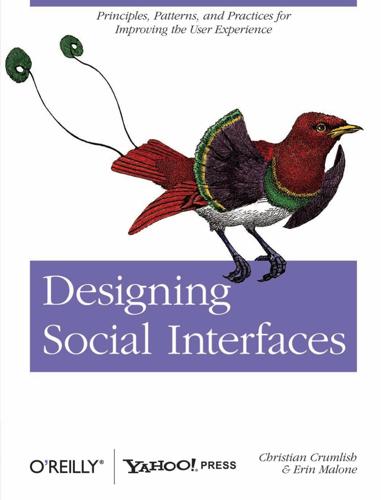
Designing Social Interfaces
by
Christian Crumlish
and
Erin Malone
Published 30 Sep 2009
As seen on Amazon Mechanical Turk (http://www.mturk.com/mturk/welcome) Assignment Zero (http://zero.newassignment.net/) The ESP Game (http://www.cs.cmu.edu/~biglou/ESP.pdf) iStockphoto (http://istockphoto.com) ReCAPTCHA (http://recaptcha.net/) SETI@home (http://setiathome.ssl.berkeley.edu/) Threadless (http://threadless.com) Download at WoweBook.Com 330 Chapter 12: Barnraising Further Reading “Berners-Lee on the read/write web,” BBC News, August 9, 2005, http://news.bbc.co.uk/2/ hi/technology/4132752.stm Cross Cultural Collaboration, http://crossculturalcollaboration.pbwiki.com/ “Deriving Process-driven Collaborative Editing Pattern from Collaborative Learning Flow Patterns,” by Olivera Marjanovic, Hala Skaf-Molli, Pascal Molli, and Claude Godart, http://www.ifets.info/journals/10_1/12.pdf “Edit This Page,” by Dave Winer, http://www.scripting.com/davenet/1999/05/24/editThisPage.html Edit This Page PHP, http://sourceforge.net/projects/editthispagephp/ Paylancers blog, http://paylancers.blogspot.com/ The Power of Many, http://thepowerofmany.com Regulating Prominence: A Design Pattern for Co-Located Collaboration (http://www.ida.liu.se/~matar/coop04arvola-web.pdf) “The Rise of Crowdsourcing,” by Jeff Howe, Wired 14.06, http://www.wired.com/wired/archive/14.06/crowds.html “The Simplest Thing That Could Possibly Work,” by Bill Venners, http://www.artima.com/intv/simplest.html Universal Edit Button, http://universaleditbutton.org/Universal_Edit_Button Wiki Design Principles, http://c2.com/cgi/wiki?WikiDesignPrinciples “The Wiki Way,” by Jon Udell, http://weblog.infoworld.com/udell/2004/10/19.html Wired Crowdsourcing blog, http://crowdsourcing.typepad.com/ Download at WoweBook.Com Chapter 13 Social Media Junkies Unite!
…
. . . . . . . . . . . . . . . . . . . . . . . . . . . . . . . . . . . . . . . . . . . . 289 Synchronous Versus Asynchronous Communication Sign In to Participate Communicating Forums Public Conversation Private Conversation Group Conversation Arguments Flame Wars Vendettas Download at WoweBook.Com 291 292 292 292 296 298 302 304 304 305 xii Contents Sock Puppets Further Reading 305 305 12. Barnraising.. . . . . . . . . . . . . . . . . . . . . . . . . . . . . . . . . . . . . . . . . . . . . . . . . . . . . 307 Collaboration Manage Project Voting Collaborative Editing Edit This Page The Wiki Way 307 309 312 315 319 323 325 330 Crowdsourcing Further Reading 13. Social Media Junkies Unite!.. . . . . . . . . . . . . . . . . . . . . . . . . . . . . . . . . . . . . . . 331 Keeping Up Tuning In Following Filtering Recommendations Social Search Real-Time Search Conversational Search Pivoting Further Reading 331 334 335 335 340 342 343 346 349 350 Part IV.
…
To Andrew Hinton, information philosopher, advanced practitioner, and community leader, for his illumination of the problems of context in these new environments. To Andrius Kuliskaukus and the Minciu Sodas collective, for their contributions to freedom and self-sufficiency around the world, and some crowdsourced thoughts on the value of the public domain as a preferred licensing option. To Derek Powazek, trailblazer of community-oriented design and communication, for his exploration of people as meaning-making machines. To Harjeet S. Gulati, who found our project through the wiki, added a wealth of definitions and other useful contributions there, and then consented to contribute his thoughts on knowledge management in the enterprise.

Exponential: How Accelerating Technology Is Leaving Us Behind and What to Do About It
by
Azeem Azhar
Published 6 Sep 2021
In time, this type of activity garnered a new name: ‘crowdsourcing’. The internet could connect people who needed something done with thousands, perhaps millions, of those with the time and the skill to do it. According to Jeff Howe, the professor of journalism who coined the term, crowdsourcing would unleash ‘the latent talent of the crowd’.47 In these early days, the notion of crowdsourcing had a utopian feel: millions of people working together, perhaps voluntarily, to build some incredible tool like Wikipedia. Within a few years, crowdsourcing platforms had multiplied. Services like Elance and oDesk sprung up for complicated tasks like programming or copywriting; Fiverr and PeoplePerHour were created for tasks that were less complex than programming but more complex than an Amazon HIT.
…
In-built GPS meant that phones always knew where they were – and allowing crowdsourcing platforms to offer up local, highly convenient services. Soon we could order taxis, takeaway food and massages from the comfort of our couches. TaskRabbit, now owned by furniture giant Ikea, will today dispatch someone to help you assemble your new bookcase. Talkspace will help you find a therapist. Wag! will find a walker for your dog. In time, the term ‘crowdsourcing’ – which often referred to unpaid, non-commercial work – gave way to a new term: the ‘gig economy’. This whole new way of working was underpinned by the emerging exponential economy. Crowdsourcing depended on digital platforms.
…
, Wall Street Journal, 1 April 2019 <https://www.wsj.com/articles/will-ai-destroy-more-jobs-than-it-creates-over-the-next-decade-11554156299> [accessed 11 January 2021]. 45 ‘Company Information’, Uber Newsroom Pakistan <https://www.uber.com/en-PK/newsroom/company-info/> [accessed 21 September 2020]. 46 ‘Mechanical Turk: Research in the Crowdsourcing Age’, Pew Research Center: Internet & Technology, 11 July 2016 <https://www.pewresearch.org/internet/2016/07/11/research-in-the-crowdsourcing-age-a-case-study/> [accessed 28 September 2020]. 47 Jeff Howe, ‘The Rise of Crowdsourcing’, Wired, 1 June 2006 <https://www.wired.com/2006/06/crowds/> [accessed 28 September 2020]. 48 Nicole Lyn Pesce, ‘This Chart Shows How Uber Rides Sped Past NYC Yellow Cabs in Just Six Years’, MarketWatch, 9 August 2019 <https://www.marketwatch.com/story/this-chart-shows-how-uber-rides-sped-past-nyc-yellow-cabs-in-just-six-years-2019-08-09> [accessed 7 January 2021]. 49 Kelle Howson et al., ‘Platform Workers, the Future of Work and Britain’s Election’, Media@LSE, 11 December 2019 <https://blogs.lse.ac.uk/medialse/2019/12/11/platform-workers-the-future-of-work-and-britains-election/> [accessed 7 January 2021]. 50 James Manyika et al., Connecting Talent with Opportunity in the Digital Age (McKinsey & Company, 1 June 2015) <https://www.mckinsey.com/featured-insights/employment-and-growth/connecting-talent-with-opportunity-in-the-digital-age> [accessed 6 October 2020]. 51 Neil Munshi, ‘Tech Start-Ups Drive Change for Nigerian Truckers’, Financial Times, 26 August 2019 <https://www.ft.com/content/c6a3d1f2-c27d-11e9-a8e9-296ca66511c9> [accessed 21 September 2020]. 52 ‘Upwork Reports Fourth Quarter and Full Year 2020 Financial Results’, Upwork Inc., 23 February 2021 <https://investors.upwork.com/news-releases/news-release-details/upwork-reports-fourth-quarter-and-full-year-2020-financial> [accessed 21 April 2021]. 53 Lijin Yeo, ‘The U.S.

The Equality Machine: Harnessing Digital Technology for a Brighter, More Inclusive Future
by
Orly Lobel
Published 17 Oct 2022
Rob Davies, “Everything to Play for as Employers Turn to Video Games in Recruitment Drive,” Guardian, Nov. 28, 2015, https://www.theguardian.com/money/2015/nov/28/psychometric-tests-games-recruitment-interview. 31. Meredith Somers, “This CEO Wields Transparency and Openness to Crowdsource Ideas,” Ideas Made to Matter (blog), MIT Sloan School of Management, September 9, 2020, https://mitsloan.mit.edu/ideas-made-to-matter/ceo-wields-transparency-and-openness-to-crowdsource-ideas. 32. Zoe Rohrich, “Why These Companies Are Rethinking the Use of AI in Hiring,” PBS NewsHour, November 26, 2019, https://www.pbs.org/newshour/world/agents-for-change/why-these-companies-are-rethinking-the-use-of-ai-in-hiring. 33.
…
Just like information, knowledge, innovation, and our talent pools more generally, AI and data should be understood as a commons—a shared resource capable of addressing some of the world’s toughest problems: global health and pandemics, world hunger, environmental sustainability and climate change, and poverty and inequality. We should move toward more open-source big data as well as public initiatives to crowdsource data collection for public goals. And we need to incentivize more competition and less concentration in the development and use of new technologies. Competition lowers costs and fuels choice, customizable options, and user-driven preferences. We can create AI that challenges stereotypes. We need to build machines and design robots that subvert long-standing constructions of identity.
…
Earlier studies on the software found that certain algorithms charged with flagging who is likely to reoffend are inherently flawed, labeling Black defendants as future criminals twice as often as white defendants and frequently mislabeling white defendants as “low risk.” One high-profile, much-cited study from 2018 found that COMPAS is no more accurate than predictions by people with no criminal justice expertise. The study looked at 400 online participants on Amazon’s Mechanical Turk who crowdsourced short descriptions of real defendants from a publicly available COMPAS data set. The participants were asked to predict whether the defendants were likely to commit a crime in the future. The study found that the overall accuracy of the lay humans was 62 percent, compared to the 65 percent accuracy of algorithmic COMPAS predictions.12 More recent studies do question these findings, however: one from 2020 argues that the first research wasn’t a good reflection of human judgment in the real world, and that the first study’s experimental setting focused participants’ attention on the most predictive factors and gave them feedback along the way, artificially boosting their results.13 In each of the fifty rounds, participants made a prediction, were informed whether the prediction was correct—that is, received immediate feedback—and then received the next scenario.
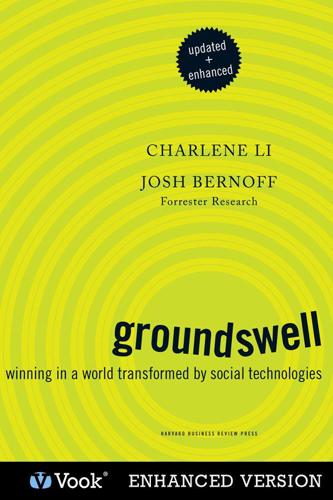
Groundswell: Winning in a World Transformed by Social Technologies
by
Charlene Li
and
Josh Bernoff
Published 23 May 2011
All the brand equity the bank had built up would ebb away, and worse, it would cease to tap into its customers’ innovations and go back to business as usual. a few words about crowdsourcing The Crédit Mutuel story is an example of crowdsourcing—asking the groundswell to provide you with ideas. Crowdsourcing is all the rage right now. It’s especially popular with advertising agencies, which are increasingly asking people to create television ads as part of some sort of contest.8 Frito-Lay’s Doritos ad in the 2007 Super Bowl was crowdsourced.9 It was pretty good, too. Crowdsourcing by itself is not the same as embracing your customers. Crowdsource an ad campaign, and you might save a few bucks on ad production—but you won’t have to do the hard work of changing the way you interact with customers.
…
And Crédit Mutuel, if it keeps going in the same direction, will be a very responsive bank in the future. On the other hand, Frito-Lay probably learned very little from crowdsourcing its Super Bowl Doritos commercial. It’s unlikely to turn over significant parts of its ad creation process to consumers on a regular basis. Its customers are not changing the company’s product development pipeline, supporting each other, or energizing each other in any sustainable way. Crowdsourced ads are a flash in the pan—they tap the groundswell for a moment, rather than move the company in a positive direction. CASE STUDY loblaw: reviews that drive continuous improvement Jim Osborne helped turn a grocery store and its store brand into a hotbed of innovation.
…
It’s especially popular with advertising agencies, which are increasingly asking people to create television ads as part of some sort of contest: The New York Times examined this phenomenon and noted that not only is crowdsourcing commercials sometimes an expensive proposition, but it also leads to expressions of the brand that the company might find less than ideal. See “The High Price of Creating Free Ads” by Louise Story, New York Times, May 26, 2007, visible at http://forr.com/gsw9-8. 9. Frito-Lay’s Doritos ad in the 2007 Super Bowl was crowdsourced: The Frito-Lay’s 2007 Super Bowl ad site is no longer visible. chapter 10 1. Fadra blogs and tweets about her experiences, especially as a mom.

Super Thinking: The Big Book of Mental Models
by
Gabriel Weinberg
and
Lauren McCann
Published 17 Jun 2019
One way to do so is actively to seek out people from different backgrounds to participate. Another way, easily enabled by the internet, is to crowdsource ideas, where you seek (source) ideas quite literally from anyone who would like to participate (the crowd). Crowdsourcing has been effective across a wide array of situations, from soliciting tips in journalism, to garnering contributions to Wikipedia, to solving the real-world problems of companies and governments. For example, Netflix held a contest in 2009 in which crowdsourced researchers beat Netflix’s own recommendation algorithms. Crowdsourcing can help you get a sense of what a wide array of people think about a topic, which can inform your future decision making, updating your prior beliefs (see Bayesian statistics in Chapter 5).
…
While you cannot expect similar results in all situations, Surowiecki explains the key conditions in which you can expect good results from crowdsourcing: Diversity of opinion: Crowdsourcing works well when it draws on different people’s private information based on their individual knowledge and experiences. Independence: People need to be able to express their opinions without influence from others, avoiding groupthink. Aggregation: The entity doing the crowdsourcing needs to be able to combine the diverse opinions in such a way as to arrive at a collective decision. If you can design a system with these properties, then you can draw on the collective intelligence of the crowd.
…
In general, drawing on collective intelligence makes sense when the group’s collective pool of knowledge is greater than what you could otherwise get access to; this helps you arrive at a more intelligent decision than you would arrive at on your own. “The crowd” can help systematically think through various scenarios, get new data and ideas, or simply help improve existing ideas. One direct application of crowdsourcing to scenario analysis is the use of a prediction market, which is like a stock market for predictions. In a simple formulation of this concept, the price of each stock can range between $0 and $1 and represents the market’s current probability of an event taking place, such as whether a certain candidate will be elected.
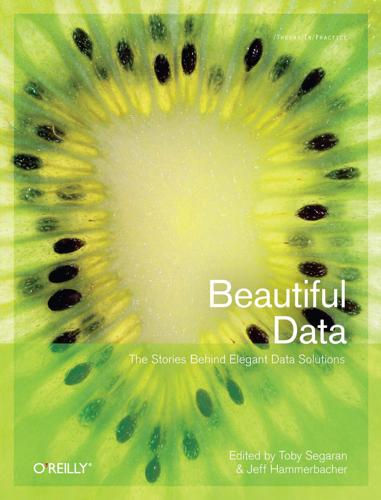
Beautiful Data: The Stories Behind Elegant Data Solutions
by
Toby Segaran
and
Jeff Hammerbacher
Published 1 Jul 2009
He has a PhD in organic chemistry and has published articles and obtained patents in the areas of synthetic and mechanistic chemistry, gene therapy, nanotechnology, and scientific knowledge management. Lukas Biewald is founder and CEO of Dolores Labs, a company making crowdsourcing easy and reliable. Dolores Labs’ blog (http://blog.doloreslabs.com) is full of fun crowdsourcing and data visualization experiments. Prior to Dolores Labs, he worked as a senior scientist at Powerset, and before that he built Yahoo! Japan’s search engine ranking algorithm. He received a BS in math and an MS in computer science from Stanford University, where he 349 Download at Boykma.Com worked in the AI Lab and published two papers on machine learning applications.
…
(author), 323–332 Kimball, Ralph (The Data Warehouse Toolkit), 76 Klump, Valdean (author), 149–165 Koblin, Aaron (author), 149–165 Krumme, Coco (author), 205–217 L Lake Wobegon effect, 217 Lang, Andrew (author), 259–277 language identification of corpus data, 239 “Learning Organization” concept, 78 Lewin, Kurt (“action research” concept), 78 libraries, as Information Platforms, 73 Lidar scanner (see Velodyne Lidar scanner) Lindenbaum, Pierre (author), 259–277 Lindsay, Jeff (Web Hooks concept), 127 Linguistic Data Consortium, 219 location information, representation of for Geograph archive, 95–98 for Oakland Crimespotting project, 174–181 for PEIR system, 8–11 for political data, 330 for sense.us website, 188–194 Luhn, Hans Peter (“A Business Intelligence System”), 75 luxury product, survey for (see customer survey project) M machine translation of corpus data, 240 Madhaven, Jayant (author), 133–147 maps (see location information, representation of) Mars Lander system (see Phoenix Mars Lander system) mastership of records, 60, 61 materialized views, 66 Matlab (data analysis package), 282 Matplotlib (data analysis package), 282 Matsumoto, Yukihiro (Ruby programming language), 89, 98 MECA Optical Microscope (OM) camera, 38 mediator accessing Deep Web using, 135 for social data (see Gnip) Medicare website, 337 message boards, public data available from, 337 Microsoft Azure SDS, 70 Microsoft’s data management stack, 82 Migurski, Michal (author), 167–182 MObStor system, 71 Modest Maps library, 8 Morville, Peter (“findability” concept) motivation considerations for data collection, 21, 30 music video based on data (see Radiohead’s “House of Cards” video) N narrative fallacy, 207 National Center for Biotechnology Information (NCBI) website, 336 natural language corpus data, 219, 240 author identification of, 239 DNA sequencing of, 240 document unshredding of, 240 language identification of, 239 machine translation of, 240 search strategies used for, 241 secret codes in, analysis of, 228–234 spam detection in, 239 spelling correction of, 234–239 word segmentation analysis of, 221–227 NCBI (National Center for Biotechnology Information) website, 336 INDEX Download at Boykma.Com 361 Neylon, Cameron (author), 259–277 normalization of social data, 128–131 Norvig, Peter (author), 219–242 Num Py (data analysis package), 282 O Oakland Crimespotting project, 167 data collection from CrimeWatch, 169–174 visualizing data online, 174–181 Oakland CrimeWatch application, 169–174 OAuth, 130 O’Connor, Brendan (author), 279–301 Open Notebook Science, 261 Optical Microscope (OM) camera, 38 P P2P protocol, 121 partitioning data, 56 patterns, people’s skill at recognizing, 206 PEIR (Personal Environmental Impact Report) system, 2 data collection for, 3, 4 data processing for, 6 data visualization for, 8–12 database design for, 5 participating in, 15 sharing data from, 12 perception considerations for data collection, 20–21 persistent context, 115 personal data collection of, 3–5 visualization of, 7–14 Personal Environmental Impact Report (see PEIR system) Phoenix Mars Lander system, 35–40 cameras (imagers) for, 38, 53 computer used for, 37 data collection for, 37 data packing for, 40 data processing for, 42, 46–51, 53 data storage for, 43–46 data transfer for, 37, 52 image compression for, 50 websites about, 54 photographs (see Geograph archive; Phoenix Mars Lander system) planning fallacy, 212 PNUTS system, 56 comparison with Azure SDS, 70 comparison with BigTable system, 68 comparison with Cassandra system, 70 comparison with Dynamo system, 69 geo-replication of data in, 56, 58 362 partitioning data for scale-out, 56, 62 querying data, 64–67 updating data, 57–64 political data, 323 age, effect on vote choice, 328 graphics used for, 323 mapping partisanship in Pennsylvania, 330 predicting vote choice, 326 redistricting, effect on partison bias, 324 supreme court nominees, senate voting patterns on, 328 polling, 123 Poole, David (author), 303–321 Popper, Karl (statement about falsifiability), 209, 213 predictions, difficulty in making from data, 213 privacy, with “data finds data” systems, 118 probabilistic model, 221 probability, 215, 220 public data, sources of, 336 Purves, Ross (research using Geograph), 92 PyHive framework, 81 Q Quants, as Data Scientists, 84 R R (data analysis package), 282, 300 RAC (Robotic Arm Camera), 38 Radiohead’s “House of Cards” video, 149 data capture equipment for, 150–154 data capturing process for, 155–159, 164 data processing for, 160 data sample for, 154 launching, 161–164 Ramakrishnan, Raghu (author), 55–71 range-partitioned data, 62 rate limiting, used with polling, 123 raw data, providing to users application for querying live data, 265 collecting crowdsourced data, 260 further experiments suggested by, 271–274 integrating data with other data resources, 266 problems created by, 275–277 reasons for, 259, 274, 276 representing data online, 263–271 self-describing data formats for, 269 unique identifiers required for, 263, 269 validating crowdsourced data, 262 Raynard, Robert (Secret Code Breaker), 233 RDF (Resource Description Framework), 269 INDEX Download at Boykma.Com real estate sales, analysis of (see housing market analysis) record-level mastership, 61 relational model for data, 76 replication of DNA, 247 geo-replication of data, 56, 58 reporting on data results (see data visualization) REpresentational State Transfer (REST), 122 Resource Description Framework (RDF), 269 resources (see books and publications; website resources) REST (REpresentational State Transfer), 122 Rice algorithm for compression, 51 Robotic Arm Camera (RAC), 38 roulette wheel example of “data finds data”, 107–111 S San Francisco housing market analysis (see housing market analysis) Sanger Institute’s sequencing platform for DNA data, 254–257 SAS (data analysis package), 282 scale-out feature for data storage, 56 Sci Py (data analysis package), 282 search engines, accessing Deep Web from (see surfacing) search strategies for corpus data, 241 Secret Code Breaker (Raynard), 233 secret codes in corpus data, analyzing, 228–234 Securities and Exchange Commission website, 336 Segaran, Toby (author), 335–348 semantically reconciled and relationshipaware directories, 114 semantically reconciled directories, 114 Senge, Peter (The Fifth Discipline), 78 sense.us website, 184, 186 Birthplace Voyager graph, 191 census data used for, 186–188 collaboration features of, 194–199, 201 doubly linked discussions, 195 field tests of, 199–203 Job Voyager graph, 191 pointing with graphical annotations, 196 population pyramid, 192 scatter plot display, 192 social navigation, 198 state map, 192 views, collecting and linking, 197 views, sharing, 194 visualization of data, 188–194 Sequencescape tools, 254 sequencing platform for DNA data, 254–257 shift ciphers, 228 Singh, Simon (The Code Book), 230 social data, 119 business value of, 129–131 formats for, current, 121 normalizing, 128–131 public versus private data, 130 sharing and collaborating on, 194–199, 201 transporting, APIs for, 122–128 transporting, current methods for, 120 visualization and analysis of, 184, 199 visualization of, 188–194 social networks, public data available on, 336 social stereotypes, researching, 279 clustering types of people, 295–300 data analysis, 282, 290–294 gendered words, determining, 294 preprocessing the data, 280 presentation of data results, 285–290 Sokol, Lisa (author), 105–118 space missions (see Phoenix Mars Lander system) spam detection in corpus data, 239 spelling correction of corpus data, 234–239 SPSS (data analysis package), 282 Srivastava, Utkarsh (author), 55–71 Stata (data analysis package), 282 Stereo Surface Imager (SSI), 38 stereotypes (see social stereotypes, researching) storage cloud, 56, 70 (see also PNUTS system) stories created from data, 208, 211 stylometry of corpus data, 239 substitution ciphers in corpus data, analyzing, 228–234 surfacing, 135, 136 challenges of, 136 informative test for, 136, 142 inputs for, selecting, 140, 144–146 queries for, selecting, 138–144 query templates for, 139, 141, 143 survey project (see customer survey project) Swayne, Deborah F.
…
Conclusion 208 217 NATURAL LANGUAGE CORPUS DATA by Peter Norvig 219 Word Segmentation Secret Codes Spelling Correction Other Tasks Discussion and Conclusion 221 228 234 239 240 LIFE IN DATA: THE STORY OF DNA by Matt Wood and Ben Blackburne 243 DNA As a Data Store DNA As a Data Source Fighting the Data Deluge The Future of DNA 243 250 253 257 BEAUTIFYING DATA IN THE REAL WORLD by Jean-Claude Bradley, Rajarshi Guha, Andrew Lang, Pierre Lindenbaum, Cameron Neylon, Antony Williams, and Egon Willighagen 259 The Problem with Real Data Providing the Raw Data Back to the Notebook Validating Crowdsourced Data Representing the Data Online Closing the Loop: Visualizations to Suggest New Experiments Building a Data Web from Open Data and Free Services 259 260 262 263 271 274 SUPERFICIAL DATA ANALYSIS: EXPLORING MILLIONS OF SOCIAL STEREOTYPES by Brendan O’Connor and Lukas Biewald 279 Introduction Preprocessing the Data Exploring the Data Age, Attractiveness, and Gender Looking at Tags Which Words Are Gendered?
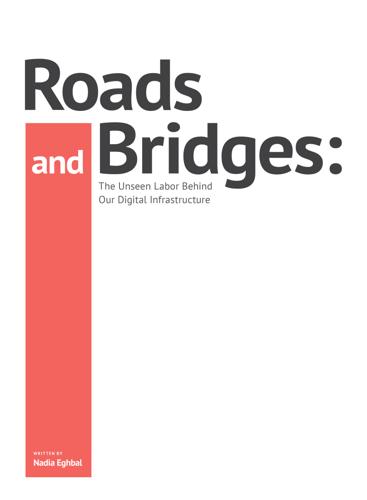
Roads and Bridges
by
Nadia Eghbal
Before open source software existed, technology firms treated software like any other paid product: a team of employees built new software internally, then sold it to the public. While this meant software had a clear business model, it also came with increased development costs. Proprietary software requires a full-time paid team to support its development, including developers, designers, marketers, and lawyers. It’s far cheaper to simply crowdsource software, built and maintained by a community of volunteer developers. Open source is easier to distribute. People are more likely to adopt software that is free to use and modify than software that cost s hundreds of dollars to license and was developed in a black box. Not only will developers want to use it for free, but they might be inclined to tell their friends to use it as well, amplifying the effects of its distribution.
…
Developers could use Swift to write software for Apple devices, but not contribute to the language’s core development. In 2015, Swift was open sourced under the Apache License 2.0.[49] The incentives for a company to maintain an open source project are numerous. Opening up a project to the public can mean less work for the company, which is essentially crowdsourcing improvements. It builds goodwill and awareness among developers, who might then be incentivized to use other company resources to build things. Having an active community of developers creates a recruiting pipeline for talent. And sometimes, open sourcing a project helps a company strengthen their user base and brand, or even drown out competition.
…
Several months later, Atwood followed up with Solara to ask how he decided to spend the donation. Solara replied that the grant money was still untouched. It’s not easy to use it….What would you suggest? Atwood wrote that he was crushingly disappointed by the response. [73] The decentralized nature of open source has made it what it is: crowdsourced software that anyone can build, share and contribute to. But when it comes to discussing organizational needs or sustainability, it can be difficult to make authoritative decisions. These transitions to long-term sustainability can be drawn out and painful. One of the more prominent examples is the Linux kernel, an open source project used in many operating systems worldwide, including Android and Chrome OS.

My Glorious Defeats: Hacktivist, Narcissist, Anonymous: A Memoir
by
Barrett Brown
Published 8 Jul 2024
Some methods were more sophisticated, involving outright hacking; a raid of Turner’s email account yielded proof that he’d served as an FBI informant, confirmation of which cut him off from his white nationalist allies—as well as from the FBI itself, which now had no use for him. The campaign against Turner included many of the elements that would come into play on a more global stage in the years to come: the takeover and vandalism of enemy websites so as to prompt press attention to some issue; crowdsourced opposition research; the ability to mobilize huge numbers of people with a wide range of skills in short amounts of time and to provide opportunities for anyone with a good idea to get it aired and implemented within moments. It also left many with a taste for blood. And due to the accident of this unusually high-profile raid having targeted a white supremacist figure, quite a few outsiders got the impression that Anonymous was a sort of well-intentioned activist group.
…
Indeed, some of its key aspects had already been trimmed back lest they draw heat; 4chan’s founder, a kid who went by the name Moot, had felt the need to ban the “raids” that had built /b/’s reputation and which ranged in nature from generally harmless group forays into various online communities with the intention of causing amusing havoc to more consequential crowd-sourced mobs against individuals who’d somehow gotten their attention. What these raids involved, and how they were interpreted by outsiders, may be gleaned from the first notable public account of Anonymous. In July 2007, the Los Angeles Fox News affiliate ran a story on a nefarious group of “computer hackers”—promoted elsewhere in the segment to “hackers on steroids”—who had been “treating the web like a real-life video game: sacking websites, invading MySpace accounts, disrupting innocent people’s lives,” these apparently being the kinds of things that one does in video games.
…
And the forty simultaneous armed raids the FBI had conducted a week prior on suspected participants in Anonymous’s retaliatory DDoS attack on PayPal, with further arrests in the U.K., seemed to have given certain of my old associates the jitters. But complications could be managed. I’d just announced a measure whereby the majority of Project PM members who were disinclined to follow me into an uncertain future of bleeding-edge global insurrection could continue working on our various crowdsourced philanthropy and media-reform projects under delegated leadership; I’d appointed one of our more prominent and straitlaced members, an NGO type with the Mozilla Foundation who also happened to be quite justifiably furious with me, to run all that under an entirely separate outfit. All official ties thus severed, the more militant among us could proceed to assist Anonymous in the revolutionary support measures that needed attention right then.
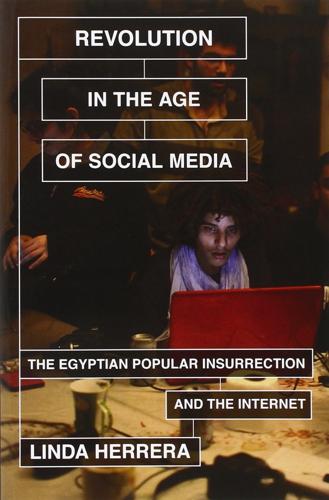
Revolution in the Age of Social Media: The Egyptian Popular Insurrection and the Internet
by
Linda Herrera
Published 14 Apr 2014
There were also attempts to penetrate the most popular online chat rooms of young Arabs, but this proved far more difficult due to the atomized and interactive nature of chat rooms. Chat rooms, like social media after it, do not lend themselves to packaged, top-down messaging in the style of traditional media, but rely on people-to-people crowdsourcing. Christopher Ross, Special Coordinator for Public Diplomacy at the State Department, describes the difficulty of working in chat rooms: There are many, many chat rooms in which the Middle East, and U.S. policy towards the Middle East, are openly discussed. Many of their participants are from the Middle East.
…
Contact the media—print, radio, television, online—whenever possible to tell your story. If a sympathetic foreign dignitary or organization happens to visit, try to meet with them, or organize a protest to coincide with their arrival, which can get you some international press attention. Through crowdsourcing, the page started formulating its media plan as early as June 14, four days into the launch. The admin wrote: Hey everyone, tonight our plan is for all of us to call the talk shows. Please, can people send us the telephone numbers so we can use these in our [media] plan? We want you to find the numbers of all the talk shows in Egypt.
…
The goal was to create an “internet government” by the people to monitor security forces and police at three main sites: checkpoints in the streets, police stations, and public universities. The plan was to create a Twitter hashtag that any citizen with an internet connection could use to tweet and report their encounter with the police, whether good or bad. The admins of the site would use a crowdsourcing mapping application to monitor where high numbers of violations were taking place. Police stations that respected people and the law would be rewarded with good ratings, whereas the abusers would be publicized and subject to citizen action. As plans were underway for Police Watch, the Khaled Said incident took place and diverted his energies.
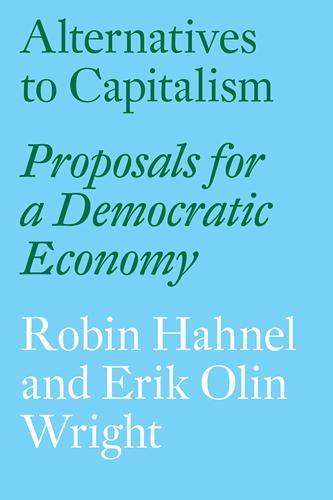
Alternatives to Capitalism
by
Robin Hahnel
and
Erik Olin Wright
But there is also a practical problem with Erik’s suggestions about risk and innovation when applied in the context of a participatory economy. Even if those who received start-up funds from crowd-sourcing agreed that the enterprise would be run according to participatory economic principles, and even if investors received no return on their investment, the new enterprise would have to obtain the inputs it needs to operate through the participatory planning procedure. And it can’t do this without being certified as “credible.” A worker council can’t buy its inputs with funds raised through crowd-sourcing in a participatory economy. I think, instead, what is needed are multiple ways for groups who want to start up new enterprises to demonstrate their credibility so they can participate in the planning procedure.
…
Consider the following example: Suppose a group of people have an idea for some new product but they cannot convince the relevant council or federation to provide them the needed capital equipment and raw materials to produce it. There is just too much skepticism about the viability of the project. An alternative way of funding the project could be through a form of crowdsourcing finance along the lines of Kickstarter. The workers involved would post a description of the project online and explain their specific needs for material inputs. They appeal to people (in their role of consumers) to allocate part of their annual consumption allowances to the project. Consumers might decide, for example, to put in extra hours at work in order to acquire the extra funds needed for their contribution, or they might just decide to consume less of some discretionary part of their consumption bundle.
…
But potential contributors to the project might also only be interested in contributing if they got a positive return on their “investment”. This would look much closer to market investment. The question, then, is should such practices be prohibited in a participatory economy? Especially if a positive return on crowd-sourced investments is allowed, these projects would constitute a kind of quasi-market niche in the participatory economy. Robin argues that new worker councils should be prohibited from raising capital outside of the planning process. Here is what he says about new startup worker councils: In a participatory economy new worker councils bid for the resources they need to get started in the participatory planning process.
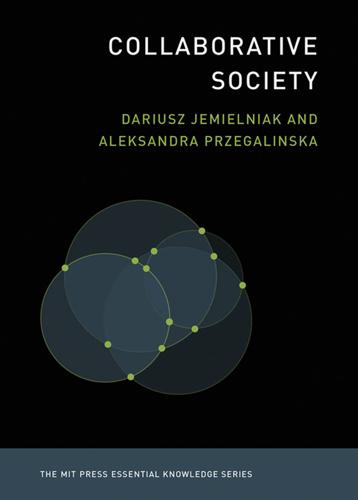
Collaborative Society
by
Dariusz Jemielniak
and
Aleksandra Przegalinska
Published 18 Feb 2020
If we understand self-tracking as an attempt to trust a solid database and its associated devices more than the expertise of professionals—such as the doctors, trainers, and diet specialists related to our healthcare examples—we see similarities with the hacktivism movement that expresses fundamental distrust toward the knowledge distribution system. Particularly in the case of diet tracking, users provide responses in many cases via crowdsourcing or collective feedback from other users and professionals.53 What’s more, crowdsourced feedback is an important self-commitment mechanism for helping to lose weight,54,55 Hacktivism also shares several common features with the DIY movement, particularly biohacking, which advocates for the kind of mental and physical self-enhancement we described in chapter 6.
…
Such use, which may deter readers from accessing the site if the Google sidebar supplied sufficient information, significantly limits not only Wikipedia’s ability to raise funds, but also to attract new users. Introducing new users is essential to the site for several reasons: because only a typically small fraction of Wikipedia readers volunteer to write and edit its entries, and there is a natural burnout; and because volunteer engagement in crowdsourced movements escalates slowly, through gradually increased participation.8 Overall, commercial enterprises adapted to the free/open source and open collaboration environment by taking advantage of them rather than giving much back, or by sharing whatever benefits they received as a result of using the openly developed goods.
…
For instance, consider the L’Atelier Paysan and Farmhack communities that create agricultural machines; the Wikihouse that aims at “democratizing” the construction of sustainable, resource-light dwellings; the OpenBionics project that develops designs for robotic and bionic devices; the AbilityMate that produces ankle foot orthoses; or the RepRap that creates designs for 3D printers. 7. M. M. Appleyard and H. W. Chesbrough, “The Dynamics of Open Strategy: From Adoption to Reversion.” Long Range Planning 50 (2017): 310–321. 8. C. B. Jackson, C. Østerlund, G. Mugar, K. D. Hassman, and K. Crowston, “Motivations for Sustained Participation in Crowdsourcing: Case Studies of Citizen Science on the Role of Talk,” in 48th Hawaii International Conference on System Sciences (2015): 1624–1634. 9. Even some of the critics of for-profit peer-to-peer platforms emphasize that they rely on sharing, and consider Uber or Airbnb to be the good examples of “sharing economy.”

The Secret War Between Downloading and Uploading: Tales of the Computer as Culture Machine
by
Peter Lunenfeld
Published 31 Mar 2011
Formerly at <http://www.jennyeverywhere.com>; now available at <http://theshifterarchive.com>. 14 . This neologism is credited to journalist Jeff Howe in his article “The Rise of Crowdsourcing” Wired 14.06 (June 2006): 176–183. <http://www.wired.com/ wired/archive/14.06/crowds.html>. See his book, Crowdsourcing: Why the Power of the Crowd Is Driving the Future of Business (New York: Crown Business, 2008) and blog, http://crowdsourcing.typepad.com/. His “white paper” version of the definition of crowdsourcing specifically foregrounds the economic relationships: “Crowdsourcing is the act of taking a job traditionally performed by a designated agent (usually an employee) and outsourcing it to an undefined, generally large group of people in the form of an open call.” 15 .
…
According to the Web site where she was born and lives her (many) lives: “The character of Jenny Everywhere is available for use by anyone, with only one condition. This paragraph must be included in any publication involving Jenny Everywhere, in order that others may use this property as they wish. All rights reversed.”13 The openendedness, the unfinish of Jenny Everywhere, distinguishes it from the similar neologism “crowdsourcing.” Crowdsourcing is also about the deployment of multiple, online “eyeballs,” but the concept’s link to the “outsourcing” of globalization ties it tightly to the economic realm.14 Imagination, on the other hand, encompasses but is not limited to those projects that can be monetized, so it is less “problem solving” than “situation enabling” that is needed.
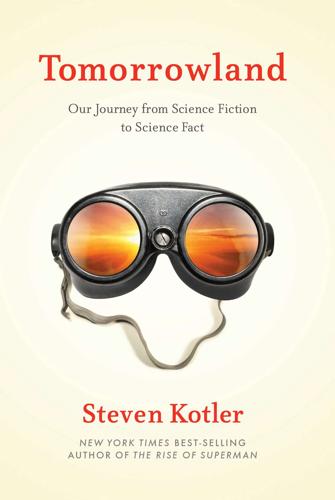
Tomorrowland: Our Journey From Science Fiction to Science Fact
by
Steven Kotler
Published 11 May 2015
It’s about humans who have the audacity to join in nature’s creative process, in her quest for more than mere self-improvement, in her quest for self reinvention. Radical self-reinvention.” 1. This is how the future arrived. It began innocuously. In the early 2000s, businesses started to realize that highly skilled jobs formerly performed in-house, by a single employee, could more efficiently be crowdsourced to a larger group via the Internet. Initially, offerings were simple. We crowdsourced the design of T-shirts (Threadless.com) and the writing of encyclopedias (Wikipedia.com), but it didn’t take long for the trend to start making inroads into the harder sciences. Pretty soon, the hunt for extraterrestrial life, the development of self-driving cars, and the folding of enzymes into new and novel proteins were being done this way.
…
Pretty soon, the hunt for extraterrestrial life, the development of self-driving cars, and the folding of enzymes into new and novel proteins were being done this way. With the fundamental tools of genetic manipulation — tools that cost millions of dollars not ten years ago — dropping precipitously in price, the crowdsourced design of biological agents was just the next logical step. In 2008, casual DNA design competitions with small prizes arose; then, in 2011, with the launch of GE’s $100 million cancer challenge, the field moved onto serious contests. By early 2015, as personalized gene therapies for end-stage cancer became medicine’s bleeding edge, viral design sites began to appear where people could upload information about their disease, and virologists could post designs for a customized cure.
…
Iraqi insurgents subsequently repurposed Skygrabber — Russian software developed to steal satellite television and available for $29.95 — to intercept the video feeds of US predator drones, giving them the information needed to monitor and evade American military operations. Lately, organized crime has even taken up crowdsourcing, outsourcing areas of their illegal operations — printing up fake credit cards, money laundering, even murder — to those with greater expertise. With the anonymous nature of the online crowd, this development makes it all but impossible for law-enforcement to track these efforts. Added together, the historical data is clear: Whenever novel technologies enter the market, illegitimate uses quickly follow legitimate ones.
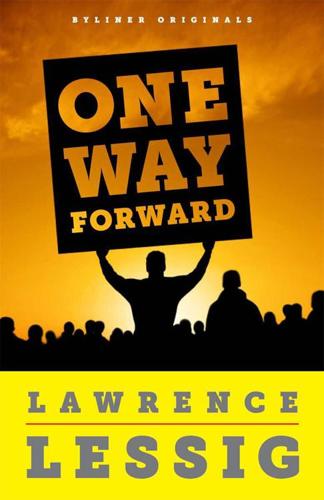
One Way Forward: The Outsider's Guide to Fixing the Republic
by
Lawrence Lessig
Published 12 Feb 2012
Both fueled irresponsible monetary and banking policy and, eventually, economic collapse. So the citizens of Iceland launched the most ambitious crowdsourced-sovereignty project in modern history. As a first step, a network of private grassroots organizations called the Anthill gathered a statistically significant portion of the nation to brainstorm a vision for the country. This “National Assembly” of more than fifteen hundred Icelandic citizens used open-source principles to “energize the wisdom of the population,” as it was promoted, and “to crowdsource a socio-economic political manifesto.”45 The idea, according to the assembly’s architect, was to “focus on the process.
…
They had no idea what this was about. … The pros, when we made the mistake of consulting them, would warn very very strongly, “Do not just send volunteers out to do this work.” But, of course, volunteers became the lifeblood of this new genre of political movement. They constituted the energy in “crowdsourced” politics, and they defined its power. MoveOn’s wave has repeated itself again and again in the decade or so since. Not just on the tech-enabled Left but also on the traditional Left (Obama) and then on the Right (the Tea Party), then on the Gen X/millennial Left (Occupy Wall Street), and now in the unaligned Internet (the Wikipedia-driven anti-SOPA/PIPA campaign).
…
The National Assembly set the stage for the next extraordinary step of popular sovereignty. In June 2010, the Icelandic parliament passed the Act on a Constitutional Assembly, delegating the “intensely legalistic task” of writing a constitution to a group of citizens acting in a constitutional council. That council then convened a National Forum in November 2010, which “crowdsourced the norms and values of the population of 21st century Iceland,” through a series of questions and interviews. Then, building on the results from that survey and the work of the 2009 assembly, the forum divided citizens into groups focused upon particular themes. At the same time, the council initiated elections to a twenty-five-seat drafting commission, which would have ultimate responsibility for drafting a constitution.
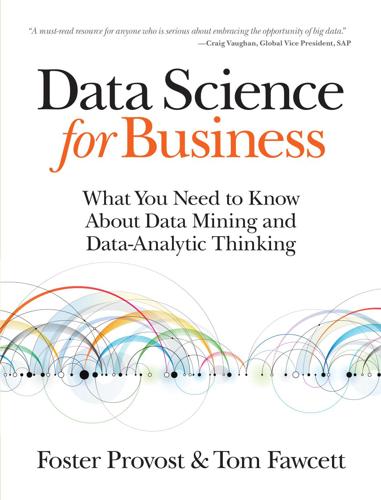
Data Science for Business: What You Need to Know About Data Mining and Data-Analytic Thinking
by
Foster Provost
and
Tom Fawcett
Published 30 Jun 2013
If we apply our general framework of considering the costs and benefits in data science projects explicitly, it leads us to new thinking about investing in data. Final Example: From Crowd-Sourcing to Cloud-Sourcing The connectivity between businesses and “consumers” brought about by the Internet has changed the economics of labor. Web-based systems like Amazon’s Mechanical Turk and oDesk (among others) facilitate a type of crowd-sourcing that might be called “cloud labor”—harnessing via the Internet a vast pool of independent contractors. One sort of cloud labor that is particularly relevant to data science is “micro-outsourcing”: the outsourcing of large numbers of very small, well-defined tasks.
…
as craft, Superior Data Scientists as strategic asset, Data and Data Science Capability as a Strategic Asset–Data and Data Science Capability as a Strategic Asset baseline methods of, Summary behavior predictions based on past actions, Example: Hurricane Frances Big Data and, Data Processing and “Big Data”–Data Processing and “Big Data” case studies, examining, Examine Data Science Case Studies classification modeling for issues in, Generalizing Beyond Classification cloud labor and, Final Example: From Crowd-Sourcing to Cloud-Sourcing–Final Example: From Crowd-Sourcing to Cloud-Sourcing customer churn, predicting, Example: Predicting Customer Churn data mining about individuals, Privacy, Ethics, and Mining Data About Individuals–Privacy, Ethics, and Mining Data About Individuals data mining and, The Ubiquity of Data Opportunities, Data Mining and Data Science, Revisited–Data Mining and Data Science, Revisited data processing vs., Data Processing and “Big Data”–Data Processing and “Big Data” data science engineers, Deployment data-analytic thinking in, Data-Analytic Thinking–Data-Analytic Thinking data-driven business vs., Data Processing and “Big Data” data-driven decision-making, Data Science, Engineering, and Data-Driven Decision Making–Data Science, Engineering, and Data-Driven Decision Making engineering, Data Science, Engineering, and Data-Driven Decision Making–Data Science, Engineering, and Data-Driven Decision Making engineering and, Chemistry Is Not About Test Tubes: Data Science Versus the Work of the Data Scientist evolving uses for, From Big Data 1.0 to Big Data 2.0–From Big Data 1.0 to Big Data 2.0 fitting problem to available data, Changing the Way We Think about Solutions to Business Problems–Changing the Way We Think about Solutions to Business Problems fundamental principles, The Ubiquity of Data Opportunities history, Machine Learning and Data Mining human interaction and, What Data Can’t Do: Humans in the Loop, Revisited–What Data Can’t Do: Humans in the Loop, Revisited human knowledge and, What Data Can’t Do: Humans in the Loop, Revisited–What Data Can’t Do: Humans in the Loop, Revisited Hurricane Frances example, Example: Hurricane Frances learning path for, Superior Data Scientists limits of, What Data Can’t Do: Humans in the Loop, Revisited–What Data Can’t Do: Humans in the Loop, Revisited mining mobile device data example, Applying Our Fundamental Concepts to a New Problem: Mining Mobile Device Data–Applying Our Fundamental Concepts to a New Problem: Mining Mobile Device Data opportunities for, The Ubiquity of Data Opportunities–The Ubiquity of Data Opportunities principles, Data Science, Engineering, and Data-Driven Decision Making, Business Problems and Data Science Solutions privacy and ethics of, Privacy, Ethics, and Mining Data About Individuals–Privacy, Ethics, and Mining Data About Individuals processes, Data Science, Engineering, and Data-Driven Decision Making software development vs., A Firm’s Data Science Maturity structure, Machine Learning and Data Mining techniques, Data Science, Engineering, and Data-Driven Decision Making technology vs. theory of, Chemistry Is Not About Test Tubes: Data Science Versus the Work of the Data Scientist–Chemistry Is Not About Test Tubes: Data Science Versus the Work of the Data Scientist understanding, The Ubiquity of Data Opportunities, Data Processing and “Big Data” data science maturity, of firms, A Firm’s Data Science Maturity–A Firm’s Data Science Maturity data scientists academic, Attracting and Nurturing Data Scientists and Their Teams as scientific advisors, Attracting and Nurturing Data Scientists and Their Teams attracting/nurturing, Attracting and Nurturing Data Scientists and Their Teams–Attracting and Nurturing Data Scientists and Their Teams evaluating, Superior Data Scientists–Superior Data Scientists managing, Superior Data Science Management–Superior Data Science Management Data Scientists, LLC, Attracting and Nurturing Data Scientists and Their Teams data sources, Evaluation, Baseline Performance, and Implications for Investments in Data data understanding, Data Understanding–Data Understanding expected value decomposition and, From an Expected Value Decomposition to a Data Science Solution–From an Expected Value Decomposition to a Data Science Solution expected value framework and, The Expected Value Framework: Structuring a More Complicated Business Problem–The Expected Value Framework: Structuring a More Complicated Business Problem data warehousing, Data Warehousing data-analytic thinking, Data-Analytic Thinking–Data-Analytic Thinking and unbalanced classes, Problems with Unbalanced Classes for business strategies, Thinking Data-Analytically, Redux–Thinking Data-Analytically, Redux data-driven business data science vs., Data Processing and “Big Data” understanding, Data Processing and “Big Data” data-driven causal explanations, Data-Driven Causal Explanation and a Viral Marketing Example–Data-Driven Causal Explanation and a Viral Marketing Example data-driven decision-making, Data Science, Engineering, and Data-Driven Decision Making–Data Science, Engineering, and Data-Driven Decision Making benefits, Data Science, Engineering, and Data-Driven Decision Making discoveries, Data Science, Engineering, and Data-Driven Decision Making repetition, Data Science, Engineering, and Data-Driven Decision Making database queries, as analytic technique, Database Querying–Database Querying database tables, Models, Induction, and Prediction dataset entropy, Example: Attribute Selection with Information Gain datasets, Models, Induction, and Prediction analyzing, Introduction to Predictive Modeling: From Correlation to Supervised Segmentation attributes of, Overfitting in Mathematical Functions cross-validation and, From Holdout Evaluation to Cross-Validation limited, From Holdout Evaluation to Cross-Validation Davis, Miles, Example: Jazz Musicians, Example: Jazz Musicians Deanston single malt scotch, Understanding the Results of Clustering decision boundaries, Visualizing Segmentations, Classification via Mathematical Functions decision lines, Visualizing Segmentations decision nodes, Supervised Segmentation with Tree-Structured Models decision stumps, Evaluation, Baseline Performance, and Implications for Investments in Data decision surfaces, Visualizing Segmentations decision trees, Supervised Segmentation with Tree-Structured Models decision-making, automatic, Data Science, Engineering, and Data-Driven Decision Making deduction, induction vs., Models, Induction, and Prediction Dell, Data preparation, Achieving Competitive Advantage with Data Science demand, local, Example: Hurricane Frances dendrograms, Hierarchical Clustering, Hierarchical Clustering dependent variables, Models, Induction, and Prediction descriptive attributes, Data Mining and Data Science, Revisited descriptive modeling, Models, Induction, and Prediction Dictionary of Distances (Deza & Deza), * Other Distance Functions differential descriptions, * Using Supervised Learning to Generate Cluster Descriptions Digital 100 companies, Data-Analytic Thinking Dillman, Linda, Data Science, Engineering, and Data-Driven Decision Making dimensionality, of nearest-neighbor reasoning, Dimensionality and domain knowledge–Dimensionality and domain knowledge directed marketing example, Targeting the Best Prospects for a Charity Mailing–A Brief Digression on Selection Bias discoveries, Data Science, Engineering, and Data-Driven Decision Making discrete (binary) classifiers, ROC Graphs and Curves discrete classifiers, ROC Graphs and Curves discretized numeric variables, Selecting Informative Attributes discriminants, linear, Linear Discriminant Functions discriminative modeling methods, generative vs., Summary disorder, measuring, Selecting Informative Attributes display advertising, Example: Targeting Online Consumers With Advertisements distance functions, for nearest-neighbor reasoning, * Other Distance Functions–* Other Distance Functions distance, measuring, Similarity and Distance distribution Gaussian, Regression via Mathematical Functions Normal, Regression via Mathematical Functions distribution of properties, Selecting Informative Attributes Doctor Who (television show), Example: Evidence Lifts from Facebook “Likes” document (term), Representation domain knowledge data mining processes and, Dimensionality and domain knowledge nearest-neighbor reasoning and, Dimensionality and domain knowledge–Dimensionality and domain knowledge domain knowledge validation, Associations Among Facebook Likes domains, in association discovery, Associations Among Facebook Likes Dotcom Boom, Results, Formidable Historical Advantage double counting, Costs and benefits draws, statistical, * Logistic Regression: Some Technical Details E edit distance, * Other Distance Functions, * Other Distance Functions Einstein, Albert, Conclusion Elder Research, Attracting and Nurturing Data Scientists and Their Teams Ellington, Duke, Example: Jazz Musicians, Example: Jazz Musicians email, Why Text Is Important engineering, Chemistry Is Not About Test Tubes: Data Science Versus the Work of the Data Scientist, Business Understanding engineering problems, business problems vs., Other Data Science Tasks and Techniques ensemble method, Bias, Variance, and Ensemble Methods–Bias, Variance, and Ensemble Methods entropy, Selecting Informative Attributes–Selecting Informative Attributes, Selecting Informative Attributes, Example: Attribute Selection with Information Gain, Summary and Inverse Document Frequency, * The Relationship of IDF to Entropy change in, Selecting Informative Attributes equation for, Selecting Informative Attributes graphs, Example: Attribute Selection with Information Gain equations cosine distance, * Other Distance Functions entropy, Selecting Informative Attributes Euclidean distance, Similarity and Distance general linear model, Linear Discriminant Functions information gain (IG), Selecting Informative Attributes Jaccard distance, * Other Distance Functions L2 norm, * Other Distance Functions log-odds linear function, * Logistic Regression: Some Technical Details logistic function, * Logistic Regression: Some Technical Details majority scoring function, * Combining Functions: Calculating Scores from Neighbors majority vote classification, * Combining Functions: Calculating Scores from Neighbors Manhattan distance, * Other Distance Functions similarity-moderated classification, * Combining Functions: Calculating Scores from Neighbors similarity-moderated regression, * Combining Functions: Calculating Scores from Neighbors similarity-moderated scoring, * Combining Functions: Calculating Scores from Neighbors error costs, ROC Graphs and Curves error rates, Plain Accuracy and Its Problems, Error rates errors absolute, Regression via Mathematical Functions computing, Regression via Mathematical Functions false negative vs. false positive, Evaluating Classifiers squared, Regression via Mathematical Functions estimating generalization performance, From Holdout Evaluation to Cross-Validation estimation, frequency based, Probability Estimation ethics of data mining, Privacy, Ethics, and Mining Data About Individuals–Privacy, Ethics, and Mining Data About Individuals Euclid, Similarity and Distance Euclidean distance, Similarity and Distance evaluating models, Decision Analytic Thinking I: What Is a Good Model?
…
–Summary baseline performance and, Evaluation, Baseline Performance, and Implications for Investments in Data–Evaluation, Baseline Performance, and Implications for Investments in Data classification accuracy, Plain Accuracy and Its Problems–Generalizing Beyond Classification confusion matrix, The Confusion Matrix–The Confusion Matrix expected values, A Key Analytical Framework: Expected Value–Costs and benefits generalization methods for, Generalizing Beyond Classification–Generalizing Beyond Classification procedure, Flaws in the Big Red Proposal evaluating training data, Holdout Data and Fitting Graphs evaluation in vivo, Evaluation purpose, Evaluation evaluation framework, Evaluation events calculating probability of, Combining Evidence Probabilistically–Combining Evidence Probabilistically independent, Joint Probability and Independence–Joint Probability and Independence evidence computing probability from, Bayes’ Rule, Bayes’ Rule determining strength of, Example: Targeting Online Consumers With Advertisements likelihood of, Applying Bayes’ Rule to Data Science strongly dependent, Advantages and Disadvantages of Naive Bayes evidence lift Facebook “Likes” example, Example: Evidence Lifts from Facebook “Likes”–Example: Evidence Lifts from Facebook “Likes” modeling, with Naive Bayes, A Model of Evidence “Lift”–A Model of Evidence “Lift” eWatch/eBracelet example, Co-occurrences and Associations: Finding Items That Go Together–Co-occurrences and Associations: Finding Items That Go Together examining clusters, Understanding the Results of Clustering examples, Models, Induction, and Prediction analytic engineering, Targeting the Best Prospects for a Charity Mailing–From an Expected Value Decomposition to a Data Science Solution associations, Associations Among Facebook Likes–Associations Among Facebook Likes beer and lottery association, Example: Beer and Lottery Tickets–Example: Beer and Lottery Tickets biases in data, What Data Can’t Do: Humans in the Loop, Revisited Big Red proposal, Example Data Mining Proposal–Flaws in the Big Red Proposal breast cancer, Example: Logistic Regression versus Tree Induction–Example: Logistic Regression versus Tree Induction business news stories, Example: Clustering Business News Stories–The news story clusters call center metrics, Profiling: Finding Typical Behavior–Profiling: Finding Typical Behavior cellular churn, Problems with Unbalanced Classes, Problems with Unequal Costs and Benefits centroid-based clustering, Nearest Neighbors Revisited: Clustering Around Centroids–Nearest Neighbors Revisited: Clustering Around Centroids cloud labor, Final Example: From Crowd-Sourcing to Cloud-Sourcing–Final Example: From Crowd-Sourcing to Cloud-Sourcing clustering, Clustering–* Using Supervised Learning to Generate Cluster Descriptions consumer movie-viewing preferences, Data Reduction, Latent Information, and Movie Recommendation cooccurrence/association, Co-occurrences and Associations: Finding Items That Go Together–Co-occurrences and Associations: Finding Items That Go Together, Example: Beer and Lottery Tickets–Example: Beer and Lottery Tickets cross-validation, From Holdout Evaluation to Cross-Validation–From Holdout Evaluation to Cross-Validation customer churn, Example: Predicting Customer Churn, Example: Addressing the Churn Problem with Tree Induction–Example: Addressing the Churn Problem with Tree Induction, From Holdout Evaluation to Cross-Validation–From Holdout Evaluation to Cross-Validation, A Firm’s Data Science Maturity data mining proposal evaluation, Example Data Mining Proposal–Flaws in the Big Red Proposal data-driven causal explanations, Data-Driven Causal Explanation and a Viral Marketing Example–Data-Driven Causal Explanation and a Viral Marketing Example detecting credit-card fraud, Profiling: Finding Typical Behavior directed marketing, Targeting the Best Prospects for a Charity Mailing–A Brief Digression on Selection Bias evaluating proposals, Scenario and Proposal–Flaws in the GGC Proposal evidence lift, Example: Evidence Lifts from Facebook “Likes”–Example: Evidence Lifts from Facebook “Likes” eWatch/eBracelet, Co-occurrences and Associations: Finding Items That Go Together–Co-occurrences and Associations: Finding Items That Go Together Facebook “Likes”, Example: Evidence Lifts from Facebook “Likes”–Example: Evidence Lifts from Facebook “Likes”, Associations Among Facebook Likes–Associations Among Facebook Likes Green Giant Consulting, Scenario and Proposal–Flaws in the GGC Proposal Hurricane Frances, Example: Hurricane Frances information gain, attribute selection with, Example: Attribute Selection with Information Gain–Example: Attribute Selection with Information Gain iris overfitting, An Example of Mining a Linear Discriminant from Data, Example: Overfitting Linear Functions–Example: Overfitting Linear Functions Jazz musicians, Example: Jazz Musicians–Example: Jazz Musicians junk email classifier, Advantages and Disadvantages of Naive Bayes market basket analysis, Associations Among Facebook Likes–Associations Among Facebook Likes mining linear discriminants from data, An Example of Mining a Linear Discriminant from Data–Summary mining mobile device data, Applying Our Fundamental Concepts to a New Problem: Mining Mobile Device Data–Applying Our Fundamental Concepts to a New Problem: Mining Mobile Device Data mining news stories, Example: Mining News Stories to Predict Stock Price Movement–Results mushroom, Example: Attribute Selection with Information Gain–Example: Attribute Selection with Information Gain Naive Bayes, Evidence in Action: Targeting Consumers with Ads nearest-neighbor reasoning, Example: Whiskey Analytics–Example: Whiskey Analytics overfitting linear functions, Example: Overfitting Linear Functions–Example: Overfitting Linear Functions overfitting, performance degradation and, * Example: Why Is Overfitting Bad?

The Innovators: How a Group of Inventors, Hackers, Geniuses and Geeks Created the Digital Revolution
by
Walter Isaacson
Published 6 Oct 2014
This led to many changes and additions as well as an entirely new section (on Dan Bricklin and VisiCalc). I want to thank the hundreds of collaborators, some of whom I have now gotten to know, who helped me in this crowdsourcing process. (Speaking of which, I hope that someone will soon invent a cross between an enhanced eBook and a wiki so that new forms of multimedia history can emerge that are partly author-guided and partly crowdsourced.) I also want to thank Alice Mayhew and Amanda Urban, who have been my editor and agent for thirty years, and the team at Simon & Schuster: Carolyn Reidy, Jonathan Karp, Jonathan Cox, Julia Prosser, Jackie Seow, Irene Kheradi, Judith Hoover, Ruth Lee-Mui, and Jonathan Evans.
…
This chapter also draws on five well-reported and insightful books about how the counterculture helped to shape the personal computer revolution: Steven Levy, Hackers (Anchor/Doubleday, 1984; locations refer to the twenty-fifth anniversary reissue, O’Reilly, 2010); Paul Freiberger and Michael Swaine, Fire in the Valley (Osborne, 1984); John Markoff, What the Dormouse Said (Viking, 2005, locations refer to the Kindle edition); Fred Turner, From Counterculture to Cyberculture (University of Chicago, 2006); Theodore Roszak, From Satori to Silicon Valley (Don’t Call It Frisco Press, 1986). 4. Liza Loop post on my crowdsourced draft on Medium and email to me, 2013. 5. Lee Felsenstein post on my crowdsourced draft on Medium, 2013. See also, “More Than Just Digital Quilting,” Economist, Dec. 3, 2011; Victoria Sherrow, Huskings, Quiltings, and Barn Raisings: Work-Play Parties in Early America (Walker, 1992). 6. Posters and programs for the acid tests, in Phil Lesh, “The Acid Test Chronicles,” http://www.postertrip.com/public/5586.cfm; Tom Wolfe, The Electric Kool-Aid Acid Test (Farrar, Straus and Giroux, 1987), 251 and passim. 7.
…
These patent disputes were the forerunner of a major issue of the digital era: Should intellectual property be shared freely and placed whenever possible into the public domain and open-source commons? That course, largely followed by the developers of the Internet and the Web, can spur innovation through the rapid dissemination and crowd-sourced improvement of ideas. Or should intellectual property rights be protected and inventors allowed to profit from their proprietary ideas and innovations? That path, largely followed in the computer hardware, electronics, and semiconductor industries, can provide the financial incentives and capital investment that encourages innovation and rewards risks.
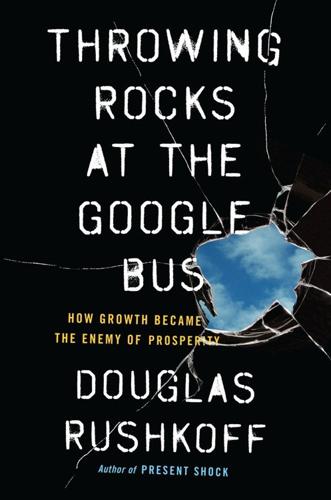
Throwing Rocks at the Google Bus: How Growth Became the Enemy of Prosperity
by
Douglas Rushkoff
Published 1 Mar 2016
Some business futurists envision digital workers succeeding by working on the Internet itself.* Just as Wikipedia marshaled the talents of thousands of individual people working online to create an encyclopedia, corporations are beginning to use what are called crowdsourcing platforms to engage online workers in a multitude of freelance tasks. Again, such opportunities are touted by their proponents as part of the digital revolution. The CEO of the CrowdFlower crowdsourcing platform, Lukas Biewald, explains that these platforms are “bringing opportunities to people who never would have had them before, and we operate in a truly egalitarian fashion, where anyone who wants to can do microtasks, no matter their gender, nationality, or socio-economic status, and can do so in a way that is entirely of their choosing and unique to them.”40 Crowdsourcing platforms, such as Amazon Mechanical Turk, pay people to perform tiny, repetitive tasks that computers just can’t handle yet.
…
The CEO of the CrowdFlower crowdsourcing platform, Lukas Biewald, explains that these platforms are “bringing opportunities to people who never would have had them before, and we operate in a truly egalitarian fashion, where anyone who wants to can do microtasks, no matter their gender, nationality, or socio-economic status, and can do so in a way that is entirely of their choosing and unique to them.”40 Crowdsourcing platforms, such as Amazon Mechanical Turk, pay people to perform tiny, repetitive tasks that computers just can’t handle yet. Workers log into one of the platforms from home or an Internet café and then choose from a series of tasks on offer. They might be paid three cents each time they identify the subject of a photo, transcribe a sentence from a video lecture, or list the items in a scanned receipt. These are invariably mundane tasks—the sorts of data entry that wouldn’t even exist were so many business processes not already tied to computer databases, and ones that will certainly be carried out by computers themselves sooner than later.
…
For employers, it’s a perfect realization of the industrial ideal: anyone can request work, do so anonymously, never meet the employee, and reject the results without ever paying. The labor force isn’t simply replaceable; it’s in constant flux, perpetually changing and responsible for its own training and care. As digital labor scholar and activist Trebor Scholz has pointed out,41 in crowdsourcing there’s no minimum wage, no labor regulation, no governmental jurisdiction. Although 18 percent of workers on Amazon Mechanical Turks are full-time laborers, most of them make less than two dollars an hour. Amazon argues that the platform is all about choice and empowerment, that workers can “vote with their feet” against bad labor practices.
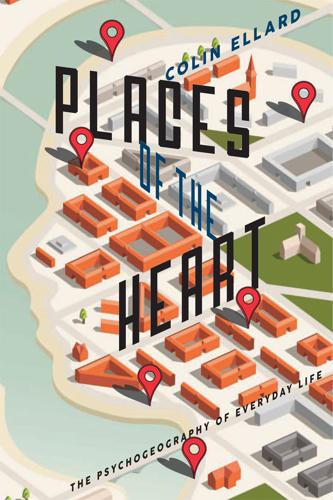
Places of the Heart: The Psychogeography of Everyday Life
by
Colin Ellard
Published 14 May 2015
If imaginative content is to help to engage us with space rather than turn us away from it, then it must be somehow embedded in our everyday uses of space and technology. At Yahoo Labs in Barcelona, Daniele Quercia’s group has developed a GPS application that can find routes that are not based solely on a shortest-distance-to-destination algorithm, but instead on a series of aesthetic variables.10 To build this application, Quercia’s group first collected crowd-sourced data on the aesthetic values of urban viewpoints. To do this, they simply made available large numbers of images of urban locations and invited participants to rate the images for beauty, happiness, and quietness. Based on this feedback, the group went on to try to define the visual properties of urban scenes that were most likely to elicit strong impressions of those three aesthetic properties among viewers, and they applied their findings to an even larger set of images from the photo-sharing application Flickr.
…
Second, many applications will allow you to contribute your own thoughts and feelings to the accumulated database of location-coded information. If you eat at a restaurant and enjoy yourself (or otherwise), you can rate the experience, write some words, and even contribute a photograph of your meal if you are so inclined. By donating information to a crowd-sourced repository of reviews, you are adding great value to the data that are generally available to users of these applications, the vast majority of which are provided free. Again, it seems as though one might have to have a severely dyspeptic disposition to find fault with a tool that allows the user access to such a treasure trove of valuable information at no cost other than the price of a phone and a data plan.
…
Though such data may be messy and lack the clinical archival quality that can be acquired using formal experiments of the kind that I’ve described in this book, they will constitute useful starting points for the analysis of existing patterns, debate, and dialog with the governing bodies that dictate what can be built and where it can go. Such crowd-sourced, grassroots efforts have the great advantage that they help to make citizens themselves active participants in the processes that eventually lead to built designs. None of this is to suggest that making ordinary citizens active participants in the processes that lead to new buildings will be an easy thing—anyone who has attended a city council meeting to voice an opinion about a proposed development will know that to suggest that stakeholders are always poised to listen to the public is the attitude of a naïve Pollyanna.

The Inevitable: Understanding the 12 Technological Forces That Will Shape Our Future
by
Kevin Kelly
Published 6 Jun 2016
As of 2015, these two largest peer-to-peer lending companies have facilitated more than 200,000 loans worth more than $10 billion. Innovation itself can be crowdsourced. The Fortune 500 company General Electric was concerned that its own engineers could not keep up with the rapid pace of invention around them, so it launched the platform Quirky. Anyone could submit online an idea for a great new GE product. Once a week, the GE staff voted on the best idea that week and would set to work making it real. If an idea became a product, it would earn money for the idea maker. To date GE has launched over 400 new products from this crowdsourced method. One example is the Egg Minder, an egg holder in your refrigerator that sends you a text when it’s time to reorder your eggs.
…
But by far the most potent future role for crowdsharing is in fan base equity. Rather than invest into a product, supporters invest into a company. The idea is to allow fans of a company to purchase shares in the company. This is exactly what you do when you buy shares of stock on the stock market. You are part of a crowdsourced ownership. Each of your shares is some tiny fraction of the whole enterprise, and the collected money raised by public shares is used to grow the business. Ideally, the company is raising money from its own customers, although in reality big pension and hedge funds are the bulk buyers. Heavy regulation and intense government oversight of public companies offer some guarantee to the average stock buyer, making it so anyone with a bank account can buy stock.
…
One example is the Egg Minder, an egg holder in your refrigerator that sends you a text when it’s time to reorder your eggs. Another popular version of crowdsourcing appears, at first, to be less about collaboration and more about competition. A commercial need prompts a contest for the best solution. A company offers a payment prize to the best solution selected among a crowd of entrants. For instance, Netflix announced an award of $1 million to the programmers who could invent an algorithm that recommended movies 10 percent better than the algorithm they had. Forty thousand groups submitted very good solutions that improved the performance, but only one team achieved the goal and won the prize.
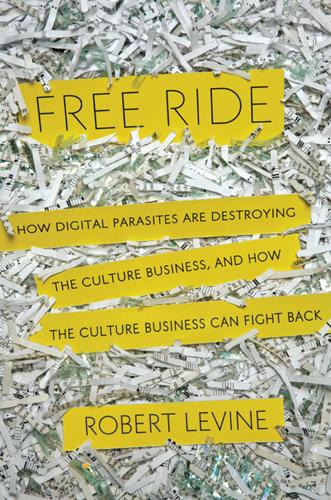
Free Ride
by
Robert Levine
Published 25 Oct 2011
The main idea behind much of this thinking is that there are other ways to create the kind of artistic work we enjoy now without laws to protect it, either by funding it in ways that don’t involve the media business or by using the reach of the Internet to harness volunteerism. Could art be “crowdsourced,” created by scattered people working together online, much as Wikipedia is? While online collaboration has intriguing possibilities, it seems to work better as a way of creating tools—like software or encyclopedias—rather than art. As ambitious as it is, Wikipedia depends on facts that can be sourced from other expensively produced publications, and experiments with crowdsourced original reporting have been underwhelming compared with professional work. A system based on these arrangements would also create a new generation of media gatekeepers.
…
Due to bad decisions that had nothing to do with technology, many newspaper chains were saddled with enormous debt run up by parent companies that overspent to buy publications and gain market share. And they faced a post-boomer generation of readers who have not picked up the habits of paying for news or reading it on a printed page. Conventional wisdom says that newspaper journalism must be reinvented for a changing world—blogged, Twittered, or somehow crowdsourced. It’s a tempting prescription—innovative, optimistic, and forward-looking—but it doesn’t get to the heart of the problem. Despite complaints about the media, newspaper journalism now reaches a larger audience than ever before, both directly and on various sites that summarize it. How dissatisfied can readers really be?
…
As the media executive and news business blogger Alan Mutter pointed out, U.S. newspapers now spend $4.4 billion a year on reporting, while nonprofit journalism institutions raised only $144 million over the last four.42 “The finding about that in general is that the content is great and the funding model is very unstable,” says Nicholas Lemann, dean of the Columbia University Graduate School of Journalism. “Then there are these experiments in crowdsourcing and other forms of social production, and my view is that they haven’t really delivered the goods.” Although nonprofit groups like the Knight Foundation have become enamored with citizen journalism projects, their track record has been uneven at best. A 2010 study by the Pew Research Center’s Project for Excellence in Journalism that examined the news “ecosystem” of Baltimore over the course of a week found that traditional media produced 95 percent of the stories with new information and that newspapers were responsible for most of them.43 (It also found that 80 percent of all stories contained no new information at all, which is damning for old and new media alike.)

Human + Machine: Reimagining Work in the Age of AI
by
Paul R. Daugherty
and
H. James Wilson
Published 15 Jan 2018
One goal is that the robots will make certain rudimentary decisions—interrupting one job to complete a more crucial task, and then returning to the original job—just as a human worker would. AI training doesn’t necessarily have to be done in-house. Like payroll, IT, and other functions, the training of AI systems can be crowdsourced or outsourced. One such third-party crowdsourcer called Mighty AI ingeniously uses crowdsourcing techniques to help train systems in vision recognition (for example, identifying lakes, mountains, and roads from photographs) and natural-language processing. The company has amassed copious amounts of training data that it can then deploy for different clients.
…
The first online maps were largely just a digital version of their paper counterparts. But soon, GPS navigation devices changed how we used maps, giving us directions after entering a destination. Even that, though, was still a fairly static process. Now, mobile map apps like Waze are taking advantage of real-time user data—about drivers’ locations and speeds as well as crowd-sourced information about traffic jams, accidents, and other obstructions to create the perfect map in real time. All that data enables the system to update directions en route so that, if necessary, it can reroute drivers midcourse to minimize any possible delays. Whereas the old approach with GPS simply digitized a static paper-map route, Waze has combined AI algorithms and real-time data to create living, dynamic, optimized maps that can get people to their destinations as quickly as possible.
…
See processes business process reengineering (BPR), 5 business transformation, waves of, 4–6, 19–21, 38–39, 47 Campbell Soup Company, 98 Capital One, 191–192, 204–205 Caracappa, Joe, 32–33 Caterpillar Inc., 192–193 Cefkin, Melissa, 113–114 Celetano, Domenick, 91 change pace of, 184–185 self-adaptive, 155–156 chatbots, 55–56, 91, 145–146 guardrails with, 168–169 job search, 198–199 training, 117 Cigna, 188 Cincinnati Children’s Hospital, 82 Clara, 196 Clark, Scott, 77 clinical trials, 80, 82 Cloudbreak, 28 cobots (collaborative robotics), 65, 148–150 Coca-Cola, 85–86, 98, 100 Colette, 146 collaboration, 1–2, 7–9, 10, 107 AI “winters” in, 25, 41 effectiveness of, 148–150 ergonomics and, 149–150 fusion skills for, 183–206 power of, 51–52 process reimagination and, 50–52 responsible normalizing of, 12, 189–191 with robotic arms, 21–23 commerce, integrated, 87–90 complaint processes, 47–48 compliance, 172 computer vision, 151 in Amazon Go, 161–165 definition of, 64 in mannequins, 89 context designers, 128 Cortana, 11, 96–97, 118–119, 145–146, 201 Coyne, Allie, 28 Crawford, Esther, 199 credit risk analysis, 123–124 crowdsourcing, 120–121 culture blended human/machine, 166–174 of experimentation, 161–165, 204–205 customer relationship management (CRM), 85–86 customer service, 85–101 brands and, 87 integrated commerce and, 87–90 natural-language assistants in, 55–56 customization. See personalization cybersecurity, 56–58, 59 Darktrace, 58 DARPA Cyber Grand Challenges, 57, 190 Dartmouth College conference, 40–41 dashboards, 169 data, 10 in AI training, 121–122 barriers to flow of, 176–177 customization and, 78–80 discovery with, 178 dynamic, real-time, 175–176 in enterprise processes, 59 exhaust, 15 in factories, 26–27, 29–30 leadership and, 180 in manufacturing, 38–39 in marketing and sales, 92, 98–99, 100 in R&D, 69–72 in reimagining processes, 154 on supply chains, 33–34 supply chains for, 12, 15 velocity of, 177–178 data hygienists, 121–122 data supply-chain officers, 179 data supply chains, 12, 15, 174–179 decision making, 109–110 about brands, 93–94 black box, 106, 125, 169 employee power to modify AI, 172–174 empowerment for, 15 explainers and, 123–126 transparency in, 213 Deep Armor, 58 deep learning, 63, 161–165 deep-learning algorithms, 125 DeepMind, 121 deep neural networks (DNN), 63 deep reinforcement learning, 21–22 demand planning, 33–34 Dennis, Jamie, 158 design at Airbus, 144 AI system, 128–129 Elbo Chair, 135–137 generative, 135–137, 139, 141 product/service, 74–77 Dickey, Roger, 52–54 digital twins, 10 at GE, 27, 29–30, 183–184, 194 disintermediation, brand, 94–95 distributed learning, 22 distribution, 19–39 Ditto Labs, 98 diversity, 52 Doctors Without Borders, 151 DoubleClick Search, 99 Dreamcatcher, 136–137, 141, 144 drones, 28, 150–151 drug interactions, 72–74 Ducati, 175 Echo, 92, 164–165 Echo Voyager, 28 Einstein, 85–86, 196 Elbo Chair, 136–137, 139 “Elephants Don’t Play Chess” (Brooks), 24 Elish, Madeleine Clare, 170–171 Ella, 198–199 embodied intelligence, 206 embodiment, 107, 139–140 in factories, 21–23 of intelligence, 206 interaction agents, 146–151 jobs with, 147–151 See also augmentation; missing middle empathy engines for health care, 97 training, 117–118, 132 employees agency of, 15, 172–174 amplification of, 138–139, 141–143 development of, 14 hiring, 51–52 job satisfaction in, 46–47 marketing and sales, 90, 92, 100–101 on-demand work and, 111 rehumanizing time and, 186–189 routine/repetitive work and, 26–27, 29–30, 46–47 training/retraining, 15 warehouse, 31–33 empowerment, 137 bot-based, 12, 195–196 in decision making, 15 of salespeople, 90, 92 workforce implications of, 137–138 enabling, 7 enterprise processes, 45–66 compliance, 47–48 determining which to change, 52–54 hiring and recruitment, 51–52 how much to change, 54–56 redefining industries with, 56–58 reimagining around people, 58–59 robotic process automation (RPA) in, 50–52 routine/repetitive, 46–47 ergonomics, 149–150 EstherBot, 199 ethical, moral, legal issues, 14–15, 108 Amazon Echo and, 164–165 explainers and, 123–126 in marketing and sales, 90, 100 moral crumple zones and, 169–172 privacy, 90 in R&D, 83 in research, 78–79 ethics compliance managers, 79, 129–130, 132–133 European Union, 124 Ewing, Robyn, 119 exhaust data, 15 definition of, 122 experimentation, 12, 14 cultures of, 161–165 in enterprise processes, 59 leadership and, 180 learning from, 71 in manufacturing, 39 in marketing and sales, 100 in process reimagining, 160–165 in R&D, 83 in reimagining processes, 154 testing and, 74–77 expert systems, 25, 41 definition of, 64 explainability strategists, 126 explaining outcomes, 107, 114–115, 179 black-box concerns and, 106, 125, 169 jobs in, 122–126 sustaining and, 130 See also missing middle extended intelligence, 206 extended reality, 66 Facebook, 78, 79, 95, 177–178 facial recognition, 65, 90 factories, 10 data flow in, 26–27, 29–30 embodiment in, 140 job losses and gains in, 19, 20 robotic arms in, 21–26 self-aware, 19–39 supply chains and, 33–34 third wave in, 38–39 traditional assembly lines and, 1–2, 4 warehouse management and, 30–33 failure, learning from, 71 fairness, 129–130 falling rule list algorithms, 124–125 Fanuc, 21–22, 128 feedback, 171–172 feedforward neural networks (FNN), 63 Feigenbaum, Ed, 41 financial trading, 167 first wave of business transformation, 5 Fletcher, Seth, 49 food production, 34–37 ForAllSecure, 57 forecasts, 33–34 Fortescue Metals Group, 28 Fraunhofer Institute of Material Flow and Logistics (IML), 26 fusion skills, 12, 181, 183–206, 210 bot-based empowerment, 12, 195–196 developing, 15–16 holistic melding, 12, 197, 200–201 intelligent interrogation, 12, 185, 193–195 judgment integration, 12, 191–193 potential of, 209 reciprocal apprenticing, 12, 201–202 rehumanizing time, 12, 186–189 relentless reimagining, 12, 203–205 responsible normalizing, 12, 189–191 training/retraining for, 211–213 Future of Work survey, 184–185 Garage, Capital One, 205 Gaudin, Sharon, 99 GE.
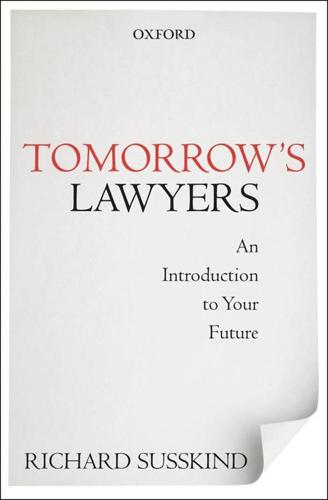
Tomorrow's Lawyers: An Introduction to Your Future
by
Richard Susskind
Published 10 Jan 2013
Many tasks do not require the expertise and cost of qualified lawyers and can be taken on by other skilled and knowledgeable individuals within the legal sector. TABLE 4.3. Sources of legal service * * * in-sourcing de-lawyering relocating off-shoring outsourcing subcontracting co-sourcing near-shoring leasing home-sourcing open-sourcing crowd-sourcing computerizing solo-sourcing no-sourcing * * * Relocating involves an organization moving some of its legal work to less costly locations, but still within countries in which the main business already has a presence. An illustration here is the US-based international law firm Orrick, which has a global operations centre based in Wheeling, West Virginia.
…
Open-sourcing is the provision, at no charge, of all sorts of legal materials (standard documents, guidelines, procedures, opinions, case studies, practical experience, and more) on publicly accessible websites. This is likely to be most effective if organized in the form of a wiki (an online resource that any users can edit and add to). Crowd-sourcing involves harnessing the collective talents of large groups of individuals who make some of their time available to undertake certain categories of legal task. On one approach, for instance, a legal problem might be broadcast to a large, unknown group of volunteers. And these volunteers—the crowd—respond with their proposed legal solutions.
…
INDEX AI-based problem-solving, 49 Access to justice dispute resolution, 85–86 ignorance of the law, 85 online legal services, 87–91 plight of non-lawyers, 86–87 unresolved problems, 84–85 Woolf reforms, 85 Accountancy firms, 122–123 Advocacy, 58–59 Alternative fee arrangements hourly billing, 15–17 strategies for success, 18–19 Apprenticeship model, 143 Banks co-sourcing, 70 collaboration strategy, 21–22 new range of employers, 126–127 Benevolent custodians, 163–164 Bespoke legal work, 23–26 Big data, 48–49 Businesses see Law firms Clementi Report (2004), 6–7 Closed legal communities, 45 Co-sourcing, 35, 69–70 Collaboration closed legal communities, 45 in-house legal departments, 70–71 strategies for success, 5, 21–22 Commoditization of legal work bespoke legal work compared, 23–24 five stage evolution, 25–28 importance, 5 open-sourcing, 44 outcome of efficiency strategy, 20 Communities of legal experience, 89 Computer-assisted transcripts (CAT), 97 Computerizing, 37 Consumer branding, 7–8 Consumer choice, 6 Courts see also Judges computer-assisted transcripts (CAT), 97 document display systems, 98 e-filing, 97 electronic presentation of evidence (EPE), 98 need for improvement, 96–97 virtual courts fair trial concerns, 102–105 meaning, 99–100 online dispute resolution (ODR), 100–102 Crowd-sourcing, 36–37 Cybersettle, 101 De-lawyering, 33–34 Decomposing of work applicability, 30 document review, 31 legal process analysts, 114 litigation, 31 move to efficiency, 29–30 outcome of efficiency strategy, 21 project management, 31–32 sourcing of work, 37–38 transactions, 33 Denial stage, 77–79 Disruption stage, 81–83 Disruptive technologies AI-based problem-solving, 49 big data, 48–49 closed legal communities, 45 document assembly, 41 e-learning, 43 electronic legal marketplace, 42–43 embedded legal knowledge, 46–47 intelligent legal search, 47–48 online dispute resolution (ODR), 47 online legal guidance, 43–44 online legal services, 91 open-sourcing, 44–45 overview, 39–41 relentless connectivity, 42 timescale for change, 82 workflow and project management, 46 Documents court display systems, 98 decomposing of work, 31 disruptive technologies, 41 evolution of legal services, 27 in-house knowledge management, 64–65 intelligent legal search, 47–48 Drivers of change information technology claims to be over-hyped, 10–11 emerging new applications, 12–13 growth in processing power, 11–12 Moore’s Law, 10–11 need to connect social use and working lives, 13–14 pervasive influence, 10 liberalization Clementi Report (2004), 6–7 consumer branding, 7 law as a reserved business, 5–6 need for consumer choice, 6 new entrepreneurial spirit, 7–9 new ownership rules, 7 ripple effect around the work, 9–10 more-for-less challenge, 4–5 overview, 3 E-filing, 97 E-learning disruptive technologies, 43 new form of training, 143–144 online lectures, 144–145 simulation-based training, 145–146 E-working courts, 94–97 judiciary, 94 Efficiency decomposing of work, 29–30 key question for future of law firms, 53–54 strategies for success, 19–21 Electronic presentation of evidence (EPE), 98 Electronic legal marketplace, 42–43 Embedded legal knowledge, 46–47 Enhanced practitioners, 110–111 Entrepreneurial spirit, 7–9 Expert trusted advisers, 109–110 Fair trial, 102–105 Fees alternative fee arrangements ‘hourly billing’, 15–17 differentiation of law firms, 66–67 key question for future of law firms, 53 key questions for junior partners, 59–61 more-for-less challenge, 4–5 strategies for success alternative fee arrangements, 18–19 charging less, 15–18 Firms see Law firms General Counsel collaboration approach, 70–71 future strategies, 72 more-for-less challenge, 68–70 risk management, 62–64 Global elites emerging cadre, 5–56 need for alternative structures, 56–57 return of accountancy firms, 122–123 High street retailers, 126–127 Holes or power drills?

The Future Is Faster Than You Think: How Converging Technologies Are Transforming Business, Industries, and Our Lives
by
Peter H. Diamandis
and
Steven Kotler
Published 28 Jan 2020
Kickstarter: See: https://www.kickstarter.com/help/stats. Pebble Time: John McDermott, “Pebble ‘Smartwatch’ Funding Soars on Kickstarter,” Inc., April 20, 2012. See: https://www.inc.com/john-mcdermott/pebble-smartwatch-funding-sets-kickstarter-record.html. $300 billion: Massolution/Crowdsourcing.org, 2015 CF Crowdfunding Industry Report. See: http://reports.crowdsourcing.org/index.php?route=product/product&product_id=54. crowdfunding as “potentially the most disruptive of all the new models of finance.”: The Future of Finance, the Socialization of Finance (Goldman Sachs Report, March 2015). See: https://www.planet-fintech.com/downloads/The-future-of-Finance-the-Socialization-of-Finance-Golman-Sachs-march-2015_t18796.html
…
upcoming thriller Morgan: “BM Creates First Movie Trailer by AI [HD] | 20th Century FOX,” August 31, 2016. See: https://www.youtube.com/watch?v=gJEzuYynaiw. an AI that creates Choose Your Own Adventure–style stories for video games: Matthew Guzdial, “Crowdsourcing Open Interactive Narrative.” See: https://www.cc.gatech.edu/~riedl/pubs/guzdial-fdg15.pdf. See also: “Artificial Intelligence System for Crowdsourcing Interactive Fiction” (video), September 1, 2016. See: https://www.youtube.com/watch?time_continue=1&v=znqw17aOrCs. From Passive to Active Video games with user-generated gameplay content: “Category: Video Games with User-Generated Gameplay Content,” Wikipedia.
…
It’s a smart contract because it executes itself, without need for human involvement. And it’s for all of these reasons that the tech is exploding. As of 2018, major financial firms like J.P. Morgan, Goldman Sachs, and Bank of America are rolling out crypto-strategies at scale. Initial coin offerings, or ICOs, are blockchain’s version of crowdsourcing (which we’ll explore in depth in Chapter Four) are also exploding, with a market value of almost $10 billion as of 2018. In total, what began less than a decade ago with the sale of two pizzas, will, according to Gartner, Inc., grow to $176 billion by 2025, and could exceed $3.1 trillion in 2030.

What's Mine Is Yours: How Collaborative Consumption Is Changing the Way We Live
by
Rachel Botsman
and
Roo Rogers
Published 2 Jan 2010
Open, collaborative projects appealed to a participant’s need for individuality and autonomy and at the same time provided a sense of belonging, a community. The collective power of physically dispersed yet virtually connected individuals only became stronger and more apparent through the 2000s. Crowdsourcing, a concept coined by Jeff Howe as the “act of taking a job traditionally performed by a designated agent (usually an employee) and outsourcing it to an undefined, generally large group of people in the form of an open call,” became an important business idea. It is now a well-documented phenomenon applied to the creation of collective repositories of content (Wikipedia), products (the T-shirt company Threadless, where all the designs are created by the user community), new business ideas (Procter & Gamble’s Connect & Develop), and even problems such as climate change (MIT’s Climate Collaboratorium).
…
It is now a well-documented phenomenon applied to the creation of collective repositories of content (Wikipedia), products (the T-shirt company Threadless, where all the designs are created by the user community), new business ideas (Procter & Gamble’s Connect & Develop), and even problems such as climate change (MIT’s Climate Collaboratorium). What the success of crowdsourcing has shown is that as people move from hyper-individualistic consumer behaviors, a “me mind-set,” to a “we mind-set,” an empowering dynamic emerges. Specifically, online networks bring people together again, making them more willing to leverage the old rule of thumb: There is power in numbers. And impacts of online sharing and collaboration are not confined to the virtual world.
…
More than 2.5 million people around the world respond to some kind of Meetup invitation every month and more than two thousand local groups, from stay-at-home moms to small business owners to walking clubs, get together face-to-face each day.42 “We are using the Internet to get off the Internet and form a twenty-first-century civil society,” Heiferman commented.43 In 2006, a couple of years after leaving BBH, Gallop found herself thinking, “How could I take all the good intentions most of us have on a daily basis, our single biggest pool of untapped natural resource, and transform them into shared actions?” Like Chris Hughes on Obama’s campaign, Gallop also knew she had to make her initiative fun and avoid the “yawn factor” by adding a healthy dose of what she refers to as “competitive collaboration.” She launched IfWeRanTheWorld.com early in 2010. It’s essentially a crowdsourcing project based on the similar principles of microfunding sites such as Kiva or Kickstarter. People are motivated to do big things by taking all easy steps, microactions that in Gallop’s words “can bring about great leaps.” When you arrive at the site, you are asked to complete the statement, “If I ran the world, I would___.”

Going Dark: The Secret Social Lives of Extremists
by
Julia Ebner
Published 20 Feb 2020
Against this background, it is unsurprising that American white nationalist Richard Spencer labelled bitcoin the ‘currency of the alt-right’ long before the bitcoin craze started. After prominent alt-right figures were banned from mainstream crowdsourcing platforms such as Patreon and GoFundMe, and blocked by online payment providers such as PayPal, Apple Pay and Google Pay, some switched to Hatreon. The alternative crowdsourcing platform was used to fund anti-democratic projects such as the maintenance of the world’s biggest neo-Nazi platforms Daily Stormer and Stormfront and hacking activities of the white supremacist Weev (see pp. 217–26).
…
After I got out of prison on a costly appeal that left my life in shambles, I fled the United States as a political refugee and became a crowdfunded blogger dedicated to racial issues.15 Then the shutoffs started, as he would say.16 In 2014 his became the first account ever to be suspended from the crowdsourcing platform Patreon. Soon afterwards his Gratipay was also shut down. He claims he lost his bank accounts as well as his PayPal and dozens of brokerages. ‘They did their best to keep me away from any source of income,’ he would say.17 In one of his livestream AMAs (Ask Me Anything) that I joined, he told us that he was ‘the world’s most censored man’. Wherever the hacker was, he kept finding new ways to continue his stunts and to receive funds. For a while Weev fundraised on the alt-right crowdsourcing site Hatreon, advertising his activities as ‘fascist polemic, trolls, hacks, poetry reading, lulz’.
…
‘Hope not Hate, what’s that?’ I repeat stupidly. Hope not Hate is the UK’s most prominent anti-racist organisation and prevented the GI team from carrying out their ‘Defend Europe’ mission in the summer of 2017. Their researchers revealed the criminal past of the C Star’s owner and convinced the crowd-sourcing platform Patreon to block the payment services of the white nationalist activists.17 ‘All right, you know what? Let’s go to their office – it’s just a ten-minute walk from here,’ Thomas says. ‘No!’ I gasp. I bite my tongue so hard that I can feel it start bleeding. ‘I mean, I think that’s a bad idea.
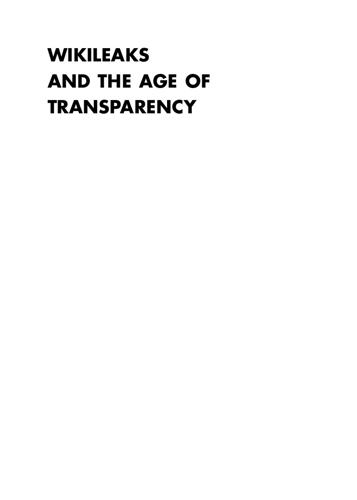
WikiLeaks and the Age of Transparency
by
Micah L. Sifry
Published 19 Feb 2011
It’s also worth noting that press credentialing for citizen journalists and bulk access to congressional floor and committee video were two recommendations that the project made the least progress on. 6 Micah L. Sifry, “Obama as Crowdsourcer; Organizing the Country for Change and Accountability,” techPresident.com, February 8, 2009, http://techpresident.com/blog-entry/obama-crowdsourcer-organizingcountry-change-and-accountability. 7 Clint Hendler, “Obama on Recovery.gov,” Columbia Journalism Review, February 9, 2009, www.cjr.org/the_kicker/obama_on_recoverygov.php. 8 Edward Luce and Tom Braithwaite, “US stimulus tsar to unleash 1m inspector-generals,” The Financial Times, August 20, 2009, www.ft.com/ cms/s/0/e731fd52-8db0-11de-93df-00144feabdc0.html#axzz1 AZfFLMQT. 9 Earl Devaney, “Chairman’s Corner,” Recovery.gov, March 22, 2010, www. recovery.gov/News/chairman/Pages/march222010.aspx. 10 Clay Johnson, “Recovery.gov: Stop with the Data Defense, Start with the Conversation,” March 30, 2010, http://sunlightlabs.com/blog/2010/ recoverygov-stop-data-defense-start-conversation. 11 Earl Devaney, “Chairman’s Corner,” Recovery.gov, October 27, 2010, www.recovery.gov/News/chairman/Pages/2010Oct27.aspx 197 WIKILEAKS AND THE AGE OF TRANSPARENCY 12 13 14 15 16 17 18 19 20 21 22 23 198 Becky Hogge, “Open Data Study,” Open Society Foundations Information Program, May 2010, www.soros.org/initiatives/information/focus/ communication/ar ticles_publications/publications/open-datastudy-20100519.
…
Eric Raymond, one of the earliest evangelists for the open source software movement, famously wrote that the ethos of the first developer of Linux, Linus Torvalds, was “given enough eyeballs, all bugs are shallow.”11 In technical terms, this means that if you have enough early testers of your software, and you make the source code visible, the community as a whole can easily help spot problems and help solve them. The same notion has come to apply, again and again, to the transparency movement. If you make a problem visible, or put it out on the web in a form that lots of people can swarm around, often 75 WIKILEAKS AND THE AGE OF TRANSPARENCY a solution will be found. “Crowdsourcing” is the term often used to describe this process, though I think it’s somewhat of a misnomer. We aren’t outsourcing a job that used to belong to professionals (such as investigative journalists) and giving it to a crowd to do; we’re inviting lots of civic watchdogs to add their eyeballs and time to the process of making government more transparent and accountable.
…
Transparency and participatory politics has run through a similarly checkered path in the United Kingdom in recent years. For a time, it appeared that the U.K.’s Labour government was inching close to embracing a much more people-driven vision of open government, akin to Obama’s “eyes and ears” notion of crowd-sourcing. First, in early 2007, the prime minister’s office (then under Tony Blair) hired mySociety.org to build a tool enabling the public to create and sign petitions to his office directly from the 10 Downing Street website.23 Millions of citizens swarmed in, and some of the top petitions forced the government to make actual policy changes, like dropping plans for a new vehicle tax.

Machines of Loving Grace: The Quest for Common Ground Between Humans and Robots
by
John Markoff
Published 24 Aug 2015
Horvitz is continuing to deepen the human-machine interaction by researching ways to couple machine learning and computerized decision-making with human intelligence. For example, his researchers have worked closely with the designers of the crowd-sourced citizen science tool called Galaxy Zoo, harnessing armies of human Web surfers to categorize images of galaxies. Crowd-sourced labor is becoming a significant resource in scientific research: professional scientists can enlist amateurs, who often need to do little more than play elaborate games that exploit human perception, in order to help scientists map tricky problems like protein folding.19 In a number of documented cases teams of human experts have exceeded the capability of some of the most powerful supercomputers.
…
“The Lumiere project: The Origins and Science Behind Microsoft’s Office Assistant,” Robotics Zeitgeist, 2009, http://robotzeitgeist.com/2009/08/lumiere-project-origins-and-science.html. 18.Lexi Krock, “The Final Eight Minutes,” Nova, WGBH, October 17, 2006, http://www.pbs.org/wgbh/nova/space/final-eight-minutes.html. 19.Jessica Marshall, “Victory for Crowdsourced Biomolecule Design,” Nature, January 22, 2012, http://www.nature.com/news/victory-for-crowdsourced-biomolecule-design-1.9872. 20.Sherry Turkle, Alone Together: Why We Expect More from Technology and Less from Each Other (New York: Basic Books, 2011), 101. 21.Miriam Steffens, “Slaves That Are Reflections of Ourselves,” Sydney Morning Herald, November 19, 2012, http://www.smh.com.au/small-business/growing/slaves-that-are-reflections-of-ourselves-20121118-29k63.html. 22.Daniel Crevier, AI: The Tumultuous History of the Search for Artificial Intelligence (New York: Basic Books, 1993), 58. 23.Ken Jennings, “My Puny Human Brain,” Slate, February 16, 2011. 7|TO THE RESCUE 1.Stuart Nathan, “Marc Raibert of Boston Dynamics,” Engineer, February, 22, 2010, http://www.theengineer.co.uk/in-depth/interviews/marc-raibert-of-boston-dynamics/1001065.article#ixzz2pevPQoYI. 2.Public Information Office, “Fact Sheet on ‘Simon,’” Columbia University, May 18, 1950, http://www.blinkenlights.com/classiccmp/berkeley/simonfaq.html. 3.Ivan E.
…
It is significant that Google is instrumental in changing the metaphor. In one sense the company began as the quintessential intelligence augmentation, or IA, company. The PageRank algorithm Larry Page developed to improve Internet search results essentially mined human intelligence by using the crowd-sourced accumulation of human decisions about valuable information sources. Google initially began by collecting and organizing human knowledge and then making it available to humans as part of a glorified Memex, the original global information retrieval system first proposed by Vannevar Bush in the Atlantic Monthly in 1945.11 As the company has evolved, however, it has started to push heavily toward systems that replace rather than extend humans.
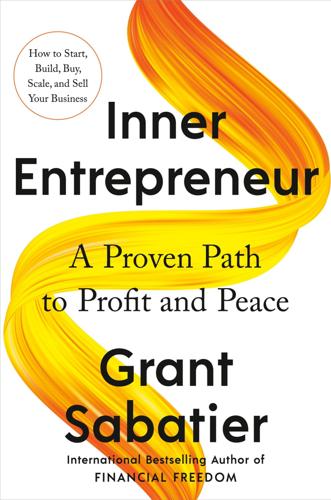
Inner Entrepreneur: A Proven Path to Profit and Peace
by
Grant Sabatier
Published 10 Mar 2025
Take Mitchell Sorkin, who is building in public by going into great detail on X (formerly Twitter) about how he’s growing his ATM business by acquiring smaller ATM operators, expanding into new locations, and forming more valuable partnerships with the owners of the stores in which he places his ATMs. Or Kyle Nolan, who is building his finance-tracking tool, ProjectionLab, out in the open, sharing his monthly revenue numbers online and crowdsourcing feedback on new ideas and features to improve his product. The build-in-public movement has expanded rapidly beyond just software developers to all types of entrepreneurs. You can learn how to build a business in many sectors by simply following and connecting with others ahead of you. Another way to become an entrepreneur is to acquire and run a successful business.
…
While it will take some work, if you focus on consistency of connection, quality over quantity, sharing openly, and optimism instead of fear, you’ll have a significant advantage over others who give up or pump out generic content. Here are five steps to help you cultivate a community and turn it into a sustainable customer base: Step 1: Build in Public to Crowdsource Support “Building in public” describes the process of sharing your creative or entrepreneurial journey with others, typically through social media, blogs, or other online platforms. More than just a phrase, it’s a group of individuals who believe that this is the best way to attract an audience (who may convert into customers and help them grow) in an authentic, human way.
…
A B C D E F G H I J K L M N O P Q R S T U V W X Y Z A accounts payable (A/P), 183–86 accounts receivable (A/R), 181–83, 187 advertising, 67–72, 232–37 affiliate marketing and partnerships and advantages of entrepreneurship, 322 and buying an existing business, 338, 353, 360, 363, 369 cultivating partnerships, 27 described, 67–72 and email marketing, 129 and expense reduction, 142 and growth entrepreneurship strategies, 231, 250–52 monitoring progress of your business, 125 most profitable niches, 71 and payment time frames, 139 and performance monitoring, 204–5 and physical product businesses, 55–56 and profit and loss statements, 146 and selling your business, 287, 299–300 and social media strategies, 105, 107 and standardized business systems, 207, 209 and turning your service into a product, 211 value of great content, 97 and website content, 116 aging schedule, 181–82, 184 algorithms, 7, 55, 102–6, 109, 126, 162, 253, 310, 322, 363 Alibaba, 54 Amazon, 5, 77, 119, 191, 232, 254, 296, 366 Apple, 94, 327, 366 artificial intelligence (AI), 5, 21, 67, 76, 95, 161–62, 321 asset-based valuation, 304 asset purchase agreement (APA), 370–71 assets under management (AUM), 158 assistants, 1, 216–17 Authority Hacker, 68 automation, 128–29, 154, 204, 206–11 average customer lifespan (ACL), 242 average purchase frequency (APF), 242 average purchase value (APV), 241 average revenue per user (ARPU), 243, 247 B baby boomers, 9, 43, 315 balance sheets, 148, 360 BankBonus.com, 300 benefits of entrepreneurship, 4–6 Berkshire Hathaway, 313, 316, 318–19, 327–28, 346 Berlinger, Julie, 49–50, 82 Berman, Cody, 49–50, 82 BizBuySell.com, 342 blogging and affiliate/advertising businesses, 68–69 and building trust, 160, 165 and business-management systems, 206–7, 208, 210 and capture mechanisms, 127 and crowdsourcing support, 157–59 as discretionary expense, 140 and domain names, 113 engagement with customers, 75, 77, 166 and engagement with customers, 169, 173 and market research, 73–74 and organic marketing, 107 and perseverance, 376 scaling issues, 212 sharing your story, 91–92 testing product ideas, 255 and value of great content, 101 and website content, 116, 117 The Body Shop, 226 bookkeeping, 37, 137, 218 Bowerman, Bill, 73 branding and advantages of holding companies, 319 and affiliate programs, 67–69, 250–51, 253 and aligning passions with skills, 46 and author’s entrepreneurial background, 161 brand names, 113–14 and buying an existing business, 331, 337, 345–46, 370 and cash-flow management, 201 and community-building, 157 and crowdsourcing support, 159 and digital advertising, 232–33, 234–35 and email marketing, 129 and engagement with customers, 165–66, 167, 169 and growth entrepreneurship strategies, 226, 230 and hiring employees, 273 key elements, 92–93 and limited liability companies, 134 and market research, 73–74, 80 monitoring progress of your business, 125 and physical product businesses, 53–57 researching competitors, 254 and sales page content, 124 and selling your business, 289, 296 and SEO, 108 and social media, 104–5 and value of customers, 244–45 and value of great content, 96–97, 98, 103, 164 and visibility of your business, 171 and website content, 115, 116 and your story, 94–95 budgeting, 234–35, 248–49 buffer funds, 135, 138, 190, 200, 202, 352 Buffett, Warren, 316, 318–19, 327 Buffett: The Making of an American Capitalist (Lowenstein), 319 “building in public,” 157–60 business expenses, 135–36, 194–95 Business Insider, 53 business to business (B2B) companies, 60–61 buying existing businesses and advantages of entrepreneurship, 328–31 after-sale considerations, 372–73 and author’s entrepreneurial background, 332–33 decision process, 339–55 Fulfillment by Amazon (FBA) businesses, 56 recommended business characteristics, 333–39 steps involved in, 339–55, 356–72 and tax considerations, 339 vetting business acquisitions, 365–66 C Campbell, Harry (Rideshare Guy), 68, 113, 328 Canfield, Jack, 356 Carson, Chad, 201 cash and cash flow and author’s entrepreneurial background, 132, 176–77 and benefits of entrepreneurship, 12 and business foundations, 137–38 and buying an existing business, 351–52, 360 cash conversion cycle (CCC), 186–89 cash reserves, 320 cash up-front purchases, 305 and goals of Solopreneurship, 153 and hiring employees, 275 and marketing budgets, 249 measuring and managing, 178–86 phases of cash-flow management, 189–202 reducing expenses, 140–42 statement of cash flow, 149–50 Chödrön, Pema, 17 churn rate, 243–45, 247 Clear, James, 97 click-though rate (CTR), 117, 174, 236 climate-change resistance, 336–37 Clintonville Books, 15, 323, 375 Coefficient (Google Chrome extension), 205 collaboration, 27–28, 142, 154.

You've Been Played: How Corporations, Governments, and Schools Use Games to Control Us All
by
Adrian Hon
Published 14 Sep 2022
Urgent Evoke—the World Bank’s project, funded to a tune of half a million dollars—had 19,324 registered and 4,693 active players, with only 223 managing to complete one small task for each of the ten weeks of the game.33 Success isn’t conferred by player numbers or even player engagement alone, but as Professor David Waddington in the Department of Education at Concordia University put it, “Many of [Evoke’s] attempts at social innovation, albeit well meaning, seem neither realistic nor well thought out,” such as the curiously circular idea to renew Buffalo, New York, by crowdsourcing ideas from its community. Perhaps Urgent Evoke inspired its players into social innovation by other means, but there is little evidence this actually happened. In retrospect, it’s perplexing that anyone believed the world’s problems could be solved by games that had between them attracted barely a thousand committed players.
…
Players can choose to be either good or evil… but we don’t think that games should give players this choice… and this must be altered.”37 As with its social credit scores, the attention paid to China’s gamified propaganda has distracted from similar efforts elsewhere in the world. In the case of Urgent Evoke, one of the utopian gamification projects described earlier, the propaganda was delivered at arm’s length by the World Bank. David Waddington, professor in the Department of Education at Concordia University, argues the educational ARG’s goal of crowdsourcing “innovative solutions” to food security, energy, poverty, and human rights was freighted with an underlying philosophy in which “government appears ineffective and powerless, while homegrown, market-based solutions are cheap, democratic, and transformative.”38 Waddington highlights a part of the story when catastrophic floods bring London to the verge of a cholera epidemic; one character persuades another to get involved, saying it’s a “unique opportunity to position yourself as the brand the world trusts for safe water.”
…
We should, however, be more aware of how governments might use game mechanics in ways that might initially seem harmless but could lead to more troubling ends. The DARPA Network Challenge was a thrilling experience for the teams involved, but it also provided invaluable data for the Department of Defense on how online communities might be coordinated to cheaply crowdsource military intelligence. Incorporating game mechanics into strategic planning might also warp participants’ thinking in dangerous ways, as Jill Lepore has documented in her book If Then. In 1961, the Advanced Research Projects Agency (ARPA)—the predecessor of DARPA—began counterinsurgency research programs focusing on Vietnam and Thailand, under the name Project AGILE.
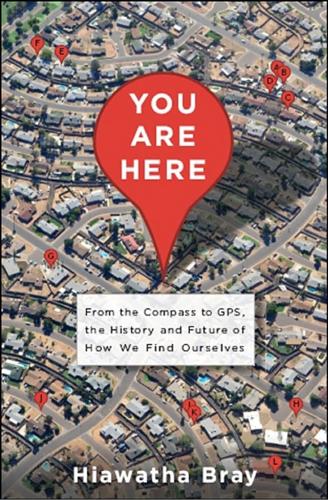
You Are Here: From the Compass to GPS, the History and Future of How We Find Ourselves
by
Hiawatha Bray
Published 31 Mar 2014
Old-school traffic reports relied on data collected by state and local highway departments. With their limited resources, these agencies could track conditions only on major highways and arterial streets. Google’s traffic maps, based on “crowdsourced” data from millions of vehicles, suffer from no such limitation. Users can get a traffic report on any street that attracts a sufficient number of Android-equipped drivers. In mid-2013 the company expanded its commitment to crowdsourced cartography with one of the biggest acquisitions in its history, the $966 million deal to purchase an Israeli company called Waze. Founded in 2007, Waze offered a software app for iPhones, Androids, and other mobile devices that monitors traffic conditions in much the same way as Google Maps.
…
Clay Shirky, Cognitive Surplus: Creativity and Generosity in a Connected Age (New York: Penguin Press, 2010), 15–17. 13. Andrew Zolli and Ann Marie Healy, Resilience: Why Things Bounce Back (New York: Simon and Schuster, 2012), 172–190. 14. Jessica Heinzelman and Carol Waters, “Crowdsourcing Crisis Information in Disaster-Affected Haiti,” US Institute of Peace, September 29, 2010, www.usip.org/publications/crowdsourcing-crisis-information-in-disaster-affected-haiti. 15. Steve Coast, interview with the author, November 1, 2009. 16. Ibid., January 25, 2012. 17. Roberto Rocha, “A Map-Making Democracy,” Montreal Gazette, December 20, 2007. 18. Michael Cross, “OS Maps Finally Available to Not-for-Profit Organisations,” Guardian, December 13, 2007. 19.
…
Its small but potent stable of major clients left no doubt that OSM was for real. By this point even Google had long realized that Coast was on to something. In 2008 the company began its own effort to recruit amateur mapmakers with the release of Google Map Maker, a tool that let anybody modify and correct Google’s online maps. Google had begun crowdsourcing its maps out of sheer necessity. As of 2008 the company still offered maps of just 22 countries and 20 million kilometers of roads—about 12.4 million miles. That sounds like a lot, but it is a mere fraction of the mappable earth. By 2012 Google Maps covered 187 countries and 42 million kilometers of roads, or 26 million miles.
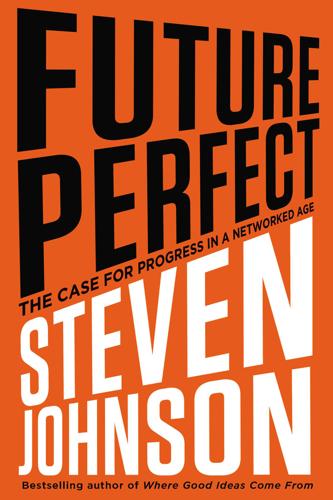
Future Perfect: The Case for Progress in a Networked Age
by
Steven Johnson
Published 14 Jul 2012
PEER NETWORKS AT WORK Communities. The Maple Syrup Event For more on 311 and other urban technology platforms, see my essay “What a Hundred Million Calls to 311 Reveal About New York,” in the November 2010 issue of Wired, and Vanessa Quirk’s essay “Can You Crowdsource a City?” (http://www.archdaily.com/233194/can-you-crowdsource-a-city/). A number of sites and mobile apps are innovating in the area of peer-network urbanism; an overview of many of them is available at the DIY City website, http://diycity.org/. Chris Anderson’s “Vanishing Point theory of news” was originally published at http://www.longtail.com/the_long_tail/2007/01/the_vanishing_p.html.
…
It’s harder to get those kinds of groups to gather in a barn or a city hall than it is to assemble them virtually. Moving bits around is far easier than doing the—sometimes literal—heavy lifting of civic life: building reservoirs or highways or jet engines that don’t explode when birds fly into them. A skeptic might plausibly say, Sure, if you want to conduct an online poll, or crowdsource a city slogan, the Internet is a great leap forward. But if you want to do the real work, you need the older tools. But every material advance in human history—from the Great Wall to the Hoover Dam to the polio vaccine to the iPad—was ultimately the by-product of information transfer and decision making.
…
A New York–based site called UncivilServants collects reports and photos of government workers abusing parking rules around the city and ranks the top offenders by department. (The worst abuser, by a wide margin, is the NYPD.) There’s even a new Australian urban reporting site called, memorably, It’s Buggered Mate. Taken together, all this adaptive, flexible urban reporting points the way toward a larger, and potentially revolutionary, development: the crowdsourced metropolis, the city of quants. — Systems such as 311 and its ilk are the peer-progressive response to the problem that all great cities invariably confront: the problem of figuring out where the problems are. In the language of Seeing Like a State, 311 makes the city legible from below.
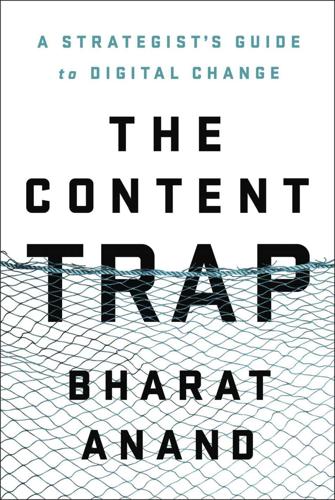
The Content Trap: A Strategist's Guide to Digital Change
by
Bharat Anand
Published 17 Oct 2016
As with vitriol and vandals, the challenge is not only to create positive connections but also to prevent negative ones. Focusing merely on contributions at the expense of connections is the first error commonly made in crowdsourcing. There’s a second, more basic, one: thinking that merely “opening up” to crowds will generate content. Wikipedia is perhaps the most studied crowdsourcing organization in the world. “There’ve been over 6,000 papers written about it,” noted software-developer-turned-social-scientist (and now University of Washington professor) Benjamin Mako Hill, whose own Ph.D. dissertation added to the list.
…
They also offered a prize—$10,000 for the winning submission. “It was ten times more than anything that had been offered on the crowdspring platform. And this was the first crowdsourcing work ever offered by the ad industry on behalf of a client.” The contest attracted thousands of designers in the first week alone. It persuaded Bogusky and Winsor to write a business plan for a new agency, one based entirely on crowdsourcing principles. Our parent company’s reaction was: “Are you kidding me? This destroys our entire economic value.” So I went out, got a VC to back me, got a few friends from Boulder, and we started Victors & Spoils.
…
In television, content and distribution companies alike got distracted: seduced by near-term licensing revenues that made streaming providers stronger in the end, seduced by the lure of higher prices that ultimately created consumer backlash, and seduced by megamergers that were struck down and that made usage-based pricing harder to implement. Seduced by the trees, they had forgotten about the forest. 7 CROWDS Networks can be used for content creation, not just consumption. Crowdsourcing, user-generated content, and user contribution networks have become commonplace terms. But what that means for the future of content businesses is a matter of fierce debate. While many observers scoff at the content increasingly emerging from crowds, others believe it will ultimately replace traditionally created material.

Terms of Service: Social Media and the Price of Constant Connection
by
Jacob Silverman
Published 17 Mar 2015
,”2. 260 “the micro-division of labor”: Andrew Ross. “In Search of the Lost Paycheck.” In Digital Labor: The Internet as Playground and Factory. Trebor Scholz, ed. New York: Routledge, 2013, 20. 260 Apps similar to Twitch: Rachel Metz. “The Next Frontier in Crowdsourcing: Your Smartphone.” MIT Technology Review. March 12, 2014. technologyreview.com/news/525481/thenext-frontier-in-crowdsourcing-your-smartphone. 262 Wall Street Journal praise for BuzzFeed: Farhad Manjoo. “BuzzFeed’s Brazen, Nutty, Growth Plan.” Wall Street Journal. Oct. 14, 2013. wsj.com/article/SB10001424052702304500404579129590411867328.html. 262 “digital volunteers”: Curt Hopkins.
…
(Sometimes rival networks fight back, as when Facebook bought Instagram—which was immensely popular with Twitter users—and later disabled the ability for Instagram photos to appear in the Twitter timeline and some Twitter apps.) Facebook has achieved a similar effect by encouraging third-party sites, from online magazines to Spotify, to use its Facebook Connect tool for user log-ins and, in the case of crowdsourced service sites such as Airbnb, as a kind of ersatz background check. Your Facebook identity becomes the proof of who you are and your reliability. This may make it more difficult for non-Facebook users to access these services, but it also means that instead of having to sign up for an account to read Foreign Policy or use the Tinder dating app, a Facebook member can just join through his or her Facebook account.
…
A 2011 Harvard Business School study found that, on Yelp, “an extra star is worth an extra 5 to 9 percent in revenue.” The result of all this reviewing has been the atrophying of the critical culture, with professional critics seen as dispensable, nothing more than recommendation engines who can be replaced with algorithms and free, crowdsourced reviews. (Even so, some prominent cultural critics remain, though with less influence than they used to hold, and a smattering of publications, from the actuarially precise Consumer Reports to the liberal humanist New York Review of Books, continue to thrive.) It’s also expanded the idea of what should be reviewed, with everything now potentially susceptible to, if not a star rating, then the kind of up-or-down judgment we perform all the time when we choose to like things.

Facebook: The Inside Story
by
Steven Levy
Published 25 Feb 2020
Those chosen—by algorithm of course—would see a message on top of their News Feed asking if they’d like to help to translate Facebook. These unpaid helpers (another benefit of crowdsourcing) would do a first draft, setting up a scaffolding that identified the pitfalls of moving Facebook to the individual language. After that first step, Facebook might open up the process of translating the terminology to everyone. Sometimes it would prompt people for hints: a native speaker might get a pop-up saying, “Hey do you speak this language, can you help us with these ads?” Sometimes the crowdsourcing would be used to refine a machine translation. The hurdle was getting good translations.
…
One engineer on the team who had been a huge fan of the Reddit website suggested that Facebook adopt the Up and Down buttons that Redditors used to sort content. The crowdsourcing approach ran counter to accepted wisdom. The tried-and-true method was known as the 80/20 rule, where resources were concentrated, and professional help sought, on the key languages known as FIGSCJK—French, Italian, German, Spanish, Chinese, Japanese, and Korean. That would get you the vast bulk of the online audience. “As a company we’ve always had the mission of connecting the world,” says Olivan. “And the 80/20 rule is not going to cut it. We really wanted to make sure it was available for everyone.” To do that Facebook needed to improve its crowdsourcing tools so those professionals weren’t needed.
…
Even though the company eventually struck a deal with the media giant Bertelsmann, music executives and investors never forgot its association with copyright infringement. That, and the fat target it presented for copyright litigation, ensured its demise. Parker didn’t make a dime from it, but managed to emerge with excellent connections in the music world. His next act was Plaxo, a start-up that tried to crowdsource everyone’s contact lists. (It fulfilled Andrew Weinreich’s 1997 vision about a great global networked Rolodex, when he launched sixdegrees.) Napster had been viral because of great word of mouth, but Plaxo had virality built in. With a click of a button, new users would bombard those on their contact list with requests to upload their addresses and phone numbers to Plaxo.

Messing With the Enemy: Surviving in a Social Media World of Hackers, Terrorists, Russians, and Fake News
by
Clint Watts
Published 28 May 2018
The bet was a longshot, but I didn’t believe it to be crazy. Americans had hunted bin Laden for ten years; he couldn’t hide forever and still keep control of his network. The prediction, however, was actually designed as a vehicle for crowdsourcing an important question. What would al-Qaeda and the world of terrorism be if bin Laden were no more? I used my New Year’s bin Laden prediction to provoke the audience to answer my “Post–bin Laden” survey. My attempts at crowdsourcing this survey failed miserably. Rather than yielding great wisdom or important insights from experts, the results instead returned a pattern of answers of no consequence. “Nothing will change” and “It doesn’t matter” became patent answers from the best thinkers in the field, regardless of the question.
…
A few years before, in 2004, American journalist James Surowiecki had published a book called The Wisdom of Crowds, which described how the internet provided a vehicle for crowds to make smarter decisions than even the smartest person in the crowd, working alone, could make. Collective intelligence mined from the internet through crowdsourcing proved effective in three types of decisions: coordination challenges, where groups work together to determine an optimal solution, such as the best way to get to work or travel overseas; cognition calculations, where people involved in a market compete to provide the right answer, such as guessing the winner of an election; and cooperation networks, where a central system collects information and the crowd then controls behavior and enforces compliance—think Wikipedia as an example.
…
The advent of the iPhone propelled this phenomenon even further with social media apps rapidly capturing user experiences. Amazon provided millions of product reviews, Yelp’s app created restaurant recommendations for any neighborhood, and Rotten Tomatoes guided people to the better movies available in theaters. As I began to further develop my blog, selectwisdom.com, in 2010, I thought crowdsourcing might be a way to harness counterterrorism analysis in the same way it had helped terrorists march forward online. I started the blog off slow. I’d write a short post on whatever al-Qaeda affiliate had pulled off an attack that week. I’d profile those groups that I knew better than others. I’d showcase the great research of those who didn’t get enough attention for their work, predominantly those outside of Washington, D.C.’s thought bubble.
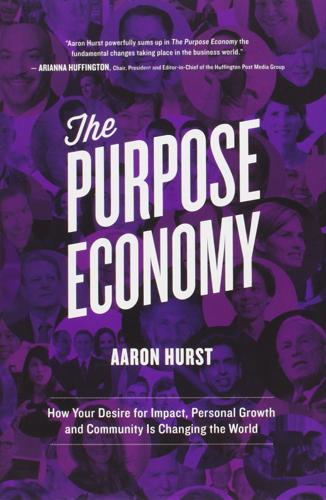
The Purpose Economy: How Your Desire for Impact, Personal Growth and Community Is Changing the World
by
Aaron Hurst
Published 31 Aug 2013
While Taproot used all five, different organizations moved markets by using different levers. 1. Mosaic: Solar Energy Mosaic, an online portal for solar energy investment and crowdsourced finance, utilized disruptive energy and financing sector technologies to address the public perception of solar’s high investment costs. Publicly subsidizing solar investments has been tricky from a policy perspective, but Mosaic’s decision to crowdsource its financing and “green” investment was not only a clever marketing tool, but another way to challenge perceptions of the business viability of solar energy. To date, $5.6 million has been invested through the Mosaic platform. 2.
…
LinkedIn, then, was part of this second wave, as it evolved past sites like Monster.com to allow us to assess professionals through a network of relationships between users. Google, too, was built on this 2.0 Internet, moving beyond searching web pages to allow us to search the network of links between users. Letters became emails (online letters), and emails became tweets (networked letters). Meetings became online discussion forums and eventually crowdsourcing. Social media is at the heart of Internet 2.0. By helping move people from consumers to creators online, social media drove the web’s next generation to emerge. It sparked our collective imagination in thinking about how technology could be leveraged for self-expression, community building, and service.
…
Furthermore, the combination of both emerging research and disruptive technology creates the opportunity for others in the field to develop even further. While this worked as a controlled pilot project, the next step is to understand the commercial viability of offshore OMEGA systems for a variety of uses, including biofuels production, wastewater treatment, and carbon sequestration. 3. Kickstarter: Crowdsourced Investment Kickstarter, an online platform for crowdfunding independent creative projects, launched in 2009 using secure online fundraising platforms (itself a recent disruptive technology). The platform recognized and filled a gap for creative entrepreneurs, designers, and other freelancers wanting to maintain creative control over their projects.
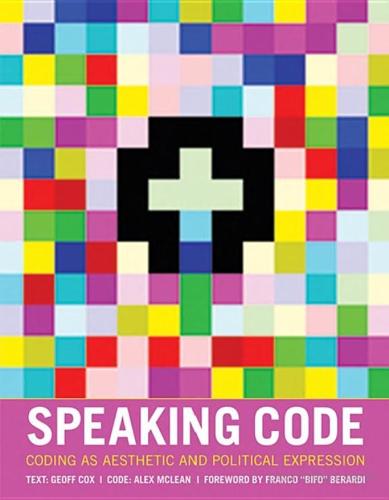
Speaking Code: Coding as Aesthetic and Political Expression
by
Geoff Cox
and
Alex McLean
Published 9 Nov 2012
Even more depressing is that so-called “Turkers” in the US use this “crowdsourcing marketplace” as a form of entertainment. As Trebor Scholz puts it, “The biggest trick that Mechanical Turk ever pulled off was to make Code Working 49 Figure 2.4 Aaron Koblin, The Sheep Market (2006). Image courtesy of Aaron Koblin. workers believe that what they do is not really work. That, at least, is somewhat suggested by the slogan on MTurk’s coffee mugs: ‘Why work if you can turk?’”38 Artists have also enthusiastically responded with experiments in crowdsourcing, such as Aaron Koblin’s The Sheep Market (2006), a collection of 10,000 sheep made by workers using Mechanical Turk, each paid US$0.02 to “draw a sheep facing to the left.”39 Whether effective irony or not, such examples reflect how labor is becoming ever more informational and communicative, leading to a situation in which all activities seem to have been turned into production.40 The Sheep Market is also a good example of how capital tries to capture the creative and communicative capacity of the socialized labor force and turn it into information that can be marketized.
…
“For Marx, the privileged example of really free working—happiness itself—is ‘composition,’ the construction of the communist score . . . communism whose song will free the space in which it resonates, and spreads.”118 A further example is Aaron Koblin and Daniel Massey’s artwork Bicycle Built for Two Thousand (2009), using Amazon’s Mechanical Turk crowdsourcing web service as mentioned earlier in the chapter. This time over two thousand recorded voices are collected and assembled into the song “Daisy Bell,” the same song that was used in the first example of musical speech synthesis in 1962 (which made the IBM 7094 the first computer to sing a song).119 Yet the comparison between the computer-synthesized vocals and the one created with distributed humans is not very encouraging, as both have been effectively synthesized.
…
Trebor Scholz, “On MTurk, Some Examples of Exploitation” (2009; available at http:// www.collectivate.net/journalisms/). 39. Aaron Koblin, The Sheep Market (2006; available at http://www.aaronkoblin.com/work/ thesheepmarket/). It cannot go unnoticed that Koblin is both an artist known for his innovative uses of crowdsourcing and also currently Creative Director of the Data Arts Team at Google Creative Lab. His biography is available at http://www.aaronkoblin.com/info.html. 40. Antonio Negri, Marx beyond Marx: Lessons on the Grundrisse, ed. Jim Fleming, trans. Harry Cleaver, Michael Ryan, and Maurizio Viano (New York: Autonomedia/Pluto, 1991), 77. 41.

Fewer, Better Things: The Hidden Wisdom of Objects
by
Glenn Adamson
Published 6 Aug 2018
Needless to say, there is a big difference between handling an object and seeing a picture of it on-screen. Yet there is already tremendous value in the V&A’s online provision and that of other institutions. And as massive as these recent efforts have been, there can be little doubt that they are only a first step. As we know from the example of Wikipedia, crowdsourcing can be highly effective when it comes to making knowledge available to the public. One can easily imagine a time soon when museums will adopt moderated “wiki” structures that will allow online readers to add content to catalog records. Already, institutions are exploring collaborative partnerships in which aggregated and hyperlinked search engines can connect collections to one another, raising the possibility of universal object databases for research and discovery.1 In the future, these and other currently unimaginable initiatives will certainly be put in place.
…
Chapter 2: A FEW WORDS ON CRAFT 1 On the question of craft’s presumed inferiority from the perspective of fine art, see Glenn Adamson, Thinking Through Craft (Oxford: Berg, 2008), and Glenn Adamson and Julia Bryan-Wilson, Art in the Making: Artists and Their Materials from the Studio to Crowdsourcing (New York: Thames and Hudson, 2016). 2 Hugh Aldersey-Williams, Periodic Tales (New York: Viking, 2011), p. 12. 3 Thomas Heatherwick and Maisie Rowe, Thomas Heatherwick: Making (London: Monacelli, 2015). 4 Andrew O’Hagan, “Imaginary Spaces: Es Devlin and the Psychology of the Stage,” New Yorker (March 28, 2016). 5 Andrew Bolton, ed., Alexander McQueen: Savage Beauty (New York: Metropolitan Museum of Art, 2011).
…
See also Susan Tunick’s fine book Terra-Cotta Skyline: New York’s Architectural Ornament (Princeton: Princeton Architectural Press, 2007). 2 For more on fabricators like Milgo/Bufkin, see Glenn Adamson and Julia Bryan-Wilson, Art in the Making: Artists and Their Materials from the Studio to Crowdsourcing (London: Thames and Hudson, 2016). 3 One report suggests that over five million dollars’ worth of American flags are imported from China every year, along with over 90 percent of fireworks used in the United States. See “The Fourth of July, Made in China,” Vox (July 3, 2017). 4 A. C.
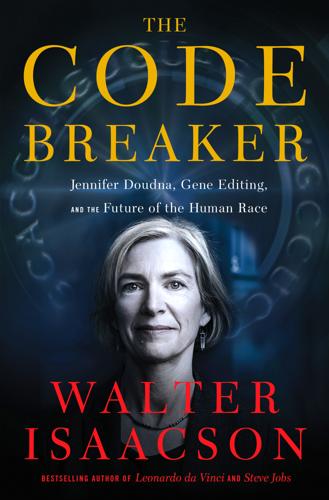
The Code Breaker: Jennifer Doudna, Gene Editing, and the Future of the Human Race
by
Walter Isaacson
Published 9 Mar 2021
In this way it may follow the path of the digital revolution, much of which, from Linux to Wikipedia, was driven by crowdsourcing. In the digital realm, there isn’t a clear line separating amateur from professional coders. The same might soon be true of bioengineers. Despite the dangers, there could be benefits if biotech followed this route. During a pandemic, it would be useful if societies could tap the biological wisdom and innovation of crowds. At the very least, it would be good to have citizens who could test themselves and their neighbors at home. Contact tracing and data collection could be crowdsourced. Today, there is a sharp line dividing officially sanctioned biologists from do-it-yourself hackers, but Josiah Zayner is dedicated to changing that.
…
That would have taken a prolonged series of treatments. But it did have an effect on the world of CRISPR regulation. By being the first person to try to edit his own DNA, he showed that the gene genie would someday be out of the bottle, which he insisted was a good thing. Zayner wants to make the genetic engineering revolution as open and crowdsourced as the early digital revolution was, when coders like Linus Torvalds created the open-source operating system Linux and hackers like Steve Wozniak gathered at the Homebrew Computer Club and talked about liberating computers from the exclusive control of corporations and government institutions.
…
One of the industry scientists took note of the novel coronavirus spreading out of China, which was still a few days away from causing national alarm. They should imagine a world, he said, where such viral pandemics were common; in such situations, it could be useful to enlist citizen-scientists to figure out ways to deploy real-time detection methods and crowdsource the collection and analysis of data. It was an important point, one that Zayner and the biohacker community had been trying to make. By the end of the meeting, Zayner was pleasantly surprised by the desire of officials to enlist the hacker community in the effort to deploy CRISPR to fight pandemics and to protect soldiers.
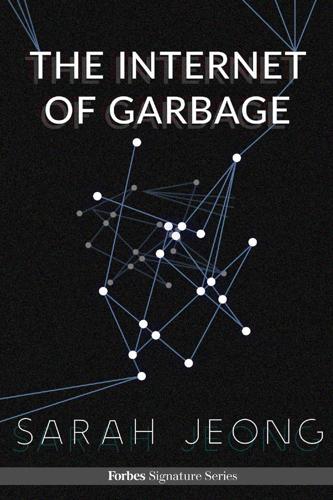
The Internet of Garbage
by
Sarah Jeong
Published 14 Jul 2015
Quinn was doxed—her personal information, including her address and Social Security number, was published. She moved. The harassment continued—and with some patient investigation, Quinn was able to document Gjoni egging on her harassers from behind the scenes. What Gjoni was doing was both complicated and simple, old and new. He had managed to crowdsource domestic abuse. Kathy Sierra After the previous examples, Kathy Sierra’s story will begin to sound redundant. But what happened to Sierra, an author and tech blogger, was in 2007, long before this current wave of interest in gendered harassment. At first she only received messages, messages that read just like the kinds received by Quinn, Criado-Perez, Sarkeesian, and Hess.
…
There’s a difference between info buried in small font in a dense book of which only a few thousand copies exist in a relatively small geographic location versus blasting this data out online where anyone with a net connection anywhere in the world can access it.” The context in which the publicly information gets posted matters. When the dox is posted “before a pre-existing hostile audience,” the likelihood that malicious action follows from it is much higher. Katherine Cross calls it “crowdsourcing harassment.” In the words of Kathy Sierra: “That’s the thing—it’s not so much the big REVEAL, it’s the context in which that reveal happens—where someone is hoping to whip others up into a froth and that at least some of them will be just angry and/or unbalanced enough to actually take action.
…
• Sustained Hounding This is, more or less, stalking—a person acting solo that doggedly goes after one or more individuals, whether by just sending them horrible messages, obsessively posting about their personal lives, or by even sending them physical mail or physically following them around. • Sustained Orchestration Orchestration is crowdsourced abuse—the recruitment of others into harassing someone in a sustained campaign. Orchestration may happen simply by posting dox, or by postings that incite an audience to go after someone for whatever reason. • Low-Level Mobbing This is the behavior of those who are recruited into a sustained campaign, but never themselves become orchestrators of the ongoing campaign.
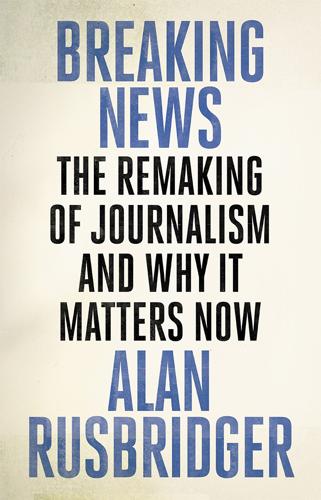
Breaking News: The Remaking of Journalism and Why It Matters Now
by
Alan Rusbridger
Published 14 Oct 2018
Would readers be more convinced if there were multiple accounts broadly corroborating one version? In addition to its own reporting the paper went in for two techniques that became routine in the early twenty-first century – aggregation and crowdsourcing. The aggregation took the form of excerpts from other local papers’ reports of the day. The crowdsourcing came from a petition and from numerous ‘private letters’ similar to Taylor’s. They painted a confusing picture, but the accumulation of evidence overwhelmingly demonstrated that the crowd had behaved peacefully and there was no possible justification for the violence meted out.
…
In time, a number of web start-ups saw ‘slow’ as a business model and attempted to do exactly what Emily was groping towards. If ‘follow my leader’ wouldn’t work as a leadership style, what would? We devised three or four hypothetical situations which we were likely to face – a high-profile sports event on a Saturday, a big breaking news story on a Thursday night, and so on – and crowdsourced solutions among editorial employees. For instance, they might consider a major prison report being published on, say, a Tuesday. The desk might want the home affairs correspondent on the Guardian to write a snap story, with the most important news line; they would then want a gut of the report, some analysis and maybe some audio or video.
…
We had used ‘open’ techniques in June 2009 at the height of the concern over the sums British MPs were claiming by way of expenses. When the entire database was released it consisted of 700,000 individual documents within 5,500 PDF files covering all 646 members of parliament. It would have taken weeks for a team of reporters to work their way through the material. So we asked the readers to help: we created a basic crowdsourcing app whereby readers could download any documents, comment on them and highlight anything that caught their eye. This act of sifting and commenting was of incalculable help to the reporters – and was enthusiastically embraced by numerous readers. Once again, pro-am worked to our advantage. We did it again on tax – with complex corporate structures that would have taken days to understand.
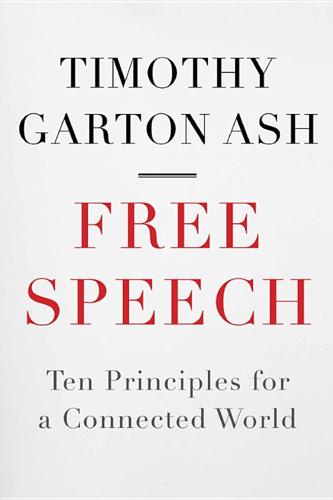
Free Speech: Ten Principles for a Connected World
by
Timothy Garton Ash
Published 23 May 2016
(Freespeechdebate.com raises an interesting question in this respect: how freely can we speak about free speech? Our community standards explain our approach and the reasoning behind it.184) A book by Jeff Howe, who seems to have coined the term ‘crowdsourcing’, concludes with ten pieces of advice, one of which is ‘pick the right crowd’.185 This is a plain but useful truth. Although the number of potential members is huge, the active membership of such crowds typically is not. Howe quotes an estimate that the optimal user base for crowdsourcing is around 5,000 people. Interestingly, that is roughly the size of the crowd you might have got together in person at a typical assembly in ancient Athens.186 As we shall see when we look more closely at free speech and knowledge, under principle 3, a few thousand very active editors have been the key to the success of Wikipedia.
…
David Kirkpatrick, ‘A Deadly Mix in Benghazi’, New York Times, 28 December 2013, http://www.nytimes.com/projects/2013/benghazi/#/?chapt=0, 198. our map is based on the interactive map prepared by John Hudson of The Wire, embedded in http://perma.cc/QVL3-YES9 and accessible directly at http://perma.cc/ATR9-VJ8C. The daily evolving, crowdsourced Wikipedia pages documenting the affair once again demonstrated the online encyclopaedia’s value as a crowdsourced aggregator of useful information on recent events. That information was not always reliable, but with more than 200 footnotes, many of them containing links, the reader could check it out 199. Raza S. Hassan, ‘Two Cops Among 17 Killed in Karachi’, Dawn, 22 September 2012, http://perma.cc/D6VP-TUDW 200. quoted in Washington Post, 17 September 2012; watch online at http://www.youtube.com/watch?
…
‘Each of them by himself may not be of a good quality; but when they all come together it is possible that they may surpass—collectively and as a body, although not individually—the quality of the few best . . . For when there are many, each has his share of goodness and practical wisdom’.182 The legal philosopher Jeremy Waldron calls this the ‘doctrine of the wisdom of the many’.183 Twenty-five hundred years ago, that was the original ‘crowdsourcing’. The internet offers us opportunities to create our own self-governing online communities and draw on the ‘wisdom of crowds’ across frontiers. Within the technical, legal and political outer limits set by the big cats and dogs, we can establish communities where we say: ‘we wish to conduct this debate by certain rules.
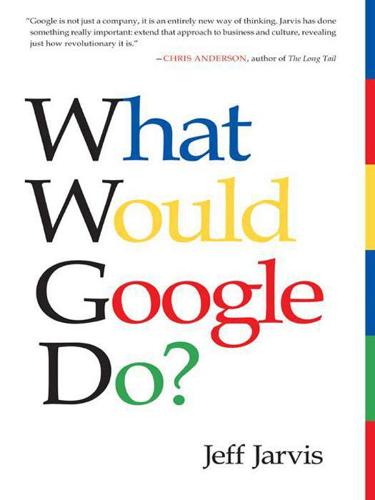
What Would Google Do?
by
Jeff Jarvis
Published 15 Feb 2009
Not every customer will want a personal relationship; most will eat and run. Following Wikipedia’s 1 percent rule, it takes only a small proportion of customers to get involved and contribute great value. Restaurants are even being crowdsourced. Trend-tracker Springwise reported that a restaurant called Instructables, where customers will make all decisions, is launching in Amsterdam. The Washington Post reported on the creation of an eatery called Elements, whose owners claim it is America’s first crowdsourced restaurant. Its volunteers collaborate on concept, design, and logo. The crowd will share 10 percent of the restaurant’s profits based on the depth of their involvement.
…
The more layers of data you have, the more you learn, the more useful your advice can be: People who like this also like that. Or here are the popular dishes among runners (a proxy for the health-minded) or people who order expensive wines (a proxy for good taste, perhaps). If you know about your crowd’s taste in wine, why not crowdsource the job of sommelier? Have customers rate and describe every bottle. Show which wines were ordered with which dishes and what made diners happy. If this collection of data were valuable in one restaurant, it would be exponentially more valuable across many. Thinking openly, why not compile and link information from many establishments so diners can learn which wines go best with many kinds of spicy dishes?
…
Just as the internet democratizes news and entertainment, it is opening up style. A darling of the open fashion movement is Threadless, a T-shirt company that invites users to submit designs, which are voted on, Digg-like, by the community. Winning designers receive $2,000 plus a $500 credit and $500 every time a design is reprinted. They become the Versaces of the crowdsourced runway. Just as in entertainment, we are learning that the public wants to create and leave its mark. A smart response is to create a platform to make that possible. CafePress.com and Zazzle provide the means for anyone to make and sell designs on T-shirts, mugs, bumper stickers, even underwear, getting a cut of every on-demand order.

No Ordinary Disruption: The Four Global Forces Breaking All the Trends
by
Richard Dobbs
and
James Manyika
Published 12 May 2015
By connecting real-time data from aircraft, passenger engineers, maintenance groups, operations staff, and suppliers, Boeing believes it can help its customers—airlines—maximize efficiency, profitability, and environmental performance.59 And as firms like Boeing and Airbus push toward increased digital tracking of individual parts and components, companies such as Fujitsu and IBM are becoming part of the aerospace ecosystem through their RFID and other automated intelligence tracking products and services. Companies are also relying on digital platforms to reach potential partners, to connect customers, suppliers, and financiers and to crowd-source ideas. Etsy, an online global marketplace in which independent artisans sell a wide range of products, connects thirty-million buyers and sellers and exemplifies the twenty-first-century digital ecosystem. The company recently partnered with Kiva to help crowd-source funding for its artisans. In addition to providing a digital portal that links buyers to sellers, Etsy provides entrepreneurial education and connects designers to suppliers.
…
Upgrading to premium membership—monthly prices start at $59.99 per month for the Business Plus account—affords the user greater insight into who has been looking at his or her profile, the ability to send more messages to potential leads, and the use of more advanced search filters.60 A third model is monetization of big data, either through innovative business-to-business offerings (for example, crowd-sourcing business intelligence or outsourced data science services) or through developing more relevant products, services, or content for which consumers are willing to pay. LinkedIn, for example, makes 20 percent of its revenue from subscriptions, 30 percent from marketing, and 50 percent from talent solutions, a core part of which is selling targeted talent intelligence and tools to recruiters.61 You will have to keep experimenting in order to capture more consumer surplus for your business.
…
Peer-to-peer lending and fund-raising platforms such as Kiva and Kickstarter know no national borders. Kiva, a web-based platform that allows users to lend money to people around the world, has reached over 1.2 million lenders, intermediating more than $600 million in loans.62 Since its founding in 2009, Kickstarter, a crowd-sourcing platform for creative projects—from movie documentaries to board games—has coordinated $1.3 billion in pledges from more than 6.9 million people.63 Among the notable projects funded on Kickstarter was the Veronica Mars movie, a sequel to the television show, which raised $5.7 million from more than ninety thousand “backers.”64 Alipay, the payment processing company launched in China by e-commerce giant Alibaba, has a unit that provides financing to small businesses.65 Exploit New Commercial Opportunities Companies with access to privileged sources of capital will have a clear competitive advantage.
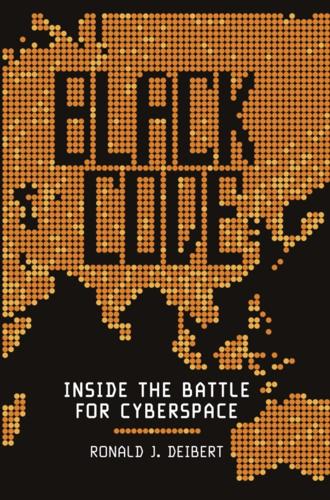
Black Code: Inside the Battle for Cyberspace
by
Ronald J. Deibert
Published 13 May 2013
In Haiti, for example, researchers used mobile-data patterns to monitor the movement of refugees and health risks following the massive hurricanes that slammed into that small island country in 2010. Crowd-sourcing data through the Ushahidi platform – a free and open-source software tool developed for information collection, visualization, and interactive mapping after the 2008 Kenyan election – is used to monitor elections, conflicts, and numerous other issues around the world. The LRA Crisis Tracker uses crowd-sourced data plotted on Ushahidi from radios distributed to local communities and other means to monitor atrocities undertaken by the Lord’s Resistance Army (LRA), responsible for one of the most ruthless insurgencies in Africa.
…
Each LRA-related incident is plotted on a map by type – civilian death, injury, abduction, looting – and once consolidated, the map shows the movements of the LRA across the region, and the scope, scale, and frequency of its actions. Incidents captured by cellphone cameras are linked to specific events on the website as corresponding evidence. In Kibera, Nairobi, Kenya’s largest slum, an experiment in crowd-sourcing data may revolutionize access to basic health care and sanitary services. Conditions in Kibera are dire: most residents are illegal squatters, and local officials regularly withhold basic services, including electricity, sewage treatment, and garbage collection. The most important commodity, water, is extremely scarce – turned on and off by capricious officials, and grossly overpriced by private dealers.
…
(At the time, WikiLeaks noted: “The material shows how a private intelligence agency works, and how they target individuals for their corporate and government clients.”) Typically these are posted to sites like Pastebin, a resource primarily used to share bits of computer code but repurposed for Anonymous-style disclosures of data and announcements of successful attacks. Most Anonymous DDOS attacks employ a crowd-sourced piling-on against targeted websites, using their preferred Low Orbit Ion Cannon (LOIC), a DDOS attack application that sympathetic users are encouraged to download and employ against a chosen victim. When used in numbers (i.e., in a “distributed” way), the LOIC makes repeated requests to servers from so many users that the servers are overwhelmed, taking them offline for a period of time.
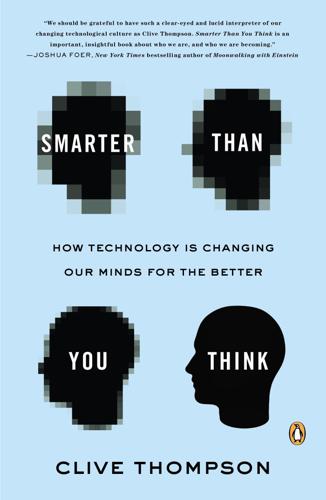
Smarter Than You Think: How Technology Is Changing Our Minds for the Better
by
Clive Thompson
Published 11 Sep 2013
seeking justice for a black teenager: Kelly McBride, “Trayvon Martin Story Reveals New Tools of Media Power, Justice,” Poynter.org, March 23, 2012, accessed March 26, 2013, www.poynter.org/latest-news/making-sense-of-news/167660/trayvon-martin-story-a-study-in-the-new-tools-of-media-power-justice/; Miranda Leitsinger, “How One Man Helped Spark Online Protest in Trayvon Martin Case,” NBC News, March 29, 2012, accessed March 26, 2013, usnews.nbcnews.com/_news/2012/03/29/10907662-how-one-man-helped-spark-online-protest-in-trayvon-martin-case; An Xiao Mina, “A Tale of Two Memes: the Powerful Connection Between Trayvon Martin and Chen Guangcheng,” The Atlantic, July 12, 2012, accessed March 26, 2013, www.theatlantic.com/technology/archive/12/07/a-tale-of-two-memes-the-powerful-connection-between-trayvon-martin-and-chen-guangcheng/259604/. The Haitian earthquake of 2010: Jessica Heinzelman and Carol Waters, Crowdsourcing Crisis Information in Disaster-Affected Haiti (United States Institute of Peace, October 2010); Francesca Garrett, “We Are the Volunteers of Mission 4636,” Ushahidi blog, January 27, 2010, accessed March 26, 2013, blog.ushahidi.com/2010/01/27/mission-4636/. “When compared side by side”: Heinzelman and Waters, Crowdsourcing, 2. slower-moving civic issues: Silvia Vinas, “Colombia: #Yodigoaquiestoy, a Tool for Denouncing Child Labor,” trans. Thalia Rahme, Global Voices, July 22, 2013, accessed March 26, 2013, globalvoicesonline.org/2012/07/22/colombia-yodigoaquiestoy-a-tool-for-denouncing-child-labor/; Geoavalanche, accessed March 26, 2014, geoavalanche.org/incident/.
…
(“You can get an invincible companion dog to fight for you with another human companion at the same time by speaking to Lod at Falkreath to find his dog Barbas.”) To be sure, not all gamers use these collective documents. It’s fun to solve problems on your own, so research shows most players use crowdsourced documents sparingly, such as when they’re stuck or pressed for time. But when it comes to the biggest, most sprawling games—like World of Warcraft—the number of players who dip into crowd wisdom is huge: According to one estimate in 2008, about 50 percent of English-speaking World of Warcraft players were using the game’s wiki every month.
…
If anyone who’s interested can briefly help out, almost everyone does, and soon the project is tapping into broad expertise: “The small contributions help the collaboration rapidly explore a much broader range of ideas than would otherwise be the case,” as the author Michael Nielsen notes in Reinventing Discovery, an investigation of crowdsourced science. Tahrir Supplies leveraged microcontributions brilliantly. Because Abulhassan made it so easy for activists to contribute news—all they needed to do was text, tweet at, or e-mail the central team—thousands did, and together they amassed a more complete picture of the situation than the central team could have achieved on its own.

Deep Medicine: How Artificial Intelligence Can Make Healthcare Human Again
by
Eric Topol
Published 1 Jan 2019
Doctors hoping to facilitate diagnostic accuracy can crowdsource data with their peers and find help with diagnostic work. This isn’t exactly System 2 thinking, but taking advantage of the reflexive input and experience of multiple specialists. In recent years several smartphone apps for doctors have cropped up, including Figure One, HealthTap, and DocCHIRP. Figure One, for example, is pretty popular for sharing medical images to get a quick diagnosis from peers. My team at Scripps recently published data from what is currently the most widely used doctor crowdsourcing app, Medscape Consult.24 Within two years of launch, the app was used by a steadily growing population of 37,000 physicians, representing more than two hundred countries and many specialties, with rapid turnaround on requests for help; interestingly, the average age of users was more than sixty years.
…
Within hours, multiple rheumatologists confirmed the diagnosis. Human Dx intends to recruit at least 100,000 doctors by 2022 and increase the use of natural-language-processing algorithms to direct the key data to the appropriate specialists, combining AI tools with doctor crowdsourcing. An alternative model for crowdsourcing to improve diagnosis incorporates citizen science. Developed by CrowdMed, the platform sets up a financially incentivized competition among doctors and lay people to crack difficult diagnostic cases. The use of non-clinicians for this purpose is quite novel and has already led to unexpected outcomes: as Jared Heyman, the company’s founder and CEO told me, the lay participants have a higher rate of accurate diagnosis than the participating doctors do.
…
Gleaning information from biomedical literature is not like making sense of Wikipedia entries. A computer reading a scientific paper requires human oversight to pick out key words and findings. Indeed, Andrew Su, a member of our group at Scripps Research, has a big project called Mark2Cure using web-based crowdsourcing, with participants drawn from outside the scientific community, to do this work. Volunteers (we call them citizen scientists) mine and annotate the biomedical literature, as represented by the more than 20 million articles in PubMed, a research database run by the National Institutes of Health.
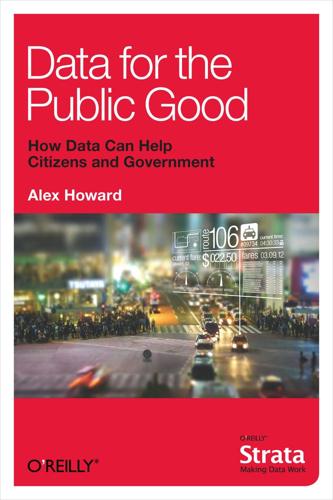
Data for the Public Good
by
Alex Howard
Published 21 Feb 2012
Here are just a few promising examples: Spending Stories, from the Open Knowledge Foundation, is designed to add context to news stories based upon government data by connecting stories to the data used. Poderopedia is trying to bring more transparency to Chile, using data visualizations that draw upon a database of editorial and crowdsourced data. The State Decoded is working to make the law more user-friendly. Public Laboratory is a tool kit and online community for grassroots data gathering and research that builds upon the success of Grassroots Mapping. Internews and its local partner Nai Mediawatch launched a new website that shows incidents of violence against journalists in Afghanistan.
…
First responders and crisis managers are using a growing suite of tools for gathering information and sharing crucial messages internally and with the public. Structured social data and geospatial mapping suggest one direction where these tools are evolving in the field. A web application from ESRI deployed during historic floods in Australia demonstrated how crowdsourced social intelligence provided by Ushahidi can enable emergency social data to be integrated into crisis response in a meaningful way. The Australian flooding web app includes the ability to toggle layers from OpenStreetMap, satellite imagery, and topography, and then filter by time or report type.

Uncanny Valley: A Memoir
by
Anna Wiener
Published 14 Jan 2020
I wasn’t thinking about how the home-sharing platform might also be driving up rents, displacing residents, or undermining the very authenticity that it purported to sell. Mostly, the fact that it functioned, and nobody had murdered me, seemed like a miracle. I had given myself a few days to get adjusted before starting the job. In the mornings, I bought coffee at a laundromat, consulted a crowdsourced reviewing app to find something to eat, and returned to my bedroom to spend the rest of the day reading technical documentation for the analytics software and panicking. The documentation was indecipherable to me. I didn’t know what an API was, or how to use one. I didn’t know how I would possibly provide technical support to engineers—I couldn’t even fake it.
…
They looked ready to gather kindling and build a lean-to, not make sales calls and open pull-requests from climate-controlled open-plan offices. They looked in costume to LARP their weekend selves. The culture these inhabitants sought and fostered was lifestyle. They engaged with their new home by rating it. Crowdsourced reviewing apps provided opportunities to assign anything a grade: dim sum, playgrounds, hiking trails. Founders went out to eat and confirmed that the food tasted exactly how other reviewers promised it would; they posted redundant photographs of plated appetizers and meticulous restaurant-scapes.
…
I donated a little to a local organization that provided mobile toilets and showers to homeless people in my neighborhood. I bought a vibrator with a USB port, because it made me feel more technical. I enrolled in a gym with a saltwater pool that I knew I’d never have time to swim in, and booked an appointment with a hypnotherapist recommended by a crowdsourced reviewing platform. I spent two hundred dollars on a single session, hoping to stop biting my nails, during which I accidentally fell asleep and had an unerotic dream about the founder of the social network everyone hated. The rest of my money went straight into a savings account. Okay okay okay, I reassured myself, hiding in the server room on bad days, reviewing my bank balance.

The Great Wave: The Era of Radical Disruption and the Rise of the Outsider
by
Michiko Kakutani
Published 20 Feb 2024
When it came to the digital battlefront, the Ukrainians again demonstrated the asymmetrical advantages technology can confer: how innovative, crowdsourced methods can actually get the better of a massive state-run intelligence and propaganda apparatus. Since the 2014 Russian invasion and annexation of Crimea, the Ukrainian government made a push to build up its digital infrastructure and counter Russian disinformation—moves accelerated by President Zelensky, who established the Ministry of Digital Transformation in 2019. That agency’s many initiatives included efforts to increase investments from foreign tech companies and the development of crowdsourcing apps that would enable civilians to report on Russian troop movements and get food, water, and medical supplies delivered to communities in need.
…
Taiwan, for instance, made some of its COVID-19 data publicly accessible, empowering members of its tech community to create various tools—including an app debunking COVID disinformation and a mask availability map, which was credited with minimizing panic-buying and hoarding. A growing number of organizations—including the U.S. government and the magazine Scientific American—have established “citizen science” pages with links to crowdsourced programs looking for volunteers to help gather and analyze data in fields as disparate as astronomy, ecology, cultural studies, and statistics. Tasks can include taking photos of clouds, recording earthquake tremors, documenting endangered wildlife, and transcribing manuscripts from the Elizabethan era.
…
As businesses have increasingly come to appreciate outsiders’ ability to innovate (to “think outside the box,” “color outside the lines,” “bring fresh eyes to old problems,” whatever management cliché you like), they have begun to cultivate input from nonemployees and nonexperts. The company InnoCentive, for instance, provides a crowdsourcing platform whereby businesses, not-for-profit organizations, and government agencies (like NASA) can post unsolved problems (or “challenges”), and regular folks—be they experts in adjacent fields, amateur scientists, scholars, or kids—can submit solutions. Prizes as high as a million dollars have been offered for challenges involving matters like new methods of carbon capture and storage and easy-to-use bacteria detection tests for water.
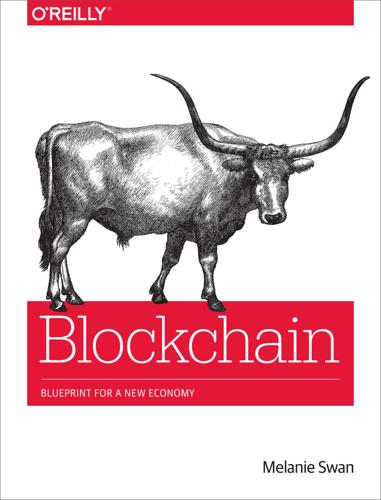
Blockchain: Blueprint for a New Economy
by
Melanie Swan
Published 22 Jan 2014
“World Citizenship Project Features in Wired Magazine.” Blog post, November 1, 2014. http://chrisellis.me/world-citizenship-project-features-in-wired-magazine/. 113 De Soto, H. The Mystery of Capital: Why Capitalism Triumphs in the West and Fails Everywhere Else. New York: Basic Books, 2003. 114 Swan, M. “Crowdsourced Health Research Studies: An Important Emerging Complement to Clinical Trials in the Public Health Research Ecosystem.” J Med Internet Res 14, no. 2 (2012): e46. 115 Mishra, P. “Inside India’s Aadhar, the World’s Biggest Biometrics Database.” TechCrunch, December 6, 2013. http://techcrunch.com/2013/12/06/inside-indias-aadhar-the-worlds-biggest-biometrics-database/. 116 Deitz, J.
…
Existing Customers Can Access Their Results Here Until January 1st 2015.” http://en.wikipedia.org/wiki/DeCODE_genetics. 143 Castillo, M. “23andMe to Only Provide Ancestry, Raw Genetics Data During FDA Review.” CBS News, December 6, 2013. http://www.cbsnews.com/news/23andme-to-still-provide-ancestry-raw-genetics-data-during-fda-review/. 144 Swan, M. “Health 2050: The Realization of Personalized Medicine Through Crowdsourcing, the Quantified Self, and the Participatory Biocitizen.” J Pers Med 2, no. 3 (2012): 93–118. 145 ———. “Multigenic Condition Risk Assessment in Direct-to-Consumer Genomic Services. Genet Med 12, no. 5 (2010): 279–88; Kido, T. et al. “Systematic Evaluation of Personal Genome Services for Japanese Individuals.”
…
Digital Currency Magnates, July 15, 2014. http://dcmagnates.com/nearly-2-million-worth-of-vericoin-stolen-from-mintpal-hard-fork-considered/. 189 Greenberg, A. “Hacker Hijacks Storage Devices, Mines $620,000 in Dogecoin.” Wired, June 17, 2014. http://www.wired.com/2014/06/hacker-hijacks-storage-devices-mines-620000-in-dogecoin/. 190 Swan, M. “Scaling Crowdsourced Health Studies: The Emergence of a New Form of Contract Research Organization.” Pers Med. 9, no. 2 (2012): 223–34. 191 Reitman, R. “Beware the BitLicense: New York’s Virtual Currency Regulations Invade Privacy and Hamper Innovation.” Electronic Frontier Foundation, October 15, 2014. https://www.eff.org/deeplinks/2014/10/beware-bitlicense-new-yorks-virtual-currency-regulations-invade-privacy-and-hamper. 192 Santori, M.

Spies, Lies, and Algorithms: The History and Future of American Intelligence
by
Amy B. Zegart
Published 6 Nov 2021
“Exoplanet Explorers Discover Five-Planet System,” Electronic Specifier, January 12, 2018, https://www.electronicspecifier.com/industries/aerospace-defence/exoplanet-explorers-discover-five-planet-system. 57. Philip J. Marshall et al., “SPACE WARPS—I. crowdsourcing the discovery of gravitational lenses,” Monthly Notices of the Royal Astronomical Society, January 11, 2016, https://academic.oup.com/mnras/article/455/2/1171/1103277; Adam Hadhazy, “Crowdsourcing the Universe: How Citizen Scientists Are Driving Discovery (Kavli Roundtable),” January 15, 2016, https://www.space.com/31626-crowdsourced-astronomy-finding-faint-galaxies-in-deep-space.html. 58. Melissa Hanham, Jeffrey Lewis, Catherine Dill, Grace Liu, Joseph Rodgers, Octave Lepinard, Brendan Knapp, Olivia Hallam, and Ben McIntosh, “Geo4Nonpro 2.0,” CNS Occasional Paper #38, October 2018, Middlebury Institute of International Studies at Monterey, 19–20. 59.
…
But the computer completed the job eighty times faster than humans, taking just forty-two minutes to scan an area of approximately ninety thousand square kilometers (about three-fourths the size of North Korea).54 As noted in chapter 5, machine learning also holds promise for faster sifting of large quantities of written information—everything from trade documents that might suggest illicit financing schemes to the metadata of photos online—such as the date and time stamp on the picture, the type of camera used, the software that processed the image, and where the camera was placed when the picture was taken.55 In addition, computer modeling is enabling analysts to better understand the specifications and functions of structures already built. Online crowdsourcing is offering promising new avenues, too. Already, thousands of citizen scientists have successfully sifted through massive quantities of data to help a Cal Tech and UC Santa Cruz team identify several new exoplanets56 and an international team of physicists identify new gravitational lenses.57 In 2016, Melissa Hanham at the Center for Nonproliferation Studies began a nuclear threat crowdsourcing initiative called Geo4Nonpro, which drew several hundred imagery experts together. They discovered the geolocation of North Korea’s clandestine Kangson uranium enrichment facility.58 The New Nuclear Sleuths: Who’s Who and What’s Different All of these developments have given rise to a cottage industry of non-governmental nuclear intelligence collectors and analysts.
…
There’s also metadata—such as the time, location, and equipment used to take a photograph posted online—downloadable 3D modeling applications, and community data sharing sites like OpenStreetMap, which allows users to post their GPS coordinates from their phones. All of these capabilities offer new clues and tools for nuclear sleuths. As discussed more below, the online information ecosystem is making possible exciting new opportunities for societal verification or open crowdsourcing to assess nuclear threat information. But it is also making deception easier. In the new online ecosystem, information anywhere can go viral, regardless of its quality or credibility. Automated Analytics: Machine Learning, Computer Modeling, and More Large increases in computing power and training data over the past decade have spawned the creation of publicly available machine learning techniques that can analyze massive quantities of data at machine speed.

Rule of the Robots: How Artificial Intelligence Will Transform Everything
by
Martin Ford
Published 13 Sep 2021
This work had to be done manually; only a human being could make the proper association between a photograph and a descriptive label. Because the cost of hiring even undergraduates to take on such a massive task would have been prohibitive, Li’s team turned to Amazon’s Mechanical Turk, a newly developed platform that crowdsourced information-oriented tasks to remote workers, often in low-wage countries.12 Li’s project, known as ImageNet, was published in 2009 and soon became an indispensable resource for research into machine vision. Beginning in 2010, Li organized an annual competition in which teams from universities and corporate research labs turned their algorithms loose to try to label images drawn from the massive dataset.
…
Five years after the 2012 ImageNet competition that marked the onset of the deep learning explosion, the image recognition algorithms had become so proficient that the annual competition was reoriented toward a new challenge involving the recognition of real-world three-dimensional objects.2 In cases where labeling all this data requires the kind of interpretation that only a human can provide, as in attaching descriptive annotations to photographs, the process is expensive and cumbersome. One common solution is to copy the approach employed by Fei-Fei Li for the ImageNet dataset and turn to crowdsourcing. Platforms like Mechanical Turk make it possible to pay a distributed team of people pennies to do this work. The opportunity to streamline this process has given rise to a number of startup companies that are specifically focused on finding efficient ways to annotate data in preparation for supervised learning.
…
The critical importance of accurately labeling massive datasets, especially for applications that involve understanding visual information, is especially well demonstrated by the meteoric ascent of Scale AI, which was founded by nineteen-year-old MIT dropout Alexandr Wang in 2016. Scale AI contracts with over 30,000 crowdsourced workers who label data for clients including Uber, Lyft, Airbnb and Alphabet’s self-driving car division, Waymo. The company has received more than $100 million in venture capital and now ranks as a Silicon Valley “unicorn”—a startup valued in excess of $1 billion.3 In many other cases, however, nearly incomprehensible quantities of beautifully labeled data are generated seemingly automatically—and for the companies that possess it, virtually free of charge.
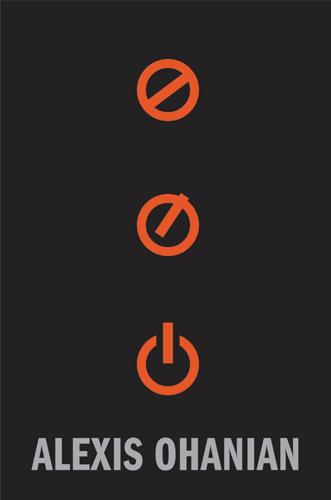
Without Their Permission: How the 21st Century Will Be Made, Not Managed
by
Alexis Ohanian
Published 30 Sep 2013
They faced far, far more challenges than I did in the process of getting their companies going. And they were doing it with the same bullish ambitions in spite of tremendous hardships, such as a thirty-year dictatorship that had been recently overthrown by a haphazard collective of revolutionaries with the hope of crowdsourcing a constitution and holding Egypt’s first free and fair election in decades. They had no hesitation. They were as fearless as any other entrepreneurs you’d meet, only they had legitimate fears in a country that was figuratively and literally rebuilding. Taking the agony out of travel also turns out to be the basis for a viable business in many contexts, including on the congested streets of Cairo.
…
That’s what five cousins—Aly Rafea, Mohamed Rafea, Gamal Sadek, Mostafa Beltagy, and Yehia Ismail—are doing with Bey2ollak (it’s Egyptian slang, used when telling someone about something you’ve heard), a mobile application (iOS, Android, BlackBerry, Windows, and even Nokia!) that allows commuters to crowdsource more effective routes to avoid the city’s notoriously awful traffic. Turn on the app and check road conditions updated by your fellow drivers. Return the favor next time you’re stuck in traffic with a simple touch (select red for bad, yellow for meh, and green for clear). It works. And it doesn’t require expensive infrastructure or—you guessed it—anyone’s permission.
…
Soon, Charles was hard at work developing a novel way to tap this potentially tremendous resource. Charles took a simple pencil sketch of his idea to a computer programmer who had recently emigrated from Poland. For two thousand dollars, the programmer built Charles a working version of DonorsChoose.org. This was in 2000, years before anyone was using phrases like “crowdsourcing” or “social media.” The first version of the website was markedly low-tech. Charles used a manual credit-card reader, like the ones you find in grocery stores, to process donations. It wasn’t pretty or fast, but it worked. The term “minimum viable product” hadn’t been coined yet, but that’s exactly what Charles put together.

WTF?: What's the Future and Why It's Up to Us
by
Tim O'Reilly
Published 9 Oct 2017
So, for example, consider how the “Harnessing Collective Intelligence” vector became clear to us: 1. In the late 1980s and early 1990s, we were exposed to the “barn raising” style of collaborative software development of the early Unix community—what we later came to call open source software. 2. In developing our first books, we practiced a version of this kind of crowdsourcing ourselves. In 1987, I wrote a book called Managing UUCP and Usenet, which described how to use a program called the Unix-to-Unix Copy Program (UUCP) to connect to Usenet, a distributed dial-up precursor to today’s social web. It was on Usenet that the world’s software developers conversed about their work, shared tips and advice, and, increasingly, talked about everything from sex to politics.
…
In 1992, trying to create a print book that emulated the link style of the World Wide Web, I designed and coauthored a book called Unix Power Tools, which wove together tips and tricks harvested from hundreds of Internet contributors into a hyperlinked web of short articles, each of which could be read independently because it also contained links to additional articles providing tutorial and background information that my coauthors Jerry Peek and Mike Loukides and I felt was needed to make sense of the crowdsourced lessons. 3. In 1992 and 1993, as we turned “the Whole Internet Catalog” into GNN, the Global Network Navigator, every day we sought out the best of the new sites joining the World Wide Web, curating them into a rich catalog of experiences created, as if by magic, by a distributed network of people pursuing their own passions. 4.
…
I still remember a blog post by Robert Scoble in which he gleefully demonstrated how human contribution was central to search engines. “I just discovered a new restaurant in Seattle. Its website isn’t in Google. But it will be tomorrow, because I just linked to it!” 5. In 1995, we saw how eBay and Craigslist brought crowdsourcing to products and services, and began to realize that the magical aggregation of millions of people into new kinds of services wasn’t limited to “content,” but could also be used in the physical world. 6. We watched how Amazon ran rings around Barnes & Noble and Borders in online bookselling by applying the same principles that Google used to make a better search engine to more effective e-commerce.

Future Politics: Living Together in a World Transformed by Tech
by
Jamie Susskind
Published 3 Sep 2018
The code is curated by nearly 12,000 contributors, each working on the premise that any technical problem—no matter how difficult—can be solved if enough people are working on it. Where it is undertaken without topdown control, this kind of activity has been called commons-based peer production or open-source production.50 Where there’s more central direction and control, it tends to be called crowdsourcing. In the digital lifeworld it will be possible, using commons-based peer production or crowdsourcing, to invite the citizenry directly to help set the political agenda, devise policies, and draft and refine legislation. Advocates of this sort of democracy, or variants of it, have called it wiki-government, collaborative democracy, and crowdocracy.51 I refer to it as Wiki Democracy.
…
And the disciplinary implications are perhaps even more imposing: one can imagine humans not just refraining from crime, but from perfectly legal things like going to the house of a friend who happens to have a criminal record, which might lead a system to predict, by association, that they will go on to commit crimes themselves. Rateable In the last few years, you may have used an online platform that ‘crowdsources’ ratings for certain goods—movies, Uber drivers, hotels, restaurants, dry cleaners, and so forth. You may not have suspected that, in due course, you might be the subject of other people’s ratings. We’re already ranked and scored in various ways—from credit scores that determine whether we can secure finance to ‘health scores’ compiled from information gathered about us online.45 OUP CORRECTED PROOF – FINAL, 26/05/18, SPi РЕЛИЗ ПОДГОТОВИЛА ГРУППА "What's News" VK.COM/WSNWS 140 FUTURE POLITICS In the digital lifeworld it will be possible for each person to bear a holistic personal rating compiled of scores awarded by friends, colleagues, businesses, and acquaintances on whatever measures are considered socially valuable: trustworthiness, reliability, attractiveness, charm, intelligence, strength, fitness, and so forth.
…
This new approach to data-based campaigning has been called the ‘engineering of consent’37 and more ominously, the ‘weaponized AI propaganda machine’.38 Second, the internet has changed the relationship between government and citizens, enabling them to work together to solve public policy problems. Online consultations, open government, e-petitions, e-rulemaking,39 crowdsourcing of ideas (as in Estonia and Finland),40 hackathons, and participatory budgeting (as in Paris, where residents propose and vote on items of public spending)41 are all new ways of coming up with ideas, subjecting policy to scrutiny and refinement, bringing private-sector resources to bear on big problems, and increasing the efficiency and legitimacy of government.42 The notion of e-government is underpinned by one question, posed by Beth Simone Noveck: ‘If we can develop the algorithms and platforms to target consumers, can we not also target citizens for the far worthier purpose of undertaking public service?’

Platform Revolution: How Networked Markets Are Transforming the Economy--And How to Make Them Work for You
by
Sangeet Paul Choudary
,
Marshall W. van Alstyne
and
Geoffrey G. Parker
Published 27 Mar 2016
And Airbnb, the world’s largest accommodation provider, owns no real estate.”3 The community provides these resources. Strategy has moved from controlling unique internal resources and erecting competitive barriers to orchestrating external resources and engaging vibrant communities. And innovation is no longer the province of in-house experts and research and development labs, but is produced through crowdsourcing and the contribution of ideas by independent participants in the platform. External resources don’t completely replace internal resources—more often they serve as a complement. But platform firms emphasize ecosystem governance more than product optimization, and persuasion of outside partners more than control of internal employees.
…
One of the greatest assets any platform—indeed, any business—can have is a dedicated community. This doesn’t happen by accident. Vibrant communities are nurtured by skilled platform managers in order to develop norms, cultures, and expectations that generate lasting sources of value. iStockphoto, today one of the world’s largest markets for crowdsourced photographs, was originally founded by Bruce Livingstone to sell CD-ROM collections of images by direct mail. As that business tanked, Bruce and his partners hated the thought that their work might go to waste. So they began giving away their images online.25 Within months, they were discovered by thousands of people who not only downloaded images but asked to share their own images as well.
…
Platform-based students for whom a conventional credential is important can often make special arrangements to receive one—for example, at Coursera, college credit is a “premium service” you pay extra for. The platform-based unbundling of educational activities is separating the teaching of specific skills from reliance on vast, multipurpose institutions like traditional universities. Duolingo uses a crowdsourcing platform to teach foreign languages. Its founder, Luis von Ahn, is a computer scientist who never studied language instruction. After reading the most respected books on the topic, he performed comparative tests of the leading theories using the crowds that visited his website and an evolving set of testing tools to measure the results.
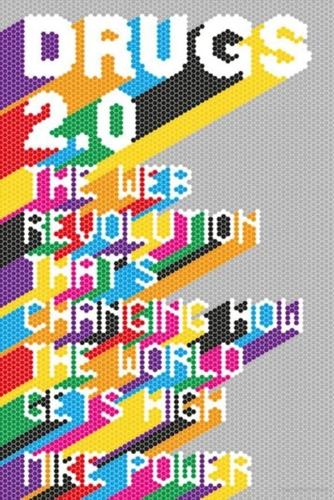
Drugs 2.0: The Web Revolution That's Changing How the World Gets High
by
Mike Power
Published 1 May 2013
The site’s servers are located in the Netherlands, thanks to the country’s lenient and liberal drug laws. It has 29,345 user-generated reports on pills sold as Ecstasy, and gets around 15,000 unique visitors each day. It is a self-managing community, with moderators keeping an eye on threads to ensure that dealers do not use the service to advertise their products. ‘Like any site that crowdsources user reviews there is always the danger of people gaming the system, but we find that good information always drives out bad,’ the site’s administrator told me by email. To those who argue that the site encourages drug use, he offers the baldly factual response: ‘Studies on the influence of drug information, and particularly pill testing, have shown that the more information people have about what is in pills the less likely they are to take them.’
…
The story was broadcast and published on the BBC’s website. Andrew Lewman audibly facepalms as he relates the story over the telephone. ‘What better advert could they have given? Not only does this illegal site sell rare drugs, it sells very high-quality product.’ But you didn’t need to trust the BBC. The forums at the site offered crowdsourced proof of the best vendors and worst scammers. In June 2012, reviews for the best LSD vendor ran to eighty-one pages, with 50,000 views, heroin to twenty-two pages with 8,000 views. Cocaine vendors were reviewed in a 292-page behemoth with over 90,000 views, and MDMA ran in at 129 pages with over 60,000 views.
…
The torrent software on the downloaders’ machines then assembles the pieces of data into a film or music file. Nakamoto’s elegant solution to the double-spend dilemma was to create what he called a ‘block chain’, a distributed, or shared ledger of all transfers of coins from one person to another. Crowdsourced, decentralized, massively distributed cryptographic cash had arrived. Users, known as miners, donate processor time to maintain and update the block chain, which records all transactions between users, and in the process also ‘dig’ for new coins. Miners’ computers send evidence of those transactions to the network, racing each other to solve these irreversible crypotographic puzzles that contain several transactions.
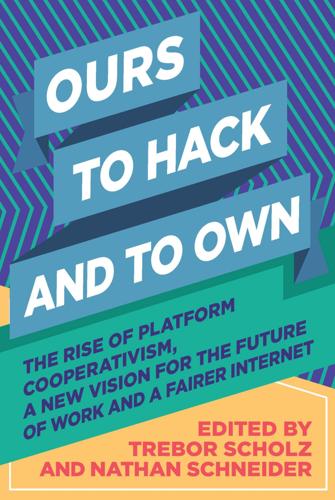
Ours to Hack and to Own: The Rise of Platform Cooperativism, a New Vision for the Future of Work and a Fairer Internet
by
Trebor Scholz
and
Nathan Schneider
Published 14 Aug 2017
A very different type of app from the aforementioned is Panoply (presented by Robert Morris): an online intervention that replaces a health professional with a crowd-sourced response to individuals with anxiety and depression. What I find significant here is that it has the added effect of mobilizing a network of people, which may be one step in a larger trajectory of support that can also become a local neighborhood network. Panoply coordinates support from crowd workers and unpaid volunteers. It incorporates recent advances in crowdsourcing and human computation, enabling timely feedback and quality vetting. Crowds are recruited to help users think more flexibly and objectively about stressful events.
…
Initially, at these events, discussions focused on the Italian Workerists, immaterial labor, and “playbor.” Artists like Burak Arikan, Alex Rivera, Stephanie Rothenberg, and Dmytri Kleiner played pioneering roles in alerting the public to these issues. Later, debates became more concerned with “crowd fleecing,” the exploitation of thousands of invisible workers in crowdsourcing systems like Amazon Mechanical Turk or content moderation farms in the Philippines. Over the past few years, the search for concrete alternatives for a better future of work has become more dynamic. The theory of platform cooperativism has two main tenets: communal ownership and democratic governance.
…
Each of these seeks to enable members of online networks to carry on direct, sustained, and somewhat complicated discussions, and then to clarify group sentiment and reach decisions that participants see as binding, legitimate, and meaningful. NETWORKS OF PEER PRODUCERS In a natural extension of such capacities, open value networks, or OVNs, are attempts to enable bounded networks of participants to carry out crowdfunding, crowdsourcing of knowledge, and co-budgeting among their identifiable participants. OVNs such as Enspiral and Sensorica have been described as an “operating system for a new kind of organization” and a “pilot project for the new economy.” These enterprises consist of digital platforms that facilitate new modes of decentralized and self-organized social governance, production, and livelihoods among members of distinct communities.
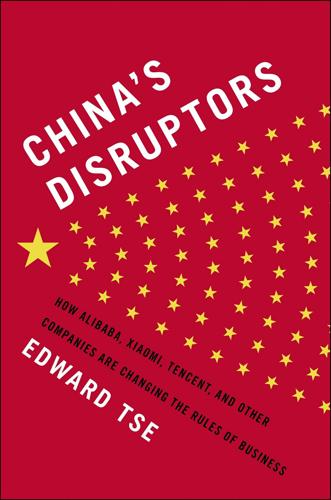
China's Disruptors: How Alibaba, Xiaomi, Tencent, and Other Companies Are Changing the Rules of Business
by
Edward Tse
Published 13 Jul 2015
its valuation up to $40–$50 billion: See Bloomberg News, “Xiaomi Said to Seek Funding at About $50 Billion Valuation,” November 4, 2014, available at http://www.bloomberg.com/news/2014-11-03/xiaomi-said-to-seek-funding-at-valuation-of-about-50-billion.html (accessed November 5, 2014). Lei told TechHive Web site journalist Michael Kan: See Michael Kan, “China’s Xiaomi Takes Crowdsourced Phone Development Model Abroad,” TechHive, May 8, 2013, at http://www.techhive.com/article/2038184/chinas-xiaomi-takes-crowdsourced -phone-development-model-abroad.html (accessed September 9, 2014). Companies wanting to sell into these markets have released an extraordinary number of products: See Edward Tse, The China Strategy (New York: Basic Books, 2010), pages 27–28.
…
Its $25 billion initial public offering in 2014 was the world’s largest to date Pony Ma, whose Shenzhen-based company, Tencent, dominates online games and messaging in China, and is becoming a major rival to Alibaba in e-commerce Robin Li, the founder of China’s leading search engine and social network company, Baidu, which provides more than 60 percent of Chinese search engine activity (Baidu’s influence, along with that of Alibaba and Tencent, is such that many commentators refer to this trio of China’s three most prominent Internet companies as the BATs) Ren Zhengfei, the founder of Huawei, China’s largest privately owned exporter and the world’s leading manufacturer of mobile and fixed-line telecom-network equipment Yang Yuanqing, who, as chief executive of Lenovo, has built the company into the world’s number-one seller of personal computers and a top five seller of smartphones Lei Jun, a serial entrepreneur whose latest business, Xiaomi, has turned China’s smartphone market on its head and become a global rival to Samsung. He uses innovative crowdsourcing techniques to determine the direction of development of his products and sell them with almost no outlay for marketing Yu Gang, a former Dell executive whose Yihaodian online supermarket, with annual revenues that have risen to nearly $2 billion in just five years, is transforming how urban Chinese buy their daily necessities Li Shufu, the founder of Geely Auto, China’s most successful privately owned carmaker, and one of the most prominent global automakers, thanks to his takeover of Volvo in 2011 Xu Lianjie, a former farmer who has fended off competition from Procter & Gamble, Kimberly-Clark and other Western consumer-goods firms to build Hengan International, China’s leading maker of tissues, diapers, and sanitary napkins Diane Wang, who, after working for Microsoft and Cisco, served as CEO of Joyo.com, an online bookstore launched by Xiaomi’s Lei Jun, and then—when that business was sold to Amazon—launched her own global business-to-business Web site, DHgate.com Chen Haibin, the owner of a chain of medical laboratories pioneering private company involvement in improving standards and choice in China’s largely publicly run health-care system Wang Jingbo, who, since founding Noah Wealth Management in 2005, has signed up more than 50,000 of China’s richest people to establish the country’s leading private wealth management company Zhang Yue, a maverick from central China’s Hunan Province who, having created a globally successful coolant-free air-conditioning business, now wants to build environmentally sustainable cities using prefabricated modules; to demonstrate the viability of his products and ideas, he is currently seeking permission to erect the world’s highest building in Changsha, Hunan’s capital Not all Chinese entrepreneurs are successful, of course.
…
In many key areas, businesses cope through adopting guerrilla strategies as a way of coping. Take marketing, where a lack of experience at running traditional promotional campaigns forces companies to develop their own offbeat ways of attracting and retaining new customers. An example of this is Xiaomi’s use of crowdsourcing to get input on ways of improving its phones and to create a buzz for each new release. Coping with wage pressures. Companies also need to innovate to overcome China’s shrinking labor force and fast-rising costs. Fifteen years ago, Chinese workers were among the cheapest in the world, with average monthly wages of less than $100, one-third the rate of Mexico’s.
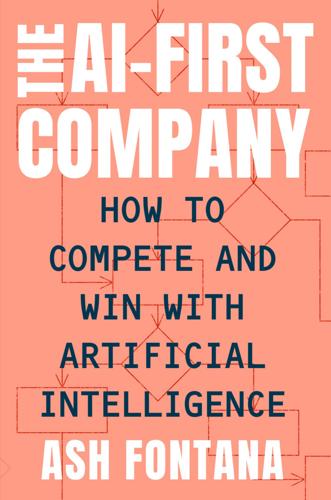
The AI-First Company
by
Ash Fontana
Published 4 May 2021
Accessing and owning processed data to feed models can be the single hardest problem in starting a vertical, AI-First business. Supervised ML models need labeled data. Getting lots of labeled examples for specific domains is hard. For example, where would you find a hundred thousand images of 2001 Chevy Silverado fenders? Crowdsourcing, running surveys, or building a tool for car mechanics is not likely to yield that many images in short order. You’d probably have to procure such data from a company that has been photographing cars for years, like a car manufacturer, a chain of body shops, or an insurance company. In the absence of existing labeled datasets, build one.
…
The way around this is to have more labelers so that the incorrect labels are effectively diluted by the correct labels. Mathematically, if a labeler makes a mistake 5 percent of the time, the probability that three labelers make the same mistake is 5 percent × 5 percent × 5 percent, or just 0.01 percent. Outsourced or crowdsourced workers both create and label data. They can collect data in a multitude of ways: for example, by calling people, completing online searches, copying information manually from a website, and other methods that can be reduced to a standard, discrete, short task. They label data using the interface provided to them by the marketplace to both add labels and track their work.
…
Companies tend to experiment with both insourcing and outsourcing, achieving a balance over time, depending on their labeling needs. Outsourcing can take many forms. There are consulting firms, business process outsourcing firms, and others that will create custom labeling operations with associated expenses and margin for them. On the other hand, there is a burgeoning crowdsourcing industry in which individuals work for a small fee on a per-task basis. The aforementioned Mechanical Turk and Upwork are examples of marketplaces for task-based labor. MACHINE-GENERATED DATA Machines can consistently, quickly, and cheaply generate data for models, either as a complement to human-generated data or a stand-alone resource.

The Zero Marginal Cost Society: The Internet of Things, the Collaborative Commons, and the Eclipse of Capitalism
by
Jeremy Rifkin
Published 31 Mar 2014
Interdisciplinary and multicultural studies prepare students to become comfortable entertaining different perspectives and more adept at searching out synergies between phenomena. The idea of learning as an autonomous private experience and the notion of knowledge as an acquisition to be treated as a form of exclusive property made sense in a capitalist environment that defined human behavior in similar terms. In the Collaborative Age, learning is regarded as a crowdsourcing process and knowledge is treated as a publically shared good, available to all, mirroring the emerging definition of human behavior as deeply social and interactive in nature. The shift from a more authoritarian style of learning to a more lateral learning environment better prepares today’s students to work, live, and flourish in tomorrow’s collaborative economy.
…
Harvard professor Gregory Nagy recruited ten of his former teaching fellows to help serve as online study group facilitators in the MOOC based on his popular course, Concepts of the Ancient Greek Hero.12 Upon graduating the Coursera and edX courses, the students receive a certificate of completion. The crowdsourcing approach to learning online is designed to foster a distributed, collaborative, peer-to-peer learning experience on the Commons—the kind that prepares students for the coming era. By February 2013, Coursera had approximately 2.7 million students from 196 countries enrolled in hundreds of courses.13 EdX’s first course, in 2012, had an enrollment of 155,000 students.
…
A similar software program developed by Epagogix analyzes movie scripts to project box office hits for the film industry.36 Its success in identifying winners has made algorithm assessment standard fare in the industry. In the future, these kinds of forecasting tools will eliminate the need to hire pricey marketing agents to conduct expensive focus-group encounters and other marketing-research initiatives, the accuracy of which might pale against the crowdsourcing accuracy of Big Data filtered by algorithms. Big Data and algorithms are even being used to create copy for sports stories that are chatty, chock full of information, and engaging. The Big Ten Network uses algorithms to create original pieces posted just seconds after games, eliminating human copywriters.37 Artificial intelligence took a big leap into the future in 2011 when an IBM computer, Watson—named after IBM’s past chairman—took on Ken Jennings, who held the record of 74 wins on the popular TV show Jeopardy, and defeated him.

The History and Uncertain Future of Handwriting
by
Anne Trubek
Published 5 Sep 2016
To enter the entire text of an eleventh-century Spanish manuscript, for instance, requires people who can read the words on those pages written in various and often difficult-to-decipher scripts. It also requires many hours, so some libraries and universities have asked the public to help them out by transcribing handwriting from their couches at home. They are literally crowdsourcing handwriting. The National Archives’ pilot program, launched in 2011, was called “Transcription Pilot Project.” More than three hundred documents were loaded onto the archives’ website, including “letters to a civil war spy, various laws and acts, presidential records, suffrage petitions, indictments, and fugitive slave case files,” and the public was invited to “help the National Archives make historical documents more accessible [and] help the next person discover and use that record.”
…
The documents, a small sample of those contained in the archive, were organized into three levels of difficulty—beginner, intermediate, and advanced—and they provided explanations and links to those who wanted to learn basic paleography. However, the pilot program ended very quickly, because citizens rapidly and accurately transcribed all the documents as they were loaded; even the “advanced” documents were easy for some. The same thing happened when the New York Public Library launched its “What’s on the Menu?” crowdsourced transcription program, in which menus from nineteenth- and early twentieth-century restaurants were scanned and uploaded in 2011. In just weeks, the public accurately transcribed all 9,000 menus the library had scanned. Since then, the library has digitized additional menus, and as of the end of 2015, more than 17,000 of the 45,000 in their collection had been transcribed by the public.2 A third project, Transcribe Bentham, is digitizing the Bentham Papers’ archive of more than 70,000 items handwritten by Jeremy Bentham.
…
“Most of the work has been done by a core of 25 volunteers,” says Causer, “though 440 people have transcribed something.” Other, similar programs include the “Transcribe the Renaissance,” a one-day “transcribathon” held in conjunction with the University of Pennsylvania and the Folger Shakespeare Library 3 and the Smithsonian Digital Volunteers’ Transcription Center.4 With the success of these initial crowdsourcing programs, the door can be opened to all sorts of handwriting that has been previously inaccessible. In that lies tremendous potential for future reclamation of the ephemeral past we do not want to lose. Libraries and institutions are developing tools and guidelines to enable individuals to digitize family documents; the National Archives has several guides.
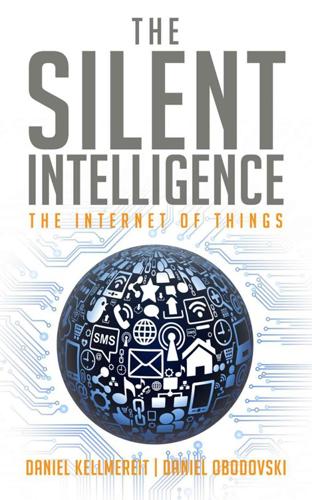
The Silent Intelligence: The Internet of Things
by
Daniel Kellmereit
and
Daniel Obodovski
Published 19 Sep 2013
What are the new ways to think about energy management, the removal chain, and pollution?” If local governments don’t necessarily need to focus on execution and operations so much anymore, but more on governing, that is also a different situation. If, instead of having to design the management system for the transport network for each city top down, you crowd-source it or take it from another city with relevant data — have the solution come out from start-ups, individuals, NGOs, corporations, you name it — then the city government takes a new role. It would ensure that minorities get as much service as majorities do, that budgets are allocated correctly, that the experts and planners use their expertise for the public good.
…
Volvo, for example, has successfully demonstrated road trains as part of the EU’s SARTRE (Safe Road Trains for the Environment) Project, which has several cars following one another in a platoon formation; the lead car has a professional driver taking responsibility for the platoon, while following vehicles operate in a semi-autonomous mode, reducing the distance between the vehicles, and reducing drag and fuel consumption, while getting to their destination faster.23 You may be familiar with the crowd-sourced navigation application Waze, which is one of the most accurate personal navigation applications today because it uses real-time traffic and construction information provided by users. For example, it can get you from Palo Alto to San Francisco during rush hour within five minutes of the ETA. But it still requires physical user input.
…
We also embedded air-quality sensors that measure CO, NO2, relative humidity, and temperature. All the data is collected by the sensors on the wheel and is channeled through the phone to the cloud. With open APIs, anybody can write apps to the wheel. In Copenhagen, as people ride around, each bike populates its own part of a real-time map. You get this very nice crowd-sourced and crowd-sensed map of real-time weather, pollution, and so on. Steve Hudson of Omnilink started his journey into the world of personal tracking devices in 2004 with a location-based platform to monitor and manage criminals who are assigned to an alternative program instead of being incarcerated.

Who Owns the Future?
by
Jaron Lanier
Published 6 May 2013
I could just as well frame my argument in the language of barter and sharing. Leveraging cloud computing to make barter more efficient, comprehensive, and fair would ultimately lead to a similar design to what I am proposing. The usual Manichaean portrayal of the digital world is “new versus old.” Crowdsourcing is “new,” for instance, while salaries and pensions are “old.” This book proposes pushing what is “new” all the way instead of part of the way. We need not shy away. Big Talk, I Know . . . Am I making a Swiftian modest proposal, or am I presenting a plan on the level? It’s a little of both.
…
Detail work (like fitting touchscreens into the frame of a tablet) is still mostly done by hand, but that might change soon. At first manufacturing robots will be expensive, and there will be plenty of well-paying jobs created to operate them, but eventually they will become cheap and the data to operate them might then be crowdsourced, sending manufacturing down the same road traveled by the recorded music industry. A current academic and hobbyist craze is known as “3D printing.” A 3D printer looks a little like a microwave oven. Through the glass door, you can watch roaming robotic nozzles deposit various materials under software control in an incremental way to form a product as if by magic.
…
But at an Amazon-like scale there would inevitably be an even bigger wave of tricksters, scammers, and the clueless to be dealt with. Kickstarter continues to produce some wonderful success stories and a huge ocean of doomed or befuddled proposals. Maybe the site will enter into an endless game with scammers and the clueless, as it scales up, and render itself irrelevant. Or it might adopt crowdsourced voting or automatic filters to keep out crap, only to find that crap is smart and happy to jump through hoops to get through. Or maybe Kickstarter will become more expensive to use, and less naïvely “democratic,” because human editors will block useless proposals. Maybe it will learn to take on at least a little risk to go with the benefits.
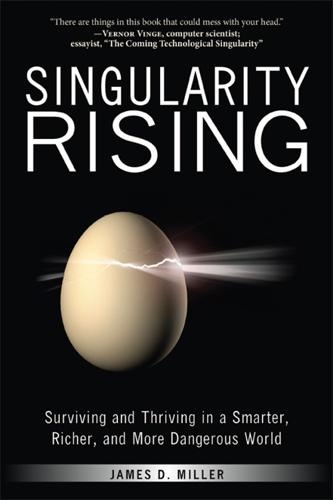
Singularity Rising: Surviving and Thriving in a Smarter, Richer, and More Dangerous World
by
James D. Miller
Published 14 Jun 2012
For example, if 90 percent of people who had some unusual allele or brain microstructure enjoyed a certain cat video, then the AI recommender would suggest the video to all other viewers who had that trait. 12.Amenable to Crowdsourcing—Netflix, the rent-by-mail and streaming video distributor, offered (and eventually paid) a $1 million prize to whichever group improved its recommendation system the most, so long as at least one group improved the system by at least 10 percent. This “crowdsourcing,” which occurs when a problem is thrown open to anyone, helps a company by allowing them to draw on the talents of strangers, while only paying the strangers if they help the firm. This kind of crowdsourcing works only if, as with a video recommendation system, there is an easy and objective way of measuring progress toward the crowdsourced goal. 13.Potential Improvement All the Way Up to Superhuman Artificial General Intelligence—A recommendation AI could slowly morph into a content creator.
…
This kind of crowdsourcing works only if, as with a video recommendation system, there is an easy and objective way of measuring progress toward the crowdsourced goal. 13.Potential Improvement All the Way Up to Superhuman Artificial General Intelligence—A recommendation AI could slowly morph into a content creator. At first, the AI might make small changes to content, such as improving sound quality, zooming in on the interesting bits of the video, or running in slow motion the part of a certain cat video in which a kitten falls into a bowl of milk. Later, the AI might make more significant alterations by, for example, developing a mathematical model of what people consider cute in kittens, and then changing kittens’ appearances to make them cuter.
…
See also amphetamines; amphetamines (“speed”); sleep deprivation Adderall (See under Adderall) author considers them safe and they significantly increase IQ, memory and mental staying power, 124, 211 author’s use of, 104–5, 112 benefits of, 155 as bio-enhancements for human self-improvement, 109 brain-power heightened by, 155 dangerous but effective, 124–25 doctors’ intelligence improved by, 158 drugs enhance excitement levels of different jobs, 159 drugs make life tolerable, 159 drugs reduce chronic unemployment, 159 drug studies, warnings about, 110–12 drugs would boost income of unskilled laborers, 159 economic inequality among nations, greatly reduces, 125 government-licensed occupations and, 158 hourly wages boosted by, 155 income increased by factor of 100, 125 investment banking and, 158–59 lawyers and, 158 militaries and, 109 modafinil, 104 opposition to, 109–10 parents concern that their children have, 211–12 pharmaceutical companies and, 108–9 Prisoners’ Dilemma of drug use and risks, 160–62 professors and, 158 regulated drugs, 123 Ritalin, xv, 104–5 safe and effective, 123–24 SAT tests and, 162–63 side-effects, 112 US ban on, 123–25 cognitive-enhancing technologies, 173 cognitive skills, human, 77 cognitive skills of hunter-gatherers, 76 cognitive training, 114 cognitive traits, farming-friendly, 76 Cohen, Gene, 113 cold-blooded killer, 93 Cold War, 127 community, short-term—oriented, 80 comparative advantage, 135–37 computational science, 185 computer(s) with brilliance of von Neumann, xiii chess, 132–33 Moore’s Law and computer chips, 5 nanotubes, 3-D molecular, 4 performance, 5 simulation, 45 simulation of chimpanzee’s brain, 177 Singularity-enabling of, 6 computing hardware, 7 construction workers, 179–80 consumer, hyper-rational, 42 consumer preference rankings, 42 consumption equality, 167–69 convergent evolution, 202 Coulson, Andrew, 172 crowdsourcing, 20 cruise missiles, hypersonic stealth, 127 cryocrastination, 219–20 cryonics, 213–21 Cryonics Institute, 214–15 cryonics patient, first, 220 crystallized intelligence, 115 culture software, 79 cystic fibrosis, 83–84 D Daily Princetonian, 86 DARPA. See Defense Department research agency (DARPA) Darwin, Charles, 91 dating market power of men, 194 debt-ridden countries, 177 Deep Blue (IBM’s supercomputer), 4, 132 Defense Department research agency (DARPA), 121 de Grey, Aubrey, 35 dementia, 108, 116, 149.
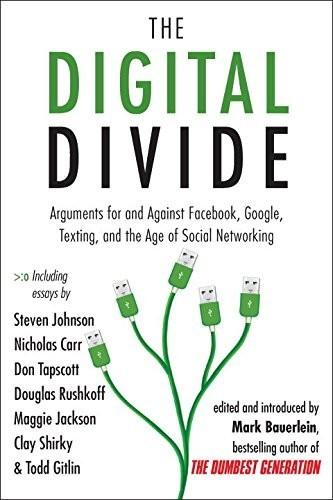
The Digital Divide: Arguments for and Against Facebook, Google, Texting, and the Age of Social Netwo Rking
by
Mark Bauerlein
Published 7 Sep 2011
. >>> redefining collective intelligence: new sensory input To understand where the Web is going, it helps to return to one of the fundamental ideas underlying Web 2.0, namely that successful network applications are systems for harnessing collective intelligence. Many people now understand this idea in the sense of “crowdsourcing”—namely, that a large group of people can create a collective work whose value far exceeds that provided by any of the individual participants. The Web as a whole is a marvel of crowdsourcing, as are marketplaces such as those on eBay and craigslist, mixed media collections such as YouTube and Flickr, and the vast personal lifestream collections on Twitter, MySpace, and Facebook. Many people also understand that applications can be constructed in such a way as to direct their users to perform specific tasks, like building an online encyclopedia (Wikipedia), annotating an online catalog (Amazon), adding data points onto a map (the many Web-mapping applications), or finding the most popular news stories (Digg, Twine).
…
It’s getting smart enough to understand some things (such as where we are) without us having to tell it explicitly. And that’s just the beginning. And while some of the databases referenced by the application—such as the mapping of GPS coordinates to addresses—are “taught” to the application, others, such as the recognition of speech, are “learned” by processing large, crowdsourced data sets. Clearly, this is a “smarter” system than what we saw even a few years ago. Coordinating speech recognition and search, search results and location, is similar to the “hand-eye” coordination the baby gradually acquires. The Web is growing up, and we are all its collective parents. >>> cooperating data subsystems In our original Web 2.0 analysis, we posited that the future “Internet operating system” would consist of a series of interoperating data subsystems.
…
Jay Rosen, a professor of journalism at New York University, is maybe the most voluble booster of the “citizen journalism” that he believes fulfills the blogosphere’s social promise. Rosen has started a blog-based initiative called Assignment Zero, in which anyone, journalist or not, can file an “investigative” news article. Rosen called this “crowdsourcing” in an interview with The New York Times’s David Carr, who reported the story without expressing the slightest skepticism and without presenting an opposing view to Rosen’s. And there is an opposing point of view. In the world of Assignment Zero, if you are someone working for a politician with an ax to grind, you could use Assignment Zero to expose a pesky journalist.
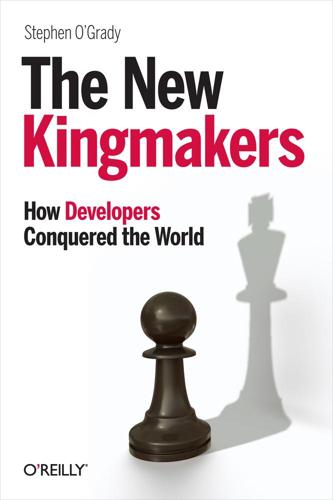
The New Kingmakers
by
Stephen O'Grady
Published 14 Mar 2013
Though Kickstarter is by no means focused strictly on developers, they have been among the most impressive beneficiaries. Of the top projects by funds raised, the first three are video games. In March 2012, Double Fine Adventure set the record for Kickstarter projects, attracting $3.3 million in crowd-sourced financing. Number two on the list, Wasteland 2, raised just under $3 million, with third place Shadowrun Returns receiving $1.8 million. The Kickstarter model is less established than even seed-stage venture dollars, but it shows every sign of being a powerful funding option for developers moving forward.
…
On October 2, 2006, Netflix announced the Netflix Prize: The first team of non-employees that could best their in-house algorithm by 10% would claim $1,000,000. This prize had two major implications. First, it implied that the benefits of an improved algorithm would exceed one million dollars for Netflix, presumably through customer acquisition and improvements in retention. Second, it implied that crowd-sourcing had the potential to deliver better results than the organization could produce on its own. In this latter assumption, Netflix was proven correct. On October 8—just six days after the prize was announced—an independent team bested the Netflix algorithm, albeit by substantially less than ten percent.
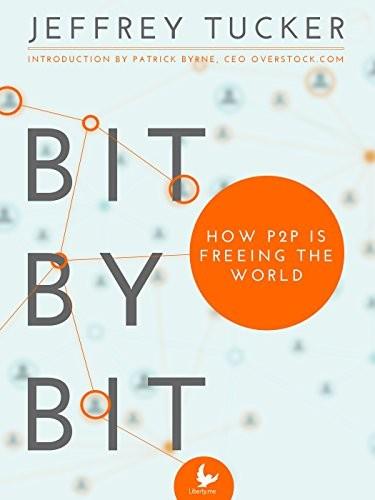
Bit by Bit: How P2P Is Freeing the World
by
Jeffrey Tucker
Published 7 Jan 2015
Marcus for his editorial eye, the team at Liberty.me for showing what progress means, all my teachers in the bitcoin space, Andreas Antonopoulos for radical and inspirational punditry, Laurie Rice for social media and intellectual mastery, Patrick Byrne for corporate leadership and his introduction, Stephan Kinsella for showing me about the magic of information economies, all the god-like brains from the past whose immortal writings have inspired me, and countless others who have added their wits and wisdom to my thinking on this topic. It’s a crowd-sourced book. It’s a crowd-sourced world. Always has been. I. Liberation Ms. Fereshteh Forough, scientist and philanthropist, grew up as a refugee in Iran. Today her work centers in Afghanistan. Her passion is the liberation of women from poverty and oppression in the developing world. Toward that end, in 2012 she established the Women’s Annex Foundation and opened clinics all over the country.
…
Even social networks are getting there, with Tsu.co proposing to pay users for the traffic they draw, sharing ad revenue with the actual content providers. Lending services have been one of the biggest surprises. Prosper allows people who need extra cash to find someone with spare cash to lend. The Lending Tree looks up parties to lending transactions too. The Funding Circle helps restructure student debt. Many crowd-sourced platforms such as Indiegogo and Kickstarter provide a meeting spot for entrepreneurs and investors. Ten years ago, there was an emerging hysteria about how “quants” — super-smart number crunchers with private knowledge — were ruling the financial space, rigging the game and grabbing all available profits for themselves.
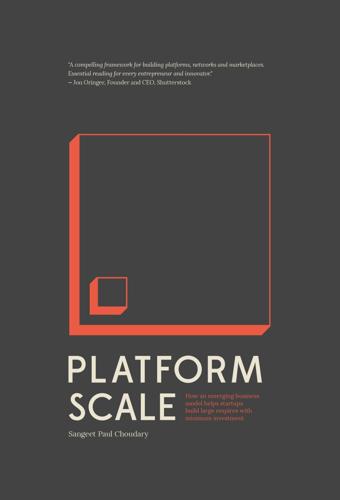
Platform Scale: How an Emerging Business Model Helps Startups Build Large Empires With Minimum Investment
by
Sangeet Paul Choudary
Published 14 Sep 2015
Collaboration models in industrial design and assembly will become networked as well. g. Crowdsourcing and the Wikipedia of everything The coordination of production has traditionally required a supply chain of integrated, top-down processes and controls. Wikipedia reconfigured this linear process and allowed it to be managed cyclically on a network. Wikipedia allows anyone to contribute content to a self-policing/semi-autonomous editorial base that works together to create a constantly changing document on the platform. Similarly, Waze, an Israeli traffic prediction app, crowdsources driving information from multiple drivers while simultaneously using algorithms to determine authenticity before distributing traffic conditions to the wider community.
…
Platform Scale explains the design of a family of emerging digital business models that enables today’s startups to achieve rapid scale: the platform business model. The many manifestations of the platform business model - social media, the peer economy, cryptocurrencies, APIs and developer ecosystems, the Internet of things, crowdsourcing models, and many others - are becoming increasingly relevant. Yet, most new platform ideas fail because the business design and growth strategies involved in building platforms are not well understood. Platform Scale is a builder’s manual for anyone building a platform business today. It lays out a structured approach to designing and growing a platform business model and addresses the key factors that lead to the success and failure of these businesses.
…
Every time that users participate on these platforms, they contribute value in the form of content and data. As users participate more often, platforms scale faster. Airbnb and Uber fight employee-driven organizations with ecosystems. Apple and Android created ecosystems of developers around their respective platforms to disrupt an entire industry. Increasingly numbers of companies are turning to crowdsourcing to solve problems that they traditionally solved in-house. The user-employee distinction is probably least stark in the case of a host of labor platforms that try to be Uber for X. Platforms like Homejoy, MyClean, and SpoonRocket create ecosystems of contract workers who might as well be employees.

Makers
by
Chris Anderson
Published 1 Oct 2012
The Chandler site is just the first “microfactory” of many the company plans to build across America, each with about forty employees. Each will manufacture cars created by the community, which helps build them. It’s a glimpse into a whole new way to design, engineer, and produce cars—and maybe lots of other things, too. Local Motors is a car company built on Maker principles. Its designs are crowdsourced, as is the selection of mostly off-the-shelf components. It doesn’t patent ideas—the point is to give them away so that others can build on them and make them even better, for the benefit of all. It holds almost no inventory, and purchases components and prepares kits only after buyers have made a down payment and reserved a build date.
…
The thirty-eight-year-old Rogers favors military-style flight suits, an echo of his time as a captain in the Marines, including action in Iraq, and he boasts both a Harvard MBA and a stint as an entrepreneur in China. While at Harvard, Rogers saw a presentation on Threadless, the open-design T-shirt company, which showed him the power of crowdsourcing. Cars are more complicated than T-shirts, but both are examples of “platforms” on which many people can display their talents and collectively innovate. And in both cases there are far more people who can design them than are currently paid to do so. In the automotive world, the majority of students who study car design don’t get jobs in the industry; instead they end up designing toothpaste tubes or kids’ toys.
…
The axle of the Rally Fighter comes from a Ford F-150 truck; the fuel cap comes from a Mitsubishi Eclipse. This combination—have the pros handle the elements that are critical to performance, safety, and manufacturability while the community designs the parts that give the car its shape and style—allows crowdsourcing to work even for a product whose use has life-and-death implications. The final assembly is done by the customers themselves under an expert mechanic’s tutelage, as part of a “build experience” at the Chandler factory. At any given time, a half dozen Rally Fighters are being built in two rows facing each other.
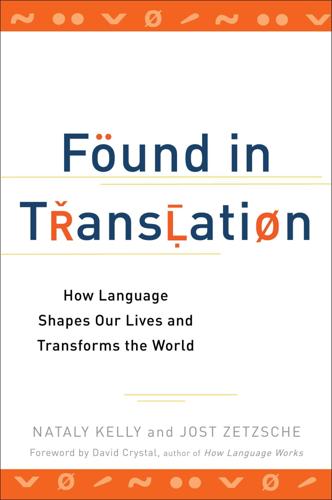
Found in Translation: How Language Shapes Our Lives and Transforms the World
by
Nataly Kelly
and
Jost Zetzsche
Published 1 Oct 2012
The relatively few professional translators in the area were already completely overwhelmed by other responses and were unable to handle this onslaught of additional translation tasks. Enter Rob Munro, a linguist and graduate fellow at Stanford who had been developing methods for processing large volumes of SMS text messages in less-common languages. He’d also been working on crowd-sourcing projects. These two distinct specialties became the perfect combination for a new project called Mission 4636, which was named after the number of the free phone line the individuals used to communicate. Munro went about setting up a team for the task. In the first week alone, he assembled more than a thousand volunteers from a total of forty-nine different countries.
…
It decided to engage the crowd, to allow its users to determine how they would like to see the site translated into their languages. Facebook users rallied in support of the cause. Within just a couple of weeks of starting the effort, they launched the first language, Spanish. Envision a tiny snowball at the top of the mountain. Users responded with positive feedback, so the company opened up its crowdsourcing platform to enable users to translate the site into French and German. Imagine the snowball beginning to roll down the mountain. The following year, 2008, was the year of internationalization at Facebook. “One can argue that translations contributed the most growth,” explains Ghassan Haddad, director of internationalization at Facebook.13 He notes that the number of users in Italy skyrocketed following the launch of the Italian language, jumping from 375,000 to 933,000 in just four months.
…
English, and another thirty languages are in various phases of translation progress. The currently available languages represent over 90 percent of the world population and over 95 percent of people with access to the Internet. The company has continued to tap into its user base to produce the translated versions of its website. Facebook’s crowdsourced translation model has since served as an example for many hundreds of organizations throughout the world, including various nonprofits and charitable organizations. In fact, there are now entire companies that make money from setting up such online communities and paying professional translators to provide the translations through these portals.
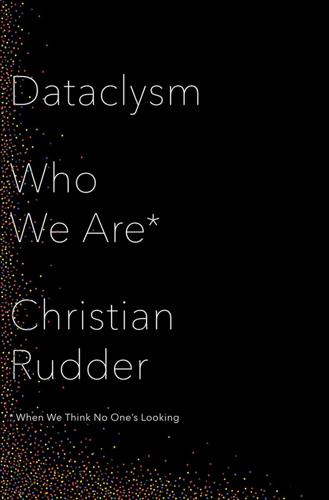
Dataclysm: Who We Are (When We Think No One's Looking)
by
Christian Rudder
Published 8 Sep 2014
If your research topic is, say, wealth, you can very easily get a measure of someone’s net worth or income and then move on to the dependent trait you want to look at. But to study beauty, first you have to determine how good-looking your subjects are, which is a resource-intensive process. Beauty being so wildly subjective (as opposed to, say, hair color, where if you crowdsourced it, you might get slight variations—brown, brunette, chestnut—that are essentially synonymous), you get wide swings in opinion that can only be absorbed by sampling a large, diverse research set. As we’ve seen with WEIRDness earlier, that has not been a strength of past academic research. 8.
…
People used it to complain about anything they didn’t like (had a beef with), ignoring the brand: Remi Mitchison @RemiBee #HeresTheBeef when a chick see another chick doin better and has more than she does … so she wanna stunt and #GetThatAssBeatUp Jeremy Baumhower @jeremytheproduc #HeresTheBeef The drugs companies have already cured HIV and cancer, however it is far more profitable to keep people barely alive on drugs More recently, Mountain Dew ran a “Dub the Dew” contest, trying to ride the “crowdsourcing” wave to a cool new soda name and thinking maybe, if everything went just right and the metrics showed enough traction to get buy-in from the right influencers, they’d earn some brand ambassadors in the blogosphere. Reddit and 4chan got ahold of it, and “Hitler did nothing wrong” led the voting for a while, until at the last minute “Diabeetus” swooped in and the people’s voice was heard: Dub yourself, motherfucker.
…
The researchers determined that paroxetine and pravastatin were causing hyperglycemia in patients. Here, the payoff for living a little less privately is to live a little more healthily. Every day, it seems, brings word of some new advance. Today, I found out that a site called geni.com is well on the way to creating a crowdsourced family tree for all mankind. If it works, the company will have made, essentially, a social network for our genetic material. The week before, two political scientists debunked the received wisdom that Republicans owe their House majority to district gerrymandering. The authors had modeled every possible election over every possible configuration of the United States and concluded, with the computer playing Candide, that our divided world is the best we can hope for.

Shadow Work: The Unpaid, Unseen Jobs That Fill Your Day
by
Craig Lambert
Published 30 Apr 2015
In many sectors, customers will look for more personalized goods and services—having things their way. They’ll assemble end tables and add their own cream to coffee—but will also want input on the design of their clothing, furniture, and bicycles, leading to more individualized products. Crowdsourcing, which taps the creativity of groups, could become a platform for such populist participation. For example, crowdsourcing on the web enables customers to “vote” on potential T-shirt designs. This form of shadow work provides companies with free market research—and essentially guarantees a certain number of sales, as consumers are nearly certain to buy a product they have helped invent, or customized to their preferences.
…
It is, in fact, the top source of health information for both doctors and patients, according to a report from the IMS Institute for Healthcare Informatics that Julie Beck cited in The Atlantic in 2014. Fifty percent of physicians consult Wikipedia for information, particularly on specific diseases. Tuberculosis, Crohn’s disease, pneumonia, multiple sclerosis, and diabetes were the top five conditions for which Internet users tapped Wikipedia in 2013. Wikipedia’s crowdsourced medical entries tend to be lengthy and comprehensive. Its 6,000-word article on coronary heart disease, for example, cites scores of references and covers signs and symptoms, risk factors, diagnosis, prevention, treatment, epidemiology, and research. Wiki’s throng of lay editors constantly tweaks it.
…
They unplugged the telephone lines and instead directed customers to websites. There, users could consult lists of FAQs and email queries. The basic idea was to get the company’s staff off the hook and put the technical problem back in the customer’s lap. In the next phase, manufacturers began to delegate the job of solving user problems to fellow users: in essence, crowdsourcing tech support. Apple online “communities” at discussions.apple.com, for example, include forums for users of most kinds of Apple software, like iTunes and Apple Pay, as well as Apple hardware like iPhones, iPads, and Macintosh desktop computers. Users may join such forums and pose their questions about Apple products.

MacroWikinomics: Rebooting Business and the World
by
Don Tapscott
and
Anthony D. Williams
Published 28 Sep 2010
Meier had been enjoying a quiet evening watching the news at his home in Boston. It was 7:00 p.m. when he first learned about the earthquake. By 7:20, he’d contacted a colleague in Atlanta. By 7:40, the two were setting up a dedicated site for Haiti on the Ushahidi platform. By 8:00, they were gathering intelligence from everywhere, in a global effort to crowdsource assistance for Haiti. Since the majority of incoming text messages were in Creole, they needed a translation service. And since most reports lacked sufficient location details, they needed a way to quickly identify the GPS coordinates so that incidents could be mapped as accurately as possible.
…
And he’s not just talking about it; he’s doing it—cofounding a company, VenCorps, that uses mass collaboration at every stage of the process. “For Venture Capital 2.0 to succeed,” he says, “there will need to be exponentially more people involved.” Just as Goldcorp used mass collaboration to locate their drilling sites, or Wikipedia crowdsourced the publication of expert articles, or Threadless works with customers to design T-shirts, VenCorps is leveraging collaboration. Wise is deploying the power of mass collaboration, not just in the process of choosing which start-ups to fund, but to help grow those start-up ventures after the investment is made.
…
Nor is it a wholesale replacement for cutting-edge R&D or the art of a good marketing campaign. It’s not about putting product duds in the public domain and hoping that someone will turn them into gold. Nor is it about enticing smart and talented people to give away their valuable ideas for free. Sure, a number of companies have exploited so-called crowdsourcing to get marketing and other services on the cheap. But schemes like these are not sustainable and rarely provide the foundation for a dynamic and fertile business ecosystem. In the most successful instances of mass collaboration, companies carve out meaningful roles for contributors and allow community members to share in the ownership and fruits of their creations.
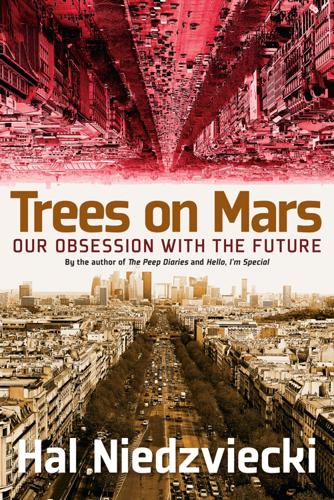
Trees on Mars: Our Obsession With the Future
by
Hal Niedzviecki
Published 15 Mar 2015
Corporations lined up to sponsor further prizes including the 2007-2010 Progressive Insurance Automotive XPrize, the 2010-2011 Wendy Schmidt Oil Cleanup XCHALLENGE, and the ongoing 2007 Google Lunar XPrize. Since then, prizes are coming at a furious pace. Among them include three new ocean-related XPrizes to be launched before 2020, whose goals, apparently, will be determined by crowdsourcing public opinion. The message of the XPrize Foundation is as unambiguous as its crowdsourcing marketing exercises: this is how you get to the future. Ten years ago, we might have dismissed the XPrize as an outsized personal obsession, an outlier that doesn’t actually represent any kind of systemic change in how we think about future collectively and individually.
…
So, yes, it seems to be working, not only for Tetlock and his forecasters but for a wide array of researchers and social experimenters who want to find ways to know what is going to happen before it happens, who want to turn what was formerly an abstract unknowable into controllable data. IARPA and Philip Tetlock’s network of collaborators aren’t the only group trying to incorporate big data and psychology and crowdsourcing to get us to the point where we can actually turn future into information. In January 2014, George Mason University in Virginia launched SciCast, billed as the “largest and most advanced science and technology prediction market in the world.” I’m not going to get into all the technical details of how SciCast works, but basically the idea is that anyone in the world can join up and start answering questions about what will happen in the realms of science and technology in the next six months to two years.
…
This project features “a coherent and cumulative process that collects and assesses judgments from over 3,500 people” who are invited into the project via “U.N. Organizations, governments, corporations, NGOs, universities, and individuals from around the world.”11 Their goal, too, is the building of a kind of massive hive mind of crowdsourced pundits—a postmodern oracle to soothe the fragmentation of our age by converting the mystery of future into information. Sensing that interest in the psychology of prediction and future perception has never been greater, I again check in with social psychologist Cheryl Wakslak, who teaches and researches at the University of Southern California Marshall School of Business in Los Angeles and has a PhD in psychology from New York University.

The People's Platform: Taking Back Power and Culture in the Digital Age
by
Astra Taylor
Published 4 Mar 2014
New tools not only have made cultural production more efficient but have equalized opportunity. NYU professor Clay Shirky, perhaps the leading proponent of this view, calls this process “social production.” Harvard’s Yochai Benkler uses the term “peer production,” business writer Jeff Howe calls it “crowdsourcing,” and Don Tapscott and his coauthor Anthony D. Williams say “wikinomics.” Whatever term they use, the commentators agree that a revolution is unfolding, with the potential to transform not just culture but also politics and the economy. They put social production on a pedestal, holding it up as more egalitarian, ethical, and efficient than the old model it is said to supersede.
…
Where will this new paradigm leave projects like The Oath? Following Shirky’s logic, Laura Poitras is one of those professionals who should be overthrown by noble amateurs, her labor-intensive filmmaking process a throwback to another era, before creativity was a connected, collective process. The Internet might be a wonderful thing, but you can’t crowdsource a relationship with a terrorist or a whistle-blower. Makers of art and culture have long straddled two economies, the economy of the gift and the economy of the market, as Lewis Hyde elegantly demonstrated in his book The Gift: Creativity and the Artist in the Modern World. Unlike other resources, Hyde explained, culture is passed from person to person, between whom it forms “feeling-bonds,” an initiation or preservation of affection.
…
Faced with this devastation, the cheerleaders of new media counter that a combination of volunteerism, technological savvy, and market economics will lead, as a matter of course, to the best possible outcome. Innovation will make up for any losses as if by magic: old inefficiencies will vanish, crowdsourcing—allowing readers to assist with reporting for free—will provide cheaper content, and algorithms will sort through mountains of data to extract interesting stories. By properly harnessing new tools, the newsrooms of the future will be able to do more with less, or they will simply cease to exist.

Artificial Unintelligence: How Computers Misunderstand the World
by
Meredith Broussard
Published 19 Apr 2018
Can you build a set of responses that work in any situation? No way. You can think of responses that would suit most situations, but not all. There will always be limitations to what a computer can say in response to a human, because there will always be limits to the imagination of the human computer programmer. Even crowdsourcing will not be adequate, because there will never be enough people to predict every situation that has ever arisen or will ever arise in the future. The world changes; so do conversational styles. Even Rogerian therapy is no longer considered the latest and greatest interaction style; cognitive behavioral therapy is far more in vogue right now.
…
We’ve taken that concept, blown it apart into its fundamental pieces, and reassembled it into a data-driven website covering the 2008 presidential election.”10 Holovaty went on to make EveryBlock, a pioneering news app that integrated crime data and geolocation. It was the first to use the Google Maps API, leading Google to make the feature available to everyone.11 The Guardian broke ground in data journalism in 2009 when a team of reporters and programmers sought to review, via crowdsourcing, 450,000 records of expenses generated by members of Parliament. This effort was a follow-up to a scandal in which it was discovered that MPs were using government funds to pay for household and office expenses. The Guardian team also gained expertise in using computational methods to analyze large troves of leaked documents, as in their analysis of the Afghanistan and Iraq war logs.12 One important project in the field is an investigation by the Wall Street Journal into price discrimination.13 Major chains like Staples and Home Depot were charging different prices on their websites depending on the zip code in which visitors seemed to be.
…
Tech also inherited mathematicians’ worship of the cult of genius. This cult of genius has led to much mythologizing; it also enforces the boundaries of the industry and camouflages a range of structural discrimination. Math is obsessed with pedigrees. There is a popular online math genealogy project that’s a crowdsourced list of mathematicians and their “ancestors” and “descendants,” organized according to who got their PhD where and under whom. Minsky’s intellectual “ancestry” can be traced in an unbroken line all the way back to Gottfried Leibniz in 1693. To understand why this matters, we need to walk through the development of the modern-day computer.
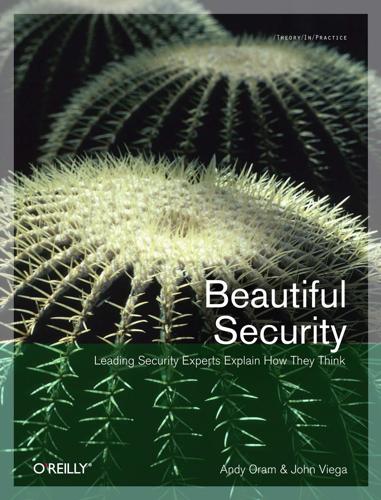
Beautiful security
by
Andy Oram
and
John Viega
Published 15 Dec 2009
Imagine the effectiveness of a more professional social network where security engineers could share empirical data and results from tests and experiments. Security in Numbers Social networking isn’t just about connecting people into groups to trade. It’s a medium for crowdsourcing, which exploits the wisdom of crowds to predict information. This could also play an interesting role in the future security market. To give you a simple example of crowdsourcing, one Friday at work someone on my team sent out a simple spreadsheet containing a quiz. It was late morning on the East Coast, and therefore late on Friday afternoon in Europe and late evening in our Hyderabad office.
…
These filters help people find things and present them in a contextually useful way. Few information security tools today attempt to provide contextually useful information. What we will likely see are tools that merge their particular contributions with reputation mechanisms. A code review tool that finds a potential vulnerability may match it to crowdsourced advice, which is itself ranked by the crowd and then provides contextual information like “50% of people who found this vulnerability also had vulnerability X.” Ratings and ranking will help connect the mass supply of information with the demand. To summarize the three trends in the democratization of security tools, I believe that real platforms will emerge in the security field that connect people, processes, and technology.
…
Send email to index@oreilly.com. 269 3-D Secure protocol, 77 e-commerce security, 84 security pitfall in, 71 Ayres, Ian, 164 Azure cloud operating system, 152 B B.J.’s Wholesale Club, 50 backend control systems, 18–20 backward compatibility LANMAN password encoding, 6 learned helplessness and, 2 legacy systems, 7 PGP issues, 117 balance in information security, 202–207 banking industry (see financial institutions) banking trojans, 141, 249 banner ads exploit-laden, 89–92, 143 honeyclients and, 143 banner farms, 98, 99 Barings Bank security breach, 38–49 Barnes & Noble, 50 Bass-O-Matic cipher, 117 behavioral analytics, 254 Bell Labs background, 171, 173 software development lifecycle, 174–178 Bellis, Ed, 73–86 Bernstein, Peter, 33 Bidzos, Jim, 117, 118 Biham, Eli, 117 biometrics, 37–38 BITS Common Criteria for Software, 193 Black Hat Conference, 161 blacklisting, 252, 254 Blaster virus, 248 blogging, 166 BoA Factory site, 65 Bork, Robert, 241 Boston Market, 50 botnets army building software, 67 attack infrastructure, 66 challenges in detecting, 231 client-side vulnerability, 131 CPC advertising, 100, 101 cyber underground and, 64 functionality, 64, 69, 230 peer-to-peer structure, 66 BPM (Business Process Management) levels of effective programs, 157 multisite security, 156–158 potential for, 154–158 supply chain composition and, 155 270 INDEX BPMI (Business Process Management Initiative), 157 breaches (see security breaches) bridge CAs, 111 Briggs, Matt, 140 brute-force attacks, 28, 251 buffer overflows security vulnerability, 15, 131 SQL Slammer worm, 225 Business Process Management (see BPM) Business Process Management Initiative (BPMI), 157 business rules engines, 157 C California AB 1950, 207 California SB 1386 balance in information security, 203–205 on data sharing, 36, 38 on reporting breaches, 55 passage of, 207 call options, 40 Callas, Jon, 107–130 Capture-HPC honeyclient, 138, 145 CardSystems security breach, 211 Carnegie Mellon CMMI process, 185 Carr, Nicholas, 157 Carter Doctrine, 201 CAs (see certificate authorities) cashiers (cyber underground) defined, 65 drop accounts, 70 CDC (Centers for Disease Control and Prevention), 36 Center for Internet Security (CIS), 45 Center for Strategic and International Studies (CSIS), 201 Centers for Disease Control and Prevention (CDC), 36 certificate authorities, 112 (see also introducers in PGP) certification support, 111 DSG support, 203 establishing trust relationships, 27 hierarchical trust, 109 SET requirements, 78 certificates, 109 (see also specific types of certificates) defined, 111 revoking, 120–122 self-signed, 109 verifying, 109 Web of Trust support, 113 certification defined, 111 OpenPGP colloquialism for, 112 OpenPGP support, 111 CFAA (Computer Fraud and Abuse Act), 207 Charney, Scott, 201 Chuvakin, Anton, 213–224, 226 Cigital, 171, 188 Citi, 79 CLASP methodology, 187, 188 click fraud botnet support, 66, 101 CPA advertising, 102 federal litigation, 102 client-side vulnerabilities, 133 (see also honeyclients) background, 131–132 malware exploitation, 15, 132, 141–143 naïveté about, 8–9 Clinton, Bill, 17 cloud computing applying security to, 152 builders versus breakers, 151 defined, 150 identity management services, 154 CNCI (Comprehensive National Cybersecurity Initiative), 202 CNN network, 16 COBIT regulation, 214 Code Red virus, 248 Commerce, Department of, 180 commercial software (see software acquisition) Commission Junction affiliate network, 102 Commission on Cyber Security for the 44th Presidency, 201 Common Vulnerabilities and Exposures (CVE) database, 131 communication cyber underground infrastructure, 65, 66 information security and, 207–211 Comprehensive National Cybersecurity Initiative (CNCI), 202 Computer Fraud and Abuse Act (CFAA), 207 confidentiality of data, 85 confirmation traps defined, 10 intelligence analysts, 12 overview, 10–11 rationalizing capabilities, 13 stale threat modeling, 12 contagion worm exploit, 131 cookies, stuffed, 102 cost per action (see CPA advertising) cost per click (see CPC advertising) Cost Per Thousand Impressions (see CPM advertising) COTS (see software acquisition) coverage metrics, 46 CPA advertising functionality, 100 inflating costs, 102–103 stuffed cookies, 102 CPC advertising click-fraud detection services, 101 functionality, 100–101 syndication partnerships, 100 CPM advertising basis of, 98 fraud-prone, 100–103 credit card information as shared secret, 75–76, 85 card associations and, 82 checking site authenticity, 26 consumers and, 81, 83 current market value, 66 CV2 security code, 76 cyber underground and, 65 devaluing data, 71 e-commerce security, 73–75 financial institutions, 82 identity theft, 23–25 merchants and service providers, 81, 83 PCI protection, 44 proposed payment model, 86 spyware stealing, 69 SQL injection attacks, 69 TJX security breach, 50 virtual cards, 79 cross-certification, 111 cross-site scripting, 188 crowdsourcing, 161 Crypto Wars, 118 CSIS (Center for Strategic and International Studies), 201 culture, organizational, 200–202 cumulative trust, 110 Curphey, Margaret, 169 Curphey, Mark, 147–169 CV2 security code, 76 CVE (Common Vulnerabilities and Exposures) database, 131 cyber underground attack infrastructure, 66 attack methods, 68–70 cashiers, 65 combating, 71–72 communication infrastructure, 65 CSI-FBI Study, 63 data exchange example, 67 fraudsters and attack launchers, 65 goals of attacks, 63, 226, 230 information dealers, 64 INDEX 271 information sources, 68 makeup and infrastructure, 64–66 malware producers, 64 money laundering and, 70 payoffs, 66–71 resource dealers, 64 Cydoor ad network, 90 D Danford, Robert, 144 Data Encryption Standard (DES), 4 data integrity, 85 Data Loss Database (DataLossDB), 36, 55–58 data responsibility incentive/reward structure, 72 social metric for, 72 data theft as cottage industry, 67 botnet support, 66 combating, 71 from merchant stores, 68 incident detection considerations, 237 spyware and, 69 data translucency additional suggestions, 245 advantages, 244 disadvantages, 245 overview, 239–242 personal data and, 244 real-life example, 243 data-sharing mechanisms DHS support, 36 security flaws in, 35 databases data translucency in, 239–246 logging support, 221 security breaches and, 239 Dave & Buster’s, 50 Davies, Donald, 148 DCS systems, 18 DDoS (distributed denial of service) attacks on major ISPs, 16 botnet support, 66, 231 client-side vulnerability, 131 honeyclients and, 138 LANs and, 28 deceptive advertisements, 94–98 Defense, Department of, 213 Dell computers, 131 Deloitte & Touche, LLP, 201 denial of service (see DDoS) Department of Agriculture, 196 Department of Commerce, 180 Department of Defense, 213 Department of Homeland Security, 36 272 INDEX deperimeterization, 156 DES (Data Encryption Standard), 4 designated revokers, 121 DHCP lease logs, 237 DHS (Department of Homeland Security), 36 Diffie, Whitfield, 112 digital certificates (see certificates) Digital Point Systems, 102 Digital Signature Guidelines (DSG), 202–203 direct trust defined, 109 root certificates, 110 directionality, 227 distributed denial of service (see DDoS) distribution channels, 166 DKIM email-authentication, 124 Dobbertin, Hans, 119 doing the right thing in information security, 211– 212 drop accounts, 70 Drucker, Peter, 163 DSG (Digital Signature Guidelines), 202–203 DSW Shoe Warehouse, 50 Dublin City University, 144 Dunphy, Brian, 225–237 Durick, J.D., 138 dynamic testing, 190 E e-commerce security 3-D Secure protocol, 76–78 analyzing current practices, 74–75 authorizing transactions, 84 broken incentives, 80–83 confidentiality of data, 85 consumer authentication, 83 data integrity, 85 exploiting website vulnerabilities, 68 friendly fraud and, 84 merchant authentication, 83 new security model, 83–86 not sharing authentication data, 84 portability of authentication, 85 primary challenges, 73 proposed payment model, 86 SET protocol, 78 shared secrets and, 75–76, 85 virtual cards, 79 EAP (Extensible Authentication Protocol), 51 Earned Value Management (EVM), 173 eBay CPA advertising, 102 DDoS attacks on, 16 principle of reliability, 160 ECPA (Electronic Communications Privacy Act), 207 Edelman, Benjamin, 89–105, 210, 250 Edwards, Betsy, 178 Einstein, Albert, 147 Electronic Communications Privacy Act (ECPA), 207 email log handling, 221 malware exploits, 248 EMBED tag, 94 encryption LAN Manager sequence, 4 PGP support, 107, 116–120 security certificates and, 22, 24 SET support, 78 Encyclopædia Britannica, 94–98 event logs (see logs) EVM (Earned Value Management), 173 executables, malware exploits and, 143 exportable signatures, 125 extended introducers, 123 Extensible Authentication Protocol (EAP), 51 F Facebook social network, 159, 165, 166 failing closed, 8 failing open, 8 false negatives, 236 false positives, 217, 236 Federal Sentencing Guidelines, 209 Federal Trade Commission (see FTC) financial institutions banking trojans, 141, 249 credit card information, 82 cyber attacks on, 68 drop accounts, 70 exploiting website vulnerabilities, 68, 187 federated authentication programs, 210 infosecurity and, 208 Finjan security firm, 65 Finney, Hal, 117 firewalls energy company vulnerabilities, 18 host logging, 232 log handling, 216, 221 need for new strategies, 248 SQL Slammer worm, 225 watch lists, 231 Flash ActionScript, 93 Forester, C.

Age of Discovery: Navigating the Risks and Rewards of Our New Renaissance
by
Ian Goldin
and
Chris Kutarna
Published 23 May 2016
Retrieved from www.thetimes.co.uk. 11. XPrize (2015). “Who We Are.” XPrize.org. Retrieved from www.xprize.org. 12. Barnett, Chance (2015, June 9). “Trends Show Crowdfunding to Surpass VC in 2016.” Forbes. Retrieved from www.forbes.com. 13. Crowdsourcing.org (2015). “Global Crowdfunding Market to Reach $34.4B in 2015, Predicts Massolution’s 2015 CF Industry Report.” Retrieved from www.crowdsourcing.org/editorial. 14. World Bank (2013). “Crowdfunding’s Potential for the Developing World.” Information for Development Program. Washington, D.C.: The World Bank. 15. Ibid. 16. National Science Foundation (2014).
…
idea to meet fierce opposition: Swiss scribes rallied against the printing press; Dutch guilds fought advances in shipbuilding; French paper makers burned machines that would have sped up pulp-making.6 Likewise, today’s fossil fuel industry is resisting the transition to alternatives; mainstream banks throw cold water on crowd-sourced lending; and taxi drivers cry foul over apps that help commuters buy rides from one another. Is every new idea a good one? No, but in a Renaissance moment that should be our default assumption—unless the idea directly harms people. Now more than ever, society has the capacity to judge an idea, share it and spark a better one.* Let’s applaud experimentation, even with society’s sacred cows—or some of the best discoveries of the twenty-first century might never happen.
…
In 2010, there were about 100 crowdfunding platforms running; together they raised just under $900 million for posted projects.12 By 2015, over 1,250 platforms together raised an estimated $35 billion.13 That’s more than the global venture capital industry invests in an average year (about $30 billion), and is on pace to triple, at least, by 2020.14 Crowdfunding allows a wide population to support discovery work, and scientists especially need to get better at extending that invitation as part of the research proposals they write. But crowdsourcing has its limits. Even faced with the best proposals, the crowd seems unlikely to take much interest in research. Over 70 percent of 2015 crowdfunding was in the form of short-term, person-to-person loans that lenders expect to be repaid, with interest.15 And science is notoriously bad at keeping to a quick repayment schedule when it’s camped out on the far northern frontier of human understanding.

Cities Are Good for You: The Genius of the Metropolis
by
Leo Hollis
Published 31 Mar 2013
In addition, the crowd-map software has been adopted in any number of ways: in Belarus, it is being used on www.crisisby.net to monitor human-rights violations by the regime of the last dictator in Europe. Women Under Siege collects data about atrocities and sexual violence against women in Syria during the uprising. The applications for crowd-sourcing maps can be almost endless. In Taiwan, Angry Map records reports of bad behaviour in the hope of naming and shaming people into civility. [Im]possible living is a site in Milan, Italy, that discovers abandoned buildings and hopes to connect them with schemes for potential reuse. In New York, crowd-sourcing maps software drives the Future Now NYC programme, which gathers together ideas from local schoolchildren about ways to improve their community, from more trees and a football field to ‘gun free’ teen clubs.
…
And it’s not enough to have one liveable city or town in a region – you need a collection of interesting communities.’27 It is only the people on the street, however, who can tell whether a place achieves its purpose; a community will soon show whether it has embraced or adopted a new project. In the book How To Turn a Place Around, Kent tips the traditional relationship between architect and client on its head and shows that the community is the expert when it comes to the usage of a place. This has been taken to its logical conclusion with the increasingly popular practice of ‘crowd-sourced place-making’, which uses social media and the wisdom of the group to develop new places. It is indeed a radical alternative to the twentieth-century view of how to build a city. Stroget in Copenhagen started out as an early example of a ‘pop-up’ community experiment – a temporary project. Often, the best ways to change the city are for only a short amount of time and on a small scale: improve the city block by block, allow people to own their own streets, make people the catalyst for change.
…
Ory Okollah had returned home to Kenya from Johannesburg to vote but found herself stuck in the family home with a child and a laptop. While she ran out of supplies, she maintained her blog on Kenya politics until she decided she was no longer safe and left for South Africa. There, she posted updates and blogged on the possibilities of using Google Earth satellite imaging as a means to crowd-source stories. Within days, she had responses from other bloggers and engineers including Erik Hersman, David Kobia and Juliana Rotich and within weeks they had created the Ushahidi (Swahili for testament), and were coordinating reports of violence sent in by text or phone and then mapping them on an interactive Google Earth map.
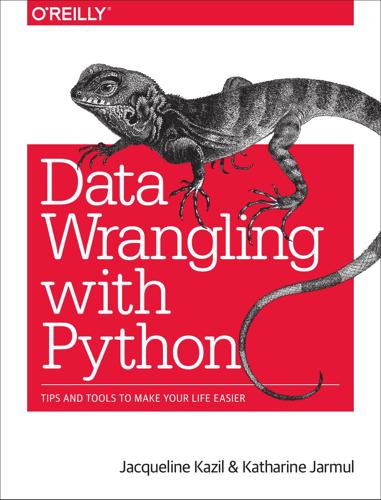
Data Wrangling With Python: Tips and Tools to Make Your Life Easier
by
Jacqueline Kazil
Published 4 Feb 2016
If you have a specific researcher or study in mind, we recommend reaching out directly; we’ve collected a few of the aggregators into the following list: • Open Science Data Cloud • Open Science Directory • World Health Organization Data • Broad Institute Open Data • Human Connectome Project (neuro pathway mapping) • UNC’s Psychiatric Genomics Consortium • Social Science Datasets • CDC Medical Data Crowdsourced Data and APIs If your idea or question is better answered by crowdsourcing, the Internet and its many forums, services, and social media outlets allow you to create your own ques‐ tions and answer them with the help of some data mining. Services like Twitter and Instragram boast billions of users and easy-to-use application programming inter‐ faces (or APIs).
…
Outside of social web services, there are a variety of sites where you can post your own questions and ideas and ask for a crowdsourced reply. Whether you want to go to an expert forum related to the topic or post a survey and circulate it though your own channels is up to you, but be aware when using your own research questions and methods that you must account for whatever size and sampling errors arise. For a more detailed introduction to writing your own survey along with citations for more information, the University of Wisconsin’s survey guide can be a good starting point. For other crowdsourced data, take a look at: • Gallup Polls • European Social Survey • Reuters Polls The amount of data available is enormous, and it’s no small task sorting through all of the noise to get a good idea of what questions you can answer and how you should go about answering them.
…
Acquiring and Storing Data. . . . . . . . . . . . . . . . . . . . . . . . . . . . . . . . . . . . . . . . . . . . . . . . . 127 Not All Data Is Created Equal Fact Checking Readability, Cleanliness, and Longevity Where to Find Data Using a Telephone US Government Data vi | Table of Contents 128 128 129 130 130 132 Government and Civic Open Data Worldwide Organization and Non-Government Organization (NGO) Data Education and University Data Medical and Scientific Data Crowdsourced Data and APIs Case Studies: Example Data Investigation Ebola Crisis Train Safety Football Salaries Child Labor Storing Your Data: When, Why, and How? Databases: A Brief Introduction Relational Databases: MySQL and PostgreSQL Non-Relational Databases: NoSQL Setting Up Your Local Database with Python When to Use a Simple File Cloud-Storage and Python Local Storage and Python Alternative Data Storage Summary 133 135 135 136 136 137 138 138 139 139 140 141 141 144 145 146 147 147 147 148 7.
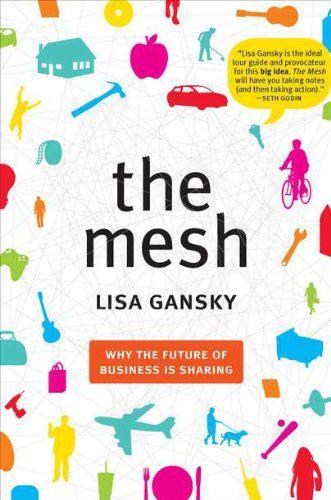
The Mesh: Why the Future of Business Is Sharing
by
Lisa Gansky
Published 14 Oct 2010
http://www.skibstedid.com Sourcemap: Helps consumers find and share stories about where products come from and what they are made of. http://blog.sourcemap.org MISCELLANEOUS Thousands of Mesh businesses are thriving, from small start-ups to large cap companies. Among the more difficult to categorize include businesses that offer dog rentals, crowdsource creative ideas, run design contests, and aim to conserve resources by connecting couriers with people who want to send parcels. In this category, you will find a whole host of miscellaneous Mesh businesses. In his third year at UCLA, Chuck Gordon needed to move out of his Los Angeles apartment before spending a semester abroad in Singapore.
…
In 2009 a new civic engagement tool called CitySourced hit the streets in San Jose, California, allowing citizens to identify and report civic issues on the go. Using the CitySourced smartphone application, people can file sightings of graffiti, littering, potholes, and so on to city hall. Think of it as civic crowdsourcing. The app lets you photograph an infraction and locate it via your phone’s GPS tracking device. Once the image uploads successfully, users can then add comments about the problem and share it on Twitter as well. It’s a techy occasion for government to improve citizen accountability. Celltradeusa: Enables dissatisfied cell phone customers to get out of their service contracts by finding others who want in.
…
http://sabbaticalhomes.com SingleSpotCamping: Connects landowners with camping guests. http://www.singlespotcam ping.com TravellingTogether.EU: Connects people who want travel partners. http://www.travellingtogether.eu Virgin Limited Edition: Luxury retreat rentals. http://www.ulusaba.virgin.com/en/vle/our_collection waze: Crowdsourced maps in real time. www.waze.com UPCYCLING, RECYCLING, AND WASTE MANAGEMENT Mesh organizations aim to extend the useful life of products and reduce waste in landfills by facilitating material exchanges among individuals and businesses. They also decrease raw material resource demand by offering creative recycling services, including airport trolley upcycling, electronic and commercial waste recycling, and more.
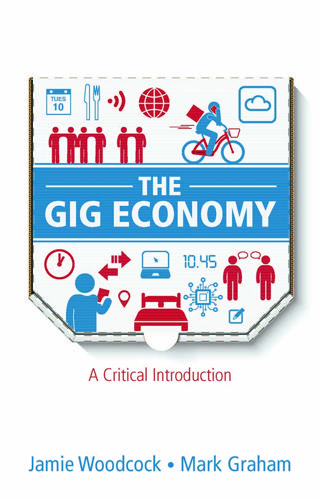
The Gig Economy: A Critical Introduction
by
Jamie Woodcock
and
Mark Graham
Published 17 Jan 2020
Ultimately, this is work that usually requires very little formal training, and – as a result – tends to be poorly paid (Hara et al., 2018). In both cases, what matters to the customer is the final product, not where the actual work was conducted. Microwork is a clear extension of outsourcing, with roots in crowdsourcing. This term was coined by Howe (2006) to mean ‘the act of a company or institution taking a function once performed by employees and outsourcing it to an undefined (and generally large) network of people in the form of an open call’. This provided a way to search for innovation and profitable ideas beyond the boundaries of an organization.
…
New York: St Martin’s Press. Hochschild, A.R. (1983) The Managed Heart: The Commercialisation of Human Feeling. Berkeley, CA: University of California Press. Hochschild, A.R. (1989) The Second Shift: Working Families and the Revolution at Home. New York: Penguin. Howe, J. (2006) The rise of crowdsourcing. Wired, 1 May. Available at: http://www.wired.com/2006/06/crowds/ Huet, E. (2015) What really killed Homejoy? It couldn’t hold on to its customers. Forbes, 23 July. Available at: https://www.forbes.com/sites/ellenhuet/2015/07/23/what-really-killed-homejoy-it-couldnt-hold-onto-its-customers/#22c9f5871874 Hunt, A. and Machingura, F. (2016) A good gig?
…
Bezos’ letters 87–8, 106 Turkopticon 106–7, 123, 133 Anderson, B. 80 Antunes, Ricardo 36 application programming interfaces (API) 58 apps 5, 51, 52, 133, 138 artificial intelligence 50, 58, 60, 66 Aslam, Yaseen 76 assembly line 24, 94, 117 Australia 127 Australian Independent Contractors Act 128 automation 66–7 Avendano, Pablo 73 B Badger, Adam 86–7 Bangalore (India) 98–9, 102 Barbrook, R. 37 Barry, J. 49 Beck, Ulrich 17 Bent, P. 13, 16 Berg, J. 55 Besant, Annie 14 Bezos, Jeff 87 Bolt 77 Bourdieu, Pierre 17 ‘BrainWorkers’ 33 Braverman, Harry 111 Bryant and May match factory 14 C Californian Ideology 37 call centres 24, 31 outsourcing of 37, 54 Callinicos, Brent 49 Cameron, A. 37 Cant, Callum 40, 96 capitalism cognitive 37 gendered basis of 29 car industry 110 care work 64, 66, 79–83 low barriers to entry 67 and repeat transactions 68 Care.com 80, 80–1 casualization 5, 15 Caviar 73 ‘ChainWorkers’ 33 Cheung, Adora 103 China worker resistance and strikes 100 Christie, N. 73 cleaning work 5–6, 64 low barriers to entry 67 migrant workers 30 cloudworker platforms 6, 43, 53–61, 63, 64, 69, 93 atomization of 92 availability of 56 location of 55, 57 removal of barriers to entry for 69 and resistance 104–8 setting rates of pay 65 and spatial control 63 temporal control 64 cognitive capitalism 37 collaborations 123, 132, 136 collective bargaining 30, 34, 37, 49, 80, 130, 134, 135–6, 143 collective organization 100, 134 commercial content moderation (CCM) 61 computerization 66 consumer attitudes/preferences 27 contingent work 19 Convention on Platform Work, Draft 130, 146–51 cooperatives, platform 138–9 Countouris, N. 129 Craigslist 22 crowdsourcing 58 crowdworkers 55, 90 see also microwork; online freelancing D Dalla Costa, Mariarosa 29 Darcy, Alison 60 data collection 65–6 De Stefano, V. 129 deindustrialization 36, 84 Deliveroo 2, 6, 23, 32, 40, 71–4, 115, 127 experience of working for 7–8, 31, 71, 72–4 self-organization for workers 95 strike action 95–6, 97 delivery work(ers)/platforms 5, 27, 62, 63, 68 and automation 67 and collective organization 134 experiences of workers 71–5 low entry requirements 67 see also Deliveroo democratic ownership 136–40, 141 Denmark 3F trade union 134–5 Desai, Bhairavi 79 developing countries internet penetration rate 25 Didi Chuxing 22, 102 digital divides 25 digital legibility 23–5, 65–7 digital platforms 1, 2, 3, 4, 54–5 Directive on Transparent and Predictable Working Condition in the European Union 129 dock work(ers) 13–14, 15, 38 strike (1889) 15 domestic work(ers) 29–30, 62, 63, 66, 79–83 as central component of capitalism 29 factors determining working conditions 80 numbers 80 positive and negative outcomes for 81 and repeat transactions 68 in South Africa 81–3 Doogan, Kevin 18 E economic crisis (late 1970s) 33 Elance 22 entertainment industries 135 Eurobarometer 40 European Commission 35 Expensify 60 F Facebook 45, 60, 121, 123, 133 factories/factory work 15–16, 94 measuring of factory labour process by Taylor 23–4 Fair Crowd Work website 123 Fairwork Foundation project 121–2, 130, 146–51 Farrar, James 75, 75–6, 77–8, 101 feedback 52, 80, 92, 93 financial crisis (2008) 35 Fiverr 20, 23 flexibility, desire for by workers 4–5, 30–3, 71, 115 flexicurity 35 Flipkart 22 Foodora 127 Fordism 117 fragmented work 5, 40, 114 Freelancer 6, 54, 64, 89 freelancing, online see online freelancing Frey, C.B. 66 G gamification 86 gender and capitalism 29 and relationships of work 28–30 geographically tethered work/platforms 5–6, 7, 34, 50–2, 63 control over workforce 68 forms of resistance in 94–104 setting rates of pay 65 temporal control 64–5 Ghana 8, 64, 92 gig economy advantages 4–5 characteristics 114–15 controversy over classification of people involved 43–4 existence due to digital transformation 114 factors facilitating growth of 19, 114 five principles for ‘fair work’ in 122 future 112–45 governance in 62 meaning of 3–7 numbers working in 1–2 operation of 41–69 origins 11–40 pitfalls 5, 116 preconditions that shape the 19–28 rise of 38–40 ways to bring about change 142–4 gig economy workers barriers to entry for 67–8 communicating with each other 132–4 de-personalization of 118, 120 desire for flexibility 4–5, 31–3, 71, 115 experiences of 70–92 invisibility of 6, 80 lack of collective voice 6, 77 lack of effective regulation for 128–9 misclassified as self-employed 44 numbers 39–40 securing protection through courts 127 working conditions 6, 9 gigs, musical 3 Global North 12, 13, 32, 46 and cloudworkers 55 and microwork 84 and outsourcing 44 size of gig economy 39 Global South 32, 46 internet penetration rate 25 size of gig economy 39 women and online freelancing 90 globalization 19, 37–8 Goodwin, Tom 45, 121 Graeber, David 31 Guru.com 22 H Handy 80 Harvey, David 33, 53 Heeks, Richard 39 Herman, S. 39 Hilfr.dk 134–5 Homejoy 68, 103–4 Howe, J. 58 human intelligence tasks (HITs) 60 Humphries, S. 13–14 Hunt, A. 28, 81, 82 Huws, U. 39–40 I IAEA (International Arts and Entertainment Alliance) 135 Iles, Anthony 32 ILO (International Labour Organization) 16–17, 129 Declaration of Philadelphia (1944) 142 Independent Workers Union of Great Britain see IWGB India delivery drivers 74 strikes by Uber drivers 102 Industrial Workers of the Word see IWW industrialization 16 interface 45 International Arts and Entertainment Alliance see IAEA International Labour Organization see ILO Internet access and penetration rate 25 Irani, Lilly 106 IWGB (Independent Workers Union of Great Britain) 73, 97, 101, 109, 127, 134 IWW (Industrial Workers of the World) 97, 101 J James, Selma 29, 81 job insecurity, growth in 18–19 K Kalanick, Travis 23, 48, 49 Kalleberg, A.L. 18 Kenya Ajira Digital programme 35 Kessler, Sarah 11 L labour law 114, 117, 126, 128, 129 Lagos (Nigeria) 89, 124 Lanier, Jaron 58 LaPlante, Rochelle 60 lean platforms 35, 45 legibility, digital 23–5, 65–7 Li, Qi 100 Limer, Eric 85–6 Living Wage Foundation 122 London taxi arrangement 47 long-term unemployment 18 low-paid work, increase in 35, 139 M Machingura, F. 81, 82 McKinsey 1–2, 39 McKinsey Global Institute 66 Manila (Philippines) 89, 90 Maputo (Mozambique) 26–7 Marsh, Greg 129 Marx, Karl 11–12, 22, 72, 121 Mason, Paul 35 mass connectivity 25–7 Massey, Doreen 63 Matchwoman strike 14 Mateescu, A. 79, 80, 81 Messina, Jim 48–9 microwork 6, 55, 58–61, 62, 83–9, 104 and automation 66–7 experiences of workers 83–9 feelings of alienation 88 numbers engaged in 83–4 wages 84–5 see also Amazon Mechanical Turk 59 migrant workers 30, 80, 90 migration status 30 Mitropoulos, Angela 17, 32 mobile phones 25–6 Mondragon Corporation 138–9 Moody, Kim 40, 111 Moyer-Lee, Jason 98 N Nedelkoska, L. 66 neoliberalism 18, 33–5, 52 characteristics of 34 New York Uber 78–9 NHS (National Health Service) 5 Novogratz, Mike 49–50 O O’Connor vs Uber Technologies Inc. (2015) 124, 126 Ojanperä, Sanna 55 Ola 102 online freelancing 6, 7, 8–9, 43, 55, 62, 141 barriers to entry for workers 67 barriers to organizing 104 experiences of workers 89–92 and feedback 93 reasons for doing 89–90 support forums 104–5 wages 90, 91 and worker resistance 104–5 Osborne, M.A. 66 outcome thinking 118, 124 outsourcing 19, 37–8, 39, 44–5, 51, 54 microwork as extension of 58 P Pandor, Aisha 83 Pasha, Tanveer 102 pay rates, setting of 65 Peck, Jamie 33, 35 Peterloo Massacre (1819) 108 Platform Cooperative Consortium 138 platforms/platform work 2, 4 ability to set pay rates 65 and accountability 125–30 barriers to entry for workers 67–8 as a civic utility 139–40 cloudwork see cloudwork connecting workers and clients 20–1, 22–3, 43, 138 cooperatives 138–9 core functions 23 degree of explicit coordination 68–9 democratic ownership of 136–40, 141 digital legibility 23–5, 65–7 Draft Convention on Platform Work 130, 146–51 early 22 geographically tethered model see geographically tethered model infrastructure 20–3 intermediate function 42–3 lean 35, 45 meaning and operation of 42–6 microwork see microwork negotiation-based matching 22–3 reliance on network effects 45 repeat transactions 68 setting up of ‘counter’ 123 spatial control 62, 63–4 spatiality and temporality of 42–3 spending money on public relations and advertising 28 static-price matching 23 temporal control 64–5 understanding how they work 61–9 Plouffe, David 49 Pollman, E. 49 precariat 18 precarious work(ers) 13–19, 32–3, 38 definition 16–17 two kinds of 33 profitability, crisis of 35, 36, 42 public sector and gig economy 17 and outsourcing 44 Q Quintini, G. 66 R racialization of work 30 racism 30 ratings strategy and transparency 122–3 Ravenelle, Alexandrea 37, 70 Raw, Louise 14 Reagan, Ronald 34 reddit 123 regulation 144 lack of for gig economy workers 128–9 labour law 19, 114, 117, 126, 128 state 19, 33–6 regulatory entrepreneurship 49 repeat transactions and platforms 68 resistance see worker resistance Roberts, Sarah 61 S SAG-AFTRA 135 Samman, E. 28 Schifter, Doug 79 Scholz, Trebor 48, 49, 138, 139 Schor, Juliet 103 Screen Actors Guild (SAG) 135 Second World War 110 self-employment 32, 43–4, 96, 98, 108 Semuels, Alana 84 service industries, growth of 34 Seymour, Richard 18–19 sharing economy 11 Shekhawat, Dushyant 74 ‘shock doctrine’ 34 short term contracts 4 Silberman, Six 106 slavery 30 Slee, Tom 50, 78 soldiering 23 South Africa domestic workers in 81–3 Uber 76, 127–8 worker resistance 99–100 South African Domestic Services and Allied Workers Union (SADSAWU) 82–3 South African Labour Relations Act 128 South Korea 35 South London Gas Workers strike (1889) 14–15 Spain 127 spatial control and platforms 62, 63–4 Srnicek, Nick 4, 42, 45 standard employment relationship 5, 12–13, 16, 18, 32, 33–4 Standing, Guy 17–18, 27 state regulation 19, 33–6 strikes 14–15, 94, 95–6, 99–100, 109, 142–3 preconditions for starting 109 surveillance 24 of delivery drivers 74 Upwork workers’ resistance to 105 Susskind, R. 118 SweepSouth 80, 81–3 Switzerland Notime 102 T TaskRabbit 103 taxi industry 51–2 taxi work(ers) 75–9, 134 and collective organization 134 see also Uber Taylor, Bill 100 Taylor, Frederick 23–4 Taylor, Matthew 129 Taylor Review of Modern Working Practices, The 129 technological changes 19, 21 temporal control and platforms 64–5 temporary work(ers) 3, 17 Thatcher, Margaret 34 Thompson, S. 34 Ticona, J. 79, 80, 81 Tillett, Ben 14 tipping 75 Tolpuddle Martyrs 108–9 trade unions 6, 18, 34, 36, 92–3, 97, 108–9, 134, 135, 143–4 decline of 36, 37 and dock workers 15 early 108–9 and gig economy workers 109–10, 136 and IWGB 97 rise in membership 15 textile 108 Transnational Federation of Couriers 97 transparency 118–24, 141 establishment of ‘counter platforms’ 123 ratings strategy 122–3 Transport for London 28 Turkopticon 106–7, 123, 133 U Uber 2, 4, 20, 23, 25, 32, 44, 45, 46–50, 52, 61, 73–9, 94–5, 108, 115, 121, 124, 139 business model 48 Change.org petition 28 data collection 50, 65–6 drivers’ wages 49–50, 77–8 engagement with regulation and transport policy 48 funding 47–8 and ‘greyballing’ 49 in New York 78–9 O’Connor vs Uber Technologies Inc. (2015) 124, 126 power passengers hold over drivers 75–6 public relations and lobbying campaigns 48–9 rating system 75 safety issues and rising petrol prices for drivers in South Africa 76–7 and self-driving vehicles 50 and tipping 75 Uber International Holding(s) BV 128 Uber Technologies SA 127 UberX 47 worker resistance and strikes 100–2 unfair dismissal 44, 134 United Kingdom employment regulation issues 129 neoliberalism 34 and outsourcing 44–5 worker resistance and strikes 100–1 United Private Hire Drivers (UPHD) 75 United States neoliberalism 34 Uber 47–9 UPHD (United Private Hire Drivers) 76, 101 UpWork 6, 8, 43, 54, 64, 121 resistance of surveillance methods by workers 105 Upwork.com 89, 91 US Chamber of Commerce 108 V van Doorn, Niels 42 Vandaele, Kurt 95, 97 venture capital 36 visibility 136 vWorker 22 W wages microworkers 84–5 online freelancing 90, 91 setting of pay rates 65 Uber drivers 49–50, 77–8 Ward, H. 73 Webster, G.E. 16 Weightman, G.E. 13–14 WhatsApp 95, 99, 123, 132, 133 Williams, Eric 30 women and domestic work 29–30 and online freelancing in the Global South 90 Wood, Alex 95, 104–5, 107 work, transformation of 12–13 worker power 19, 36–7, 130–6, 141 worker resistance 93–111, 113–14 and cloudworkers 104–8 and communication 107 food platform strikes 95–7 formation of networks and meetings 95, 98–9 geographically tethered work 94–104 history of 94 legal battles over employment status 98 and online freelancing 104–5 and self-employment status 98 strikes 14–15, 94, 95–6, 99, 100–1 taking of work off-platform 103 and trade unions 97, 107–11 Uber 101–2 and WhatsApp groups 98, 99, 132 workers’ rights 34, 44, 98, 101, 130, 135, 139, 140, 144 Y YouTube 60 Z Zomato 98–9 POLITY END USER LICENSE AGREEMENT Go to www.politybooks.com/eula to access Polity’s ebook EULA.
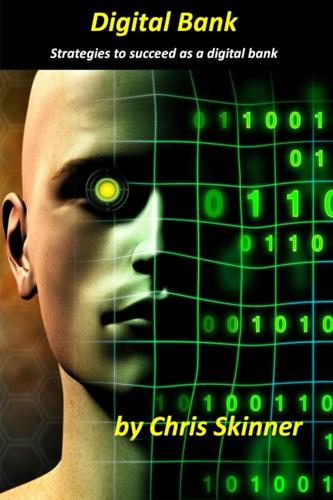
Digital Bank: Strategies for Launching or Becoming a Digital Bank
by
Chris Skinner
Published 27 Aug 2013
But this maybe ignores a basic tenet of the internet: freedom. So as we move into the melding of online and offline into real-time, we could see a major shift away from bank infrastructures such as Visa, MasterCard and SWIFT into new infrastructures, such as those provided by Bitcoin. This is a more significant threat to bank services because it is a crowdsourced bank. Before I finish talking about social money, it’s also worth a quick note on complementary currencies, which are also related to Bitcoin because these are often referred to as community currencies, and Bitcoin is the community currency of the mobile internet generation. These currencies are on the rise as social money in the real world, and fuelled for broader acceptability through our networked world.
…
In these instances the overseas banks offer the SmartyPig service under their own brands. Social funding and investing Social funding and investing falls into a number of sub-categories, but the major areas are crowdfunding and social trading. Crowdfunding differs from social lending in that it is investing for returns in new business start-ups and, like crowdsourcing, it pools the money of the masses into a nice venture fund to get things started. Much of the focus of crowdfunding has been around Kickstarter, the American leader in this space. Kickstarter provides a platform for funding by pre-selling your idea, rather than providing equity in the business.
…
There are other crowdfunding services like Indiegogo, crowdrise, razoo and more, and even specialist sites for vertical markets like MedStartr for start-ups in Medicines. The UK has a number of crowdfunding sites – like Funding Circle, CrowdCube, Seedrs and ThinCats – so it’s a hot market space to watch right now. According to Massolution, a research firm specializing in crowdsourcing and crowdfunding solutions, crowdfunding platforms raised almost $1.5 billion worldwide in 2011, with a growth rate of 63% CAGR. They forecast that the funding figures will have doubled in 2012 to near $3 billion raised from 530 platforms, up from 452 in 2011. So this is already a serious alternative to bank credit for business and small start-ups.

Here Comes Everybody: The Power of Organizing Without Organizations
by
Clay Shirky
Published 28 Feb 2008
Eisenstein’s two-volume work The Printing Press as an Agent of Change, Cambridge University Press (1979). Eisenstein also has an abridged volume of the same history, The Printing Revolution in Early Modern Europe, Cambridge University Press (2005). Page 75: Crowdsourcing Jeff Howe introduced the term “crowdsourcing” in a 2006 article for Wired magazine, available at www.wired.com/wired/archive/14.06/crowds.html. Howe is currently at work on a book by the same name and writes a weblog on the subject at crowdsourcing.typepad.com. CHAPTER 4: PUBLISH, THEN FILTER Page 84: social networking site After the 2002 success of Friendster, the first widely adopted social networking service, many more were created.
…
With a mobile phone and a photo-sharing service, people are now taking photographs that are being seen by thousands and, in rare cases, by millions of people, all without any money changing hands. The twin effects are an increase in good amateur photographs and a threat to the market for professionals. Jeff Howe, author of the forthcoming Crowdsourcing, describes iStockPhoto.com, a Web-based clearinghouse for photographers to offer their work for use in advertising and promotional materials (a practice called stock photography). Prior to services like iStockPhoto, amateurs had no outlet for selling their photos, no matter what the quality, leaving the market to professionals.
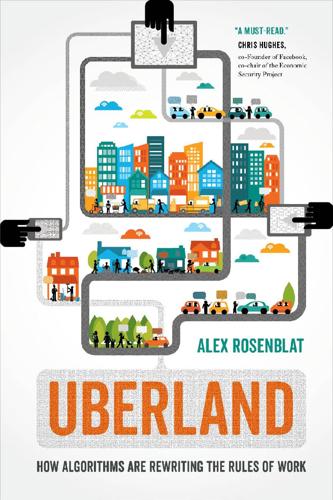
Uberland: How Algorithms Are Rewriting the Rules of Work
by
Alex Rosenblat
Published 22 Oct 2018
Passengers could now see in advance what a fare would cost based on Uber’s “best guess,” or estimate of the trip tally, rather than waiting for the tally at the end. The problem: not everything about “up-front pricing” was so up-front. Months before Uber finally admitted that it was charging passengers a higher fare while paying drivers based on a lower fare, drivers were raising alarm at discrepancies they were noticing. Some drivers tried to crowdsource data about up-front pricing from other drivers online,27 as well as through in-person meetings with labor organizers like the Independent Drivers Guild. The amounts they observed ranged from small discrepancies, like a few dollars, to differences that were much larger. Meanwhile, Uber declared that all the discrepancies generally evened out, but it refused to reveal how often the house won.28 So drivers, passengers, researchers, and reporters started investigating.
…
As the company builds off of labor trends by scaling opportunities for work among a disaggregated workforce, algorithms enact the rules that Uber sets. Algorithms manage users on consumer-facing technology platforms like Facebook and Google. Distanced from their employers, drivers turn to digital culture to crowdsource information that they don’t get directly from their algorithmic bosses. When employers disavow responsibility for workers, they open up a gap in workplace culture. Meanwhile, the Internet and digital culture have opened up a second wave of opportunities for workers, and others, to network their resistance.
…
The conflicted relationship between Uber and its drivers is an example of how labor relations are being shaped in our new, digital age. The rise of algorithmic management of consumers is prominent across Silicon Valley’s data-driven technologies. You can’t go far in daily life without encountering these systems: GPS navigation apps, like Google Maps, generate route recommendations and crowdsource traffic routes, while Facebook relies on an engine of algorithms to curate the information we digest. We don’t imagine Facebook or Google as part of the sharing economy, but Uberland brings to light the power that technology platforms have to disadvantage users even as platforms are shielded by the rhetoric of neutrality.
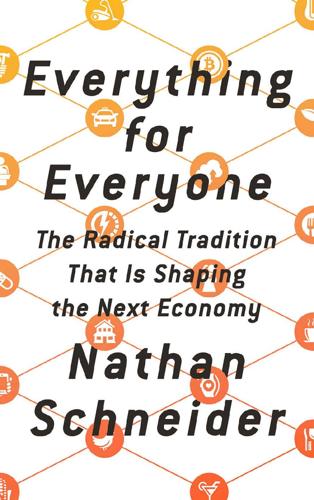
Everything for Everyone: The Radical Tradition That Is Shaping the Next Economy
by
Nathan Schneider
Published 10 Sep 2018
The idea of a real sharing economy based on shared ownership and shared governance remained mostly an afterthought. Silicon Valley was already giving up on the language of “sharing.” The word left companies too vulnerable to criticism, and even they could recognize it wasn’t very accurate. Uber became part of the “on demand” economy; Mechanical Turk was mere “crowdsourcing.” In the years to come, though, the young organizers behind OuiShare kept on being OuiShare, kept trying to hold the tensions between big business and the hope of business models that might actually be collaborative, that might actually share. They formed partnerships with an older generation of cooperative companies, including a large mutual insurer, to support the upstarts and ground their work in the legacy of pre-digital sharing.
…
Higher education is becoming a fruitful breeding ground for platform co-ops, just as it helped build older co-ops like the Online Computer Library Center, or OCLC, which grew out of Ohio universities in the 1960s. Researchers at Stanford have been building Daemo, a platform for worker-governed crowdsourcing, and a group of my students at the University of Colorado designed a student-run gig co-op. Through cooperation, universities can do business, education, and public service all at once. Platform co-ops have found other patrons as well. The labor union SEIU-United Healthcare Workers West attempted to develop a platform for home-care nurses, and in New York the Robin Hood Foundation supported Up & Go, a platform for home-cleaning worker cooperatives, built by a tech co-op in collaboration with the home cleaners who use it.
…
Fairbnb, with founders spread across Europe, plans to challenge Airbnb by offering benefits to local organizations. Savvy Cooperative is a platform co-owned by patients who earn income by providing insights to researchers and companies on their own terms. Word Jammers is a cooperative of copywriters who grew frustrated with the existing crowdsourcing platforms they were using and decided to strike out on their own. The founders of both Savvy and Word Jammers live with chronic conditions, and their concern for the standards of platform work stem from experiences of being differently abled. They know, better than most, that the dominant online economy wasn’t designed with them in mind.

Machine, Platform, Crowd: Harnessing Our Digital Future
by
Andrew McAfee
and
Erik Brynjolfsson
Published 26 Jun 2017
Not all versions of the crowd are equally successful at this gentle policing. The year 2016 saw challenges to this approach in the form of “fake news” on Facebook and other social media, and large amounts of racism, sexism, anti-Semitism and other despicable vitriol on Twitter. Jimmy Wales has argued that Wikipedia, the crowdsourced encyclopedia that he cofounded, is relatively immune to fake news in part because of its governance methods. By adopting the right principles, norms, institutions, and technologies, the crowd can do a great deal to maintain quality standards, though there may be other trade-offs, like how easily or quickly participants can post new items, how quickly they are shared, who gets to see them, and, yes, how much profit can be earned from the content.
…
The company’s platform also, of course, had to handle automatic execution of the trades generated by algorithms, record keeping, compliance with relevant regulations, and so on. Fawcett knew that if Quantopian succeeded at building a robust platform, and at drawing prospective “algo traders” to it, the company would have an important advantage: it could use lots of the good ideas that its crowd generated, not just the top one. Many crowdsourcing efforts are attempts to find a single solution: the best design for a nugget ice maker, or the best algorithm for sequencing the genomes of white blood cells. The second or third best entries in these competitions might be almost as good as the winner, but this fact is often not important to the competition’s host.
…
How is Quantopian’s crowd doing against the core of professional investors? By the end of 2016, it had hosted nineteen contests. Four of them were won by professional quants, and one by an investment professional who was not an algorithmic trader. The other fourteen winners were complete outsiders. The real test of insiders versus outsiders, and of the concept of crowdsourced algorithmic investment, will come in 2017, when the company plans to offer to qualified investors its own quantitative investment fund. Its performance compared to that of other hedge funds, especially quant funds, will help us understand where the true experts are in this domain, and how powerful the crowd can be.
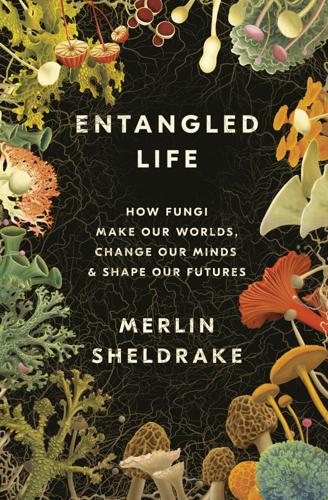
Entangled Life: How Fungi Make Our Worlds, Change Our Minds & Shape Our Futures
by
Merlin Sheldrake
Published 11 May 2020
As he explains in his book Radical Mycology—a hybrid of fungal manifesto, guidebook, and grower’s guide—his goal is to create a “people’s mycological movement” versed in “the cultivation of fungi and the applications of mycology.” Radical Mycology is part of a larger movement of DIY mycology, which emerged from the psychedelic mushroom-growing scene kickstarted in the 1970s by Terence McKenna and Paul Stamets. The movement took on its modern form as it grew together with hackerspaces, crowdsourced science projects, and online forums. Although its center of gravity remains on the West Coast of North America, grassroots mycological organizations are rapidly spreading to other countries and continents. The word radical derives from the Latin radix, meaning “root.” Interpreted literally, the concerns of radical mycology lie with its mycelial base, or its “grassroots.”
…
Fungi isolated from a contaminated environment may have already learned how to digest a given pollutant and, as locals, be able to remediate a problem and thrive. This was the approach used by a team of researchers in Pakistan who screened soil from a city landfill site in Islamabad and found a novel fungal strain that could degrade polyurethane plastic. Crowdsourcing fungal strains may sound implausible, but it has resulted in some major discoveries. The industrial production of the antibiotic penicillin was only possible because of the discovery of a high-yielding strain of Penicillium fungus. In 1941, this “pretty golden mold” was found on a rotting cantaloupe in an Illinois market by Mary Hunt, a laboratory assistant, after the lab put out a call for civilians to submit molds.
…
Or just amateurs: For a discussion of the recent history of citizen science and the “zooniverse”—a digital platform that allows people to participate in research projects across a wide number of fields—see Lintott (2019), reviewed by West (2019); for a classic discussion of “lay experts” with regard to the AIDS crisis see Epstein (1995); for a discussion of modern crowdsourced participation in science see Kelty (2010); for citizen science in ecology see Silvertown (2009); for a discussion of the history of experimental “thrifty” science as conducted at home see Werrett (2019). The work of Darwin is a notable example. For most of his life, he conducted almost all of his work at home.
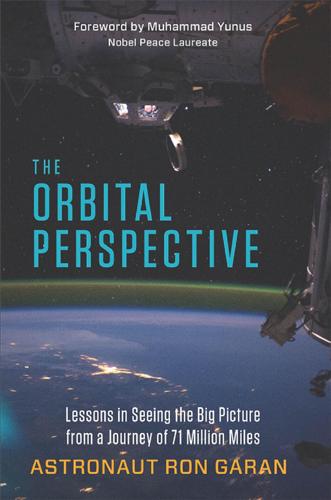
The Orbital Perspective: Lessons in Seeing the Big Picture From a Journey of 71 Million Miles
by
Astronaut Ron Garan
and
Muhammad Yunus
Published 2 Feb 2015
We also need tools to analyze that data and to translate the analysis into more effective and targeted approaches that can dramatically improve society’s ability to meet our grand challenges. Fortunately, along with the dramatic increase in our ability to produce data, there also have been recent developments in the power and ability of tools to analyze, make use of, and communicate the insights of that data worldwide. Among these developments is the use of crowdsourcing to process data in what is commonly known as a hackathon or codeathon. These mass collaborations are organized around various themes and were born out of a public–╉private initiative called Random Hacks of Kindness. Other ingenious mass collaboration tools include ReCAPTCHA and Duolingo, which tap the previously unutilized, distributed efforts of millions of people to perform massive tasks—╉often without users knowing they are taking part in a mass collaboration.
…
It certifies that others have ridden in a particular car, that they were safe and comfortable, that they gave the driver a good rating, and that the company has done some level of filtering. This technology represents a new model of community-based provisional trust, created only for the period during which a user needs the service. It is crowdsourced certification that requires very little overhead and infrastructure, and that is highly adaptive to change. By comparison, a traditional taxi system is much more like the ISS program. It operates in a hierarchical command-and-control structure. There is strict licensing, regulation, and tests.
…
When many people review and comment on a particular room for rent or an Uber driver, those evaluations start to become statistically accurate. The driver or homeowner has demonstrated a track record of living up to agreements, and the collective wisdom of the crowd can point to a high level of dependability. This is similar to Duolingo’s use of beginning language students to provide translations or ReÂ�CAPTCHA’s ability to crowdsource the accuracy of book scans. Community-Based Trust These examples relate to personal trust, but there are countless similar examples of communities that form online for a specific purpose and operate in a coordinated way for the greater good. Wikipedia, for instance, was built on the premise that people enjoy interacting within a community, which in the case of Wikipedia, is a global village documenting human knowledge.

50 Future Ideas You Really Need to Know
by
Richard Watson
Published 5 Nov 2013
At the time of writing (June 2012) the cost had fallen to $299. A decade earlier this would have cost close to $10,000, while James Watson, the codiscoverer of DNA and one of the people behind the Human Genome Project, paid around $2 billion to work out how to make sequencing work. Interestingly, 23andMe plugs into the idea of crowd-sourcing data, too, by sending regular questionnaires to thousands of users asking about them about, for example, specific food allergies. When the responses to such surveys are matched against known genetic information they can potentially find the causes of certain traits in a matter of months rather than years and for minimal cost.
…
In the end, it really is up to you to look after yourself by whatever method you choose from the hundreds of possibilities available so that you don’t need medicine. Yes, patients know best and can be trusted to have access to all their data. the condensed idea Patient power timeline 2014 Apple introduce iMedic monitoring feature on iPhone 6 2018 Dunnhumby and Tesco put in charge of 25 percent of UK hospitals 2020 Launch of Medipedia, a crowd-sourced medical directory 2025 All medical records accessed via the “cloud” 2030 All hospitals rated eBay style by patients 2040 TripAdvisor launches hospital review spin-off 25 Medical data mining Medicine, like insurance, isn’t always that smart. Both tend to be reactive, and personal risks are assessed using aggregated historical data, which is linked to questions about how old someone is, where they live and what they do for a living.
…
Jaron Lanier, sometimes referred to as the creator of the term “virtual reality,” believes that crowd intelligence is something of a fallacy analogous with the belief of hyperlibertarians that the free market is all-wise and ultimately benefits all. To quote Lanier: “The beauty of the Internet is that it connects people. The value is in the other people. If we start to believe that the Internet itself is an entity that has something to say, we’re devaluing those people and making ourselves into idiots.” The danger with crowd-sourced wisdom is that the aggregator may become more important and influential than the aggregated. Taken to the extreme, collective intelligence would mean that individuals would not be required to make individual judgments or take on individual responsibilities. Coming together? But how long will this last?
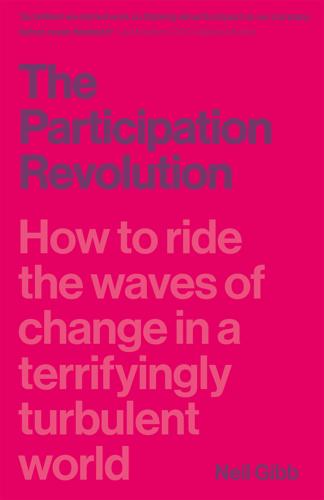
The Participation Revolution: How to Ride the Waves of Change in a Terrifyingly Turbulent World
by
Neil Gibb
Published 15 Feb 2018
Uber (founded 2009, value $62.5 billion), Didi Chuxing (founded 2012, value $50 billion), and Airbnb (founded 2008, value $31 billion) are participatory platforms. Ant Financial (founded 2010, value $60 billion) is a participatory tool, enabling users to participate safely in China’s burgeoning e-commerce markets. Xiaomi (founded 2010, value $45 billion) is a participatory brand, crowd-sourcing users to participate in the design process as a means to make smartphones available at as near the cost of production as possible. The participation revolution 1. Everyone will be famous for 15 people “Music itself is going to become like running water or electricity… So it’s like, just take advantage of these last few years because none of this is ever going to happen again.
…
The key metric that we have used to measure the performance of our nations for the past 100 years is “gross domestic product (GDP)”. This measure ceases to be useful when content and products become devalued, and, in many cases, free. You can’t assess the value of open-source software, intellectual crowd-sourcing, peer-based wellbeing, or businesses like Facebook on the value of what they produce. The key metric of corporations – productivity – is a measure that has been flatlining for the best part of a decade. The reason for this is that it isn’t measuring what is driving the new economy. Productivity as a performance metric emerged out of the factory system, where value was calculated by assessing the price of the end product in relation to the cost of the materials, labour, and processes that made it.
…
The conclusion that Professor Klick’s team drew was that the reason the crime rate fell was because mobile phones meant potential criminal acts could be reported much more easily; potential victims could call the emergency services in-the-moment, onlookers could call immediately from where they stood. Knowing this was possible then acted as a deterrent to would-be offenders. The more mobile phones there were, the bigger the deterrent. It created a sort of crowd-sourced surveillance system. It was a very logical explanation. But what it didn’t explain was the intriguing sudden dips and spikes in the curves. And this may be because while Professor Klick’s team were right about the correlation, they were looking in the wrong direction when in came to root cause.
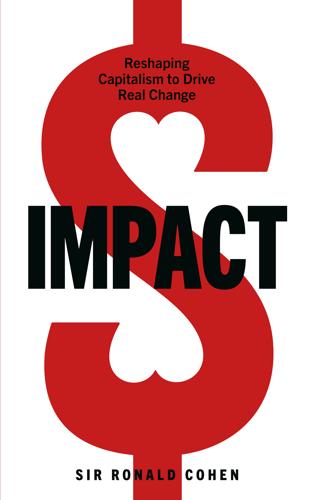
Impact: Reshaping Capitalism to Drive Real Change
by
Ronald Cohen
Published 1 Jul 2020
These estimates allow the reliable quantification of at least part of the benefit that an impact investment achieves and are used by local commissioners, charitable organizations and social enterprises to inform outcome-based contracting and the terms offered by social impact bonds.12 Some governments, like Portugal’s, have followed the UK’s lead, and some independent efforts are being made in parallel to quantify the cost of social issues globally. One such effort is the Global Value Exchange, a crowd-sourced database of over 30,000 impact measurement metrics that offers valuations in a similar way to the Unit Cost Database.13 For example, you can find out the annual cost of a homeless person who is out of work in the UK based on the benefits payments they receive, their lost income tax and national insurance payments, and their lost economic output.14 Our priority now should be to work towards standardized metrics for each social area.
…
For example, Buycott – an app that lets you ‘vote with your wallet’12 that was launched by the 27-year-old programmer Ivan Pardo in 2013, allows you to scan any barcode and access information about the company that produces the product. Does the company treat its workers properly? Does it test its products on animals? Does it support human rights causes? And so on.13 Buycott allows users to ‘shop with their conscience’ across 192 countries, crowdsourcing product information from consumers.14 As Pardo puts it, ‘Every dollar you spend is a vote for the type of world you want to see. I think that if you’re spending dollars buying products that support things that are against your values then you’re complicit in allowing those values to be the norm … What we hope to accomplish is to allow people to leverage their purchase decisions to create change in the world.’15 A recent Accenture report on the rise of purpose-led brands calls this the ‘era of radical visibility’, and states that ‘companies are under the spotlight like never before as they struggle for competitive advantage in the context of this reality’.16 This radical visibility has created a wave of change across a wide variety of consumer products.
…
An online portal provides more than 90 social cost indicators8 – for example, it shows that it costs €42 ($47) per day to keep an offender in prison and €137 ($145) per day to house a young offender in a juvenile detention center.9 Some non-governmental initiatives are going in the same direction as these cost databases: the UK’s Global Value Exchange, set up by the non-profit Social Value UK – a long-standing proponent of impact measurement, is a free online platform that offers a crowd-sourced database of values, outcomes, indicators and stakeholders, comprising over 30,000 global impact measurement metrics.10 4. Shift government focus from inputs to outcomes When it comes to tackling the social and environmental problems we face today, there is no time – or money – to waste When it comes to tackling the social and environmental problems we face today, there is no time – or money – to waste, which is why it is so important that governments shift their focus from inputs to outcomes.

Actionable Gamification: Beyond Points, Badges and Leaderboards
by
Yu-Kai Chou
Published 13 Apr 2015
As designers, it is important to recognize that they understand the goal (beating their friends), build ownership and familiarity with their tools, and use their unique strategies and experience towards that. Folding into the Crowd One of the best examples of Empowerment & Creativity & Feedback is seen in the new trend of Crowdsourcing. Crowdsourcing is the activity of throwing a challenge or activity into the public and having the masses collaborate or competitively solve the problem. Well known examples such as the XPRIZE allows individuals and teams to engineer new solutions in advanced technology such as aerodynamics and space travel to advance the human race; while Kaggle allows the brightest mathematical minds to solve predictive modeling and analytics problems14.
…
Through later on Groupon failed to realize the full potential that late investors hoped it would obtain due to operational issues, during 2013 it still generated $2.57 Billion in revenue with $1.48 Billion in profits just off the Group Quest game technique21. Similar Group Quest models such as Kickstarter and Indiegogo have also become very popular services that crowdsource funds to support the development of innovative projects that cannot raise money from institutional investors. There are so many of these fascinating concepts within games that we are just beginning to extract into the real world. If we just understood these techniques and applied them effectively to meaningful projects, we might even create the next billion dollar business.
…
Octalysis of the Waze Navigation App Beyond just a high level Octalysis overview of an experience, we can also analyze the experience separately throughout the 4 Experience Phases of a Player’s Journey: Discovery, Onboarding, Scaffolding, and Endgame. Somewhat inline with the Speed Camera Lottery, another sector in “gamified driving” is the navigation app Waze. As mentioned in Chapter 5, Waze is an immensely popular GPS app that is changing how we navigate traffic through crowdsourcing real-time traffic and road condition data. Often receiving an average five star rating by tens of thousands of users, its fans have taken the mundane experience of driving and turned it into an enjoyably immersive adventure with a rewarding social experience. Let’s take a deeper look into how Waze accomplishes this by applying Octalysis to its design and mechanics.

Masters of Management: How the Business Gurus and Their Ideas Have Changed the World—for Better and for Worse
by
Adrian Wooldridge
Published 29 Nov 2011
Companies dissolve into a thousand small initiatives rather than focusing on a few big problems. Crowd-sourcing can be more trouble than it’s worth. Managers have to spend weeks panning through the dirt in order to find a few grains of gold. They also discover that the crowds don’t always have their best interests at heart: when Justin Bieber, a Canadian teenage pop star, asked his fans for suggestions as to what country he should visit next, the most popular answer was North Korea.9 One popular solution to the problem of oversupply is to use prizes to give crowdsourcing a focus and structure. The value of prizes being offered by corporations has more than tripled over the past decade, to $375 million.10 Netflix offers a $1 million prize to anyone who can improve its film recommendation system by 10 percent.
…
But many companies introduced this practice long before Google: 3M owes many of its 60,000 products, including Post-It notes, to its system of “bootlegging,” and W. R. Grace ascribes its long record of innovation to “noodling.” Much newer is the fashion for looking outside the borders of the organization for your best ideas. There are lots of different buzzwords to describe this activity—co-creation (C. K. Prahalad), crowdsourcing (Jeff Howe), wikinomics (Don Tapscott), we-think (Charles Leadbeater)—but it rests on a simple insight: that “there are always more smart people outside your organization than in it,” to quote Bill Joy, a former boss of Sun Microsystems. The most surprising convert to this idea is Procter & Gamble, the consumer goods giant.
…
Minted does the same thing for high-end stationery. We can expect thousands of imitators in the future: the Threadless model is perfectly suited to an industry with low barriers to entry, large supplies of underemployed designers, and a limitless demand for nanosecond novelty. Don Tapscott and Anthony Williams argue that “crowdsourcing” represents a new phase in business history: by radically reducing the costs of collaboration, the Internet is forcing companies to transform themselves from hierarchies (which point inward and upward) into networks (which point downward and outward). The Web reduces—and often obliterates—barriers to entry by giving amateurs access to world-class tools and worldwide markets; it makes it easy for large groups of people to collaborate; and it supercharges innovation: crowds of people can develop new ideas faster than isolated geniuses and disseminate new products faster than most companies.
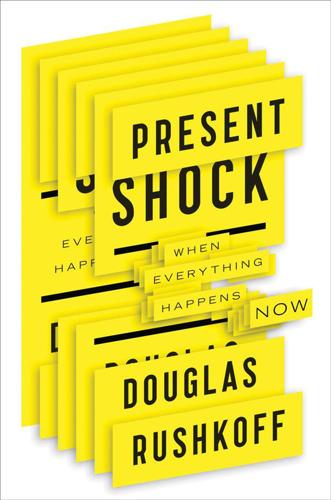
Present Shock: When Everything Happens Now
by
Douglas Rushkoff
Published 21 Mar 2013
All she succeeded in doing was to equate the Clinton dynasty with that of a fictional mob family. Even if she wasn’t fractalnoid, her audience was busy making the connections.) Corporations are attempting to enter the feedback loop as well—or at least trying to create limited opportunities for controlled feedback to occur. Crowdsourcing is really just a corporation’s way of trying to focus the otherwise random feedback from consumers onto a particular task. Unfortunately, they’re doing so without fully considering the liabilities. General Motors, for example, invited consumers to make commercials online for one of its SUVs. The company developed a very sophisticated set of Web utilities through which users could select footage, edit, add music, write title cards, and create special effects.
…
Indeed, the campaign went more viral than GM could have hoped. Screech. To GM, who eventually pulled down the website, this must have seemed like an assault, some sort of activist prank or media terrorism. Why was everyone attacking GM, when all the company had done was offer people the chance to make some videos? Wasn’t this how crowdsourcing is supposed to work? For their part, the people who made the videos were simply using the tools GM provided and beginning the conversation that the company said it wanted to have. Again, the limits of openness had been reached, feedback iterated spontaneously and instantaneously into screech, and another company rethought whether it wanted to have a social media strategy at all.5 Of course, in a landscape where everyone is connecting and feeding back to everything and everyone else, there is no such thing as not having a social media strategy.
…
Do you ask an economist, a sociologist or a political scientist? Each of them individually is too constrained. The more multi-faceted the problem, the more forces intersect and the more challenges one must face within a siloed system.”24 On the one hand, this means democratizing innovation and change—not crowdsourcing, per say, where you just get customers to do your advertising work for you—but creating an environment where everyone connected with a culture or industry feels welcome to participate in its development. It’s the way amateur gearheads develop the best new technologies for cycling, which are then incorporated into the designs and products of major manufacturers.
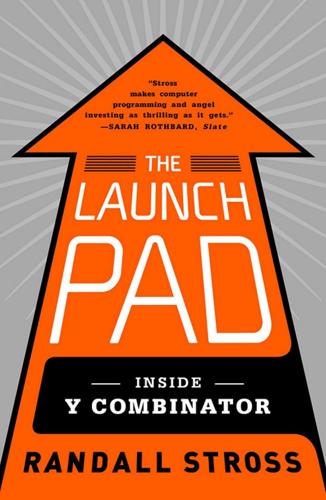
The Launch Pad: Inside Y Combinator, Silicon Valley's Most Exclusive School for Startups
by
Randall Stross
Published 4 Sep 2013
The four, all of whom are coders, met while taking a graduate “social enterprise” class at Berkeley’s School of Information. They have developed software for sending repetitive tasks to the cell phones of low-income workers in India. One of the company’s guiding principles is to pay the workers at a rate that will help them climb out of poverty—crowdsourcing done in a way to make “crowd workers happy,” says MobileWorks. The MobileWorks cofounders are a multicontinental team. Anand Kulkarni and David Rolnitzky grew up in the United States. Prayag Narula came from India and Philipp Gutheim from Germany. Kulkarni leads off, describing for Lee what MobileWorks does.
…
So this is a demo right here of our live site and, as you can see, you can click any orange lyrics for explanations. This is the ‘Good Morning’ page on our site where you can read the explanation of that Kanye line. Now, we have about 250,000 explanations on the site, tens of thousands of songs. Who writes the explanations? Well, any member of our community can write an explanation. All the explanations are crowdsourced.” He reviews the site’s traffic growth and shows the graph with the steep upward curve. “This isn’t some promising results from an early startup that just launched on TechCrunch. This is a huge site. We get three million unique visitors a month. We’ve been out over a year.” In addition to covering English-language lyrics, fans are posting explanations for rap lyrics in other languages, too, such as French and German, he says.
…
The longer that the founders can rely only on their own labor, working on the subsistence salaries they pay themselves, the more time they will have to prove out their idea—or, if they must, discard the idea and try another. • The winter batch founders are now about to be entertained. “What’s poppin’! I’m Tom, representing Rap Genius. We’re a Web site devoted to crowdsourced explanations of rap lyrics.” Tom Lehman is a born performer. Just as he did when he presented at gatherings in the summer, here again he talks and gestures animatedly, holding the attention of the hall. “Being here for the first dinner makes me a little emotional,” he says. “It reminds me of my first dinner at Y Combinator.
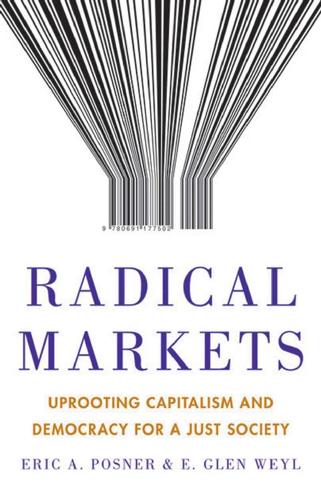
Radical Markets: Uprooting Capitalism and Democracy for a Just Society
by
Eric Posner
and
E. Weyl
Published 14 May 2018
While interaction environments can be designed to prompt users for useful information (e.g., by making available emoticons that allow users to label their interactions with their corresponding emotions), there are limits to the detail and usefulness of the tags that users will supply purely for fun in the course of entertainment and consumption. This fact does not escape the siren servers. Most have their own crowd-sourcing platforms, which label huge sets of data they collect through other means to improve the value, reliability, and usefulness of these data. Siren servers go to extraordinary lengths to hide the role of human data work in producing their “magical” services, to the point where efforts to expose this work have become something of a social movement among Internet workers’ activists,26 as described by anthropologist Mary Gray and computer scientist Sid Suri in their upcoming book Demanding Work.27 For example, Google quietly subcontracts more than 10,000 human raters to give feedback on the quality of its search results in cases where organic user feedback is insufficient, yet it took investigative reporting to uncover this practice.28 Thus, while siren servers clearly need help from ordinary users, they wastefully contort themselves to go around the most natural channel (asking those organically interacting with their services for feedback) and make minimal payments to workers outside of this chain, hiding this practice and its importance from the public eye.
…
While it is difficult to quantify, it seems very likely that a majority of all valuable online and perhaps all digital data are collected by Facebook and Google; in 2015, Google’s share of Internet searches (with which most browsing begins) was 64% and on average Facebook’s 1.5 billion users spent 50 minutes every day on the site or app.33 The huge fraction of the market controlled by these giants means that they would bear most of the brunt of increased prices for what are currently free data. Given that most of the productive work to be done is not separate “crowdsourcing” that workers explicitly seek out, but rather work in the course of entertaining online interactions, competing companies would have to build up services of comparable quality and user devotion before they would be able to make productive use of querying users for valuable data. Several start-ups have adopted this model in an effort to attract users to an alternative social network (e.g., empowr) or data management service (e.g., Datacoup).
…
See Roland Bénabou & Jean Tirole, Intrinsic and Extrinsic Motivation, 70 Review of Economic Studies 489 (2003), for a survey of this literature. 31. Sara Constance Kingsley et al., Accounting for Market Frictions and Power Asymmetries in Online Labor Markets, 7 Policy & Internet 383 (2015). 32. Arindrajit Dube, Jeff Jacobs, Suresh Naidu, & Siddharth Suri, Monopsony in Crowdsourcing Labor Markets (Columbia University Working Paper, 2017). 33. https://www.nytimes.com/2016/05/06/business/facebook-bends-the-rules-of-audience-engagement-to-its-advantage.html?mcubz=0&_r=0. 34. David L. Harris, Massachusetts Woman’s Lawsuit Accuses Google of Using Free Labor to Transcribe Books, Newspapers, Boston Business Journal (January 23, 2015), https://www.bizjournals.com/boston/blog/techflash/2015/01/massachusetts-womans-lawsuit-accuses-google-of.html. 35.
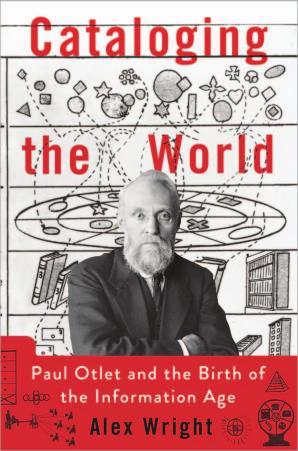
Cataloging the World: Paul Otlet and the Birth of the Information Age
by
Alex Wright
Published 6 Jun 2014
Otlet made appeals to private donors and foundations. He placed high hopes that the United States—perhaps Rockefeller—would help to underwrite his project. Finally, Otlet thought, there might be an opportunity to fund the project through widespread donations collected via a subscription offering, or what we might today call crowdsourcing. The proposal received favorable reactions in the Swiss press, which welcomed him as a visionary. “Men like him are needed,” went one editorial. “They are the whip that shakes our laziness, our inertia, our tendency to accept things as they are and ignore what should be.”25 At last it looked as though the World City project might once again be gaining traction.
…
And if you believe the latter any system you devise will be artificial and dangerously top-down. The essay distills a prevalent mindset on the Web: that cataloging and classification are antiquated models, that the truth is relative, and that the hive mind of the collective intellect will sort everything out. It’s an appealing notion, but in practical terms crowdsourced classification, which is what this represents, may prove no less a fantasy than Otlet’s dream of a world government managing the world’s intellectual output. For several years in the mid-2000s, Web cognoscenti held out high hope for so-called folksonomies (a neologism coined by Thomas Vanderwal), participatory tagging systems in which users classify material en masse using open-ended keywords, rather than relying on expert cataloging systems.
…
See also Mechanical collective brain; “World brain” concept of Wells Brand, Stewart, 258, 260, 261 Branford, Victor, 113 The Bridge (Die Brücke), 205–208 Brin, Sergey, 298 British Empire in Africa, 51 British Museum, 186 Brockman, John, 276 Brook, Daniel, 303 Bryce, James W., 209, 217 Buckland, Michael, 35, 217 Bührer, Karl Wilhelm, 205 Bush, Vannevar, 15, 209, 217–218, 248, 254–258, 262, 285, 290 Cailliau, Robert, 15, 252–253 Calvin, John, 25–26 Camera Obscura, 108–110, 302 Capart, Jean, 203–204 Carlier, Alfred, 194 Carnegie, Andrew, 40, 116, 118, 119, 133, 135, 306–307 Carnegie Foundation, 118, 178, 199 Carrier pigeons, 100 338 INDEX Casement, Richard, 146 The Celestial Emporium of Benevolent Knowledge (fictional Chinese encyclopedia), 220 Central Office of International Institutions, 98–99, 135 Cerf, Vinton G., 15, 252 CERN particle physics research center (Switzerland), 252–253, 268–271, 269 Chabard, Pierre, 121 Chambers, Ephraim, 29 Channeling, 227 Charlemagne, 6 Chirac, Jacques, 299 Chronicles of England (Holinshed), 27 Cinema, possibilities of, 228–229 Cities in Evolution (Geddes), 110 Citizendium, 284 Classification schemes. See also Dewey Decimal System; Universal Decimal Classification (UDC) Bacon’s, 27–28 Bush’s dislike for, 257 The Celestial Emporium of Benevolent Knowledge (fictional Chinese encyclopedia), 220 crowdsourced classification, 279 Encyclopedia Universalis Mundaneum (EUM), 191–193, 192, 230 Geddes and, 112–114, 113 inherent flaws in, 221 Nelson’s eschewing of, 265–267 Ostwald’s, 206 Otlet’s final categorization of documents, 226–230, 230, 257 Otlet’s library classification scheme (as student in Jesuit school), 47, 47–50 Science of the Book, 222 in Web environment, 279 Client-server architecture, 252, 292 Coleridge, Samuel Taylor, 264 Collective consciousness/intelligence, 287, 288, 293–294.
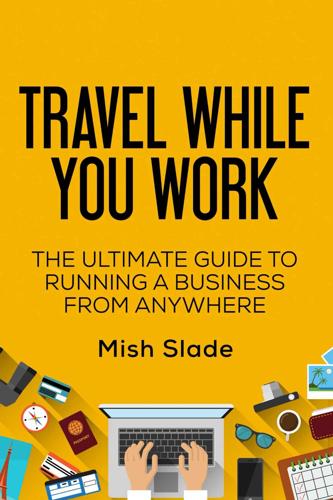
Travel While You Work: The Ultimate Guide to Running a Business From Anywhere
by
Mish Slade
Published 13 Aug 2015
You can hear how they sound by clicking on the "speaker" symbol. If you want to practise these words, use a flashcard app like Anki (www.worktravel.co/anki). If you actually want to have a go at learning the language, Duolingo (www.worktravel.co/duolingo) should be your first port of call. It's a language-learning and crowdsourced text-translation platform, available in a number of languages. It's gamified, free, and immensely fun – so it ticks all the boxes. You may end up being asked to translate phrases like "The bear will not fit through the door" and "My yellow turtles drink milk", but you will learn how to speak the language.
…
Does the SIM allow tethering, so that you can share your phone's internet connection with your laptop? Not all SIM cards allow this, but it's a useful thing to have because it means you'll be able to work even if you arrive at your apartment and the wifi happens to be shoddy. As well as using the above instructions, you might want to check out the following websites for their crowd-sourced info on SIM packages around the world (bear in mind that the info might be incomplete or out of date): TripAdvisor forum (www.worktravel.co/taforum): click on the country you're interested in, then type something like "monthly prepaid SIM 3G". Prepaid with Data (www.worktravel.co/prepaid): a massively useful resource, but it often doesn't have all the information/available packages for each SIM card provider.
…
SeatGuru has seating maps for all airlines, but where things get really cool is that the maps are colour-coded according to how good the seats are: some are considered superior according to the price you paid, while others are marked as downright awful and not worth a penny. And who decides on the "colours" of the seats? Anyone – including you! The information is crowdsourced by users of the site. You'll also see a few written reviews of seats next to each plane's seating map. (If you want to waste the rest of your day on airplane-related geekery, head to SeatGuru to compare all the airlines' first class cabins: www.worktravel.co/firstclass. You can also browse SeatGuru's ever-fascinating blog: www.worktravel.co/sgblog.)
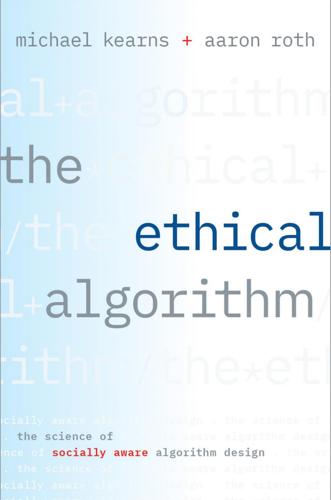
The Ethical Algorithm: The Science of Socially Aware Algorithm Design
by
Michael Kearns
and
Aaron Roth
Published 3 Oct 2019
Such algorithms in turn allowed the informational problem to be solved by crowdsourcing. Even though early navigation apps operated on traffic data not much better than in the pre-Internet days, they could still at least suggest plausible routes through a complex and perhaps unfamiliar city—a vast improvement over the era of dense and confusing fold-up maps in the glove compartment. And once users started adopting the apps and permitting (wittingly or not) their location data to be shared, the apps now had thousands of real-time traffic sensors right there on the roadways. This crowdsourcing was the true game-changer. Whatever pride you might have had in your navigational wizardry in your home city, the utility of a tool that automatically optimized your driving time in response to real-time, highly accurate, and granular traffic data on virtually every roadway anywhere was just too alluring to decline.
…
See also interpretability of outputs computer science, 5 computer vision, 145–49 confirmation bias, 92 consumer data, 6–7, 13, 33 consumer Internet, 64 Consumer Reports, 116 convex minimization problems, 110 cooperation cooperative solutions in game theory, 113–15 and equilibrium in game theory, 99–100 and navigation problems, 112–13 through correlation, 113–15 Cornell University, 159 correlations cooperation through, 113–15 and dangers of adaptive data analysis, 152–55 and forbidden inputs, 66–67 and online shopping algorithms, 120 and torturing data, 159 in traffic equilibrium problems, 113–15 and word embedding, 68 costs of ethical behaviors, 19 cost structures, 103 counterfactuals, 156, 174, 191 credit. See lending and creditworthiness crime, 14–15, 62, 92–93 crowdsourcing, 104 cryptography, 31–34, 37 Cuddy, Amy, 141–42 cultural biases, 57 Dalenius, Tore, 35 data administrators, 45–47 data analysis procedures, 164 data collection, 58 dating preferences, 94–97, 100–101 decision-making process, 3–4, 11, 190–91 decision trees, 154–55, 159–60, 164, 173 deep learning algorithms, 133, 146–47 DeepMind, 179 deep neural networks, 174–75 defection, 99–100, 115, 128 demographics, 7, 193 derived models, 6 diagnostics, 27–29 dietary research, 143–45, 158 differential privacy to combat overfitting data, 167 commercial deployment of, 47–49 and correlation equilibrium, 114–15 described, 36–39 design of ethical algorithms, 193, 195 and differing notions of fairness, 85 and embarrassing polls, 40, 43–45 and fairness vs. accuracy of models, 63 and game-theoretic algorithm design, 135 limitations of, 50–56 and trust in data administrators, 45–47 Dijkstra’s algorithm, 104, 109 diminishing marginal returns, 186–88 disability status, 86–89 discrimination and algorithmic violations of fairness and privacy, 96 and data collection bias, 90–93 and “fairness gerrymandering,” 86–89 and fairness issues in machine learning, 65–66 and fairness vs. accuracy of models, 63 and game-theoretic algorithm design, 134–35 and “merit” in algorithmic fairness, 75 and recent efforts to address machine learning issues, 15 and self-play in machine learning, 132–33 and statistical parity, 69 and supervised machine learning, 64 and unique challenges of algorithms, 7 and user preferences, 96–97.
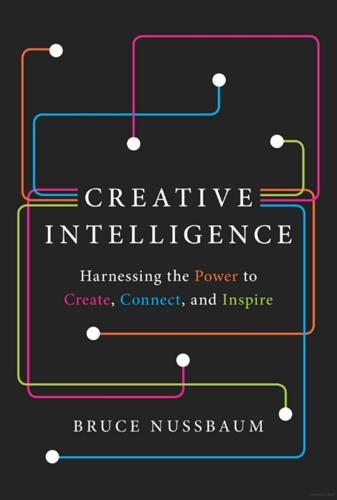
Creative Intelligence: Harnessing the Power to Create, Connect, and Inspire
by
Bruce Nussbaum
Published 5 Mar 2013
client=ob&q=NASDAQ:AAPL, accessed October 17, 2012. 189 As Walter Isaacson’s biography: Isaacson, Steve Jobs. 189 The iTunes app acts: http://www.apple.com/itunes/, accessed September 5, 2012. 189 face-to-face dimension: Benjamin, “The Work of Art in the Age of Mechanical Reproduction.” 190 Boeing has begun using new: accessed September 5, 2012, http://www.boeing.com/commercial/ 787family/background.html/; accessed September 5, 2012, http://www.boeing.com/commercial/aeromagazine/ articles/qtr_4_06/article_04_2.html. 190 IBM has moved into: Jessi Hempel, “Crowdsourcing,” September 24, 2009, accessed September 5, 2012, http://www.businessweek.com/stories/ 2006-09-24/crowdsourcing; http://www-07.ibm.com/services/ph/portfolios/ ITS/its_s_cs_c_nationalcity.html, accessed September 9, 2012; http://www.cnbc.com/id/17169877?__source=vty, accessed September 9, 2012. 191 Corning is developing new: http://9to5mac.com/2012/ 06/04/corning-announces-slim-flexible-willow-glass-video/, accessed September 5, 2012; http://www.apple.com/about/job-creation/, accessed September 9, 2012; http://en.wikipedia.org/wiki/Gorilla_Glass, accessed September 9, 2012. 191 From its founding in 1939: In the spring of 2012, I assembled a panel of six retired HP engineers and researchers who’d worked there from the early glory days through the company’s decline, and spent two days talking with them in order to understand the culture of HP and how it had changed. 191 advanced degrees in electrical engineering: Lee Fleming, “Finding the Organizational Sources of Technological Breakthroughs: The Story of Hewlett-Packard’s Thermal InkJet,” Industrial and Corporate Change, vol. 11, no. 5, 1059–84 (Oxford University Press, 2002); “Case Study: Spitting Image,” Economist, September 19, 2002, accessed September 10, 2012, http://www.economist.com/node/1324685. 192 “HP Labs was a wonderful place”: Fleming, “Finding the Organizational Sources of Technological Breakthroughs.” 192 “I bore easily”: Ibid. 192 “very far, very fast”: Ibid. 192 In 1978, Vaught and Donald: Ibid. 192 From the beginning of what: http://en.wikipedia.org/wiki/Dot_matrix_printer, accessed September 5, 2012; http://eightiesclub.tripod.com/id325.htm, accessed September 5, 2012. 192 Dot-matrix printers were “impact printers”: Stan Retner, “History of Inkjet Printers Development,” Toner Cartridge Depot, November 21, 2007, accessed September 5, 2012, http://blog.tonercartridgedepot.com/2007/ 11/21/history-of-inkjet-printers-development/. 192 Printing was slow and loud: http://en.wikipedia.org/wiki/Dots_per_inch, accessed September 5, 2012. 192 In fact, the joke going: personal interviews with the six retired HP engineers I talked with in Portland, Oregon, in the spring of 2012. 193 For most of its early history: Ibid.; Frank Cloutier, “Building One of the World’s Largest Technology Businesses (and How to Have Fun and Profit from Your Hobbies),” presentation at MIT, March, 2, 2004, accessed at http://techtv-dev.mit.edu/videos/ 15930-building-one-of-the-world-s-largest-technology-businesses-and-how-to-have-fun-and-profit-from-your-home. 193 “We weren’t the largest”: Cloutier, “Building One of the World’s Largest Technology Businesses.” 193 And yet on Christmas Eve: Fleming, “Finding the Organizational Sources of Technological Breakthroughs; “Case Study: Spitting Image.” 193 as Vaught caught sight: Fleming, “Finding the Organizational Sources of Technological Breakthroughs.” 193 “Inventors just don’t go home”: Ibid. 193 “if you think about it”: Ibid. 193 (Because of this explosive process): Thomas Kraemer, “Printing Enters the Jet Age,” American Heritage Invention and Technology, Spring 2001, vol. 6, no. 4, 18–27; accessed September 5, 2012, http://tomsosu.blogspot.com/2012/ 02/history-of-hp-inkjet-printers-in.html. 194 “They had tremendous fun”: Alan G.
…
They were younger, more in touch with their roots, and connected to the culture of their founders. They could jump on new creative ideas and pivot them into wildly successful products and brands. And many are trying to achieve this same creative spirit today—Boeing has begun using new composite materials for its 787 Dreamliner, IBM has moved into crowdsourcing and wiring cities for innovation, and Corning is developing new glass for iPhone screens. But few companies have enjoyed the success that Hewlett-Packard had in its heyday. From its founding in 1939 in a Silicon Valley garage, HP had the kind of culture that today’s start-up entrepreneurs would love to emulate.
…
See also Creativity assessing, 251–57 author’s goal in developing concept of, 38–39 author’s writing and research on, 11–14, 30 beliefs about genius and, 3–9 cultivating, 257–61 design thinking paradigm and, 14–17 economics of, 240–45 five competencies of, 33–37 (see also Framing; Knowledge mining; Making; Pivoting; Playing) Indie Capitalism and (see Indie Capitalism) origination of term, 17 reassessing value of, 263–66 research on, 14–33 (see also Research, creativity) Creativity. See Creative Intelligence (CQ) Crony Capitalism. See Financial capitalism Crowdcube, 245 Crowdfunding, 36, 85–88, 170, 198–99, 244–45 Crowdsourcing, 191 Csikszentmihalyi, Mihaly, 22–23, 25, 26, 254 Cubism, 89 Culture. See also Sociocultural context embodiment of values of (see Embodiment) engagement framing in online, 97–106 United States and global, 31 (see also Global cultural environment) Curry, Michael, 123 Cyclone vacuum cleaners, 62–63 Dancing with the Stars TV program, 254 Daring Fireball website, 170 Davos, World Economic Forum, 227 DeLong, Bradford, 237 Demby, Eric, 158 Democrats, 94, 249 Dengue fever disease game, 139–40 Deregulation, 232–33 Deresiewicz, William, 78 Designer Fund, 180 Design intelligence.
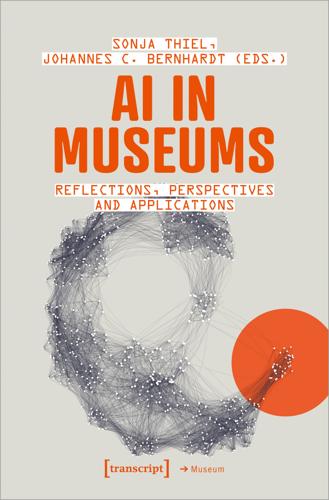
AI in Museums: Reflections, Perspectives and Applications
by
Sonja Thiel
and
Johannes C. Bernhardt
Published 31 Dec 2023
Critiques of AI are confronted with the confusing need to be everywhere at once: the computational material that AI runs on requires the extraction of rare minerals, which often come from developing countries, where miners work under horrible conditions. AI is trained on labelled images, a categorization that is again outsourced to developing countries or organized through crowdsourcing using platforms such as Amazon’s Mechanical Turk, and, as such, is based on precarious work. Even if this work is organized with care, datasets are often biased, and models amplify biases further (Chun 2021). The training of machine learning models is energy-intensive and problematic for the environment.
…
It is surrounded by texts—crumpled and scattered on the ground—that people decided to destroy. It blurs the line between truth and fake because original and generated broadsides can be found not only in the register, but also lying on the ground. It thus explores the perception mechanism that enables us to give credit to and propagate the fake. Is crowdsourcing reliable in this situation? The approval of these texts by other peers can potentially introduce a confirmation bias in viewers. How things are presented can also have an impact and be a source of bias, and this is why the register makes use of codes for how official archives documents can be presented.
…
As of April 2023, DeepL is capable of translating around 30 languages, mostly European, but include only three languages spoken in South America and four Asian languages.4 Notably, DeepL does not offer translations for any languages from the Global South. In view of this imbalance and with the aim of stimulating crowdsourcing of international language data, the ‘intelligent.museum’ team developed the so-called Data Collection Kiosk in 2021, with which visitors can add their own language to a dataset (Weibel 2023, 297). Dataset The dataset used to train the Stable Diffusion model was a subset of LAION-5B, a dataset released by the non-profit organization LAION (Large-scale Artificial Intelligence Open Network).

Slouching Towards Utopia: An Economic History of the Twentieth Century
by
J. Bradford Delong
Published 6 Apr 2020
Centrist and left neoliberals understood themselves as advocates for achieving social democratic ends through more efficient, market-oriented means. Markets—as Friedrich von Hayek had rightly stressed throughout his career—crowdsource the brainstorming and then the implementation of solutions that the market economy sets itself, and the market economy sets itself the task of making things tagged as valuable. Left-neoliberals understood themselves as advocating for this crowdsourcing and the carrot, where it would be more effective. Besides, there was still Big Government, even if Bill Clinton had thrown rhetorical red meat to working-class white men who felt somehow wounded by inclusion by claiming that Big Government’s era was over.
…
It is the one that runs from about 1870 to 2010, from humanity’s success in unlocking the gate that had kept it in dire poverty up to its failure to maintain the pace of the rapid upward trajectory in human wealth that the earlier success had set in motion.3 What follows is my grand narrative, my version of what is the most important story to tell of the history of the twentieth century. It is a primarily economic story. It naturally starts in 1870. I believe it naturally stops in 2010. As the genius, Dr. Jekyll–like, Austro-English-Chicagoan moral philosopher Friedrich August von Hayek observed, the market economy crowdsources—incentivizes and coordinates at the grassroots—solutions to the problems it sets.4 Back before 1870 humanity did not have the technologies or the organizations to allow a market economy to pose the problem of how to make the economy rich. So even though humanity had had market economies, or at least market sectors within its economies, for thousands of years before 1870, all that markets could do was to find customers for producers of luxuries and conveniences, and make the lives of the rich luxurious and of the middle class convenient and comfortable.
…
Paul of Tarsus’s solo fide but through Hayek’s solo mercato.7 But humanity objected. The market economy solved the problems that it set itself, but then society did not want those solutions—it wanted solutions to other problems, problems that the market economy did not set itself, and for which the crowdsourced solutions it offered were inadequate. It was, perhaps, Hungarian-Jewish-Torontonian moral philosopher Karl Polanyi who best described the issue. The market economy recognizes property rights. It sets itself the problem of giving those who own property—or, rather, the pieces of property that it decides are valuable—what they think they want.
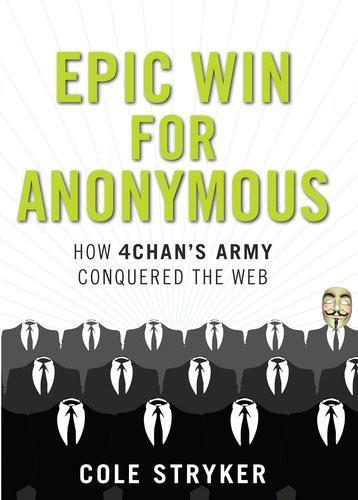
Epic Win for Anonymous: How 4chan's Army Conquered the Web
by
Cole Stryker
Published 14 Jun 2011
Japanese culture is deeply embedded in underground Internet communities like 4chan, partially because the initial scarcity of anime in the West drove anime nerds to the web to find information about their hobby—but also because certain strains of anime lean towards the transgressive, and transgression loves company. /adv/ Advice One of the more recent social experiments on 4chan, the /adv/ board is a crowd-sourced advice column. Sometimes responses are genuine, even heartfelt. Sometimes they’re snarky and mean, but in a lighthearted, creative way. A lot of the questions deal with nerds asking help for dealing with girls. Here’s the top question right now, verbatim: Ok, so here’s my problem. Next fall, I got into my last year of college.
…
Slashdot had editors that picked from submitted stories. Matt was looking for something more democratic, so he created MetaFilter, a community where anyone’s story could land on the front page. The community blog became most notable for its Ask Metafilter section, which was an early example of information crowd-sourcing. You could ask an obscure question and, due to the size and quality of the community, sometimes get surprisingly informed answers. This kind of querying would influence sites like Yahoo Answers, Quora, Reddit, and, to an extent, even 4chan. According to Haughey, MetaFilter also developed its own memespeak pretty early on.
…
They live in Bugojno, use googlemaps. [link to a YouTube account] This faggot commented their youtube account and is a possible friend. This is the Vrbas river, the one from the video. The thread is peppered with criticisms from those who would decry moralfaggotry. Despite the naysayers, this crowd-sourced detective work is one of the most exhilarating things about 4chan. They are able to accomplish much in the aggregate that they wouldn’t alone. As philospher Pierre Lévy says, “No one knows everything. Everyone knows something.” All it takes is one person to translate a bit of dialogue, recognize a style of license plate, or pinpoint a specific mountain range in the background of a fuzzy YouTube video.
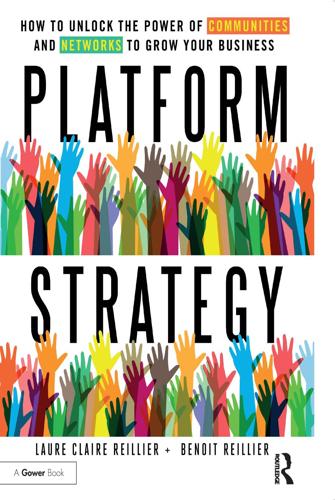
Open for Business Harnessing the Power of Platform Ecosystems
by
Lauren Turner Claire
,
Laure Claire Reillier
and
Benoit Reillier
Published 14 Oct 2017
Amazon also launched the Amazon Appstore for Android devices, as well as a Mac download store with games and software for Apple computers. In 2010, Amazon entered the entertainment and content industry with Amazon Studios, a studio that develops television shows, movies and comics from online submissions and crowdsourced feedback, and Amazon Instant Video, an Internet video on-demand service. Amazon also purchased Twitch.tv in 2014, a live streaming video platform and community for gamers. Twitch attracts more than 100 million visitors per month and 1.5 million broadcasters.7 The Amazon timeline (see Figure 6.1) summarizes some of the key milestones in the development of Amazon’s main lines of business.
…
Mature platforms can also leverage their communities to increase the quality and quantity of relevant content available on the platform. To drive higher customer engagement, Taobao’s mobile app offers new social commerce features to meet the evolving needs of how people shop. Taobao hosts over 1,000 quanzi (circles) where shopping enthusiasts talk about their hobbies and favourite products. Taobao also hosts crowdsourced Q&As. When a buyer submits a question, Taobao’s algorithms identify buyers who are best qualified to answer and send them a message. 25% of all questions are answered within one minute and 60% of questions within 10 minutes.10 Two million buyers help answer 1 million questions every day. Transact Maximizing the number of core transactions should remain a key objective through improvements to the customer experience to reduce friction during 126 Platform maturity: profitable growth and after the transaction.
…
Traditional firms may still need to keep many activities ‘inhouse’ and tightly integrated – as they are at the heart of the unique value proposition that is offered – but the use of platforms in a client capacity can unlock significant value where the firm has no particular competitive advantage – or arguably is at a competitive disadvantage. For example, crowdsourcing ideas by using platforms such as Crowdicity or InnoCentive is an easy way for large established firms to tap into a global and diverse network of innovators. Analyse platform disruption holistically and focus on ‘non-Uberizable’ markets Some businesses are unlikely to be directly impacted by platform models.
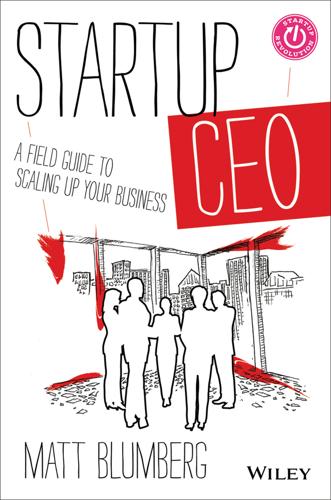
Startup CEO: A Field Guide to Scaling Up Your Business, + Website
by
Matt Blumberg
Published 13 Aug 2013
Dave Morgan, CEO, Simulmedia THE TOP-DOWN APPROACH In the early years of a startup, the only way to define your mission, vision, and values is by way of a top-down process. There’s a simple reason for this: at this stage, your company consists almost entirely of co-founders and executives. There is no crowd of employees to crowd-source from. Either the CEO or a few members of the senior team have to sit down and craft these basic statements, being careful to separate the what (mission and strategy) from the how (values). When Return Path turned nine years old, we were ready to take another approach. The company had gone through a major reorganization (we had sold or spun off a several business units and refocused on a new, tightly defined core).
…
For example, I wasn’t surprised that there was a high degree of convergence in the way people thought about the organization’s values since we had a strong values-driven culture that people were living every day, even if those values hadn’t been well articulated in the past. But it was a little surprising that we could effectively crowdsource a strategy statement and key performance metrics at a time when the business was at a fork in the road. Given this degree of alignment, our task as an executive team became less about picking concepts and more about picking words. We worked together to come up with a solid draft that took the best of what was submitted to us.
…
We decided to borrow from Patrick Lencioni’s fantastic book, The Advantage: Why Organizational Health Trumps Everything Else in Business, and answer five simple questions for ourselves: Why do we exist? How do we behave? What do we do? How will we succeed? What is most important, right now? We might have crowdsourced the process again, even with 350 people, if we had felt that we were at a real turning point in the life of the business. Because we viewed this exercise as more of a refresh, we did a hybrid of top-down and bottom-up approaches. This time, we started by working through drafts of the governing document as an executive team.

The Evolution of Everything: How New Ideas Emerge
by
Matt Ridley
Some of the editors turned into ruthlessly partisan dogmatists, and the value of a crowd-sourced encyclopedia was gradually damaged. As one commentator puts it, Wikipedia is ‘run by cliquish, censorious editors and open to pranks and vandalism’. It is still a great first port of call on any uncontroversial topic, but I find Wikipedia cannot be trusted on many subjects. An entirely fictional war in the Indian state of Goa was invented, and not only survived for five years on Wikipedia but became a popular entry and won an award. A small example, maybe, but one of many instances in recent years to show how Wikipedia had moved away from being a crowd-sourced thing to something more hierarchical and centrally controlled.
…
‘The metabolic library is packed to its rafters with books that tell the same story in different ways,’ he writes. ‘Myriad metabolic texts with the same meaning raise the odds of finding any one of them – myriad-fold. Even better, evolution does not just explore the metabolic library like a single casual browser. It crowd-sources, employing huge populations of organisms that scour the library for new texts.’ Organisms are crowds of readers going through the Library of Mendel to find texts that make sense. Wagner points out that biological innovation must be both conservative and progressive, because as it redesigns the body, it cannot ever produce a non-functional organism.
…
What a splendid irony, that from the bowels of the Cold War military-industrial complex in the capitalist United States, there emerged a technology of ‘dense, diverse and decentralised exchange’ that is producing something far more like the ideal of Marxism than communist regimes ever did. The balkanisation of the web For a while, we all got the point. We crowd-sourced and wiki-ed and clouded our lives. Journalists, those most anarchic of beasts, found themselves overtaken by bloggers, tweeters and amateur cameramen, and they did not like it. Only top–down journalism could do proper investigation, they said. Scientists had to get used to irreverent and instantaneous discussion of their ideas on forums, rather than stately and opaque clubs of peer review and publication.
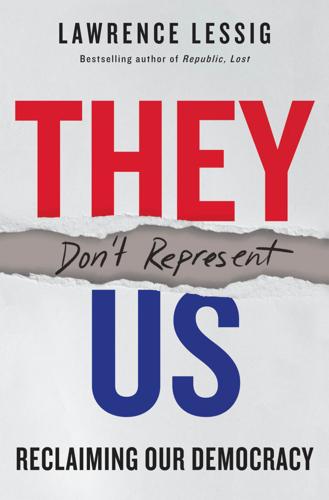
They Don't Represent Us: Reclaiming Our Democracy
by
Lawrence Lessig
Published 5 Nov 2019
Indeed, two of the most interesting followed immediately after the 2008 financial crisis—Iceland and Ireland. Iceland’s project was the more ambitious. Many in Icelandic society believed that the crisis had been caused in part by the absence of a constitution. So Iceland launched an incredible citizen-driven process to effectively crowdsource a constitution. After a randomly selected forum of a thousand Icelanders met to identify the values that any Icelandic constitution should embody, the government conducted an election to select twenty-five to serve on a drafting committee. Over four months, that twenty-five crafted a new constitution.
…
How is not very different from Michigan. First, the campaign disciplined itself never to be partisan. There was, as Cara described, an “absolute ethos of nonpartisanship. . . . We were very disciplined in that regard, because the system needed to change despite the actors in the system.” Second, it was, in a similar way, crowdsourced. The team was filled with volunteers. The campaign “got everybody in the same room together, all working to solve a problem of democracy.” That multiplied the energy. And it helped everyone see how the solution they were fighting for was a solution that would help everyone. Weirdly, RCV actually solves two problems that might at first seem very different.
…
The outrage was so great that the government simply appointed the people who had been previously elected. For a full account of the Iceland experience, see Hélène Landemore, “Inclusive Constitution Making: The Iceland Experiment,” Journal of Political Philosophy 23 (2015): 166, available at link #197; Katrin Oddsdóttir, “Iceland: The Birth of the World’s First Crowd-Sourced Constitution?,” Cambridge Journal of International & Comparative Law 3 (2014): 1207; Jon Elster, “Icelandic Constitution-Making in Comparative Perspective,” in Iceland’s Financial Crisis: The Politics of Blame, Protest, and Reconstruction, Valur Ingimundarson, Philippe Urfalino, Irma Erlingsdóttir, eds.

The Fourth Industrial Revolution
by
Klaus Schwab
Published 11 Jan 2016
Much of the information and my own analysis in this book are based on ongoing projects and initiatives of the World Economic Forum and has been developed, discussed and challenged at recent Forum gatherings. Thus, this book also provides a framework for shaping the future activities of the World Economic Forum. I have also drawn from numerous conversations I have had with business, government and civil society leaders, as well as technology pioneers and young people. It is, in that sense, a crowd-sourced book, the product of the collective enlightened wisdom of the Forum’s communities. This book is organized in three chapters. The first is an overview of the fourth industrial revolution. The second presents the main transformative technologies. The third provides a deep dive into the impact of the revolution and some of the policy challenges it poses.
…
Michael Osborne observes that a critical enabling factor for automation is the fact that companies have worked hard to define better and simplify jobs in recent years as part of their efforts to outsource, off-shore and allow them to be performed as “digital work” (such as via Amazon’s Mechanical Turk, or MTurk, service, a crowdsourcing internet marketplace). This job simplification means that algorithms are better able to replace humans. This job simplification means that algorithms are better able to replace humans. Discrete, well-defined tasks lead to better monitoring and more high-quality data around the task, thereby creating a better base from which algorithms can be designed to do the work.
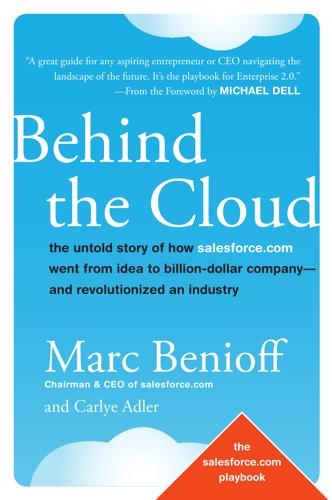
Behind the cloud: the untold story of how Salesforce.com went from idea to billion-dollar company--and revolutionized an industry
by
Marc Benioff
and
Carlye Adler
Published 19 Nov 2009
Three months later, as a direct result of this intelligence, Dell released several consumer notebooks and desktops with the Linux operating system preinstalled. Using the 128 The Technology Playbook Internet and our Ideas technology platform, Dell has gained the ability to listen to its customers. As Jeff Howe explains in his book, Crowdsourcing: Why the Power of the Crowd Is Driving the Future of Business, ‘‘Dell’s IdeaStorm attempts to capture the collective intelligence of the crowd. . . . It’s using the crowd to brainstorm new innovations.’’2 The result? Ideas turning into revenue within months. Michael Dell, pleased with the immediate return on investment, shared his experience with Howard Schultz of Starbucks.
…
David Berlind, ‘‘Full Text of Marc Benioff’s Internal Memo to Salesforce Staff on Oracle/Siebel Deal,’’ Between the Lines, September 12, 2005, blogs.ZDNet.com. Part 5 1. Rochelle Garner, ‘‘Microsoft Undermined by Salesforce .com in Web Sales,’’ Bloomberg.com, Jan. 25, 2008, http:// www.bloomberg.com/apps/news?pid=20601087&sid=afU TE1bpZWp4&refer=home. 2. Jeff Howe, Crowdsourcing: Why the Power of the Crowd Is Driving the Future of Business, New York: Crown Business, 2008, p. 158. 3. Jeff Jarvis, ‘‘Hey Starbucks, How About Coffee Cubes?’’ BusinessWeek, April 15, 2008, http://www.businessweek.com /magazine/content/08 17/b4081000030457.htm. 4. Jeff Jarvis, ‘‘Dell Learns to Listen,’’ BusinessWeek, October 17, 2007, http://www.businessweek.com/bwdaily/dnflash/ content/oct2007/db20071017 277576.htm. 262 Notes 5.
…
Larry, 161 Brin, Sergey, 160–161 Brisson, Gigi, 205 Brown, Rafe, 220 Bruzzo, Chris, 129 Bugforce, 70 Bureau of Labor Statistics, 164 Bus 24, 150 Business Today, 156 271 INDEX BusinessWeek, 41, 80, 125, 129, 130, 170–171 Butler, Gary, 92–93 C Cakebread, Steve, 209–210, 215 California Mentor Initiative, 16 Campbell, Bruce, 28, 31, 32, 244 Canon, 184–185 Career development, 19, 250–252 Carr, Nicholas, 4, 43 Case, Steve, 145 Cavalieri, Jim, 16 Center for Venture Research, 206 Certification programs, 253 Chambers, John, 196 Changes: after IPOs, 218–223; envisioning, 1–3; leveraging with customers, 82–85; making career, 19 Checks and balances in hiring, 235 Children’s Aid Society Carrera Adolescent Pregnancy Prevention, 158 Christensen, Clayton M., 43, 255 Cisco, 13, 91, 100, 140, 145, 203, 220, 258 City Tours, 49–51, 54, 57–58, 62 Clark, Don, 23, 72 Clean Air-Cool Planet, 162 Cleveland, Bruce, 64 Closing, 93 Coca-Cola, 86 CODA, 125 Collaboration: developing communities of, 131–132, 145; philanthropic, 159–161 Committee Encouraging Corporate Philanthropy (CECP), 218 Companies: collaborating with, 131–132; incorporating philanthropic models in existing, 135–139 Competition: going after market leaders, 34, 36–38; leveraging, 60–61; relationships with, 39–40; surprising, 38 Conde, Cris, 89–91 Confidence, 16 Connery, Nancy, 15, 16, 233–234, 248 Conservation International, 162 Contra Costa Times, 31 Contracts: annual service, 207–208; converting subscriptions to, 82–85, 207–208; writing with light and love, 188–192 Cooperative sales efforts, 92 Corporate philanthropy: choosing cause for, 144–146; creating self-sustaining model for, 153–156; employee-inspired foundations, 161–165; foundations in business model, 140–144; giving back to communities, 191; Google’s commitment to, 160–161; Hasbro’s, 141–142; in-kind product donations, 156–158, 166; incorporating in existing company, 135–139; integrating with organization, 139–140; involving new hires in, 243–244; 272 listening to constituents, 148–152; partner and network involvement in, 159–161; reasons for, 147–148; sharing financial successes, 217–218; sharing philanthropic models, 146–147; success of 1–1–1 Model, 256; supporting employee sabbaticals, 1–3; sustaining foundations, 166–168 Corporate sales teams: developing, 88–89; international, 172–173; selling corporate services, 98–100; in sequential growth strategies, 177–178 Costs: event, 57–59; managing while expanding, 176–177; reducing start-up company, 206–207 Council on Foundations, 148 Critical Metrics, 250 Criticism, 9–11 CRM (customer relationship management): developing international divisions for, 169–170, 173; Microsoft’s venture into, 42; origins of salesforce.com, 11–12; positioning End of Software mission, 24–25; potential sales via telephone, 77–78; potentials for SaaS online products, 6; scalability challenge for, 8–9; Siebel goes public, 5 CRM Fusion, 160 CRM ticker symbol, 213 Crowdsourcing (Howe), 129 Culture: aligning employees to, 242–244; beginning of salesforce.com, 12; defining company, 11–12; recruiting new talent into, 15, 16, 17, 19, 233–239; transferring globally, 178–179, 192, 195–196, 197 Customer relationship management. See CRM Customers: accessibility and satisfied, 98–99; being involved in dialogues of, 130; building trust with, 110–113; contacting personally, 114; contract for, 219–220; contracts for, 207–208; developing network of, 53–54; ease of product adoption by, 119; enlisting for sales, 73–76; harnessing ideas of, 127–130; influencing products, 115–118; introducing prospects to happy, 100–101; leveraging change with, 82–85; listening to, 13–14, 85–86; special support for professional, 98–100; supporting existing, 97–98; testimony of, 47–52; treating as partners, 69–71; visiting, 93 CustomerStat, 52 Customization features, 115–118 D Dalai Lama, His Holiness, 2, 11 Dell, 100, 128–129, 172 Dell, Michael, 128, 129, 130, 151, 196 Deloitte, 99, 148 Dempsey, David, 170 DiBianca, Suzanne, 140, 146 Digg, 127 Disaster relief, 163–164 Discounts, 78–79, 83–84 Disney, Walt, 103, 203 Dominguez, Frank, 11, 20, 106–107, 139–140 Dot-com crash, 27 Index Draper, Tim, 153 Dreamforce, 61–63, 65 DuPont, 99 E E*TRADE, 100, 203 E-Rate, 144 Earth Council, 163 EBay, 108, 114, 140–141, 183 Ebersole, Scott and Wendi, 247 Editorials, 47 80/20 rule, 12–13, 174 Einstein, Albert, 11 Einstein, David, 24 Ellison, Larry, 14–15, 16–17, 30, 31, 136, 137, 138, 204, 226 Employees: being on-message, 55; career paths for, 250–252; corporate philanthropy and, 147; employee-inspired foundations, 161–165; empowering as volunteers, 141–142, 161–162, 163–164; engaging and growing, 247–248; feedback from, 249–252; finding innovative, 240; firing, 249; fostering loyal, 246–247; incentives for, 245–246; listening to, 81; measuring success of, 251; moving to satellite offices, 193–196; as part of marketing team, 33–34, 35; retaining, 242–244; sabbaticals for, 1–3; training, 252, 253–254 Employees.

The Autonomous Revolution: Reclaiming the Future We’ve Sold to Machines
by
William Davidow
and
Michael Malone
Published 18 Feb 2020
Something interesting is happening.1 The worlds of business and finance are changing rapidly: online retailing, the sharing economy, freemium business models, streaming media, crowd-sourcing, peer-to-peer lending, virtual currencies. All this and more, and the Autonomous Revolution has hardly begun. New forms of business, driven by these opportunities, plus an explosion of new enterprises made possible by autonomous vehicles, big data analytics, artificial intelligence, and the Internet of Things, are waiting in the wings. The Autonomous Revolution will challenge every enterprise, big and small, to rethink the correct calculus of employees versus robots, internal operations versus crowd-sourcing, custom operations versus open-sourcing.
…
See commercial entities Craigslist, 62, 87 credit cards: cash contrasted with, 41–42 cost of and security risk with, 74–76 cyber/mobile payment systems replacing, 10, 76–77, 81–82, 171, 186 emergence and scale timeline of, 82 information equivalents for, 76–77 credit rating agencies, 118–119, 126, 130 crowd-sourcing, 70–71 cryptocurrency. See cyber currencies cultural lag, 38, 181, 187, 189–190, 192 cultural norms: of Agricultural Revolution, 151–152 Autonomous Revolution’s requirement of new, 151, 153–157, 159 of Industrial Revolution, 152–153, 182–183 customers/consumers: algorithmic prisons for, 126, 127 data collection protections for, 127–128 industrial robots in relation to, xii information equivalences for, 43–44 as products, 120–123.
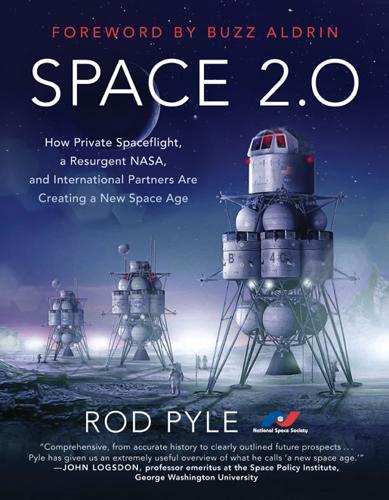
Space 2.0
by
Rod Pyle
Published 2 Jan 2019
As Shotwell put it during our interview, “We’re building a global system of satellites because access to the internet and better education is the great economic leveler . . . If there is global access to the internet, everybody has the same opportunities. So if everybody in sub-Saharan Africa has inexpensive, fast access to the internet, that’s great. And if people around the world have access to talking about their problems on a daily basis, perhaps you can crowdsource better solutions.” By building all the rocket components in-house, SpaceX is able to control both quality and costs. Seen here is a completed Merlin rocket engine, bound for the first stage of a Falcon 9. Image credit: SpaceX It’s a broad statement, and a project not without its complications.
…
Other people are less directly but still meaningfully involved in space via volunteering for nonprofits. Their activities range from teaching kids about space science and engineering to meeting with senators and members of Congress about space-related issues. Still others participate directly in crowdsourced science. One example of this is a recent project that searched for new planets beyond the edge of our solar system by drawing on the efforts of over 60,000 online volunteers, each of whom scanned reams of imagery to help determine new places to look for planets. It’s all incredibly exciting, and you can find a way to be engaged in Space 2.0 regardless of your trade, education level, or background.
…
It’s all incredibly exciting, and you can find a way to be engaged in Space 2.0 regardless of your trade, education level, or background. The internet allows for motivated people to find each other in ways never before possible. You can find countless forums online where space science and space-related ventures are discussed and participants sought. In the past few years, NASA and other agencies and institutions have crowdsourced everything from astronomical research, as noted above, to spacecraft engineering and human spaceflight support. Hundreds of programmers and budding engineers participate in hackathons every year, designing new software and technologies for spaceflight; some of these contests are sponsored by NASA, others by universities and space advocacy groups.
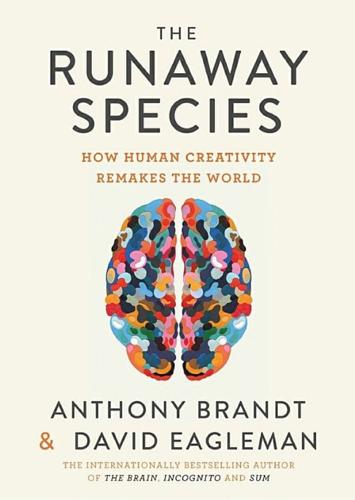
The Runaway Species: How Human Creativity Remakes the World
by
David Eagleman
and
Anthony Brandt
Published 30 Sep 2017
For the first XPrize in 2004, the goal was a reusable sub-orbital spacecraft: a $10 million award was offered to the first team who could fly a crew sixty miles high, twice within two weeks. Twenty-six crafts from around the world competed, with designs from rocket fins to airplane wings. The prize eventually went to Mojave Aerospace’s SpaceShipOne By spreading the net widely, realizing the dream of privatized space travel came a step closer. And this crowdsourcing strategy is becoming increasingly popular. When Netflix wanted to boost its algorithms for personalized movie suggestions, the company realized it would be cheaper to sponsor a $1 million global prize than do the work in-house. Netflix published a sample set of data, with the goal of a 10 percent improvement over its own high-water mark.
…
<http://www.theatlantic.com/technology/archive/2011/05/the-crazy-old-gadgets-that-presaged-the-ipod-iphone-and-a-whole-lot-more/238679/> 3 Steve Cichon, “Everything from this 1991 Radio Shack Ad You Can Now Do with Your Phone,” The Huffington Post, January 16, 2014, accessed August 19, 2015, <http://www.huffingtonpost.com/steve-cichon/radio-shack-ad_b_4612973.html> 4 Although radar detectors have not been replaced, they’ve been superseded: apps such as Waze use crowdsourcing from millions of drivers to mark speed traps. And although your smartphone doesn’t contain a fifteen-inch woofer, it transmits your endless library of music to any speaker system you’d like. 5 Jon Gertner, The Idea Factory: Bell Labs and the Great Age of American Innovation (New York: Penguin Press, 2012). 6 Andrew Hargadon, How Breakthroughs Happen: The Surprising Truth about How Companies Innovate (Boston: Harvard Business School Publications, 2003). 7 John Livingston Lowes, The Road to Xanadu; a Study in the Ways of the Imagination (Boston: Houghton Mifflin Company, 1927). 8 John Livingston Lowes, The Road to Xanadu. 9 Michel de Montaigne, Complete Essays, trans.
…
<http://www.theatlantic.com/technology/archive/2011/05/the-crazy-old-gadgets-that-presaged-the-ipod-iphone-and-a-whole-lot-more/238679/> 3 Steve Cichon, “Everything from this 1991 Radio Shack Ad You Can Now Do with Your Phone,” The Huffington Post, January 16, 2014, accessed August 19, 2015, <http://www.huffingtonpost.com/steve-cichon/radio-shack-ad_b_4612973.html> 4 Although radar detectors have not been replaced, they’ve been superseded: apps such as Waze use crowdsourcing from millions of drivers to mark speed traps. And although your smartphone doesn’t contain a fifteen-inch woofer, it transmits your endless library of music to any speaker system you’d like. 5 Jon Gertner, The Idea Factory: Bell Labs and the Great Age of American Innovation (New York: Penguin Press, 2012). 6 Andrew Hargadon, How Breakthroughs Happen: The Surprising Truth about How Companies Innovate (Boston: Harvard Business School Publications, 2003). 7 John Livingston Lowes, The Road to Xanadu; a Study in the Ways of the Imagination (Boston: Houghton Mifflin Company, 1927). 8 John Livingston Lowes, The Road to Xanadu. 9 Michel de Montaigne, Complete Essays, trans.
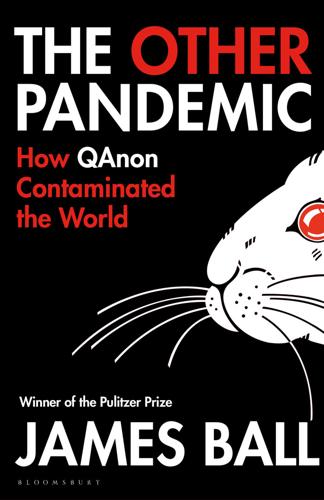
Other Pandemic: How QAnon Contaminated the World
by
James Ball
Published 19 Jul 2023
Evil accuses good of what they themselves do.’37 As the NBC reporter Ben Collins – who describes his beat covering online misinformation and conspiracy as the ‘dystopia beat’ – noted at the time, QAnon ‘love Gaetz’s inscrutable double agent story because it sounds like 5D chess’.38 Instead of looking into that real investigation – which was still ongoing in 2022 – the core QAnon element of the #SaveTheChildren movement went back to their favourite pastime: looking for secret clues and codes hidden in plain sight on the internet, in the darkest version of a crowdsourced Dan Brown novel.39 In August 2021, one eagle-eyed observer found bizarre text appearing on a Smart TV experiencing code errors – with the alarming phrase ‘Kill process … or sacrifice child’ appearing, surely with some dark meaning. (It is a standard phrase in the open-source Unix operating system when it has run out of memory – the ‘child’ referenced is a sub-process.)40 The same month, there was a small-scale repeat of the Wayfair fiasco stemming from the online sale of one McDonald’s chicken nugget for $100,000 – once again sparking the suggestion it was a coded auction for trafficked children, especially as attention started to be paid to it when the price was a mere $14,000.
…
See www.perplexcity.com/ 40. Sarah Perez, ‘Rogue National Park Service Twitter account says it’s no longer run by National Park Service employees … but maybe it never was’, https://techcrunch.com, 27 January 2017. 41. There’s a good history of some of these accounts in this Bellingcat account: ‘The Making of Qanon: A Crowdsourced Conspiracy’, www.bellingcat.com, 7 January 2021. 42. Office of Environment, Health, Safety and Security, ‘Departmental Personnel Security FAQs’, https://www.energy.gov, accessed 7 October 2022. 43. See https://archer.fandom.com/wiki/Nellis. 44. See https://qposts.online/post/2. 45. Mark Landler, ‘Trump Calls Meeting with Military Leaders the Calm Before the Storm’, www.nytimes.com, 6 October 2017. 2 COMET PING PONG 1.
…
At https://qposts.online/post/2. 6. At https://qposts.online/post/4. 7. ‘A trail of bread crumbs leading conspiracy theorists into the wilderness’, www.nytimes.com, 11 September 2018. 8. ‘The Greatest LARP’ section of this very good Bellingcat piece is great on this: ‘The Making of QAnon: A Crowdsourced Conspiracy’, www.bellingcat.com, 7 January 2021. 9. ‘Who Is Behind QAnon? Linguistic Detectives Find Fingerprints’, www.nytimes.com, 19 February 2022. 10. Brandy Zadrozny and Ben Collins, ‘How three conspiracy theorists took “Q” and sparked Qanon’, www.nbcnews.com, 14 August 2018. 11. NBC Nightly News, ‘ “Calm Before The Storm”: Donald Trump Makes Cryptic Remark At Military Dinner’, https://www.youtube.com/watch?

The Kickstarter Handbook: Real-Life Success Stories of Artists, Inventors, and Entrepreneurs
by
Steinberg, Don
Published 14 Aug 2012
(Kickstarter keeps 5 percent of all project funding, so the company and its early backers are clearly doing fine financially.) Along the way, a new word was born for a novel way to support arts and invention: crowdfunding. It’s yet another way that the reach of the Internet has been put to work. Thousands of individuals contributed information to help build the free online encyclopedia Wikipedia—that’s crowdsourcing. Turn that into money, and you have crowdfunding, a means of moving money among people, circumventing traditional sources and decision makers and gatekeepers, a sort of grassroots redistribution of wealth. Kickstarter is part of a diverse ecosystem offering new ways for people to connect with one another online, to exchange ideas, stuff, and sometimes hard currency.
…
Meet Matt Haughey Matt Haughey, backer extraordinaire Matt Haughey is one of those mythical beings: the mysterious benefactor who will pledge money to a Kickstarter project just because he thinks it’s cool, even if he doesn’t know the creator personally. As of March 2012, Haughey had backed eighty-four projects (and almost all of them ended up successfully funded). As an online entrepreneur himself—he created the crowdsourced news site MetaFilter—he appreciates the power of the Web to bring people and ideas together, and he loves the Kickstarter concept. “I feel that artists shouldn’t have to pay for paint. Inspiration should be the limiting factor in art, not cost,” he says. (Through a mutual connection, he became a “very small” [his words] early investor in Kickstarter, but definitely does not speak for the company.)

@War: The Rise of the Military-Internet Complex
by
Shane Harris
Published 14 Sep 2014
He is careful to avoid any suggestion that the company breaks in to their adversaries’ computers—the former G-man spent years prosecuting people for violating anti-hacking laws. But the word hunt reveals a more aggressive form of analysis than many other firms in the business will admit to. CrowdStrike deploys sensors on its clients’ networks and uses crowdsourcing to collect more information on hacks as they’re happening, rather than wait for a client to be hit and collect evidence after the fact. It uses intelligence to attribute, as closely as possible, the hacker to a particular country or group. This is one of the hardest things to do in cyber forensics, because skilled hackers conceal their physical location, often by launching their attacks from compromised computers in other countries.
…
Lockheed Martin and its ilk will create a new business in scanning traffic and applying their proprietary methods for detecting malware and hacker activity—methods that will be based on the real-time intelligence they collect from their own, vast global information networks, as well as those of their customers. It will be a kind of crowdsourcing. Similarly, companies such as CrowdStrike and the newly merged Mandiant and FireEye will promise to protect their customers’ networks from prospective threats, the same way we expect security guards to keep intruders out of our homes and office buildings, not just to investigate the invasion after it happens.
…
See also Defense Industrial Base; military-industrial complex counterterrorism, [>]–[>], [>], [>]–[>], [>], [>], [>] crashes, computer, [>]–[>], [>]–[>], [>], [>], [>], [>] credit/debit cards, [>], [>]–[>], [>]–[>], [>], [>], [>], [>]–[>] critical infrastructures: cyber attacks, annual, [>], [>]; cyber attack threat, [>], [>], [>], [>], [>], [>], [>]–[>]; declaration of war issues, [>], [>], [>]; definition, [>], [>], [>]–[>]; executive orders, [>]–[>], [>]–[>], [>] Croom, Charlie, [>], [>], [>], [>] crowdsourcing, [>], [>] CrowdStrike Services, [>]–[>], [>], [>], [>] cryptologists, [>], [>], [>], [>] Cyber Command. See US Cyber Command cybercrime, [>], [>]–[>], [>]–[>], [>]–[>], [>], [>], [>]. See also intellectual property; network forensics cyber espionage, [>], [>], [>], [>], [>], [>]–[>], [>]–[>], [>].
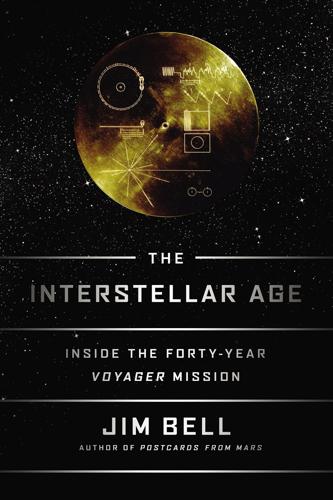
The Interstellar Age: Inside the Forty-Year Voyager Mission
by
Jim Bell
Published 24 Feb 2015
Every spacecraft leaving Earth will have some type of computer, and so we may be establishing a positive precedent with the New Horizons digital message, especially the crowd-sourcing aspect of it. Before, it was just a few of us who were attempting to speak for the Earth. But with New Horizons we’re making a serious effort to involve as much of the Earth as we can. And that’s certainly something I think Carl would have liked.” I’m a member of Jon Lomberg’s advisory board for what is being called the One Earth: New Horizons Message Project, and as we begin ramping up our public engagement in formulating what some are calling the Voyager Golden Record 2.0 message, it will be interesting to see how different today’s crowd-sourced message to the future will be from the message so carefully crafted forty years ago by a select group of people for the Voyager record.
…
In any case, a group of people led by Jon Lomberg are awaiting expected approval by NASA to upload a yet-to-be-determined “digital interstellar message” into the New Horizons spacecraft’s permanent long-term flash memory once the mission has completed its science objectives. More than ten thousand people from 140 countries signed online petitions to support bringing this message project forward to NASA and the New Horizons project, which no doubt helped the idea gain official approval. The contents of the message—its text, images, art, and/or music—will be crowd-sourced, a distinctively more modern way of soliciting multiple opinions through the Internet. “Previous messages from Earth, portraits of our planet and our species, have been made by small groups of experts,” Jon Lomberg noted. “This initiative proposes that this time, for the first time, the whole world can participate.

What Algorithms Want: Imagination in the Age of Computing
by
Ed Finn
Published 10 Mar 2017
The resurgence of aesthetics between the cracks of such a pointedly cynical artistic experiment is presumably exactly what they were hoping for: a proof of the value of poetry written in the margins of a proof of its bankruptcy. Of the Subcontract accords aesthetics its traditional place at the intersection of other forms of value, allowing financial transactions, algorithmic calculations, and human computation to be transmuted into something with the official seal of artistic production. The political theater of crowdsourcing piecework poetry also becomes performance art of a different nature, a literary production that asserts the value not only of the critique but of the processual by-products generated by the critique. We end up admiring not just the artistic concept of the volume but the piecework poems themselves.
…
Isaacson, “‘Smarter Than You Think,’ by Clive Thompson.” 57. Ipeirotis, “Analyzing the Amazon Mechanical Turk Marketplace,” 21. 58. Glanz, “Data Centers Waste Vast Amounts of Energy, Belying Industry Image.” 59. Cooper, Ipeirotis, and Suri, “The Computer Is the New Sewing Machine: Benefits and Perils of Crowdsourcing”; “Amazon Mechanical Turk.” 60. Limer, “My Brief and Curious Life As a Mechanical Turk.” 61. Thurston, Wershler, and Wark, Of the Subcontract, 47. 62. Ibid., 26. 63. Ibid., 135. 64. Galloway, The Interface Effect, 136. 65. Rice, Minding the Machine. 66. Quoted in ibid., 32. 67. Ibid., 36. 68.
…
Accessed June 10, 2015. http://www.whosdrivingyou.org/rideshare-incidents.html. “Controlled Supply.” Bitcoin Wiki, July 20, 2015. https://en.bitcoin.it/wiki/Controlled_supply. Cooper, Matt, Panagiotis G. Ipeirotis, and Siddharth Suri. “The Computer Is the New Sewing Machine: Benefits and Perils of Crowdsourcing.” Presented at the WWW 2011, Hyderabad, India, March 28, 2011. http://www.ipeirotis.com/wp-content/uploads/2012/01/p325.pdf. Cushing, Ellen. “Amazon Mechanical Turk: The Digital Sweatshop.” Utne, January/February 2013. http://www.utne.com/science-and-technology/amazon-mechanical-turk-zm0z13jfzlin.aspx.
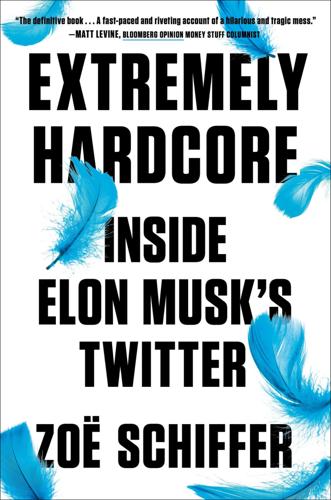
Extremely Hardcore: Inside Elon Musk's Twitter
by
Zoë Schiffer
Published 13 Feb 2024
GO TO NOTE REFERENCE IN TEXT “Helicopter hovering above”: Mike Butcher, “Here’s the Guy Who Unwittingly Live-Tweeted the Raid on Bin Laden,” TechCrunch, May 2, 2011, techcrunch.com/2011/05/02/heres-the-guy-who-unwittingly-live-tweeted-the-raid-on-bin-laden-2. GO TO NOTE REFERENCE IN TEXT Amnesty International found: Press release, “Crowdsourced Twitter Study Reveals Shocking Scale of Online Abuse Against Women,” Amnesty International, December 18, 2018, amnesty.org/en/latest/press-release/2018/12/crowdsourced-twitter-study-reveals-shocking-scale-of-online-abuse-against-women. GO TO NOTE REFERENCE IN TEXT CEO Bob Iger said: Peter Kafka, “Why Disney Didn’t Buy Twitter,” Vox, September 7, 2022, vox.com/recode/2022/9/7/23339402/bob-iger-disney-streaming-code.
…
He deleted the tweet hours later, after it was viewed eleven million times. As the violence unfolded, researchers manually tracked and debunked viral disinformation, a project made more difficult by the fact that Musk had cut off free API access and recently eliminated headlines from news articles. Musk had promoted Community Notes, a crowdsourced fact-checking tool, as his preferred news-vetting methodology. Two days after the attacks began, however, I searched for footage of the fireworks in Algeria being passed off as violence in Gaza, and seven of the top ten posts had no community note attached. Six were from Blue subscriber accounts.

The View From Flyover Country: Dispatches From the Forgotten America
by
Sarah Kendzior
Published 24 Apr 2015
She has a PhD in anthropology and teaches at a university where she is paid $2,100 per course. While she is a professor, she is not a Professor. She is, like 67 percent of American university faculty, a part-time employee on a contract that may or may not be renewed each semester. She receives no benefits or health care. According to the Adjunct Project, a crowdsourced website revealing adjunct wages—data that universities have long kept under wraps—her salary is about average. If she taught five classes a year, a typical full-time faculty course load, she would make $10,500, well below the poverty line. Some adjuncts make more. I have one friend who was offered $5,000 per course, but he turned it down and requested less so that his children would still qualify for food stamps.
…
The news that The Atlantic—one of the oldest and most venerated publications in America—paid its writers little or nothing came as a shock to many, but not to journalists struggling to make a living in the post-employment economy. Freelance rates have plunged over the past decade, a decline tracked on the crowdsourced website “Who Pays Writers?” (The answer: hardly anyone.) Some journalists say this is not a big deal. Unpaid labor should be expected, even treasured. In an article called “People Writing for Free on the Internet Is an Enormous Boon to Society,” salaried Slate columnist Matthew Yglesias argued that if people demanded money for their labor, the world would be deprived of important works.
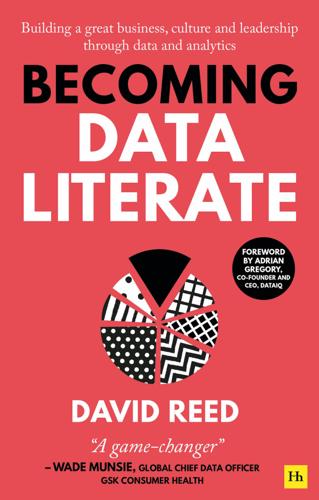
Becoming Data Literate: Building a great business, culture and leadership through data and analytics
by
David Reed
Published 31 Aug 2021
By tuning into local sensitivities, such as language, culture and differing attitudes towards numbers across markets, it ensured the project was not perceived as an ivory tower, top-down programme. This extended to establishing a proactive and mutually challenging relationship with IT which provisioned key tools. Principle 2 – Crowdsourcing Timely and accurate reporting was developed as a collective effort with ownership and responsibility shared among stakeholders. This involved entrepreneurial negotiation with stakeholders that yielded reporting at scale and depth. The MIS now processes 226bn data points each day yielded from 75 sources to create 550 metrics.
…
Cleveland and Robert McGill published the findings of their experiments into the relative strengths and weaknesses of different types of chart when visualising data in their paper, Graphical Perception: Theory, Experimentation, and Application to the Development of Graphical Methods (http://faculty.washington.edu/aragon/classes/hcde511/s12/readings/cleveland84.pdf). In 2010, Jeffrey Heer and Michael Bostock re-examined those findings in the light of the emergence of digital channels in their paper, Crowdsourcing Graphical Perception: Using Mechanical Turk to Assess Visualisation Design (https://idl.cs.washington.edu/files/2010-MTurk-CHI.pdf). They found that the same principles identified by Tufte, and Cleveland and McGill in the 1980s were still true in the digital era. Figure 7.3 shows the comparative effectiveness of different data visualisations based on these two studies.

Pocket Rough Guide Berlin (Travel Guide eBook)
by
Rough Guides
Published 16 Oct 2019
Hackescher Markt Alamy Political forces and ideals continue to battle it out in Berlin, rendering the city a vibrant and vertiginous place to be: an irresistible combination of entrepreneurial possibility and creative energy rubbing shoulders with a fully developed tourist destination overflowing with museums, sights and events. What’s not to like? < Back to Introduction What's new Berlin has taken up the craft beer 'n' burgers craze with real zest. For artisan brews, check out Kaschk – particularly strong on Nordic ales – and Vagabund Brauerei, which was in the vanguard of Europe's crowd-sourced breweries. When the time comes to soak it all up, we heartily recommend The Bird, which offers a greasy slice of US-style goodness, or Marienburgerie, a little venue with a lot of big burgers. < Back to Introduction Where to… Shop Berlin’s fashion scene has been going from strength to strength in the past decade or so, with a string of local designers constantly upping the ante.
…
The food is tasty too: breakfast spans croissants and scrambled eggs (served in a tiny frying pan), but the real speciality is the Stullen – thick slices of home-made bread with toppings you mix and match yourself. Vagabund Brauerei Antwerpener Str. 3 Seestrasse 030 52 66 76 68, www.vagabundbrauerei.com. Mon–Fri from 5pm, Sat & Sun from 1pm. One of Europe’s first crowd-sourced breweries, Vagabund is run by three American friends with a highly infectious passion for craft beer. As well as their own excellent brews, they sell classic Belgian ales and lager from family breweries in southern Germany, all in a welcoming, unpretentious atmosphere that draws locals and expats alike.

The Corruption of Capitalism: Why Rentiers Thrive and Work Does Not Pay
by
Guy Standing
Published 13 Jul 2016
Christensen, The Innovator’s Dilemma: The Revolutionary Book That Will Change the Way You Do Business (Boston: Harvard Business Review Press, 1997). 4 C. Christensen, M. Raynor and R. McDonald, ‘What is disruptive innovation?’, Harvard Business Review, 2015. 5 M. Harris, ‘Uber: Why the world’s biggest ride-sharing company has no drivers’, The Guardian, 16 November 2015. 6 S. Jackman, ‘Crowdsourcing may hold key to unlocking Japan’s working potential’, Japan News, 2 January 2015. 7 Cited in S. O’Connor, ‘The human cloud: A new world of work’, Financial Times, 8 October 2015. 8 Associated Press, ‘US companies increasingly turning to temporary workers to fill positions’, Fox News, 8 July 2013. 9 Cited in The Economist, 13 June 2015, p. 57. 10 B.
…
Solomon, ‘Leaked: Uber’s financials show huge growth, even bigger losses’, Forbes, 12 January 2016. 11 Unsurprisingly, some drivers found ways to game the system. Uber discovered that some drivers were signing up with as many as ten smartphones, booking phantom trips during peak times on all of them simultaneously. 12 Cited in ‘Will crowdsourcing put an end to wage-based employment?’, L’Atelier, 29 September 2015. 13 Reported in Financial Times, 20 June 2015. 14 Freelancers Union and Elance-oDesk, Freelancing in America: A National Survey of the New Workforce, 2015. 15 L. Katz and A. Krueger, ‘The Rise of Alternative Work Arrangements and the ‘Gig’ Economy’, draft paper cited in R.
…
W. 1, 2 buy-to-let mortgages 1, 2 Cadbury 1 Calmard, Pierre 1 Cameron, David 1, 2, 3, 4, 5, 6 Campaign for Better Transport 1 Cancer Fund of America 1 CAP (Common Agricultural Policy) 1, 2 Capita 1 Capital in the Twenty-First Century 1, 2 Care UK 1 Carlyle Group 1 Carlyle, Thomas 1 Carnegie Institute 1 Carney, Mark 1, 2 Cato Institute 1 Caxton Associates 1 Cerberus 1, 2 CERN (European Organization for Nuclear Research) 1 CETA (Comprehensive Economic and Trade Agreement) 1 charities/charitable donations 1, 2 Charter of Liberties (1215) 1, 2 Charter of the Forest (1217) 1, 2, 3, 4 Chen, Edward 1 Chernukhin, Vladimir 1 Cheshire, Sir Ian 1 Chicago school 1, 2 China Investment Corp. 1 Christensen, Clayton 1 churches 1 circuits of power 1 Citizens Advice 1 Citizens for Tax Justice 1, 2 Citizens UK 1 Citizens United 1 civil commons 1 Clare, John 1 Clickworker 1 climate change 1, 2, 3, 4 Clinton, Bill 1, 2, 3 Clinton, Hillary 1, 2, 3, 4 cloud labour 1 ‘cognitive capitalism’ 1 Coke, Edward 1 collective bargaining 1, 2, 3 Commissioning Support Industry Group 1 commodification 1, 2, 3, 4, 5, 6, 7, 8, 9, 10, 11, 12 Commodity Futures Trading Commission 1 commons 1 and allotments 1 civil commons 1 commodification of 1, 2, 3, 4, 5, 6, 7, 8, 9 and ‘contrived scarcity’ 1, 2, 3 cultural commons 1 and enclosure 1, 2, 3 and Hartwick’s Rule 1, 2, 3, 4 intellectual commons 1 and Lauderdale Paradox 1 and neo-liberalism 1, 2, 3, 4, 5, 6, 7 and precariat 1, 2, 3, 4, 5 revolt of 1, 2, 3, 4, 5 and privatisation 1, 2, 3, 4, 5, 6, 7, 8, 9 social commons 1 spatial commons 1, 2 and universal justice 1 Commons Act (1876) 1 Commons Preservation Society 1 comparative advantage 1, 2 Competition and Markets Authority 1 ‘competitiveness’ concept 1, 2, 3, 4, 5, 6, 7 ‘concierge’ economy 1 Congressional Budget Office (US) 1 Constitution (US) 1 ‘contrived scarcity’ 1, 2, 3, 4, 5 copyright 1, 2 Copyright Act (US, 1790) 1 Corbyn, Jeremy 1 Corporate Europe Observatory 1 corporate welfare 1 corporation tax 1, 2, 3, 4, 5, 6, 7, 8, 9, 10 Couchsurfing 1 Coulson, Andy 1 County Smallholdings Estate 1 ‘credentialism’ 1 ‘creditocracy’ 1 Crime and Disorder Act (1998) 1 ‘crony capitalism’ 1, 2, 3, 4, 5 Crosby, Lynton 1, 2 Crowdcube 1 CrowdFlower 1, 2, 3 crowdfunding 1, 2 crowd-sourcing 1 ‘crowdwork’ platforms 1 cultural commons 1 Cup Trust 1 Daily Mail 1, 2, 3 Daily Mirror 1 Daily Star 1 Daily Telegraph 1 Darling, Alistair 1 ‘data exclusivity’ 1 ‘deadweight effect’ 1 debt and austerity 1, 2, 3 and banking systems 1, 2, 3, 4, 5 cancellation of 1 as exploitation 1 household debt 1, 2, 3, 4 housing debt 1 and mental health 1 platform debt 1 and precariat 1, 2 and predatory creditors 1 public and private 1, 2 and rentier capitalism 1, 2, 3, 4, 5, 6, 7 and securitisation 1, 2 and social policy 1 student debt 1, 2 and tax breaks 1 ‘debt overhang’ 1 deindustrialisation 1, 2, 3 democracy and banking systems 1, 2, 3, 4, 5, 6, 7 circuits of power 1 commodification of 1, 2 and education 1 and Goldman Sachs 1 lobbying 1, 2 and media 1, 2 and Mont Pelerin Society 1, 2 and neo-liberalism 1, 2, 3 party politics 1 and plutocracy 1, 2, 3, 4, 5 political consultancy 1 and precariat 1, 2 and privatisation 1 and rentier capitalism 1, 2, 3, 4, 5, 6, 7 and revolt of precariat 1, 2 ‘thinning’ of 1 Desmond, Paul 1 Didi Kuaidi 1 digital platforms see rentier platforms direct subsidies 1 Discipline and Punish 1 Disney 1, 2 ‘distress’ debt 1 Doha Round 1, 2 ‘Double Irish’ 1, 2 Draghi, Mario 1, 2, 3 Drutman, Lee 1 Dudley, William 1 Duncan Smith, Iain 1 Dutch Disease 1 ‘earnings stripping’ 1 Easton, Jim 1 easyCar Club 1 eBay 1 EBRD (European Bank for Reconstruction and Development) 1, 2 Economist, The 1, 2, 3, 4, 5, 6, 7, 8, 9 Ecosystem Markets Task Force 1 education 1, 2, 3, 4, 5, 6, 7 Edward I, King 1 Einaudi, Luigi 1 Einstein, Albert 1 EITC (Earned Income Tax Credit) 1 Electoral Commission 1, 2 Elizabeth II, Queen 1 Elsevier 1 enclosure 1, 2, 3 Encore Capital 1 ‘entrepreneurial’ debt 1 Equity Lifestyle Properties 1 Erhard, Ludwig 1 EU membership referendum (2016) 1, 2 European Central Bank (ECB) 1, 2, 3, 4, 5, 6 European Patent Office 1 ‘euthanasia’ of rentiers 1, 2, 3, 4, 5, 6, 7 Evening Standard 1 ‘ever-greening’ 1 exchange value 1, 2, 3 Facebook 1, 2 Faraday, Michael 1 Farmer, Michael 1 ‘Faustian bargain’ 1, 2, 3 FDA (Food and Drug Administration) 1 Federal Reserve 1, 2, 3, 4, 5, 6 Feinberg, Stephen 1 Financial Services Authority 1 Financial Times 1, 2, 3, 4, 5, 6, 7 Fisher, Sir Antony 1 Fitzgerald, F.
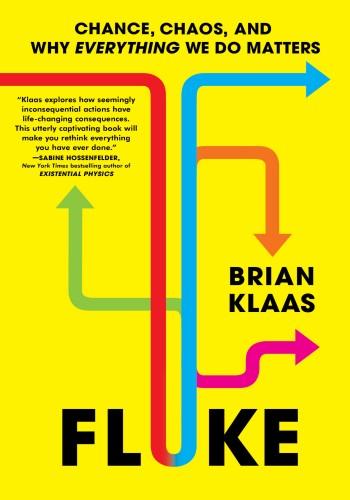
Fluke: Chance, Chaos, and Why Everything We Do Matters
by
Brian Klaas
Published 23 Jan 2024
Focus on getting the big things right, we’re told, and everything will be all right. Watch just about any inspirational TED Talk or read just about any self-help book, and you will be told that you, alone, are the solution that you seek. Those messages are popular because most of us view our lives through an individualist prism. Our life stories are not crowdsourced. Our major decisions define our path, which means we control our path. To understand that path, worship at the Altar of Me. Every so often, though, we see a fleeting, perplexing glimpse of our path colliding with someone else’s in a way that seems out of our control. We call those moments luck, or coincidence, or fate.
…
But what can’t be solved, I fear, is the Hard Problem. * * * This is where everything gets pretty bewildering—and where it becomes clear that the seemingly random “noise” matters much more than we pretend. A few years ago, social scientists from Germany and the United Kingdom decided to try something novel. They would crowdsource research to try to answer a long-standing question that had divided both scholars and the public alike: As more immigrants arrive in a country, do voters become less supportive of the social safety net? Does an influx of immigrants create a backlash against social spending programs, such as unemployment benefits, from voters who see them as illegitimate “handouts”?
…
Martyn, “Effect on the Quality of Peer Review of Blinding Reviewers and Asking Them to Sign Their Reports: A Randomized Controlled Trial,” JAMA 280 (3) (1998): 237–40. how many would be caught: S. Schroter et al., “What Errors Do Peer Reviewers Detect, and Does Training Improve Their Ability to Detect Them?,” Journal of the Royal Society of Medicine 101 (10) (2008): 507–14. They would crowdsource research: This whole section is about this study: N. Breznau et al., “Observing Many Researchers Using the Same Data and Hypothesis Reveals a Hidden Universe of Uncertainty,” Proceedings of the National Academy of Sciences 119 (44) (2022). “authoritarian durability”: See, for example, Jason Brownlee, Authoritarianism in an Age of Democratization (Cambridge: Cambridge University Press, 2007).
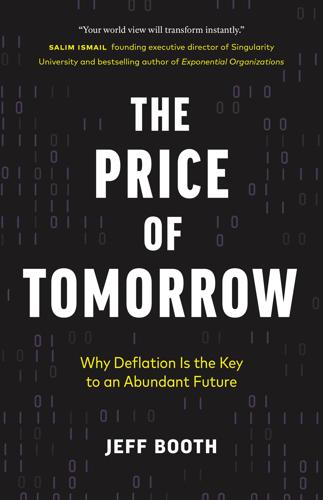
The Price of Tomorrow: Why Deflation Is the Key to an Abundant Future
by
Jeff Booth
Published 14 Jan 2020
An example of asking a big question is the Ansari X Prize, launched in 1996 by Peter Diamandis, in which twenty-six teams from all over the world competed for a prize of $10 million to create a private spacecraft that was capable of carrying three passengers into sub-orbital space two times within two weeks. Those teams spent more than $100 million, developed breakthroughs, and launched a new space race which we are seeing the benefits of today. Since that time, other crowdsourced competitions have been used to develop breakthroughs in everything from healthcare, to creating better algorithms to find dark matter, to cleaning our oceans. One of the key attributes of crowdsourcing is that it is open to participation; it allows ideas and contribution to come from anywhere and anyone. Those solutions are often far better than anything that could have been imagined by experts in a field.
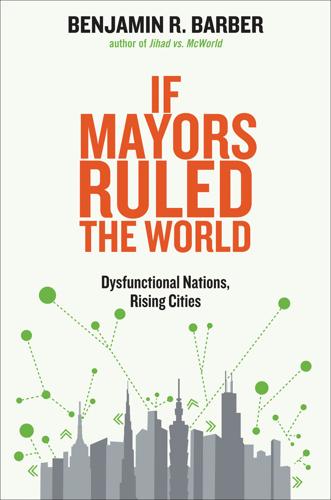
If Mayors Ruled the World: Dysfunctional Nations, Rising Cities
by
Benjamin R. Barber
Published 5 Nov 2013
In theory, the Internet (though originally a product of the Defense Department) offered a remarkable new social and civic as well as pedagogical and cultural interface. It proffered a horizontal rather than a vertical technology, connecting people directly with one another. It disintermediated authority and gave birth to a crowdsourcing wiki-logic in which knowledge would be subjected to democratic (critics would say anarchic) processes. Yet in application, the technological dreams were diminished. Social media as imagined by a college sophomore named Mark Zuckerberg (obsessed with rating girls and sharing gossip rather than generating a new mode of uplifting civic and social interaction of value to educators, deliberative democrats, or creative artists) instead produced the popular blockbuster Facebook—a product in which, though it defined social media, neither civic culture nor the culture of cities was visible.
…
Yet the speed that accelerates global democratic interaction overruns democratic deliberation, obliterates democratic judgment, and undermines the slow pace of democratic decision making. Participation is encouraged but participants, inundated by big data and enamored of and encouraged in their own private judgments by wiki-process crowd-sourcing software, are ever less public and civic in their inclinations. Perhaps rather than accelerators, democratic traffic on the electronic highway needs speed bumps. Parliaments (including the one recommended at the end of this book) quite properly seek to slow rather than quicken the pace of decision making.
…
The evolving practice has spread from Latin America to North America, Europe, and the world primarily through the web, although it is important to note once again that its initial momentum came from the real-world site of Porto Alegre, Brazil, the town that was one of its birthplaces and that hosted antiglobalization conferences for many years. There can be little doubt that cities are getting smarter and finding ways to use digital technology for outreach, information, and education and for involving citizens in neighborhood business, mainly within but also among towns. The possibilities (and perils) of crowdsourced knowledge—call it Wiki-logic—developed on the horizontal and disintermediated terrain of the Internet has powerful democratic implications. The assault on authority can liberate common women and men and invite them into deliberation, policy making (participatory budgeting), and a greater sense of ownership over government.

Coders: The Making of a New Tribe and the Remaking of the World
by
Clive Thompson
Published 26 Mar 2019
He created a clever piece of pro-privacy software, some code that lets you synchronize your URLs from one browser to another, storing them in the open on a public server, while keeping them encrypted so passersby couldn’t read them. In 2017, Phillips was looking at Wired and read about the release of Barrett Brown. Brown was a government-transparency activist who back in 2010 had created an audacious crowdsourced-journalism project. He’d gotten troves of documents leaked from government and high-tech firms, some procured by the hacktivist group Anonymous. Brown put all the documents on a wiki and encouraged far-flung volunteers to help him analyze them, writing reports on what they’d found. His project wound up in the crosshairs of the FBI, who raided his house.
…
Eventually Brown was jailed, after the FBI charged him with making threats to an agent on a YouTube video (true, though he says the video was triggered by his recent withdrawal from drugs) and with posting a document that linked to the URL of a website hosting stolen credit cards (a mistake; he thought the URL was linking to data relevant to his work), as well as an obstruction of justice charge. (The linking charges were later dropped.) While in prison, Brown wrote columns for the Intercept that won a National Magazine Award. He’d just been released from prison and told Wired about his next big idea: to build software so activists could collaborate online and crowdsource research, just like he did before. But this time the software would have tight encryption, so spooks couldn’t poke around. “We want a direct line to civic participation,” Brown told Wired. Phillips was electrified. This was precisely the sort of code he wanted to write! In fact, the work he and Bahnken had already done—an early prototype of LeapChat, his URL-hiding software—was already a step in that direction.
…
Google soon began throwing enormous resources at deep learning, developing its abilities and integrating it into as many products as possible. They trained deep-learning nets on language pairings—showing it, say, all the Canadian parliamentary proceedings that were translated into both English and French, or their own collections of crowdsourced translations. When they were done, Google Translate became, in a single night, remarkably better—so much improved that Japanese scholars were marveling at the machine’s deft ability to translate complex literary passages between their language and English. A few short years later, deep learning had swept the world of software.

Amazon Unbound: Jeff Bezos and the Invention of a Global Empire
by
Brad Stone
Published 10 May 2021
Among other things, the tool had helped steer a Billy Bob Thornton show, originally called Trial of the Century, to a winning new title, Goliath. But Price reported that the tool was unreliable—you can’t use the same crowd-sourcing principles to gauge the virtues of story ideas as you can to appraise the value of kitchen appliances on the aisles of an endless virtual store. The development executives often had to move fast to close competitive deals with in-demand TV producers and filmmakers; sometimes they had to bypass the data and just go with their instincts. Price also felt that crowd-sourcing creative concepts was suspect: shows like Seinfeld and Breaking Bad were unpopular at first, after all. Do you trust storytellers, or do you trust data; the ingenuity of artists or the wisdom of the crowd?
…
Friends said both parents were committed to their four children and to keeping them as far away as possible from the corrosive impact of celebrity and garish wealth. Back then, even her efforts to shout about important causes ended up as more of an unintended whisper. In 2013, she started a charitable LLC called Bystander Revolution, a website “offering practical, crowdsourced advice about simple things individuals can do to defuse bullying.” The site featured videos from celebrities like Monica Lewinsky, Demi Lovato, Michael J. Fox, and Dr. Ruth Westheimer. Gavin de Becker, a noted security consultant, bestselling author, and close Bezos family friend, added a number of his own testimonials, including one outlining the universal warning signs of kids who might become mass shooters.
…
.: “Amazon Posts Self-Delivery Record in July, Consultancy Says,” Benzinga, August 14, 2020, https://www.benzinga.com/news/earnings/20/08/17085321/amazon-posts-self-delivery-record-in-july-consultancy-says (January 26, 2021). make plastic face shields: Eugene Kim, “Leaked Emails Show Amazon’s Drone Delivery Team Is Manufacturing Face Shields for COVID-19 and Crowdsourcing Employee Ideas to Improve Warehouse Safety,” Business Insider, May 6, 2020, https://www.businessinsider.com/amazon-drone-delivery-team-is-manufacturing-covid-19-face-shields-2020-5 (January 26, 2021). millions of masks to employees and was donating N-95 masks: “Getting Millions of Masks to Our Employees,” Amazon, April 5, 2020, https://www.aboutamazon.com/news/company-news/getting-millions-of-masks-to-our-employees (January 26, 2021).
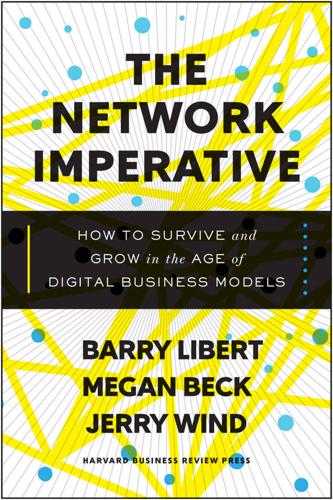
The Network Imperative: How to Survive and Grow in the Age of Digital Business Models
by
Barry Libert
and
Megan Beck
Published 6 Jun 2016
When it comes to savings accounts, millennials are turning to digital-only banks such as Fidor, companies that go as far as to provide outside developers with APIs (application programming interfaces), which give developers tools to interface with the banks’ software source code to let them innovate the banks’ platforms. Those in need of loans can crowd-source via Kickstarter or Lending Club. This trend is even moving beyond the individual. Many small businesses have turned to Square or ApplePay to take credit and debit card payments. The rise of network orchestration as a business model for financial services has led to great opportunities for customer self-service, peer-to-peer interaction, and collective collaboration.
…
In many us cities, Amazon now delivers Double Stuf Oreos (or whatever else you currently need) to your door in less than two hours, while allowing you to track the product from shelf to door. This is an amazing feat for a company that didn’t exist twenty years ago, in an industry—internet retailing—that barely existed before its arrival. Amazon is even beginning to experiment with a crowd-sourced delivery service. Networks and digital technologies have influenced retail in many ways. Most major retailers develop relationships with bloggers and sponsor posts that advertise their goods. They often maintain a significant presence on all major social media platforms (Starbucks has more than a million followers on Instagram—pretty good for a coffee company), and they use big data analytics to learn about and better serve their customers.
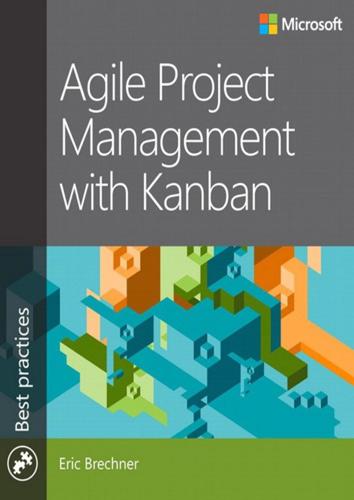
Agile Project Management With Kanban
by
Eric Brechner
Published 25 Feb 2015
You still need to deal with budgets, fickle customers and management, and changing requirements from a variety of sources, but you can otherwise enjoy your independence and deliver continuous value with Kanban. If you work on large projects within large organizations, you need mechanisms to guide, coordinate, and track the work of the vast number of people involved. However, this is not a book about high-level strategic planning, crowdsourcing, or classic project management—there are good books and materials available on those subjects. This book is about using Kanban effectively in a variety of situations, including within large organizations. In a large organization, different teams often use different project-management methods.
…
The topics covered are: Deriving a backlog from big upfront planning Ordering work based on dependencies Fitting into milestones Communicating status up and out Dealing with late or unstable dependencies Staying productive during stabilization Checklist Deriving a backlog from big upfront planning When you are running a large project that involves hundreds or thousands of people, it’s important to have a vision and a plan for achieving your project goals. Even crowdsourcing projects need an organizing principle and structure to allow everyone to contribute toward the shared outcome. The high-level plan and structure of large projects usually take a few forms: A high-level vision for what the end product will be. This may include a visualization, a list of capabilities and any constraints, a set of targeted customer segments and supported scenarios, and even an anticipated press release for when the project is complete.
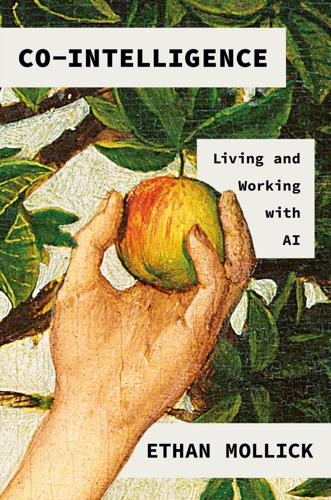
Co-Intelligence: Living and Working With AI
by
Ethan Mollick
Published 2 Apr 2024
Xie et al., “Adaptive Chameleon or Stubborn Sloth: Unraveling the Behavior of Large Language Models in Knowledge Conflicts,” arXiv preprint (2023), arXiv:2305.13300. GO TO NOTE REFERENCE IN TEXT asking the AI to conform to different personas: L. Boussioux et al., “The Crowdless Future? How Generative AI Is Shaping the Future of Human Crowdsourcing,” Harvard Business School Working Paper 24-005, July 2023, https://www.hbs.edu/faculty/Pages/item.aspx?num=64434. GO TO NOTE REFERENCE IN TEXT LLMs may even subtly adapt their persona: E. Perez et al., “Discovering Language Model Behaviors with Model-Written Evaluations,” arXiv preprint (2022), arXiv:2212.09251.
…
Hauser, “Generative Artificial Intelligence Enhances Creativity but Reduces the Diversity of Novel Content” (August 8, 2023), https://ssrn.com/abstract=4535536. GO TO NOTE REFERENCE IN TEXT generate a wider diversity of ideas: L. Boussioux et al., “The Crowdless Future? How Generative AI Is Shaping the Future of Human Crowdsourcing,” Harvard Business School Working Paper 24-005, July 2023, https://www.hbs.edu/faculty/Pages/item.aspx?num=64434. GO TO NOTE REFERENCE IN TEXT “equal-odds rule”: R. E. Jung et al., “Quantity Yields Quality When It Comes to Creativity: A Brain and Behavioral Test of the Equal-Odds Rule,” Frontiers in Psychology 6 (2015): 864, https://doi.org/10.3389/fpsyg.2015.00864.

Coding Freedom: The Ethics and Aesthetics of Hacking
by
E. Gabriella Coleman
Published 25 Nov 2012
Yet as the domain of free software has grown and matured, it has without doubt shifted the axis of intellectual property law, providing a model that has inspired others to build similar endeavors in various fields stretching from journalism to science. Thus, one of the most profound political effects of free software has been to weaken the hegemonic status of intellectual property law; copyright and patents now have company. Nevertheless, the existence of free software (and the related though distinct digital practices, such as crowdsourcing) should not be mobilized to make overblown assessments of the role of digital media formations in changing the more general political makeup of society. No simple connection between democracy and social media can be sustained (Ginsburg 2008; Hindman 2008; Lovink 2007; Morozov 2011; Rossiter 2007), nor is that what I am advancing here.3 Instead, we should recognize the viable alternatives in a moment when intellectual property law is itself undergoing rapid transformation.
…
Since the term’s invention, it has not only become the governing metaphor by which to understand contemporary Internet technologies and the social practices that cluster around them. It also has been stretched so far and so wide that it now encompasses software (blogs and wikis), corporate platforms (Flickr, Twitter, Facebook, YouTube, and Myspace), projects and nonprofits (Wikipedia, Debian, and Creative Commons), and collaborative techniques (remixing and crowdsourcing). There are certainly points of connection to be made between these domains, technologies, practices, and projects. Yet this constant conflation obscures far more than it reveals. When used in celebratory terms, Web 2.0 puts on equal footing a user who uploads a video on YouTube or a photo on Flickr (corporate-owned, proprietary platforms) and a free software developer or even a Wikipedian who is part of a nonprofit, collective effort.
…
In the case of Debian—explored in detail in this book—its policies, direction, and imperatives are decided by a collective that not only creates software but also has been innovative, quite successfully so, in terms of institution building. Just as significant is the fact that free software licensing ensures that the fruits of labor are equally available to all—a condition unmet by many forms of crowdsourced labor, much less ones that unfold on corporate and cloud-based platforms, such as Flickr, where collaboration is said to flourish, and yet where users can lose access to their data when and if the company folds or takes down a service. The politics of F/OSS, narrowly defined though they may be, are obfuscated and severely distorted when they are lumped in with Web 2.0.

Rage Inside the Machine: The Prejudice of Algorithms, and How to Stop the Internet Making Bigots of Us All
by
Robert Elliott Smith
Published 26 Jun 2019
But what happens when we can’t actually see what’s going on, much like the trick Vaucanson played on the public with the hidden guise of his Digesting Duck, or the fraud committed by von Kempelen with the chess master hidden inside his chess playing Turk? Without a hint of irony, in 2005 Amazon launched a crowdsourcing Internet marketplace called Amazon Mechanical Turk, the object of which is to crowdsource human intelligence to undertake micro-tasks that computers are currently unable to do. Amazon’s Mechanical Turk is a sort of post-irony imitation of its eighteenth-century predecessor. It is accessed through the Internet through an API (application programming interface), precisely as if its internal operations were those of Internet software.
…
Given the potential economic advantages, finding an answer of ‘yes’ may be a self-fulfilling prophecy. However, the AI winter of the 1970s and 1980s seemed to demonstrate that atomizing human decision-making was simply too complex and expensive for practicality, and that the answer was a firm ‘no’. But the advent of the Internet, with its web-like social structure, cheap crowdsourcing potential and explosive scalability, has heralded a paradigm shift, much like steam technology did in the eighteenth century. Now it looks very possible that big data algorithms could replace a slew of white-collar intellectual jobs ranging from clerks, social workers and lawyers to general practitioners, policemen and judges.
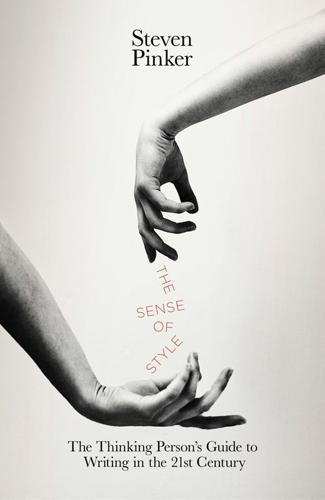
The Sense of Style: The Thinking Person's Guide to Writing in the 21st Century
by
Steven Pinker
Published 1 Jan 2014
Much of the joy of writing comes from shopping from the hundreds of thousands of words that English makes available, and it’s good to remember that each of them was a neologism in its day. The new entries in AHD 5 are a showcase for the linguistic exuberance and recent cultural history of the Anglosphere: Abrahamic, air rage, amuse-bouche, backward-compatible, brain freeze, butterfly effect, carbon footprint, camel toe, community policing, crowdsourcing, Disneyfication, dispensationalism, dream catcher, earbud, emo, encephalization, farklempt, fashionista, fast-twitch, Goldilocks zone, grayscale, Grinch, hall of mirrors, hat hair, heterochrony, infographics, interoperable, Islamofascism, jelly sandal, jiggy, judicial activism, ka-ching, kegger, kerfuffle, leet, liminal, lipstick lesbian, manboob, McMansion, metabolic syndrome, nanobot, neuroethics, nonperforming, off the grid, Onesie, overdiagnosis, parkour, patriline, phish, quantum entanglement, queer theory, quilling, race-bait, recursive, rope-a-dope, scattergram, semifreddo, sexting, tag-team, time-suck, tranche, ubuntu, unfunny, universal Turing machine, vacuum energy, velociraptor, vocal percussion, waterboard, webmistress, wetware, Xanax, xenoestrogen, x-ray fish, yadda yadda yadda, yellow dog, yutz, Zelig, zettabyte, zipline If I were allowed to take just one book to the proverbial desert island, it might be a dictionary.
…
Distinctions among the grammatical forms of a verb or clause that convey the semantic distinctions of modality, including the distinctions between an indicative statement (He ate), a question (Did he eat?), an imperative (Eat!), a subjunctive (It’s important that he eat), and, for the verb be, an irrealis (If I were you). morpheme. The smallest meaningful pieces into which words can be cut: walk-s; in-divis-ibil-ity; crowd-sourc-ing. nominal. Something nouny: a noun, pronoun, proper name, or noun phrase. nominalization. A noun formed out of a verb or an adjective: a cancellation; a fail; an enactment; protectiveness; a fatality. noun. The grammatical category of words that refer to things, people, and other nameable or conceivable entities: lily, joist, telephone, bargain, grace, prostitute, terror, Joshua, consciousness.
…
The difference between an active sentence (Beavers build dams) and a passive sentence (Dams are built by beavers). word-formation. Also called morphology: the component of grammar that alters the forms of words (rip → ripped) or that creates new words from old ones (a demagogue → to demagogue; priority → prioritize; crowd + source → crowdsource). zombie noun. Helen Sword’s nickname for an unnecessary nominalization that hides the agent of the action. Her example: The proliferation of nominalizations in a discursive formation may be an indication of a tendency toward pomposity and abstraction (instead of Writers who overload their sentences with nouns derived from verbs and adjectives tend to sound pompous and abstract).
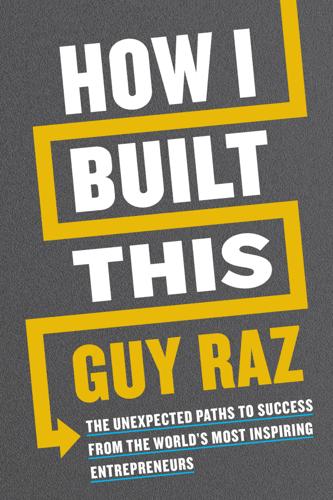
How I Built This: The Unexpected Paths to Success From the World's Most Inspiring Entrepreneurs
by
Guy Raz
Published 14 Sep 2020
It is not meant to be leaned on like a crutch, or deferred to unequivocally, as though it is more relevant than experience or instinct or talent. When a creator goes down that pathway, as I have learned by talking to creators from across industries and disciplines, they risk falling into the trap of crowdsourcing the creative process. And while there is often wisdom in the crowd in certain instances, creativity is not one of them. With look and feel and function, which can involve intensely personal preferences, the crowd can become a shapeless mob with a gravity that even the most experienced entrepreneur can’t predict.
…
Early on, back in 2011, she did things as simple as reply to every message, positive or negative, on the company’s Twitter, Facebook, Tumblr, and Instagram feeds (which had just launched when she arrived at Warby Parker), in an effort to create a sense of constant conversation and a growing, vibrant community. When customers posted pictures of themselves in each of the five eyeglass frames they ordered as part of Warby Parker’s home try-on program, she’d repost them on Warby’s official Tumblr and Facebook pages and encourage the community to vote on their favorite. “We’d basically crowdsource what frames people should buy,” she recalled, “and we built a really loyal, really engaged community that just kept growing and growing.” Jen had found a way to convert social media buzz into online buying decisions. She had also seen firsthand what can happen when you get attention from traditional media.
…
See crisis management Chaparral Energy, 167 Charney, Dov, 206–8, 263 chauvinism, 150, 194 Chesky, Brian, 53–61, 71, 142 Chesney, Kenny, xi Chez Panisse, 209–11 Chicken Salad Chick, ix–xii Chicken Salad Chick Foundation, xi Chipotle, 78 Chouinard, Yvon, 260–64 Christensen, Clayton, 14 Clif Bar company culture, 263 competition, 99–100 iterations, 88–92 marketing, 122 offer to sell and growth, 245–47 Cobain, Kurt, xii co-founders, 42–50 of Bumble, 67–68 customer service and, 52 divorce and, 228–31, 257 examples of, 43–44, 48–49 history of, 49 importance of, 42–43 Method development, 44–47 Shopify, 108–9 skill sets, 44 storytelling, 65 tension between, 222–31 Cohen, Ben, 33, 40, 106, 112 Commodore, 217 communication money and, 75–76 signal-to-noise ratio, 126 storytelling, 63–73 tension and, 222–31 See also building buzz Compaq Computer, 267 Computer Dealer (magazine), 218 Conagra, 247, 252 Condé Nast, 226 Conway, Ron, 61 copyright and intellectual property, 159–68 Cosby Show, The, 4, 6 Crate & Barrel, 77 Crawford, Kit, 263 credit card use Airbnb and, 58, 59 Angie’s BOOMCHICKAPOP, 248, 250–51 FUBU and, 29 general, among founders, 23, 53, 61 Method and, 52 online shopping, 107 See also bootstrapping Crest Whitestrips, 63 crisis management, 169–79 divorce, 228–31 of financial nature, 193–94 identity crisis, 239–42 James Burke on, 170–72 Jeni Britton Bauer on, 172–76 lack of, 176–79 partnership tension, 222–28 crowdfunding, 81 crowdsourcing, 123 crucible phase, 137–46 Airbnb example, 143–44 author on, 144–45 defined, 137–38 Drinkworks, 196–97 Jeni’s Splendid Ice Creams, 173 Stonyfield Farm, 139–43 Cuban, Mark, 29 culture, of a business, 203–13 employees and, 208–10 identity crisis, 235–38, 240–41 kindness, 253–64 leaders’ role in, 222–23, 236–37 under a monarch CEO, 205–8 Reed Hastings on, 203–5 values and, 210–13 culture deck, the, 203 customer loyalty customer service and, 52 Glitch, 187 Hangover, The (film), 128 Jeni’s Splendid Ice Creams, 172–76 The Knot, 131 storytelling, 65 Warby Parker, 256 Wells Fargo, 215–16 See also word of mouth D Darwin, Charles, 180 delegation, 204–5 Dell, Michael, 18–21 Dell Computer Corporation, 21 Democratic National Convention (DNC), 2008, 56–57, 122, 142 Dermalogica, 186 Dippin’ Dots, 162–68 Disney, Walt, 136 divorce, 228–31, 257 DNC (Democratic National Convention), 2008, 56–57, 122, 142 DocuSign, 215 Doerr, John, 208 Dots of Fun, 164 Drinkworks, 196–97 Dropbox, 111 Drybar, 131–32, 134 Dual Cyclone (vacuum), 161 Dunn, Andy on company identity, 239–42 education, 270 on partnership tension, 226–27, 228, 230 on self-knowledge, 233–38 Dyson, James, 159–62 E economy AOL and Time Warner merger, 239 Bonobos, 237 Dippin’ Dots, 165–66 Five Guys, 128–29 panic of 1855, 215–16 Stonyfield Farm, 140 subprime mortgage crisis, 193–94 2008 financial crisis, 269 Ecover, 224 Edmonds, Kenny “Babyface”, 112 Eileen Fisher (brand), 257–58 Eldredge, Niles, 180 Ells, Steve, 78 employees company culture, 208–9 empowering, 260–64 kindness, 256–57 partnership tensions, 230 rewarding, 251–52, 258–59 storytelling, 65 talent, attracting, 208–9, 253–64 tensions among, 235–38 values and, 210, 212–13 entrepreneurship co-founders, 42–50 definition and call of, 1–2 demands of, xii–xiii kindness and, 253–55 learning the ropes of, 21 luck vs. hard work, 265–72 managing risk in, 23–24 money challenges and, 82–83 money vs. control, 243–52 origin of word, 22 product iterations, 84–93 research and, 32–33 self-doubt in, 156–57 success, fear of, 191–92 transition into, 27–31 See also funding the business; leadership EO Products, 228–29 Erickson, Gary brand building, 122 employee kindness and, 263 iterative process, 88–92 niche market of, 99–100 on selling vs. staying, 245–47 mentioned, xiv evolution, 180 Exploding Kittens (card game), 81 F Fab, 193 failure AOL and Time Warner merger, 239 Bloq, 224 in dating, 68 fear of, xvi, 95 Firestone ATX tires, 176–77 Gary Erickson on, 92 of identity, 234 mitigating, 30 pivoting from, 186 purpose and value, 192 fallback plans, 29–30 Fallon, Jimmy, 196, 254 Fallows, James, 13, 17 familiarity vs. fear, 13–14, 18–19 Fargo, William, 215–16 Fault in Our Stars, The (Green), 181 FBI, 171 FDA, 171 fear culture, of a business, 236 vs. danger, 13–14 of failure, xiii, xvi, 95 feedback and customer reviews, 90 risk taking and, 1–2, 16, 20 of success, 191–92 feedback and customer reviews, 88–93 Financial Times, 207 Finkelstein, Sydney, 207 Firestone ATX tires, 176–79 Fischer, Mark and Scott, 167 Fisher, Eileen, 257–58, 262 Five Guys, 128–30, 134–36 5-hour Energy, 100–103 five Ps, 224 Fleiss, Jennifer, 149, 195 Flickr, 187 Flynn, Erin Morrison, 223, 228 Foley, John, 270 Forbes, 65 Ford Explorers, 176–79 Fortune, 171, 185 founders.
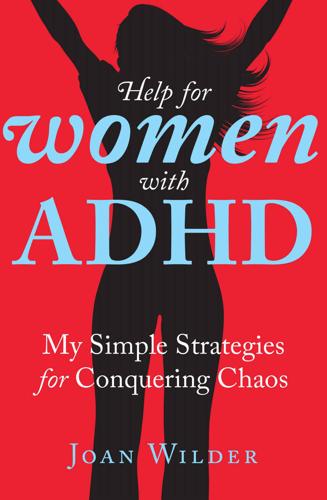
Help for Women With ADHD: My Simple Strategies for Conquering Chaos
by
Joan Wilder
Published 18 May 2016
Lucky for me, I have a close friend who is particularly clear-minded about making decisions, and finding solutions. When I texted her for help deciding between the iPhone 6 or the Plus, she answered, “Make a list of pros and cons, but remember you’re going to be somewhat dissatisfied with either one, because nothing is perfect.” It was simple advice, but I needed it and it helped me. Crowd-sourcing minor decisions is a fun and productive way to use your social media networks. Asking your friends to weigh in on issues you’re having to decide can be helpful. Connecting honestly about our challenges with people we trust deepens authentic friendships. And, it’s so true that helping someone helps the giver as much as the receiver.
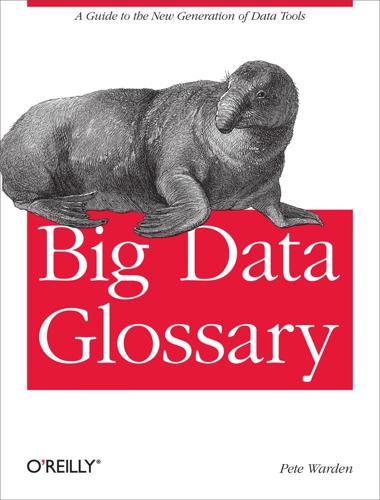
Big Data Glossary
by
Pete Warden
Published 20 Sep 2011
One difference is that Thrift includes network client and server code in its generated stubs, whereas protobuf limits its scope to pure serialization and deserialization. The biggest differentiator between the two projects is probably their developer base. Though the code is open source, Google is the main contributor and driver for Protocol Buffers, whereas Thrift is more of a classic crowd-sourced project. If your requirements skew towards stability and strong documentation, Protocol Buffers is going to be attractive, whereas if you need a more open, community-based approach, Thrift will be a lot more appealing. About the Author A former Apple engineer, Pete Warden is the founder of OpenHeatMap, and writes on large-scale data processing and visualization.
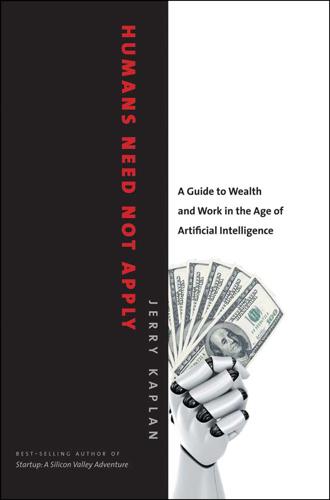
Humans Need Not Apply: A Guide to Wealth and Work in the Age of Artificial Intelligence
by
Jerry Kaplan
Published 3 Aug 2015
Imagine a clothing store where you are photographed in several different outfits, and the images are immediately (and anonymously, by obscuring your face) posted to a special website where visitors can offer their opinion as to which one makes you look slimmer. Within seconds, you get objective, statistically reliable feedback from impartial strangers, who earn points if you complete a purchase. (This concept is called “crowdsourcing.”) Why put your faith in a salesperson motivated by commission when you can find out for sure? Reflecting these two different effects of automation on labor (replacing workers and rendering skills obsolete), economists have two different names for the resulting unemployment. The first is “cyclical,” meaning that people are cycling in and out of jobs.5 In bad times, the pool of people who are between jobs may grow, leading to higher unemployment.
…
See moral agency conservatives, 162, 163, 187 consumer behavior: Amazon pricing policies and, 99–101, 103–4 automated tracking/analysis of, 55, 64–75, 90, 92, 96–105, 178 as class signifier, 109, 117 comparison shopping and, 54, 100 purchasing power and, 115 targeted website ads based on, 64–75 wealth and, 57, 109, 110–11, 112, 114, 117–18, 165–66 contracts, 90, 97, 202 synthetic intellect rights to, 91, 199–201 voiding of, 88 cookies (computer hard drive notations), 65–69 cooking, 6, 39, 47 Cornell University, 24 corporations: employees as agents of, 82–83 family-owned vs. broad ownership of, 177–82 high PBI index of, 15, 181 legal personhood of, 90, 215n9 as liability insulation, 91 moral agency of, 80, 87 punishment of, 87–88 synthetic intellect parallel, 90, 199–200 tax benefits for, 14, 177, 180–81 coupons, 105 CPM (cost per thousand), 71 credit cards, 89, 96 crime, 80, 82–88 crop picking, 39, 141 CROPS (Clever Robots for Crops program), 143 crowdsourcing, 136 C3PO (milquetoast humanoid), 40 customers. See consumer behavior cyberspace, 37 cyclical unemployment, 136–37, 219n5 dark factory, 200 DARPA (Defense Advanced Research Projects Agency), 95 Dartmouth College, 215n9 data, 7, 36, 45, 48, 51, 67 commercial importance of, 96–97, 98, 103 sharing of, 28 speed of analysis of, 53, 68, 103–4 unnormalized, 53–54 Data Mining, 152 debt, 156, 176 Deepwater Horizon.

You Are Not a Gadget
by
Jaron Lanier
Published 12 Jan 2010
If we can’t reformulate digital ideals before our appointment with destiny, we will have failed to bring about a better world. Instead we will usher in a dark age in which everything human is devalued. This kind of devaluation will go into high gear when information systems become able to act without constant human intervention in the physical world, through robots and other automatic gadgets. In a crowdsourced world, the peasants of the noosphere will ride a dismal boomerang between gradual impoverishment under robot-driven capitalism and a dangerously sudden, desperate socialism. The Only Product That Will Maintain Its Value After the Revolution There is, unfortunately, only one product that can maintain its value as everything else is devalued under the banner of the noosphere.
…
Making money in the cloud doesn’t necessarily bring rain to the ground. The Big N Here we come to one way that the ideal of “free” music and the corruption of the financial world are connected. Silicon Valley has actively proselytized Wall Street to buy into the doctrines of open/free culture and crowdsourcing. According to Chris Anderson, for instance, Bear Stearns issued a report in 2007 “to address pushback and other objections from media industry heavyweights who make up a big part of Bear Stearns’s client base.” What the heavyweights were pushing back against was the Silicon Valley assertion that “content” from identifiable humans would no longer matter, and that the chattering of the crowd with itself was a better business bet than paying people to make movies, books, and music.
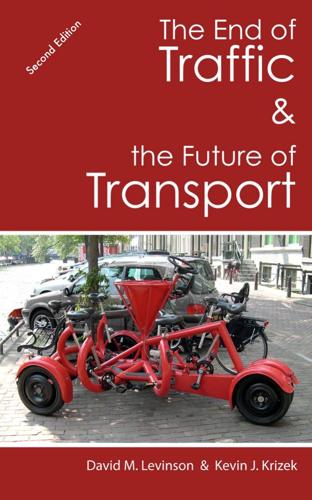
The End of Traffic and the Future of Transport: Second Edition
by
David Levinson
and
Kevin Krizek
Published 17 Aug 2015
Travelers themselves are now the probes with GPS units and wireless communication enabling everyone to know (in principle) near real-time speeds, traffic conditions, and transit schedule adherence. Digital traces of everyone doing everything are everywhere, including who is doing what, buying what, searching for what and even physically where they are going. Furthermore, it is often crowd-sourced and sometimes open. When it is not, legal issues abound. Relatively standard practices from e-commerce and business analytics are infiltrating domains of public service provision and urban governance. Generic commodities are being replaced with identity preserved goods. You are no longer buying nondescript Grade 4 Durum wheat, but a 5 lb (2.2 kg) bag from a bushel of Durum wheat from a particular row on a particular farm, planted and harvested on particular dates, grown from particular seeds, with known fertilizers and pesticides documented.
…
In addition to providing value to the traveler, new smartphone-based and vehicle-based sensors will be valuable to transport agencies who are woefully uninformed on how people actually use their systems. This information will prove useful not only for planning, but even for real-time operations and controls, identifying information that will feed algorithms that decide how to time traffic signal timings or dispatch additional buses. Apps which crowdsource vertical acceleration information and GPS locations from smartphone sensors are already useful for automatically providing agencies about road quality, like where is the latest pothole.209 At the personal level, The "Quantified Self" suggests that the outputs of many new sensors will be fed back to the individual traveler.
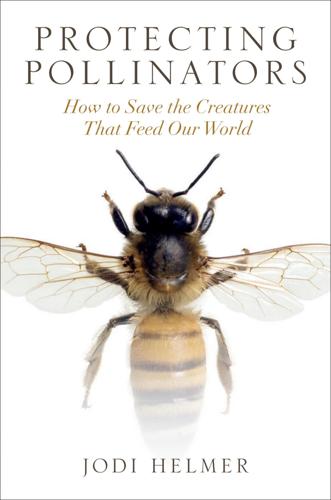
Protecting Pollinators
by
Jodi Helmer
Published 15 Nov 2019
“I’m seeing the help I want to give to the monarch being spread farther than I could reach myself,” she says, “and that’s what citizen science is about.” Although researchers coined the term “citizen science” in the 1990s, it is not a new concept. The first examples of the practice, also called community science, crowd science, crowdsourced science, participatory science, and volunteer monitoring, date back centuries. In the 1700s, a Danish bishop enlisted his clergy to collect natural objects and record observations to describe species in different regions of Europe. Naturalist Henry David Thoreau collected flowering dates, leaf-out dates, and arrival dates of migrating birds in Concord, Massachusetts, between 1851 and 1858—information that is still used to assess shifts in these annual events.
…
“Citizen science has increased a lot in the last few years, [and] having these associations shows that we’ve reached a point where there is a need,” explains Meg Domroese, land-trust program director at Gathering Waters: Wisconsin’s Alliance for Land Trusts. Figure 7-1: A bumblebee covered with small grains of pollen lands on a hibiscus flower in search of nectar. The authors of a study on crowdsourced data called citizen science “a powerful force for scientific inquiry” that has “transformed the practice of science.” Involving the general public in field research is essential to understanding—and protecting—pollinators. Citizen scientists provided the data that demonstrated sharp declines in monarch populations.
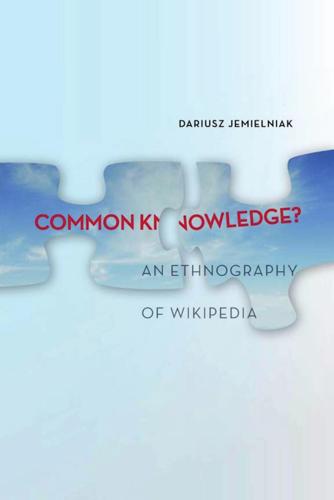
Common Knowledge?: An Ethnography of Wikipedia
by
Dariusz Jemielniak
Published 13 May 2014
In this sense, some disregard for academic titles (in terms of purely formal recognition of authority, without some actual expertise) is embedded in the philosophy of the movement. While knowledge management may be just a fad in consulting in business literature (Jemielniak & Kociatkiewicz, 2009), management of knowledge through crowdsourcing has brought a successful redefinition of social knowledge boundaries, of which the Wikimedia movement is a part. The resulting inevitable redistribution of social power (Foucault, 1982) is probably even more significant in the long run than the parallel transformation of consumers of culture into its producers (Bruns, 2008).
…
Thus, that work on open-collaboration platforms is perceived as a hobby should not necessarily signify that it does not involve worker exploitation. While Wikipedia is a not-for-profit organization and exploitation of editors, if any, benefits society as a whole, other organizations also using crowdsourcing and usergenerated content (as does TripAdvisor and IMDb) rely on elements of opencollaboration design, tested so well in the Wikipedia community, to maximize their revenues. This criticism of open-collaboration organization as a new form of making capital out of consumers and using them to create value for the producers does not apply directly to Wikipedia.
…
O’Mahony, S., & Ferraro, F. (2007). The emergence of governance in an open source community. The Academy of Management Journal, 50(5), 1079–1106. O’Neil, M. (2009). Cyberchiefs: Autonomy and authority in online tribes. New York: Pluto Press. O’Neil, M. (2010). Shirky and Sanger, or the costs of crowdsourcing. Journal of Science Communication, 9(1), 1–6. O’Neil, M. (2011a). The sociology of critique in Wikipedia. Critical Studies in Peer Production, 1(2). Retrieved from http://peerproduction.net/issues/issue-0/peer -reviewed-papers/sociology-of-critique/ O’Neil, M. (2011b). Wikipedia and authority.
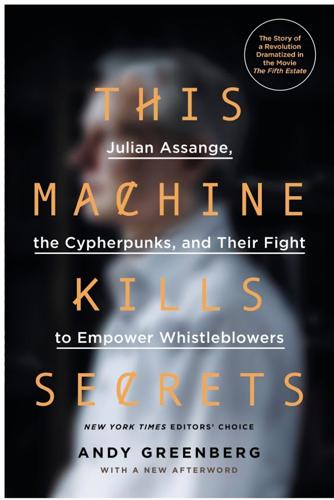
This Machine Kills Secrets: Julian Assange, the Cypherpunks, and Their Fight to Empower Whistleblowers
by
Andy Greenberg
Published 12 Sep 2012
Anonymous was the name, paradoxically, taken by the world’s largest, most active group of black hat hackers and hacktivists. More than a traditional organization, it functioned as a loosely organized movement, or even an elaborate, participatory meme. Those who took part in the group—and anyone could be Anonymous—joined in crowd-sourced swarm attacks on whatever target offended its values, tenets like freedom of speech and anticorporatism. Anonymous’ victims, in the years since the movement emerged out of juvenile online forums and began its politically motivated missions, have included the Tea Party and its billionaire corporate supporters the Koch brothers, the antihomosexual extremist Westboro Baptist Church, Sony Corporation after it sued a hacker who reverse-engineered the PlayStation 3, and the governments of Anguilla, Australia, Brazil, Egypt, Israel, Sweden, Tunisia, Turkey, the United States, Venezuela, and Zimbabwe, among others.
…
The field of battle is WikiLeaks. You are the troops.” The poster went on to call for boycotts and cyberattacks, mass distribution of the cables online and off, and even a letter-writing campaign to government officials in support of Assange. A wave of digital broadsides followed as Anonymous trained its stream of crowd-sourced junk data, powered by a software weapon called Low Orbit Ion Cannon, at one target after another. PayPal’s corporate blog was temporarily blown off the Web, followed by the websites of Visa and MasterCard as well as the Swedish prosecutor’s office that was attempting to extradite Assange. The hackers followed up with another direct action called “Operation Bradical” that focused instead on Bradley Manning, by then languishing in a Quantico, Virginia, brig, kept on suicide watch and forced to strip naked nightly by commanding officers.
…
As Anonymous began to share the media spotlight surrounding Cablegate, Aaron Barr became increasingly preoccupied with the group. It represented a tempting case study for the kind of analysis he hoped to validate: Although Anons fiercely guarded their true names, they openly congregated and planned their actions in online chat rooms and crowd-sourced documents using pseudonyms. Despite all its proxies and masks, perhaps the entire social graph of Anonymous could be infiltrated and charted. Barr had been planning on giving a talk at the BSides security conference in San Francisco in March, in which he’d use clues built from a Web of online relationships to reveal human flaws in the security of a nuclear facility in Pennsylvania and the army intelligence group INSCOM.
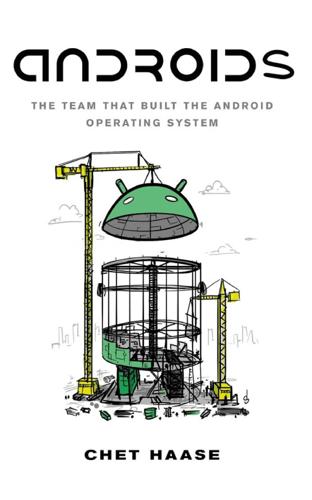
Androids: The Team That Built the Android Operating System
by
Chet Haase
Published 12 Aug 2021
Given the kernel-level sandboxing of apps, the team was able to convince the carrier that Linux security standards would be sufficient. Next, the team required that developers actually sign in, and used existing infrastructure and policies vetted on YouTube to validate that the individual did not present an unreasonable risk for the company. Also, they used the power of crowd-sourcing, putting in place a system whereby users could report bad apps and the team would take them down. Finally, they convinced the carrier that, as much as T-Mobile would suffer if they had network problems, so would Google. Android’s, and Google’s, reputation was on the line. So Android had all the right incentives to make this system work and for the apps and network to be secure and safe.
…
The operating system will ‘swap’ out chunks of memory to disk to handle this larger overall amount, allowing the application to access a much larger memory heap, by handling it through a combination of physical RAM plus disk storage. 26. Open Source “I don’t think the open source thing mattered.” –Iliyan Malchev329 Open source is many things to many people. It can be a way to “crowdsource” work, getting a larger community to help out. Linux is a great example of this. While the original system was written by a single developer, Linus Torvalds, there is a large community of individuals and companies in the decades since that has contributed everything from fixes to drivers to core system functionality.
…
I particularly enjoyed these two: Losing the Signal: The Untold Story Behind the Extraordinary Rise and Spectacular Fall of BlackBerry, by Jacquie McNish and Sean Silcoff Operation Elop: The Final Years of Nokia’s Mobile Phones, by Merina Salminen and Pekka Nykänen (The original Finnish book Operaatio Elop was never published in English, but a crowd-sourced effort resulted in an English translation in PDF and other formats, which are available online). Silicon Valley Tech History There are also many great books and documentaries about tech history, including these which I really enjoyed: Revolution in The Valley: The Insanely Great Story of How the Mac Was Made, by Andy Hertzfeld This is a great book for understanding how one of the canonical pieces of Silicon Valley history came to be.
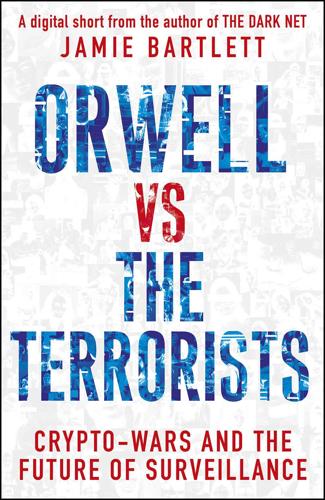
Orwell Versus the Terrorists: A Digital Short
by
Jamie Bartlett
Published 12 Feb 2015
But here’s the ruse: if enough people were sufficiently angry with a particular individual – each anonymously contributing just a few dollars – the prize pool would become so large that someone would be incentivised to make a prediction and then fulfil it themselves in order to take the pot. This is where encrypted messages and untraceable payment systems come in. A crowd-sourced – and untraceable – murder would unfold as follows. First, the would-be assassin sends his prediction in an encrypted message that can be opened only by a digital code known to the person who sent it. He then makes the kill and sends the organisation that code, which would unlock his (correct) prediction.

Thank You for Being Late: An Optimist's Guide to Thriving in the Age of Accelerations
by
Thomas L. Friedman
Published 22 Nov 2016
You look at the new way I have laid out ‘How to Write a Column’; you can see all the changes. And if you like it, you press the ‘merge’ button. And then the next viewer sees the aggregate version. If you don’t like all of it, we have a way to discuss, comment, and review each line of code. It is curated crowdsourcing. But ultimately you have an expert—the person who wrote the original program—‘How to Write a Column’—who gets to decide what to accept and what to reject. GitHub will show that I worked on this, but you get to control what is merged with your original version. Today, this is the way you build software.”
…
When a company like Udacity can respond to a major technological leap forward, such as TensorFlow from Google, and offer a course online to teach it to anyone in the world within three months, the word is going to get out and the market will change. Who is going to wait until next year to take that course on the campus of a university—assuming that school can even change its curriculum that quickly? Moreover, there are now game platforms such as Foldit, the crowdsourcing computer game, that enable anyone to contribute to important scientific research. These are becoming popular learning platforms. Foldit set up an online “game” where anyone could play and win a substantial cash prize by designing proteins. “Since proteins are part of so many diseases, they can also be part of the cure.
…
Khaled was a twenty-nine-year-old Alexandrian who was killed by police. I saw myself in his picture … I anonymously created a Facebook page and called it ‘We Are All Khaled Said.’ In just three days, the page had over a hundred thousand people, fellow Egyptians who shared the same concern.” Soon Ghonim and his friends used Facebook to crowdsource ideas, and “the page became the most followed page in the Arab world,” he said. “Social media was crucial for this campaign. It helped a decentralized movement arise. It made people realize that they were not alone. And it made it impossible for the regime to stop it.” Ghonim was eventually tracked down in Cairo by Egyptian security services, beaten, and then held incommunicado for eleven days.

Empire of AI: Dreams and Nightmares in Sam Altman's OpenAI
by
Karen Hao
Published 19 May 2025
GO TO NOTE REFERENCE IN TEXT Before generative AI: Florian Alexander Schmidt, “Crowdsourced Production of AI Training Data—How Human Workers Teach Self-Driving Cars How to See,” Working Paper Forschungsförderung 155 (2019), hdl.handle.net/10419/216075. GO TO NOTE REFERENCE IN TEXT But right as this new: Author interviews with Florian Alexander Schmidt, 2022; and Julian Posada, 2021. GO TO NOTE REFERENCE IN TEXT 10 million percent: According to the International Monetary Fund. GO TO NOTE REFERENCE IN TEXT By mid-2018, hundreds: Schmidt, “Crowdsourced Production of AI.” GO TO NOTE REFERENCE IN TEXT Looking back several years later: Julian Posada, “The Coloniality of Data Work: Power and Inequality in Outsourced Data Production for Machine Learning” (PhD diss., University of Toronto, 2022), 1–229, hdl.handle.net/1807/126388.
…
By early June, Altman had personally met with at least one hundred US lawmakers, according to The New York Times, some of whom proudly referenced those private conversations during the hearing. On the day of Altman’s testimony, a small band of Hollywood concept artists, who specialize in the conceptual design of characters, props, and other visual elements in movies, had also been scheduled to meet with several congressional offices. They had crowdsourced funding for their airfare and accommodation and had in the process been threatened by online trolls and doxed for speaking out against the AI industry. Just as Hollywood writers were—and soon Hollywood actors would be—in the midst of historic strikes, to bargain in part for better protections against AI, the artists, too, had planned to speak candidly about the devastating effects that generative AI was already having on their profession.
…
Big Tech likes to collect your data more or less for free—to build whatever they want to, whatever their endgame is—and then turn it around and sell it back to you as a service.” From beginning to end, Jones and Mahelona pulled off the project without compromise. At one point, they kicked off an education campaign to teach more Māori people about AI and a community competition to crowdsource data donations and annotations. Within ten days, Te Hiku gathered three hundred ten hours of high-quality transcribed audio from some two hundred thousand recordings made by roughly twenty-five hundred people. The level of engagement was unheard of among many AI researchers—one that is a testament to the level of trust and excitement Te Hiku’s approach engendered within its community.
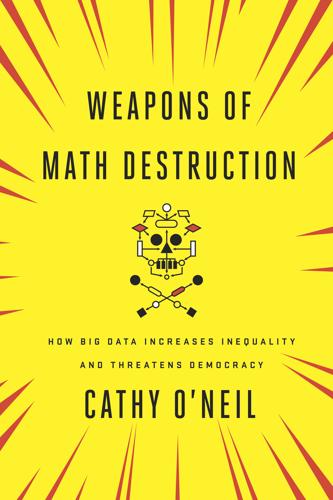
Weapons of Math Destruction: How Big Data Increases Inequality and Threatens Democracy
by
Cathy O'Neil
Published 5 Sep 2016
Their research tools can replicate the immense scale of the WMDs and retrieve data sets large enough to reveal the imbalances and injustice embedded in the models. They can also build crowdsourcing campaigns, so that people across society can provide details on the messaging they’re receiving from advertisers or politicians. This could illuminate the practices and strategies of microtargeting campaigns. Not all of them would turn out to be nefarious. Following the 2012 presidential election, for example, ProPublica built what it called a Message Machine, which used crowdsourcing to reverse-engineer the model for the Obama campaign’s targeted political ads. Different groups, as it turned out, heard glowing remarks about the president from different celebrities, each one presumably targeted for a specific audience.

Thinking Machines: The Inside Story of Artificial Intelligence and Our Race to Build the Future
by
Luke Dormehl
Published 10 Aug 2016
A Mechanical Turk job applies to any jobs that are assigned to humans because machines are not yet capable of carrying them out. As a result, this is sometimes described as ‘Artificial Artificial Intelligence’. Many companies have experimented with AAI. The best known of these is Amazon’s MTurk platform, which allows individuals and businesses to crowdsource humans to carry out what are known as HITs, standing for Human Intelligence Tasks. This could be anything from labelling the objects found in an image to make searching easier to transcribing audio. Amazon is far from alone. In August 2015, Facebook launched ‘M’, a text-based AI assistant, similar to the technologies described in chapter four.
…
Okay, so it’s not exactly War and Peace, but it doesn’t take enormous generosity to say that it’s no worse than your average holiday thriller novel. And it’s getting better and better all the time. The goal of Scheherazade is to generate stories by researching details about different topics and transforming these into narrative plot points, much as a human author would do. The data comes from crowdsourced descriptions of scenarios, which the AI then aggregates and turns into original content. ‘If we ask it about bank robberies, we don’t tell it anything about banks or robberies,’ creator Mark Riedl explains. ‘We don’t even tell it what actions can be performed in banks. It has to get this knowledge from somewhere, so it asks humans to describe examples in natural language.
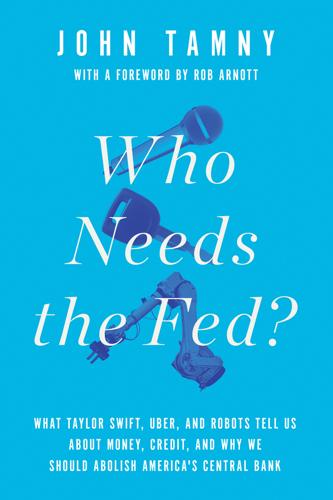
Who Needs the Fed?: What Taylor Swift, Uber, and Robots Tell Us About Money, Credit, and Why We Should Abolish America's Central Bank
by
John Tamny
Published 30 Apr 2016
Returning to Spike Lee, his early successes made him bankable in Hollywood. But in 2014, he turned to Kickstarter to attain $1.25 million in financing for Da Sweet Blood of Jesus. Kickstarter is a website where the creative go to find investors for their projects. They set a number they’d like to raise, and if successful they find individuals eager to “crowd-source” whatever project it is they seek funds for. The investors acquire a stake in the creative dream of others who need credit to animate their dreams. Capitalism is always and everywhere a two-way street. Explaining his utilization of Kickstarter to The Economist, Lee observed that traditional movie studios “are looking for tent-pole movies, movies that make a billion dollars, open on the same day all around the world.
…
INDEX Adapt (Harford), 32, 64–65 The Age of Reagan (Hayward), 49, 169 Allison, John, 119, 152, 172–73 Altig, David, 156 Amazon, 97–98, 108, 125, 143, 155 Ambassador Hotel, 34, 35–36 Apple Computer, 30–31, 125, 143 Apple Music, 9–10 Austin, Texas, 123, 148 Austrian School of economics, 79, 87, 88–89, 90, 91–95, 113–14, 141 See also von Mises, Ludwig Bain Capital, 126 Baker Hughes, 73 Baltimore, Maryland, 135, 139–40, 143 Baltimore Ravens, 17 The Baltimore Sun, 135 banking bank cash reserve and capital requirements, 98–102 federal deposit insurance, 101–2 housing boom and “easy credit,” 113–22 inability of banks to multiply money and credit, 86–92, 96 insolvent banks and necessity of the Fed, 164–65 interbank lending rates, 114–16, 156–58 lending practices, 86–90, 98–102, 109–10 necessity of traditional banks, 105–12 proposed Glass-Steagall reintroduction, 102–3 and Wall Street, 126, 129–31 Bank of America, 89, 103, 108, 120 Bank of Bird-in-Hand, 111 Bank of Japan, 152, 159 Bartley, Robert, 70, 71, 72 Bartley, Robert L., 157–58 The Battle of Bretton Woods (Steil), 95, 169 Bear Stearns, 120 Beatty, Warren, 23–24, 28 Beckworth, David, 138–39 Berkshire Hathaway, 62, 85 Bernanke, Ben, 41–47, 72, 106, 128, 149, 154, 164 Bezos, Jeff, 59, 97–98, 150 Biden, Joe, 59 billion-dollar “unicorn” companies, 28, 148 Biography of the Dollar (Karmin), 100 Bitcoin, 144 Blinder, Alan, 1 Bloomberg news organization, 42 Blumenthal, Michael, 117, 170 Bonnie & Clyde (film), 23 Brady, Tom, 16 Bretton Woods monetary conference, 95, 169 Brookes, Warren, 49, 50, 69, 72, 97 Brown, James, 25 Buffett, Warren, 59, 62, 78, 85, 150 Burns, Arthur, 169, 170 Bush, George W., 71, 72–73, 118–19, 121, 171 cab fares during periods of heavy demand, 11–12 Candy, John, 22 Capital City (Kessner), 30 capitalism credit and crowdsourcing, 110 failure as feature of, 58, 89, 100, 125 and filling of unmet needs, 112, 179 turning scarcity into abundance, 53–54, 81 car companies, 56–57 car manufacturing process, 65–66 Carroll, Pete, 18–20 Carter, Jimmy, 117, 170 Cassel, Gustav, 119 Cato Institute, 135 The CEO Tightrope (Trammell), 123–24 The Changed Face of Banking (Smith), 111, 129 Chinese economy, 94, 96, 118, 135–36, 137, 138 Chinese stock market, 152–53 Citadel hedge fund, 41, 42, 43 Citigroup, 128 Cleveland, Ohio, 137–38 Clinton, Bill, 51–52, 71, 72, 171 Clinton, Hillary, 48, 51–52, 59 coaching and recruiting of college athletes, 15–21, 78–79 Cochrane, John, 102 computer company failures, 57 Congress.
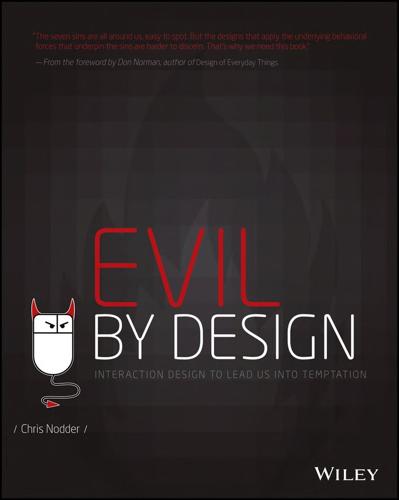
Evil by Design: Interaction Design to Lead Us Into Temptation
by
Chris Nodder
Published 4 Jun 2013
By showing you what you’ve already earned in your first session (bottom) they can encourage a sense of ownership that makes you more likely to register with the site, even though the badges have no real “value.” Sites that rely on user-generated content also need mechanisms for encouraging contributions. Question askers will come to a site that actively answers questions; the trick is to reward the answer providers. Reward comes in the form of “points” for answering questions. Yahoo! Answers is a crowdsourced knowledge base, which relies on user contributions to create both the questions and the answers. (answers.yahoo.com) Sites like Yahoo! Answers have found that the reward doesn’t even have to be financial. Some people will participate just for the status they achieve by providing the best answer to questions.
…
The game-like elements (tasks and scores) led to some individuals volunteering more than 100 hours of their time, with the top-ranked player completing almost 350,000 tasks over 395 hours. That’s the equivalent of 10 full-time work weeks spent identifying blurry Finnish words. All told, the game’s participants fixed more than 8 million words in under 2 years. Other online game-like applications use crowdsourcing to complete trivial tasks. Google until recently ran the Image Labeler application, which pitted two players against each other producing descriptive words for a picture. If both chose the same word, they would be awarded points based on the specificity of the word, and thus its suitability as an image label.
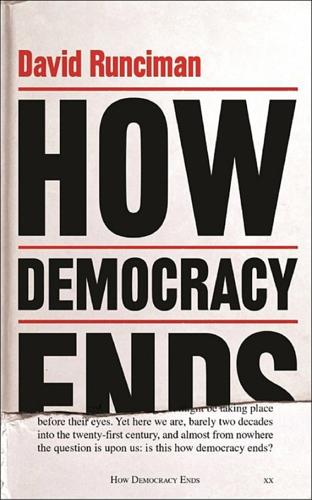
How Democracy Ends
by
David Runciman
Published 9 May 2018
In Iceland, following the catastrophic failures of the 2008 crash, voters were offered the chance to crowd-source a new constitution, and in Reykjavik citizens have been given control over the city budget through online votes. Something similar is underway in San Francisco, where participatory budgeting has been tried in a number of neighbourhoods. In Stockholm, online voting is used to help pre-determine what politicians get to decide. Spain, Australia and Argentina all have ‘Net’ parties, whose members use digital tools to decide on party policy. In Italy Beppe Grillo’s Five Star Movement crowd-sources many of its policies, for better or for worse.
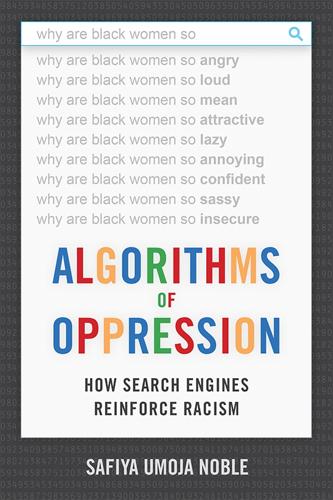
Algorithms of Oppression: How Search Engines Reinforce Racism
by
Safiya Umoja Noble
Published 8 Jan 2018
The URL for this disclaimer (now defunct) was www.google.com/explanation.html. 25. Senate Judiciary Committee, Subcommittee on Antitrust, Competition Policy and Consumer Rights, 2011. 26. See Elad Segev’s work on Google and global inequality (2010). 27. A good discussion of the ways that Google uses crowdsourcing as an unpaid labor pool for projects such as Google Image Labeler can be found in the blog Labortainment at http://labortainment.blogspot.com (last accessed June 20, 2012). 28. See the work of Cameron McCarthy, professor of education at the University of Illinois at Urbana-Champaign (1994). 29.
…
See also Library of Congress Subject Headings (LCSH) Coalition for Immigration Reform, Equality and DREAMers (CoFired), 135 Cohen, Nicole, 154 commercial influences, 16, 104 commercial interests, 32, 36, 157, 179; gaming the system, 40–41; influence on journalism, 154; transparency, 50, 104 ComputerWorld, 127 comScore Media Metrix consumer panel, 35, 53 ConsumerWatchdog.org, 56 copyright, 50, 120, 129 Crawford, Kate, 26 critical race theory, 6, 61, 136, 138, 143, 150 crowdsourcing, 188n27 Cyber Civil Rights Initiative, 120 Cyber Racism (Daniels), 116 cyberspace, 61–62; #Gamergate comments, 63; mirror of society, 90–91; social identity, 104–5 Damore, James, 2 Daniels, Jessie, 84, 108, 116, 172 Darnton, Robert, 157 Dartmouth College Freedom Budget, 134 data storage and archiving, 125–28 Davis, Jessica, 85 “A Declaration of the Independence of Cyberspace” (Barlow), 61 Department of Labor workforce data, 162 DeSantis, John, 134 Dewey Decimal Classification System, 24, 136; biases, 140 Diaz, Alejandro, 26, 42 Dickinson, Gregory M., 158–59 digital divide, 34, 56, 86, 160–61, 164, 188n21 digital footprint, 11, 187n9 digital media platforms, 5–6, 12–13, 30, 56, 148, 188n31 Dines, Gail, 101–2 distributed denial of service (DDOS), 112 Doctor, DePayne Middleton, 110 Dorsey, Joseph C., 93 Edelman, Benjamin, 44 Eisenhower, Dwight D., 190n64 employment practices: college engineering curricula, 70, 163; “pipeline issues,” 64–66; underemployment of Blacks, 80; underemployment of Black women, 69 Epstein, Robert, 52 European Commission, 157 European Court of Justice, 121 Everett, Anna, 107 Facebook, 3, 156, 158, 181; commercial content moderation, 58; content screening, 56; “diversity problems,” 65, 177; personal information, 120–21; search engine optimization, 54; underemployment of Black women, 69.
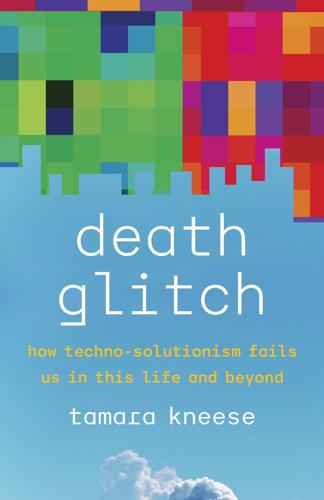
Death Glitch: How Techno-Solutionism Fails Us in This Life and Beyond
by
Tamara Kneese
Published 14 Aug 2023
Digital forms of surveillance relate to histories of chattel slavery, colonialism, and early techniques of policing and governmentality.55 Yet data are not reducible to their uses in structures of oppression: data are also metaphysical, relational objects.56 Data contain an existential quality, what the media theorist Amanda Lagerkvist calls “digital thrownness,” or gesture toward the mythological and the sublime.57 The metaphysical, speculative qualities of data imaginaries are essential to understanding how data-as-representation and data-as-infrastructure (supply chains, logistics, platformization) do not quite add up to an afterlife, even if there is a feeling or hope that they might.58 Data are ghostly, but the platforms and the data attached to them yield material effects.59 “The network society” refers to the sweeping impacts of information technology, which connects people and institutions from around the globe, altering power structures and cultural flows.60 Facebook, Twitter, Google, and other social media behemoths—largely based in the greater San Francisco Bay area—are part of a period in technoculture often referred to as Web 2.0, to distinguish these new corporate models from the supposedly static HTML-driven web before the twenty-first century.61 Popularized by the tech marketer and publisher Tim O’Reilly in 2004, the term “Web 2.0” emphasizes user-generated content, collaboration, and interaction on a dynamic web, made manifest in entities like Wikipedia, the perennial favorite example of crowdsourced knowledge production. Web 2.0 logics influenced the rise of platform capitalism and immaterial labor while influencing new modes of social organizing, perhaps even catalyzing revolutionary movements. At least that is one popular narrative.62 Some theorists associated the burgeoning social web with the productive power of networks and what they might build.
…
In their petition, Gig Workers Collective included the stories of gig workers who were murdered on the job, a frequent occurrence that points to the dangers of this kind of work: “With our occupational risks of death being higher than first responders, there is no doubt that we need the full host of occupational injury and death protections provided through workers’ compensation. When gig workers die at work we die without security, and often our families must rely on the generosity of strangers and crowdfunding to even cover funeral expenses.”34 The petition declared, “We need the security of guaranteed benefits, crowdsourcing is not a safety net. What happens when the death of a gig worker is not part of national headlines? What is the recourse for grieving families when they’re left to seek damages from some of the wealthiest and most resourced corporations in the nation?” Worker-led groups are pushing platforms to recognize their workers as employees, which also means caring for them and their families if they die on the job.

Designing Interfaces
by
Jenifer Tidwell
Published 15 Dec 2010
In the best of cases, the readers’ comments become interesting content in their own right. People talk to each other, debate each other, agree with each other, go off on tangents, and thus construct a conversational thread worth reading. Conceptually, this pattern has some overlap with the idea of “crowdsourcing” problem solutions. For instance, a blogger may ask her readers for answers to a factual question or for stories on how they solved a problem that she is facing. How Understand which topics might get your audience fired up. Ask them to share their opinions, guesses, and stories by posing questions.
…
You may already have an organizing principle for all that content (e.g., News Stream; see Chapter 2), but you also want readers to see what other readers found interesting. You have enough readers and sharers so that clear leaders can emerge among the content you publish. Why This is a way of crowdsourcing a “top 10 list” for your site. Metrics for sharing and emailing show what a readership likes—or at least what those readers think their own followers will like. If the readers have excellent taste, they’ll pull the best-quality pieces from your content; if not, they’ll at least find the wackiest or most dramatic ones.
…
page layout considerations, How to show relationships among page elements Right/Left Alignment pattern and, Why Contrasting Font Weights pattern, The Patterns, What, Examples, Examples controls, Lists of Items, Lists of Items, Lists of Items, Lists of Items, Lists of Items, Lists of Items, Text, Numbers, Numbers, Numbers, Dates or Times collecting text input, Text for constructing ordered lists, Lists of Items for constructing unordered lists, Lists of Items for dates and times, Dates or Times for entering numbers, Numbers, Numbers for entering subranges, Numbers for selecting many of N items, Lists of Items for selecting one of N items, Lists of Items, Lists of Items for selecting one of two options, Lists of Items Conversation Starters pattern, The Basics of Social Media, Examples Repost and Comment pattern and, Examples social media principles and, The Basics of Social Media Cooper, Alan, Why, How Cooper, Anderson, Examples coordinated views, defined, Why coplot, defined, Examples Copyblogger website, How Inverted Nano-pyramid pattern and, How Corner Treatments pattern, The Patterns about, The Patterns Cover Flow carousel, Examples Craigslist website, What, Examples crowdsourcing, Why, Why Crumlish, Christian, What This Chapter Does Not Cover Csikszentmihalyi, Mihaly, Incremental Construction CSS Zen Garden website, Making It Look Good: Visual Style and Aesthetics, Same Content, Different Styles, Same Content, Different Styles, Color, Typography, Spaciousness and Crowding, Angles and Curves, Texture and Rhythm, Images, Images, How angles and curves in, Angles and Curves color in visual design, Color Hairlines pattern and, How images in visual design, Images spaciousness and crowding in, Spaciousness and Crowding texture and rhythm in, Texture and Rhythm, Images typography in visual design, Typography visual style and, Making It Look Good: Visual Style and Aesthetics, Same Content, Different Styles, Same Content, Different Styles CulinaryCulture.com website, In other libraries cultural references in visual design, Cultural References D Dakine website, Examples Dashboard pattern, Why, In other libraries, Examples, In other libraries, In other libraries about, Why, In other libraries, Examples, In other libraries additional information, In other libraries Data Brushing pattern, The Patterns, The Patterns, Why about, The Patterns, The Patterns Dynamic Queries pattern and, Why data dimensions, Preattentive Variables: What’s Related to What?

The Ones We've Been Waiting For: How a New Generation of Leaders Will Transform America
by
Charlotte Alter
Published 18 Feb 2020
Social media didn’t exist in their early adolescence; now social media companies have the power to shape not only their personal lives, but their democracy. According to Walter Isaacson, one of the great chroniclers of the digital revolution, the transformation to a digital world included three big shifts: the rise of search engines (Google was founded in 1998), the rise of crowd-sourced collaboration (Wikipedia launched in 2001), and the transition to mobile (the iPhone was released in 2007). All three of these shifts happened right smack in the middle of the millennial adolescence. Most technological revolutions this massive don’t happen this fast. The telephone, for example, dates to the late nineteenth century and quickly became a popular luxury, but it was out of reach for millions until seventy-five years after it was invented.
…
Svante didn’t have a car and he didn’t need the prime parking space reserved for the mayor—so he turned it into a tiny park, where residents could come and sit on a bench and talk with him. He biked everywhere and stopped to talk to constituents whenever they flagged him down. He used Facebook to crowdsource public funding to bring back the Fourth of July fireworks. Like many other millennial mayors, Svante prioritized density: he wanted to make Ithaca more walkable and livable for people who didn’t have cars. To help do that, he’d have to revamp the Ithaca Commons, the three-block central plaza that was the locus of urban life.
…
W., 74 Bush, George W., 31, 53, 71, 75–76, 102 Buttigieg, Pete, xv, xxi, 3–8, 132, 142–45, 282–87 academic accomplishments of, 7–8 addresses Women’s March, 198 announces presidential candidacy, 287 black community and, 144–45 childhood of, 5–7 digital revolution and, 61–62 economic development initiatives of, 143–44 elected mayor of South Bend, 143 enlistment and service in military of, 73–77 essay on Bernie Sanders written by, 7–8 future of Democratic party and, 289–91 generational argument for presidential candidacy of, 284–85 at Harvard, 3–5, 8 marriage of, 146 as mayor of South Bend, 143–45 media appearances of, 283–84 moderate views and personality of, 285–86 Muslim travel ban protests and, 202 9/11 terrorist attacks and, 3–4 Ocasio-Cortez and, 290 personality of, 4–5, 6 policing and, 144 presidential campaign of, 284–87 sexuality of, 7, 145–46 on socialism, 218 technocratic solutions embraced by, 143 work on Obama 2008 presidential campaign, 85–86 BuzzFeed, 52 cancel culture, 37 capitalism, 213, 214–15, 216, 221 Carlson, Tucker, 222 Carr, Justin, 127 Carter, Lee, 223 Carter, Michael, 216–17, 220–21, 228 Casten, Sean, 241 Castile, Philandro, 121 cell phones, 55, 57 Chadwick, Sarah, 247 Chakrabarti, Saikat, 209, 222, 279–80, 281 Chetty, Raj, 137 child safety, 36–38 China, 47 Chrysler, 102, 103–4, 105 Churchill, Winston, 151 Cisneros, Gil, 270 Citizens United decision, 114 Civilian Conservation Corps, 217 civil rights movement, 29 The Class of ’74: Congress after Watergate and the Roots of Partisanship (Lawrence), 276 Clean Power Plan, 196 climate change, 31, 157–59 Crenshaw and, 254 Curbelo and, 157–58 Green New Deal and, 191, 273–75, 278–79 hurricane frequency and intensity and, 43 Intergovernmental Panel on Climate Change (IPCC) report on, 190 Paris Climate Agreement, United States withdrawal from, xvi, 158, 195, 258 Republicans and, 157–59 Stefanik and, 157–58 student protests and, 190–91 Sunrise Movement and, 189–90, 191 Thunberg speeches on, 190 Trump’s views on, 195–96 Climate Solutions Caucus, 157–59 Clinton, Bill, xvi, 27, 30–31, 106, 169, 249 balanced budget of, 31 crime bill of, 30–31 earned income tax credit and, 30 Clinton, Hillary, 86–87, 106, 166, 167, 169–70, 234–35 CNN, 172, 173, 175, 242 coaches, 51 Coakley, Martha, 107 Cobb, Jelani, 119 Cohen, Ben, 115 Cohen, Michael, 252, 261 Colbert, Stephen, 266, 284, 288 colleges/universities administrators hired by, increase in, 50–51 college process and, 47 cut in funding for public universities, 50 discrimination claims related to admissions criteria, 47–48 increase in number of students attending, 47–48 international student enrollment, 47 race as factor in admissions process, 48 reasons for increase in cost of, 50–51 student enrollment and, 50 student loan debt and, 44–52 Collins, Susan, 206–7 Columbine High School shooting, 27 communism, 213 Congress, 196–98 age of members, during Trump presidency, 196–97 freshman class of 2018, 265–81 out of touch with changes in American society, 196–98 2018 elections, 226–45 Watergate babies, 276 Consumer Financial Protection Board (CFPB), 194–95 Costello, Ryan, 264 Couric, Katie, 4, 53 Crazy Horse, 181 credit default swaps, 28–29 Crenshaw, Dan, xxi, 13–14 belief in War on Terror of, 66–67 campaign for and election to House of Representatives, 250–52 childhood of, 13–14 loses eye in IED blast on battle damage assessment (BDA) mission, 65–66 medals received by, 66 Navy SEAL career of, 63–66 9/11 terrorist attacks and, 13 on outrage culture, 252 on ROTC scholarship to Tufts University, 14 on Trump and Trump’s policies, 252–57 2012 presidential election and, 173–75, 177–78 Crenshaw, Kimberlé, 199 Crenshaw, Tara, 251 crime bill of 1994 (Violent Crime Control and Law Enforcement Act), 30–31 Crow, Jason, 270 crowd-sourced collaboration, 55 Crowley, Joe, 224, 226, 228, 229 Cruz, Ted, xviii, 147 Curbelo, Carlos, 155–57, 258 bipartisanship of, 161 climate change and, 157–58 defeated in reelection bid, 2018, 264 elected to House of Representatives, 155–56 immigration legislation sponsored by, 160 reelected to House of Representatives, 2016, 262 on Trump and Trump’s policies, 262–64 2012 presidential election and, 169 youth of, 156 DACA (Deferred Action for Childhood Arrivals program), 195, 263 Dakota Access Pipeline, 181–82 Davidson, Pete, 251, 253 Day Without Immigrants, 204 Dean, Howard, 82, 86, 90 Deferred Action for Childhood Arrivals (DACA) program, 195, 263 DeGroot, Jake, 117 democratic socialism.

The Hype Machine: How Social Media Disrupts Our Elections, Our Economy, and Our Health--And How We Must Adapt
by
Sinan Aral
Published 14 Sep 2020
So in 2011 she struck out on a different career path, forming a public relations and social media firm called Lidingo Holdings, specializing in investor relations and promotional research for public companies, including many biopharmaceutical firms. In fact, as alleged in a 2014 SEC complaint, Lidingo was a fake news factory engaged in “pump and dump” stock promotion schemes that posted fake articles to crowdsourced investor intelligence websites like Seeking Alpha, The Street, Yahoo! Finance, Forbes, and Investing.com, for the express purpose of moving stock prices. Writers employed by Lidingo created pseudonyms, like the Swiss Trader, Amy Baldwin, and the Trading Maven; claimed to have MBAs and degrees in physics; and wrote fake stories praising the growth or stability of the companies they were paid to promote.
…
And it is a key driver of the competitive forces shaping the Hype Machine, including, for example, why Facebook succeeded where MySpace failed. How Facebook Beat MySpace In June 2011, I spoke at the NextWork conference, organized by Wired and The Economist, in New York City. I was sandwiched in the program between the actor Ed Norton, who was talking about his new crowdsourcing platform for philanthropy fundraising called CrowdRise, and Jared Cohen, former adviser to Secretary of State Hillary Clinton and current CEO of Google’s Jigsaw (a technology incubator dedicated to countering extremism, censorship, and cyberattacks online), who was talking about how technology empowers revolutions in the Middle East.
…
This is how social science starts—it’s sparked by everyday puzzles that evolve into investigations of how and why things happen. Lev, Sean, and I took this nagging question about herd behavior and embarked on a research project to uncover the truth about population-scale opinion dynamics in the crowd. Did current ratings affect future ratings? If so, what did this mean for bias in crowdsourced opinions online? Finding a correlation between current ratings and future ratings wouldn’t tell us much, because correlations in past and future ratings could just be driven by quality. High-quality restaurants (or shoes or hotels) will get high current ratings and high future ratings, while low-quality restaurants will get low ratings today and low ratings tomorrow.
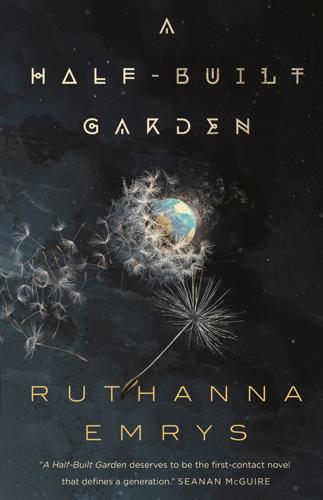
A Half-Built Garden
by
Ruthanna Emrys
Published 25 Jul 2022
Through the glass, the faintest edge of chill would seep against his fingers. “Are they going to make us? We’re just starting to get things right.” It was the refrain of our generation, particularly personal for Athëo. And what would my parents think, who’d helped place the first illicit sensors in the Potomac and barricaded factories to enforce the first crowdsourced decisions of the nascent Dandelion Revolution? “Maybe they can make your parents leave the planet,” I suggested to Athëo. I cautiously wrapped my arm around his waist, still unused to touching him, and stretched my fingers beside his on the glass. “I have no idea what they’ll do. I don’t think they have any idea.
…
With people who’d each preserved a sliver of those early dreams, and could bring them together to resurrect the whole. “All right,” she said. Warnings and protections could come later, another barrier to be overcome by their shared vision. She knew what she valued. “Let’s give it a try.” * * * Algorithms and crowdsourced threading were all very well for mass-scale problem-solving and management. For organizing a household, though—even a big one—everything still came down to a weekly meeting. Over the summer we’d held it half the time on the Solar Flare, sprawled on the moss or perched in branches; this week we were back at what I still thought of as home, around the now-expanded dining room table.
…
The weather and coastlines of 2083 are—roughly—based on optimistic scenarios involving a steep drop in carbon emissions over the next few years, which models will probably be at least somewhat outdated by the time this comes out. Judy’s tools are descended from current work on sensory substitution and portable sensors. The dandelion networks grew from many happy hours enmeshed with the DC citizen science and crowdsourcing community. Most of the foundational technology exists except for the neural interface and the algorithms that treat human values as features rather than bugs: someone get on that, please. Thanks are due for useful conversations and ideas to Henry Farrell, Kevin Kuhn, Marissa Lingen, Malka Older, Ada Palmer, Denice Shaw, Ruth and Lila Wejksnora-Garrot, and Jo Walton, and doubtless many others whose names I’ve neglected to record properly to my mesh.
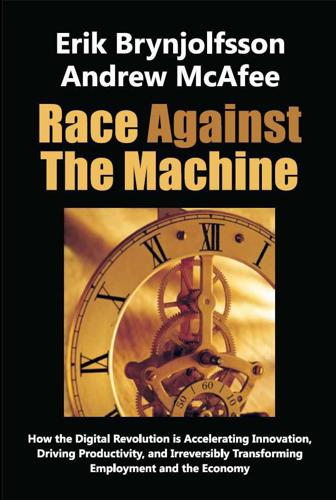
Race Against the Machine: How the Digital Revolution Is Accelerating Innovation, Driving Productivity, and Irreversibly Transforming Employment and the Economy
by
Erik Brynjolfsson
Published 23 Jan 2012
Tying health care and other mandated benefits to jobs makes it harder for people to move to new jobs or to quit and start new businesses. For instance, many a potential entrepreneur has been blocked by the need to maintain health insurance. Denmark and the Netherlands have led the way here. 15. Don’t rush to regulate new network businesses. Some observers feel that “crowdsourcing” businesses like Amazon’s Mechanical Turk exploit their members, who should therefore be better protected. However, especially in this early, experimental period, the developers of these innovative platforms should be given maximum freedom to innovate and experiment, and their members’ freely made decisions to participate should be honored, not overturned. 16.
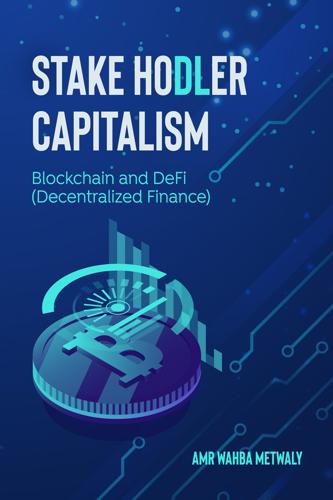
Stake Hodler Capitalism: Blockchain and DeFi
by
Amr Hazem Wahba Metwaly
Published 21 Mar 2021
DeFi payment solutions build a more free economic system for the underbanked and unbanked populace and help big financial institutions streamlining market infrastructure and serve better wholesale and retail customers. Prediction markets Blockchain-based prediction markets impede the crowd's reasoning and help users vote and exchange value on the result of events. Market prices then become crowdsourced pointers of the odds of an event. An example of a popular DeFi betting platform is Augur; it accentuates prediction markets based on election results, economic events, sports games, to mention but a few. Saving Many DeFi apps offer interest-bearing accounts, which can be exponentially more than the conventional savings accounts type based on a dynamic interest rate linked to supply and demand when sealed into lending pool policies like Compound.
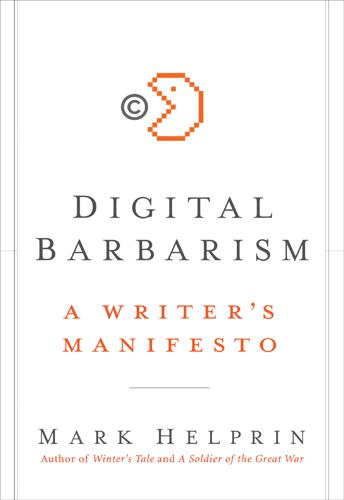
Digital Barbarism: A Writer's Manifesto
by
Mark Helprin
Published 19 Apr 2009
As in the worst of medieval scholasticism, they dare not venture beyond the rim of received authority lest they fall off the edge of the earth. To help those who cannot face the terror of doing something independently, the electronic age has provided WEbook,™ which, according to the Washington Post, “by adopting the growing crowd-sourcing model [“Crowd-sourcing” was invented by sheep.]…hopes to help frustrated writers realize their potential…. Members can help one another overcome writer’s block” (if you have writer’s block you should heed it as you would heed a cobra), and the company has an employee who (Tolstoy would have appreciated this) “makes the final call in disagreements between writers or helps moderate brainstorming sessions.”103 Such stunning mental dependency was often evident in the voluminous reaction to my single editorial piece, and may have been inspired there from the top down, by the leader of the movement, Lawrence Lessig, who is also and not coincidentally a passionate advocate of “remix,” or, in my terminology, Legos.™ Taking a work that someone else has made, chopping it up, and rearranging it, perhaps adding or subtracting elements according to whim, is a favored “art” form of a generation weaned on push-button alternate endings and Microsoft’s “cut and paste.”

The Wikipedia Revolution: How a Bunch of Nobodies Created the World's Greatest Encyclopedia
by
Andrew Lih
Published 5 Jul 2010
That has meant legions of volunteers act like street sweepers, constantly monitoring entries for bias. The story of Wikipedia has inspired businesses, governments, and academics to reevaluate accepted truths about producing works of knowledge. Credentials and central control, once considered the most important parameters for generating quality content, now yield to new terms: crowdsourcing, peer production, and open source intelligence. What was once only done top-down is now being viewed bottom-up. Books and essays have addressed the impact of projects freely driven by communities of scattered individuals: The Cathedral and the Bazaar by Eric S. Raymond, The Wisdom of Crowds by James Surowiecki, The Wealth of Networks by Yochai Benkler, The Long Tail by Chris Anderson, Infotopia by Cass R.
…
Even those not into software knew that the upstart Linux operating system, written by a distributed set of volunteers around the world, was posing a serious challenge to corporate-developed software like Microsoft’s. “The Cathedral and the Bazaar” was a description of that dynamic, and the essay directly influenced online communities and future thinking about effective, so-called crowdsourcing. Problem was, it was directly counter to Sanger’s belief in a strong authority. Raymond felt that Linus Torvalds’s letting go of top-down authority ultimately gave him the moral authority to do more things within the Linux project, with more people, without using a heavy hand: Linus, by successfully positioning himself as the gatekeeper of a project in which the development is mostly done by others, and nurturing interest in the project until it became self-sustaining, has shown an acute grasp of Kropotkin’s “principle of shared understanding.”
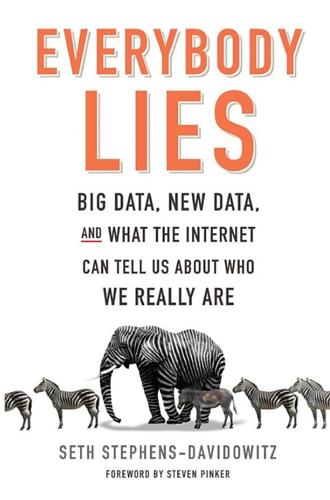
Everybody Lies: Big Data, New Data, and What the Internet Can Tell Us About Who We Really Are
by
Seth Stephens-Davidowitz
Published 8 May 2017
For example, the New York Times, if it mentioned Bill Clinton, might allow readers who clicked on his name to be sent to the White House’s official website. Every website creating one of these links was, in a sense, giving its opinion of the best information on Bill Clinton. Brin and Page could aggregate all these opinions on every topic. It could crowdsource the opinions of the New York Times, millions of Listservs, hundreds of bloggers, and everyone else on the internet. If a whole slew of people thought that the most important link for “Bill Clinton” was his official website, this was probably the website that most people searching for “Bill Clinton” would want to see.
…
Also see Marcelle Chauvet, Stuart Gabriel, and Chandler Lutz, “Mortgage Default Risk: New Evidence from Internet Search Queries,” Journal of Urban Economics 96 (2016). 60 Bill Clinton: Sergey Brin and Larry Page, “The Anatomy of a Large-Scale Hypertextual Web Search Engine,” Seventh International World-Wide Web Conference, April 14–18, 1998, Brisbane, Australia. 61 porn sites: John Battelle, The Search: How Google and Its Rivals Rewrote the Rules of Business and Transformed Our Culture (New York: Penguin, 2005). 61 crowdsource the opinions: A good discussion of this can be found in Steven Levy, In the Plex: How Google Thinks, Works, and Shapes Our Lives (New York: Simon & Schuster, 2011). 64 “Sell your house”: This quote was also included in Joe Drape, “Ahmed Zayat’s Journey: Bankruptcy and Big Bets,” New York Times, June 5, 2015, A1.
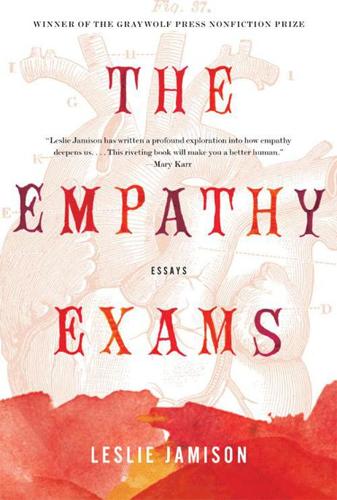
The Empathy Exams: Essays
by
Leslie Jamison
Published 30 Mar 2014
It seems likely that for all her wound has given her—perspective, the grit of survival, an insightful meditation on beauty—Grealy would still trade back these wound boons for a pretty face. This confession of willingness is her greatest gift of honesty, not arguing that beauty was more important than profundity, just admitting that she might have chosen it—that beauty was more difficult to live without. Interlude: Outward When I started writing this essay, I decided to crowdsource. I wrote a message to some of my favorite women asking them to tell me about their thoughts on female pain. “Please don’t not-respond,” I wrote; “it would make me feel totally alone in my obsession with gendered woundedness.” They responded. “Perhaps too obvious,” wrote a friend in divinity school, “but the fall?”
…
Cioran once dubbed Jamison’s rare and beautiful mode “thinking against oneself,” and her formal embodiments of her self-suspicion are as dazzling as tough-minded—her casually bravura recital of a random street attack via Propp’s Morphology of the Folktale, the infinite regressions of her medical acting, where “Leslie Jamison” is another case study, the collage and crowdsourcing of her “Grand Unified Theory of Female Pain,” and the contrapuntal staccato inside her lyricism. “I kept running into an opacity at the core of bodily experience,” she says, “a resistance to language, an empty center: how can pain mean? … The essays in this book were memoir until they couldn’t stand to be memoir anymore.”
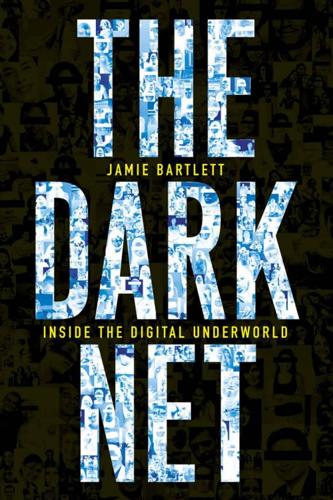
The Dark Net
by
Jamie Bartlett
Published 20 Aug 2014
But here’s the ruse: if enough people were sufficiently angry with a particular individual – each anonymously contributing just a few dollars – the prize pool would become so large that someone would be incentivised to make a prediction and then fulfil it themselves in order to take the pot. This is where encrypted messages and untraceable payment systems come in. A crowd-sourced – and untraceable – murder would unfold as follows. First, the would-be assassin sends his prediction in an encrypted message that can be opened only by a digital code known to the person who sent it. He then makes the kill and sends the organisation that code, which would unlock his (correct) prediction.
…
It’s typically twenty or so people being walked through the basics of online security by volunteer experts, free to attend and often held in someone’s home, at a university, or even a pub. Wolf’s tweet sparked a global, grass-roots movement.fn4 There is even a free crypto-party handbook, which was crowdsourced in less than twenty-four hours by activists all over the world, and continues to be publicly edited and updated. Shortly after the Snowden revelations, a group of privacy activists held a very large crypto-party on the campus of Goldsmiths, University of London. I joined around two hundred people, all of whom wanted to learn how to stay anonymous online.
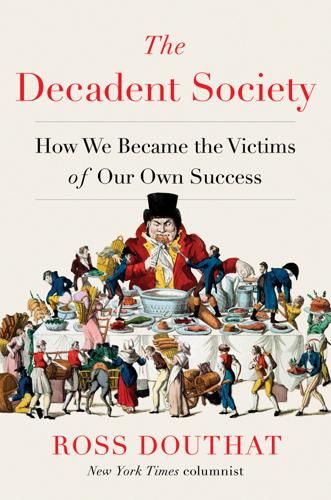
The Decadent Society: How We Became the Victims of Our Own Success
by
Ross Douthat
Published 25 Feb 2020
Just as online video mostly spreads smut rather than nurturing auteurs, in overthrowing the centrist staleness of the old media, the Internet has mostly given us a bumper crop of hackish crap, of political pornography for the partisan mind, of news coverage whose problem isn’t its fakeness so much as its crushing mediocrity. Even the true marvels of Internet culture have this problem. Nothing like Wikipedia would have been possible in 1910 or 1950. Its crowdsourced capaciousness is a miracle, and I delve into its pages for some reason or another practically every day. But it is still a consolidated product, a cultural monopoly, the only online reference of its scale and reach. There were three different old encyclopedias kicking around my parents’ home, and a bookshelf full of history books whose information was harder to “access” than Wikipedia entries but far more detailed and diverse in the perspectives it presented.
…
One example: 2030: The last of the unsustainable energy and fiscal policy edifices crumbles just as embedded intelligence emerges. We’ve got the wind in our sails. Billions of people rapidly move from wage slaves to participating in a decentralized, sustainable, opt-in economy which affords them the time to innovate and crowdsource a tsunami of solutions. 2060: Biodiversity blossoms. Consciousness comes under direct control. You can physically live on Mars, Antarctica, New Atlantis, or in the asteroid belt. Many choose life in distributed mind servers and live centuries in a week. 2090: Boredom unthinkable. Conscious population: 1020.
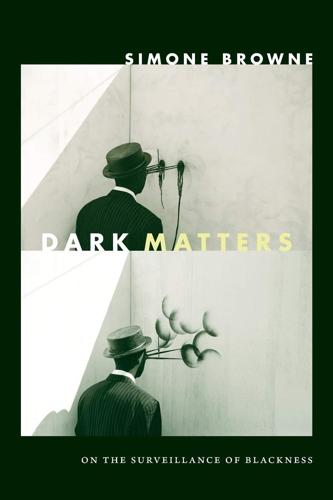
Dark Matters: On the Surveillance of Blackness
by
Simone Browne
Published 1 Oct 2015
Surveillance is understood here as meaning “oversight,” with the French prefix sur- meaning “from above” and the root word -veillance deriving from the French verb veiller and taken to mean observing or watching. The root word -veillance is differently applied and invoked, for example, with the terms “überveillance” (often defined as electronic surveillance by way of radio-frequency identification or other devices embedded in the living body), “redditveillance” (the crowdsourcing of surveillance through publicly accessible CCTV feeds, photographs uploaded to online image sharing platforms such as Flickr, and online discussion forums, such as Reddit and 4chan), and “dataveillance,” to name a few.51 Lyon has outlined the “potency of dataveillance” in a surveillance society, which, he writes, is marked by “a range of personal data systems, connected by telecommunications networks, with a consistent identification scheme.”52 The prefix data- signals that such observing is done through data collection as a way of managing or governing a certain population, for example, through the use of bar-coded customer loyalty cards at point of sale for discounted purchases while also collecting aggregate data on loyalty cardholders, or vehicles equipped with transponders that signal their entry and exit on pay-per-use highways and roads, often replacing toll booths.
…
On April 22, 2013, Reddit general manager Erik Martin released an apology for the site’s role in what he termed the “online witch hunts and dangerous speculation” that occurred during the aftermath of the Boston Marathon bombing where users of the site (“Redditors”) incorrectly identified suspects using the /r/findbostonbombers subreddit page, a dedicated Google Doc, photographs uploaded to Flikr, and other crowdsourced information. See “Reflections on the Recent Boston Crisis,” Blog. Reddit, April 22, 2013, accessed February 1, 2015, http://www.redditblog.com/2013/04/reflections-on-recent-boston-crisis.html. 52. Lyon, The Electronic Eye, 48. 53. Steven Poole and Anna Hart, “Beyond Selfies and Twerking . . . the Words That Really Mattered in 2013,” Guardian, December 29, 2013, http://www.theguardian.com/lifeandstyle/2013/dec/29/selfies-twerking-words-really-mattered-2013. 54.
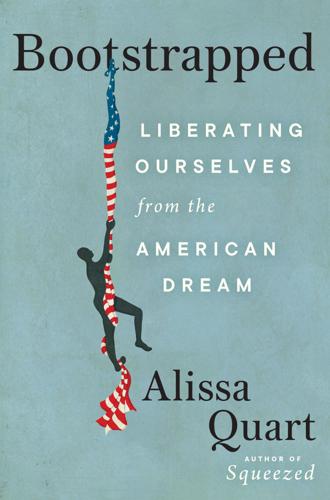
Bootstrapped: Liberating Ourselves From the American Dream
by
Alissa Quart
Published 14 Mar 2023
Yet despite the disparities that are built-in in our country, from a young age Americans are taught to blur out the disadvantages that our social differences have created and attribute success to the inherent better character of the winners and then call the whole thing a meritocracy. That’s even though our country has shifted the burden of our survival almost entirely onto their backs, preferring the half solutions of big philanthropies or charity such as crowdsourcing efforts like GoFundMe—not a social service provider!—to offering permanent public childcare or a supported health-care system. The happy news, though, is that our country is large enough to contain rival and antithetical tendencies. As much as individualism dominates, millions in this country have also pushed against the singular and toward its opposite coming together in cooperatives, collectives, and mutual aid societies.
…
At the height of the pandemic and its supply chain ruptures, the national Get Us PPE solicited donations of masks and other medical necessities and distributed them to hospitals. That local Chicago branch was mostly composed of medical students—some five hundred strong at any given time since it started with roughly two hundred people. Pendergrast was a first-year student at the Feinberg School of Medicine at Northwestern University when we spoke. She helped crowdsource donations. With the money, her chapter bought coverings that protect the top of health-care workers’ heads from infectious particles as well as N95-equivalent respirator masks. It all took a substantial effort partly due to the astronomical so-called COVID surcharge of paying for shipping to get the masks from China to the United States—$13,000 over what it would normally cost to fly the masks to the United States, because her group didn’t want to wait the several months for masks to get here by sea.
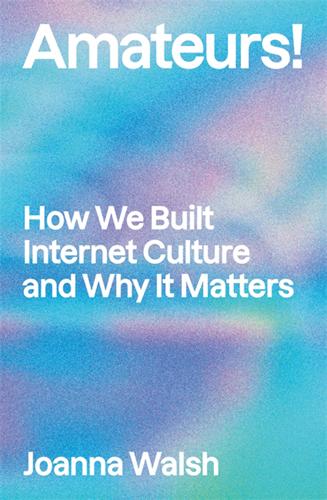
Amateurs!: How We Built Internet Culture and Why It Matters
by
Joanna Walsh
Published 22 Sep 2025
Users apply public tags to online items, developing a folk taxonomy with no dictating ethos, depending on a build-up of similar tags. This group or collaborative tagging involves something called ‘radical trust’, a faith in the good faith (and expertise) of users, which was used to build – and continues to maintain – crowd-sourced websites, including IMDb and Wikipedia. On large-scale amateur-tagged sites, facts can be checked, moderated and corrected. On Aesthetics Wiki, something more nebulous is at stake: aesthetic judgement. Aesthetics Wikis are scrapbooked communally. The standards of aesthetic quality are no longer how individual a work is, but how refined it is by the group.
…
As the French philosopher Bernard Stiegler, who has written extensively on amateurism, points out, the art object always ‘accompanies, therefore, the question of the formation of a critical public’.10 The lively, active audiences of comments boxes and forums have all the factors of Lauren Berlant’s ‘intimate publics’: fan groups created around (often commercial) cultural products (in Berlant’s Female Complaint this is twentieth-century ‘women’s literature’), creating ‘juxtapolitical’ spaces, venues for what Jacques Rancière called dissensus: the creation of politics via dialectics, a.k.a. liking, trolling, shitposting . . . But, as aesthetic judgement has become labour, this amateur work is increasingly extractive, blurring the distinction between the truly amateur and what constitutes a job. Musk’s X relies, ironically, on amateurs, since he replaced its content-moderation team with an in-house crowd-sourced fact-checking system, Community Notes, which consists of untrained volunteers. This may look like the ‘radical trust’ of user-built sites like IMDb and Wikipedia but on a monetised platform it has a slightly different flavour. In 2023, Google cancelled its contract with the Australian search quality-control company Appen after its workers staged a protest against ‘poverty wages’.11 If these actions threaten the presence of quality factual information online, what about the presence of quality fiction?
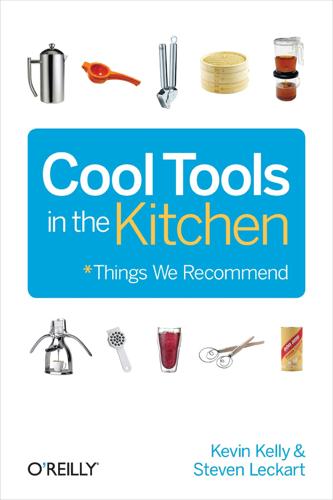
Cool Tools in the Kitchen
by
Kevin Kelly
and
Steven Leckart
Published 1 Dec 2011
Features are fairly minimal, with a video section still under development, but I do like the simplicity of the site. Site registration allows you to save and comment on recipes. Although Cookstr only has a few recipes from each chef, it’s the closest thing to a massively cross-cook[book] database I’ve found. I hope it grows. I learned about Food52 when the New York Times ran a round-up of new, crowd-sourced food sites. The hook of this site, founded by two food writers, is that every week there’s a theme-based competition; after a year of these contests, the winning recipes will be collected in a book. Any registered user can compete in the competitions, the founders select finalists and post slideshows of them testing the recipes, and then users vote for a winner.
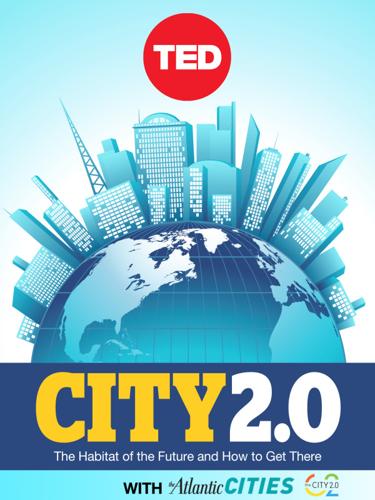
City 2.0: The Habitat of the Future and How to Get There
by
Ted Books
Published 20 Feb 2013
Once the app is running, the driver does nothing. The phone is the one paying attention, mapping the location of likely potholes and road bumps, and sharing that data with the city. Algorithms weed out non-pothole disturbances, such as railroad tracks and manhole covers, and identify legitimate road damage that needs fixing. Using this crowdsourced data pool, the city is able to prioritize its road maintenance and make inexpensive repairs of minor problems before they become big costly ones. Fabio Carrera, one of the developers behind Street Bump, calls this a quid pro quo relationship: “Nobody’s going to use these apps unless they get something out of it.”
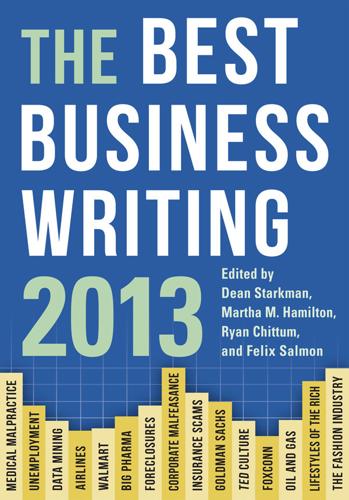
The Best Business Writing 2013
by
Dean Starkman
Published 1 Jan 2013
An attendee recalls everyone laughing uproariously. In August of this year, Turner Broadcasting announced it was quite willing to put its logo next to Bleacher Report’s, scooping up the website for a purported $200 million. Bleacher Report has joined the Huffington Post in the exclusive club of Web properties converting free, crowd-sourced content into nine-digit paydays. The transaction was not just a valuation, but a validation. “Information has become more important than the source of information,” says Michael Hall, director of new media for the New England Sports Network. In today’s world, information is money—and few move information faster or more efficiently than Bleacher Report and its roughly 6,000 contributors.
…
“So, ultimately, what’s their biggest differentiator? Free content!” Bleacher Report’s volunteer army generates scads of material—and the money the site doesn’t spend on writers is spent to move the company where it wants to go. It couldn’t get there, however, without addressing the pitfalls of crowdsourcing and lowest-common-denominator crap Kaufman mentioned to Google. So, in the last two years, the site has worked to rehabilitate its image: Would-be writers must gain admittance via a process that rejects seventeen out of every twenty applicants. Lead writers and knowledgeable featured columnists have been added to the roster, and many of the site’s early contributors have been bounced.
…
“By expanding their set of assets, it allows Turner to go after things, and, perhaps, successfully obtain things they couldn’t otherwise,” says Ed Desser, president of Desser Sports Media. Before this deal, Desser continues, Bleacher Report was “just another aggregator of customer-created content.” But now? The wave of the future. No media outlet can ignore the allures of crowdsourcing—or dismiss out of hand the rewards of reverse-engineering content. “There was a time when the traditional media viewed new media as not up to their standards. But that time has passed,” Desser notes. “Tastes change. Look at TV. Think about how much stuff would never have been on thirty years ago: vulgar language, sexual situations, eating bugs.

Connectography: Mapping the Future of Global Civilization
by
Parag Khanna
Published 18 Apr 2016
In the 1980s, GPS technology firms began painstakingly driving and geo-coding roads all over the world, building up databases for the suites of navigational tools that are now in almost every new car’s dashboard. Google soon joined the fray, adding more satellite imagery and street views. Today every individual can become a digital cartographer: Maps have gone from Britannica to Wiki. OpenStreetMap, for example, crowdsources street views from millions of members who can also tag and label any structure, infusing local knowledge and essential insight for everything from simple commuting to delivering supplies during humanitarian disasters.*1 We can now even insert updated imagery from Planet Labs’ two dozen shoe-box-size satellites into 3-D maps and fly through the natural or urban environment.
…
Even as traditional productivity metrics still fail to capture all the benefits created by such connectivity, innovation itself very much depends on it. Digital supply chains are now dispersed by design, with companies (both those fixed in one place and those operating distributed workforces) seeking to engineer serendipity among colleagues through shared work spaces and online tools that allow for constant crowdsourcing among people who have never met. Data forensics reveals how coders from diffuse geographies swarm to collaborate on projects and build partnerships that last across diverse gigs. The rapid emergence of a competitive global digital labor market is, however, a double-edged sword for the average Western consumer-worker.
…
NORSE ATTACK MAP http://map.norsecorp.com/ Norse, a cyber-threat analysis firm, provides real-time visualizations of global cyber war based on data collected every second from Internet and Dark Web sources, plotting origins of attackers and target attacks. OPENSTREETMAP https://www.openstreetmap.org/ OpenStreetMap is a crowdsourced mapping platform maintained by a user community that constantly updates data on transportation networks, store locations, and myriad other content generated and verified through aerial imagery, GPS devices, and other tools. PLANET LABS https://www.planet.com/ Planet Labs uses a network of low-orbit satellites to capture the most current images of the entire earth and form composite digital renderings that can be used for commercial or humanitarian applications.
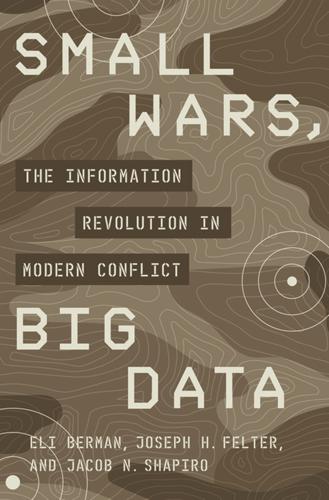
Small Wars, Big Data: The Information Revolution in Modern Conflict
by
Eli Berman
,
Joseph H. Felter
,
Jacob N. Shapiro
and
Vestal Mcintyre
Published 12 May 2018
While the Iraqi insurgency was largely decentralized, with subgroups vying for political and social influence, the Taliban were (and remain) more centralized and coordinated—a structure that allowed them to engage in sophisticated information operations. For instance, recall the tactics the two insurgencies used to combat tip sharing. In Iraq, when the government advertised a hotline for anonymous tips, insurgents had an ad hoc, crowd-sourced response: men called in insults and death threats, while women called to flirt with the operators and waste their time. In Afghanistan, the insurgency took a different and more sophisticated approach to prevent villagers from calling in tips. The Taliban used its power to force mobile companies to turn off cell-phone towers at night so that tips could not be called in while insurgents were moving about.
…
These reductions in fraud came at low cost: the authors’ intervention reached 471 polling centers for just over $100,000. In contrast, the largest foreign mission during the same election reached just 85 polling centers for $10 million.39 Mike and James interpret their findings as evidence that cheap, crowd-sourced, information-based interventions may be able to quickly cut fraud and improve the functioning of elections in weak states.40 These are encouraging results, but for our purposes we are interested in what happened next. Did those gains in transparency and accountability influence civilian attitudes?
…
By tracking down and releasing data, ESOC effectively absorbs the fixed costs of microlevel work, enabling more talented graduate students and faculty to apply themselves to the hard theoretical and empirical problems of figuring out how to help countries emerge from conflict and move toward stability. As a result, the government and military get better information to use in making their decisions. To borrow a favorite adjective, ESOC can activate the asymmetric advantage the West has in research capacity by using transparency and openness to effectively crowd-source research on some of the world’s most pressing security challenges.42 The synergy possible when you straddle these worlds is vividly illustrated by the way Jake and his coauthors acquired the data on the rollout of Iraq’s cell-phone network, which we discussed in chapter 4. Recall that some initial conversations led to data sharing in early 2010 by Zain Iraq, that country’s largest mobile service provider.
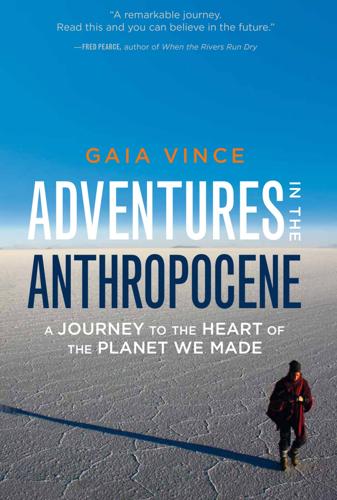
Adventures in the Anthropocene: A Journey to the Heart of the Planet We Made
by
Gaia Vince
Published 19 Oct 2014
The human network is key to next-generation smart cities, to reducing energy consumption and more effective use of the city in all ways. Crowd-sourcing and collaborative mapping are two such techniques that over the past few years have revolutionised information creation on the Internet without the need for massive infrastructure projects to plant sensors across cities. For example, data points on Google Maps are built by a large network of hundreds of millions of anonymous phone-users whose devices continually send GPS-based status-updates. In the case of its traffic app, this reveals how the traffic is flowing or stationary in the city. In Dublin, the crowd-sourced data app ParkYa finds the nearest free parking spots for drivers.
…
INDEX AAHH see Lima Abu Dhabi 209, 366 ADAPTA 291, 292–3 Afghanistan 29, 37, 59 Africa 2, 138, 147 agriculture 134–6, 138, see also Uganda drought 118, 121, 122–3, 195–6, 215 land-acquisition by foreign investors 102–3, 123–4 mobile phones 28, 29 solar energy 211–12 tree-planting 129 water-harvesting and storage projects 121–2 see also specific countries and towns Agona, Ambrose 122 agriculture/farming 3, 7, 38, 106–9, 148–9, 257, 338 in Africa 134–6, 138, see also Uganda commodities speculation 124 ‘conservation’ agriculture 133 female workforce 120–21 in India 49–50, 51, 57, 58–9, 61, 113, 114 ‘no till’ agriculture 142 organic farming 133–4 see also irrigation and specific crops air conditioning 10, 172, 374, 375 air pollution 3, 34–9, 51, 65, 66, 251, 327, 330, 368 aircraft wings 317 albatrosses 186, 187 alcoholism in indigenous peoples 227, 234 algae 16, 84, 143, 146, 148, 309, 334 coral species 165, 167 toxic 84, 133, 187 Alliance for Green Revolution 120, 138 Almería, Spain: greenhouses 65 alpaca farming 62 aluminium 304, 316, 324 Amazon rainforest 264, 266, 270–72, 284, 286 animal trafficking 267, 274, 275, 276 birds 266, 268, 270, 271–2, 278–9, 280–81 and drought 284–5 gold mining 268, 269, 273, 277, 279, 283, 284, 288 hydrodams 278, 280, 282 indigenous people 266, 268, 269, 270, 272, 275, 277, 279, 280 logging see logging mapping of 288 oil exploration 277, 280, 284 road building 277, 281–4 urbanisation 378 see also deforestation; Madidi National Park; Madre de Dios region Amazon River 71, 83, 266, 283 fish 283, 291--3 Amesti, Sergio de 83 Amigos Dos Amigos gang 356 amphibians 239, 265 see also frogs Andaman Islanders 279 Anderson, Ray 319 Andes, the 47, 52, 62–4, 217, 265, 269, 334 Angkor Wat, Cambodia 99 animals 12, 47, 71, 148, 198, 199–200, 377 domestication 4, 107, 250–51, see cattle; livestock and extinction 4, 9, 222–3, 237, 238–40, 242, 243, 244, 256–7 illegal trade 245–6, 267, 273, 274, 275, 276 see also specific animals Annamite mountains, Laos 94 Antarctica 46, 73, 177, 178, 215 anteaters 240 antelopes 198, 221, 233, 237 see also dik-diks Anthropocene epoch 4–5, 7–13 ants 91, 279 Apple 313, 314 aquifers 111, 112, 115, 203, 215 for carbon dioxide storage 330–31 Arab revolutions 28–9, 124, 368 Arabian Desert 103, 104, 107 Aral Sea 72 arapaima (fish) 71 Arcibia, Simon 306 Arctic, the 5, 9, 37, 152, 177–83, 293 Arctic Ocean 178–82, 308 Argentina 60, 86 Ariel, Yotam 212 Arizona Desert: solar photovoltaic panels 212 Armstrong, Neil 334 Armstrong, Rachel 167–8 arowana (fish) 71 Ascension island 285–6 Asner, Greg 288, 289 asteroids 2, 5, 298, 300 Aswan Dam, Egypt 79 Atacama Desert, Chile 76, 108, 212, 308 fog harvesting 219 Athabasca oil sands, Canada 4 atmosphere, the 15–18, 46, 22, 42–4 artificially cooling 64–9 ‘Atmospheric Brown Cloud’ see ‘brown cloud’ Audubon Center for Research of Endangered Species, New Orleans 259–60 aurochs 236, 250 Australia 27, 37, 102, 128, 175, 363 climate change experiments 66, 293 Great Barrier Reef 169 irrigation 219 marine reserve 186 wildlife 237, 250, 256, 258 Aysén, Chile 75, 81, 83 Azeez, Abdul 169 baboons 226 Babylon 339 Bachelet, Michelle, President of Chile 87 badgers 241 Baker River, Patagonia 73–4, 83 proposed dams 74, 84, 86 bald eagle 256 Baltistan, Pakistan: ‘glacier grafting’ 59–60 Bangalore, India 116–18 Bangladesh 128, 161, 163, 175, 343 Bantu tribe 238 baobab trees 226 Barcelona: Media-TIC building 374–5 Bardia National Park, Nepal 243–4 barley 7, 23, 49, 51, 61, 143 Barnosky, Anthony 238, 239, 249 basalt rock cliffs 296 batteries 211, 212, 332, 335, 336, 365, 373 BBVA (bank) 87 bears 182, 270 polar bears 178, 187 beehive fences, Kenyan 242 bees 199–200, 226, 242, 243, 264 Beijing 35, 321, 373 Belo Monte Dam, Pará, Brazil 83, 278 Beni, Nepal 21 Beni River, Bolivia 266, 278, 283 Bennu Solar (company) 212 Berlin: rooftop fish farms 376 Better Place 373 Bhola Island, Bangladesh 174 bicycles 114, 310–11, 373, 378 biodigesters 41, 129 biodiversity 43, 83, 88, 134, 186, 254, 255, 264, 278–9 lack/loss of 10, 123, 127, 138, 152, 235, 236, 247, 248, 249–50, 252, 256, 258, 265, 321 restoring 258, 277, 278, 375 biofuels 41, 134, 144–6, 147, 332 biomass 250, 251, 272, 288, 305 bioplastics 326 birds 71, 79, 104, 148, 199–200, 209, 226 Amazon rainforest 268, 270, 271–2, 278–9, 280–81 bison, American 236, 237, 251, 256 blackberries 253, 255 Bluepeace (environmental organisation) 162 Bodélé depression, Chad 272 Bogotá, Colombia 370, 372 Bolivia 108, 240 silver mining 300–6 Uyuni salt flats (salar)/lithium mining 332–7 Borana tribe 194–5 boreholes 111, 112, 117, 122, 215, 234 Borneo: rainforest 264, 276–7 Bosch, Carl 108 Boswellia trees 202 botfly 274 Botswana 125, 305 San people 232–3, 234–5 Bowman, David 258 Brahmaputra River 53 Branson, Richard 247, 256 Brazil 34, 83, 102, 240, 241, 290 agriculture 140, 142 favelas (slums) 354–8 see also Amazon Basin; Amazon River Brilliant, Larry 44 Britain 17, 30, 116, 157, 208, 214, 225, 241, 250, 265, 307, 322 coal mining 319 electricity consumption 371 native trees 383 tidal power 385 see also Industrial Revolution; London British Geological Society 7 ‘brown cloud’/brown haze pollution 36–9, 51, 65, 66 Buchanan, James, US President 27 buffalo 32, 39, 91, 93, 97, 226, 227, 228, 229 Burj Khalifa, Dubai 370 Bush, George W., US President 273 bushmen see Hadzabe people; San people Busoga Trust 121 cable-car systems 357–8 caimans 240, 241, 266, 274 Cambodia 99–100 camels 196, 200, 221, 237 cameras 310, 311, 312 Camisea gas project, Las Malvinas, Peru 282 Can Tho, Vietnam 101 Canada 4, 102, 309 canals 56, 72, 103, 104, 121, 320 Cano, Luis Marquez 218 capybara 241, 242, 268, 383 carbon capture and storage 294–5, 323, 330–31 carbon dioxide 3, 8, 9, 16, 17, 23, 38, 42, 46, 142, 264, 296, 319 and Amazon rainforest 264, 284–5 and ocean acidification 64 removing from air 294, 295–7, 332 carbon emissions 38–9, 76, 89, 142, 168, 169, 265, 319, 324–5, 345, 369, 371 carbon nanotubes 316–17, 364 carbon taxing 324 carbon trading 331–2 Carnegie Institution for Science, Washington DC 288 cars 37, 317–18, 323, 324, 335, 372 electric 42, 336, 373 Cartagena, Colombia 341–2, 343, 344 Carteret Islands 174 cassava 120, 125, 129, 130, 132, 142, 143, 147 catfish 83, 96, 384 cats 255, 258, 260 cattle/cows 33, 81, 82, 83, 107, 109, 148, 196, 205, 221–2, 227, 230, 231, 236, 241–2, 250 and biofuel 145 and drought 202, 206 greenhouse gas emissions 146 killed by jaguars 241–2 rustling 195, 201, 206 Central African Republic 245 cereals 106–7 see also barley; corn; maize; wheat Cerro Rico see Potosí, Bolivia CFCs 374 Chad 245, 272 Chad, Lake 72 Chalon Sombrero mountain, Peru 62–4 Chandon, Pankaj 54 Chaparro, Father Fabio-Miguel 194–5, 196–204, 206, 207, 210 charcoal-making 201, 202, 207 cheetahs 229, 237 chickens 97, 107, 109, 250 childbirth 203, 224–5 Chile 75–6, 81, 86–7, 98, 308 cloud-spraying 66 guano 108 see also Patagonia Chilean Friends of the Earth (CODEFF) 80 chimpanzees 3–4, 306 China/Chinese 20, 34, 49, 90, 114, 128, 321, 331, 340, 350 air-conditioning units 374 building methods 360 cars 372 cloud seeding 132 coal consumption 325, 331 desert see Gobi Desert electric megabuses (proposed) 372 fish farms 184–5 genetically modified crops 140, 141 hydrodams 83, 88–9, 96 IGCC power station 330 illegal trade in wildlife 245, 246 land bought in Africa 102–3 meltwater reservoirs 53 mining accidents 309 oil consumption 318 pollution 35–6, 37, 38, 133, 310, 312, 321, 330, 360–61 population 146, 359–60 rare earth production 315 rivers see Yangtze River; Yellow River and road-building 197–8, 290 slum populations 360 chocolate 138 cholera 195, 199, 204, 341 Choque, Juan Mamani 302–4, 305 Christian Aid 205 cities 9, 11, 71–2, 338–41, 344–5, 377–8 adapting buildings 374–5 and air pollution 34–6, 321 carbon emissions 345, 369 and cars 372, 373 diseases 349, 367 Eco-city see Tianjin efficient use of energy/resources 344--5, 363–5, 369, 371 electricity generation 361, 363–6, 371 flooding/inundation 373, 379–80 heatwaves 373–4 life expectancy 349 lighting 371 metro/underground systems 346, 353, 354, 357, 364, 372, 373 ‘online communities’/‘virtual’ cities 367–9 parks, gardens and farms 117, 351, 376–7 planning/designing 346–7, 358, 360, 370, 372, 374--6 public transport 345, 372–3, see also metro recycling 323, 324, 351, 363 skyscrapers 346, 370–71 ‘smart’ cities 365–6, 367 sustainability 324–5, 346, 369, 371, 375–6 underground space 369–70 wildlife 376, 377 see also slums civilisation(s) 3, 7, 12, 71, 107, 222, 339 clays 93, 281, 299 climate change 8, 42–4, 51, 61, 72, 123, 136, 192, 373–4 and mountains 46–7 cloning extinct animals 259–61 ‘closed-loop’ manufacture 319–20 cloud modifying/spraying with salt 65–6 cloud seeding 132 cluster bombs 90 coal 34–5, 263, 307, 308, 325, 326, 327, 331 cocaine 275, 288, 353, 357 coelentrates 165 coffee production 138 Colbun (energy company) 87 Colchani, Bolivia 334–5 collaborative mapping 366–7 Colombia 341–2 see also Medellín; Villa Hermosa Colorado River 77 commiphora (myrrh) tree 224 communication(s) 11, 13, 17, 18, 27–31, 34 community schemes 350–51 computers/laptops 12, 27, 30–32, 312, 314, 315, 335 Concone, Henrique 241–2 concrete 50, 53, 161, 166, 167, 168, 360, 370, 373 self-repairing 375 Condori, Damaso 303 condors 73, 74 conductors, transparent 316–17 Congo, Democratic Republic of 238, 246, 264, 305 conservation 187, 224, 229, 230, 235–7, 247–9, 251–8, 278 organic 149 conservationists 5, 8, 47, 171, 206, 244, 246 consumerism 300, 312, 313, 322, 323–4 cooking/stoves 36, 38–9, 41, 116 cooperatives, ‘microloan’ 130 Copernicus, Nicolaus 6–7 copper/copper mining 87, 305, 308, 315 coral reefs 5, 9, 42, 152, 153, 158, 159, 160, 161–2, 163, 164–5, 169, 334 artificial 13, 166–8 cold water 83 corn 133, 135, 144, see also maize Correa, Rafael, President of Ecuador 284 cotton 113, 141, 142 cows see cattle Coyhaique, Patagonia 75, 80, 81 Patagonia Ecosystem Research Centre 84 crabs 188, 256, 386 cradle-to-cradle manufacture see ‘closed-loop’ manufacture Cretaceous era 221, 264 crop rotation 127, 133 crowd-funding 29 crowd-sourcing 366 crustaceans 164, 168, 188, 256, 386 Crutzen, Paul 7, 68 Cruz, Abel 348 Cuba: Marabu weed 255 Cuervo river, Patagonia: dam 73, 75–6, 85 Daewood corporation 124 dams/hydrodams 72, 77–9, 98–9 Aswan Dam, Egypt 79 Belo Monte, Brazil 83, 278 Beni River, Bolivia 278 check-dams 112 Don Sahong, Laos 95–6, 99 glacial lake dams 52 Mekong River 83, 88, 89, 91, 92–4, 95–6, 99 Nam Theun II, Laos 92–4 Omo River 204 Patagonian 73, 74, 75–6, 77, 79–88 ‘run-of-river’ dams 85 sand dams 198, 216 Danang, Vietnam 92 Darwin, Charles 7, 151, 158–9, 252, 271, 285–6 Darwin Foundation 254 Datoogas, the 224, 227 Dawa, Skarma 58–9 deforestation 3, 5, 81, 89, 127, 128, 145, 146, 201, 240, 265, 266, 267--8, 275, 282, 284–5, 286–7 and logging 9, 267, 268, 270, 273, 274, 276, 277, 283, 288, 289–90 Delhi 115, 374 Children’s Development Khazana 350–51 deltas, river 71, 72 democracy 34, 110, 156 dengue fever 293, 341 Denmark 155, 325 desalination plants 102, 173, 216, 362 greenhouses 219–20 solar-powered 193, 216 Desertec 213 deserts 5, 9, 16, 191–3, 200–1, 214–15 see also Arabian, Atacama, Gobi and Sahara Deserts; Turkana, Lake Dhuvaafaru, the Maldives 160–61 diamonds/diamond mines 300, 305, 308 diarrhoea 20, 121, 367 diatoms 84 diesel 39, 76, 211, 214, 296, 331 generators 172, 209, 283 pumps 115 dik-diks 197, 200, 229, 231 dingoes 258 dinosaurs 1, 4, 71, 221, 239, 264 diseases 20–21, 224, 242, 243, 245, 250, 349, 367 see also dengue fever; ebola; HIV/Aids; malaria; tuberculosis DNA 108 crop 139 of extinct species 259--60 dogs 250 dolphins 95, 164, 323 Dominguez, Jaidith Tawil 342, 343 Don Det island, Laos 96 Don Khone island, Laos 95–6 Don Sahong, Laos: proposed hydrodam 95–6, 99 Dongtan Eco-city, China 360 droughts 5, 49–50, 72, 76, 122–3, 195–6, 285 drought-tolerant crops 138, 139, 141, 142, 143 Dubai 193, 310 Burj Khalifa 370 Dublin, Eire: ParkYa (app) 366 dung as biofuel 25, 36, 39, 129 as fertiliser 33, 129, 133–4, 145 paper 173 Durban, South Africa: waste-pickers 351–2 Dutch Docklands 162 Earth-orbiting space mirrors 64 earthquakes 73, 78, 79, 85–6, 299, 328 eBay 322 ebola (disease) 245, 276 Eco Bolivia Foundation 270, 278 eco-cities 360–63, 375 ecosystems 253, 254, 255, 256 EDGE (Evolutionarily Distinct and Globally Endangered) species 257 education 26, 31, 55, 131–2, 204, 205, 206, 305 of girls/women 21, 26, 39, 113, 204–5 Edward I 34 Edward (Datoogan translator) 224, 225 Egypt 118, 213, 215, 245 see also Nile, River Ehrlich, Paul R.: The Population Bomb 146 Eight19 212 El Moro tribe 208, 210 El Niño 166, 179, 187 electricity 11, 27, 325, 326, 363–4 see also dams; hydroelectricity; solar energy; wind turbines electronic goods 311–16 see also mobile phones elephants 94, 173, 198, 200, 227, 228, 242, 245–6, 251, 258, 260, 282–3 Embrapa research institute, Brazil 260 energy 11, 323–4 see electricity; fossil fuels; solar energy; wind turbines Eolewater (company) 209 ‘erratics’ (boulders) 74 Escobar, Pablo 353–4 eskimos 182 Espirito Santo, Maria do 268 ETFE plastic film 374–5 eucalyptus trees 250, 290, 293 Euphrates River 71–2 extinctions 2, 9, 237, 238–40 see also cloning Eyasi, Lake (Tanzania) 223–4 Facebook 28–9, 367, 368, 369 farming see agriculture fashion industry 313, 323 favelas 354–8, 367 feed-in tariffs 323 Fernandez Piedade, Maria Tereza 292 fertilisers 8–9, 136 artificial/synthetic 108, 114, 133, 134–5 dung as 33, 129, 133–4, 145 organic 133, 134 Fiji 174, 175–6 University of the South Pacific 176 fish/fishing 5, 71, 78, 79, 83–4, 85, 95, 100, 151, 179, 182, 187, 190, 206–7, 291–2, 323 and acidification 168 and coral reefs 164, 165 and dams 78, 79, 83–4, 95–6 and overfishing 9, 101, 165, 169–70, 171–2, 183–4, 185 see also specific fish fish farms 101, 184–5 Fishtail Mountain, Nepal 19 flamingoes 228, 333, 336 flash floods 40, 52 Flattery, Martin 232–3, 235 floating islands 162–3, 189 of plastic 187–8 flooding urban 373, 379--80 see also glacial lake outburst floods fog-harvesting 217–19, 285 Foley, Jonathan 143 food prices 124, 145 production 3, 5, 11, 108–9, 143–4, 147 wastage 144, 147 see also agriculture; cereal; meat; vegetables forests 16, 42, 71, 262–5, 285–6 see also deforestation; rainforests Fossey, Dian 276 fossil fuels 3, 17, 42, 67, 300, 305, 324, 325, 326–7 see also coal; gas; oil fossil records 17, 94 fossil water 114, 117, 192, 215 Foster, Norman: ‘the Gherkin’ 374 foxes 229, 240, 258, 377 fracking 318 frankincense 202 Freecycle 322 frogs 239, 257, 262, 266 Fukushima: nuclear disaster 328 fungi 2, 143 FuteraGene 290 Galapagos Islands 151, 250, 251–5 Ganges, River 53, 71 Garbage Island, see Westpoint Island, Belize Gardner, Mark 251–2, 253, 255 gars 71 gas industry 86, 282, 308, 318, 326 Gates Foundation 139 Gayoom, Abdul, President of the Maldives 153, 155, 162 Gayoom, Abdulla Yameen, President of the Maldives 174 geckos 95, 200, 256 genetically modified (GM) animals 260 crops 64–5, 139–42 trees 290 Genghis Khan 59 geoengineering 56–61, 67–8, 84–5, 132, 180, 294--297 George V 17–18 geothermal energy 213 Gerrity, Sean 236 giraffes 225, 228 Givi, Gulab 113 glacial lake outburst floods (GLOF) 52, 79–80, 86 ‘glacier grafting’ 59–60 glaciers 16, 74 artificial 53–4, 57–61 melting 4, 8, 10, 37, 47, 49, 51–3, 56–7, 76, 86, 151, 159, 216–17 glass light-reactive 375 photovoltaic 363 global warming 5, 10, 23, 24, 38, 40, 47, 49, 67, 138, 174, 196 GM see genetically modified goats 196, 198, 201, 231, 234, 235, 250, 253, 255 Gobi Desert, China carbon dioxide storage 330–31 mining 103 solar farms/solar panels 212, 331 wind turbines 209, 331 gold 298, 300, 304–5, 307, 312 see also gold mining Gold, Eduardo 63 gold mining 268, 269, 273, 277, 279, 283, 284, 288, 307, 309 Golmud, Gobi Desert: solar photovoltaic panels 212 Gomez, Martha 260 Gondwana 73 Gonzalez (J.)
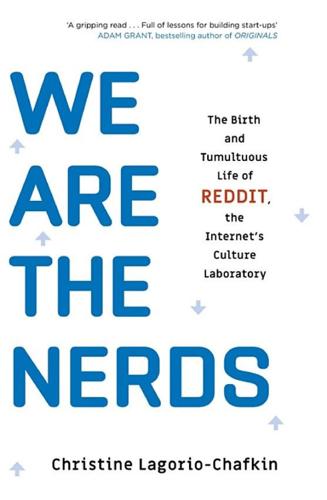
We Are the Nerds: The Birth and Tumultuous Life of Reddit, the Internet's Culture Laboratory
by
Christine Lagorio-Chafkin
Published 1 Oct 2018
Should I finish my Christmas shopping or go play with manatees?” Occasionally, an expert in a certain field would emerge and gain a lot of upvotes for their answers of substance. Certain Q&A sessions started to resemble a phenomenon that had been going on online for a while. In 1999, Slashdot had begun posting interviews based on crowdsourced questions. They were funny, confessional, and wide-ranging. Proof that this new breed of online earnestness had traction could be found in the launches, that same year, of sites UrbanBaby, full of confessional posts from New York moms, and Something Awful, a humor site predominantly trafficked by young men, which featured a Tell/Ask forum with contents such as “Ask me about working in a crematorium.”
…
A campaign staffer took a photo of the president, and Goff posted it on Reddit along with the headline “I am Barack Obama, President of the United States—AMA.” “So what is this?” Obama asked, staring at the screen. Goff briefed him for less than a minute: Reddit was an insanely popular social news site, meaning it was crowdsourced rather than being run by an editorial team. Earnest, pithy, voice-of-the-people. “Yeah, yeah, yeah.” Obama nodded. Slightly reassured, Goff replied, “All right, you know how this works?” “No. I have no idea,” the president replied. No matter: Obama dug in. He typed straight into Reddit, “Hey everybody—this is barack.
…
He set out to sell the pixels for $1 each, in blocks of 100, which he’d fill with the buyer’s image and a hotlink to their service. It became a hypercolored Times Square of the Internet, jammed with tiny ads for porn, poker, psychics, and bottles of liquor. It looked horrendous, this snapshot of the capitalist Internet’s land rush. And that stuck with Wardle as somehow magical. Remove the money, keep the land rush, and crowdsource the project—now, that would be interesting, Wardle thought. What if Redditors were allowed to choose their pixels, draw images, and create words? Wardle had managed April Fools’ projects for years, including an extremely popular one two years prior called “The Button.” It was a massive multiplayer online game that only allowed each Reddit account holder to click once, before bestowing a colored-dot flair label on them based on how much time had expired on the Button’s communal clock before they’d clicked.

The Disappearing Act
by
Florence de Changy
Published 24 Dec 2020
An Australian named Ethan Hunt, one of the organisers of the committee of families formed in June 2014 to raise funds for a private investigation, later said to me, ‘If they had wanted to create a diversion to give them time to do whatever they were supposed to do with the plane, they couldn’t have found any better way to do it!’ Meanwhile, a spontaneous army of volunteer detectives offered their services to the Tomnod web platform to help scrutinise millions of satellite images of the search areas. This site, a crowdsourcing project originally launched at the University of California in 2010 and now ‘retired’, called on volunteers to study satellite images and detect forest fires or refugee settlements, map typhoon damage and the effects of other natural or man-made disasters. Prior to the search for Flight MH370, Tomnod had a few thousand contributors.
…
By matching the shape of the cloud cover that she sourced from other satellite databases. That’s how far she would sometimes go to locate an image. Hendry gave a good two years of her life to the search, and once she wrapped it all up, she published her impressive work on a dedicated Facebook page so that anyone could access it and use it, in the spirit of crowdsourcing. But when she returned to it one day, the folder containing the most telling pictures had been deleted and tagged as ‘spam’ by Facebook. ‘It was mostly military planes-related pictures,’ she said, as she believed she had spotted the tail of a DC-10 in the sea to the south of Vietnam. From what she saw on the satellite images, ‘multiple aircraft were involved’.
…
I was astounded to be discussing the case of MH370, which I thought was classified in China, with these influential Chinese men, both members of the Communist Party. I was surprised and glad to see that, for their own logical reasons, they also vehemently dismissed the official narrative. 1 Tomnod is a crowdsourcing search of satellite images (see Chapter 2). It was acquired by DigitalGlobe in April 2013. 2 wivb.com/2014/04/24/tonawanda-man-believes-he-has-link-to-malaysia-mystery/. (unavailable to ‘our European visitors’). 3 National Geospatial Intelligence Agency. 4 ‘We have determined that the fact of the existence or non-existence of the materials you request is a currently and properly classified matter in accordance with the Executive Order 13526, as set forth in Sub-paragraph (c) of Section 1.4.
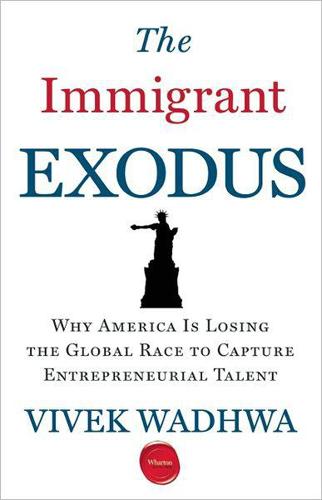
The Immigrant Exodus: Why America Is Losing the Global Race to Capture Entrepreneurial Talent
by
Vivek Wadhwa
Published 1 Oct 2012
Despite treatment from the US government that many I spoke with called “insulting” or “humiliating,” most remained willing to go through great effort and expense in this quest for the opportunity to legally work and build a company in America. For example, Mayel de Borniol tried to launch his company, Babelverse, in Chile after US immigration policies forced him out. The crowd-sourced translation company was selected as a winner at a major technology conference and received offers of significant funding. De Borniol is still fighting to get a visa that will allow him to work and build his startup in the United States. Immigrants Anand and Shikha Chhatpar built a burgeoning Facebook games company in the United States.
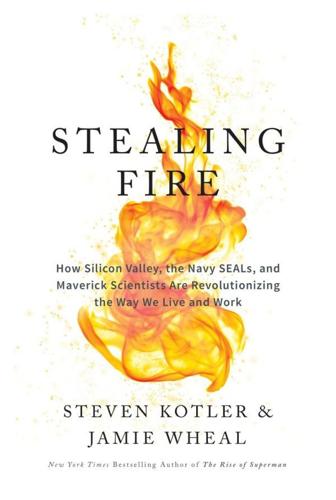
Stealing Fire: How Silicon Valley, the Navy SEALs, and Maverick Scientists Are Revolutionizing the Way We Live and Work
by
Steven Kotler
and
Jamie Wheal
Published 21 Feb 2017
But, no matter how influential these plants may have been, historically our ability to use them has been held in check. If the plant didn’t grow nearby, if it wasn’t on the list of socially sanctioned substances, potential explorers were out of luck. Pharmacology is such a potent force for ecstasis because it changes the nature of this game. With chemical cookbooks, rigorous neuroscience, crowdsourced lexicons, and now, democratized means of production, we’re freed from the geographic and cultural limitations we inherited. By giving us access to not just the botany of desire but the molecules of desire, we can continue to shape these compounds even as they inevitably shape us. It’s coevolution compressed from millennia into minutes.
…
Just seven weeks earlier, the hosts, Summit Series, had bought the entire mountain. “We wanted a permanent home,29 explains Summit cofounder Jeff Rosenthal. “We wanted to build a town dedicated . . . to what altered states really can provide: creativity, collaboration, innovation, entrepreneurship and community. And because our community shared that vision, we were able to crowdsource $40 million and buy a ski area (Powder Mountain) that sits on a mountain range the size of Manhattan.” So while folks at Burning Man are just starting to build themselves a homeland, Summit has already taken that step. Already, there are more than five hundred home sites on the land, with people like Richard Branson, Kobe Bryant, GE’s CMO Beth Comstock, and Nike president Trevor Edwards already committed to the project.
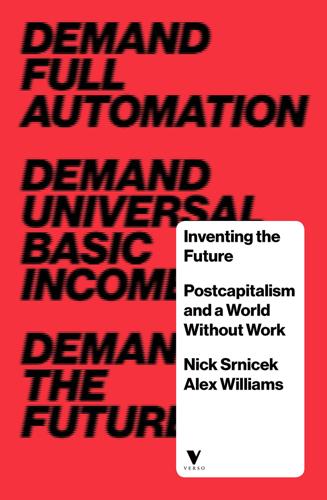
Inventing the Future: Postcapitalism and a World Without Work
by
Nick Srnicek
and
Alex Williams
Published 1 Oct 2015
Small successes – useful, no doubt, for instilling a sense of hope – nevertheless wither in the face of overwhelming losses. Even the most optimistic activist falters in the face of struggles that continue to fail. In other cases, well-intentioned projects like Rolling Jubilee strive to escape the spell of neoliberal common sense.9 The ostensibly radical aim of crowdsourcing money to pay the debts of the underprivileged means buying into a system of voluntary charity and redistribution, as well as accepting the legitimacy of the debt in the first place. In this respect, the initiative is one among a larger group of projects that act simply as crisis responses to the faltering of state services.
…
We can see this in the small but growing number of part-time, flexible and freelance jobs over the past thirty years.63 For instance, the relatively low unemployment levels of the UK after the 2008 crisis are largely a result of more self-employed people living off poverty wages.64 In the United States, more than 6.5 million people are forced to work part-time despite desiring full-time work.65 This casualisation also involves innovations such as crowd-sourced tasks, temporary staffing agencies and zero-hours contracts, along with the harsh working conditions and lack of benefits that accompany them. In the UK, for example, it is estimated that nearly 5 per cent of the working population is presently on zero-hours contracts.66 Surplus populations have also put downward pressure on wages.
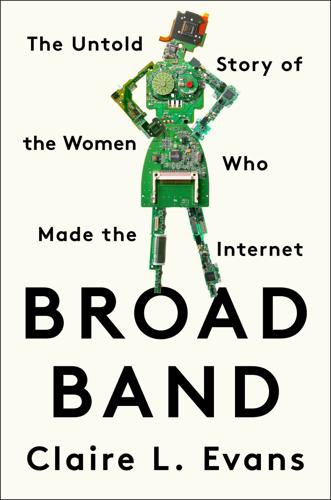
Broad Band: The Untold Story of the Women Who Made the Internet
by
Claire L. Evans
Published 6 Mar 2018
In the 1980s and 1990s, she’d coedit the influential technology magazine Mondo 2000. Jude was Ephrem’s girlfriend, and she’d met Lee after placing a sex ad in the Berkeley Barb (this was the ’70s, after all). The trio got along famously. Jude seeded the Community Memory database with provocations designed to lure users to the screen. She’d post proto-crowdsourcing questions, like: WHERE CAN I GET A DECENT BAGEL IN THE BAY AREA (BERKELEY PARTICULARLY) / IF YOU KNOW, LEAVE THE INFORMATION HERE IN THE COMPUTER. Under the table, a modem cradling a telephone handset linked the terminal across the bay to a database on the computer at Resource One. It didn’t take long for the paper-and-tack message board to grow obsolete.
…
One child, from the village of Spennymoor, contributed this spot-on prediction of the future: Robot limbs will be used when natural limbs are lost. Computers will take over much of the diagnosis now made by doctors. Food will be made tastier by artificial means. Children will learn chiefly by computers. This crowdsourced survey made up the first of the two Domesday Discs; the second was filled with interactive material about British heritage, government, and royalty, including census data and some early virtual reality–like tours of notable sites. When Wendy saw the Discs for the first time, they blew her away.
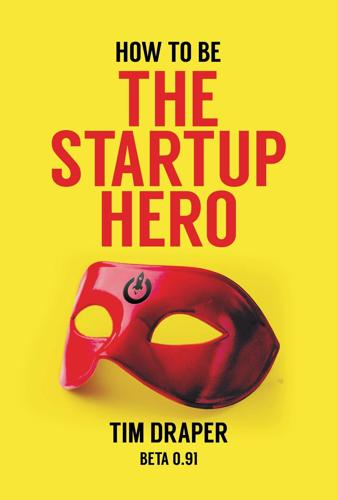
How to Be the Startup Hero: A Guide and Textbook for Entrepreneurs and Aspiring Entrepreneurs
by
Tim Draper
Published 18 Dec 2017
Estonia became a new entrepreneurial hotspot since the engineers came from there, and that in turn brought on e-Governance there (more on that later). From viral marketing evolved Skype audio calls, video calls, social media, email blasting, marketing magnets, gaming customer rankings on search engines, growth hacking, crowdsourcing, and collaborative marketplaces. When we are all connected, progress accelerates faster. Every piece of software, website, program, app, and novel new product, whether digital or physical is, will be or should be using viral marketing. Your goal as a Startup Hero should be to best figure out how to market products liberally throughout the world with little or no cost of distribution.
…
You are now a part of this school. Take it with you and spread the word. I expect that now, when you speak, you will inhale air and exhale our values, our understandings and our credo. Many new markets are available to you where entrenched monopolists have wallowed for years. Technologies like location-specific marketplaces, crowdsourcing, GPS, drones, big data, Bitcoin, blockchain, ICOs, DNA sequencing, CRISPR, solar and other alternative sources of power, and many others will allow you to pursue new markets in the FinTech, EdTech, GovTech, MedTech, TransporTech, and AgTech worlds. Your businesses can take advantage of platforms that people that started those monopolies only dreamed of back then.
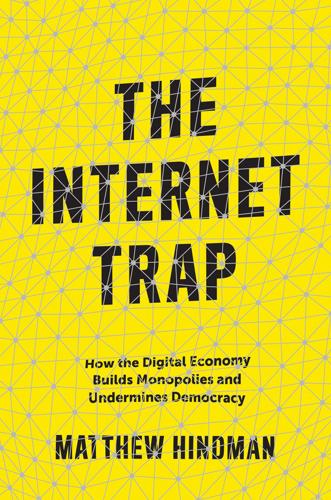
The Internet Trap: How the Digital Economy Builds Monopolies and Undermines Democracy
by
Matthew Hindman
Published 24 Sep 2018
However, facing a class-action lawsuit and an ftc investigation regarding user privacy, Netflix canceled the intended sequel.23 Given these legal complications, other large digital firms have been wary about sponsoring similar contests or releasing comparable datasets. The Netflix Prize is often discussed as an example of crowdsourced problem solving. The results of the contest, however, suggest that the advantages of recommender systems will accrue highly unevenly. The very largest sites have been able to build excellent content recommendation systems; the smallest sites have not. Recommender systems favor large, well-resourced organizations.
…
It benefits from larger groups and diverse approaches, and thus provides inevitable size advantages. As the competition evolved, the models produced became absurdly complex. Managing this complexity also requires expertise and substantial staffing. Similarly, the sorts of individuals who rose up the contest leaderboard also suggest limits to crowdsourced problem solving in contests like the Netflix Prize. Those who led the most successful teams were already prominent academic or corporate researchers. Even those who were initially unfamiliar names, such as Funk (Brandynn Webb) or the Princeton undergraduates who made up the Dinosaur Planet team, had formal training and relevant professional experience.
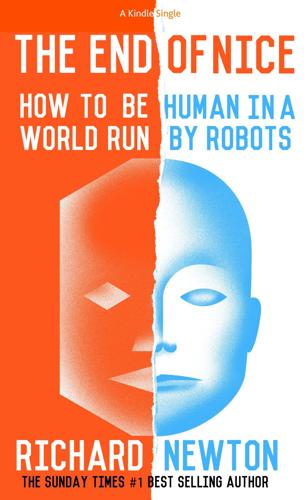
The End of Nice: How to Be Human in a World Run by Robots (Kindle Single)
by
Richard Newton
Published 11 Apr 2015
Cruelly, just when original, idiosyncratic, deep thought becomes more important to a good life, it has become exponentially easier to do the reverse, to conform and think the same as everyone else. In other words, it is precisely because you are connected to all the knowledge in the world that to stop and think original thoughts just got harder. Because you live in a crowd-sourced, socially-and-globally-connected accelerated world you can learn with a sweep of your index finger what choices will conform with and win the approval of your peers. It’s never been easier to be nice. Social decision-making apps will enable you to poll your social network for their opinion on anything: from what shoes to wear to how to have your eggs served to what music to listen to or who to vote for.
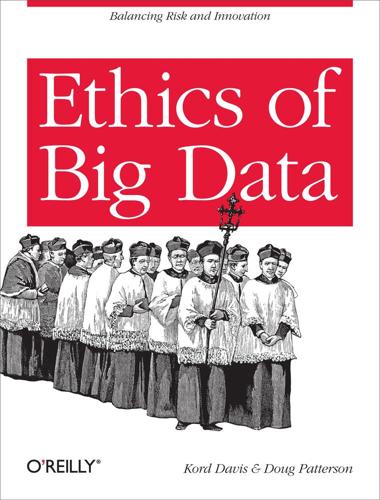
Ethics of Big Data: Balancing Risk and Innovation
by
Kord Davis
and
Doug Patterson
Published 30 Dec 2011
The more such additional data is available (in addition to more easily accessible tools and computing resources), the easier it is to reattach supposedly “anonymous” data sets to canonical “personally identifying information” such as name, address, and phone number. In one widely cited study, for instance, researchers were able to reidentify many users from an “anonymized” data set released by Netflix for the purposes of crowd-sourcing recommendation algorithms by comparing it to user profiles on IMDB (http://www.securityfocus.com/news/11497). You might not think that a few movie ratings could be “personally identifying information,” but given the right auxiliary information, they are. In the opening quote to this chapter, Ohm was talking specifically about the particular sense of the word “anonymous” that relates to an individual’s personal privacy.
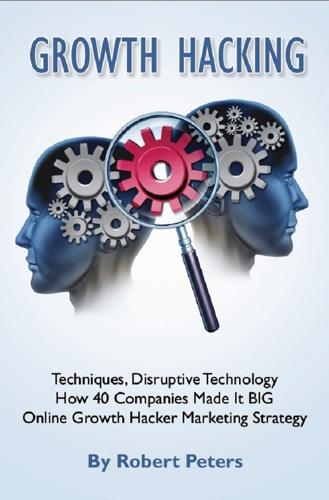
Growth Hacking Techniques, Disruptive Technology - How 40 Companies Made It BIG – Online Growth Hacker Marketing Strategy
by
Robert Peters
Published 18 May 2014
In many ways the Mashable story is very old-fashioned, one-man-with-a-vision tale, while in another, it is an example of single-minded understanding of market focus with inherent flexibility to shift with the prevailing interest. Regardless, the growth has been impressive and highly effective. 99designs The online graphics design marketplace 99designs was founded in Melbourne, Australia in 2008 to create products via crowdsourcing. Designs are entered competitively for customer selection in a contest structure with the winner receiving cash payment. There is also an option to purchase templates and work with individual designers directly. Typical projects include logos, t-shirts, and websites. Traction for solid growth was actually built in to the concept from the beginning since it was a spinoff of SitePoint forums.
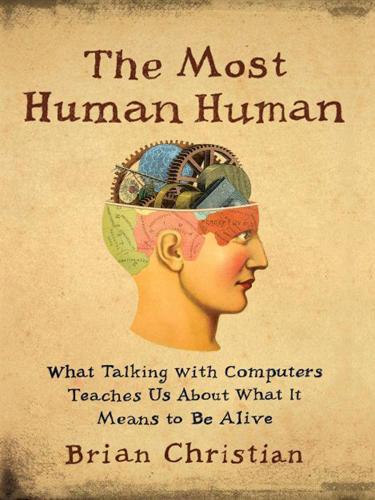
The Most Human Human: What Talking With Computers Teaches Us About What It Means to Be Alive
by
Brian Christian
Published 1 Mar 2011
Suppose every developer describes an episode without having any information on the others. Can you imagine what will be produced!” In fact, it’s quite easy to imagine what will be produced: “Eugene Goostman” ’s competitors. This is a central trade-off in the world of bot programming, between coherence of the program’s personality or style and the range of its responses. By “crowdsourcing” the task of writing a program’s responses to the users themselves, the program acquires an explosive growth in its behaviors, but these behaviors stop being internally consistent. Death of the Author; End of the Best Friend Do you need someone? Or do you need me? –SAY ANYTHING … Speaking of “writing a book”: this notion of style versus content, and of singularity and uniqueness of vision, is at the heart of recent debates about machine translation, especially of literature.
…
On both of those counts, even as machine translation increasingly penetrates the world of business, literary novels remain mostly untranslatable by machine. What this also suggests, intriguingly, is that the task of translating (or writing) literary novels cannot be broken into parts and done by a succession of different humans either—not by wikis, nor crowdsourcing, nor ghostwriters. Stability of point of view and consistency of style are too important. What’s truly strange, then, is the fact that we do seem to make a lot of art this way. To be human is to be a human, a specific person with a life history and idiosyncrasy and point of view; artificial intelligence suggests that the line between intelligent machines and people blurs most when a purée is made of that identity.
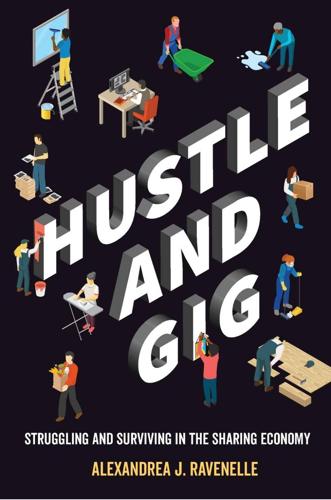
Hustle and Gig: Struggling and Surviving in the Sharing Economy
by
Alexandrea J. Ravenelle
Published 12 Mar 2019
When Novogratz asked Callinicos why Uber would risk upsetting drivers by raising rates 5%, he said Callinicos didn’t hesitate and said, ‘Because we can.’”44 As reported in The Guardian, while some have raised questions about Uber’s future, given worker discontent, the Uber chief product officer, Jeff Holden, reportedly explained, “We’re just going to replace them all with robots.”45 Generally, pay cuts are used when a company is struggling to stay afloat; or in the case of a pay cut for just one person or portion of the workforce, it’s an effort to convince someone to quit. But many of these sharing economy services are fairly well funded. According to Crunchbase, a crowd-sourced database to track start-ups, TaskRabbit had, by August 2015, received $37.68 million in six rounds of investments from thirteen investors, before being bought by Ikea in 2017. In August 2017, the New York Times reported that Uber had a valuation of more than $68 billion; and by February 2018, the platform had received $21.1 billion in twenty-one rounds from ninety-three investors.46 Outside of the sharing economy, many companies, rather than suddenly reducing pay, rely on layoffs, which is hardly an improvement.
…
Whereas a white-collar worker in the mainstream economy can waltz into work thirty minutes late and probably avoid detection by the boss at least some of the time, the app-based tools allow for constant tracking. Thanks to GPS systems, Uber and Lyft know exactly when a driver arrives, picks up a passenger, where he goes, and when he drops them off. With required in-app communication, Airbnb and TaskRabbit track response times and record written communication. Furthermore, the crowdsourced nature of peer review allows for constant evaluation. While not every client gives a rating score or completes a peer review, workers don’t know in advance who will or won’t. This leads to internal monitoring as workers know that they must perform satisfactorily or risk a negative review or low rating.

The Truth Machine: The Blockchain and the Future of Everything
by
Paul Vigna
and
Michael J. Casey
Published 27 Feb 2018
And while the “selfie” may not be high art, it’s hard to argue that the perpetual pouting and preening on Instagram isn’t a type of performance. There is something to the notion that we all want to release our inner creative selves. What’s interesting is that this technology is turning creation into a more collaborative process. Humor is now “crowdsourced”—think of how memes and hashtag jokes evolve, with each new witty version building on the last one. Music, brands, and subculture are being blended into one by these communal creative exercises. The (forever) sixteen-year-old Japanese “vocaloid” performer Hatsune Miku (a piece of software that performs as a hologram accompanied by a band of living musicians) has a repertoire of 100,000 songs written and produced by her fans, as well as 170,000 uploaded YouTube videos and a million Miku-inspired artworks.
…
In case you’re a little snobbish about such lowbrow art, we should also point out that a similar mind-set of collaborative creation now drives the world of science and innovation. Most prominently, this occurs within the world of open-source software development; Bitcoin and Ethereum are the most important examples of that. But as computing power becomes relevant to much more than just computers, the power of interconnected, crowdsourced creation is being spread even further. One example that was perhaps a little ahead of its time was the Pink Army Cooperative launched by biotechnologist Andrew Hessel in 2009. Hessel created an open-source community of bio-engineers whose mission was to collaboratively work on gene-editing software to devise code for a synthetic oncolytic virus to target and kill breast cancer cells.
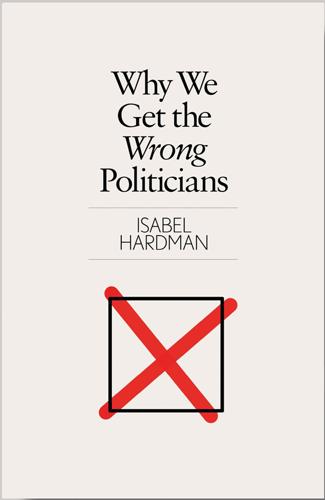
Why We Get the Wrong Politicians
by
Isabel Hardman
Published 14 Jun 2018
The most interesting response was that 23 per cent of people claimed it had put them off politics – even though they were already sufficiently engaged to turn the TV on to watch the session in the first place. Voters’ attitudes had largely hardened since the previous poll, in 2015, just after Jeremy Corbyn had tried to change the culture of PMQs by crowd-sourcing all his questions to members of the public (a practice that fizzled out). In that poll,12 conducted for the Hansard Society, a greater proportion of voters had either seen the whole session or watched clips on the news (47 per cent in total), and 46 per cent felt there was too much political point-scoring.
…
They would then not be merely advocates of their party’s policy in the committee room, but people who wanted to ensure that everything was being done to get that policy absolutely spot on. Public payback would also answer the desire among voters to break open the Bubble. Jeremy Corbyn made admirable attempts to do this in his early Prime Minister’s Questions to David Cameron by crowd-sourcing his questions. His execution of this ‘phone-in’ format left a great deal to be desired, but he was right to try to make PMQs more about the people affected by the government’s decisions. Public payback would do that in a targeted way, outside of the partisan hurly-burly of PMQs. It could be organised in a similar manner to the petitions that MPs already debate in Parliament, with a petitions committee deciding how to deal with causes that have reached a certain threshold of signatures.

Ghost Road: Beyond the Driverless Car
by
Anthony M. Townsend
Published 15 Jun 2020
While other apps collated sensor data on traffic conditions and pushed reports back down to commuters, Waze prodded you to play cub reporter, too—tapping out the specific cause of a slowdown (a crash, debris in the road, etc.), the location of police speed traps, or other tidbits of information of interest to fellow travelers. The whole thing was riddled with cute, anthropomorphic icons and emojis. You joined tribes and earned points. Driving with Waze felt more like a game than managing a commute, and it could be addictive. These crowdsourced congestion reports quickly became an indispensable tool for hundreds of thousands of Israelis hacking their way through the city’s heavily congested road network. But that morning, something was wrong. As rush hour got underway, Waze’s maps were blank. Meanwhile, seven time zones to the west, in the Washington suburb of Ashburn, Virginia, all hell was breaking loose.
…
And with funding from Ford Motor Company, SharedStreets has plans to create a framework that mimics much of the functionality of Curbs API. SharedStreets doesn’t intend to do the end-to-end hand-holding that Coord is pitching to cities. As founder Kevin Webb explains, “cities need to invest in the mapping in ways that ensure the data remains public information. Crowdsourcing might be part of that but ultimately someone has to put in the time/effort to do the work.” But what cities will get in return is ownership and control of this vital virtual infrastructure. Go with Coord, and you’ll get a turn-key system. But you’ll have to license the data about your own streets to actually use it—and so will every mobility provider, big and small, that wants to roll through your town.

A New History of the Future in 100 Objects: A Fiction
by
Adrian Hon
Published 5 Oct 2020
But even they weren’t invulnerable, their fear belied by their desperate grip on the last vestiges of an unfree market. They wielded patents, copyrights, monopolies, planned obsolescence, addiction, locked-in ecosystems, regulatory capture, political corruption, advertising, and lobbying. They guzzled social contributions, such as open-source software and crowdsourcing and incoming personal data, and gave nothing back other than free-if-you-don’t-look-closely services. Anything to maintain their position in a vanishing capitalist system. It worked too well for too long. The fall came from within. Median wages stagnated as automation took its toll and margins were squeezed tight.
…
I went there on a holiday once, for a record of achievement project working at the Haughey Lighthouse, one of those things we all had to do after they got rid of exams. Cleanest streets I’ve ever seen, and that wasn’t with any sweepers either. They’ve got state-sponsored downvoting there, “citizen crowdsourcing of anti-social individuals.” The law got passed by a supermajority because it’s the ultimate magic wand—a way to identify all the creepy people and criminals forever. I’m surprised there wasn’t more rioting against those arrogant, entitled technologists. “I’ll be honest with you. The voting is usually right.

The Stack: On Software and Sovereignty
by
Benjamin H. Bratton
Published 19 Feb 2016
It is at this level of The Stack that the modern coherence of the state, which would produce one sort of public, and the operations of platforms, which would produce another, can come into conflict, overlapping and interlacing one another without universal jurisdiction or resolution, but it is also where they can reinforce each other with more pervasive forms of ambient governance. The geopolitics of the Cloud is everywhere and wants everything: the platform wars between Google, Facebook, Apple, and Amazon, anonymized servers routing the angry tweets from street battles, Anonymous going up against Mexican drug cartels, WikiLeaks crowd-sourcing counterespionage, Tor users building on top of Amazon Web Services services, carriers licensing content, content providers licensing bandwidth, proprietary fiber networks connected trading centers, and on, and on. It might seem at first blush that these events, each perhaps pushing legal boundaries in its own way, should be understood as disruptive contaminations of a standing political order—acts of resistance to the system, even.
…
For savvy urban designers, equally adept with physical and virtual envelopes, it's not difficult to make up long lists of possible projects: augmented reality Apps for ambulance paramedics and open-air surgical theaters; a mash-up of post-Twitter microblog Apps linked to post-Siri voice-control interfaces and trans-Google translation software, together posting anything you want to say to anyone anywhere always; citizen activists using GIS, mass-market geobrowsers, and modified drones to streaming real-time C3 video to 3D-printed phones; mining composite crowd-sourced behavioral data to optimize the recycling of post-purchase prosaic junk; real-time flu outbreak visualization and private microgovernance of microbiopolitical swarms (a premium upgrade only for club members); traffic control sensor and smart tollbooth hacks; individually reconfigurable robotic building interiors collapsing rooms and even floors serving different programs in morning and at night; anonymized parking markets based on bitcoin and namecoin; building exteriors featuring networked cinema, not on thirty-second loops but on eighteen-month lunar cycles; lifelong syncing of car-phone-home-Clouds platform allegiance chosen at birth like football team fandom; Google Office per-minute commercial office leasing apps; personal RFID managers; rock star privacy consultants—all driven by (at least partially) open APIs enabling other applications to build further on their existing traces.
…
As discussed in the City layer chapter, there is then a kind of programmatic blending between the urban situation through which a User moves and the interactions he may be having with a specific App and Cloud service. A mall becomes a game board, a sidewalk becomes a banking center, a restaurant becomes the scene of a crime in a crowd-sourced recommendation engine, birds are angry and enemies are identified, and the experience of these may be very different for different people and purposes. At any given moment, multiple Users interacting with different Apps in the same place may have brought their shared location into contrasting Cloud dramas; one may be ensconced in a first-person shooter game and the other in measuring his carbon footprint, further fragmenting any apparent solidarity of the crowd.
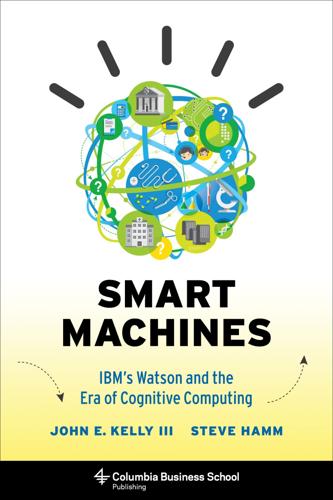
Smart Machines: IBM's Watson and the Era of Cognitive Computing (Columbia Business School Publishing)
by
John E. Kelly Iii
Published 23 Sep 2013
The learning capability includes a series of steps: hypothesis generation from evidence, hypothesis ranking, question generation, and answer acquisition. In addition to getting answers from humans it’s interacting with, Watson will be able to tap a directory of experts for advice or even learn through crowd-sourcing. As it acquires answers, it will build a collection of learned axioms that strengthen its command of given domains. Other improvements to Watson have come. People are now able to view the logic and evidence upon which Watson presents options. Watson is now able to digest not just textual information but also structured statistical data, such as electronic medical records.

Utopia Is Creepy: And Other Provocations
by
Nicholas Carr
Published 5 Sep 2016
At least there we can find something to hold on to, even if it’s nothing. GHOSTS IN THE CODE April 4, 2007 LAST MONTH, AMAZON.COM WAS granted a broad patent for computer systems that incorporate human beings into automated data processing—the type of cybernetic arrangement that underpins the company’s Mechanical Turk crowdsourcing service. With Turk, a software programmer can write into a program a task that is difficult for a computer to do but easy for a person to carry out, such as identifying objects in photographs. At the point in the program when the “human input” is required, the task is posted to the Turk website where people carry it out for a small payment.
…
,” 121 Cai Lun, 286–87, 291 candlelight, 229–30 capitalism, 83–85 Case against Perfection, The (Sandel), 340 Case of Emily V., The (Oatley), 248 cassette tape, 121, 124 CCTV cameras, 52 CDs (compact disks), 42, 123–24, 293 cell phones, 52, 80, 233 censorship: in China, 283 free flow of information vs., 191 Centers for Disease Control and Prevention, 304 centrifugal force, 67 centripetal force, 66 Chambers, John, 134 Chen, Steve, 29 Chief Officers of State Library Agencies, 272 Chin, Denny, 269, 272 China, censored searches in, 283 Christian, Rebecca, 80 citation, allusion vs., 87–88 Clash, 63–64 classical music, 43–44 Claude Glass, 131–32 Clinton, Bill, 315 Clinton, Hillary, 314, 315, 317–18 clocks, changes wrought by, 235–36 clones, virtual, 26–27 cloud computing programs, 264, 283 cloud storage, 163, 168, 185, 225 physical archives vs., 326 CNET, 55 Coachella festival, 126 Coca-Cola, marketing of, 53–54 cocaine, 262 cochlear implants, 332 cognitive bias, 321 cognitive control, 96 cognitive function: effect of internet on, 199–200, 231–42 effect of video games on, 93–97 “flow” state in, 297 memory and, 98–99 neuroengineering of, 332 reading and, 248–52 cognitive surplus, 59–60 avoidance of, 74 Coleridge, Samuel Taylor, 251 Collaborative Consumption, 84–85, 148 Columbia Records, 43–44 commercialism: anticonsumerism and, 83–85 culture transformed by, xvii–xxii, 3, 9, 150, 177, 198, 214–15 in innovation, 172 of libraries, 270–71 media as tool of, 106, 213, 240, 244–45, 257–58, 320 in virtuality, 25–27, 72 commodes, high-tech, 23–24 communication: between computers, 167 computer vs. human, 152–54 evolution of, 53 loneliness and, 159 mass, 67–68 speed of, 223, 320 thought-sharing in, 214–15 Communist Manifesto (Marx and Engles), 308 “Complete Control,” 63–64 Computer Power and Human Reason (Weizenbaum), 236 computers: author’s early involvement with, xix–xi benefits and limitations of, 322–23 in education, 134 effect on paper consumption of, 287–88 evolution of, xix–x, 165 future gothic scenarios for, 112–15 human hybridization with, 37–38, 332 human partnership with, 321–24 as impediment to knowledge perception, 303–4 minds uploaded to, 69 revivification through, 69–70 written word vs., 325–28 concentration, diffusion of, 231–33, 236–37 Confession d’un Enfant du Siècle, La (Musset), xxiii Congress, U.S., 275–77 consumer choice, 44–45 Consumer Electronics Show (CES), 32, 56 consumerism: counterculture co-opted by, 72 distraction and, 65 media as tool of, 106, 132, 219 consumption, self-realization vs., 64–65 contemplation, 241, 246 through work, 298–99 conversation, computer streaming of, 152–54 CopyBot controversy, 25–27 copyright laws: history of, 275–76 in online library controversies, 269–71, 275–78, 283 in virtual world, 25–27 Corporate Communalists, 83 corporate control, through self-tracking, 163–65 correspondence courses, 133–34 cosmetic surgery, 331, 334 Costeja González, Mario, 190–92, 194 Coupland, Douglas, 102, 103 Courant, Paul, 270, 272 courtesy: decline of, 157 inefficiency of, 152–54 Cowen, Tyler, 116 Crawford, Matthew, 265 creativity, 49, 64 before the virtual world, 60–61 economics of, 8–9 in music, 44–45, 294 stifled by iPad, 76–78 see also innovation “crisis of control,” 188–89 CRISPR, 334–35 crowdsourcing, 37 Cruz, Ted, 314 cultural memory, archiving of, 325–28 cutouts (remaindered record albums), 122 CyberLover, 55 cybernetics, 37–38, 214 cyberpunk, 113 cyberspace, xvii, 127 early idealism of, 85 “Cyborg Manifesto” (Haraway), 168–69 cyborgs, 131 cynicism, 158 Daedalus, 336, 340 Darnton, Robert, 270–75, 278 DARPA, 332 Dash Express, 56 data-mining, 186, 212, 255–59 data-protection agencies, 190–91 Data Protection Directive, 191, 193 Davidson, Cathy, 94 Davies, Alex, 195 Davies, William, 214–15 Dean, Jeff, 137 death, as hardware failure, 115 Declaration of Independence, 278, 325 “Declaration of the Independence of Cyberspace” (Barlow), 85 deep reading, 241 deletionists, 18–20, 58 democratization, xvi, xviii, 28, 86, 89, 115, 208, 271 internet perceived as tool for, 319–20 depression, 304 Derry, N.H., 296–97 Descartes, René, 301, 330 Dewey, John, 304 “digital dualism,” 129 “digital lifestyle,” 32–33 digital memory, 327 digital preservation, 325–28 Digital Public Library of America (DPLA), 268, 271–78 “Digital Republic of Letters,” 271 discovery, adventure of, 13–15 Disenchanted Night (Schivelbusch), 229 displaced agency, 265 distraction, xix, 14, 316 in consumerism, 65 video games and, 19 diversity, 65 DNA, 69–70, 334–35 Doctorow, Cory, 76–77 “Does the ‘New Economy’ Measure Up to the Great Inventions of the Past?”

Augmented: Life in the Smart Lane
by
Brett King
Published 5 May 2016
Smart cities will monitor air pollution and take proactive action to bring it to safe levels. In cases where governments or utility companies intentionally falsify data, citizens should avail themselves of pollution sensors and take part in social media sites that publicise truthful reports. Air pollution sensors connected to smartphones can enable crowdsourced environmental maps that are freely available to the public. Such maps can record levels not only for cities overall, but within subsections of a large city, as pollution can have high variability within a geographic area and over time. Some of the most promising technologies for this include localised carbon scrubbing or sequestration technologies that clean the air around cities.
…
Today, Matt was hacking some footage that had been taken last week in an abandoned subway station and mapping it onto an immersive (as the playable VR movies seem to be collectively named) story grid. It was an amateur piece by some group that was trying to create an interactive adaption of a James Bond movie from a couple of decades ago. They didn’t yet have the rights to the Bond name or character, so the working title was just Double-O. The game/movie/immersive wasn’t so much crowdsourced as crowdbuilt. AR-tists and coders from around the world would bid or auction their time on various projects and would get units in the film, sort of like equity. One project that Matt had worked on earlier in the year had already gone to market and he was getting a small amount of cash trickling in.

Adapt: Why Success Always Starts With Failure
by
Tim Harford
Published 1 Jun 2011
The sheer power and interconnectedness of modern technology means that anyone can get hold of enough computing power to produce great new software. Thanks to outsourcing, even the hardware business is becoming easy to enter. Three-dimensional printers, cheap robots and ubiquitous design software mean that other areas of innovation are opening up, too. Yesterday it was customised T-shirts. Today, even the design of niche cars is being ‘crowd-sourced’ by companies such as Local Motors, which also outsource production. Tomorrow, who knows? In such fields, an open game with lots of new players keeps the innovation scoreboard ticking over. Most ideas fail, but there are so many ideas that it doesn’t matter: the internet and social media expert Clay Shirky celebrates ‘failure for free’.
…
Peer monitoring is closely associated with the virtual world: it’s the fundamental building block of Google’s search algorithm (giving weight to how popular a site is with other sites), phenomena like eBay (which relies on buyers and sellers rating each other’s reliability) and Wikipedia (in which anyone can edit anyone else’s articles), and the open-source software movement which has delivered such successes as Firefox and Apache. But as Timpson shows, it’s applicable far behind the cutting edge of crowd-sourced technology. I witnessed a striking example of peer monitoring on my visit to the Hinkley B nuclear power station. I’d just received a briefing on Hinkley’s safety culture from Peter Higginson, an avuncular physicist from Shropshire who was responsible for the safety of Hinkley’s two massive advanced gas-cooled reactors.
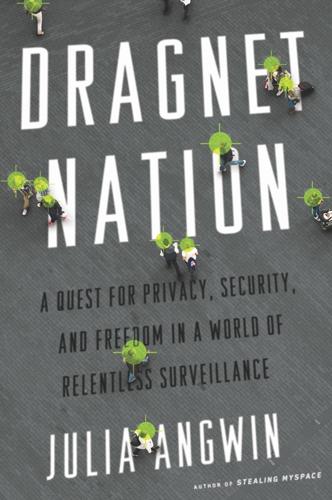
Dragnet Nation: A Quest for Privacy, Security, and Freedom in a World of Relentless Surveillance
by
Julia Angwin
Published 25 Feb 2014
After selling a social networking website called the Names Database for $10 million in 2006, he and his wife moved to Valley Forge, Pennsylvania, so she could be close to her work at the pharmaceutical giant GlaxoSmithKline. A freshly minted millionaire, Weinberg experimented with a bunch of projects. He made his own TV studio, worked on a social network for golfers, and started a service that sought to use crowdsourcing to find better search results. As he played around with search, he started to get increasingly annoyed by Google search results that were filled with the equivalent of spam. So he decided to build a better search engine. “I wanted to go back to the Google old days when the focus was on quality links,” he told me.
…
In 2009, an entrepreneur named: David Cancel, “The Future of Ghostery,” David Cancel (blog), January 19, 2010, http://davidcancel.com/the-future-of-ghostery/. In 2010, he sold it to an advertising services: Adam DeMartino, “Better Advertising Acquires Ghostery,” The Evidon Blog, January 19, 2010, http://www.evidon.com/blog/better-advertising-acquires-ghostery. one of the most comprehensive lists: There are some other crowd-sourced comprehensive lists—such as the EasyPrivacy list that can be added to AdblockPlus—https://easylist-downloads.adblockplus.org/easyprivacy.txt. (As of October 5, 2013, the list included 8,376 items.) of tracking technologies: Andy Kahl, in discussion with author, May 30, 2013. Brian Kennish, an engineer at Google: Julia Angwin, “Wall Street Journal Privacy Series Inspires One Start-Up,” Wall Street Journal, Digits (blog), February 27, 2011, http://blogs.wsj.com/digits/2011/02/27/wall-street-journal-privacy-series-inspires-one-start-up/.
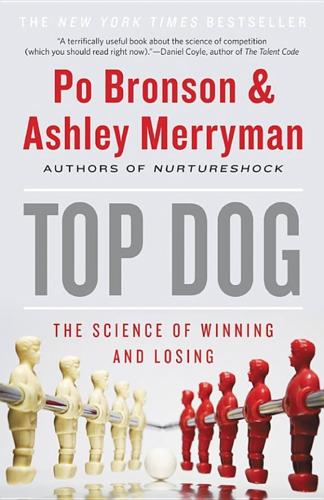
Top Dog: The Science of Winning and Losing
by
Po Bronson
and
Ashley Merryman
Published 19 Feb 2013
Lakhani, “The Determinants of Individual Performance and Collective Value in Private-Collective Software Innovation,” Harvard Business School Working Paper, No. 10-065 (2010) Hertel, Guido, Sven Niedner, & Stefanie Hermann, “Motivation of Software Developers in Open Source Projects: An Internet-Based Survey of Contributors to the Linux Kernel,” Research Policy, vol. 32(7), pp. 1159–1177 (2003) Jdamato12, “TopCoder Celebrates 400,000 Members as Payments Top $36 Million,” TopCoder.com, http://bit.ly/O0ehd4 (4/12/2012) Lakhani, Karim, Correspondence with Authors (2011, 2012) Lakhani, Karim, Interview with Author (2012) Lakhani, Karim R., “TopCoder (A): Developing Software through Crowdsourcing,” Harvard Business School Teaching Note, No. 5-611-071 (2011) Lakhani, Karim R., & David A. Garvin, “TopCoder (A): Developing Software through Crowdsourcing,” Harvard Business School Case Study, No. 9-610-032 (2010) Lakhani, Karim R., & Jill A. Panetta, “The Principles of Distributed Innovation,” Innovations, vol. 2(3), pp. 97–113 (2007) McKeown, Jim, “TopCoder One of Inc.
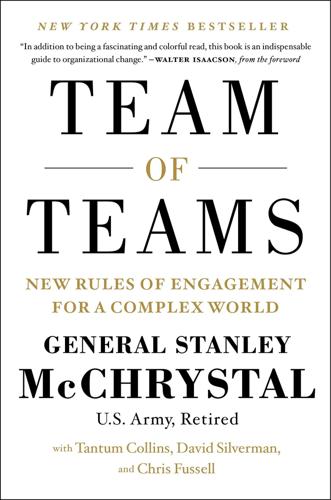
Team of Teams: New Rules of Engagement for a Complex World
by
General Stanley McChrystal
,
Tantum Collins
,
David Silverman
and
Chris Fussell
Published 11 May 2015
But it depends on wings from Nagoya, Japan; horizontal stabilizers from Foggia, Italy; cargo and access doors from Sweden; wingtips from Korea; and landing gear from Gloucester, United Kingdom. Like most of what we buy or use, any given Dreamliner is the product of a vast network of sources. The increased interdependence that goes into creating our physical products is nothing compared with the leaps in digital connectivity witnessed in recent years. The rise of crowdsourced fund-raising campaigns, viral online trends, and mobile payment systems testifies that the spread of technology has brought almost all of us into a much broader web of connectivity than we were in a decade or two ago. In Iraq, we saw this rise in interdependence manifested almost daily. An operation in one city would lead almost instantly to a chain reaction of AQI actions and civilian responses across the country.
…
While Taylor developed orderly, machinelike organizational forms to make the most of the orderly machines in his factories, our network resembled the snaking, overlapping, constantly shifting structural makeup of the Web. While Taylor’s management structures focused on inputs and outputs, much like a physical assembly line, ours was built on an ecosystem of shared information similar to crowdsourced solutions, just like the architecture of adaptive, evolving Web sites like Wikipedia, which share massive quantities of information among all users and give individuals authority to alter the system. Just as scientific management fused Smithian thought on efficiency with a new era of technology to create a new kind of organization, we found that our doctrine, by harnessing the ideal of democratic collaboration, had resulted in a fundamentally new type of force—an information-age Task Force.

Custodians of the Internet: Platforms, Content Moderation, and the Hidden Decisions That Shape Social Media
by
Tarleton Gillespie
Published 25 Jun 2018
If we dreamed of political activism online, we also got clicktivism, political pandering, and tweetstorms. If we dreamed of forming global, decentralized communities of interest, we also got ISIS recruitment. If we dreamed of new forms of public visibility, we also got NSA surveillance. If we dreamed of free content and crowdsourced knowledge, we also got the exploitation of free labor. If we dreamed of easy interconnection between complex technical resources, we also got hacked passwords, data breaches, and cyberwar. The companies that have profited most from our commitment to platforms did so by selling the promises of participatory culture.
…
Atlantic, April 14. http://www.theatlantic.com/technology/archive/2011/04/the-curious-connection-between-apps-for-gay-men-and-sex-offenders/237340/. ———. 2015. “From Noxious to Public? Tracing Ethical Dynamics of Social Media Platform Conversions.” Social Media + Society 1 (1): 2056305115578140. ANDERSON, JESSICA, MATTHEW STENDER, SARAH MYERS WEST, AND JILLIAN C. YORK. 2016. “Unfriending Censorship: Insights from Four Months of Crowdsourced Data on Social Media Censorship.” Onlinecensorship.org. http://www.tasharuk.net/resources/files/1459500033Onlinecensorship.orgReport31March2016.pdf. ANDREJEVIC, MARK. 2013. Infoglut: How Too Much Information Is Changing the Way We Think and Know. New York: Routledge. ANDREJEVIC, MARK, JOHN BANKS, JOHN EDWARD CAMPBELL, NICK COULDRY, ADAM FISH, ALISON HEARN, AND LAURIE OUELLETTE. 2014.
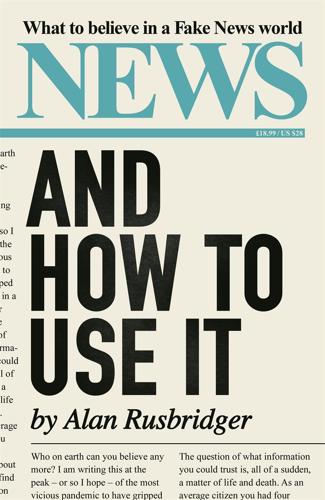
News and How to Use It: What to Believe in a Fake News World
by
Alan Rusbridger
Published 26 Nov 2020
They will pose questions and post call-outs as they launch new projects: what they want to find out, the expertise they are going to need to do this right, any sort of help they want from readers. Sometimes readers are the project. Writers also manage the discussion threads – which are not called comments but contributions – in order to highlight the best additions and pull useful material into the next iteration of an ongoing story.’ Some of these crowdsourcing techniques have been used by journalists on more mainstream papers, notably David Fahrenthold of the Washington Post. The Drum profiled how De Correspondent works, using health as an example of how the reader can move from passive to active: ‘De Correspondent’s philosophy is that 100 physician readers know more than one healthcare reporter.
…
The question was whether people would pay for information from a site which even Wikipedia (in February 2017) regarded as untrustworthy. Wikipedia editors said at the time: ‘The general themes of the support votes centred on the Daily Mail’s reputation for poor fact checking, sensationalism, and flat-out fabrication.’ How that must have hurt in South Kensington: that a bunch of amateurs on a crowdsourced website had the nerve to outlaw proper, professional, paid journalists! As we enter the third post-Millennium decade amidst a rapidly changing media environment, will the notorious sidebar of shame continue to flaunt its thumbnails? The #MeToo movement, kickstarted by the exposure of Harvey Weinstein’s career-long criminal lifestyle of sexual harassment, assault and misogyny, has unleashed a mainstream focus on the insidious objectification and subjugation of women (which, spoiler, isn’t new).
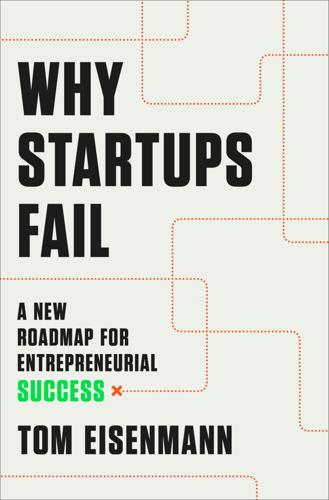
Why Startups Fail: A New Roadmap for Entrepreneurial Success
by
Tom Eisenmann
Published 29 Mar 2021
Those in California had solid odds of finding a nearby match, but new users in places like North Dakota didn’t. Disappointed, they disengaged and, even worse, gave Wings low satisfaction scores in Facebook Platform’s app store, which drove up customer acquisition costs. Managing content that was crowdsourced from users yielded important insights about their preferences, which in turn spawned new features. For example, to counteract a small minority of users who posted inappropriate photos, Nagaraj was personally reviewing all photo submissions: roughly fifteen hundred photos per day from about three hundred new users.
…
They can use tactics described in Chapter 4, like a smoke test that asks customers to commit to pre-purchasing a not-yet-available product, based on a detailed, accurate description of it. Tesla, for example, obtains customer input by requiring a refundable deposit—$1,000 for the Model 3—to reserve a vehicle. Jibo used its Indiegogo campaign, although crowdsourcing, by its nature, reveals more about demand from early adopters than mainstream customers. Also, as discussed in Chapter 4, entrepreneurs can supplement smoke testing by getting customer feedback on a “looks like” prototype, as Jibo’s team did when they built a “Wizard of Oz” prototype that could be puppeteered by a hidden human operator to see how consumers would interact with a social robot.

Among the Braves: Hope, Struggle, and Exile in the Battle for Hong Kong and the Future of Global Democracy
by
Shibani Mahtani
and
Timothy McLaughlin
Published 7 Nov 2023
Protest marches often ran the familiar route from Victoria Park through the neighborhoods just west, and then down to the government headquarters, Admiralty, ending in the central business district. Some ten plainclothes officers stood on the sidewalk, screaming and swinging metal batons at marchers who stopped to watch and film the arrests of the supposed vandals. Demonstrators were angry about HSBC freezing crowd-sourced funds meant to help detained protesters. But amid the bedlam, it was difficult to tell the officers and the arrestees apart, an approach the police adopted to sow distrust and paranoia among protesters. By disguising themselves, police forced demonstrators to think twice about sharing too much information or welcoming new, unvetted members to their small crews.
…
It was created—in true 2019 fashion—by an anonymous online composer who drew his inspiration from other national anthems and revolutionary songs, including “Battle Hymn of the Republic,” written by abolitionist Julia Ward Howe during the US Civil War. He posted the lyrics on LIHKG and tweaked the song with crowd-sourced feedback. Lyrics included the slogan “Revolution of Our Times.” Anonymous volunteers came forward to record a music video. He uploaded it to YouTube with scenes of the demonstrations, where it was viewed 1.5 million times in a week. The anthem, “Glory to Hong Kong,” became an emotional rallying cry for a hurting city, sung by weeping crowds in suburban malls, in underground subway stations, and in the bustling heart of the business district.
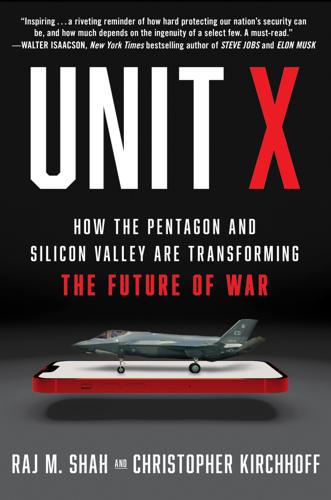
Unit X: How the Pentagon and Silicon Valley Are Transforming the Future of War
by
Raj M. Shah
and
Christopher Kirchhoff
Published 8 Jul 2024
Users were able to verify their identity via a government biometric database. On the app you can do everything from pay taxes to renew passports, register a vehicle, or create an LLC. After the invasion, programmers in the digital ministry quickly added features for citizens to report Russian forces. A system of crowd-sourced intelligence was thus built out of an app every Ukrainian already used daily. Diia used an encrypted messaging service to transmit pictures taken by citizens to servers in the Ministry of Defense, which scanned the images to locate and identify targets. The result was known as Ukraine’s “Uber for Artillery,” with citizens effectively calling in requests for strikes and the Ministry of Defense carrying them out in near real time.
…
-Korea forces commander, 89–92, 98 China threat and, 239 Demilitarized Zone (DMZ), 90 as a democracy, 91 joint technology projects with allies, 239 left-of-launch solution for, 91 North Korean acts of aggression, 90 Pusan Air Base, 90 Seoul threatened by North Korea, 89–92, 98 space technology, 36, 79–80, 100 See also satellites; SpaceX SpaceX, 79, 80, 101, 123, 127, 195 lawsuit against the Air Force, 123, 127 Starlink, 201, 204, 211, 224–25, 231 Stackley, Sean, 189 Stanford University Hacking for Defense course, 84, 85, 151, 179 SAR research group at, 82 Space Rendezvous Lab, 82 “Technology, Innovation, and Great Power Competition” class, 179 Starr, Wayne, 55–56, 57, 58 Stavridis, James “Jim”, 185, 189 Stefanik, Elise, 174 Stephens, Trae, 124–28, 208 Stephenson, Randall, 128–29 Stepka, Matthew, 203 Suleyman, Mustafa, 140 Sullenberger, Chesley “Sully,” 184 Symantec, ix, 130, 149 Syria, 45, 51, 52, 153 drone factories in, 241 Taiwan, 216–18, 224, 244 Tanium cybersecurity, 99, 132 Taylor, Isaac, 20–21, 114, 243 Tech Track 2, 178–80, 230 Stanford conference, 178–79 Theranos, 102–3 Thiel, Peter, 122–23 Thornberry, Mac, 71–72, 143, 161, 222, 223 Thucydides, 218 TikTok, 137 Toyota AI Ventures, 115, 116 transformational technology China and, 136–38 Edison’s lightbulb, 135 exponential shifts and, 135 “the in-between times,” 135 startups with, 5 Western democracies, advantage over autocracies, 196–97 Trump, Donald, 44, 111, 187 AI and, 143 Bolton as National Security Advisor, 142 China policy change, 139–41 COVID-19 and, 168 expenditures on DIU, 154–55 Mattis as Secretary of Defense x, 102, 110, 153–54 McMaster as National Security Advisor, x, 139–40, 145 NSCAI interim report and, 159 Schadlow writing national security strategy, 139–40 Shah meeting with, 128–29 Syria withdrawal, 153 U.S. policy shift on foreign investment and, 150 Tseng, Brandon, and Ryan Tseng, 100–101 TSMC (Taiwan Semiconductor Manufacturing Co.), 160, 161, 177 Uber, 115 Uber Elevate, 116 Uber Works, 205–6 Ukraine, 223 AI and, 202, 206–7, 209, 210, 212, 213 battlefield of the future and, 199–218, 240 Capella satellites and, 98, 199, 200, 232 commercial technology used by, 201, 203, 214, 231–32 crowd-sourced intelligence in, 4, 207 cyberattack on, 200 DIU-led Warsaw conference on scaling tech companies, 234–36 DIU technologies used in, 203–5, 215, 223 drone war, 4, 201, 204, 206, 208–12, 231–32, 233, 234, 235, 237, 240 High Mobility Artillery Rocket Systems (HIMARS), 209 Kirchhoff and, 230–34, 236 “last-mile gap,” 206 lessons for the DoD from, 212–16 ocean drones and, 114 robotics manufacturers in, 233 Russian invasion of, 98, 114, 190, 199–218, 223, 230–37 Shah visits, 232–34 Silicon Valley and, 190, 202–3, 206, 207 sinking of the cruiser Moskva, 114 Starlink, 201, 204, 206, 211, 231 techno-guerrillas, 205–8, 223, 231, 233 technological infrastructure of, 207–8 “Uber for Artillery,” 207 U.S. funding, 203, 205 ULA (United Launch Alliance), 80, 123 Unit X.

The Measure of Progress: Counting What Really Matters
by
Diane Coyle
Published 15 Apr 2025
Th ere are several reasons p eople might engage in such prosocial behaviour (Bénabou and Tirole 2006), including reputation building, social norms, or reciprocal learning. Two studies (Nagle 2018, 2019) discuss how firms use and produce OSS. The first finds that the benefits of OSS usage are complementary with contributions to OSS, evidence of a “learning-by-contributing” mechanism where contributors crowdsource feedback on their code from more experienced contributors. The second finds that the productivity 144 Chapter Five benefits of OSS usage are also positively related to the technological sophistication of the firm under consideration, proxied by industry and IT capital intensity. In any case, the social norm among coders of posting code on GitHub or other online locations is now strong.
…
The popularity of data science software. r4stats.com. Retrieved December 21, 2023, from https://r4stats.com/articles/popularity/?utm_content=cmp-true Murgia, M. (2024). Code dependent: Living in the shadow of AI. Picador. Nagle, F. (2018). Learning by contributing: Gaining competitive advantage through contribution to crowdsourced public goods. Organization Science, 29(4), 569–587. https://doi.org /10.1287/orsc.2018.1202 Nagle, F. (2019). Open source software and firm productivity. Management Science, 65(3), 1191– 1215. https://doi.org/10.1287/mnsc.2017.2977 Nakamura, L. (2020). Evidence of accelerating mismeasurement of growth and inflation in the U.S. in the 21st century (ESCoE Discussion Paper 2020-15).
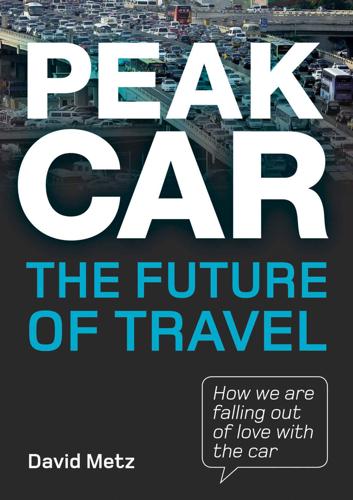
Peak Car: The Future of Travel
by
David Metz
Published 21 Jan 2014
Two kinds of services are needed: daytime routes penetrating residential neighbourhoods for older people; and evening and weekend services running fast along main roads for younger people, who employ mobile technology and social media to know when the bus is coming, data for which is supplied by the operators and by the users themselves, crowdsourced. Effective use of digital technologies to monitor bus movements and to book rail travel online is a contributing factor to reduced interest by younger people in car ownership. High‑density cities allow more choices of facilities, of shops, cinemas, jobs and leisure. Catchment areas are smaller, whether for schools or supermarkets, making walking and cycling more feasible.
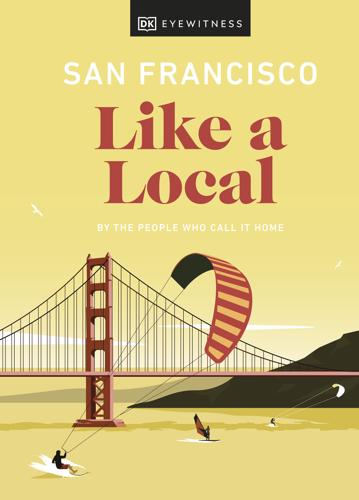
San Francisco Like a Local
by
DK Eyewitness
Published 4 Oct 2021
g Shop g Contents US Design BETABRAND LOCAL TAKE MARINE LAYER GRAVEL & GOLD TIGERLILY PERFUMERY NOOWORKS TIMBUK2 FACTORY STORE g US Design g Contents Google Map BETABRAND Map 4; 780 Valencia Street, The Mission; ///vision.estate.rescue; www.betabrand.com Where do San Franciscans go for unique threads? Betabrand, a self-professed fashion industry disruptor, where all the designs are crowdsourced, put to a public vote, and produced if enough are pre-ordered. The sell-out pieces are the “dress pant yoga pants” – work-appropriate trousers manufactured to feel as comfy as your favorite loungewear. How very San Franciscan. g US Design g Contents Google Map LOCAL TAKE Map 2; 3979B 17th Street, The Castro; ///layers.poet.atomic; www.localtakesf.com Surprisingly, there are always more locals than tourists browsing in this great gift shop, which only sells products made by Bay Area artists and designers.

Paris Like a Local
by
Dk Eyewitness
The below websites provide useful resources to make exploring the city easier. www.g7.fr Company offering accessible taxis for those with specific requirements. www.handicap.monuments-nationaux.fr French-only information for people with specific requirements when visiting sites. www.jaccede.com/en Crowd-sourced details of accessible museums, bars, restaurants and cinemas. www.parisinfo.com Official resource for visiting Paris, with an annually updated downloadable guide for travelling with specific requirements. www.ratp.fr Information on public transport options for those with reduced mobility or impaired sight.
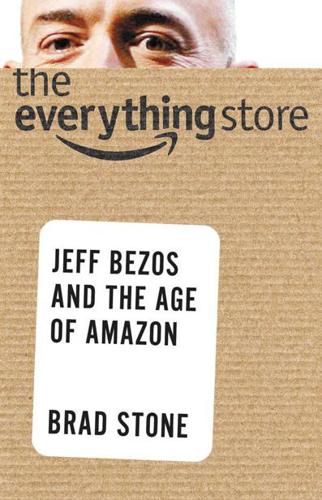
The Everything Store: Jeff Bezos and the Age of Amazon
by
Brad Stone
Published 14 Oct 2013
Not surprisingly, Google began to suck engineers out of Amazon en masse. During this time, Bezos relentlessly advocated for taking risks outside of Amazon’s core business. Between 2003 and 2005, Amazon started its own search engine and devised a way to allow customers to search for phrases inside books on the site. Bezos also helped to pioneer the modern crowd-sourcing movement with a service called Mechanical Turk and laid the groundwork for Amazon Web Services—a seminal initiative that ushered in the age of cloud computing. Bezos battled a reaction that he dubbed the institutional no, by which he meant any and all signs of internal resistance to these unorthodox moves.
…
The Cambrian Ventures executives hypothesized that they could build an online service to coordinate low-wage workers around the world and then sell access to this workforce to financial firms and other large companies. In 2001, they filed for a patent for the idea and called it a “Hybrid machine/human computing arrangement.”10 The world would later come to know this idea, and embrace it, as crowd-sourcing. But Project Agreya was ahead of its time, and financial firms didn’t know quite what to make of it. The Agreya team was in New York trying to pitch the concept the week of 9/11. Venture capital dried up after the terrorist attacks, so they shut down Project Agreya and moved on. In 2003 Rajaraman and Harinarayan decided to close Cambrian Ventures to work on a new company called Kosmix, which would develop technology to organize information on the Web by specific topics.
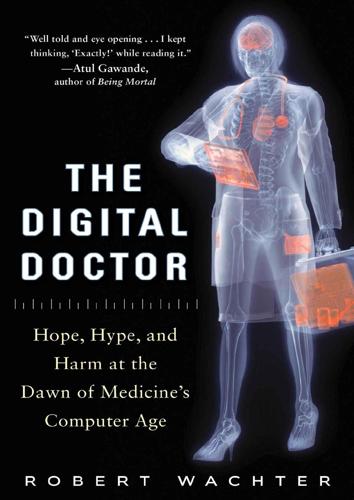
The Digital Doctor: Hope, Hype, and Harm at the Dawn of Medicine’s Computer Age
by
Robert Wachter
Published 7 Apr 2015
In 2008, he also cofounded Castlight Health, now a publicly traded company; it provides quality and cost data to employers and insurers. In 2012, President Obama named him the nation’s chief technology officer, and he was instrumental in fixing the disastrous healthcare.gov website and introducing big data and crowdsourcing approaches to the federal government. 36 Since the missed diagnosis of the first U.S. Ebola patient took place at an Epic facility, and the Texas hospital initially blamed its EHR for the error (a position that the hospital retracted the next day), athena’s prompt revision of its intake module was accompanied, unsurprisingly, by a press release that described the company’s cloud-facilitated nimbleness. 37 In February, 2015, athena and John Halamka’s Beth Israel Deaconess Medical Center (one of the few large hospitals still using a homegrown electronic health record) announced a deal to co-develop a cloud-based inpatient EHR.
…
One of the positive aspects of our new digital world is that it creates new ways for patients to be active participants in their care. As exciting as this is, I also worry about it. With the advent of widespread and increasingly expensive copayments and deductibles, the temptation for patients to self-diagnose, self-treat, and crowdsource medical advice over the Web will become irresistible. After all, how many of us consult “expert” restaurant reviews anymore? We trust the wisdom of crowds on sites like Yelp and TripAdvisor. As we enter a similarly information-rich world in healthcare, patients will face this question with greater frequency: When do I really need to consult with, and trust, a credentialed expert?
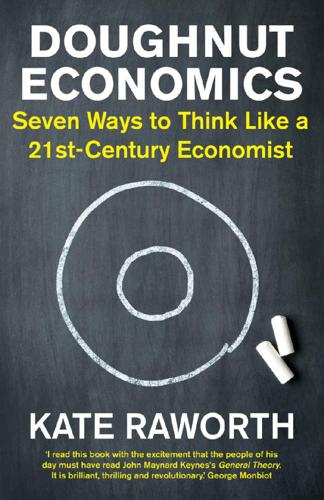
Doughnut Economics: Seven Ways to Think Like a 21st-Century Economist
by
Kate Raworth
Published 22 Mar 2017
Imagine such a peer-to-peer platform built on all the features that make for top-quality collaborative networks: ‘resource recipes’ listing the tools, materials and skills required to replicate each item; user ratings and reviews of every design; photographs and diagrams tracking how those designs evolve; and portals for similar communities – such as solar-rich urban slums or drought-prone villages – to learn alongside each other’s errors and successes.99 Creating such a platform will be disruptive because, says Joshua Pearce, ‘it will become a true rival to the paradigm of technology development that has dominated civilization since the industrial revolution’.100 But it needs start-up funding, be it from foundations, governments, the UN, or via crowdsourcing. And it needs new forms of open-source licensing too, to ensure that old-style intellectual property claims – patents, copyright and trademarks – do not encroach upon the resurgent knowledge commons. William was offered a scholarship to study at a US university and is now a 28-year-old graduate with plans to set up a makerspace and innovation centre in Malawi for school and university students.
…
Page numbers in italics denote illustrations A Aalborg, Denmark, 290 Abbott, Anthony ‘Tony’, 31 ABCD group, 148 Abramovitz, Moses, 262 absolute decoupling, 260–61 Acemoglu, Daron, 86 advertising, 58, 106–7, 112, 281 Agbodjinou, Sénamé, 231 agriculture, 5, 46, 72–3, 148, 155, 178, 181, 183 Alaska, 9 Alaska Permanent Fund, 194 Alperovitz, Gar, 177 alternative enterprise designs, 190–91 altruism, 100, 104 Amazon, 192, 196, 276 Amazon rainforest, 105–6, 253 American Economic Association, 3 American Enterprise Institute, 67 American Tobacco Corporation, 107 Andes, 54 animal spirits, 110 Anthropocene epoch, 48, 253 anthropocentrism, 115 Apertuso, 230 Apple, 85, 192 Archer Daniels Midland (ADM), 148 Arendt, Hannah, 115–16 Argentina, 55, 274 Aristotle, 32, 272 Arrow, Kenneth, 134 Articles of Association and Memoranda, 233 Arusha, Tanzania, 202 Asia Wage Floor Alliance, 177 Asian financial crisis (1997), 90 Asknature.org, 232 Athens, 57 austerity, 163 Australia, 31, 103, 177, 180, 211, 224–6, 255, 260 Austria, 263, 274 availability bias, 112 AXIOM, 230 Axtell, Robert, 150 Ayres, Robert, 263 B B Corp, 241 Babylon, 13 Baker, Josephine, 157 balancing feedback loops, 138–41, 155, 271 Ballmer, Steve, 231 Bangla Pesa, 185–6, 293 Bangladesh, 10, 226 Bank for International Settlements, 256 Bank of America, 149 Bank of England, 145, 147, 256 banking, see under finance Barnes, Peter, 201 Barroso, José Manuel, 41 Bartlett, Albert Allen ‘Al’, 247 basic income, 177, 194, 199–201 basic personal values, 107–9 Basle, Switzerland, 80 Bauwens, Michel, 197 Beckerman, Wilfred, 258 Beckham, David, 171 Beech-Nut Packing Company, 107 behavioural economics, 11, 111–14 behavioural psychology, 103, 128 Beinhocker, Eric, 158 Belgium, 236, 252 Bentham, Jeremy, 98 Benyus, Janine, 116, 218, 223–4, 227, 232, 237, 241 Berger, John, 12, 281 Berlin Wall, 141 Bermuda, 277 Bernanke, Ben, 146 Bernays, Edward, 107, 112, 281–3 Bhopal gas disaster (1984), 9 Bible, 19, 114, 151 Big Bang (1986), 87 billionaires, 171, 200, 289 biodiversity, 10, 46, 48–9, 52, 85, 115, 155, 208, 210, 242, 299 as common pool resource, 201 and land conversion, 49 and inequality, 172 and reforesting, 50 biomass, 73, 118, 210, 212, 221 biomimicry, 116, 218, 227, 229 bioplastic, 224, 293 Birmingham, West Midlands, 10 Black, Fischer, 100–101 Blair, Anthony ‘Tony’, 171 Blockchain, 187, 192 blood donation, 104, 118 Body Shop, The, 232–4 Bogotá, Colombia, 119 Bolivia, 54 Boston, Massachusetts, 3 Bowen, Alex, 261 Bowles, Sam, 104 Box, George, 22 Boyce, James, 209 Brasselberg, Jacob, 187 Brazil, 124, 226, 281, 290 bread riots, 89 Brisbane, Australia, 31 Brown, Gordon, 146 Brynjolfsson, Erik, 193, 194, 258 Buddhism, 54 buen vivir, 54 Bullitt Center, Seattle, 217 Bunge, 148 Burkina Faso, 89 Burmark, Lynell, 13 business, 36, 43, 68, 88–9 automation, 191–5, 237, 258, 278 boom and bust, 246 and circular economy, 212, 215–19, 220, 224, 227–30, 232–4, 292 and complementary currencies, 184–5, 292 and core economy, 80 and creative destruction, 142 and feedback loops, 148 and finance, 183, 184 and green growth, 261, 265, 269 and households, 63, 68 living metrics, 241 and market, 68, 88 micro-businesses, 9 and neoliberalism, 67, 87 ownership, 190–91 and political funding, 91–2, 171–2 and taxation, 23, 276–7 workers’ rights, 88, 91, 269 butterfly economy, 220–42 C C–ROADS (Climate Rapid Overview and Decision Support), 153 C40 network, 280 calculating man, 98 California, United States, 213, 224, 293 Cambodia, 254 Cameron, David, 41 Canada, 196, 255, 260, 281, 282 cancer, 124, 159, 196 Capital Institute, 236 carbon emissions, 49–50, 59, 75 and decoupling, 260, 266 and forests, 50, 52 and inequality, 58 reduction of, 184, 201, 213, 216–18, 223–7, 239–41, 260, 266 stock–flow dynamics, 152–4 taxation, 201, 213 Cargill, 148 Carney, Mark, 256 Caterpillar, 228 Catholic Church, 15, 19 Cato Institute, 67 Celts, 54 central banks, 6, 87, 145, 146, 147, 183, 184, 256 Chang, Ha-Joon, 82, 86, 90 Chaplin, Charlie, 157 Chiapas, Mexico, 121–2 Chicago Board Options Exchange (CBOE), 100–101 Chicago School, 34, 99 Chile, 7, 42 China, 1, 7, 48, 154, 289–90 automation, 193 billionaires, 200, 289 greenhouse gas emissions, 153 inequality, 164 Lake Erhai doughnut analysis, 56 open-source design, 196 poverty reduction, 151, 198 renewable energy, 239 tiered pricing, 213 Chinese Development Bank, 239 chrematistics, 32, 273 Christianity, 15, 19, 114, 151 cigarettes, 107, 124 circular economy, 220–42, 257 Circular Flow diagram, 19–20, 28, 62–7, 64, 70, 78, 87, 91, 92, 93, 262 Citigroup, 149 Citizen Reaction Study, 102 civil rights movement, 77 Cleveland, Ohio, 190 climate change, 1, 3, 5, 29, 41, 45–53, 63, 74, 75–6, 91, 141, 144, 201 circular economy, 239, 241–2 dynamics of, 152–5 and G20, 31 and GDP growth, 255, 256, 260, 280 and heuristics, 114 and human rights, 10 and values, 126 climate positive cities, 239 closed systems, 74 coffee, 221 cognitive bias, 112–14 Colander, David, 137 Colombia, 119 common-pool resources, 82–3, 181, 201–2 commons, 69, 82–4, 287 collaborative, 78, 83, 191, 195, 196, 264, 292 cultural, 83 digital, 82, 83, 192, 197, 281 and distribution, 164, 180, 181–2, 205, 267 Embedded Economy, 71, 73, 77–8, 82–4, 85, 92 knowledge, 197, 201–2, 204, 229, 231, 292 commons and money creation, see complementary currencies natural, 82, 83, 180, 181–2, 201, 265 and regeneration, 229, 242, 267, 292 and state, 85, 93, 197, 237 and systems, 160 tragedy of, 28, 62, 69, 82, 181 triumph of, 83 and values, 106, 108 Commons Trusts, 201 complementary currencies, 158, 182–8, 236, 292 complex systems, 28, 129–62 complexity science, 136–7 Consumer Reaction Study, 102 consumerism, 58, 102, 121, 280–84 cooking, 45, 80, 186 Coote, Anna, 278 Copenhagen, Denmark, 124 Copernicus, Nicolaus, 14–15 copyright, 195, 197, 204 core economy, 79–80 Corporate To Do List, 215–19 Costa Rica, 172 Council of Economic Advisers, US, 6, 37 Cox, Jo, 117 cradle to cradle, 224 creative destruction, 142 Cree, 282 Crompton, Tom, 125–6 cross-border flows, 89–90 crowdsourcing, 204 cuckoos, 32, 35, 36, 38, 40, 54, 60, 159, 244, 256, 271 currencies, 182–8, 236, 274, 292 D da Vinci, Leonardo, 13, 94–5 Dallas, Texas, 120 Daly, Herman, 74, 143, 271 Danish Nudging Network, 124 Darwin, Charles, 14 Debreu, Gerard, 134 debt, 37, 146–7, 172–3, 182–5, 247, 255, 269 decoupling, 193, 210, 258–62, 273 defeat device software, 216 deforestation, 49–50, 74, 208, 210 degenerative linear economy, 211–19, 222–3, 237 degrowth, 244 DeMartino, George, 161 democracy, 77, 171–2, 258 demurrage, 274 Denmark, 180, 275, 290 deregulation, 82, 87, 269 derivatives, 100–101, 149 Devas, Charles Stanton, 97 Dey, Suchitra, 178 Diamond, Jared, 154 diarrhoea, 5 differential calculus, 131, 132 digital revolution, 191–2, 264 diversify–select–amplify, 158 double spiral, 54 Doughnut model, 10–11, 11, 23–5, 44, 51 and aspiration, 58–9, 280–84 big picture, 28, 42, 61–93 distribution, 29, 52, 57, 58, 76, 93, 158, 163–205 ecological ceiling, 10, 11, 44, 45, 46, 49, 51, 218, 254, 295, 298 goal, 25–8, 31–60 and governance, 57, 59 growth agnosticism, 29–30, 243–85 human nature, 28–9, 94–128 and population, 57–8 regeneration, 29, 158, 206–42 social foundation, 10, 11, 44, 45, 49, 51, 58, 77, 174, 200, 254, 295–6 systems, 28, 129–62 and technology, 57, 59 Douglas, Margaret, 78–9 Dreyfus, Louis, 148 ‘Dumb and Dumber in Macroeconomics’ (Solow), 135 Durban, South Africa, 214 E Earning by Learning, 120 Earth-system science, 44–53, 115, 216, 288, 298 Easter Island, 154 Easterlin, Richard, 265–6 eBay, 105, 192 eco-literacy, 115 ecological ceiling, 10, 11, 44, 45, 46, 49, 51, 218, 254, 295, 298 Ecological Performance Standards, 241 Econ 101 course, 8, 77 Economics (Lewis), 114 Economics (Samuelson), 19–20, 63–7, 70, 74, 78, 86, 91, 92, 93, 262 Economy for the Common Good, 241 ecosystem services, 7, 116, 269 Ecuador, 54 education, 9, 43, 45, 50–52, 85, 169–70, 176, 200, 249, 279 economic, 8, 11, 18, 22, 24, 36, 287–93 environmental, 115, 239–40 girls’, 57, 124, 178, 198 online, 83, 197, 264, 290 pricing, 118–19 efficient market hypothesis, 28, 62, 68, 87 Egypt, 48, 89 Eisenstein, Charles, 116 electricity, 9, 45, 236, 240 and Bangla Pesa, 186 cars, 231 Ethereum, 187–8 and MONIAC, 75, 262 pricing, 118, 213 see also renewable energy Elizabeth II, Queen of the United Kingdom, 145 Ellen MacArthur Foundation, 220 Embedded Economy, 71–93, 263 business, 88–9 commons, 82–4 Earth, 72–6 economy, 77–8 finance, 86–8 household, 78–81 market, 81–2 power, 91–92 society, 76–7 state, 84–6 trade, 89–90 employment, 36, 37, 51, 142, 176 automation, 191–5, 237, 258, 278 labour ownership, 188–91 workers’ rights, 88, 90, 269 Empty World, 74 Engels, Friedrich, 88 environment and circular economy, 220–42, 257 conservation, 121–2 and degenerative linear economy, 211–19, 222–3 degradation, 5, 9, 10, 29, 44–53, 74, 154, 172, 196, 206–42 education on, 115, 239–40 externalities, 152 fair share, 216–17 and finance, 234–7 generosity, 218–19, 223–7 green growth, 41, 210, 243–85 nudging, 123–5 taxation and quotas, 213–14, 215 zero impact, 217–18, 238, 241 Environmental Dashboard, 240–41 environmental economics, 7, 11, 114–16 Environmental Kuznets Curve, 207–11, 241 environmental space, 54 Epstein, Joshua, 150 equilibrium theory, 134–62 Ethereum, 187–8 ethics, 160–62 Ethiopia, 9, 226, 254 Etsy, 105 Euclid, 13, 15 European Central Bank, 145, 275 European Commission, 41 European Union (EU), 92, 153, 210, 222, 255, 258 Evergreen Cooperatives, 190 Evergreen Direct Investing (EDI), 273 exogenous shocks, 141 exponential growth, 39, 246–85 externalities, 143, 152, 213 Exxon Valdez oil spill (1989), 9 F Facebook, 192 fair share, 216–17 Fama, Eugene, 68, 87 fascism, 234, 277 Federal Reserve, US, 87, 145, 146, 271, 282 feedback loops, 138–41, 143, 148, 155, 250, 271 feminist economics, 11, 78–81, 160 Ferguson, Thomas, 91–2 finance animal spirits, 110 bank runs, 139 Black–Scholes model, 100–101 boom and bust, 28–9, 110, 144–7 and Circular Flow, 63–4, 87 and complex systems, 134, 138, 139, 140, 141, 145–7 cross-border flows, 89 deregulation, 87 derivatives, 100–101, 149 and distribution, 169, 170, 173, 182–4, 198–9, 201 and efficient market hypothesis, 63, 68 and Embedded Economy, 71, 86–8 and financial-instability hypothesis, 87, 146 and GDP growth, 38 and media, 7–8 mobile banking, 199–200 and money creation, 87, 182–5 and regeneration, 227, 229, 234–7 in service to life, 159, 234–7 stakeholder finance, 190 and sustainability, 216, 235–6, 239 financial crisis (2008), 1–4, 5, 40, 63, 86, 141, 144, 278, 290 and efficient market hypothesis, 87 and equilibrium theory, 134, 145 and financial-instability hypothesis, 87 and inequality, 90, 170, 172, 175 and money creation, 182 and worker’s rights, 278 financial flows, 89 Financial Times, 183, 266, 289 financial-instability hypothesis, 87, 146 First Green Bank, 236 First World War (1914–18), 166, 170 Fisher, Irving, 183 fluid values, 102, 106–9 food, 3, 43, 45, 50, 54, 58, 59, 89, 198 food banks, 165 food price crisis (2007–8), 89, 90, 180 Ford, 277–8 foreign direct investment, 89 forest conservation, 121–2 fossil fuels, 59, 73, 75, 92, 212, 260, 263 Foundations of Economic Analysis (Samuelson), 17–18 Foxconn, 193 framing, 22–3 France, 43, 165, 196, 238, 254, 256, 281, 290 Frank, Robert, 100 free market, 33, 37, 67, 68, 70, 81–2, 86, 90 free open-source hardware (FOSH), 196–7 free open-source software (FOSS), 196 free trade, 70, 90 Freeman, Ralph, 18–19 freshwater cycle, 48–9 Freud, Sigmund, 107, 281 Friedman, Benjamin, 258 Friedman, Milton, 34, 62, 66–9, 84–5, 88, 99, 183, 232 Friends of the Earth, 54 Full World, 75 Fuller, Buckminster, 4 Fullerton, John, 234–6, 273 G G20, 31, 56, 276, 279–80 G77, 55 Gal, Orit, 141 Gandhi, Mohandas, 42, 293 Gangnam Style, 145 Gardens of Democracy, The (Liu & Hanauer), 158 gender equality, 45, 51–2, 57, 78–9, 85, 88, 118–19, 124, 171, 198 generosity, 218–19, 223–9 geometry, 13, 15 George, Henry, 149, 179 Georgescu-Roegen, Nicholas, 252 geothermal energy, 221 Gerhardt, Sue, 283 Germany, 2, 41, 100, 118, 165, 189, 211, 213, 254, 256, 260, 274 Gessel, Silvio, 274 Ghent, Belgium, 236 Gift Relationship, The (Titmuss), 118–19 Gigerenzer, Gerd, 112–14 Gintis, Herb, 104 GiveDirectly, 200 Glass–Steagall Act (1933), 87 Glennon, Roger, 214 Global Alliance for Tax Justice, 277 global material footprints, 210–11 Global Village Construction Set, 196 globalisation, 89 Goerner, Sally, 175–6 Goffmann, Erving, 22 Going for Growth, 255 golden rule, 91 Goldman Sachs, 149, 170 Gómez-Baggethun, Erik, 122 Goodall, Chris, 211 Goodwin, Neva, 79 Goody, Jade, 124 Google, 192 Gore, Albert ‘Al’, 172 Gorgons, 244, 256, 257, 266 graffiti, 15, 25, 287 Great Acceleration, 46, 253–4 Great Depression (1929–39), 37, 70, 170, 173, 183, 275, 277, 278 Great Moderation, 146 Greece, Ancient, 4, 13, 32, 48, 54, 56–7, 160, 244 green growth, 41, 210, 243–85 Greenham, Tony, 185 greenhouse gas emissions, 31, 46, 50, 75–6, 141, 152–4 and decoupling, 260, 266 and Environmental Kuznets Curve, 208, 210 and forests, 50, 52 and G20, 31 and inequality, 58 reduction of, 184, 201–2, 213, 216–18, 223–7, 239–41, 256, 259–60, 266, 298 stock–flow dynamics, 152–4 and taxation, 201, 213 Greenland, 141, 154 Greenpeace, 9 Greenspan, Alan, 87 Greenwich, London, 290 Grenoble, France, 281 Griffiths, Brian, 170 gross domestic product (GDP), 25, 31–2, 35–43, 57, 60, 84, 164 as cuckoo, 32, 35, 36, 38, 40, 54, 60, 159, 244, 256, 271 and Environmental Kuznets Curve, 207–11 and exponential growth, 39, 53, 246–85 and growth agnosticism, 29–30, 240, 243–85 and inequality, 173 and Kuznets Curve, 167, 173, 188–9 gross national product (GNP), 36–40 Gross World Product, 248 Grossman, Gene, 207–8, 210 ‘grow now, clean up later’, 207 Guatemala, 196 H Haifa, Israel, 120 Haldane, Andrew, 146 Han Dynasty, 154 Hanauer, Nick, 158 Hansen, Pelle, 124 Happy Planet Index, 280 Hardin, Garrett, 69, 83, 181 Harvard University, 2, 271, 290 von Hayek, Friedrich, 7–8, 62, 66, 67, 143, 156, 158 healthcare, 43, 50, 57, 85, 123, 125, 170, 176, 200, 269, 279 Heilbroner, Robert, 53 Henry VIII, King of England and Ireland, 180 Hepburn, Cameron, 261 Herbert Simon, 111 heuristics, 113–14, 118, 123 high-income countries growth, 30, 244–5, 254–72, 282 inequality, 165, 168, 169, 171 labour, 177, 188–9, 278 overseas development assistance (ODA), 198–9 resource intensive lifestyles, 46, 210–11 trade, 90 Hippocrates, 160 History of Economic Analysis (Schumpeter), 21 HIV/AIDS, 123 Holocene epoch, 46–8, 75, 115, 253 Homo economicus, 94–103, 109, 127–8 Homo sapiens, 38, 104, 130 Hong Kong, 180 household, 78 housing, 45, 59, 176, 182–3, 269 Howe, Geoffrey, 67 Hudson, Michael, 183 Human Development Index, 9, 279 human nature, 28 human rights, 10, 25, 45, 49, 50, 95, 214, 233 humanistic economics, 42 hydropower, 118, 260, 263 I Illinois, United States, 179–80 Imago Mundi, 13 immigration, 82, 199, 236, 266 In Defense of Economic Growth (Beckerman), 258 Inclusive Wealth Index, 280 income, 51, 79–80, 82, 88, 176–8, 188–91, 194, 199–201 India, 2, 9, 10, 42, 124, 164, 178, 196, 206–7, 242, 290 Indonesia, 90, 105–6, 164, 168, 200 Indus Valley civilisation, 48 inequality, 1, 5, 25, 41, 63, 81, 88, 91, 148–52, 209 and consumerism, 111 and democracy, 171 and digital revolution, 191–5 and distribution, 163–205 and environmental degradation, 172 and GDP growth, 173 and greenhouse gas emissions, 58 and intellectual property, 195–8 and Kuznets Curve, 29, 166–70, 173–4 and labour ownership, 188–91 and land ownership, 178–82 and money creation, 182–8 and social welfare, 171 Success to the Successful, 148, 149, 151, 166 inflation, 36, 248, 256, 275 insect pollination services, 7 Institute of Economic Affairs, 67 institutional economics, 11 intellectual property rights, 195–8, 204 interest, 36, 177, 182, 184, 275–6 Intergovernmental Panel on Climate Change, 25 International Monetary Fund (IMF), 170, 172, 173, 183, 255, 258, 271 Internet, 83–4, 89, 105, 192, 202, 264 Ireland, 277 Iroquois Onondaga Nation, 116 Israel, 100, 103, 120 Italy, 165, 196, 254 J Jackson, Tim, 58 Jakubowski, Marcin, 196 Jalisco, Mexico, 217 Japan, 168, 180, 211, 222, 254, 256, 263, 275 Jevons, William Stanley, 16, 97–8, 131, 132, 137, 142 John Lewis Partnership, 190 Johnson, Lyndon Baines, 37 Johnson, Mark, 38 Johnson, Todd, 191 JPMorgan Chase, 149, 234 K Kahneman, Daniel, 111 Kamkwamba, William, 202, 204 Kasser, Tim, 125–6 Keen, Steve, 146, 147 Kelly, Marjorie, 190–91, 233 Kennedy, John Fitzgerald, 37, 250 Kennedy, Paul, 279 Kenya, 118, 123, 180, 185–6, 199–200, 226, 292 Keynes, John Maynard, 7–8, 22, 66, 69, 134, 184, 251, 277–8, 284, 288 Kick It Over movement, 3, 289 Kingston, London, 290 Knight, Frank, 66, 99 knowledge commons, 202–4, 229, 292 Kokstad, South Africa, 56 Kondratieff waves, 246 Korzybski, Alfred, 22 Krueger, Alan, 207–8, 210 Kuhn, Thomas, 22 Kumhof, Michael, 172 Kuwait, 255 Kuznets, Simon, 29, 36, 39–40, 166–70, 173, 174, 175, 204, 207 KwaZulu Natal, South Africa, 56 L labour ownership, 188–91 Lake Erhai, Yunnan, 56 Lakoff, George, 23, 38, 276 Lamelara, Indonesia, 105–6 land conversion, 49, 52, 299 land ownership, 178–82 land-value tax, 73, 149, 180 Landesa, 178 Landlord’s Game, The, 149 law of demand, 16 laws of motion, 13, 16–17, 34, 129, 131 Lehman Brothers, 141 Leopold, Aldo, 115 Lesotho, 118, 199 leverage points, 159 Lewis, Fay, 178 Lewis, Justin, 102 Lewis, William Arthur, 114, 167 Lietaer, Bernard, 175, 236 Limits to Growth, 40, 154, 258 Linux, 231 Liu, Eric, 158 living metrics, 240–42 living purpose, 233–4 Lomé, Togo, 231 London School of Economics (LSE), 2, 34, 65, 290 London Underground, 12 loss aversion, 112 low-income countries, 90, 164–5, 168, 173, 180, 199, 201, 209, 226, 254, 259 Lucas, Robert, 171 Lula da Silva, Luiz Inácio, 124 Luxembourg, 277 Lyle, John Tillman, 214 Lyons, Oren, 116 M M–PESA, 199–200 MacDonald, Tim, 273 Machiguenga, 105–6 MacKenzie, Donald, 101 macroeconomics, 36, 62–6, 76, 80, 134–5, 145, 147, 150, 244, 280 Magie, Elizabeth, 149, 153 Malala effect, 124 malaria, 5 Malawi, 118, 202, 204 Malaysia, 168 Mali, Taylor, 243 Malthus, Thomas, 252 Mamsera Rural Cooperative, 190 Manhattan, New York, 9, 41 Mani, Muthukumara, 206 Manitoba, 282 Mankiw, Gregory, 2, 34 Mannheim, Karl, 22 Maoris, 54 market, 81–2 and business, 88 circular flow, 64 and commons, 83, 93, 181, 200–201 efficiency of, 28, 62, 68, 87, 148, 181 and equilibrium theory, 131–5, 137, 143–7, 155, 156 free market, 33, 37, 67–70, 90, 208 and households, 63, 69, 78, 79 and maxi-max rule, 161 and pricing, 117–23, 131, 160 and rational economic man, 96, 100–101, 103, 104 and reciprocity, 105, 106 reflexivity of, 144–7 and society, 69–70 and state, 84–6, 200, 281 Marshall, Alfred, 17, 98, 133, 165, 253, 282 Marx, Karl, 88, 142, 165, 272 Massachusetts Institute of Technology (MIT), 17–20, 152–5 massive open online courses (MOOCs), 290 Matthew Effect, 151 Max-Neef, Manfred, 42 maxi-max rule, 161 maximum wage, 177 Maya civilisation, 48, 154 Mazzucato, Mariana, 85, 195, 238 McAfee, Andrew, 194, 258 McDonough, William, 217 Meadows, Donella, 40, 141, 159, 271, 292 Medusa, 244, 257, 266 Merkel, Angela, 41 Messerli, Elspeth, 187 Metaphors We Live By (Lakoff & Johnson), 38 Mexico, 121–2, 217 Michaels, Flora S., 6 micro-businesses, 9, 173, 178 microeconomics, 132–4 microgrids, 187–8 Micronesia, 153 Microsoft, 231 middle class, 6, 46, 58 middle-income countries, 90, 164, 168, 173, 180, 226, 254 migration, 82, 89–90, 166, 195, 199, 236, 266, 286 Milanovic, Branko, 171 Mill, John Stuart, 33–4, 73, 97, 250, 251, 283, 284, 288 Millo, Yuval, 101 minimum wage, 82, 88, 176 Minsky, Hyman, 87, 146 Mises, Ludwig von, 66 mission zero, 217 mobile banking, 199–200 mobile phones, 222 Model T revolution, 277–8 Moldova, 199 Mombasa, Kenya, 185–6 Mona Lisa (da Vinci), 94 money creation, 87, 164, 177, 182–8, 205 MONIAC (Monetary National Income Analogue Computer), 64–5, 75, 142, 262 Monoculture (Michaels), 6 Monopoly, 149 Mont Pelerin Society, 67, 93 Moral Consequences of Economic Growth, The (Friedman), 258 moral vacancy, 41 Morgan, Mary, 99 Morogoro, Tanzania, 121 Moyo, Dambisa, 258 Muirhead, Sam, 230, 231 MultiCapital Scorecard, 241 Murphy, David, 264 Murphy, Richard, 185 musical tastes, 110 Myriad Genetics, 196 N national basic income, 177 Native Americans, 115, 116, 282 natural capital, 7, 116, 269 Natural Economic Order, The (Gessel), 274 Nedbank, 216 negative externalities, 213 negative interest rates, 275–6 neoclassical economics, 134, 135 neoliberalism, 7, 62–3, 67–70, 81, 83, 84, 88, 93, 143, 170, 176 Nepal, 181, 199 Nestlé, 217 Netherlands, 211, 235, 224, 226, 238, 277 networks, 110–11, 117, 118, 123, 124–6, 174–6 neuroscience, 12–13 New Deal, 37 New Economics Foundation, 278, 283 New Year’s Day, 124 New York, United States, 9, 41, 55 Newlight Technologies, 224, 226, 293 Newton, Isaac, 13, 15–17, 32–3, 95, 97, 129, 131, 135–7, 142, 145, 162 Nicaragua, 196 Nigeria, 164 nitrogen, 49, 52, 212–13, 216, 218, 221, 226, 298 ‘no pain, no gain’, 163, 167, 173, 204, 209 Nobel Prize, 6–7, 43, 83, 101, 167 Norway, 281 nudging, 112, 113, 114, 123–6 O Obama, Barack, 41, 92 Oberlin, Ohio, 239, 240–41 Occupy movement, 40, 91 ocean acidification, 45, 46, 52, 155, 242, 298 Ohio, United States, 190, 239 Okun, Arthur, 37 onwards and upwards, 53 Open Building Institute, 196 Open Source Circular Economy (OSCE), 229–32 open systems, 74 open-source design, 158, 196–8, 265 open-source licensing, 204 Organisation for Economic Co-operation and Development (OECD), 38, 210, 255–6, 258 Origin of Species, The (Darwin), 14 Ormerod, Paul, 110, 111 Orr, David, 239 Ostrom, Elinor, 83, 84, 158, 160, 181–2 Ostry, Jonathan, 173 OSVehicle, 231 overseas development assistance (ODA), 198–200 ownership of wealth, 177–82 Oxfam, 9, 44 Oxford University, 1, 36 ozone layer, 9, 50, 115 P Pachamama, 54, 55 Pakistan, 124 Pareto, Vilfredo, 165–6, 175 Paris, France, 290 Park 20|20, Netherlands, 224, 226 Parker Brothers, 149 Patagonia, 56 patents, 195–6, 197, 204 patient capital, 235 Paypal, 192 Pearce, Joshua, 197, 203–4 peer-to-peer networks, 187, 192, 198, 203, 292 People’s QE, 184–5 Perseus, 244 Persia, 13 Peru, 2, 105–6 Phillips, Adam, 283 Phillips, William ‘Bill’, 64–6, 75, 142, 262 phosphorus, 49, 52, 212–13, 218, 298 Physiocrats, 73 Pickett, Kate, 171 pictures, 12–25 Piketty, Thomas, 169 Playfair, William, 16 Poincaré, Henri, 109, 127–8 Polanyi, Karl, 82, 272 political economy, 33–4, 42 political funding, 91–2, 171–2 political voice, 43, 45, 51–2, 77, 117 pollution, 29, 45, 52, 85, 143, 155, 206–17, 226, 238, 242, 254, 298 population, 5, 46, 57, 155, 199, 250, 252, 254 Portugal, 211 post-growth society, 250 poverty, 5, 9, 37, 41, 50, 88, 118, 148, 151 emotional, 283 and inequality, 164–5, 168–9, 178 and overseas development assistance (ODA), 198–200 and taxation, 277 power, 91–92 pre-analytic vision, 21–2 prescription medicines, 123 price-takers, 132 prices, 81, 118–23, 131, 160 Principles of Economics (Mankiw), 34 Principles of Economics (Marshall), 17, 98 Principles of Political Economy (Mill), 288 ProComposto, 226 Propaganda (Bernays), 107 public relations, 107, 281 public spending v. investment, 276 public–private patents, 195 Putnam, Robert, 76–7 Q quantitative easing (QE), 184–5 Quebec, 281 Quesnay, François, 16, 73 R Rabot, Ghent, 236 Rancière, Romain, 172 rating and review systems, 105 rational economic man, 94–103, 109, 111, 112, 126, 282 Reagan, Ronald, 67 reciprocity, 103–6, 117, 118, 123 reflexivity of markets, 144 reinforcing feedback loops, 138–41, 148, 250, 271 relative decoupling, 259 renewable energy biomass energy, 118, 221 and circular economy, 221, 224, 226, 235, 238–9, 274 and commons, 83, 85, 185, 187–8, 192, 203, 264 geothermal energy, 221 and green growth, 257, 260, 263, 264, 267 hydropower, 118, 260, 263 pricing, 118 solar energy, see solar energy wave energy, 221 wind energy, 75, 118, 196, 202–3, 221, 233, 239, 260, 263 rentier sector, 180, 183, 184 reregulation, 82, 87, 269 resource flows, 175 resource-intensive lifestyles, 46 Rethinking Economics, 289 Reynebeau, Guy, 237 Ricardo, David, 67, 68, 73, 89, 250 Richardson, Katherine, 53 Rifkin, Jeremy, 83, 264–5 Rise and Fall of the Great Powers, The (Kennedy), 279 risk, 112, 113–14 Robbins, Lionel, 34 Robinson, James, 86 Robinson, Joan, 142 robots, 191–5, 237, 258, 278 Rockefeller Foundation, 135 Rockford, Illinois, 179–80 Rockström, Johan, 48, 55 Roddick, Anita, 232–4 Rogoff, Kenneth, 271, 280 Roman Catholic Church, 15, 19 Rombo, Tanzania, 190 Rome, Ancient, 13, 48, 154 Romney, Mitt, 92 Roosevelt, Franklin Delano, 37 rooted membership, 190 Rostow, Walt, 248–50, 254, 257, 267–70, 284 Ruddick, Will, 185 rule of thumb, 113–14 Ruskin, John, 42, 223 Russia, 200 rust belt, 90, 239 S S curve, 251–6 Sainsbury’s, 56 Samuelson, Paul, 17–21, 24–5, 38, 62–7, 70, 74, 84, 91, 92, 93, 262, 290–91 Sandel, Michael, 41, 120–21 Sanergy, 226 sanitation, 5, 51, 59 Santa Fe, California, 213 Santinagar, West Bengal, 178 São Paolo, Brazil, 281 Sarkozy, Nicolas, 43 Saumweder, Philipp, 226 Scharmer, Otto, 115 Scholes, Myron, 100–101 Schumacher, Ernst Friedrich, 42, 142 Schumpeter, Joseph, 21 Schwartz, Shalom, 107–9 Schwarzenegger, Arnold, 163, 167, 204 ‘Science and Complexity’ (Weaver), 136 Scotland, 57 Seaman, David, 187 Seattle, Washington, 217 second machine age, 258 Second World War (1939–45), 18, 37, 70, 170 secular stagnation, 256 self-interest, 28, 68, 96–7, 99–100, 102–3 Selfish Society, The (Gerhardt), 283 Sen, Amartya, 43 Shakespeare, William, 61–3, 67, 93 shale gas, 264, 269 Shang Dynasty, 48 shareholders, 82, 88, 189, 191, 227, 234, 273, 292 sharing economy, 264 Sheraton Hotel, Boston, 3 Siegen, Germany, 290 Silicon Valley, 231 Simon, Julian, 70 Sinclair, Upton, 255 Sismondi, Jean, 42 slavery, 33, 77, 161 Slovenia, 177 Small Is Beautiful (Schumacher), 42 smart phones, 85 Smith, Adam, 33, 57, 67, 68, 73, 78–9, 81, 96–7, 103–4, 128, 133, 160, 181, 250 social capital, 76–7, 122, 125, 172 social contract, 120, 125 social foundation, 10, 11, 44, 45, 49, 51, 58, 77, 174, 200, 254, 295–6 social media, 83, 281 Social Progress Index, 280 social pyramid, 166 society, 76–7 solar energy, 59, 75, 111, 118, 187–8, 190 circular economy, 221, 222, 223, 224, 226–7, 239 commons, 203 zero-energy buildings, 217 zero-marginal-cost revolution, 84 Solow, Robert, 135, 150, 262–3 Soros, George, 144 South Africa, 56, 177, 214, 216 South Korea, 90, 168 South Sea Bubble (1720), 145 Soviet Union (1922–91), 37, 67, 161, 279 Spain, 211, 238, 256 Spirit Level, The (Wilkinson & Pickett), 171 Sraffa, Piero, 148 St Gallen, Switzerland, 186 Stages of Economic Growth, The (Rostow), 248–50, 254 stakeholder finance, 190 Standish, Russell, 147 state, 28, 33, 69–70, 78, 82, 160, 176, 180, 182–4, 188 and commons, 85, 93, 197, 237 and market, 84–6, 200, 281 partner state, 197, 237–9 and robots, 195 stationary state, 250 Steffen, Will, 46, 48 Sterman, John, 66, 143, 152–4 Steuart, James, 33 Stiglitz, Joseph, 43, 111, 196 stocks and flows, 138–41, 143, 144, 152 sub-prime mortgages, 141 Success to the Successful, 148, 149, 151, 166 Sugarscape, 150–51 Summers, Larry, 256 Sumner, Andy, 165 Sundrop Farms, 224–6 Sunstein, Cass, 112 supply and demand, 28, 132–6, 143, 253 supply chains, 10 Sweden, 6, 255, 275, 281 swishing, 264 Switzerland, 42, 66, 80, 131, 186–7, 275 T Tableau économique (Quesnay), 16 tabula rasa, 20, 25, 63, 291 takarangi, 54 Tanzania, 121, 190, 202 tar sands, 264, 269 taxation, 78, 111, 165, 170, 176, 177, 237–8, 276–9 annual wealth tax, 200 environment, 213–14, 215 global carbon tax, 201 global financial transactions tax, 201, 235 land-value tax, 73, 149, 180 non-renewable resources, 193, 237–8, 278–9 People’s QE, 185 tax relief v. tax justice, 23, 276–7 TED (Technology, Entertainment, Design), 202, 258 Tempest, The (Shakespeare), 61, 63, 93 Texas, United States, 120 Thailand, 90, 200 Thaler, Richard, 112 Thatcher, Margaret, 67, 69, 76 Theory of Moral Sentiments (Smith), 96 Thompson, Edward Palmer, 180 3D printing, 83–4, 192, 198, 231, 264 thriving-in-balance, 54–7, 62 tiered pricing, 213–14 Tigray, Ethiopia, 226 time banking, 186 Titmuss, Richard, 118–19 Toffler, Alvin, 12, 80 Togo, 231, 292 Torekes, 236–7 Torras, Mariano, 209 Torvalds, Linus, 231 trade, 62, 68–9, 70, 89–90 trade unions, 82, 176, 189 trademarks, 195, 204 Transatlantic Trade and Investment Partnership (TTIP), 92 transport, 59 trickle-down economics, 111, 170 Triodos, 235 Turkey, 200 Tversky, Amos, 111 Twain, Mark, 178–9 U Uganda, 118, 125 Ulanowicz, Robert, 175 Ultimatum Game, 105, 117 unemployment, 36, 37, 276, 277–9 United Kingdom Big Bang (1986), 87 blood donation, 118 carbon dioxide emissions, 260 free trade, 90 global material footprints, 211 money creation, 182 MONIAC (Monetary National Income Analogue Computer), 64–5, 75, 142, 262 New Economics Foundation, 278, 283 poverty, 165, 166 prescription medicines, 123 wages, 188 United Nations, 55, 198, 204, 255, 258, 279 G77 bloc, 55 Human Development Index, 9, 279 Sustainable Development Goals, 24, 45 United States American Economic Association meeting (2015), 3 blood donation, 118 carbon dioxide emissions, 260 Congress, 36 Council of Economic Advisers, 6, 37 Earning by Learning, 120 Econ 101 course, 8, 77 Exxon Valdez oil spill (1989), 9 Federal Reserve, 87, 145, 146, 271, 282 free trade, 90 Glass–Steagall Act (1933), 87 greenhouse gas emissions, 153 global material footprint, 211 gross national product (GNP), 36–40 inequality, 170, 171 land-value tax, 73, 149, 180 political funding, 91–2, 171 poverty, 165, 166 productivity and employment, 193 rust belt, 90, 239 Transatlantic Trade and Investment Partnership (TTIP), 92 wages, 188 universal basic income, 200 University of Berkeley, 116 University of Denver, 160 urbanisation, 58–9 utility, 35, 98, 133 V values, 6, 23, 34, 35, 42, 117, 118, 121, 123–6 altruism, 100, 104 anthropocentric, 115 extrinsic, 115 fluid, 28, 102, 106–9 and networks, 110–11, 117, 118, 123, 124–6 and nudging, 112, 113, 114, 123–6 and pricing, 81, 120–23 Veblen, Thorstein, 82, 109, 111, 142 Venice, 195 verbal framing, 23 Verhulst, Pierre, 252 Victor, Peter, 270 Viner, Jacob, 34 virtuous cycles, 138, 148 visual framing, 23 Vitruvian Man, 13–14 Volkswagen, 215–16 W Wacharia, John, 186 Wall Street, 149, 234, 273 Wallich, Henry, 282 Walras, Léon, 131, 132, 133–4, 137 Ward, Barbara, 53 Warr, Benjamin, 263 water, 5, 9, 45, 46, 51, 54, 59, 79, 213–14 wave energy, 221 Ways of Seeing (Berger), 12, 281 Wealth of Nations, The (Smith), 74, 78, 96, 104 wealth ownership, 177–82 Weaver, Warren, 135–6 weightless economy, 261–2 WEIRD (Western, educated, industrialised, rich, democratic), 103–5, 110, 112, 115, 117, 282 West Bengal, India, 124, 178 West, Darrell, 171–2 wetlands, 7 whale hunting, 106 Wiedmann, Tommy, 210 Wikipedia, 82, 223 Wilkinson, Richard, 171 win–win trade, 62, 68, 89 wind energy, 75, 118, 196, 202–3, 221, 233, 239, 260, 263 Wizard of Oz, The, 241 Woelab, 231, 293 Wolf, Martin, 183, 266 women’s rights, 33, 57, 107, 160, 201 and core economy, 69, 79–81 education, 57, 124, 178, 198 and land ownership, 178 see also gender equality workers’ rights, 88, 91, 269 World 3 model, 154–5 World Bank, 6, 41, 119, 164, 168, 171, 206, 255, 258 World No Tobacco Day, 124 World Trade Organization, 6, 89 worldview, 22, 54, 115 X xenophobia, 266, 277, 286 Xenophon, 4, 32, 56–7, 160 Y Yandle, Bruce, 208 Yang, Yuan, 1–3, 289–90 yin yang, 54 Yousafzai, Malala, 124 YouTube, 192 Yunnan, China, 56 Z Zambia, 10 Zanzibar, 9 Zara, 276 Zeitvorsoge, 186–7 zero environmental impact, 217–18, 238, 241 zero-hour contracts, 88 zero-humans-required production, 192 zero-interest loans, 183 zero-marginal-cost revolution, 84, 191, 264 zero-waste manufacturing, 227 Zinn, Howard, 77 PICTURE ACKNOWLEDGEMENTS Illustrations are reproduced by kind permission of: archive.org
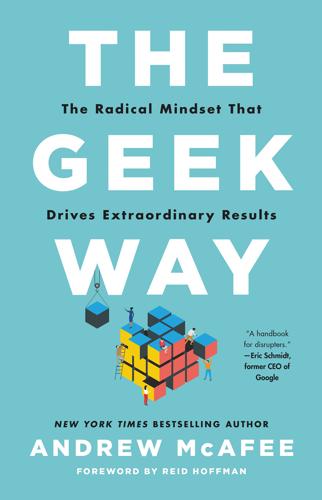
The Geek Way: The Radical Mindset That Drives Extraordinary Results
by
Andrew McAfee
Published 14 Nov 2023
So we don’t. Instead, most of us evaluate others’ arguments naturally and automatically, and are good at rejecting the bad ones. This is by design, and evolution, of course, is the designer. We saw in chapter 3 that evolution crowdsourced the knowledge about making fire from the individual to the group. Something very similar has happened with ideas: evolution has crowdsourced evaluating them to the group, not to the individual who originated them. Our minds are deeply justificatory with their own ideas, and just as deeply argumentative with others’. This is the viewpoint laid out by cognitive scientists Hugo Mercier and Dan Sperber, who offer an ultimate perspective on how reasoning works in us Homo ultrasocialis.
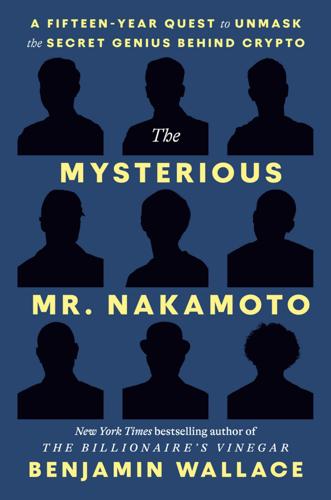
The Mysterious Mr. Nakamoto: A Fifteen-Year Quest to Unmask the Secret Genius Behind Crypto
by
Benjamin Wallace
Published 18 Mar 2025
Dustin was a thirty-year-old hacker who liked to learn by participating; away from his computer, he was a cosplay enthusiast. He’d dabbled in metal-backed alt-currencies, such as one called the Liberty Dollar, and donated his computers’ spare processing cycles to SETI@home, a long-running UC Berkeley experiment in crowdsourcing analysis of radio-telescope data as part of a search for extraterrestrial intelligence. After learning about Bitcoin, Dustin diverted half of those computers to run its software, just because he saw it as a cool tech project. Later, he’d become interested in libertarian monetary ideas. Dustin exchanged a few emails with Nakamoto, letting Bitcoin’s creator know that “electronic currency and cryptography are two things that I am very interested in” and offering to help with the project.
…
The Gizmodo reporters sounded confident that Wright was Nakamoto, asserting that the emailed cache had been “corroborated in interviews,” but they acknowledged that “writing about Satoshi Nakamoto…is a treacherous exercise.” Both articles mentioned a trust, domiciled in the Seychelles, that supposedly held 1.1 million bitcoins and belonged to Wright and Kleiman. In response to the Wired and Gizmodo bombshells, CSI Reddit crowdsourced reasons to be doubtful. A Bitcoin developer named Greg Maxwell showed that Wright’s PGP key had likely been created using software that didn’t exist at the time of its supposed creation. Motherboard’s Sarah Jeong showed how a public directory of PGP keys hosted at MIT, which suggested that Wright’s key had been created prior to 2008, could easily have been manipulated.
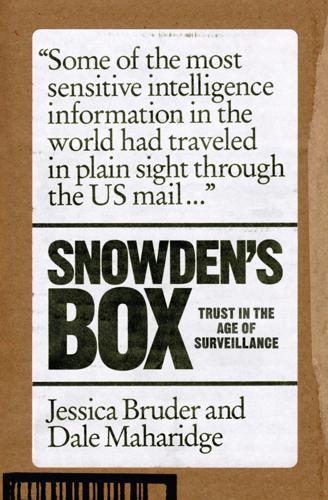
Snowden's Box: Trust in the Age of Surveillance
by
Jessica Bruder
and
Dale Maharidge
Published 29 Mar 2020
After all, it was clear from the Freedom of the Press website — where Micah had posted his fingerprint — that he and Laura were colleagues. On top of that, Micah seemed trustworthy. His public key had been vouched for by some of the most respected figures in the world of digital privacy. That made it a reliable node in the crowdsourced, decentralized verification system that encryption users call a “web of trust.” It’s easy to go down a rabbit hole when you’re talking about how to build trust in the digital world. That’s why so much writing about blockchain is inscrutable. But the basic principle behind using a web of trust to leverage credibility is simple.
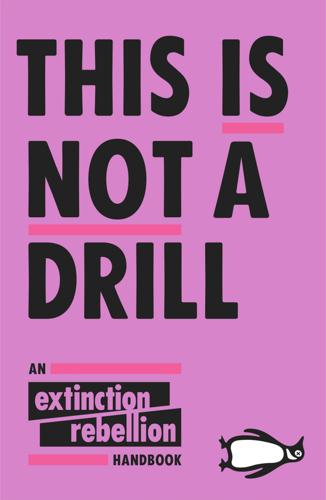
This Is Not a Drill: An Extinction Rebellion Handbook
by
Extinction Rebellion
Published 12 Jun 2019
Examples abound of community- and place-making that challenge the uncommon corporate city and show glimpses of novel forms of citizen housing, common ownership, social/solidarity economy, community wealth, citizens forums, civil disobedience, attempts to revive local places, neighbourhoods and high streets, as well as to reclaim land. The Cleveland Model, Co-operation Jackson, the shack-dwellers movement, renters’ unions, housing cooperatives, open-source digital manufacture and crowd-sourced city plans are all showing how to reverse-engineer city communities and democracies to become places of safety and equality. Saving the city requires building a common city, which can put into reverse the pro-growth capitalist city. So what’s the overall place that this points to? A car-free, negative-emissions, commons-based bio city.
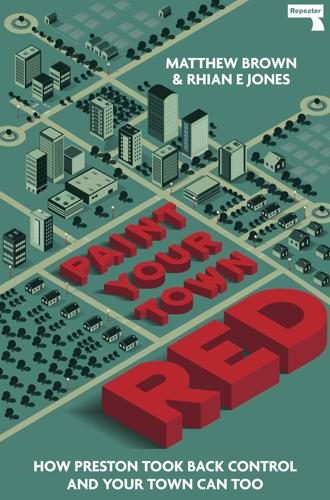
Paint Your Town Red
by
Matthew Brown
Published 14 Jun 2021
The campaign group Generation Rent has a database of local renters’ unions. https://www.generationrent.org/near_you Insourcing Rebuilding Capacity — The case for insourcing public contracts. https://www.apse.org.uk/apse/assets/File/Insourcing%20(web).pdf Guardian coverage of UK local government insourcing. https://www.theguardian.com/society/2019/may/29/bringing-services-back-in-house-is-good-councils Investment ShareAction — works towards a responsible investment system geared towards the long-term interests of savers, society, and the environment: https://shareaction.org Article on community wealth benefits of local investment from Retirement Systems of Alabama. https://www.al.com/opinion/2019/06/numbers-show-significant-growth-of-retirement-systems-of-alabama-rsa-from-1973-and-2018.html Unison Scotland paper on opportunities for public pension funds to finance social housing. https://www.unison-scotland.org/innovative-pensions-fund-plan-for-new-social-housing-in-scotland-2 Municipalism Fearless Cities: a global municipalist network of neighbourhood movements, mayors and local councillors. http://fearlesscities.com/en Commonspolis: an international platform aimed at strengthening and unifying municipalism. https://commonspolis.org/en/ Minim: a crowd-sourced project to connect and disseminate the work of people, governments and political platforms working on municipalism. https://minim-municipalism.org Participatory Budgeting https://www.local.gov.uk/topics/devolution/engaging-citizens-devolution/approaches-civic-and-democratic-engagement-0 https://www.involve.org.uk/resources/methods/participatory-budgeting https://participedia.net/method/146 https://assets.publishing.service.gov.uk/government/uploads/system/uploads/attachment_data/file/6152/19932231.pdf — 2011 study of participatory budgeting initiatives in the UK https://pbnetwork.org.uk — advocates for learning and innovation in participatory budgeting through sharing information and policy papers and occasional learning events.
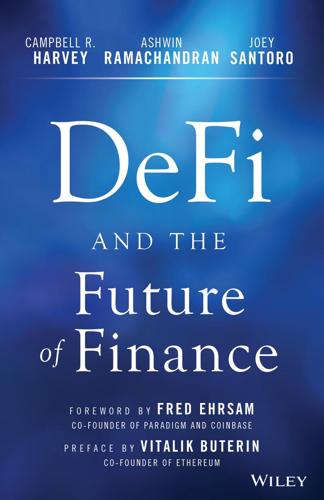
DeFi and the Future of Finance
by
Campbell R. Harvey
,
Ashwin Ramachandran
,
Joey Santoro
,
Vitalik Buterin
and
Fred Ehrsam
Published 23 Aug 2021
The price per token opened around $3 with a total market cap of over $500 million, amounting to $1,200 of liquid value distributed directly to each user. This flood of supply could have led to selling pressure that tanked the token price. Instead, the token price spiked to over $8 before settling in the $4–5 range. Through UNI, Uniswap effectively crowdsourced capital to build and scale its business, which attained a unicorn valuation for a short time. This demonstrates the value the community places in the token and the platform because the majority of supply is still held by those who received the airdrop. As evidence that Uniswap is a good idea, it has been largely copied by Sushiswap.20 Furthermore, the CFMM has been generalized by Balancer,21 in which more than two markets can be supported in a liquidity pool.

Work Rules!: Insights From Inside Google That Will Transform How You Live and Lead
by
Laszlo Bock
Published 31 Mar 2015
Does Google still support that kind of privacy?”).viii Any question is fair game, and every question deserves an answer. Even the way the questions are chosen is rooted in transparency, using a tool (awkwardly) called Hangouts On Air Q&A. Users can not only submit questions, but also discuss and vote on them. This crowdsourcing prioritizes questions that reflect the interests of an audience. In 2008, President-elect Obama’s transition team used this tool as part of their Open for Questions events, a series of nationwide town halls where everyone in the country was invited to submit questions for the president to answer.
…
Charlotte Monico, a London-based member of our people operations team, is one of over a dozen Googlers to have taken part in the Olympic games. Vint Cerf, known as “the co-father of the Internet” for his seminal work co-inventing the Internet, is our lead evangelist. The inventor of the optical mouse (Dick Lyon) and founders or cofounders of Excite (Joe Kraus and Graham Spencer), Ushahidi (a crowdsourcing utility that allows citizen journalists and eyewitnesses to report violence in Africa, created by Ory Okolloh), Chrome (Sundar Pichai and Linus Upson), and Digg (Kevin Rose) work alongside one another and tens of thousands of other remarkable people. How can you tell if you have found someone exceptional?
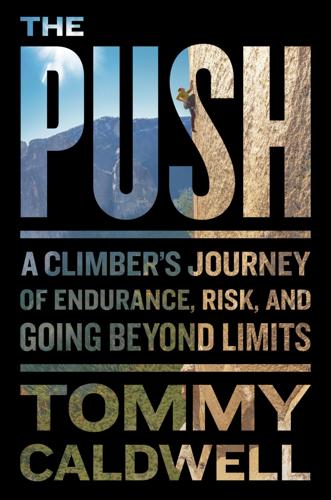
The Push: A Climber's Search for the Path
by
Tommy Caldwell
Published 15 May 2017
Although Kevin hadn’t officially bailed on the project, I hadn’t heard much from him through the summer. I needed to plan accordingly in case he wasn’t into it anymore. Most of my past climbs had been done with a single dedicated partner. I wondered if a better approach for the Dawn Wall would be to crowdsource belayers. Becca came to Yosemite that season, and although she was willing to belay me, I didn’t want to add potential stress to our relationship. I wanted her to enjoy Yosemite. So I organized a network of friends to come up on the wall throughout the autumn. Surprisingly, people were eager to sleep on a portaledge in exchange for a little belay duty.
…
My obsessiveness can blind me. I chuckle to myself, thinking that this makes a great mantra for life: If you find yourself failing over and over, sometimes it’s best to just give up and find another way. • • • It’s our eleventh day on the wall. Kevin stares at his fingertips. He decides to crowdsource finger taping and skin care techniques through Facebook. Doctors from around the globe chime in. He spends most of the day sorting through advice and playing with different ideas. By evening, he’s found a technique he wants to try. He rips the tape into three-millimeter-wide strips, douses his fingertip in superglue, then half mummy wraps, half basket weaves the tape all the way down to his second knuckle.
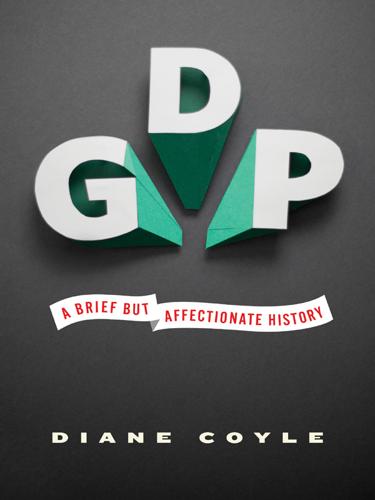
GDP: A Brief but Affectionate History
by
Diane Coyle
Published 23 Feb 2014
This accounts for the confusing debate under way among economists about the implications for jobs and incomes, including income distribution, of the current wave of capital investment in digital equipment and machines. A related issue is how to account for the value of a specific type of intangible product or service, the purely digital items such as online music, search engines, apps, crowd-sourced encyclopedias or software, and so on. Often these have a price of zero, and with no market price they are not captured in GDP statistics. As Erik Brynjolfsson and Adam Saunders put it, in a nod to the famous statement by Robert Solow about computers, “We see the influence of the information age everywhere, except in the GDP statistics.”13 So, for example, the record industry’s sales of music have declined in dollar terms, but there is almost certainly more rather than less listening to music.
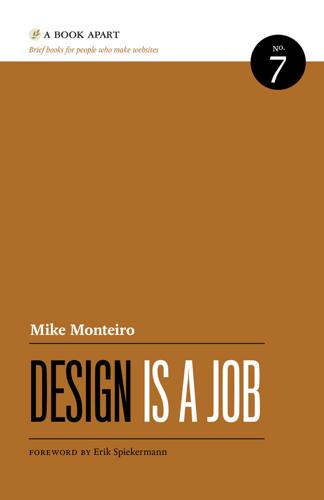
Design Is a Job
by
Mike Monteiro
Published 5 Mar 2012
You’ll find that your rates will fluctuate as the market for design ebbs and flows. But if you are not confident in the value of your work, there’s no way you’ll be comfortable charging a fair price. Approaching Pricing A few years ago I was fortunate enough to work with a company called Kickstart (not to be confused with Kickstarter, the excellent crowd-sourcing project funding service). Kickstart is an NGO (non-governmental organization) that designs and manufactures low-cost water pumps for use in impoverished agricultural areas of the world, mainly in Eastern Africa. They have an amazing track record of helping people lift themselves out of poverty by using these simple, easy-to-fix water pumps to irrigate crops.
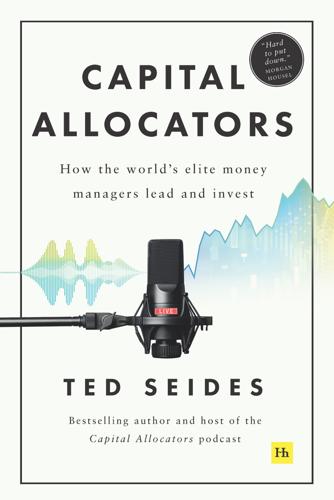
Capital Allocators: How the World’s Elite Money Managers Lead and Invest
by
Ted Seides
Published 23 Mar 2021
Harvard Business School case study #693019-PDF-ENG, Toyota Motor Manufacturing, U.S.A., Inc., 1992. 15. This reference check worked best when my administrative assistant conducted the call. 16. I found these examples from answers to a question I posted on Twitter. For this audience, Twitter can be a wonderful crowdsourced encyclopedia. Follow me @tseides and join in! Chapter 2: Decision-Making “If Danny Kahneman still commits these behavioral errors himself, how is Drew Dickson not going to?” – Drew Dickson Back in 2007, a good friend of mine led the due diligence on a European hedge fund run by a former Soros Fund Management portfolio manager.
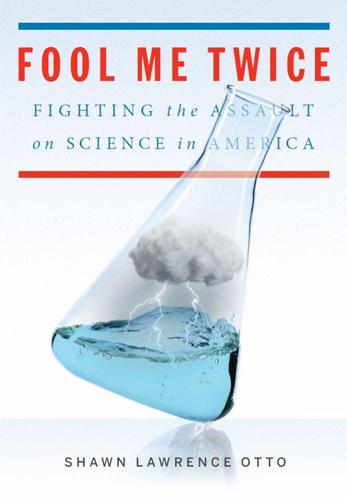
Fool Me Twice: Fighting the Assault on Science in America
by
Shawn Lawrence Otto
Published 10 Oct 2011
They carefully carved out a new, secular form of government based on limited powers for the authorities and reservation of most freedoms for the people, including freedom of inquiry and expression and freedom of and from religion. The founding documents guaranteed protection of these freedoms and of the people’s right to experiment with and modify their government—by using an eighteenth-century version of crowdsourcing—and this was something entirely new. It was not coincidental with the scientific revolution, but was rather, as Ferris and others have indicated, the natural outgrowth of it.2 The liberties these founding principles afforded have in turn produced the highest standard of living, the greatest scientific and technological advances, and the greatest power in the history of the planet.
…
In it, Coke wrote, The law of nature is that which God at the time of creation of the nature of man infused into his heart, for his preservation and direction.8 And in an often-quoted section of his 1628 Institutes of the Lawes of England, Coke broadened this idea in an important way that for the first time turned to the crowdsourcing model the American founders would eventually adopt. Seeking to limit the caprice of the “Royal Prerogative” by which the king claimed the authority to do whatever he wanted because he was king, Coke argued that natural law motivated individual men, but “an infinite number of grave and learned men” working over “successions of ages” could refine and perfect the laws derived from this initial natural moral basis.
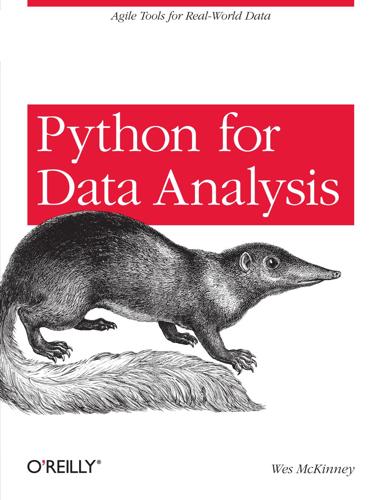
Python for Data Analysis
by
Wes McKinney
Published 30 Dec 2011
See Figure 8-23 for the resulting plot: In [93]: scatter_matrix(trans_data, diagonal='kde', color='k', alpha=0.3) Figure 8-23. Scatter plot matrix of statsmodels macro data Plotting Maps: Visualizing Haiti Earthquake Crisis Data Ushahidi is a non-profit software company that enables crowdsourcing of information related to natural disasters and geopolitical events via text message. Many of these data sets are then published on their website for analysis and visualization. I downloaded the data collected during the 2010 Haiti earthquake crisis and aftermath, and I’ll show you how I prepared the data for analysis and visualization using pandas and other tools we have looked at thus far.
…
beta function, Random Number Generation, Group Factor Exposures defined, Group Factor Exposures between_time method, Time of Day and “as of” Data Selection bfill method, Reindexing bin edges, Downsampling binary data formats, Storing Arrays on Disk in Binary Format–Storing Arrays on Disk in Binary Format, Binary Data Formats–Reading Microsoft Excel Files, Using HDF5 Format–Using HDF5 Format, Reading Microsoft Excel Files–Reading Microsoft Excel Files HDF5, Using HDF5 Format–Using HDF5 Format Microsoft Excel files, Reading Microsoft Excel Files–Reading Microsoft Excel Files storing arrays in, Storing Arrays on Disk in Binary Format–Storing Arrays on Disk in Binary Format binary moving window functions, Binary Moving Window Functions–Binary Moving Window Functions binary search of lists, Binary search and maintaining a sorted list–Binary search and maintaining a sorted list binary universal functions, Universal Functions: Fast Element-wise Array Functions binding, Variables and pass-by-reference, Closures: Functions that Return Functions defined, Variables and pass-by-reference variables, Closures: Functions that Return Functions binomial function, Random Number Generation bisect module, Binary search and maintaining a sorted list, Binary search and maintaining a sorted list bookmarking directories in IPython, Directory Bookmark System–Directory Bookmark System Boolean, Data Types for ndarrays, Boolean Indexing–Boolean Indexing, Methods for Boolean Arrays–Methods for Boolean Arrays, Booleans–Booleans arrays, Methods for Boolean Arrays–Methods for Boolean Arrays data type, Data Types for ndarrays, Booleans–Booleans indexing for arrays, Boolean Indexing–Boolean Indexing bottleneck library, Moving Window Functions braces ({}), Dict brackets ([]), Tuple, List break keyword, for loops broadcasting, Basic Indexing and Slicing, Repeating Elements: Tile and Repeat, Broadcasting–Setting Array Values by Broadcasting, Broadcasting, Broadcasting Over Other Axes–Broadcasting Over Other Axes, Setting Array Values by Broadcasting–Setting Array Values by Broadcasting defined, Basic Indexing and Slicing, Repeating Elements: Tile and Repeat, Broadcasting over other axes, Broadcasting Over Other Axes–Broadcasting Over Other Axes setting array values by, Setting Array Values by Broadcasting–Setting Array Values by Broadcasting bucketing, Bucketing Donation Amounts–Bucketing Donation Amounts C calendar module, Date and Time Data Types and Tools casting, Data Types for ndarrays cat method, Reading and Writing Data in Text Format, Vectorized string functions in pandas Categorical object, Discretization and Binning ceil function, Universal Functions: Fast Element-wise Array Functions center method, Vectorized string functions in pandas Chaco, Chaco–Chaco chisquare function, Random Number Generation chunksize argument, Reading and Writing Data in Text Format, Reading Text Files in Pieces, Reading Text Files in Pieces clearing screen shortcut, Keyboard Shortcuts clipboard, executing code from, Executing Code from the Clipboard–IPython interaction with editors and IDEs clock function, Timing Code: %time and %timeit close method, A Brief matplotlib API Primer, A Brief matplotlib API Primer, Files and the operating system closures, Closures: Functions that Return Functions–Closures: Functions that Return Functions cmd.exe, Windows collections module, Default values colons, Indentation, not braces cols option, Pivot Tables and Cross-Tabulation columns, grouping on, Selecting a Column or Subset of Columns–Selecting a Column or Subset of Columns column_stack function, Concatenating and Splitting Arrays combinations function, itertools module combine_first method, Combining and Merging Data Sets, Combining Data with Overlap, Combining Data with Overlap combining, Combining Data with Overlap–Combining Data with Overlap, Splicing Together Data Sources–Splicing Together Data Sources, Concatenating and combining lists–Concatenating and combining lists data sources, Splicing Together Data Sources–Splicing Together Data Sources data sources, with overlap, Combining Data with Overlap–Combining Data with Overlap lists, Concatenating and combining lists–Concatenating and combining lists commands, Keyboard Shortcuts, Using the Command History–Logging the Input and Output, Searching and Reusing the Command History–Searching and Reusing the Command History, Input and Output Variables–Input and Output Variables, Logging the Input and Output–Logging the Input and Output, Interactive Debugger, Interactive Debugger (see also magic commands) debugger, Interactive Debugger history in IPython, Using the Command History–Logging the Input and Output, Searching and Reusing the Command History–Searching and Reusing the Command History, Input and Output Variables–Input and Output Variables, Logging the Input and Output–Logging the Input and Output input and output variables, Input and Output Variables–Input and Output Variables logging of, Logging the Input and Output–Logging the Input and Output reusing command history, Searching and Reusing the Command History–Searching and Reusing the Command History searching for, Keyboard Shortcuts comment argument, Reading and Writing Data in Text Format comments in Python, Comments–Comments compile method, Regular expressions, Regular expressions complex128 data type, Data Types for ndarrays complex256 data type, Data Types for ndarrays complex64 data type, Data Types for ndarrays concat function, US Baby Names 1880-2010, Combining and Merging Data Sets, Merging on Index, Concatenating Along an Axis, Concatenating Along an Axis, Apply: General split-apply-combine, Concatenating and Splitting Arrays, Concatenating and Splitting Arrays, Concatenating and Splitting Arrays concatenating, Concatenating Along an Axis–Concatenating Along an Axis, Concatenating and Splitting Arrays–Stacking helpers: r_ and c_ along axis, Concatenating Along an Axis–Concatenating Along an Axis arrays, Concatenating and Splitting Arrays–Stacking helpers: r_ and c_ conditional logic as array operation, Expressing Conditional Logic as Array Operations–Expressing Conditional Logic as Array Operations conferences, Community and Conferences configuring matplotlib, matplotlib Configuration–matplotlib Configuration conforming, Reindexing contains method, Vectorized string functions in pandas contiguous memory, The Importance of Contiguous Memory–The Importance of Contiguous Memory continue keyword, for loops continuous return, Future Contract Rolling convention argument, Resampling and Frequency Conversion converting, Converting between string and datetime–Converting between string and datetime, Converting Timestamps to Periods (and Back)–Converting Timestamps to Periods (and Back) between string and datetime, Converting between string and datetime–Converting between string and datetime timestamps to periods, Converting Timestamps to Periods (and Back)–Converting Timestamps to Periods (and Back) coordinated universal time (UTC), Time Zone Handling copy argument, Database-style DataFrame Merges copy method, DataFrame copysign function, Universal Functions: Fast Element-wise Array Functions corr method, Correlation and Covariance, Correlation and Covariance correlation, Correlation and Covariance–Correlation and Covariance corrwith method, Correlation and Covariance cos function, Universal Functions: Fast Element-wise Array Functions cosh function, Universal Functions: Fast Element-wise Array Functions count method, Summarizing and Computing Descriptive Statistics, String Object Methods, Vectorized string functions in pandas, Data Aggregation, Tuple methods Counter class, Counting Time Zones in Pure Python cov method, Correlation and Covariance, Correlation and Covariance covariance, Correlation and Covariance–Correlation and Covariance CPython, Installation and Setup cross-section, Financial and Economic Data Applications crosstab function, Cross-Tabulations: Crosstab–Cross-Tabulations: Crosstab crowdsourcing, Plotting Maps: Visualizing Haiti Earthquake Crisis Data CSV files, Manually Working with Delimited Formats–Manually Working with Delimited Formats, Plotting Maps: Visualizing Haiti Earthquake Crisis Data Ctrl-A keyboard shortcut, Keyboard Shortcuts Ctrl-B keyboard shortcut, Keyboard Shortcuts Ctrl-C keyboard shortcut, Keyboard Shortcuts Ctrl-E keyboard shortcut, Keyboard Shortcuts Ctrl-F keyboard shortcut, Keyboard Shortcuts Ctrl-K keyboard shortcut, Keyboard Shortcuts Ctrl-L keyboard shortcut, Keyboard Shortcuts Ctrl-N keyboard shortcut, Keyboard Shortcuts Ctrl-P keyboard shortcut, Keyboard Shortcuts Ctrl-R keyboard shortcut, Keyboard Shortcuts Ctrl-Shift-V keyboard shortcut, Keyboard Shortcuts Ctrl-U keyboard shortcut, Keyboard Shortcuts cummax method, Summarizing and Computing Descriptive Statistics cummin method, Summarizing and Computing Descriptive Statistics cumprod method, Mathematical and Statistical Methods, Summarizing and Computing Descriptive Statistics cumsum method, Mathematical and Statistical Methods, Summarizing and Computing Descriptive Statistics cumulative returns, Return Indexes and Cumulative Returns–Return Indexes and Cumulative Returns currying, Currying: Partial Argument Application–Currying: Partial Argument Application, Currying: Partial Argument Application cursor, moving with keyboard, Keyboard Shortcuts custom universal functions, Custom ufuncs–Custom ufuncs cut function, Discretization and Binning, Discretization and Binning, Discretization and Binning, Discretization and Binning, Discretization and Binning, Quantile and Bucket Analysis, Bucketing Donation Amounts Cython project, Python as Glue, Other Speed Options: Cython, f2py, C–Other Speed Options: Cython, f2py, C c_ object, Stacking helpers: r_ and c_–Stacking helpers: r_ and c_ D data aggregation, Data Aggregation–Returning Aggregated Data in “unindexed” Form, Column-wise and Multiple Function Application–Column-wise and Multiple Function Application, Returning Aggregated Data in “unindexed” Form–Returning Aggregated Data in “unindexed” Form returning data in unindexed form, Returning Aggregated Data in “unindexed” Form–Returning Aggregated Data in “unindexed” Form using multiple functions, Column-wise and Multiple Function Application–Column-wise and Multiple Function Application data alignment, Arithmetic and data alignment–Operations between DataFrame and Series, Arithmetic methods with fill values–Arithmetic methods with fill values, Operations between DataFrame and Series–Operations between DataFrame and Series arithmetic methods with fill values, Arithmetic methods with fill values–Arithmetic methods with fill values operations between DataFrame and Series, Operations between DataFrame and Series–Operations between DataFrame and Series data munging, Data Munging Topics–Return Indexes and Cumulative Returns, Time Series and Cross-Section Alignment–Time Series and Cross-Section Alignment, Operations with Time Series of Different Frequencies–Using periods instead of timestamps, Time of Day and “as of” Data Selection–Time of Day and “as of” Data Selection, Splicing Together Data Sources–Splicing Together Data Sources asof method, Time of Day and “as of” Data Selection–Time of Day and “as of” Data Selection combining data, Splicing Together Data Sources–Splicing Together Data Sources for data alignment, Time Series and Cross-Section Alignment–Time Series and Cross-Section Alignment for specialized frequencies, Operations with Time Series of Different Frequencies–Using periods instead of timestamps data structures for pandas, Introduction to pandas Data Structures–Index Objects, Series–Series, DataFrame–DataFrame, Index Objects–Index Objects, Panel Data–Panel Data DataFrame, DataFrame–DataFrame Index objects, Index Objects–Index Objects Panel, Panel Data–Panel Data Series, Series–Series data types, Data Types for ndarrays–Data Types for ndarrays, Data Types for ndarrays–Data Types for ndarrays, Date and Time Data Types and Tools–Converting between string and datetime, Converting between string and datetime–Converting between string and datetime, ndarray Object Internals–NumPy dtype Hierarchy, NumPy dtype Hierarchy–NumPy dtype Hierarchy, Nested dtypes and Multidimensional Fields–Nested dtypes and Multidimensional Fields, Scalar Types–Dates and times, Numeric types–Numeric types, Strings–Strings, Booleans–Booleans, Type casting–Type casting, None–None, Dates and times–Dates and times for arrays, Data Types for ndarrays–Data Types for ndarrays for ndarray, Data Types for ndarrays–Data Types for ndarrays for NumPy, ndarray Object Internals–NumPy dtype Hierarchy, NumPy dtype Hierarchy–NumPy dtype Hierarchy hierarchy of, NumPy dtype Hierarchy–NumPy dtype Hierarchy for Python, Scalar Types–Dates and times, Numeric types–Numeric types, Strings–Strings, Booleans–Booleans, Type casting–Type casting, None–None, Dates and times–Dates and times boolean data type, Booleans–Booleans dates and times, Dates and times–Dates and times None data type, None–None numeric data types, Numeric types–Numeric types str data type, Strings–Strings type casting in, Type casting–Type casting for time series data, Date and Time Data Types and Tools–Converting between string and datetime, Converting between string and datetime–Converting between string and datetime converting between string and datetime, Converting between string and datetime–Converting between string and datetime nested, Nested dtypes and Multidimensional Fields–Nested dtypes and Multidimensional Fields data wrangling, Combining and Merging Data Sets–Combining Data with Overlap, Database-style DataFrame Merges–Database-style DataFrame Merges, Merging on Index–Merging on Index, Concatenating Along an Axis–Concatenating Along an Axis, Combining Data with Overlap–Combining Data with Overlap, Reshaping with Hierarchical Indexing–Reshaping with Hierarchical Indexing, Pivoting “long” to “wide” Format–Pivoting “long” to “wide” Format, Data Transformation–Computing Indicator/Dummy Variables, Removing Duplicates–Removing Duplicates, Transforming Data Using a Function or Mapping–Transforming Data Using a Function or Mapping, Replacing Values–Replacing Values, Renaming Axis Indexes–Renaming Axis Indexes, Discretization and Binning–Discretization and Binning, Detecting and Filtering Outliers–Detecting and Filtering Outliers, Permutation and Random Sampling–Permutation and Random Sampling, Computing Indicator/Dummy Variables–Computing Indicator/Dummy Variables, String Manipulation–Vectorized string functions in pandas, String Object Methods–String Object Methods, Regular expressions–Regular expressions, Vectorized string functions in pandas–Vectorized string functions in pandas, Example: USDA Food Database–Example: USDA Food Database manipulating strings, String Manipulation–Vectorized string functions in pandas, String Object Methods–String Object Methods, Regular expressions–Regular expressions, Vectorized string functions in pandas–Vectorized string functions in pandas methods for, String Object Methods–String Object Methods vectorized string methods, Vectorized string functions in pandas–Vectorized string functions in pandas with regular expressions, Regular expressions–Regular expressions merging data, Combining and Merging Data Sets–Combining Data with Overlap, Database-style DataFrame Merges–Database-style DataFrame Merges, Merging on Index–Merging on Index, Concatenating Along an Axis–Concatenating Along an Axis, Combining Data with Overlap–Combining Data with Overlap combining data with overlap, Combining Data with Overlap–Combining Data with Overlap concatenating along axis, Concatenating Along an Axis–Concatenating Along an Axis DataFrame merges, Database-style DataFrame Merges–Database-style DataFrame Merges on index, Merging on Index–Merging on Index pivoting, Pivoting “long” to “wide” Format–Pivoting “long” to “wide” Format reshaping, Reshaping with Hierarchical Indexing–Reshaping with Hierarchical Indexing transforming data, Data Transformation–Computing Indicator/Dummy Variables, Removing Duplicates–Removing Duplicates, Transforming Data Using a Function or Mapping–Transforming Data Using a Function or Mapping, Replacing Values–Replacing Values, Renaming Axis Indexes–Renaming Axis Indexes, Discretization and Binning–Discretization and Binning, Detecting and Filtering Outliers–Detecting and Filtering Outliers, Permutation and Random Sampling–Permutation and Random Sampling, Computing Indicator/Dummy Variables–Computing Indicator/Dummy Variables discretization, Discretization and Binning–Discretization and Binning dummy variables, Computing Indicator/Dummy Variables–Computing Indicator/Dummy Variables filtering outliers, Detecting and Filtering Outliers–Detecting and Filtering Outliers mapping, Transforming Data Using a Function or Mapping–Transforming Data Using a Function or Mapping permutation, Permutation and Random Sampling–Permutation and Random Sampling removing duplicates, Removing Duplicates–Removing Duplicates renaming axis indexes, Renaming Axis Indexes–Renaming Axis Indexes replacing values, Replacing Values–Replacing Values USDA food database example, Example: USDA Food Database–Example: USDA Food Database databases, Interacting with Databases–Storing and Loading Data in MongoDB reading and writing to, Interacting with Databases–Storing and Loading Data in MongoDB DataFrame data structure, Counting Time Zones with pandas, MovieLens 1M Data Set, Introduction to pandas Data Structures, DataFrame–DataFrame, Operations between DataFrame and Series–Operations between DataFrame and Series, Using a DataFrame’s Columns–Using a DataFrame’s Columns, Database-style DataFrame Merges–Database-style DataFrame Merges arithmetic operations between Series and, Operations between DataFrame and Series–Operations between DataFrame and Series hierarchical indexing using, Using a DataFrame’s Columns–Using a DataFrame’s Columns merging data with, Database-style DataFrame Merges–Database-style DataFrame Merges dates and times, Index Objects, Reading and Writing Data in Text Format, Date and Time Data Types and Tools, Date and Time Data Types and Tools, Converting between string and datetime–Converting between string and datetime, Converting between string and datetime, Generating Date Ranges–Generating Date Ranges, Generating Date Ranges, Generating Date Ranges, Generating Date Ranges, Scalar Types, Dates and times–Dates and times, Dates and times (see also time series data) data types for, Date and Time Data Types and Tools, Dates and times–Dates and times date ranges, Generating Date Ranges–Generating Date Ranges datetime type, Converting between string and datetime–Converting between string and datetime, Scalar Types, Dates and times DatetimeIndex Index object, Index Objects dateutil package, Converting between string and datetime date_parser argument, Reading and Writing Data in Text Format date_range function, Generating Date Ranges, Generating Date Ranges, Generating Date Ranges dayfirst argument, Reading and Writing Data in Text Format debug function, Other ways to make use of the debugger, Other ways to make use of the debugger debugger, IPython, Interactive Debugger–Other ways to make use of the debugger in IPython, Interactive Debugger–Other ways to make use of the debugger def keyword, Functions defaults, Profiles and Configuration, Default values–Default values profiles, Profiles and Configuration values for dicts, Default values–Default values del keyword, Input and Output Variables, DataFrame, Dict delete method, Index Objects delimited formats, Manually Working with Delimited Formats–Manually Working with Delimited Formats density plots, Histograms and Density Plots–Histograms and Density Plots describe method, Summarizing and Computing Descriptive Statistics, Summarizing and Computing Descriptive Statistics, Plotting Maps: Visualizing Haiti Earthquake Crisis Data, Apply: General split-apply-combine design tips, Code Design Tips–Overcome a fear of longer files, Keep relevant objects and data alive–Keep relevant objects and data alive, Flat is better than nested–Flat is better than nested, Overcome a fear of longer files–Overcome a fear of longer files flat is better than nested, Flat is better than nested–Flat is better than nested keeping relevant objects and data alive, Keep relevant objects and data alive–Keep relevant objects and data alive overcoming fear of longer files, Overcome a fear of longer files–Overcome a fear of longer files det function, Linear Algebra development tools in IPython, Software Development Tools–Profiling a Function Line-by-Line, Interactive Debugger–Other ways to make use of the debugger, Timing Code: %time and %timeit–Timing Code: %time and %timeit, Basic Profiling: %prun and %run -p–Basic Profiling: %prun and %run -p, Profiling a Function Line-by-Line–Profiling a Function Line-by-Line debugger, Interactive Debugger–Other ways to make use of the debugger profiling code, Basic Profiling: %prun and %run -p–Basic Profiling: %prun and %run -p profiling function line-by-line, Profiling a Function Line-by-Line–Profiling a Function Line-by-Line timing code, Timing Code: %time and %timeit–Timing Code: %time and %timeit diag function, Linear Algebra dicts, Interacting with the Operating System, Grouping with Dicts and Series–Grouping with Dicts and Series, Dict–Valid dict key types, Creating dicts from sequences–Creating dicts from sequences, Default values–Default values, Valid dict key types–Valid dict key types, List, Set, and Dict Comprehensions–Nested list comprehensions creating, Creating dicts from sequences–Creating dicts from sequences default values for, Default values–Default values dict comprehensions, List, Set, and Dict Comprehensions–Nested list comprehensions grouping on, Grouping with Dicts and Series–Grouping with Dicts and Series keys for, Valid dict key types–Valid dict key types returning system environment variables as, Interacting with the Operating System diff method, Index Objects, Summarizing and Computing Descriptive Statistics difference method, Set digitize function, numpy.searchsorted: Finding elements in a Sorted Array directories, Interacting with the Operating System, Directory Bookmark System–Directory Bookmark System bookmarking in IPython, Directory Bookmark System–Directory Bookmark System changing, commands for, Interacting with the Operating System discretization, Discretization and Binning–Discretization and Binning div method, Arithmetic methods with fill values divide function, Universal Functions: Fast Element-wise Array Functions .dmg file, Apple OS X donation statistics, Donation Statistics by Occupation and Employer–Donation Statistics by Occupation and Employer, Donation Statistics by State–Donation Statistics by State by occupation and employer, Donation Statistics by Occupation and Employer–Donation Statistics by Occupation and Employer by state, Donation Statistics by State–Donation Statistics by State dot function, Linear Algebra, Linear Algebra, NumPy Matrix Class doublequote option, Manually Working with Delimited Formats downsampling, Resampling and Frequency Conversion dpi (dots-per-inch) option, Saving Plots to File, Saving Plots to File dreload function, Reloading Module Dependencies drop method, Index Objects, Dropping entries from an axis–Dropping entries from an axis, Dropping entries from an axis dropna method, Handling Missing Data drop_duplicates method, Removing Duplicates dsplit function, Concatenating and Splitting Arrays dstack function, Concatenating and Splitting Arrays dtype object, What Is This Book About?
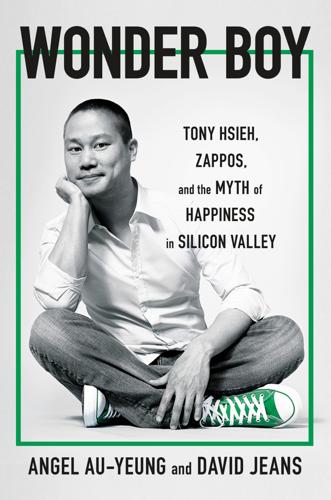
Wonder Boy: Tony Hsieh, Zappos, and the Myth of Happiness in Silicon Valley
by
Angel Au-Yeung
and
David Jeans
Published 25 Apr 2023
So they went back to the drawing board and on a weekend in March 1996 came up with the idea of LinkExchange. By building websites for local businesses, Tony and Sanjay learned that the only option for advertising online was to buy ads from tech behemoths like Yahoo or Netscape, which at a cost of as much as $10,000 a month was cost prohibitive. Just as Tony had crowdsourced study materials for his virtual Bible study group and then packaged the information into neat binders and sold it, LinkExchange enlisted small businesses to display banner ads for other companies on their websites for free. With hundreds of small business websites, LinkExchange could then sell packages of banner ads across these sites to larger companies that would pay to advertise within the LinkExchange-enlisted websites.
…
Tony then became fixated on finding ways to justify his nitrous oxide habit, and dispatched those around him to find out more about it. Victoria produced another video at his request, this one titled “The Nitrous Oxide Advantage,” a montage of psychedelic images and videos cut between sound bites from supposed experts answering questions Victoria had crowdsourced from people at the ranch. “Nitrous oxide has control over the brain in ways no other drug does,” Victoria’s voice-over said. “It is at our lowest level of brain wave activity. Any lower and we are brain dead.” Not unlike what he’d done during his fascination with ketamine, Tony called for research on whether nitrous oxide was something that could change lives; maybe it could become another legal high like marijuana.
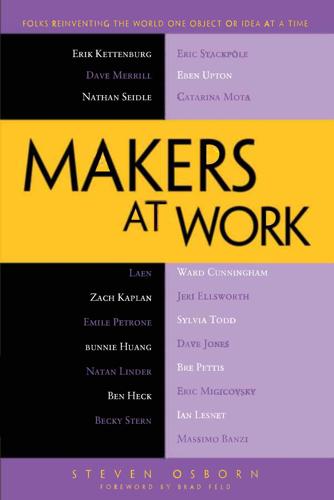
Makers at Work: Folks Reinventing the World One Object or Idea at a Time
by
Steven Osborn
Published 17 Sep 2013
And I appreciated you saying that you’ve been interviewing smart people and including me in that category. But really, I’m not. I’m passionate. That’s I think my biggest asset. I really like what I’m doing. But if I want to make a robot that’s going to be able to do really capable things, I need experts and I need their advice. And the best way to do that is to crowd-source the data. Right now, if I’m struggling with some sort of an engineering decision and I’m losing sleep over it, using my phone I can go onto the OpenROV forums and describe the problem I’m having, and as I doze off to sleep, the problem’s going around Europe. People in Europe are looking on the forums.
…
We’ll do a preorder for twenty, and we’ll see how it goes.” So as a fundraiser for the Hack a Day blog, we did a presale for a week or two, selling an early manufactured version of the Bus Pirate. In that time, we sold a thousand of them, presale. This was before Kickstarter and Indiegogo. There was no crowdsourced funding concept out there. We just took preorders from people with the promise to deliver it as quickly as we could. From there, I thought, “Wow, there might actually be something to this.” I started my own site so that I could sell my own designs. I couldn’t do that while I was an author at Hack a Day because the editorial guidelines prohibited it.
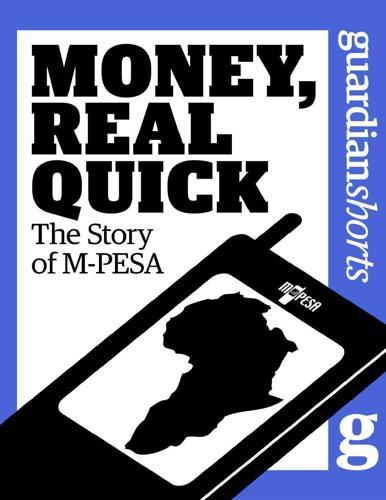
Money, Real Quick: The Story of M-PESA
by
Tonny K. Omwansa
,
Nicholas P. Sullivan
and
The Guardian
Published 28 Feb 2012
A key focal point for new startups is iHub (“innovation” Hub) in Nairobi, co-founded by Eric Hersman, also the co-founder of Ushahidi. Ushahidi is not connected to the mobile money craze, but is an ingenious open-source mobile application that has spread around the world. Ushahidi, which means “witness” in Swahili, is the Kenya-based crowd-sourcing platform developed to track violence during and after the 2007-08 post-election violence in Nairobi through SMS. Ushahidi messages describe a basic situation, along with GPS coordinates. It has since been adapted for other emergency disaster situations, such as the 2010 earthquake in Haiti. In 2010, with $2 million in funding from the Omidyar Network, Hersman co-founded iHub (“I” for “innovation”) as a Nairobi incubator for high-tech startups.
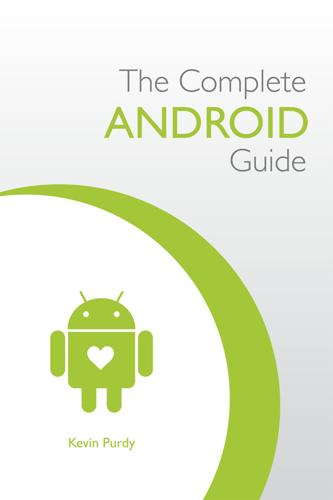
The Complete Android Guide: 3Ones
by
Kevin Purdy
Published 15 Apr 2011
HDR-style enhancements, black and white, aging effects you can set to certain time periods, high-contrast reversal film--and the list goes on. There are tilt-shift effects for shooting miniatures, grids for getting your central focus just so, and many more photo geek favorites. (Free, $4 for a Pro version with unlocked effects). Maps and Navigation Waze Waze Puts Crowd-Sourced Data in Your GPS Directions If Google's own Maps and Navigation apps gets you where you're going, Waze gets you past the bad stuff and makes sure you notice the cool stuff. The community-driven GPS app points out cool spots to check out, helps you avoid bad spots like the cops' favorite speed traps, and awards points for those who share their local knowledge.

Science...For Her!
by
Megan Amram
Published 4 Nov 2014
The United States of America has to handle the economics of 314 million people (aka 157 million eligible bachelors, that’s what I’m talking about, babes! Plenty of fish in the sea!). It’s not easy to finagle, especially since America has been hemorrhaging money in the twenty-first century. That’s why the United States has turned to the crowd-sourcing fund-raising site Kickstarter to fill in the cracks! * * * National Debt by the United States Government * * * ABOUT THIS PROJECT: Hi you guys! Joe Biden and the rest of the gang here! :) We’re looking for some awesome people to help us Kickstart our dream project of having a functioning federal government!
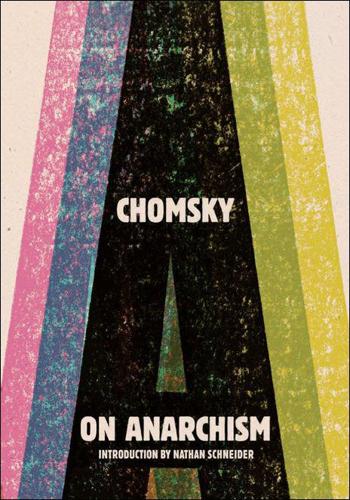
On Anarchism
by
Noam Chomsky
Published 4 Nov 2013
Anarchism, then, is a corner backed into rather than a conscious choice—an apophatic last resort, and a fruitful one. It permits being political outside the red-and-blue confines of what is normally referred to as “politics” in the United States, without being doomed to a major party’s inevitable betrayal. We can affirm the values we’ve learned on the Internet—transparency, crowd-sourcing, freedom to, freedom from. We can be ourselves. Anarchy is the political blank slate of the early twenty-first century. It is shorthand for an eternal now, for a chance to restart the clock. Nowhere is this more evident than in the anarchic online collective Anonymous, whose only qualification for membership is having effaced one’s identity, history, origins, and responsibility.

Drone Warfare: Killing by Remote Control
by
Medea Benjamin
Published 8 Apr 2013
The efforts to construct tiny drone aircraft builds off earlier work by the ultra-secretive Defense Advanced Research Projects Agency (DARPA) on “a whole host of cyborg critters,” notes the Daily Mail.72 Founded in 1958 in response to the Soviet’s 1957 Sputnik satellite launch, DARPA is the US Defense Department’s “primary innovation engine,” according to the agency, undertaking “projects that are finite in duration but that create lasting revolutionary change.”73 This is no idle bragging, given that DARPA is credited, unlike Al Gore, with creating the Internet. To this end, DARPA often employs unique methods for developing the next generation of military hardware. Indeed, in March 2011 the agency launched a crowd-sourcing competition, “UAVForge,” to actually design a small drone that is “small and light enough to carry in a rucksack” and capable of perching somewhere, vulture-like, for at least two hours while transmitting video back to its operators.74 The person or group who designs the best performing drone wins $100,000, which is a relatively cheap way for the US government to develop its latest war gadget.
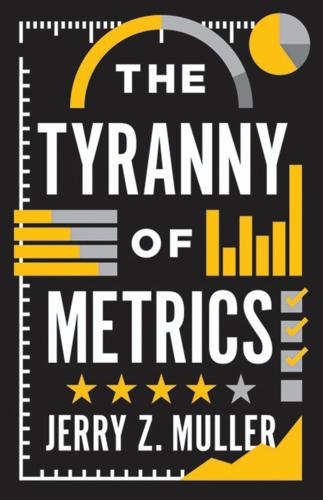
The Tyranny of Metrics
by
Jerry Z. Muller
Published 23 Jan 2018
They are replacing them with higher base salaries combined with shares or share options, to give employees a tangible interest in the long-term flourishing of the company (while paying special rewards to particularly high performers).7 Yet other companies are dropping annual ratings in favor of “crowdsourced” continuous performance data, by which supervisors, colleagues, and internal customers provide ongoing online feedback about employee performance. That may be substituting the frying pan for the fire, as employees constantly game for compliments, while resenting the omnipresent surveillance of their activities8—a dystopian possibility captured in Dave Eggers 2014 novel The Circle.
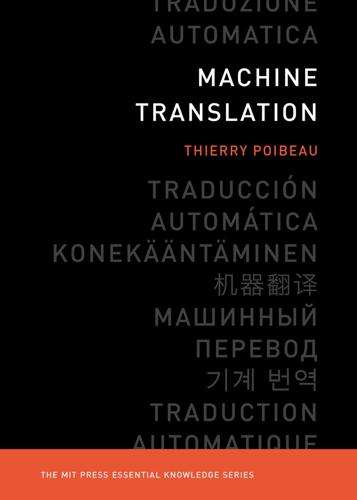
Machine Translation
by
Thierry Poibeau
Published 14 Sep 2017
The MIT Press Essential Knowledge Series Auctions, Timothy P. Hubbard and Harry J. Paarsch Cloud Computing, Nayan Ruparelia Computing: A Concise History, Paul E. Ceruzzi The Conscious Mind, Zoltan L. Torey Crowdsourcing, Daren C. Brabham Free Will, Mark Balaguer Information and Society, Michael Buckland Information and the Modern Corporation, James W. Cortada Intellectual Property Strategy, John Palfrey The Internet of Things, Samuel Greengard Machine Learning: The New AI, Ethem Alpaydin Machine Translation, Thierry Poibeau Memes in Digital Culture, Limor Shifman Metadata, Jeffrey Pomerantz The Mind–Body Problem, Jonathan Westphal MOOCs, Jonathan Haber Neuroplasticity, Moheb Costandi Open Access, Peter Suber Paradox, Margaret Cuonzo Robots, John Jordan Self-Tracking, Gina Neff and Dawn Nafus Sustainability, Kent E.
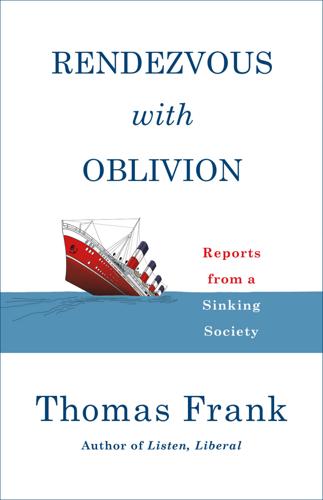
Rendezvous With Oblivion: Reports From a Sinking Society
by
Thomas Frank
Published 18 Jun 2018
“Hard work” and an “honest living” actually mean nothing in this world; capital means everything. Look on my technology, ye powerless, and despair! I thought about that nightmare of automation for quite a while after Berman’s ad ran. It has a grain of truth to it, of course. Journalists have been replaced with bloggers and crowd-sourcing. Factory hands have been replaced with robots. University professors are being replaced with adjuncts and MOOCs. What else might the god Efficiency choose to de-skill? Here’s a suggestion: how about the ideological carnival barkers in D.C.? The fast-food strike triggered a predictable pundit reaction, and as I watched the creaking libertarian apparatus send its suit-and-tie spokesmen before the cameras to denounce unions, I wondered how long capital would stand to be represented in this old-fashioned way.

Android Cookbook
by
Ian F. Darwin
Published 9 Apr 2012
And let’s not forget the established closed source stalwarts: BlackBerry OS, Apple’s iPhone, and Microsoft Windows Mobile (these all have developer toolkits, but their OS is not available as open source and often has other “click-wrap” restrictions). “Nobody’s armchair is a good predictor of the future,” though, as Mike O’Dell once said. Does Android have a place in the sun alongside these other players? We thought it did when we set out to crowdsource this book, and time has proven us right: Android is definitely here to stay! This book is here to help the Android developer community share the knowledge that will make it happen. Those who contribute knowledge here are helping to make Android development easier for those who come after. About Android Android is a mobile technology platform that provides cell phones, tablets, and other handheld and mobile devices (even netbooks) with the power and portability of the Linux operating system and the reliability and portability of a standard high-level language and API.
…
Recognizing this, Google has set up the Android Design site, mainly aimed at Android 4 (Ice Cream Sandwich). Another set of guidelines that can help is the Android Patterns site, which is not about coding but about showing designers how the Android visual experience is supposed to work. Illustrated, crowd-sourced, and recommended! One word of terminological warning: the term widget has two distinct meanings. All GUI controls such as buttons, labels, and the like are widgets and appear in the android.widget package. This package also contains the “layout containers” which are like a combination of JPanel and LayoutManager in Swing.
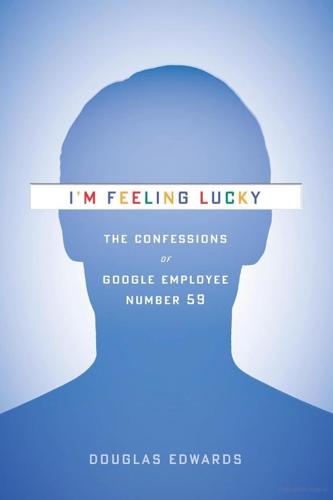
I'm Feeling Lucky: The Confessions of Google Employee Number 59
by
Douglas Edwards
Published 11 Jul 2011
"When we have statues," he warned, "then you should worry." MISC Communications Given their habit of abruptly cutting off debate, I was surprised at how much Larry and Sergey valued others' opinions. We had no shortage of those. Googlers shared their views willingly. Aggressively, even. Call it "crowd-sourcing" or "illumination through alternative insights," asking what other Googlers thought was fundamental to the way Google worked. After all, Googlers had been poked, prodded, and sniffed before gaining a desk in the Plex, so anyone wearing a badge was clearly one of the clueful. It didn't matter if an idea came from someone fresh out of college or a veteran VP of engineering; it would stand or fall on its own merits rather than on the status of the person putting it forward.
…
When users posted multiple correct translations, they earned editorial power to overwrite awkward or incorrect submissions made by others. If it worked, the system would make our site available in hundreds of different languages—a long and arduous task for us to manage alone. Insofar as we had a clear strategy, a big part of it seemed to be getting other people to do our work for free. Nowadays that's known as "crowd-sourcing." We just called it "cutting costs." Self-service AdWords, porn cookies, affiliate programs, viral marketing—all were based on many hands lightening the load and the unbeatable value of unpaid labor. Google parsed all its tough problems into manageable pieces and parceled them out. Our engineering staff worked in teams of three instead of in large groups assigned to a single massive project.
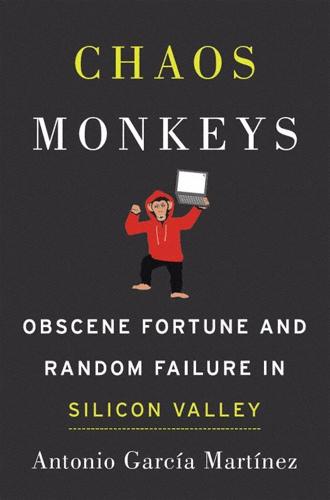
Chaos Monkeys: Obscene Fortune and Random Failure in Silicon Valley
by
Antonio Garcia Martinez
Published 27 Jun 2016
We had plenty of competition. A company named Clickable (now dead) had an all-star cast of advertising investors, and had raised over $32 million to crack this same nut. Lexity (now dead) was founded by a former Yahoo exec, and raised $6 million. Trada (now dead) had pursued the interesting approach of crowdsourcing the problem, establishing a marketplace where advertisers could easily find campaign managers to do the workaday management of Google search campaigns. It raised $19 million, including money from Google Ventures, the venture arm of the very partner company it was connecting to advertisers. You’ll notice lots of casualties here.
…
Some were more universal in the Bronsonian sense. One violation we memorably failed to catch was an Israeli manicuring salon that ran a photo of a woman’s very well groomed pubis. It was so sleek and almost abstract, the reviewer failed to see what it was. In cases like this, the review function was effectively crowdsourced by the users themselves. Angry pearl-clutchers everywhere would click the X in the upper-right-hand corner of the ad, and indignantly leave feedback. The software would calculate rates of negative feedback, weighting the most egregious reasons cited most heavily—misleading, offensive, or sexually inappropriate (MOSI, for short)—and triggering a rereview of that ad.
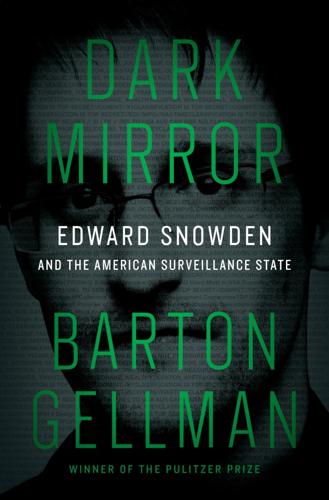
Dark Mirror: Edward Snowden and the Surveillance State
by
Barton Gellman
Published 20 May 2020
Nongovernment organizations like the International Committee of the Red Cross (and the New York Review of Books, which obtained the ICRC’s confidential report) uncovered hard facts about conditions at Guantánamo Bay. Public interest litigators, from Judicial Watch to the ACLU, forced the government to disgorge secret meeting notes and photographs of detainee abuse. Those in turn fed new disclosures by CBS’s 60 Minutes and the New Yorker. Crowdsourced sightings and analysis on social media exposed clandestine CIA rendition flights and their destinations, which paved the way for a huge scoop about secret overseas prisons in the Post. Opinions helped shape public debate, but the conversations could not begin without the forces of fact. Patient, committed investigative reporting by traditional news organizations was indispensable.
…
I circled hard targets from the outside in, interviewing sources on the periphery before approaching the big shots at the center. Afterward, I started around the circle again. Those methods worked, but they did not scale. I could not authenticate classified documents in batches, dozens or hundreds at a time. And there was no way I would put the archive online to crowdsource the analysis, an effective tool in some cases but not when there were unknown risks to public safety. Even if Verax wanted that—and he emphatically did not, describing the idea as “reckless”—I would have had no part in it. The size of the archive itself, on the other hand, helped validate it.

Robot Rules: Regulating Artificial Intelligence
by
Jacob Turner
Published 29 Oct 2018
The Moral Machine project has been successful in gathering responses from a wide range of participants: by the end of 2017, 1.3 million people had responded. It has generated scientific papers of significant interest.42 Results also revealed certain regional variations in opinions.43 This type of crowd-sourced research is only one aspect of the type of consultative exercise needed in developing regulation. Care would still need to be taken to ensure that those taking the tests are representative, and governments ought also avoid succumbing to the tyranny of the majority. Nonetheless, the Moral Machine project represents a valuable example of how public engagement can be encouraged in novel ethical issues to which AI gives rise. 3.1 Multidisciplinary Experts Regulating AI requires expertise from a variety of fields.
…
They now need to be democratically tested.86 4.5 IEEE Ethically Aligned Design The IEEE Ethically Aligned Design: A Vision for Prioritizing Human Well-being with Autonomous and Intelligent Systems, Version 2 (EAD v2)87 was published in December 2017. Its authors describe EAD v2 as “the most comprehensive, crowd-sourced global treatise regarding the ethics of autonomous and intelligent systems available today”.88 The EAD papers are written by committees comprising several hundred multidisciplinary participants.89 EAD v2 was opened for public comment, with responses invited by the end of April 2018. A final version is due in 2019.
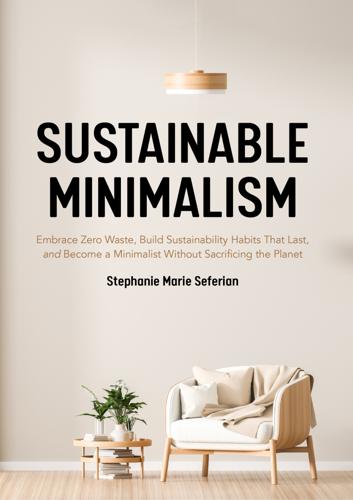
Sustainable Minimalism: Embrace Zero Waste, Build Sustainability Habits That Last, and Become a Minimalist Without Sacrificing the Planet (Green Housecleaning, Zero Waste Living)
by
Stephanie Marie Seferian
Published 19 Jan 2021
Carpool with Pride Ridesharing decreases the amount of cars on the road, eliminates unnecessary carbon dioxide from entering the atmosphere, and saves money. (It saves you the hassle of driving, too!) Coworkers don’t live nearby? No problem. Consider using one of countless rideshare apps to crowdsource your commute. 9. Turn Down the Water Heater Most of us rarely—if ever—need tap water at its hottest, so why not turn down the water heater? It’s as easy as turning a knob. The standard temperature for most water heaters is 140 degrees Fahrenheit. Try adjusting it to 130, or even 120 degrees, and see if you notice a difference.
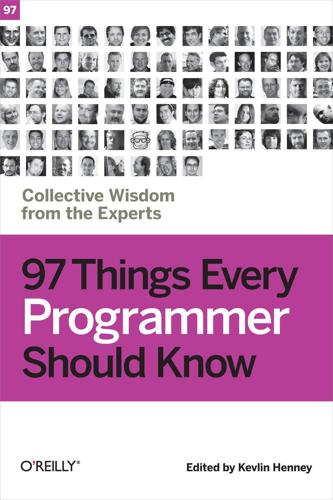
97 Things Every Programmer Should Know
by
Kevlin Henney
Published 5 Feb 2010
With so much to know, so much to do, and so many ways of doing so, no single person or single source can lay claim to "the one true way." Instead, 97 Things Every Programmer Should Know draws on the wisdom of crowds and the voices of experience to offer not so much a coordinated big picture as a crowdsourced mosaic of what every programmer should know. This ranges from code-focused advice to culture, from algorithm usage to agile thinking, from implementation know-how to professionalism, from style to substance. The contributions do not dovetail like modular parts, and there is no intent that they should—if anything, the opposite is true.

The Thank You Economy
by
Gary Vaynerchuk
Published 1 Jan 2010
The difference is amazing. Since changing their approach, Quirky says, “We’ve had tons of (often amusing) back-and-forths on the Twitter machine on everything from product feedback to favorite Simpsons episodes. Now, we’re not letting any tweet go un-tweeted back!” For Quirky, a company built on crowdsourcing product ideas, increased product feedback is an important business function. In addition, the increased chatter optimizes their overall data collection process. Customers are going to talk about a business without that business’s involvement, but when a business interacts with its customers, the extra discussions that ensue can reveal valuable data.
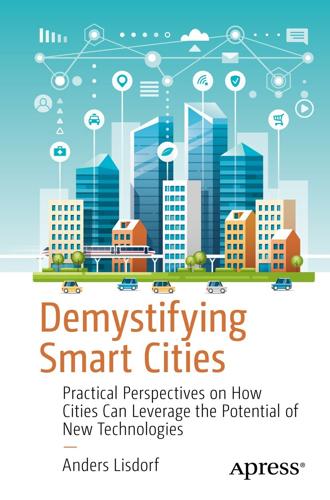
Demystifying Smart Cities
by
Anders Lisdorf
This way a city can get all data on what residents and visitors are talking about at any given point in the city. Another example of publicly available data is the Connected Citizens Program run by Waze. The Waze service monitors participants’ route and speed through a city, which allows them to recommend optimal routes from one point to another. It also allows users to crowdsource important traffic events like accidents, roadwork, and congestion. This data is what the Connected Citizens Program offers participating cities access to. The data is published on a URL and updated frequently. Other examples of publicly available data online are statistics, weather data, and so on.
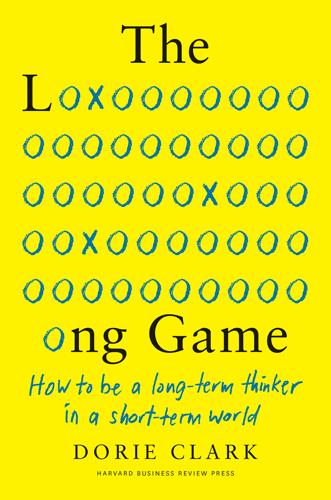
Long Game: How Long-Term Thinker Shorthb
by
Dorie Clark
Published 14 Oct 2021
That’s what her life looked like in 2011, when she moved to Singapore from the US. Tanvi had joined Twitter around the same time and thought it might be a way to make connections—but the online conversation seemed to be very North America–centric. She’d have to roll up her sleeves to build a community. “I crowdsourced and curated a list of fifty women from Asia to follow [on Twitter] that got a tremendous audience,” she recalls. “I then started noticing all these tweetchats, but none was happening in Asia. So I launched one for HR professionals, and it became one of the first internationally trending Twitter chats to come out of Asia.”
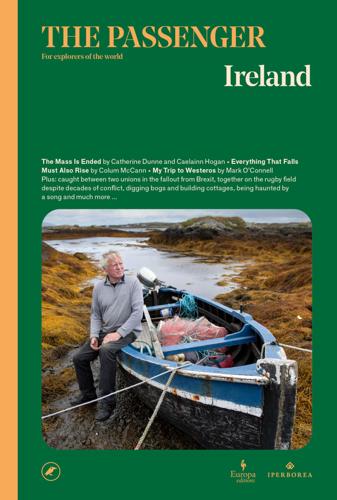
The Passenger
by
The Passenger
Published 27 Dec 2021
Her funeral was attended by representatives of all the political parties of Northern Ireland as well as the Irish and British governments, and the international media was filled with personal and professional tributes to Lyra. She was the rising star of Northern Irish journalism and built her career – during a period of crisis for the newspapers – on crowdsourcing, which she used to finance her investigative pieces. At the age of just sixteen – after overcoming problems caused by eyesight issues that meant she had to wear an eyepatch as a child and then very thick glasses – she won the Sky Young Journalist of the Year Award. When she was twenty-six Forbes included her in its ‘30 under 30’ list of influential figures in the European media.
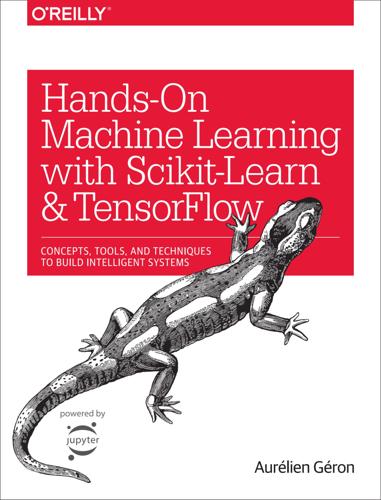
Hands-On Machine Learning With Scikit-Learn and TensorFlow: Concepts, Tools, and Techniques to Build Intelligent Systems
by
Aurélien Géron
Published 13 Mar 2017
This is quite common because models tend to “rot” as data evolves over time, unless the models are regularly trained on fresh data. Evaluating your system’s performance will require sampling the system’s predictions and evaluating them. This will generally require a human analysis. These analysts may be field experts, or workers on a crowdsourcing platform (such as Amazon Mechanical Turk or CrowdFlower). Either way, you need to plug the human evaluation pipeline into your system. You should also make sure you evaluate the system’s input data quality. Sometimes performance will degrade slightly because of a poor quality signal (e.g., a malfunctioning sensor sending random values, or another team’s output becoming stale), but it may take a while before your system’s performance degrades enough to trigger an alert.
…
Get your solution ready for production (plug into production data inputs, write unit tests, etc.). Write monitoring code to check your system’s live performance at regular intervals and trigger alerts when it drops. Beware of slow degradation too: models tend to “rot” as data evolves. Measuring performance may require a human pipeline (e.g., via a crowdsourcing service). Also monitor your inputs’ quality (e.g., a malfunctioning sensor sending random values, or another team’s output becoming stale). This is particularly important for online learning systems. Retrain your models on a regular basis on fresh data (automate as much as possible). 1 “Practical Bayesian Optimization of Machine Learning Algorithms,” J.
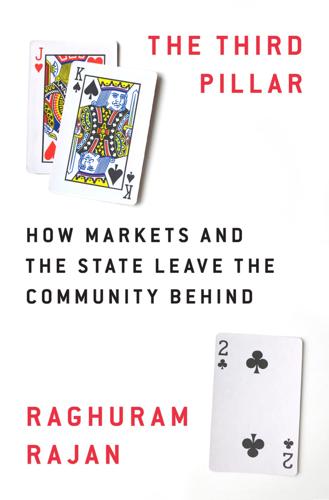
The Third Pillar: How Markets and the State Leave the Community Behind
by
Raghuram Rajan
Published 26 Feb 2019
For instance, county supervisors in the United States argued they were not unduly harsh in their decisions on whom to send to the poorhouse, because any time someone “deserving,” such as a poor widow with many children, or an injured family man unable to work, came for assistance, their neighbors rallied behind them and pushed for outdoor relief.33 Essentially, support for relief was crowdsourced. COMMUNITY ENGAGEMENT AND THE ELBERFELD SYSTEM Germany was a leader in community provision of assistance in the industrializing world. Its Elberfeld system, adopted in a number of cities, recognized that poverty was a changeable condition, and drew the community into managing it. In the mid-nineteenth century, 10–20 percent of Elberfeld’s population received poor relief regularly, which was proving to be beyond the city’s capacity to sustain.34 A group of the city’s businessmen devised the eponymous system to bring spending under control, and to ensure that poverty did not become a permanent condition.
…
Yet public attention spans are short, so the intended consequences of policy are seemingly straightforward—raising tariffs on steel imports will save steel jobs—while the unintended consequences—it could lose us many more jobs elsewhere—are harder to explain to the layperson in 140 characters. All this means that in a campaign between the tribune of the people and the expert for the attention of the people, the tribune will always win out, more so if the expert has lost popular trust. If populist answers have to meet the filter of popular approval, if they crowdsource all their solutions, they are unlikely to be effective—after all, this is why Madison preferred representative democracy to direct democracy.5 There is wisdom in crowds, but it has to be distilled carefully. In this chapter, we will draw on the economic developments we discussed in the previous chapter, as well as changes in the community and media, to explain why the electorate in developed countries has become more open to listening to radical politicians.
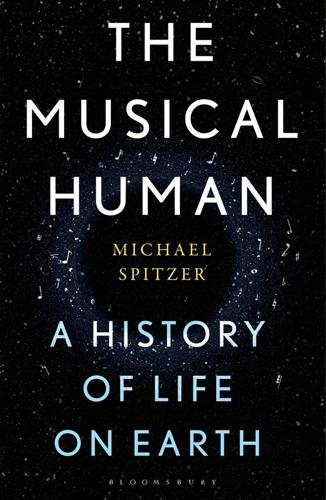
The Musical Human: A History of Life on Earth
by
Michael Spitzer
Published 31 Mar 2021
And this is not to mention animals’ pheromonal, electric and vibrational communication systems, which may constitute ‘music’ on an entirely different basis, that is without sound. Perhaps cockroaches sing through chemicals, jellyfish through flashes of light. Getting away from sound, some aspects of animal expression resonate with emerging tendencies in human music. The hive minds of bees and ants are models for crowdsourced musical collaboration. The octopus’s distributed intelligence, its neurons shared between its head and arms, anticipates decentred musical creativity on the internet.10 It is often remarked that cephalopods are Earth’s true aliens, which is why we often picture extraterrestrials that way. In the absence of actual aliens (yet), machines are the musical human’s best hope for escaping its miserable bandwidth.
…
Reason is a software studio operated on a DAW (digital audio workstation).17 It allows musicians dispersed anywhere in the world to upload ideas or drafts of songs onto a dedicated website. Other musicians then take up these unfinished songs and add, edit, mix and repost them in a spectacular example of musical crowdsourcing. With online collaboration, the studio is not in any particular place, just as the song is not created by any particular person. Reason collapses the old distinctions between the local and the global, the individual and the community. What makes innovations such as Bloom and Reason possible is of course the digital revolution.
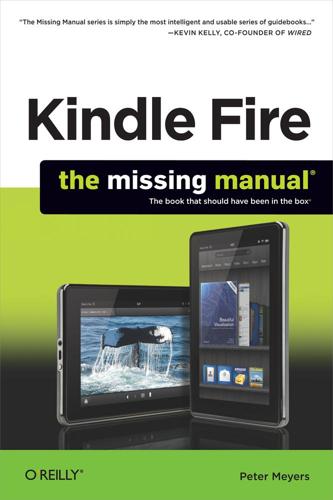
Kindle Fire: The Missing Manual
by
Peter Meyers
Published 9 Feb 2012
The latter is an incredibly helpful way to tap choices in three big categories: type of meal (appetizer, soup, main), ingredients (from beef or cheese to shellfish or vegetable), and time available. There’s also a traditional search tool. Once you’ve found a good match, either read it on your Fire or email it to yourself to print. Bon appetit. Jamie’s 20 Minute Meals ($7.99). Are crowdsourced recipes, like those in the Allrecipes app, always crowd pleasers? The thing is, you never know. Even with ratings and comments, you just can’t be sure that what satisfies one cook is going to work for you. For a nearly surefire collection, consider springing for this relatively pricey entry from British super-cook Jamie Oliver.
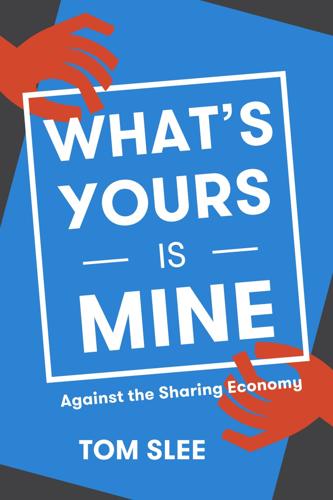
What's Yours Is Mine: Against the Sharing Economy
by
Tom Slee
Published 18 Nov 2015
For Anderson, Amazon represents the return of variety and diversity after decades of homogenous blockbusters: “We are turning from a mass market back into a niche nation, defined not by geography but by interests.” 19 In a Long Tail world there is no need for formal gatekeepers who select or restrict the works that can find their public; instead, Web 2.0 platforms will do it for us using crowdsourced consumer reviews and recommender systems: “By combining infinite shelf space with real-time information about buying trends and public opinion . . . unlimited selection is revealing truths about what consumers want and how they want to get it.” 20 Amazon and Airbnb are similar in many ways. Both are, at least in part, software companies whose inventory is simply a set of entries in a database, accessed via a web site.

Hit Refresh: The Quest to Rediscover Microsoft's Soul and Imagine a Better Future for Everyone
by
Satya Nadella
,
Greg Shaw
and
Jill Tracie Nichols
Published 25 Sep 2017
Eye movement data analyzed at schools today can be compared with a data set from those diagnosed with dyslexia thirty years ago. Diagnostic accuracy rates have increased from 70 to 95 percent, and the time to get a diagnosis has decreased from three years to three minutes. This means students, parents, and schools are prepared earlier and struggle less. In Japan, crowd-sourced data collected from hundreds of sensors nationwide helped the public monitor radiation from the Fukushima nuclear plant to reduce risks to food quality and transportation. The 13 million measurements from five hundred remote sensors generated a heat map that alerted authorities to threats to local rice production.
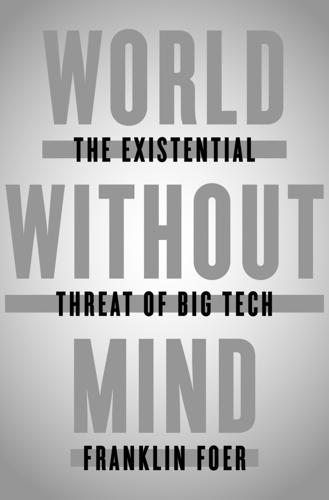
World Without Mind: The Existential Threat of Big Tech
by
Franklin Foer
Published 31 Aug 2017
In culture, the peril of the network is conformism—where a competitive marketplace of ideas ceases to be so competitive, where the emphasis shifts to consensus. Kevin Kelly, in his enthusiasm, unwittingly conveyed the darker implications of his vision. He extolled the “hive mind”—which is what happens when we get past our fetish for the author and give in to crowdsourcing and wikis and the hordelike tendencies of social media, when we surrender ourselves to the wise crowd. The hive mind was meant to describe a thing of beauty, humanity working in gorgeous concert. But really, who would want to live in a hive? We know from history that this sort of consensus is a plastic beauty, a stifling sameness.

Avogadro Corp
by
William Hertling
Published 9 Apr 2014
Leon knew from history class that once the marketability commodity in games was gold and equipment. Now it was algorithms. The game made available the underlying environment data, and it was up to the programmer to find the best algorithms for piloting, aiming, detecting, moving, and coordinating mechs. There was a persistent rumor that DARPA had funded the game as a way of crowd-sourcing the all important algorithms used to control military drones. Leon couldn't find any solid evidence on that assertion online. No, maybe he should focus on a new locomotion algorithm. He'd heard that some mechs using custom locomotion code were coaxing ten percent more speed and range while keeping their thermal signatures lower.

Geek Sublime: The Beauty of Code, the Code of Beauty
by
Vikram Chandra
Published 7 Nov 2013
This amalgamation of opposites has been achieved through a profound faith in the emancipatory potential of the new information technologies.”40 This high-tech determinism dictates that through the new worldwide amalgamation of hardware and software, a frictionless “electronic agora” will come into being, allowing the profitable exchange of both goods and ideas. Individuals will be empowered, they will speak to each other across all sorts of borders and come to mutual understanding. The governments of the world—useless as they are—will fade into irrelevance because governance will be provided by the crowd-sourced wisdom of the masses, led of course by the fearless and very cool visionaries who make software and hardware, who found companies, who make billions. If you’ve “solved”—for instance—some problems in online social networking, surely you’ll be able to disrupt world hunger. Pioneering individuals will focus their skills, their genius, on one domain after another and so transform the world for the better.
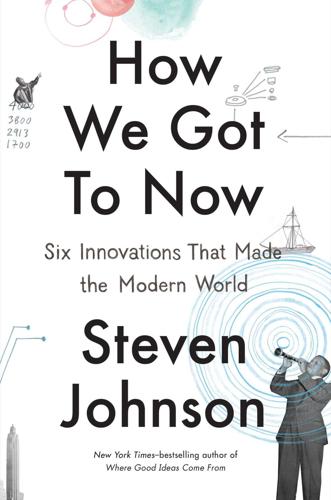
How We Got to Now: Six Innovations That Made the Modern World
by
Steven Johnson
Published 28 Sep 2014
— THE STRANGE THING about the electric lightbulb is that it has come to be synonymous with the “genius” theory of innovation—the single inventor inventing a single thing, in a moment of sudden inspiration—while the true story behind its creation actually makes the case for a completely different explanatory framework: the network/systems model of innovation. Yes, the lightbulb marked a threshold in the history of innovation, but for entirely different reasons. It would be pushing things to claim that the lightbulb was crowdsourced, but it is even more of a distortion to claim that a single man named Thomas Edison invented it. The canonical story goes something like this: after a triumphant start to his career inventing the phonograph and the stock ticker, a thirty-one-year-old Edison takes a few months off to tour the American West—perhaps not coincidentally, a region that was significantly darker at night than the gaslit streets of New York and New Jersey.
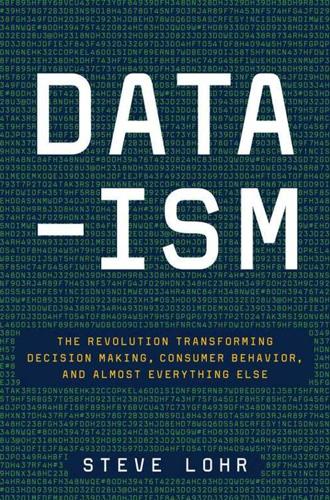
Data-Ism: The Revolution Transforming Decision Making, Consumer Behavior, and Almost Everything Else
by
Steve Lohr
Published 10 Mar 2015
In a multiyear project sponsored by the government’s Intelligence Advanced Research Projects Activities (IARPA), thousands of forecasters are making predictions on hundreds of questions over time, and their accuracy is being tracked. They are asked to put a number on their prediction, a probability (0 = no chance; 1 = sure thing). They are put in groups and given constant updates on their colleagues’ forecasts on matters like exchange rates, the debt ratings of nations, and election results. Using this quantified, crowdsourced approach, the forecasters in general have proved reasonably accurate in making predictions within shorter-term time spans, up to a year or so. And some have proved remarkably adept at refining their predictions, digesting other viewpoints and data, to recognize and overcome their biases. Tetlock calls them “super forecasters.”

Move Fast and Break Things: How Facebook, Google, and Amazon Cornered Culture and Undermined Democracy
by
Jonathan Taplin
Published 17 Apr 2017
Researcher Sara Kingsley at the University of Massachusetts found real problems with the crowdwork model. A direct and limitless supply of labor and tasks should produce a perfectly competitive market; however, data collected from our yearlong study of crowdwork suggests that the reverse is true. Rife with asymmetric information problems, crowdsourcing labor markets are arguably not just imperfect, but imperfect by design. Kingsley found that Amazon could constantly lower the piecework price it paid on Mechanical Turk and that it was continually opening up new low-labor-cost countries, such as India, to the platform. Given that Amazon runs a monopsony book business, it’s no surprise that it might apply the same techniques to other business sectors.
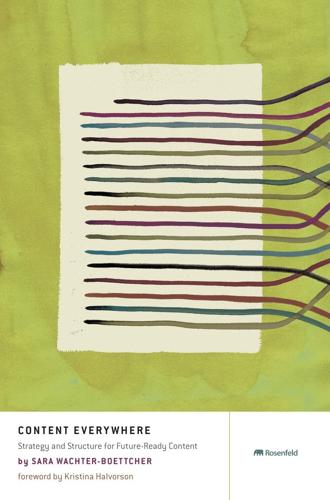
Content Everywhere: Strategy and Structure for Future-Ready Content
by
Sara Wachter-Boettcher
Published 28 Nov 2012
Where once we built ourselves silos on the Web, these days it pays to recognize that it’s really one Web and we’re in the business of stitching our content into that wider canvas. Initiatives like the Linked Open Data and Semantic Web projects are helping us do this by providing standardized methods of sharing data for both people and computers. For example, dbPedia and MusicBrainz provide free, crowd-sourced sources of content and business data you can use to enrich and enhance your own offerings, on a scale that few businesses would have the time and resources to replicate. Conversely, by publishing out your own content in machine-readable formats like RDF, you can extend your reach by making it easier for third parties to create new and unexpected mash-ups.

Confessions of a Crypto Millionaire: My Unlikely Escape From Corporate America
by
Dan Conway
Published 8 Sep 2019
One of the moms who knew I was into crypto asked, “What do you think about all of this mania?” “Well, there is mania, and it’s getting pretty extreme. But that’s not surprising. Crypto is the first decentralized technology to make it—it’s a game changer.” “No, it’s not,” she said. “Wikipedia is decentralized.” “Nope. Wikipedia is crowdsourced content. It is still run out of centralized services controlled by a few people.” “Listen, Dan, I’ve been working in tech for a long time, and I can tell you, it’s decentralized, and there are others. All of these tech bros getting rich is amazing, though.” I’d heard enough of this bullshit.
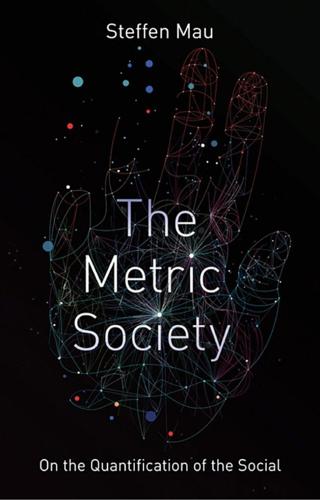
The Metric Society: On the Quantification of the Social
by
Steffen Mau
Published 12 Jun 2017
Self-trackers are similarly proactive when it comes to eroding the monopoly of the classical medical professions over questions of health, sickness and therapy; among the latest developments on this front are special platforms where personal data on treatment methods and drug efficacies are stored, and which can provide clues to potential outcomes in others, including side-effects, etc. (see the platform CureTogether, for example; Selke 2016: 290ff.). Thanks to its mass input, crowdsourced data of this kind can yield insights which would not otherwise be readily obtainable, even with elaborate clinical trials. On the down side, they can be susceptible to systematic distortions, so that the information gain is offset by the risk of misinformation. Motivation techniques Many applications don't stop at mere monitoring and ‘silent’ data gathering, but intervene directly in everyday life via acoustic signals, texts or sensory ‘pokes’ – for example, if the user exceeds their alcohol limit or falls short of their daily step count.

Rules for Revolutionaries: How Big Organizing Can Change Everything
by
Becky Bond
and
Zack Exley
Published 9 Nov 2016
The point is not that these programs are great for organizing but that the principle behind using consumer software at the center of our organization helped us build a powerful, connected, and inclusive machine for change. My point of entry was textforbernie.com. The site was built by Elanor Riley, a volunteer whose enviable day job was working as a web developer at Bell’s Brewery in Portage, Michigan. In her spare time she gave lectures on topics like “Fostering Innovation and a Culture of Openness through Crowdsourced Idea Generation.” Textforbernie.com was handsomely designed using the Bernie campaign’s color scheme and font, but it wasn’t hosted on or even associated with berniesanders.com. Clicking “How to get started” led to a Trello board that was also created and maintained by volunteers. Trello is a visual, intuitive, and easy-to-use online collaboration tool that organizes projects into boards.

Wordslut: A Feminist Guide to Taking Back the English Language
by
Amanda Montell
Published 27 May 2019
It became such a sensation that in 2010, the New York Times named it one of their words of the year. Naturally, it was soon entered onto UrbanDictionary.com. And yet, if you were to look up Urban Dictionary’s top entries for mansplain (at least at the time I’m writing this), they do not reflect the original. Anyone can enter a word onto Urban Dictionary; its contents are 100 percent crowdsourced, and the top definitions are voted on by its users. Theoretically, this has democratized how we document and define words. But sometimes, things go awry. The top three most upvoted definitions for mansplain read as follows: Basically when a man explains something to a woman and gets chastised for it.
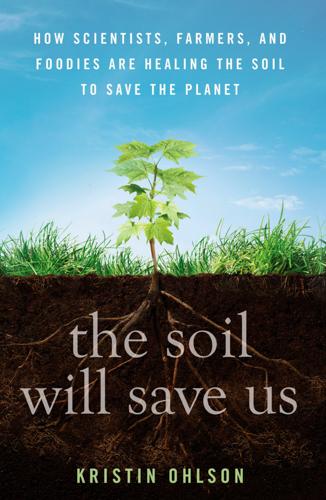
The Soil Will Save Us
by
Kristin Ohlson
Published 14 Oct 2014
We need to regenerate it on a pretty tight time frame.” Anyone expecting Collins to be some sort of nostalgic Luddite quickly has that expectation adjusted: He loves technology. For several years, he’s also been contributing to the development of a Web-based decisions-support tool for farmers that crowdsources innovation and spreads it around the globe. “The burning of the libraries at Alexandria is considered a great historical loss of information,” he said. “But to me, there’s a comparable one happening every day, the loss of information generated on farms and ranches. People uncover so much, there’s a spark and a flare and maybe someone writes it down.
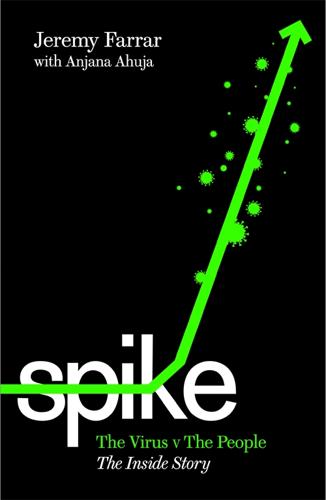
Spike: The Virus vs The People - The Inside Story
by
Jeremy Farrar
and
Anjana Ahuja
Published 15 Jan 2021
At Davos, Richard Hatchett from CEPI began looping me into emails with people in the US who were trying to parse the size of the threat and how to get ahead of it. The group included figures in Homeland Security, healthcare companies, the army and public health; they would each bring one or two other voices into the loop to crowdsource information. It was driven by a fascinating left-field thinker called Carter Mecher, who Richard had met during his time advising the White House. Carter is a doctor and former public health adviser in the US Department of Veteran Affairs. He had also worked on pandemic preparedness under George W.

This Is How They Tell Me the World Ends: The Cyberweapons Arms Race
by
Nicole Perlroth
Published 9 Feb 2021
More than 1,400 hackers had signed on to the bounty program—triple what officials anticipated—and the Pentagon had paid out $75,000 in bounties ranging from $100 to $15,000. That was nothing compared to what the NSA and other agencies were paying hackers, but it was something. And it wasn’t just HackerOne anymore. DOD had also signed on a HackerOne competitor, Bugcrowd, and another company called Synack, started by a former NSA hacker, that crowdsourced pen tests to vetted hackers around the world. Synack’s cofounder, Jay Kaplan, assured me that the Pentagon’s program was the real deal, not some bureaucratic head fake, and convinced me to fly out to Arlington to see it for myself. I arrived in April 2018, eight months pregnant. I hadn’t seen my toes in weeks.
…
For contemporary accounts of the Pentagon’s first bug bounty program, I relied on interviews with Pentagon officials, private security firms that participated in the bounty programs, and public reports including Lisa Ferdinando, “Carter Announces, ‘Hack the Pentagon’ Program Results,” DOD News, June 17, 2016; U.S. Department of Defense, “D.O.D. Expands ‘Hack the Pentagon’ Crowdsourced Digital Defense Program,” press release, October 24, 2018; Jason Murdock, “Ethical Hackers Sabotage F-15 Fighter Jet, Expose Serious Vulnerabilities,” Newsweek, August 15, 2019; Aaron Boyd, “DOD Invests $34 Million in Hack the Pentagon Expansion,” Nextgov.com, October 24, 2018. The remarks attributed to Chris Inglis, the retired NSA deputy director, were taken from Dan Geer’s 2014 Black Hat Talk, the text of which is available here: “Cybersecurity as Realpolitik,” 2014 Black Hat Talk, August 6, 2014, geer.tinho.net/geer.blackhat.6viii14.txt.
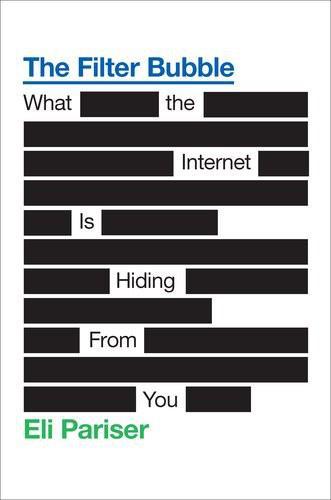
The Filter Bubble: What the Internet Is Hiding From You
by
Eli Pariser
Published 11 May 2011
What remain most vital are the largely anonymous online forums ... that are much more participatory, dynamic, populist and perhaps even democratic than anything on the English-language Internet.” Tech writer Clive Thompson quotes Shanthi Kalathil, a researcher at the Carnegie Endowment, who says that the Anti-Bombing Forum helped to legitimize the Chinese government’s position that the bombing was deliberate among “an elite, wired section of the population.” The forum was a form of crowd-sourced propaganda: Rather than just telling Chinese citizens what to think, it lifted the voices of thousands of patriots aligned with the state. Most of the Western reporting on Chinese information management focuses on censorship: Google’s choice to remove, temporarily, search results for “Tiananmen Square,” or Microsoft’s decision to ban the word “democracy” from Chinese blog posts, or the Great Firewall that sits between China and the outside world and sifts through every packet of information that enters or exits the country.
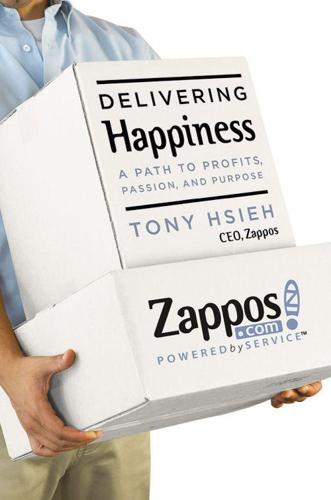
Delivering Happiness: A Path to Profits, Passion, and Purpose
by
Tony Hsieh
Published 6 Jun 2010
Without ever opening up a book or doing any writing myself, I ended up with the most comprehensive study guide that had ever been created, and that everyone found useful. As a bonus, I also ended up making a little profit on the side. The Crimson, our school newspaper, wrote a story about the whole virtual study group experiment, and I ended up doing fine on the final exam. I had discovered the power of crowdsourcing. I was exposed to a lot of different things for the first time in college. I joined the movie society, which made money by renting films to be shown in one of the school auditoriums, and then sold tickets to the students. I visited a friend’s farm, where I learned how to milk cows during the day, and wound up getting stitches at night after I fell flat on my chin while attempting to learn how to ice skate.

The City Always Wins: A Novel
by
Omar Robert Hamilton
Published 12 Jun 2017
Khalil pushes open the high wooden door, greets the manager, and catches a glimpse of himself as he walks past the mirror, his black hair growing untidy, and even from here he can see the first grays emerging at his temples. He walks through the bar, past tables of familiar faces talking unfamiliar ideas: the dissidents of the early blogosphere discussing how to crowdsource a new constitution; the cineastes of Adly Street drafting a manifesto for a new union of regional artists; the journalists raising funds to establish a publicly owned television station; the media activists hatching plans for a global archive of political film; the experimental coalition of actors and therapists building a public art space for at-risk children; and at the back of the room a man is tinkering out a Lionel Richie song on the grand piano.

Designing Search: UX Strategies for Ecommerce Success
by
Greg Nudelman
and
Pabini Gabriel-Petit
Published 8 May 2011
However, as everyone who has looked up their street and their house can tell you, these pictures are frozen in time. Some people can even tell you when the Google Maps’ picture of their house was taken because a friend’s car was captured in the satellite photo. In contrast—or perhaps as a complement to Google Maps—Photosynth, Microsoft’s recent acquisition, uses crowd-sourced photographs to construct and let users navigate through 3D street-level space. It can also add the fourth dimension of navigating through time, enabling users cross-reference multiple images. The feel of the interaction evokes looking into vignettes and shifting your point of view through space and time.
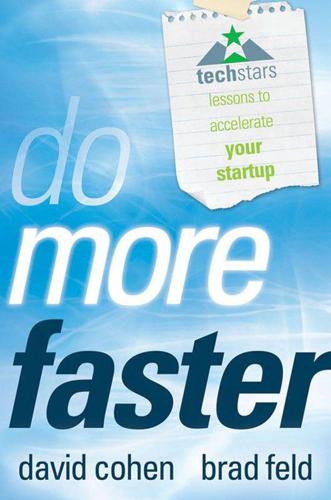
Do More Faster: TechStars Lessons to Accelerate Your Startup
by
Brad Feld
and
David Cohen
Published 18 Oct 2010
—accelgolf.com ADstruc (2010)—is an online buying platform for outdoor advertising that enables an auction and listing-based marketplace and makes the process of buying and selling faster and more profitable.—adstruc.com AmpIdea (2009)—is helping new parents by offering services through a web-enabled baby monitor.—ampidea.com AppX (2008)—provides software as a service to parties that invest in venture capital and private equity.—app-x.com Appswell (2010)—is a mobile crowd-sourcing platform that allows people, companies, and brands to harness the wisdom of their crowds.—appswell.com Baydin (2009)—creates e-mail utilities and collaboration catalysts that make e-mail even more valuable.—baydin.com BlipSnips (2010)—makes it easy for users anywhere on the web to tag, share, and collaborate around memorable video moments.
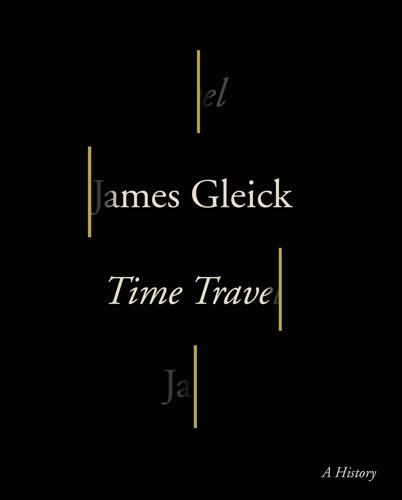
Time Travel: A History
by
James Gleick
Published 26 Sep 2016
Or better, there is no such thing as ‘the life of a man,’ nor even ‘one night in his life.’ Each moment we live exists, not the imaginary combination of these moments.” Immediate sensation dissolves into short-term memory. In the wired world, creating the present becomes a communal process. Everyone’s mosaic is crowd-sourced, a photomontage with multiple perspectives. Images of the past, fantasies of the future, live videocams, all shuffled and blended. All time and no time. The path back through history is cluttered, the path forward cloudy. “Fare forward, travellers!” Eliot said, “not escaping from the past / Into different lives, or into any future.”
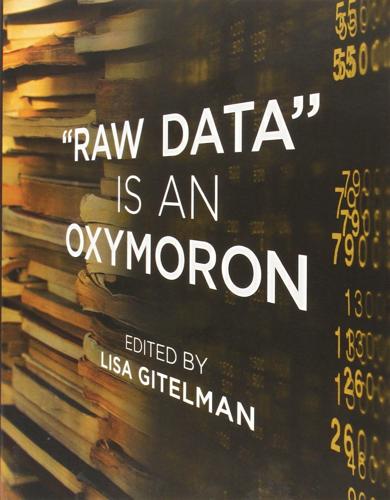
Raw Data Is an Oxymoron
by
Lisa Gitelman
Published 25 Jan 2013
Happily, users have discovered the same thing and have begun successfully pressing Gale to allow them to have limited access to scanned text and even to correct it. In April 2011, Gale authorized the Text Creation Partnership at the University of Michigan to manually key and release 2,231 texts from ECCO: http://www.lib.umich.edu/tcp/ecco/description.html (accessed May 10, 2012). Related efforts at rescanning and crowdsourced keying and correction are being organized by 18th Connect: see http://www.18thconnect.org. 24. To control for the variation in the size of the ECCO corpus from decade to decade in the eighteenth century, I divided the number of hits for “data” by the number of hits for a common control word. Experiments with several different control words suggested that using “the” as control produced a stable result. 25.
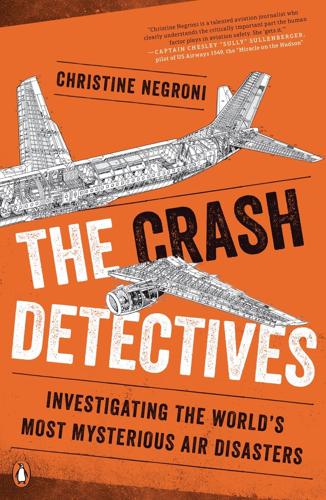
The Crash Detectives: Investigating the World's Most Mysterious Air Disasters
by
Christine Negroni
Published 26 Sep 2016
If skepticism was a gnawing mouse in flying’s early days, it is a roaring lion now that anyone with an Internet connection can access information and review the evidence. Invited or not, independent analysts and armchair investigators are contributing to the discussion on TV news, blogs, and pop-up crowdsourcing sites. For the first time in history, technology is connecting hyperspecialists with geeks, skeptics, and advocates. Information can be scrutinized and analyzed in ways not previously possible, and this Internet-enhanced coalescing of the world’s brain power will certainly continue to grow. This book is a part of that evolution as I hypothesize about MH-370 and other disasters that have mystified the world.

Give People Money
by
Annie Lowrey
Published 10 Jul 2018
He is perhaps the world’s foremost basic-income advocate: a participant in the Economic Security Project, the moderator of the basic-income community on Reddit, a tireless cheerleader online, and a “writer focused on the potential for human civilization to get its act together in the 21st century,” as he puts it. He is also, I should add, the recipient of a kind of basic income himself. Santens uses the online crowdsourcing artist platform Patreon to fund his basic income of about $1,500 a month, just enough to keep himself over the poverty line. This is not enough to live on comfortably in New Orleans, he is quick to say, but it is enough to give him control over his work life. “When I didn’t have a basic income, I’d accept a writing assignment for $50 even if it took me an entire week to research and write, because $50 is better than $0,” he argues.

The Smartphone Society
by
Nicole Aschoff
Alter-globalization activists who participated in the anti-Free Trade Agreement of the Americas actions held in Quebec City in 2001 used the web to link up with other activists from across North America to find food, lodging, and legal aid. MoveOn.org, an organization started by two tech entrepreneurs, Joan Blades and Wes Boyd, during the 1998 impeachment trials of President Bill Clinton, laid the groundwork for the features of many modern political campaigns, including online petitions, crowdsourcing donations, virtual phone banks, and links between digital and analog organizing. The smartphone–social media connection has built on this history. But smartphone politics has also catalyzed something new. Our constant digital connection and access to vast networks facilitate new ways of doing politics.
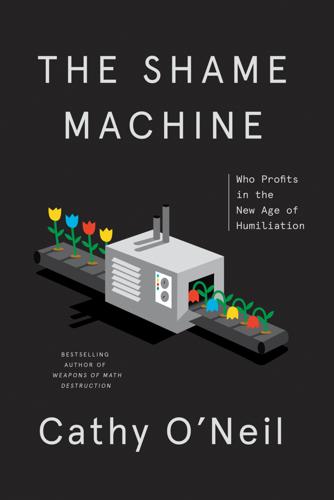
The Shame Machine: Who Profits in the New Age of Humiliation
by
Cathy O'Neil
Published 15 Mar 2022
Canceling people in the modern sense is akin to religious shunning: refusing to talk or even look at a former friend or neighbor who has left the faith. It can come with the best of intentions—to banish racism from our society, to respect women, or to defend the rights of people to assert their gender identity. In many ways, though, the process can resemble a crowdsourced criminal investigation. Amateur sleuths sift through backlogs of social media postings—or they train software to do the job. And if they find evidence of bad behavior, whether in word or deed, they can raise armies of followers to target the offenders, eventually getting them fired or deposed, and stigmatizing them for a lifetime.
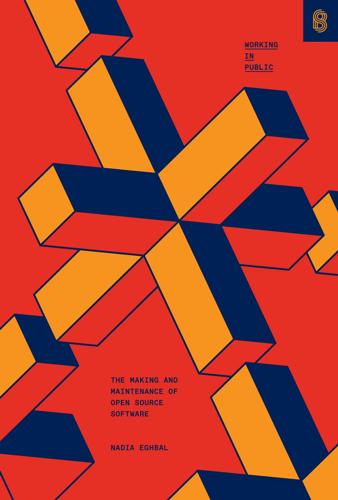
Working in Public: The Making and Maintenance of Open Source Software
by
Nadia Eghbal
Published 3 Aug 2020
,” in 2013 6th International Workshop on Cooperative and Human Aspects of Software Engineering (CHASE) (IEEE: San Francisco, May 2013): 31, https://doi.org/10.1109/chase.2013.6614728. 165 Josh Lerner and Jean Tirole, “Some Simple Economics of Open Source,” The Journal of Industrial Economics 50, no. 2 (June 2002): 197–234, https://doi.org/10.1111/1467-6451.00174. 166 Nadia Eghbal, “The Rise of Few-Maintainer Projects,” Increment 9 (May 2019), https://increment.com/open-source/the-rise-of-few-maintainer-projects/. 167 Kraut and Resnick, Building Successful Online Communities, 205. 168 Christoph Hannebauer, Matthias Book, and Volker Gruhn, “An Exploratory Study of Contribution Barriers Experienced by Newcomers to Open Source Software Projects,” in Proceedings of the 1st International Workshop on CrowdSourcing in Software Engineering - CSI-SE 2014, chairs Gordon Fraser et al. (Hyderabad: Association for Computing Machinery, June 2014): 11–14, https://doi.org/10.1145/2593728.2593732. 169 Ko and Chilana, “How Power Users Help and Hinder Open Bug Reporting.” 170 Owen Williams, “The Internet Relies on People Working for Free,” OneZero, Medium, September 16, 2019, https://onezero.medium.com/the-internet-relies-on-people-working-for-free-a79104a68bcc. 171 Jeff Forcier (@bitprophet), “TIL that SpaceX . . .,” Twitter, February 7, 2018, 11:34 p.m., https://twitter.com/bitprophet/status/961095769599234049. 172 “Anonymous Aggregate User Behaviour Analytics,” Homebrew Documentation, n.d., https://docs.brew.sh/Analytics. 173 Sneak, “Why are you even . . .,” Hacker News, comment, April 26, 2016, https://news.ycombinator.com/item?
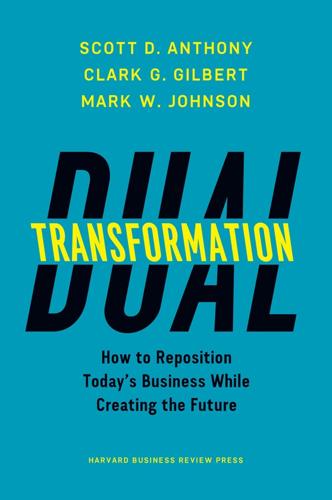
Dual Transformation: How to Reposition Today's Business While Creating the Future
by
Scott D. Anthony
and
Mark W. Johnson
Published 27 Mar 2017
That’s how Gilbert accelerated the growth of Deseret Digital’s transformation B. Historically, the digital side of the newspaper simply replicated online the print version of the newspaper. Gilbert, along with Chris Lee, president of Deseret Digital, mixed a small number of staff-reported pieces with crowdsourced and curated pieces to develop a wide portfolio of digital sites. Some looked like traditional content websites. Others were much more community oriented, such as multilingual Facebook pages that housed FamilyShare, one of the largest global communities of mothers. To target these online audiences, the Deseret team built demographic and behaviorally targeted advertising platforms that had no analogue in print.
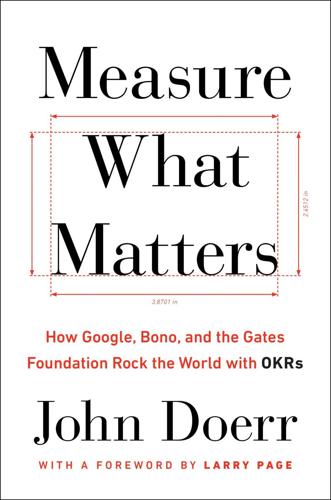
Measure What Matters: How Google, Bono, and the Gates Foundation Rock the World With OKRs
by
John Doerr
Published 23 Apr 2018
As OKRs are combined with 360-degree feedback, the silo will soon be a relic of the past. Recognition Here is the most underestimated component of CFRs, and the least well understood. Gone are the days when gold watches were coveted awards for simple longevity. Modern recognition is performance-based and horizontal. It crowdsources meritocracy. When JetBlue installed a value-driven, peer-to-peer recognition system, and leaders began noticing people who’d flown under their radar, metrics for employee satisfaction nearly doubled. Continuous recognition is a powerful driver of engagement: “ As soft as it seems, saying ‘thank you’ is an extraordinary tool to building an engaged team. . . .
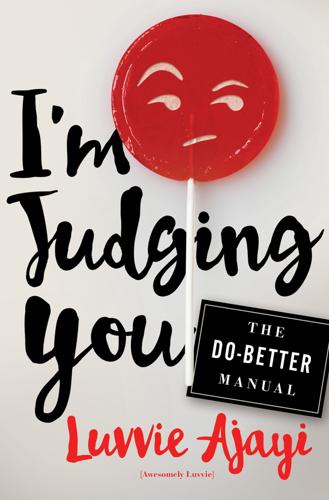
I'm Judging You: The Do-Better Manual
by
Luvvie Ajayi
Published 12 Sep 2016
This is when the Bleeding Heart lets us all know that they’re going on a date. They’re not going to make the status just that plain, though. They inform us about their impending outing by having us help them pick out an outfit. Or they ask a question like, “Where should I take someone that will be cheap and creative?” And everyone is genuinely excited to help crowdsource this fun event. Well, everyone who hasn’t been their Facebook friend for a while and so doesn’t already know that this is something that occurs so often that it’s lost its luster. Anywho, they settle on that fancy date to Olive Garden because a Never Ending Pasta Bowl is a great way to get to know a potential bae better.
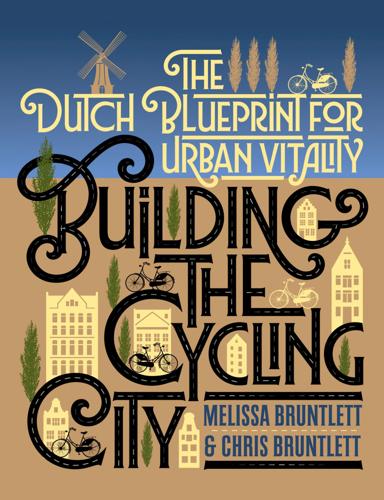
Building the Cycling City: The Dutch Blueprint for Urban Vitality
by
Melissa Bruntlett
and
Chris Bruntlett
Published 27 Aug 2018
In December 2015, after several years of writing about North America’s emerging bike cultures, we walked into the office of our editors at Daily Hive with an ambitious proposal: a five-week, five-city tour of the Netherlands during the summer of 2016, to gather their inspiring cycling stories and share them through words, photography, and film. To our immense surprise, they immediately said “yes,” and with the help of some additional corporate sponsors and a modest crowdsourcing campaign, we set off with our two children on the trip of a lifetime. Those five weeks were nothing short of life changing as we pedaled along Rotterdam’s stunning Erasmus Bridge and the Maastunnel, Eindhoven’s awesome Hovenring and Van Gogh Path, Amsterdam’s bustling Vondelpark and Rijksmuseum, Utrecht’s vibrant Vredenburg and Biltstraat, and Groningen’s impressive “smart routes” and car-free city center.
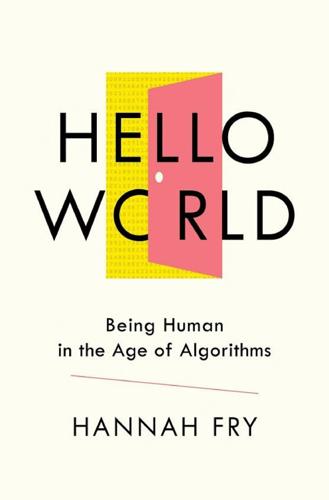
Hello World: Being Human in the Age of Algorithms
by
Hannah Fry
Published 17 Sep 2018
Valenti, ‘Motion pictures and their impact on society in the year 2000’, speech given at the Midwest Research Institute, Kansas City, 25 April 1978, p. 7. 10. William Goldman, Adventures in the Screen Trade (New York: Warner, 1983). 11. Sameet Sreenivasan, ‘Quantitative analysis of the evolution of novelty in cinema through crowdsourced keywords’, Scientific Reports 3, article no. 2758, 2013, updated 29 Jan. 2014, DOI: https://doi.org/10.1038/srep02758, https://www.nature.com/articles/srep02758. 12. Márton Mestyán, Taha Yasseri and János Kertész, ‘Early prediction of movie box office success based on Wikipedia activity big data’, PLoS ONE, 21 Aug. 2013, DOI: https://doi.org/10.1371/journal.pone.0071226. 13.
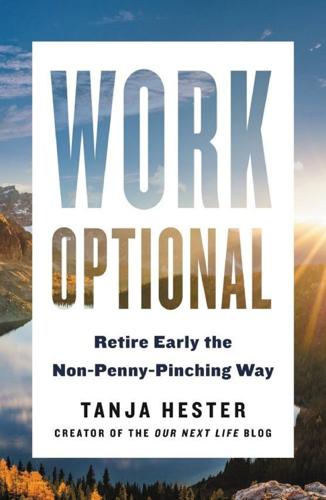
Work Optional: Retire Early the Non-Penny-Pinching Way
by
Tanja Hester
Published 12 Feb 2019
Collins Online Resources • Work Optional companion site: TheWorkOptionalBook.com—all of the spreadsheets and resources from the book in downloadable, editable form • Our Next Life: ournextlife.com—my blog, with the full chronicle of Mark’s and my journey to early retirement, and in-depth explorations of many of the financial and emotional topics we tackled along the way • Early Retirement Now: earlyretirementnow.com—the best blog out there for those who really want to geek out over early retirement math, especially topics like safe withdrawal rates and sequence of returns risk • The Crowdsourced FIRE Simulator (cFIREsim): cfiresim.com—a Monte Carlo simulator that’s useful for checking your math and assumptions on your roadmap • Investor.gov compound interest calculator: investor.gov/additional-resources/free-financial-planning-tools/compound-interest-calculator—especially useful for determining how much to save for traditional retirement.
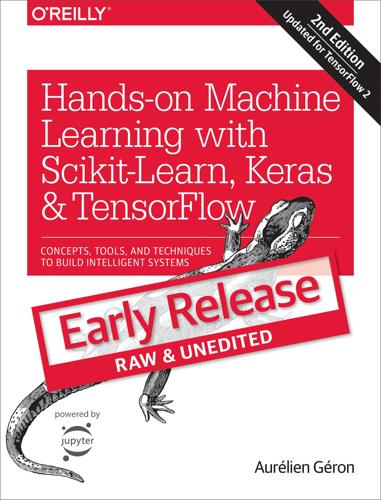
Hands-On Machine Learning With Scikit-Learn, Keras, and TensorFlow: Concepts, Tools, and Techniques to Build Intelligent Systems
by
Aurelien Geron
Published 14 Aug 2019
This is quite common because models tend to “rot” as data evolves over time, unless the models are regularly trained on fresh data. Evaluating your system’s performance will require sampling the system’s predictions and evaluating them. This will generally require a human analysis. These analysts may be field experts, or workers on a crowdsourcing platform (such as Amazon Mechanical Turk or CrowdFlower). Either way, you need to plug the human evaluation pipeline into your system. You should also make sure you evaluate the system’s input data quality. Sometimes performance will degrade slightly because of a poor quality signal (e.g., a malfunctioning sensor sending random values, or another team’s output becoming stale), but it may take a while before your system’s performance degrades enough to trigger an alert.
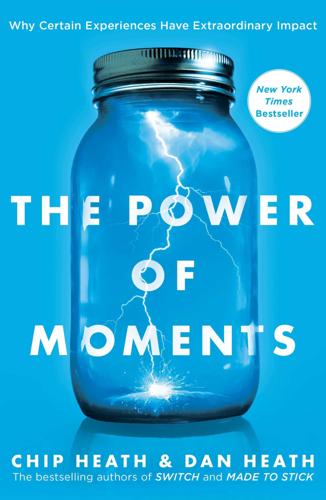
The Power of Moments: Why Certain Experiences Have Extraordinary Impact
by
Chip Heath
and
Dan Heath
Published 2 Oct 2017
Imagine a charity with thousands of donors. All of them deserve a thoughtful, personal reply—which is a logistical impossibility. But one charitable organization, DonorsChoose, has found a way to scale up thoughtfulness. Its leaders have methodically built a system to deliver recognition. DonorsChoose’s website allows teachers to seek crowdsourced funding for school projects. An elementary school teacher might try to raise $250 to buy new books, or a high school science teacher might seek $600 to order new lab equipment. In an era of school budget cuts, this money from outside donors is precious. For donors, the big moment comes a month or two later, when most of them have forgotten their contributions.

Rebel Ideas: The Power of Diverse Thinking
by
Matthew Syed
Published 9 Sep 2019
Page, The Diversity Bonus. 14 See Brynjolfsson and McAfee, The Second Machine Age. 15 Brynjolfsson and McAfee, The Second Machine Age. 16 http://startupsusa.org/fortune500/ 17 https://pubs.aeaweb.org/doi/pdfplus/10.1257/jep.30.4.83 18 https://www.kauffman.org/what-we-do/resources/entrepreneurship-policy-digest/the-economic-case-for-welcoming-immigrant-entrepreneurs 19 https://www.hbs.edu/faculty/Publication%20Files/17-011_da2c1cf4-a999-4159-ab95-457c783e3fff.pdf 20 https://www.kauffman.org/~/media/kauffman_org/resources/2015/entrepreneurship%20policy%20digest/september%202015/the_economic_case_for_welcoming_immigrant_entrepreneurs_updated_september_2015.pdf 21 McAfee and Brynjolfsson, Machine, Platform, Crowd. 22 See also Erik Dane ‘Reconsidering the Trade-off Between Expertise and Flexibility’, Academy of Management Review, Vol. 35, No. 4, pp. 579–603. 23 https://www.sciencedirect.com/science/article/pii/S0883902616300052 24 https://www.apa.org/pubs/journals/releases/psp9651047.pdf 25 https://www.squawkpoint.com/wp-content/uploads/2017/01/Identification-of-scientists-making-long%E2%80%90term-high%E2%80%90impact-contributions-with-notes-on-their-methods-of-working.pdf 26 https://www.psychologytoday.com/files/attachments/1035/arts-foster-scientific-success.pdf 27 https://www.forbes.com/sites/catherinewines/2018/09/07/why-immigrants-are-natural-entrepreneurs/ 28 https://blog.aboutamazon.co.uk/company-news/2018-letter-to-shareholders 29 https://www.weforum.org/agenda/2016/11/introducing-a-new-competition-to-crowdsource-a-more-inclusive-economy/ 30 Matt Ridley, The Rational Optimist. 31 See Steven Johnson, Where Good Ideas Come From: The Seven Patterns of Innovation (Allen Lane, 2010). 32 Randall Collins, The Sociology of Philosophies: A Global Theory of Intellectual Change (Belknap Press, 1998). 33 Randall Collins, The Sociology of Philosophies. 34 https://royalsocietypublishing.org/doi/full/10.1098/rstb.2015.0192 35 Steven Johnson, Where Good Ideas Come From. 36 https://royalsocietypublishing.org/doi/full/10.1098/rspb.2010.0452 37 Joseph Henrich, The Secret of Our Success. 38 Joseph Henrich, The Secret of Our Success. 39 Joseph Henrich and Michael Muthukrishna argue that differences in individual IQ are an emergent property of the collective brain.
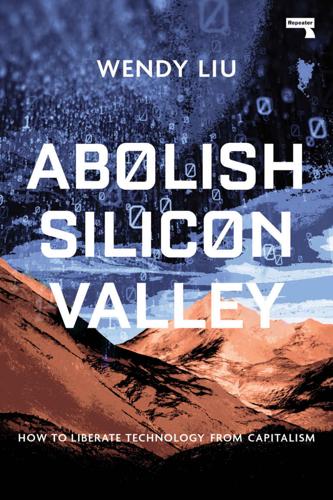
Abolish Silicon Valley: How to Liberate Technology From Capitalism
by
Wendy Liu
Published 22 Mar 2020
The board died before it opened — after months of extensive software changes, I realised that my ambitions exceeded my capabilities, and the board was quietly scrubbed from my Internet history. By this point, I had a new idea: the Online Database for Media Information (ODFMI), which I conceived of as the all-purpose alternative to the Internet Movie Database (IMDb). I began the project with an almost comical ignorance of contemporary copyright law; my plan was to crowdsource an electronic copy of every book, film, or other media product ever made, seeded with the library books I’d typed up over the years. I even registered a PayPal account under that name, so confident was I in the eventual success of the project. Once I understood that my vision was impracticable (and almost certainly illegal), I settled for a database of public domain books taken from Project Gutenberg, with chapters formatted as discussion board posts.
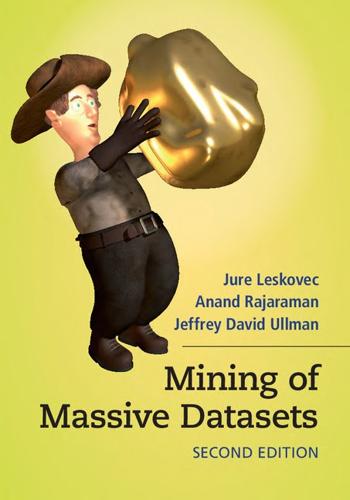
Mining of Massive Datasets
by
Jure Leskovec
,
Anand Rajaraman
and
Jeffrey David Ullman
Published 13 Nov 2014
Thus, including the originating host or originating email address into the feature vector describing an email might enable us to design a better classifier and lower the error rate. Creating a Training Set It is reasonable to ask where the label information that turns data into a training set comes from. The obvious method is to create the labels by hand, having an expert look at each feature vector and classify it properly. Recently, crowdsourcing techniques have been used to label data. For example, in many applications it is possible to use Mechanical Turk to label data. Since the “Turkers” are not necessarily reliable, it is wise to use a system that allows the question to be asked of several different people, until a clear majority is in favor of one label.
…
-S., 226 Child, 333 Cholera, 3 Chronicle data model, 152 Chunk, 22, 217, 244 CineMatch, 321 Classifier, 303, 415 Click stream, 125 Click-through rate, 271, 277 Clique, 338 Cloud computing, 15 CloudStore, 22 Cluster computing, 19, 20 Cluster tree, 252, 253 Clustera, 38, 66 Clustering, 3, 16, 228, 310, 325, 330, 415 Clustroid, 232, 239 Collaboration network, 328 Collaborative filtering, 4, 16, 70, 267, 292, 306, 328 Column-orthonormal matrix, 397 Combiner, 25, 168, 170 Communication cost, 20, 44, 365 Community, 16, 325, 336, 338, 361 Community-affiliation graph, 352 Commutativity, 25 Competitive ratio, 16, 272, 275, 279 Complete graph, 339, 340 Compressed set, 245 Compute node, 19, 20 Computer game, 299 Computing cloud, see Cloud computing Concept, 399 Concept space, 404 Confidence, 195, 196 Content-based recommendation, 292, 296 Convergence, 426 Cooper, B.F., 67 Coordinates, 228 Cortes, C., 458 Cosine distance, 89, 99, 298, 302, 404 Counting ones, 142, 257 Covering an output, 56 Craig’s List, 267 Craswell, N., 290 Credit, 334 Cristianini, N., 458 Cross-Validation, 420 Crowdsourcing, 422 CUR-decomposition, 384, 406 CURE Algorithm, 249, 252 Currey, J., 67 Curse of dimensionality, 230, 254, 452, 455 Cut, 343, 344 Cyclic permutation, 81 Cylinder, 11 Czajkowski, G., 67 DAG, see Directed acyclic graph Darts, 132 Das Sarma, A., 66 Dasgupta, A., 382 Data mining, 1 Data stream, 15, 220, 256, 270, 434 Data-stream-management system, 123 Database, 15 Datar, M., 122, 153, 265 Datar–Gionis–Indyk–Motwani Algorithm, 143 Dead end, 158, 161, 162, 184 Dean, J., 67 Decaying window, 148, 222 Decision tree, 17, 303, 419, 420, 456 Deerwester, S., 414 Degree, 341, 362 Degree matrix, 345 Dehnert, J.C., 67 del.icio.us, 299, 329 Deletion, 90 Dense matrix, 28, 406 Density, 238, 240 Depth-first search, 374 Determinant, 386 DeWitt, D.J., 67 DFS, see Distributed file system Diagonal matrix, 397 Diameter, 237, 240, 368 Diapers and beer, 194 Difference, 31, 34, 38 Dimension table, 50 Dimensionality reduction, 16, 312, 384, 453 Directed acyclic graph, 333 Directed graph, 367 Discard set, 244 Disk, 11, 199, 230, 252 Disk block, see Block Display ad, 267, 269 Distance measure, 87, 228, 331 Distinct elements, 133, 137 Distributed file system, 19, 21, 192, 198 DMOZ, see Open directory Document, 69, 72, 194, 229, 286, 297, 299, 418 Document frequency, see Inverse document frequency Domain, 181 Dot product, 89 Drineas, P., 414 Dryad, 66 DryadLINQ, 66 Dual construction, 330 Dubitzky, W., 414 Dumais, S.T., 414 Dup-elim task, 40 e, 12 Edit distance, 90, 92 Eigenpair, 385 Eigenvalue, 158, 346, 384, 395 Eigenvector, 158, 346, 384, 389, 394 Email, 328 Energy, 402 Ensemble, 303, 456 Entity resolution, 104 Equijoin, 31 Erlingsson, I., 67 Ernst, M., 67 Ethernet, 19, 20 Euclidean distance, 87, 101, 452 Euclidean space, 87, 91, 228, 230, 233, 249 Exponentially decaying window, see Decaying window Extrapoliation, 450 Facebook, 16, 176, 326 Fact table, 50 Failure, 20, 26, 39, 40, 42 Faloutsos, C., 383, 414 False negative, 83, 93, 216 False positive, 83, 93, 132, 216 Family of functions, 94 Fang, M., 226 Fayyad, U.M., 265 Feature, 252, 297, 298 Feature selection, 421 Feature vector, 416, 455 Fetterly, D., 67 Fikes, A., 67 File, 21, 198, 215 Filtering, 130 Fingerprint, 107 First-price auction, 279 Fixedpoint, 96, 182 Flajolet, P., 153 Flajolet–Martin Algorithm, 134, 376 Flow graph, 39 Fortunato, S., 382 Fotakis, D., 382 French, J.C., 265 Frequent bucket, 208, 209 Frequent itemset, 4, 192, 201, 204, 340, 415 Frequent pairs, 202 Frequent-items table, 203 Freund, Y., 458 Friends, 326 Friends relation, 49 Frieze, A.M., 122 Frobenius norm, 388, 402 Furnas, G.W., 414 Gaber, M.M., 18 Ganti, V., 122, 265 Garcia-Molina, H., 18, 190, 226, 265, 382 Garofalakis, M., 153 Gaussian elimination, 159 Gehrke, J., 153, 265 Generalization, 421 Generated subgraph, 339 Genre, 297, 309, 321 GFS, see Google file system Ghemawat, S., 67 Gibbons, P.B., 153, 383 Gionis, A., 122, 153 Girvan, M., 382 Girvan–Newman Algorithm, 333 Global minimum, 314 GN Algorithm, see Girvan–Newman Algorithm Gobioff, H., 67 Golub, G.H., 414 Google, 155, 166, 276 Google file system, 22 Google+, 326 Gradient descent, 17, 320, 355, 442 Granzow, M., 414 Graph, 42, 54, 325, 326, 361, 368 Greedy algorithm, 270, 271, 274, 278 GRGPF Algorithm, 252 Grouping, 24, 31, 35 Grouping attribute, 31 Groupon, 329 Gruber, R.E., 67 Guha, S., 266 Gunda, P.K., 67 Gyongi, Z., 190 Hadoop, 22, 67 Hadoop distributed file system, 22 Hamming distance, 63, 91, 98 Harris, M., 321 Harshman, R., 414 Hash function, 8, 74, 78, 83, 129, 131, 134 Hash key, 9, 285 Hash table, 8, 10, 11, 200, 207, 209, 211, 285, 287, 362 Haveliwala, T.H., 190 HDFS, see Hadoop distributed file system Head, 372 Heavy hitter, 362 Henzinger, M., 122 Hierarchical clustering, 230, 232, 249, 310, 331 Hinge loss, 441 HITS, 182 Hive, 66, 67 Hopcroft, J.E., 374 Horn, H., 67 Howe, B., 67 Hsieh, W.C., 67 Hub, 182, 183 Hyperlink-induced topic search, see HITS Hyperplane, 436 Hyracks, 38 Identical documents, 111 Identity matrix, 386 IDF, see Inverse document frequency Image, 125, 297, 298 IMDB, see Internet Movie Database Imielinski, T., 226 Immediate subset, 218 Immorlica, N., 122 Important page, 155 Impression, 268 In-component, 159 Inaccessible page, 178 Independent rows or columns, 397 Index, 10, 362 Indyk, P., 122, 153 Initialize clusters, 242 Input, 54 Insertion, 90 Instance-based learning, 419 Interest, 196 Internet Movie Database, 297, 321 Interpolation, 450 Intersection, 31, 33, 38, 71 Into Thin Air, 295 Inverse document frequency, see also TF.IDF, 8 Inverted index, 155, 268 Ioannidis, Y.E., 382 IP packet, 125 Isard, M., 67 Isolated component, 160 Item, 191, 193, 194, 293, 308, 310 Item profile, 297, 299 Itemset, 191, 199, 201 Jaccard distance, 87, 88, 95, 298, 453 Jaccard similarity, 69, 77, 87, 177 Jacobsen, H.
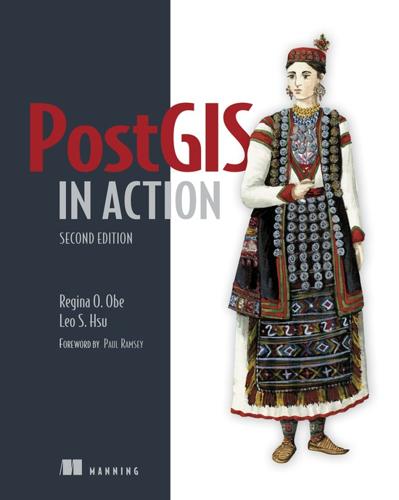
PostGIS in Action
by
Regina O. Obe
and
Leo S. Hsu
Published 2 May 2015
In the modern world, with location-aware smartphones in our pockets, GPS units in our vehicles, and the internet addresses of our computers geocoded, it has also become true that “who we are is where we are”—every individual is now a mobile sensor, generating a ceaseless flow of location-encoded data as they move about the planet. To manage and tame that flow of data, and the parallel flow of data opened up by economical satellite imaging and crowdsourced mapping, we need a tool equal to the task—a tool that can persistently store the data, efficiently access it, and powerfully analyze it. We need a spatial database, like PostGIS. Prior to the advent of spatial databases, computer analysis of location and mapping data was done with geographic information systems (GIS) running on desktop workstations.
…
In chapter 4 we grab data from some of these places to demonstrate how to load up on spatial data: OpenStreetMap (www.openstreetmap.org)—This community-driven spatial database and map repository has contributions from people all over the world. You can think of OSM as a free and open source Google map that has both web services and data you can download. It has base map information you can access via tile services as well as other crowd-sourced information such as biking trails and other GPS traces and waypoints in GPX format. You can use it as an overlay directly on your maps using something like OpenLayers. GeoNames (www.geonames.org/)—The GeoNames geographical database covers all countries and contains over eight million place names (cities, postal codes, countries) that are available for download free of charge.
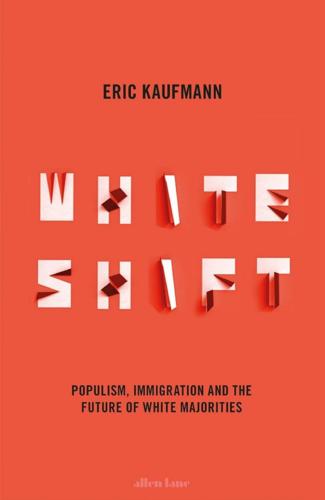
Whiteshift: Populism, Immigration and the Future of White Majorities
by
Eric Kaufmann
Published 24 Oct 2018
Mayer took second-generation-Polish calendar models and turned them into WASPs … The ethnics changed their names – Doris Kappelhoff became Doris Day, Bernie Schwartz turned into Tony Curtis, Margarita Carmen Cansino became Rita Hayworth and Dino Crocetti became Dean Martin … Those ethnic types who remained sufficiently original for identification were almost invariably second-class citizens: the blundering Irish sidekick, the Filipino valet, the Jewish comic … The genuine American was John Wayne, Gary Cooper, Clark Gable and Gregory Peck, a mythic man who transcended particular films or plots or situations.52 Does this still hold today? Together with Andrea Ballatore, I used data on ancestry from Ethnicelebs.com, a crowdsourced website which lists the ancestry of celebrities from stage, screen, sports, business and politics, past and present. Focusing on Americans, we then ran their surnames through an origins classifier.53 Twenty-five per cent of American actors were of British descent compared to an estimated 16 per cent in the American population, a significant over-representation.
…
There have to be non-negotiable values like women’s equality and freedom, but these provide little in the way of identity, notwithstanding the Islamic ‘threat’. A stronger civic nationalism which includes a compulsory shared history going back centuries and derides ethnicity is likely to alienate minorities. If it includes left-leaning institutions like the Canadian Broadcasting Corporation (CBC), it puts right-wingers off. Far better to crowd-source national symbols and allow people to read what they want into them, picking and choosing what moves them. This leverages people’s unique vantage points, realizing the wisdom of crowds. Politicians can affirm a multi-vocal understanding of nationhood by tuning into particular audiences. When speaking to liberals or an ethnically diverse crowd, they can talk about diversity and multiculturalism.
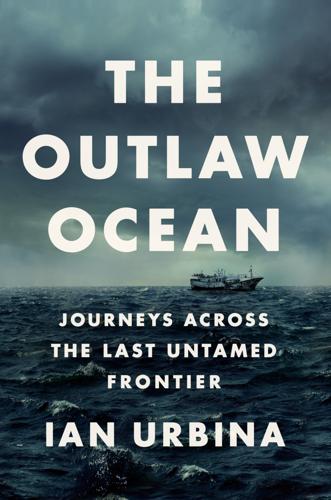
The Outlaw Ocean: Journeys Across the Last Untamed Frontier
by
Ian Urbina
Published 19 Aug 2019
In my reporting on sea slaves, like the captive Cambodian man Lang Long, I had seen the worst types of violence inflicted on fishermen, and I had certainly heard many times of cold-blooded killings at sea. But the scene playing on my laptop was a naked abomination, the killers exhibiting the glee of big-game hunters bagging their prey. Compounding the horror was that my Interpol source said that virtually nothing was known about these killings. In this era of drones and GPS, of big data and crowdsourcing, it seemed unthinkable that law enforcement would not have tracked down the perpetrators or the victims, or at least figured out the location, timing, or motives of this atrocity. A man clings to the wreckage of a small boat moments before he is gunned down in footage that was found on a cell phone left in a taxi in Fiji showing the murder of at least four unarmed men by gunmen on at least one Taiwanese tuna long-liner.
…
During the 1992–1993 whaling season, the Institute of Cetacean Research permitted him to spend five months aboard the ship and to film whatever he wanted, so long as his footage did not include any “unsightly” tasks on board. To locate their prey, whalers use a variety of sources of information, including published research about migration routes, historical data from animals that have been tagged with satellite transponders, maps of krill feeding zones, websites with crowdsourced sightings, and onboard sonar. The spotter ships that travel with the Nisshin Maru also act as the advance team. While on board, Votier witnessed thirty whale harpoonings, and his footage showed that after these harpoonings, the Nisshin Maru’s crew dragged the creature, while it was still alive, onto the deck and began, in industry parlance, the “secondary killing.”
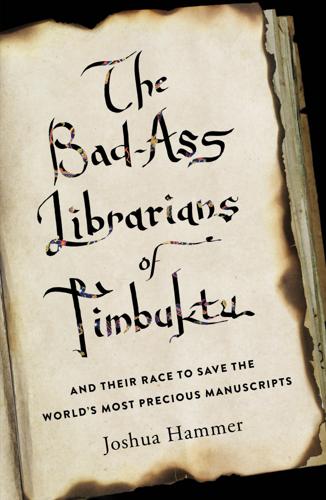
The Bad-Ass Librarians of Timbuktu: And Their Race to Save the World's Most Precious Manuscripts
by
Joshua Hammer
Published 18 Apr 2016
Then the two jihadi leaders would join forces on the highway, and lead their troops and vehicles all the way to Bamako. 16 Abdel Kader Haidara spent Thursday, January 10, the day that the jihadi forces of Iyad Ag Ghali captured Konna and prepared to advance further south, ensconced at the spacious, sunlit home of the American expatriate Emily Brady near the Niger River in Bamako. They had been raising money from European donors, running a crowdsourcing campaign, and sending cash to couriers in the north. Haidara was also dashing back and forth between Brady’s home and the double-arched Porte d’Entrée marking the north entrance to the capital, receiving his couriers and guiding them and their precious cargo to twenty-five storage places around the city.
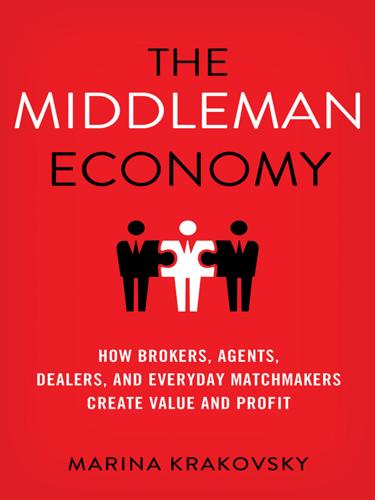
The Middleman Economy: How Brokers, Agents, Dealers, and Everyday Matchmakers Create Value and Profit
by
Marina Krakovsky
Published 14 Sep 2015
Another improvement: limiting who can post a review to those who’ve used the service, thus making it costlier to post fake reviews.16 Finding ways to elicit honest, reliable information is one of the big jobs of Enforcers by which they benefit both sides and from which they can profit themselves. This sort of policing isn’t just for Internet marketplaces (like OpenTable and Airbnb), and it does not rely heavily on cheap, crowd-sourced reviews. This chapter looks at middlemen operating off the Internet, too—a modeling agency, a temporary placement service, a wedding planning business—all of which enjoy the profits of a well-designed two-sided network. Because middlemen’s profits depend on the economic value of their network, they have a strong incentive to govern what happens in those networks.17 All the middlemen in this chapter collect information about participants on both sides of a deal, strategically parlay that information into the kind of accountability that increases the value of the network, and end up with a larger profit from the extra value created.
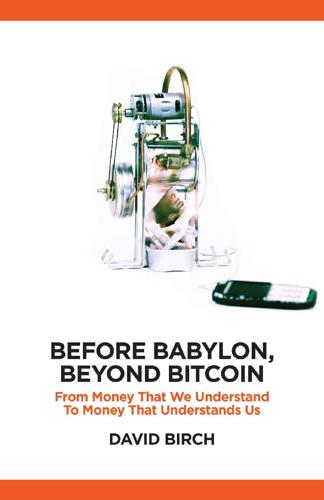
Before Babylon, Beyond Bitcoin: From Money That We Understand to Money That Understands Us (Perspectives)
by
David Birch
Published 14 Jun 2017
The proliferation of anonymous, web-based technologies will enable them to yield this power exponentially, creating the potential for devious criminal activity on a scale that has never before been possible. Imagine a world where dangerous minds have a public platform to solicit support from anyone with an Internet connection. Bigshot mock website (courtesy of Joe Carpita and Craig Stover). This idea of taking the assassination markets discussed in chapter 10 and opening them up through crowdsourcing encourages us to imagine new sorts of crime (and, in my opinion, new sorts of diplomacy) that we must take into consideration when trying to design the next generation of money just as much as the considerations around technology, economics and banking. * * * ******** It isn’t, I know, but I am making a different point here.
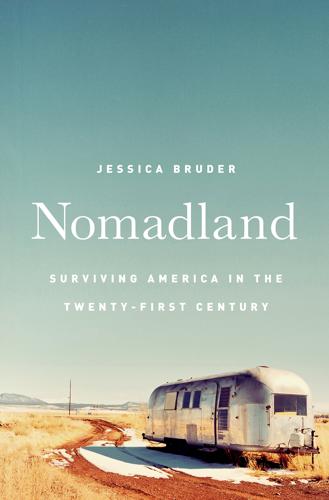
Nomadland: Surviving America in the Twenty-First Century
by
Jessica Bruder
Published 18 Sep 2017
Many trucks delivering early in the AM, so give them plenty of room. Sept 2010: Manager welcomes RVers. Park in the south end of the parking lot and be careful not to block their delivery trucks. The little “W” icons and notes feel like an updated version of hobo signs, the glyphs used by drifters to share place-based knowledge in what passed for crowdsourcing during the late nineteenth and early twentieth centuries. Marked on walls and doors with chalk or coal, sometimes carved into trees, the signs warned of threats—zealous police, vicious dogs, bad water—or pointed out resources: safe campsite, kindhearted lady, work available. The proliferation of blogs through the mid-2000s encouraged otherwise solitary travelers to chronicle their adventures before a wide audience, giving rise to microcelebrities.
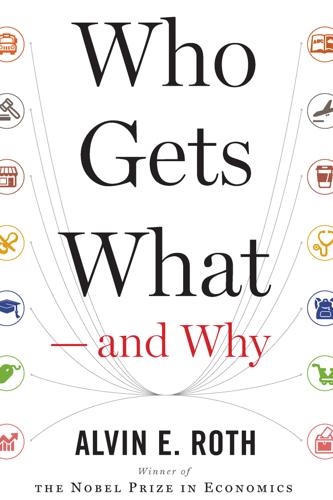
Who Gets What — and Why: The New Economics of Matchmaking and Market Design
by
Alvin E. Roth
Published 1 Jun 2015
Since we are going to dinner near where I live, you can probably rely on my local knowledge of the quality of the food and service. I may have eaten in the restaurants before, and if not, I likely know people who have: local restaurants have a local reputation. But even if you don’t know a restaurant’s local reputation, nowadays you can look at online crowd-sourced guides such as Yelp or Zagat, or (in the case of restaurant A) maybe the Michelin Guide or some other guide to fine dining. Restaurant C, on the opposite end of the dining spectrum, may be a franchise such as McDonald’s, making it just a tiny node in the vast network of a corporation that strives to maintain comparable standards across all of its outlets.
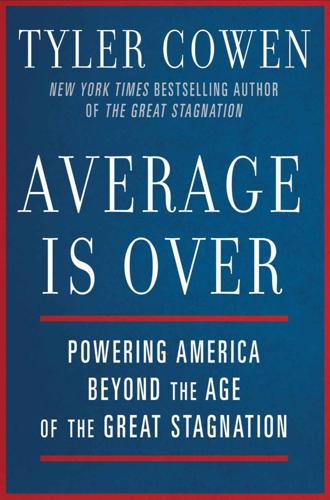
Average Is Over: Powering America Beyond the Age of the Great Stagnation
by
Tyler Cowen
Published 11 Sep 2013
We’re on the verge of having computer systems that understand the entirety of human “natural language,” a problem that was considered a very tough one only a few years ago. Just talk to Siri on your iPhone and she is likely to understand your voice, give you the right answer, and help you make an appointment. Siri disappoints with its mistakes and frequently obtuse responses, but it—or its competitors—will improve rapidly with more data and with assistance from crowd-sourced recommendations and improvements. We’re close to the point where the available knowledge at the hands of the individual, for questions that can be posed clearly and articulately, is not so far from the knowledge of the entire world. Whether it is through Siri, Google, or Wikipedia, there is now almost always a way to ask and—more importantly—a way to receive the answer in relatively digestible form.
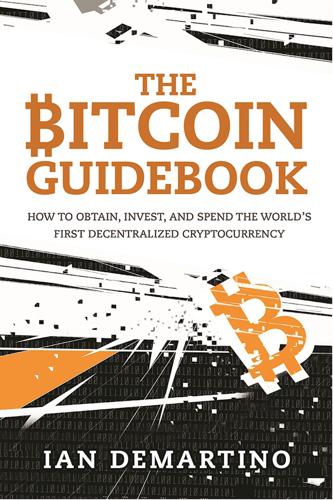
The Bitcoin Guidebook: How to Obtain, Invest, and Spend the World's First Decentralized Cryptocurrency
by
Ian Demartino
Published 2 Feb 2016
An early Bitcoin supporter, he received the first Bitcoin transaction. Mike Hearn: Bitcoin developer and Google employee; he created Lighthouse and is an advocate for Bitcoin XT. Olivier Janssens: An early adopter of Bitcoin who has become an angel investor in the space. He funded the creation of Lighthouse, a program that had been designed to crowdsource upgrades to Bitcoin’s core code but so far is mostly used to crowdfund unrelated projects. Mark Karpelès: CEO and owner of Mt. Gox when the exchange crashed. Wladimir van der Laan: Current lead developer of Bitcoin. Jed McCaleb: Founder and former owner of Mt. Gox, cofounder of Ripple, and cofounder of Stellar.
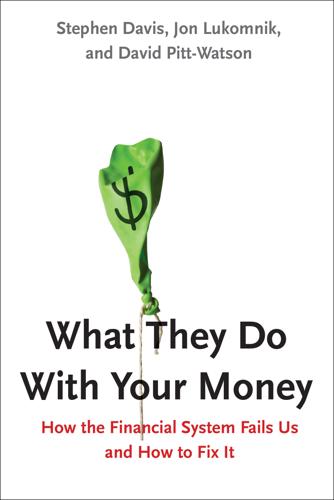
What They Do With Your Money: How the Financial System Fails Us, and How to Fix It
by
Stephen Davis
,
Jon Lukomnik
and
David Pitt-Watson
Published 30 Apr 2016
Reports from friends, consumer magazines, and websites such as Yelp or TripAdvisor or Edmunds often help us buy the best product or get the best deal. Companies brand their goods, promising that they will live up to expected quality standards, and they make great efforts to protect their brand and avoid reputational damage. Mobile computing is revolutionizing such nonregulatory approaches, allowing not just instant comparison shopping but crowd-sourced reviews of products and services in real time. Naturally, one central question about regulation is, what should be left to the market, and what to the regulator? After the financial crisis, the pendulum swung toward more regulation. But regulations don’t replace markets; they help them do what they ought, which is to give consumers the goods and services they desire, at the lowest cost, in a way that brings the least negative impact to them and others.6 Even if we agree on this basic point, that regulation should make markets work better, there are other questions about how regulation should be structured.
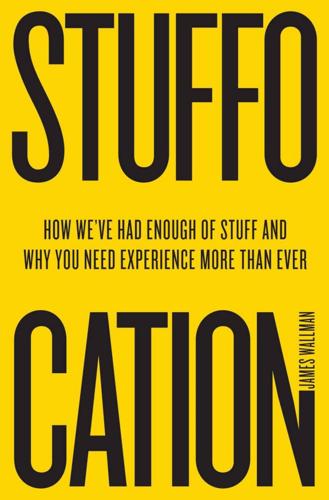
Stuffocation
by
James Wallman
Published 6 Dec 2013
The obvious solution was a small apartment, like all those places he had shared with Sasplugas. But then, he had loved having people over for dinner and friends to stay at his old place. Could he, he wondered, have both – a really small place with almost no stuff and no hassle, but also somewhere he could have friends over? To answer that question, Hill posted a challenge on a crowdsourcing website called Jovoto. He detailed the parameters and requirements: he wanted someone to create a design for a 420-square-foot apartment he had bought that would allow him to live and work there, host a sit-down dinner for twelve, and have a couple of friends to stay, while still giving them some privacy.
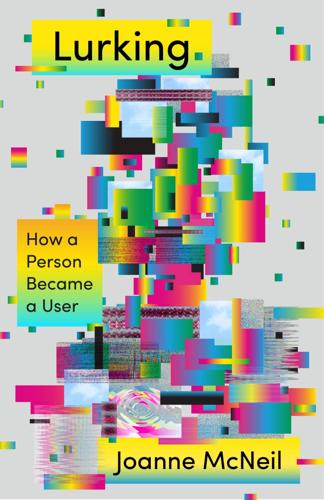
Lurking: How a Person Became a User
by
Joanne McNeil
Published 25 Feb 2020
Much of the mid-aughts tech enthusiasm took the self-organizing free labor of users for granted, but here is how it landed: one of the best known examples of “peer production” is Gamergate, and QAnon is, perhaps, the world’s only successful work of “transmedia storytelling.” One characteristic has distinguished the racism online today from yesterday’s innocent-ish little cyberspace: online patronage—fund-raising on Patreon or their own crowdfunding platforms when Patreon kicks them off. Social media and crowdsourcing platforms, and today’s internet of micro-fame and grift, appeals to the vanity of racists as much as any other deluded Instagram influencer. Someone who is dreaming of a Cernovich-style media empire might hold on to a poisonous ideology long after they have ceased to believe in it. An amoral person, feeble-minded and of limited means, might be tempted to hitch a ride on the violence of others.

The Buddha and the Badass: The Secret Spiritual Art of Succeeding at Work
by
Vishen Lakhiani
Published 14 Sep 2020
The implications of this are both negative and positive. For instance, a president’s reactionary tweet can spread in moments and cause the world to think negatively about an entire country. Conversely, what’s incredible is our ability to collectively solve problems, like the work of New York Times columnist Dr. Lisa Sanders, who crowdsources rare illnesses to find cures on the show Diagnosis. So here’s the grand question: If we are all cells, are you a healthy cell or a cancer cell? Does your work positively impact humanity? And for business leaders, is the mission of your company making a healthy cellular contribution to the Human Colossus?
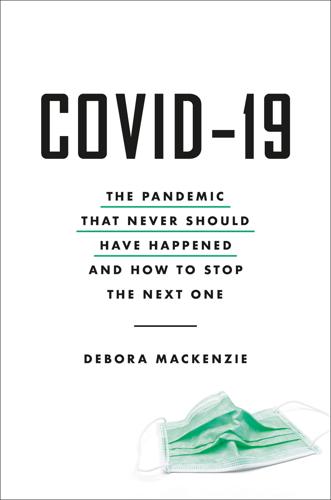
Covid-19: The Pandemic That Never Should Have Happened and How to Stop the Next One
by
Debora MacKenzie
Published 13 Jul 2020
Weather is a fitting analogy, as the US National Weather Service spends $1 billion a year collecting massive banks of weather data to turn into forecasts. The US CDC spends a quarter of that on analogous data for public health—local incidences of disease, age-specific death rates, vaccination rates—and has no budget for forecasting, as that has never before been realistic in public health. Of course, we already have one proven, crowd-sourced, worldwide, and battle-hardened disease surveillance system: ProMED. It also runs something called EpiCore aimed at getting around nations’ reluctance, or inability, to report disease. Medical and veterinary workers who know some field epidemiology sign up for it, and then if ProMED hears a worrying rumor, it can ask them, privately, to check it out using a web platform guaranteeing privacy.
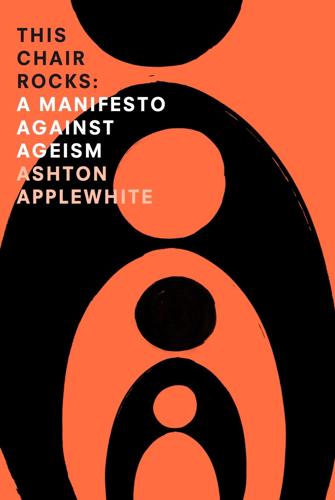
This Chair Rocks: A Manifiesto Against Ageism
by
Ashton Applewhite
Published 10 Feb 2016
Discussing the movie version of Fifty Shades of Grey, an NPR host quipped, “You might find out that Grandma needs a safe word” (a prearranged code used in bondage and domination sex to end an activity), as though the possibility were laughably remote. Or consider the discourse around “cougars”: women who like younger men. Here’s a charming description from the crowdsourced Urban Dictionary: “The cougar can be anyone from an overly surgically altered wind tunnel victim, to an absolute sad and bloated old horn-meister, to a real hottie or milf [Mother I’d Like to Fuck.]” Other entries testify to advantages of an older partner’s sexual experience, independence, and generally having her act together.

The Authoritarian Moment: How the Left Weaponized America's Institutions Against Dissent
by
Ben Shapiro
Published 26 Jul 2021
When Turing Award winner and Facebook chief AI scientist Yann LeCun pointed out that machine learning systems are racially biased only if their inputs are biased, and suggested that inputs could be corrected to present an opposite racial bias, the authoritarian woke critics attacked: Timnit Gebru, technical co-lead of the Ethical Artificial Intelligence Team at Google, accused LeCun of “marginalization” and called for solving “social and structural problems.” The answer, said Gebru, was to hire members of marginalized groups, not to change the data set used by machine learning.49 CROWDSOURCING THE REVOLUTION For most Americans, the true dangers of social media don’t even lie in the censorship of news itself: the largest danger lies in the roving mobs social media represent. The sad truth is that the media, in their ever-present quest for authoritarian rule, use social media as both their tip line and their action arm.

The Twittering Machine
by
Richard Seymour
Published 20 Aug 2019
And it afforded ISIS a new means of ideological dissemination, quite different from the hierarchical, vanguard model of Al-Qaeda communications.46 ISIS instead made short propaganda clips modelled on Hollywood fare, and games like its own ripped version of Grand Theft Auto exploited the volatility of Twitter, Instagram and Facebook, deploying crowdsourcing, apps, bots and hashtag-hacking. It used the logic of the Twitterstorm to insinuate its short, digestible bites of propaganda into popular culture. ISIS did not propose anything like the global, millenarian political philosophy of Al-Qaeda, but it disseminated a ready-to-hand narrative about emancipation from the ‘oppressive Tawaghit’ – the system of regimes bequeathed by the colonial partition of the Middle East.

Blitzscaling: The Lightning-Fast Path to Building Massively Valuable Companies
by
Reid Hoffman
and
Chris Yeh
Published 14 Apr 2018
Mariam Naficy of the online art and graphic design marketplace Minted realized that she could combine the strengths of both groups to create a more effective management team. “It takes years and years to grow candidates from within,” she told our Blitzscaling class at Stanford. “We take disciplines where we aren’t strong, like finance and HR, and hire in experts from the outside. When it comes to our secret sauce, like crowdsourcing, we grow people from the inside. Our VP Art and Stationery grew internally, while our VP Finance and Chief People Officer are outside hires.” Even if an outside executive has the requisite blitzscaling experience, though, he or she could still fail because of poor cultural fit—the “transplant rejection” phenomenon.
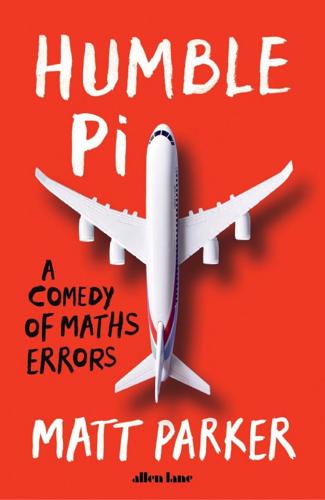
Humble Pi: A Comedy of Maths Errors
by
Matt Parker
Published 7 Mar 2019
The idea was that a driver could load the Street Bump app on to their smartphone and, while they are driving, the accelerometers in the phones would be looking for the tell-tale bump from when the car drives over a pothole. This constant updating map of potholes would allow city councils to fix new ones before they grew into car-eating canyons. It got even more zeitgeist when some crowdsourcing was thrown in. The first version of the app was not good at spotting a false positive: data which looks like the data you want but is actually something else. In this case, the app was picking up cars driving over kerbs or other bumps and registering them as potholes; even the drivers moving the phone around in the car could register as a pothole.
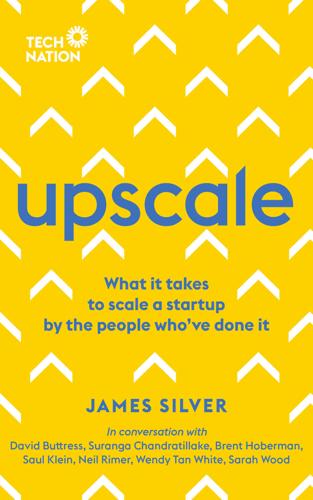
Upscale: What It Takes to Scale a Startup. By the People Who've Done It.
by
James Silver
Published 15 Nov 2018
On the flipside, get the DNA of your company wrong early on, and it’s often unfixable. Brent Hoberman is chairman and co-founder of Founders Factory, a corporate-backed incubator/accelerator based in London. He is also the co-founder and board director of made.com, a direct-from- factory consumer crowd-sourced homewares retailer in the UK. He co-founded PROfounders Capital in 2009. In April 1998, Brent cofounded lastminute.com. He was CEO from its inception, and the team took the company to profit and gross bookings of over $2bn. In 2005, lastminute.com was sold to Sabre for $1.1bn. Brent sits on the advisory board for LetterOne Technology (a $16bn investment fund) and the UK government’s Digital Advisory Board.

Brave New Work: Are You Ready to Reinvent Your Organization?
by
Aaron Dignan
Published 1 Feb 2019
☐ Give everyone the freedom to choose when, where, and how they work. ☐ Clarify the decision rights held by teams and roles. ☐ Use the concept of a waterline to create guardrails around team and individual autonomy. ☐ Start distributing authority to the edge of the organization. ☐ Crowdsource and eliminate policies and processes that no longer make sense. ☐ Start by stopping a meeting, process, or habit that is holding us back. ☐ Leverage decision science to reduce bias and make objectively better choices. ☐ Use Integrative Decision Making for important collective decisions
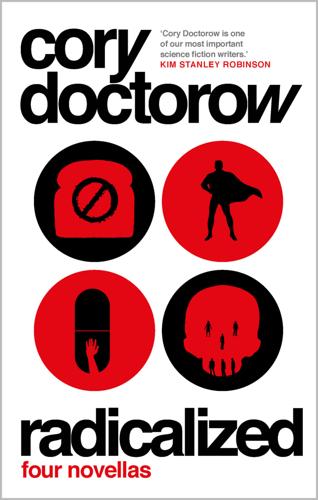
Radicalized
by
Cory Doctorow
Published 19 Mar 2019
There were other communal areas: a game room, a dining room, a kitchen, a panic room hidden beneath the garage. He drew up a rota: cooking, cleaning, inventorying, anything to keep everyone busy. He “proposed”—that is, mandated—a daily hour of news consumption in the hospitality suite, when they’d all tune in at once, crowdsourcing a scour through all their channels and recommendations, finding the noteworthy stories that seemed to encapsulate and summarize the chaos outside, and then discussing them in a round-robin circle with Martin moderating. It was hard to tell whether things were deteriorating or whether it was just the usual baseline of craziness, made more vivid by the fact that they’d all hunkered down in a fortress to await the collapse of civilization.
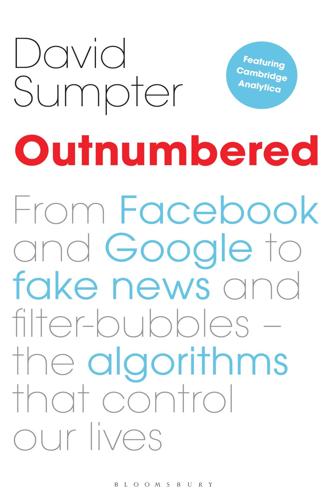
Outnumbered: From Facebook and Google to Fake News and Filter-Bubbles – the Algorithms That Control Our Lives
by
David Sumpter
Published 18 Jun 2018
CA claims to: ‘take into account the behavioral conditioning of each individual [voter] to create informed forecasts of future behavior’.7 To do large-scale regression on our political personalities, Cambridge Analytica needed a lot of data. In 2014, psychologist Alex Kogan, a researcher at Cambridge University, was collecting data for his scientific studies through an online crowd-sourcing marketplace called Mechanical Turk. Alex described Mechanical Turk to me as ‘a big pool of folks who’ll do tasks in exchange for cash’. For his scientific study, he was asking them to complete a seemingly inconsequential job: they answered two questions about their income and how long they had been on Facebook, and then clicked a button that gave Alex and his colleagues consent to access their Facebook profile.

How to Fix the Future: Staying Human in the Digital Age
by
Andrew Keen
Published 1 Mar 2018
She expresses a vision of Singapore’s digital future in the democratized language of a Silicon Valley visionary. She explains her agency’s championing of open data platforms and hackathons that leverage Smart Singapore information for the common good. She boasts about civic hacking and the “cocreation” of apps between citizens and government. She tells me about Singapore’s free, crowd-sourced MyResponder app developed by the Civil Defense Force, which enables the public to both report and respond to cases of cardiac arrest happening on the street. And she explains the importance of Data.gov.sg, the Singapore government’s one-stop portal for the sharing of datasets from seventy public agencies.
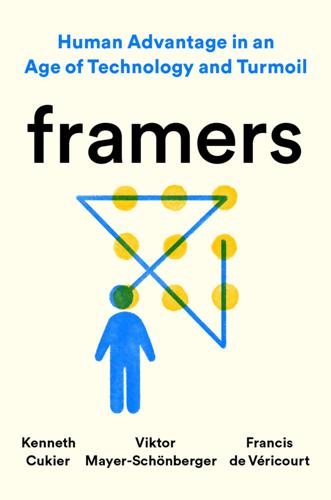
Framers: Human Advantage in an Age of Technology and Turmoil
by
Kenneth Cukier
,
Viktor Mayer-Schönberger
and
Francis de Véricourt
Published 10 May 2021
“No matter who you are, most of the smartest people work for someone else,” chirped the consummate Silicon Valley geek Bill Joy in the 1990s. Even if an organization is able to attract diverse members to its teams, the most appropriate mental models may be held by individuals elsewhere, especially for tough reframing challenges. The internet lowers the transaction costs of involving outsiders, underpinning the open-innovation, crowdsourcing platforms like InnoCentive and Kaggle. They don’t simply bring together different people but their diverse frames. At times the approach works extremely well. The Japanese company Cuusoo created a site for fans to share Lego ideas. People from around the world proved so creative—far more than Lego’s own master builders—that in 2008 the Danish company joined forces with the community of fans to sell their sets.
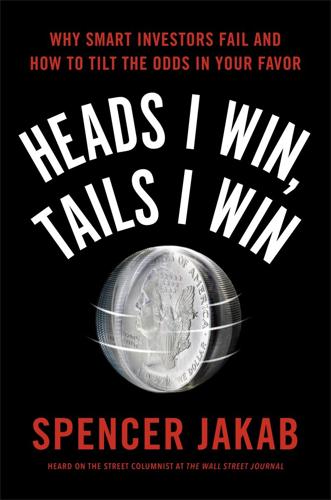
Heads I Win, Tails I Win
by
Spencer Jakab
Published 21 Jun 2016
For example, the University of Iowa has run a nonprofit exchange to bet on U.S. presidential elections since the 1980s, with results that usually have been more accurate than pollsters and even voter surveys just before the election. The magnitude of their bets, and hence their confidence, affects market prices. By contrast, a simple poll of experts such as the Wall Street Journal economists survey gives equal weight to each expert, ignoring their level of conviction or past track record. Crowdsourced predictions could soon make the earnings “surprise ratio” a thing of the past. One company that has gained traction is Estimize, which, among other things, runs a prediction survey in earnings forecasts. They claim to be more accurate than 70 percent of Wall Street consensus figures. Instead of making money from bettors, though, they sell data on the guesses to investors such as hedge funds who can make short-term profits off of “surprising” results.
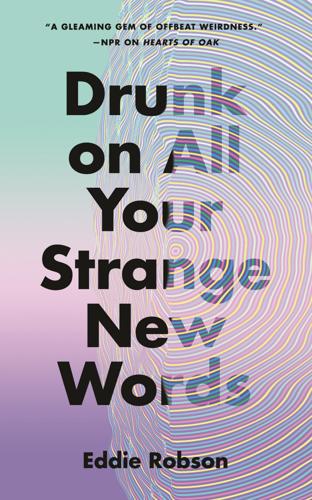
Drunk on All Your Strange New Words
by
Eddie Robson
Published 27 Jun 2022
which he claims ran for two seasons, was Canadian in origin and which he can find no trace of now, apart from chats where people try to find other people who remember it. It’s about a crack special ops team who can transform into giant snakes and travel through time and space via wormholes. Most sources agree one of the team was called Ariadne and they fought an evil organization called G.O.O.N.Z. The chapter includes a crowdsourced episode guide for the show which goes on for forty pages, as well as a sound file of the author’s (presumably) best attempt at playing the theme tune. It’s not clear to Lydia why the Logi might want to erase this cartoon, or indeed any of the other texts mentioned in the book, from existence—but Sheppard devotes another chapter to extensive speculation on the topic, trying to find connections between this seemingly random collection of material.
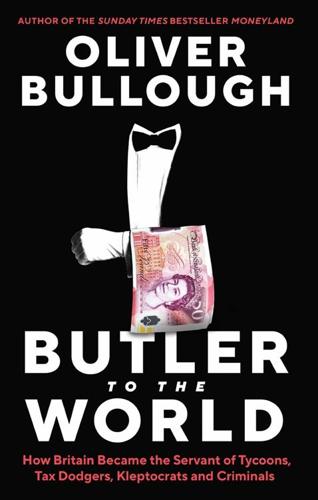
Butler to the World: How Britain Became the Servant of Tycoons, Tax Dodgers, Kleptocrats and Criminals
by
Oliver Bullough
Published 10 Mar 2022
In short, private prosecutors get to take a one-way punt at public expense, while their opponents not only have to fund their own defence but face the prospect of losing everything if convicted. This alarming situation has pretty much entirely escaped public notice. Where private prosecutions do catch the media’s attention, it tends to be when they are crowdsourced. In one case EMM acted for a cycling charity in an (unsuccessful) attempt to prosecute a driver over a cyclist’s death. In another case a man raised £300,000 to privately prosecute Boris Johnson for lying during the Brexit campaign. A judge threw that case out before it even came to trial, but it gained enough publicity to give the impression that private prosecutions are a useful tool for campaigners looking to find justice.
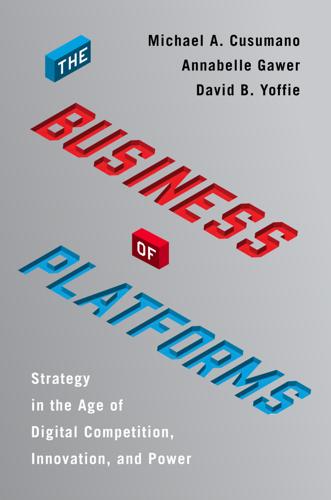
The Business of Platforms: Strategy in the Age of Digital Competition, Innovation, and Power
by
Michael A. Cusumano
,
Annabelle Gawer
and
David B. Yoffie
Published 6 May 2019
A nearby driver would accept the request, and pick up and drop off the rider, who made payment through the app. No cash or other form of payment changed hands. In announcing the launch of the service, Sunil Paul claimed that “Sidecar is more than just the easiest way to get around the city. We have created a platform for the first crowd-sourced transportation network.”6 Over the next few years, Sidecar expanded slowly and was available in about a dozen cities across the United States by 2015, including Los Angeles, Seattle, Austin, Chicago, Charlotte, Washington, D.C., Brooklyn, and Boston. On Sidecar’s platform, payment was initially an optional “contribution” to the driver; the app provided information to riders about average donations to help them decide how much to contribute if they chose to do so.
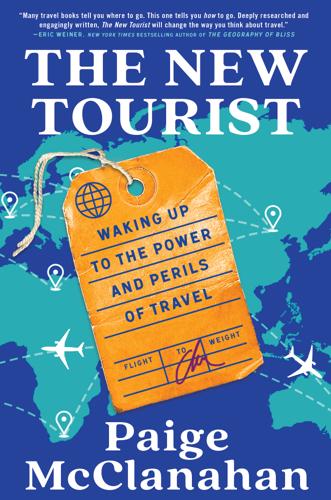
The New Tourist: Waking Up to the Power and Perils of Travel
by
Paige McClanahan
Published 17 Jun 2024
Only one helpful source would have been reliably available to Tony and Maureen in London at the time, and that was Overland to India and Australia. Published by BIT, an alternative information and exchange service based in London, BIT guides were a sort of hard-copy, baby boomer version of Craigslist. Much of the Asia overland guide was crowdsourced, and misinformation was rife—“You know some people were eight miles high when they wrote this stuff,”4 Tony later recalled—but it was the single best resource they had. The edition that was published in April 1972, a few months before the Wheelers set off, could be obtained for a “minimum donation” of fifty pence and consisted of a grand total of twenty stapled pages.
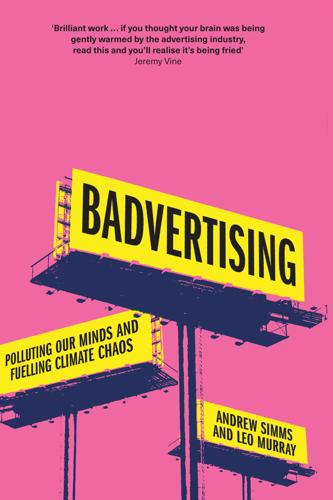
Badvertising
by
Andrew Simms
What it found was a dire state of health for media around the world, with the conditions for journalism ‘bad’ in seven out of ten countries. The UK was picked out for threats to investigative journalism from ‘a national security bill that lacks protective measures’.38 Hind wants a shift in the centre of gravity for the decisions that determine what we get to hear about and how. He argues for a type of informed, democratic, crowdsourced system of public commissioning that would allocate resources to researchers and investigative journalists. It would sit alongside existing, conventional media, but dilute their control. In practice this would widen the realm of civic engagement, allowing individuals otherwise excluded to raise matters of common concern to fellow citizens.

The Future Was Now: Madmen, Mavericks, and the Epic Sci-Fi Summer Of 1982
by
Chris Nashawaty
Roddenberry would laugh appreciatively and insist to fans that the decision ultimately wasn’t up to him; it was up to NBC and Paramount. He would leave every Trek event by rallying the mob with the words: “It’s up to you folks to make sure the studio knows how badly you all want this!” Roddenberry couldn’t have guessed it then, but he had single-handedly put into motion what would become the first crowdsourced franchise in Hollywood history. While Paramount kept reaping the financial windfall brought by Star Trek’s syndication rights throughout the first half of the ’70s, the studio didn’t seem to realize the potential gold mine it was sitting on until a regime change rocked the studio in 1976. While Paramount’s playboy head of motion picture production in the early ’70s, Robert Evans, had goosed both the studio’s ledger and its reputation around town as a popular champion for New Hollywood directors, he would eventually be shown the door in 1974.
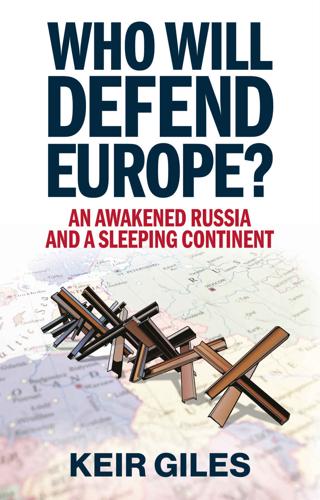
Who Will Defend Europe?: An Awakened Russia and a Sleeping Continent
by
Keir Giles
Published 24 Oct 2024
The imminence of the existential threat from Russia led to a roughly four-fold expansion in the numbers of Ukrainian defenders under arms. No European country would be able to cope with that speed and scale of expansion, and even if it did manage to raise a citizen army, it would have nothing to fight with – even in Ukraine, many combatants are still purchasing their own equipment or relying on crowdsourced donations, two years and more after the full-scale invasion. Moreover while some front-line states invest in volunteer territorial defence reserves, most European countries would be unable to raise the volunteer battalions that saved Ukraine in 2014 and to some extent in 2022. The fate of cities like Mariupol set a grim precedent for how similarly-sized capitals of NATO member states within reach of Russia might fare in open warfare.
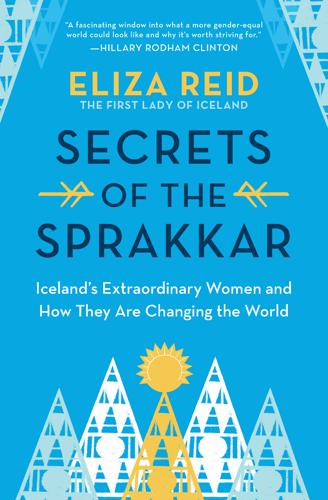
Secrets of the Sprakkar
by
Eliza Reid
Published 15 Jul 2021
And yet, international media outlets have often portrayed Iceland in astonishingly oversimplified terms, sacrificing the nuances of a nation that few know intimately for the allure of a good (if wildly inaccurate) story. According to too many parachute journalists, Iceland is a gender paradise, a country where we can rest on our laurels as we bask in the benefits of a near-perfect nation where we all have a quaint belief in elves, jailed all our bankers after the economic collapse, crowdsourced a constitution that protects the Earth as well as humanity, and where women and men live in complete harmony. (Please excuse the hyperbole.) International inaccuracies aside, we cannot understand Iceland’s successes and ongoing challenges in the field of gender equality without examining the role of the media in the fight.

Artificial Intelligence: A Modern Approach
by
Stuart Russell
and
Peter Norvig
Published 14 Jul 2019
To some extent that is true: just as you should not expect to be able to assemble a champion Formula One race car out of spare parts in your garage, there is an advantage to having access to supercomputers or specialty hardware such as Tensor Processing Units. That is particularly true when training a system, but training could also be done via crowdsourcing. For example the open-source LEELAZERO system is a reimplementation of ALPHAZERO that trains through self-play on the computers of volunteer participants. Once trained, the computational requirements for actual tournament play are modest. ALPHASTAR won StarCraft II games running on a commodity desktop with a single GPU, and ALPHAZERO could have been run in that mode. 6.7Limitations of Game Search Algorithms Because calculating optimal decisions in complex games is intractable, all algorithms must make some assumptions and approximations.
…
The field of weakly supervised learning focuses on using labels that are noisy, imprecise, or supplied by non-experts. 19.9.2Data collection, assessment, and management Every machine learning project needs data; in the case of our photo identification project there are freely available image data sets, such as ImageNet, which has over 14 million photos with about 20,000 different labels. Sometimes we may have to manufacture our own data, which can be done by our own labor, or by crowdsourcing to paid workers or unpaid volunteers operating over an Internet service. Sometimes data come from your users. For example, the Waze navigation service encourages users to upload data about traffic jams, and uses that to provide up-to-date navigation directions for all users. Transfer learning (see Section 22.7.2) can be used when you don’t have enough of your own data: start with a publicly available general-purpose data set (or a model that has been pretrained on this data), and then add specific data from your users and retrain.
…
The Web has served as a rich source of images, videos, speech, text, and semi-structured data, currently adding over 1018 bytes every day. Hundreds of high-quality data sets are available for a range of tasks in computer vision, speech recognition, and natural language processing. If the data you need is not already available, you can often assemble it from other sources, or engage humans to label data for you through a crowdsourcing platform. Validating the data obtained in this way becomes an important part of the overall workflow (Hirth et al., 2013). An important recent development is the shift from shared data to shared models. The major cloud service providers (e.g., Amazon, Microsoft, Google, Alibaba, IBM, Salesforce) have begun competing to offer machine learning APIs with pre-built models for specific tasks such as visual object recognition, speech recognition, and machine translation.

Seeking SRE: Conversations About Running Production Systems at Scale
by
David N. Blank-Edelman
Published 16 Sep 2018
The only instruction they were given on tone was this: Pretend you are at lunch at a conference like SREcon. You are sitting with a bunch of smart SREs at lunch you don’t know, and one of them says to you, “So, what are you working on? What’s interesting to you these days?” You begin to answer the question… Now write that down. Even further in this direction is the crowdsourced chapter on the relationship between DevOps and SRE (Chapter 12). When I realized that there are likely many answers to this question and that no one I knew had the only right answer, I put the question out to my social networks (and people were kind enough to broadcast it even further). I’m very grateful for everyone who answered the call.
…
As far as I can tell, it’s not a settled question. Each person I have talked to added something to my understanding. When it came time to find a contributor on this topic, it seemed like the best thing I could do would be to invite as many voices into the discussion as possible. Welcome to an experiment — an entirely crowdsourced chapter. Method At the end of February 2018, I put up a website with a page that asked the following: In two paragraphs or less, what do you think is the relationship between DevOps and SRE? How are they similar? How are they different? Can both be implemented at every organization? Can the two exist in the same org at the same time?
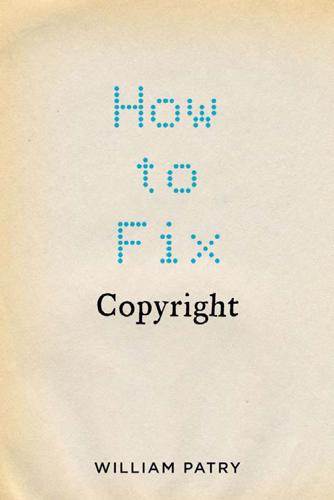
How to Fix Copyright
by
William Patry
Published 3 Jan 2012
Both collectives are made up of individual clarinetists from around the world who pool their resources to commission new works from composers.40 The collectives encourage as many clarinetists as possible to become involved by contributing financially and by performing the works commissioned. The collectives thus break with the traditional model of passive financial donors: members are expected to do their part in spreading culture by also performing. The Kickstarter project is another example of crowd-sourced funding of creators.41 Kickstarter is the world’s largest funding platform for creative projects in the world. Kickstarter helps artists, filmmakers, musicians, designers, writers, illustrators, explorers, curators, performers, and others to bring their projects to life. Kickstarter uses Amazon.com’s Flexible Payments Service so that individuals from around the world can pledge money to specific projects detailed on the site.

Wonderland: How Play Made the Modern World
by
Steven Johnson
Published 15 Nov 2016
Watson. To capture as much information about the world as possible, Watson ingested the entirety of Wikipedia, along with more than a hundred million pages of additional data. There is something lovely about the idea of the world’s most advanced thinking machine learning about the world by browsing a crowdsourced encyclopedia. (Even H. G. Wells’s visionary prediction of a “global brain” didn’t anticipate that twist.) From the data sources, and from software prompting by the IBM researchers, Watson developed a nuanced understanding of linguistic structures that let it parse and engage in less rigid conversations with humans.

Fluent Forever: How to Learn Any Language Fast and Never Forget It
by
Gabriel Wyner
Published 4 Aug 2014
Wikipedia.org WIKIPEDIA, “IPA FOR [INSERT-LANGUAGE-HERE]” ARTICLES Articles on IPA in various languages (e.g., “IPA for Spanish”) that can show you all of the sounds in your target language, its IPA symbols, and a bunch of example words. If you know IPA, they can be really handy. Google for “IPA for [Insert-Language-Here].” But don’t actually type “[Insert-Language-Here].” Type “French” or something. WIKTIONARY A crowd-sourced dictionary, much like Wikipedia. Aside from the enormous English dictionary (which can show you translations of most words in the English language into most languages), Wiktionary contains a large number of excellent monolingual (French-French, Spanish-Spanish) dictionaries. Many of these also contain quality IPA transcriptions of most words.

Undoing the Demos: Neoliberalism's Stealth Revolution
by
Wendy Brown
Published 6 Feb 2015
While Britain has semiprivatized most public institutions and tied remaining state funding to a set of academic productivity metrics that measure knowledge according to “impact,” the icon of transformation in the United States is a bit different — proliferation of more informal ranking systems proximate to crowdsourcing. Older measures of college quality (themselves contestable insofar as they were heavily bound to the caliber and size of applicant pool, along with endowments) are being rapidly supplanted by a host of new “best bang for the buck” rankings.10 Offered by venues ranging from Kiplinger’s Personal Finance to the Princeton Review and Forbes Magazine, the algorithms may be complicated, but the cultural shift is plain: replacing measures of educational quality are metrics oriented entirely to return on investment (ROI) and centered on what kind of job placement and income enhancement student investors may expect from any given institution.
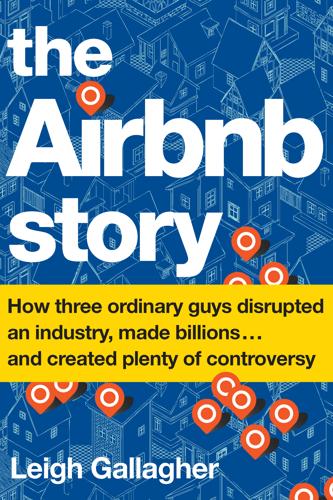
The Airbnb Story: How Three Ordinary Guys Disrupted an Industry, Made Billions...and Created Plenty of Controversy
by
Leigh Gallagher
Published 14 Feb 2017
Douglas Atkin’s effort to build a petition movement during the New York attorney general’s investigation was part of a broader effort in 2013 and 2014 to engage the Airbnb community in three cities where it faced opposition: New York, San Francisco, and Barcelona. Called Firestarter, it was a sophisticated mobilization approach that drew on tactics from the Obama presidential campaigns—specifically, the “snowflake” model of community-driven campaigning, a sort of crowd-sourced, bottom-up campaign model that empowers volunteers to organize and train each other. By ratcheting the asks of community members up a “commitment curve,” starting with showing up at a meeting or sending a tweet all the way up to writing op-eds, the tactic is designed to extract as much passion as possible out of everyday people.
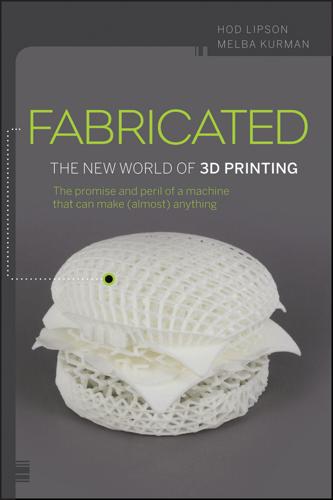
Fabricated: The New World of 3D Printing
by
Hod Lipson
and
Melba Kurman
Published 20 Nov 2012
Microfactories could have the same positive economic impact as did microloans, transforming low-income communities and empowering disenfranchised sectors of the population. Related social trends will enable microfactories to grow. Open source collaborative business models will allow microfactories to access necessary expertise and tools. Online crowdsourcing will allow microfactories to explore new ideas. Crowd financing will allow microfactories to raise funds to finance new ideas. In the future, economically advanced nations will no longer be able to base most of their economies on profits earned from mass manufacturing. Low wage manufacturing jobs and the production of low margin commodity products will continue to migrate to nations where labor costs less. 3D printing technologies will enable companies to build new business models, to carve out a profitable niche in the economy of the future.

How Music Got Free: The End of an Industry, the Turn of the Century, and the Patient Zero of Piracy
by
Stephen Witt
Published 15 Jun 2015
I found secret websites in Micronesia and the Congo, registered to shell corporations in Panama, the true proprietors being anyone’s guess. Buried in thousands of pages of court documents, I found wiretap transcripts and FBI surveillance logs and testimony from collaborators in which the details of insidious global conspiracies had been laid bare. My assumption had been that music piracy was a crowdsourced phenomenon. That is, I believed the mp3s I’d downloaded had been sourced from scattered uploaders around the globe and that this diffuse network of rippers was not organized in any meaningful way. This assumption was wrong. While some of the files were indeed untraceable artifacts from random denizens of the Internet, the vast majority of pirated mp3s came from just a few organized releasing groups.
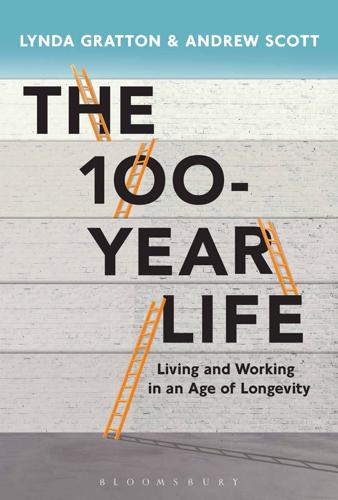
The 100-Year Life: Living and Working in an Age of Longevity
by
Lynda Gratton
and
Andrew Scott
Published 1 Jun 2016
But like many people running their own business, she struggles to get the finances right. It is at this point that she meets Sam, who has experience of making events profitable. She introduces Jane to others who are trying to make pop-up events work and persuades her to widen her ideas about financing. By 2026, the crowd-sourcing market has really taken off and Jane takes the plunge to see who will support her venture. She needs to actively build her reputation and over the next couple of years this is a real focus of her attention. Sam shows her how to create a really vibrant and exciting virtual online presence and her weekly blog attracts a steady stream of enthusiasts.
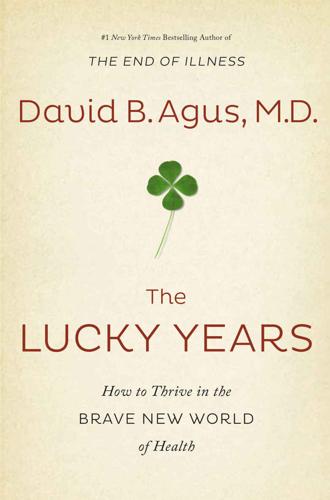
The Lucky Years: How to Thrive in the Brave New World of Health
by
David B. Agus
Published 29 Dec 2015
The majority of these deaths occur because of bad math; it’s not easy calculating an accurate age for babies being born at an unknown gestation. Consequently, premature babies are not identified in a timely fashion, and we often miss the opportunity for simple, low-cost interventions that help avoid the complications related to being born premature, such as hypothermia. The MyBabyFace app leverages the power of crowdsourcing. Parents across the world upload a photo of their baby’s feet, face, and ears as well as the gestational age. The current purpose of the app is simply to collect data, and the hope is to develop a database to make it easier to judge a child’s time in the womb. Another app, Neogest, uses the depth of foot wrinkles and the roundness of the eyes as clues for gauging a baby’s degree of prematurity.

Street Smart: The Rise of Cities and the Fall of Cars
by
Samuel I. Schwartz
Published 17 Aug 2015
UTA also allows third parties access to its data, which means that riders throughout the Wasatch Range can use apps like GeoUTA, a GPS-driven app tracking UTA buses; iTransitBuddy Lite for train schedules; Roadify Transit for real-time arrivals and departures for multiple transit choices; SmartTransit; and Moovit, which uses UTA-supplied open data but supplements it with anonymous crowd-sourced information. It’s not just Utah, of course. CityMapper (the “Ultimate Transit App”) provides point-to-point routing plus real-time departure information on every available form of public transit for San Francisco, Chicago, New York, Washington, DC, Boston, London, Paris, Berlin, Madrid, Barcelona, Milan, and Rome—and, with a single stroke, will plan a “get me home” route, as well.

Mindwise: Why We Misunderstand What Others Think, Believe, Feel, and Want
by
Nicholas Epley
Published 11 Feb 2014
The last seven lines show what these respondents thought was the ideal amount of inequality in the United States; all of them, by large margins, think a more equitable distribution would be more ideal. I thank Mike Norton for sending me these results. 4. I conducted this survey online in the fall of 2012, using Amazon’s Mechanical Turk. This is an online crowdsourcing site that coordinates the use of human intelligence for all sorts of tasks that computers are currently unable to perform. It also allows researchers to conduct survey experiments like this one with a reasonably representative sample of respondents. 5. Ashmore, R., and F. Del Boca (1981). Conceptual approaches to stereotypes and stereotyping.
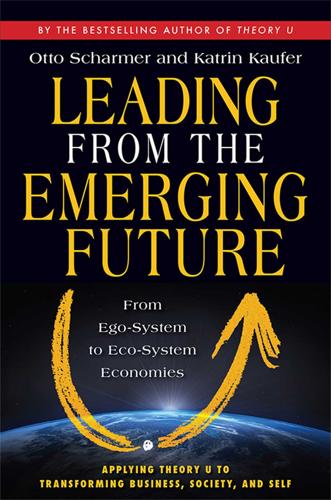
Leading From the Emerging Future: From Ego-System to Eco-System Economies
by
Otto Scharmer
and
Katrin Kaufer
Published 14 Apr 2013
We witnessed a first wave of this process when global companies and organizations started to decentralize their decision-making processes according to functions, divisions, and geography. Today we see a second wave further shifting the locus of leadership. Decision-making is being pushed even further out, beyond the boundaries of the organization. This process is referred to by different names: extended enterprise, innovation eco-system, crowdsourcing, swarm intelligence. What is happening in organizations today is what has happened to nation-states in a globalized world before: Both became too small for the big problems and too big for the small problems. The result is an inversion of the old model. The pyramid is flipped upside-down so that the cultivation of co-creative relationships among stakeholders is at the heart of the new eco-system model of organizing.
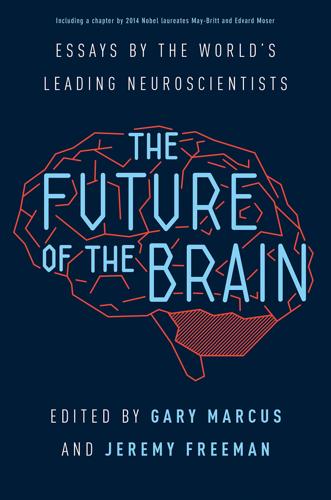
The Future of the Brain: Essays by the World's Leading Neuroscientists
by
Gary Marcus
and
Jeremy Freeman
Published 1 Nov 2014
A few of the main challenges of building a microscale mammalian connectome today include: the data collection would take years given current technology; annotation tools are insufficient to fully delineate and extract information at a neuronal scale; and, not least, the algorithms necessary to map relevant connections and build the connectivity graphs are not yet fully developed. To address these machine-vision and image-processing issues, the Open Connectome Project (openconnectome.org) is a crowd-sourcing initiative to meet this challenge. Finally, statistical graph theory is an emerging discipline that is developing sophisticated pattern recognition and inference tools to parse these brain graphs. The Future Brain Development of large-scale brain atlases is now a major undertaking in neuroscience.
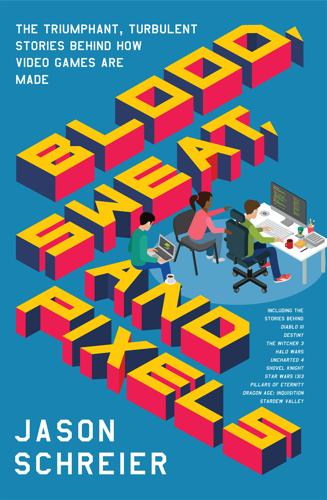
Blood, Sweat, and Pixels: The Triumphant, Turbulent Stories Behind How Video Games Are Made
by
Jason Schreier
Published 4 Sep 2017
He didn’t have any publishing contacts. He didn’t even know anyone else who made video games. Worried that nobody would even be able to discover the game he’d spent a year making, Barone searched the Internet and stumbled upon a new program that seemed promising: Steam Greenlight. With Greenlight, Valve crowdsourced its approval process, allowing fans to vote on the games they’d want to play. Games that hit a certain number of votes (a number that the famously secretive Valve kept quiet) would automatically get a spot in the store. In September 2012, Barone put Stardew Valley on Steam Greenlight. “I thought that the game was basically done,” Barone said.
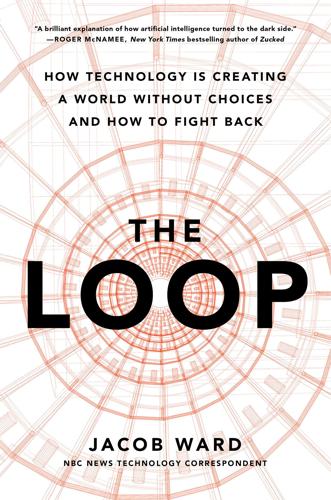
The Loop: How Technology Is Creating a World Without Choices and How to Fight Back
by
Jacob Ward
Published 25 Jan 2022
To a computer, ordering food at a counter is outrageously complex, even though to a human, Riedl says, “a restaurant is a small, rigid, agreed-upon human interaction.” In 2016, Riedl and his colleague Brent Harrison, working together at the Georgia Institute of Technology, published a paper, “Learning from Stories: Using Crowdsourced Narratives to Train Virtual Agents.” In it, they introduced Quixote, a piece of software that could absorb stories from humans and distill teachable rules from them. For one of its first tests, they tried to teach Quixote the rough rules that govern a bank robbery. Their heist scenario involved three characters: a bank teller, a robber, and a police officer.

The Fourth Age: Smart Robots, Conscious Computers, and the Future of Humanity
by
Byron Reese
Published 23 Apr 2018
About the Author * * * BYRON REESE is the CEO and publisher of the technology research company Gigaom and the founder of several high-tech companies. He has spent the better part of his life exploring the interplay of technology with human history. Reese has obtained or has patents pending in disciplines as varied as crowdsourcing, content creation, and psychographics. The websites he has launched—which cover the intersection of technology, business, science, and history—have together received more than a billion visitors. He is the author of the acclaimed book Infinite Progress: How the Internet and Technology Will End Ignorance, Disease, Poverty, Hunger, and War.
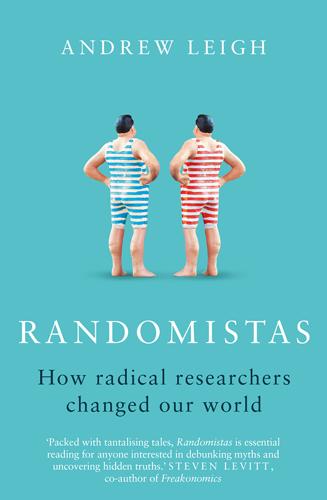
Randomistas: How Radical Researchers Changed Our World
by
Andrew Leigh
Published 14 Sep 2018
Note that only the Bandiera et al. study uses true random assignment; in the other two studies the authors argue that the assignment of employees to teams is effectively random – in other words, unrelated to their co-workers’ productivity. 43Nava Ashraf, Oriana Bandiera & B. Kelsey Jack, ‘No margin, no mission? A field experiment on incentives for public service delivery’, Journal of Public Economics, vol. 120, 2014, pp. 1–17. 44Iwan Barankay, ‘Rankings and social tournaments: Evidence from a crowd-sourcing experiment’, Working Paper, Wharton School of Business, University of Pennsylvania, 2011. 45Steven D. Levitt & John A. List, ‘Was there really a Hawthorne effect at the Hawthorne plant? An analysis of the original illumination experiments’, American Economic Journal: Applied Economics, vol. 3, no.1, 2011, pp. 224–38. 46Matthew Stewart, The Management Myth: Why the Experts Keep Getting It Wrong, New York: Norton, 2009. 47Jill Lepore, ‘Not so fast’, New Yorker, 12 October 2009. 48Nicholas Bloom, Benn Eifert, Aprajit Mahajan, et al., ‘Does management matter?

Chasing New Horizons: Inside the Epic First Mission to Pluto
by
Alan Stern
and
David Grinspoon
Published 2 May 2018
Because very small moons have very low gravity, any debris blasted off them this way escapes into orbit around the moon’s planet, getting spun into a ring. As the fourth and fifth moons of Pluto, the two newest ones were at first just called P4 and P5. But in time, Showalter, working with Alan and others on the New Horizons team, as well as NASA, organized an online, public crowd-sourcing of ideas for naming the new moons. With the public’s help nominating and voting on names, Styx (the goddess of the underworld river near Pluto) and Kerberos (the dog guarding Pluto’s realm), became the official names of Pluto’s fourth and fifth satellites. A SPIDER’S BITE With Showalter’s discoveries of 2011 and 2012, it was becoming clear that Pluto possessed a rich system of moons, all orbitally interacting with one another.

Driverless: Intelligent Cars and the Road Ahead
by
Hod Lipson
and
Melba Kurman
Published 22 Sep 2016
Someone, somewhere, had to do the time-consuming and tedious task of flipping through a stack of dog pictures and deciding that image X is of a Yorkshire terrier, whereas image Y is of its distant cousin, the Staffordshire bull terrier. Right on cue, another emerging cultural trend came to the rescue: crowdsourcing. The Herculean task of classifying ImageNet’s millions of images was accomplished using thousands of Mechanical-Turk workers on Amazon, who, for pennies per image, labeled each one. At one point, Fei-Fei Li recalls, ImageNet was the largest employer of freelancers on Amazon, employing thousands of people twenty-four hours a day across the globe.6 GPUs We’ve already discussed faster computers, more data, digital cameras, and adding more layers to artificial neural networks.
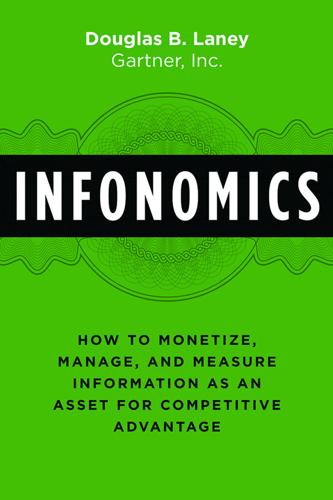
Infonomics: How to Monetize, Manage, and Measure Information as an Asset for Competitive Advantage
by
Douglas B. Laney
Published 4 Sep 2017
Center for Disease Control estimates nearly fifty million Americans are sickened by foodborne disease every year. Researchers at the University of Rochester developed a system to provide indicators of health-related issues among New York City’s twenty-five thousand restaurants. Using a combination of machine learning and human crowdsourced “Mechanical Turk” approaches, its experimental nEmesis application can identify likely eatery culprits based on the location and content of diners’ tweets. As the research paper explains: These users make up an “organic” sensor network—a dynamic mesh of sensors interconnected with people facilitated by Internet enabled phones.
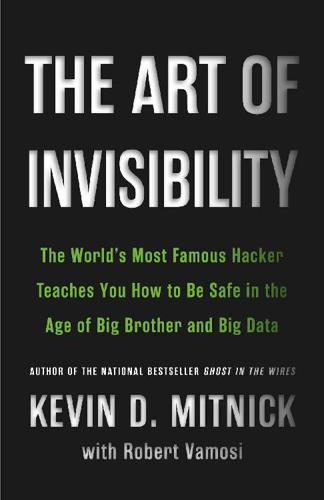
The Art of Invisibility: The World's Most Famous Hacker Teaches You How to Be Safe in the Age of Big Brother and Big Data
by
Kevin Mitnick
,
Mikko Hypponen
and
Robert Vamosi
Published 14 Feb 2017
Google has, in various public statements, said that letting people identify strangers by face “crosses the creepy line.”6 Even so, some repressive governments have done just that. They have taken photos of protesters at large antigovernment rallies and then put the images on the Web. This is not using image recognition software so much as it is crowdsourcing the identification process. Also, some US states have used their motor vehicle departments’ photo databases to identify suspects in criminal cases. But those are fancy state-based operations. What could a lone academic do? Acquisti and his fellow researchers wanted to see how much image-derived information about a person could be cross-referenced online.
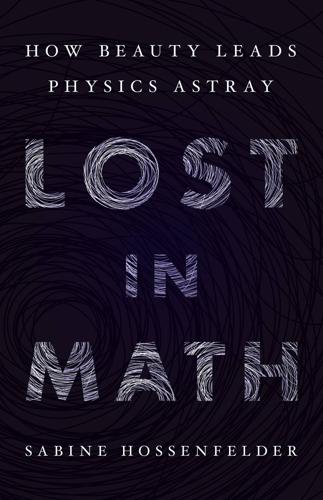
Lost in Math: How Beauty Leads Physics Astray
by
Sabine Hossenfelder
Published 11 Jun 2018
You can get exposure to quantum mechanics—entirely without equations—in the video game Quantum Moves.24 In this game, designed by physicists at Aarhus University in Denmark, players earn points when they find efficient solutions for quantum problems, such as moving atoms from one potential dip to another. The simulated atoms obey the laws of quantum mechanics. They appear not like little balls but like a weird fluid that is subject to the uncertainty principle and can tunnel from one place to another. It takes some getting used to. But to the researchers’ astonishment, the best solution they crowd-sourced from the players’ strategies was more efficient than that found by a computer algorithm.25 When it comes to quantum intuition, it seems, humans beat AI. At least for now. FIGURE 10. Screenshots of the video game Quantum Moves. So maybe, I think, we should just stop telling each other quantum mechanics is strange and get used to it.
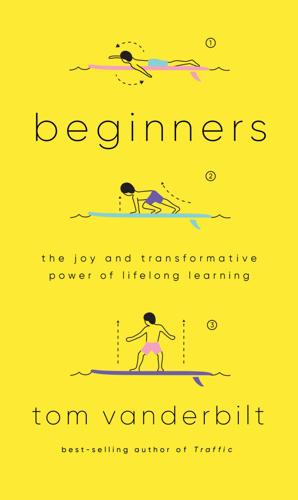
Beginners: The Joy and Transformative Power of Lifelong Learning
by
Tom Vanderbilt
Published 5 Jan 2021
He had an idea but like many novices struggled to get to the next step. “What I needed was temporary access to tools,” he told me, “and a mentor to provide some guidance.” He couldn’t find what he needed, so he created it. In my own neighborhood, there are outfits like the Brooklyn Brainery, which offers inexpensive crowdsourced learning, with classes ranging from Intro to Batik to Biotechnology Crash Course. England’s How To Academy promises a similar range: “Whether you want to build a bicycle in a morning, make a movie in a weekend, or start an on-line business, we have the expert who will help you make it happen.” You may be thinking, “Not everyone has the money, or, even more important, the time, to learn new things.”

Green Swans: The Coming Boom in Regenerative Capitalism
by
John Elkington
Published 6 Apr 2020
The question increasingly asked is, How can we create multitrillion-dollar-per-year market opportunities by 2030? One answer: by meeting the United Nations’ Sustainable Development Goals. These are a set of 17 ambitious goals and 169 related targets championed by the United Nations. In effect, the first crowd-sourced global market research study. Encouragingly, experts conclude that meeting the goals in just four out of sixty sectors (the four are food and agriculture, cities, energy and materials, and health and well-being) could open up market opportunities worth up to $12 trillion a year by the early 2030s.29 To get there, however, we must break out of the zone of incremental change, what Volans has dubbed “change-as-usual.”
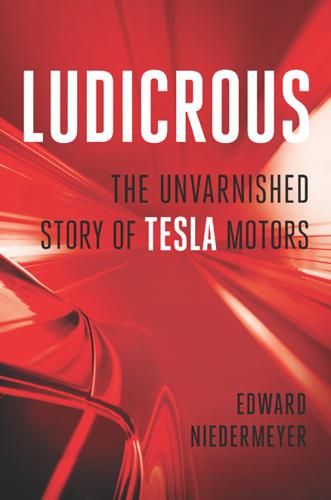
Ludicrous: The Unvarnished Story of Tesla Motors
by
Edward Niedermeyer
Published 14 Sep 2019
“It’s a little unnerving to have these people who are so passionate and crazy out there knowing who I am, and you know I worry for my family a little bit,” he said. He has asked me not to identify him here. “Let them vent their hate somewhere else for a while . . . it will only become more intense if the share price continues to erode.” The crowdsourced doxxing of Montana Skeptic and Musk’s call to his employer may have ended his career as an online Tesla critic, but it hardly put an end to the criticism itself. As the news of Montana’s forced retirement spread, so too did his Galileo avatar, which multiplied across Twitter in a show of solidarity that revealed how big and passionate the community of Tesla shorts had become.
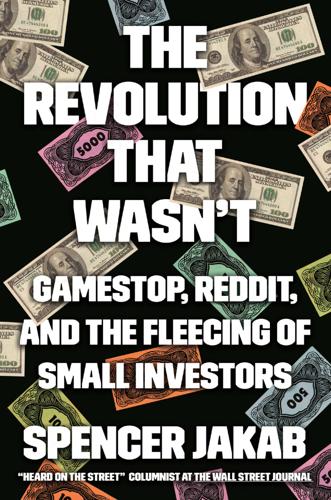
The Revolution That Wasn't: GameStop, Reddit, and the Fleecing of Small Investors
by
Spencer Jakab
Published 1 Feb 2022
Here are a few examples. Experts Are Overrated One of the defining characteristics of the young, new class of investors has been to distrust serious people in suits dispensing financial advice, and that probably isn’t such a mistake. Oddly, though, many are just as ready to accept investing tips that are either crowdsourced from social media or delivered by an influencer like a Silicon Valley billionaire. We tend to look at financially successful people and place more weight on their investing acumen despite mountains of evidence that specific stock picks aren’t any good. Humans, to their detriment, are followers.
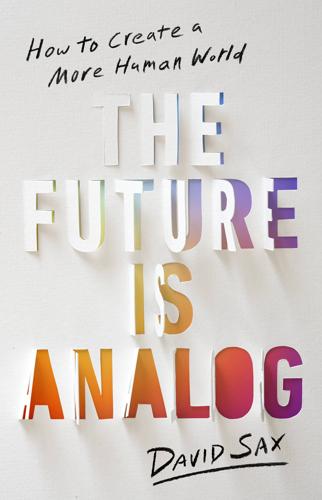
The Future Is Analog: How to Create a More Human World
by
David Sax
Published 15 Jan 2022
People are busy today, the crux of the shiva app start-up pitch went, and the experience of sitting in a house for eight whole days was ripe for Silicon Valley’s brand of disruption. What if they could digitize the essential parts of the shiva experience? With the help of videoconferencing, social networking, and crowdsourced support materials, you could get the benefit of a shiva, delivered right to the palm of your hand, without all that inconvenient… sitting. “OK,” I thought, “but what about the babka?” Seriously, did these folks think about the babka, which would presumably have to be delivered to the virtual shiva somehow, either as some idiotic babka emoji or a real babka sent by courier, to be consumed alone by the bereaved?

Private Equity: A Memoir
by
Carrie Sun
Published 13 Feb 2024
At my last review in July, days ago, Boone had told me I was hitting all of his goals for me. He told me to become more of a leader by being more proactive and offering to do more. I wanted to pitch him on spearheading Carbon’s philanthropic efforts. So, I dug up the notes from the retreat taken during a session on Distinctive Impact in Community. I read the twenty-nine crowdsourced bullet points. There were no names attached to the bullets, but the sheer number of them, the depth of thought in them, meant that people truly cared. They felt a duty to give. For the first time since I joined the Firm, I saw an acknowledgment of social issues like education, hunger, and homelessness, with suggestions like making internet available to more people; providing online courses for kids in remote areas; meeting with people who are unemployed and helping them with their résumés; wiping out poverty—other than this word here, nowhere else on these pages was there a recognition of unequal distribution of assets or anything that might suggest how hedge funds and private equity, before they gave back, took too much.
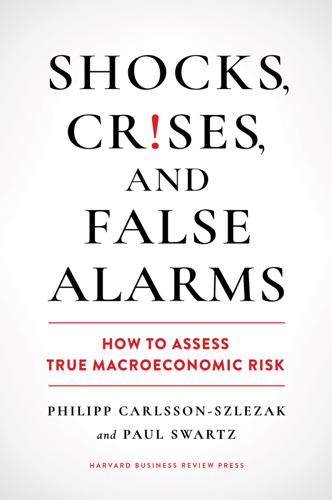
Shocks, Crises, and False Alarms: How to Assess True Macroeconomic Risk
by
Philipp Carlsson-Szlezak
and
Paul Swartz
Published 8 Jul 2024
Though far from perfect, financial markets can lend a helping hand. Price signals provide a first pass at assessing geopolitical risk and can typically be observed across many markets, geographies, and sectors. The signals are volatile and are more directionally revealing than precise, but they do offer a continuously updated, crowdsourced view of risk and impact. For example, as the Ukraine War became an imminent possibility, and then a fact, relative price movements between US and European banks captured the varying degrees of exposure to Russian assets and liabilities. And even among European banks, relative price movements suggested where exposure and vulnerability were greatest.
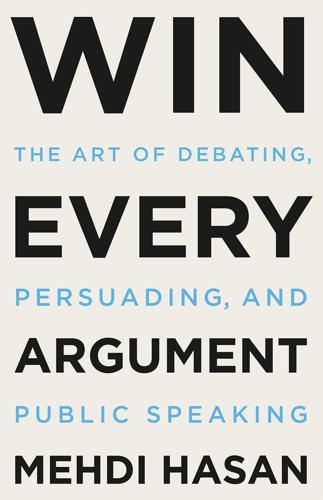
Win Every Argument: The Art of Debating, Persuading, and Public Speaking
by
Mehdi Hasan
Published 27 Feb 2023
With the digital equivalent of the Great Library of Alexandria at your fingertips—and the means not only to quote from but to link to it—your resources for serious argument are far greater than they were.” 2. Start, don’t end, with Wikipedia Any high school or college student will tell you that teachers and professors don’t look kindly on those who cite Wikipedia as a source of information. The argument is that it is nothing short of insane for you to publicly cite only a Wikipedia article, crowdsourced online by anonymous editors and contributors, as a source of information or evidence for your argument. But here’s what the teachers and professors get wrong. Wikipedia can play an invaluable role as a research tool, if you use it in the right way. To quote Dustin Wax, author of Don’t Be Stupid: A Guide to Learning, Studying, and Succeeding at College, “Start, don’t end, with Wikipedia.”

My Friend Anna: The True Story of a Fake Heiress
by
Rachel Deloache Williams
Published 15 Jul 2019
The tool functioned like an alarm clock, but its wake-up call was gentle so that you could better remember and then transcribe your dreams as you came out of them. The app would then use an algorithm to extract keywords from users’ recordings. Those keywords would anonymously upload to a global dream database, so that users could track the content of dreamers around the world. Hunter had launched a crowdsourcing campaign on Kickstarter to raise capital for the project. I admired his initiative. So, not only was Hunter helping to shape the cultural future of an entire country, he’d also come up with an app. I’d google him later and discover that his concept for Shadow had been covered by The New Yorker, Wired, The Atlantic, Forbes, Fast Company, Business Insider, and Vice—he’d even given a TED Talk.
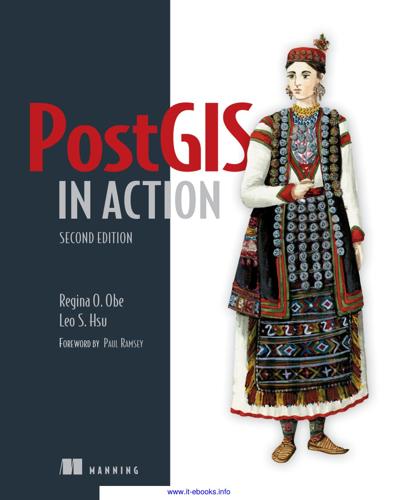
PostGIS in Action, 2nd Edition
by
Regina O. Obe
and
Leo S. Hsu
Published 2 May 2015
In the modern world, with location-aware smartphones in our pockets, GPS units in our vehicles, and the internet addresses of our computers geocoded, it has also become true that “who we are is where we are”—every individual is now a mobile sensor, generating a ceaseless flow of location-encoded data as they move about the planet. To manage and tame that flow of data, and the parallel flow of data opened up by economical satellite imaging and crowdsourced mapping, we need a tool equal to the task—a tool that can persistently store the data, efficiently access it, and powerfully analyze it. We need a spatial database, like PostGIS. Prior to the advent of spatial databases, computer analysis of location and mapping data was done with geographic information systems (GIS) running on desktop workstations.
…
In chapter 4 we grab data from some of these places to demonstrate how to load up on spatial data: OpenStreetMap (www.openstreetmap.org)—This community-driven spatial data- base and map repository has contributions from people all over the world. You can think of OSM as a free and open source Google map that has both web services and data you can download. It has base map information you can access via tile services as well as other crowd-sourced information such as biking trails and other GPS traces and waypoints in GPX format. You can use it as an overlay directly on your maps using something like OpenLayers. GeoNames (www.geonames.org/)—The GeoNames geographical database covers all countries and contains over eight million place names (cities, postal codes, countries) that are available for download free of charge.
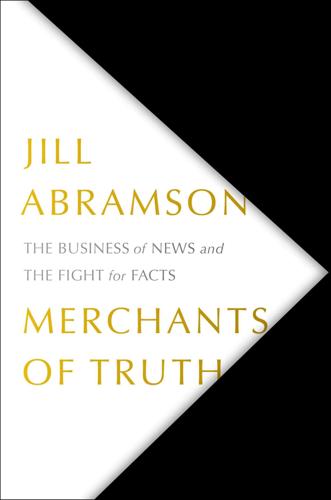
Merchants of Truth: The Business of News and the Fight for Facts
by
Jill Abramson
Published 5 Feb 2019
Quality news involves original reporting, digging to find the real story behind the story. Investigative reporting on the murky nexus of money and politics and corporate behavior. International reporting from hard-to-reach places and dangerous conflict zones. Stories that require the skills of professional journalists using state-of-the-art reporting tools, such as databases and crowdsourcing, and age-old shoe-leather techniques to fill in gaps in the backstory. Stories that are thoughtfully presented, taking advantage of digital technology to provide on-the-scene accounts and visuals that further explain how events transpired. Stories that are edited so as to honor the intelligence of readers rather than exploit their emotions.
…
I was a convert to the web’s power to democratize information and make it more transparent. When Keller went to Iran in 2009 to cover the failed Green Revolution, the streets were so dangerous for Westerners that the photos and comments posted by protesting students on social media platforms like Twitter and Facebook were the best ways to follow what was happening. Crowdsourcing and citizen journalism were beginning to bear important fruit. I was influenced by Clay Shirky, author of the book Here Comes Everybody, who warned against pointless nostalgia for print papers, which would inevitably die. The important thing was that quality journalism survive, and the greater engagement of audiences on the web was a very healthy development.

The End of Secrecy: The Rise and Fall of WikiLeaks
by
The "Guardian"
,
David Leigh
and
Luke Harding
Published 1 Feb 2011
Bafflingly, the minutiae of Venezuelan politics did not prove as saleable as celebrities’ baby pics: nobody bid. Assange had by now discovered, to his chagrin, that simply posting long lists of raw and random documents on to a website failed to change the world. He brooded about the collapse of his original “crowd-sourcing” notion: “Our initial idea was, ‘Look at all those people editing Wikipedia. Look at all the junk that they’re working on … Surely all those people that are busy working on articles about history and mathematics and so on, and all those bloggers that are busy pontificating about … human rights disasters … surely those people will step forward, given fresh source material, and do something?’
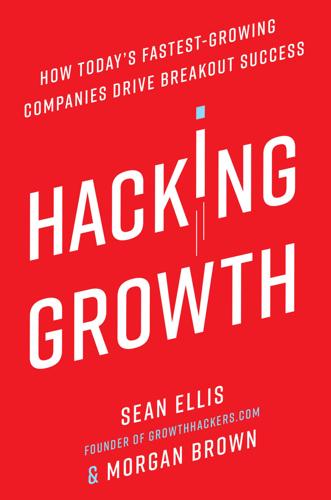
Hacking Growth: How Today's Fastest-Growing Companies Drive Breakout Success
by
Sean Ellis
and
Morgan Brown
Published 24 Apr 2017
The old way would have been to identify the 10 most spoken languages and hire local teams to do the translation, country by country. Instead the growth team engineers, led by Javier Olivan, built a translation engine that allowed Facebook’s own users to translate the site into any language via a crowdsourcing model. As Andy Johns, who is a leading authority on growth hacking and worked on the growth team at Facebook, said of the effort, “Growth was not about hiring 10 people per country and putting them in the 20 most important countries and expecting it to grow. Growth was about engineer[ing] systems of scale and enabling our users to grow the product for us.”
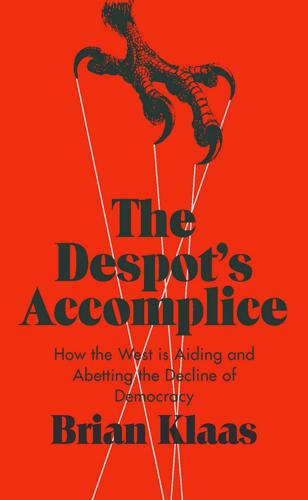
The Despot's Accomplice: How the West Is Aiding and Abetting the Decline of Democracy
by
Brian Klaas
Published 15 Mar 2017
Mostly, it was Americans and other Westerners tweeting amongst themselves. The regime, on the other hand, used Twitter to great effect. â•… In December 2009, during the Green Movement protests, a proregime website published a series of photos, with the faces of certain undesirables circled in red. Using Internet-based crowdsourcing, at 166 THE NEW BATTLEGROUND least forty people were arrested, showing that despotic regimes can use the web to request popular involvement, rather than fearing it or trying to shut it down. Then, the regime disseminated a video online that had possibly been altered, showing Green Movement protesters burning the image of Ayatollah Khomeini, a clear attempt to divide the opposition against itself.

The End of Ownership: Personal Property in the Digital Economy
by
Aaron Perzanowski
and
Jason Schultz
Published 4 Nov 2016
Show them a photo of the systems developed by farmers, and they’ll say, ‘But you should have seen their welds—they sucked.’”26 Kyle Wiens, a self-described right to repair activist, sees farmers’ innovations as part of a broader movement: “In the tech industry, we tend to talk about the exploding Maker Movement as if tinkering is something new. In fact, it’s as old as dirt: farmers have been making, building, rebuilding, hacking, and tinkering with their equipment since chickens were feral. I’ve seen farmers do with rusty harvesters and old welders what modern Makers do with Raspberry Pis and breadboards. There’s even a crowdsourced magazine, Farm Show, that’s catalogued thousands of clever farming inventions over the past three decades.”27 But if farmers don’t own the tools, equipment, and seeds they use on a daily basis, this potentially fertile ground for innovation will lie fallow. Less Fast, More Furious John Deere is not alone.

Heart of the Machine: Our Future in a World of Artificial Emotional Intelligence
by
Richard Yonck
Published 7 Mar 2017
The 1997 and 1998 patents of the BRCA breast cancer genes by Myriad Genetics, which were ruled invalid in 2013, are a prime example of this.12 Overly broad patent protection can stifle innovation and development. It’s beyond the scope of this book to assess a patent such as Emotient’s, but we might be wise to question if something such as a crowdsourced method of directing machine learning should be eligible for such protection. Time will tell. What’s truly important during the early stages of the development of a new science is that we don’t create unnecessary roadblocks. Just imagine if someone had been awarded a patent in the 1980s or 1990s that generally described a taxonomy of human expression.
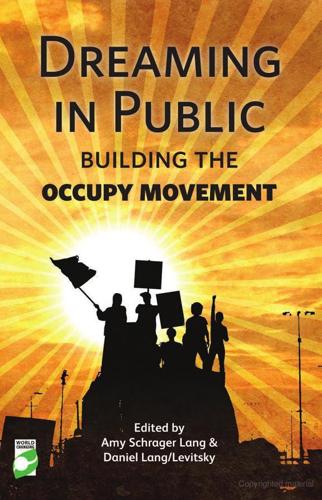
Dreaming in Public: Building the Occupy Movement
by
Amy Lang
and
Daniel Lang/levitsky
Published 11 Jun 2012
Because this is not the end of the Nigerian revolution. Because a revolution does not end. A revolution only begins. ♦ blacklooks.org/2012/01/is-this-the-end-of-the-nigerian-revolution/ Onward Rachel Schragis Flow Chart of the Declaration of the Occupation of NYC Conceived and drawn by Rachel Schragis, and edited through a crowd-sourcing process in Zuccotti Park facilitated by the artist. nycga.net/resources/declaration/#flow Occupy To employ, make use of. To keep busy, engage, employ (a person, or the mind, attention, etc.). To hold possession of; to have in one’s possession or power; to hold (a position, office, privilege).

Beyond: Our Future in Space
by
Chris Impey
Published 12 Apr 2015
Appropriately, most of the funding comes from the National Geographic Society, which has turned from exploration of the planet to exploration of the inner world. The project is not without controversy, as some indigenous peoples have declared it exploitative and have declined to take part. However, the project has gained a big boost from crowdsourcing. More than 600,000 people have received their genetic histories in return for contributing DNA to an open-source database.4 With such a rich resource and powerful computers to apply to it, more than 100,000 genetic markers have been identified in the past decade. The leader of the project is Spencer Wells, a National Geographic explorer-in-residence.

Messy: The Power of Disorder to Transform Our Lives
by
Tim Harford
Published 3 Oct 2016
As Brad Stone writes, “Amazon survived through a combination of conviction, improvisation, and luck.”14 Most companies would have retrenched at that point. Instead, over the next few years, Amazon launched products as disparate as the Kindle (which immediately and repeatedly sold out, as Amazon struggled to manufacture it), Mechanical Turk (an unsettlingly named global clearinghouse for labor, which pioneered crowdsourcing but was criticized as being a sweatshop), the Fire Phone (widely reviewed as ugly, weird, and disappointing), Marketplace (where competitors to Amazon would use Amazon’s own product listings to advertise their own cheaper alternatives), and Amazon Web Services. AWS in particular was a bold stroke—a move into cloud computing in 2006, four years ahead of Microsoft’s Azure and six years ahead of Google Compute.
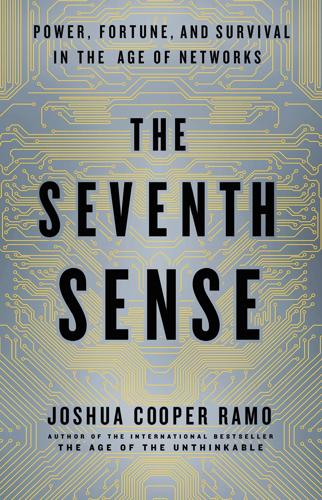
The Seventh Sense: Power, Fortune, and Survival in the Age of Networks
by
Joshua Cooper Ramo
Published 16 May 2016
Once-prized Korean manufacturing excellence was no match for cheap Chinese and then Vietnamese labor welded to assembly-line technology. To work at a Seoul technology company or my dad’s cardiology office had a strange, similar aspect. We see this pattern of network-led shredding nearly everywhere now, the result of powerful cores of knowledge and widely distributed connection. Newspapers have been removed from relevancy by crowd-sourced news feeds and smart social news feeds. Once indomitable television networks of the Cheers and Seinfeld era have been devoured by cheap uploaded videos and the Internet platforms. Bitcoin and other first-generation digital currencies are doing something similar, eating at the once-unquestionable authority of central banks.
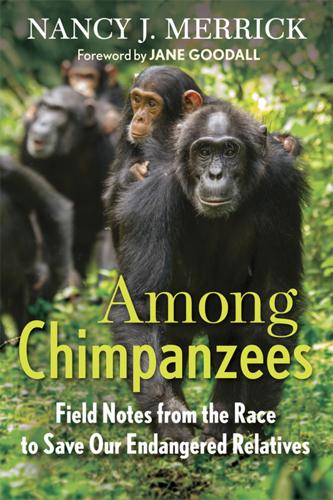
Among Chimpanzees
by
Nancy J. Merrick
See Chimpanzee Trust Uganda Chimpanzee Trust Uganda, in Ngamba (see Ngamba Island Chimpanzee Sanctuary); public relations campaign, 142; reports of human-wildlife conflict, 137–38; work being done by, 133, 220; youth monitors as community ambassadors, 138 ChimpSaver.org, 190, 214, 218 Cincinnati Zoo, 211, 217 CITES Secretariat of the United Nations Environment Programme, 208 Clay, Peter, 113 Collins, Tony, 30, 74 coltan mining threat, 106–7 Community Markets for Conservation (COMACO), 143–44 conflict mineral trade, 106–7 Congo Basin: chimpanzee populations, 206; commercial interests in, 206–7; conservation strategies (see conservation strategies); deforestation threat, 107–8; Gabon’s decision to create national parks, 203; gorilla populations, 205–6; hectares of forest lost each year, 212; Mike Fay’s forest survey work, 202–3; Mike Fay’s partnership with Jane Goodall, 203–4; recent progress in documenting the forests, 207; similarity and differences between chimps and bonobos, 204–5; threat to animals from human conflict, 206 Congo Basin Forest Partnership (CBFP), 153, 215 Conservation Action Plan (CAP): elements of the program, 197–98; estimated costs, 200 conservation and advocacy: connecting with nature and, 220; creating a grassroots movement, 218; efforts in the Congo Basin (see conservation strategies); for gorillas (see gorilla conservation and advocacy); important advances in, 214; Jane Goodall’s hope for the future, 213–14; Jane Goodall’s youth group (see Roots & Shoots); likely population loss scenario, 213; opportunities for advocacy for captive chimps, 215–16; opportunities for advocacy for wild chimps and other great apes, 216; opportunities to connect through social media, 214–15; opportunities to contribute, 215; renewed commitment to by the author, 99–102; status of populations, 102; value in living more sustainably, 219; visiting zoos and sanctuaries, 217–18; vital role of individuals, 229–30; volunteer opportunities, 218; ways to exert consumer power, 105, 216–17; ways to help find solutions, 219–20 conservation drones, 209 conservation-education programs. See education programs conservation strategies: addressing energy needs, 208; addressing unsustainable agriculture and food insecurity, 207–8; crowd-sourcing for alerts, 209; deforestation in, 107–8, 212; Ebola virus vaccine development, 211–12; eco-guard and law enforcement support, 209–10; fighting corruption and trafficking, 208; financial support to conserve forests, 211; help from businesspeople, 210; help from local volunteers, 210; innovative technologies being used, 209; international company accountability, 210; palm oil production management, 210–11, 217 Conservation Through Public Health (CTPH): district health clinic meeting, 127–29; establishment of field laboratories, 127; growth in population around Bwindi, 125; impetus for establishment of, 129; meeting with Dr.

Streetfight: Handbook for an Urban Revolution
by
Janette Sadik-Khan
Published 8 Mar 2016
These meetings, which alone constituted the greatest public outreach effort for almost any single transportation project in the city’s history, were supplemented by an online outreach portal where people who couldn’t make our meetings could weigh in on where they wanted stations. All told, the portal received 65,000 suggestions and indications of support on the portal’s geo-coded map—the most advanced form of crowdsourcing we had yet used. By the time the first station would have gone in, station locations would have been public for nearly a year. Bike-share systems have become part of the streetscape in London, left, and in Paris, right, and helped provide early guidance on system equipment, different models for revenue, and requirements for bike density, influencing the establishment of new systems around the world.

A Bit of a Stretch: The Diaries of a Prisoner
by
Chris Atkins
Published 6 Feb 2020
It’s riddled with grammatical errors and spelling mistakes, and some of it makes no sense whatsoever. I start a new draft from scratch, and wax lyrical about how prison has transformed him into an upstanding citizen. A week later, he shows me an updated version. It transpires that I’m not the only scribe on the payroll; Les has also crowdsourced input from Scott, Martyn, Fenton, Nigel and Pops, an elderly Greek prisoner on the Ones. I’ve always hated collaborating, and I’m particularly resistant to sharing the billing with Pops. He’s a kind and generous man, but he’s half blind and barely speaks English. The latest draft ends with ‘Given my exemplary behaviour in prison, it would serve great purpose to society if I was handed a consecutive sentence.’
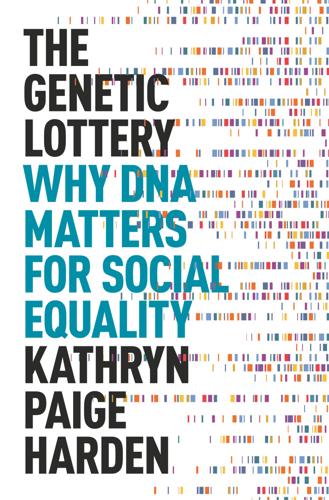
The Genetic Lottery: Why DNA Matters for Social Equality
by
Kathryn Paige Harden
Published 20 Sep 2021
But we no longer have a boutique sample of twenty restaurants, so we don’t have the time or money to do boutique measurements of customer satisfaction. We need something quick and dirty, something easily compiled across thousands of restaurants. Perhaps something like … Yelp ratings? In case you haven’t been on the internet in the past decade, Yelp is a website that crowdsources information about local businesses. People leave reviews and rate the business from one to five stars. For a restaurant to be highly rated on Yelp, lots of people need to have enjoyed eating there enough to leave a comment and a good review, and the restaurant can’t have too many miserably dissatisfied customers.
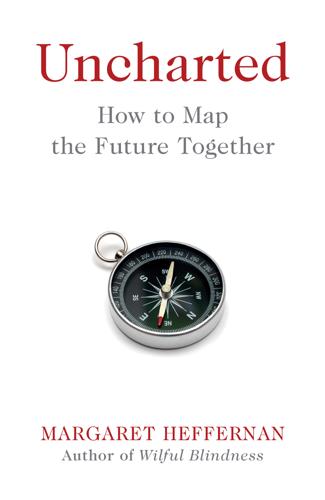
Uncharted: How to Map the Future
by
Margaret Heffernan
Published 20 Feb 2020
What we lose when we surrender so much of our time and attention to generic technology is not just the opportunity for personal experience, but the chance to create from it our own sense of the world, our place in it and what the future for both might be. The more time we spend visiting places that others have described, the more we follow the paths others have made, reading what we’re told, seeing what the algorithm recommends, listening to what crowd-sources admire and eating what’s already been photographed, tasted, marketed and measured, the less capacity we have to see what we didn’t expect, to hear what we weren’t told about or to ask questions that haven’t already been answered. We lose our own perspective and imagination and in this everyone is impoverished: ourselves and anyone who looks to us in vain for fresh insight or understanding.
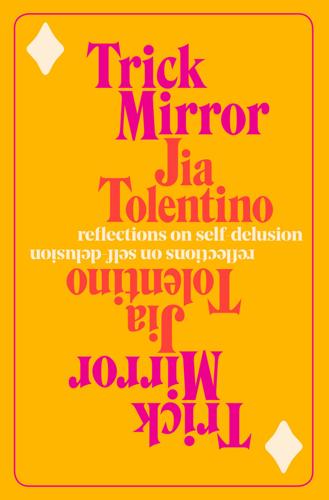
Trick Mirror: Reflections on Self-Delusion
by
Jia Tolentino
Published 5 Aug 2019
One man writes: I was out walking one night in busy streets of Glasgow when, with slow majesty, at a corner where the pedestrians were hurrying by and the city traffic was hurtling on its way, the air was filled with heavenly music; and an all-encompassing light, that moved in waves of luminous colour, outshone the brightness of the lighted streets. I stood still, filled with a strange peace and joy. Hardy’s archive is, technically, a compendium of religious experiences—in Aeon, Jules Evans calls it a “crowdsourced Bible.” But it could easily pass as a series of transcripts from Erowid, the nonprofit website based in Northern California that catalogs people’s experiences with psychoactive substances. The site has more than 24,000 drug testimonials, and tens of millions of people visit it each year. The specifics in these accounts vary, of course, but ecstatic experiences—ones that make you stand outside yourself—are described in a consistent fashion.
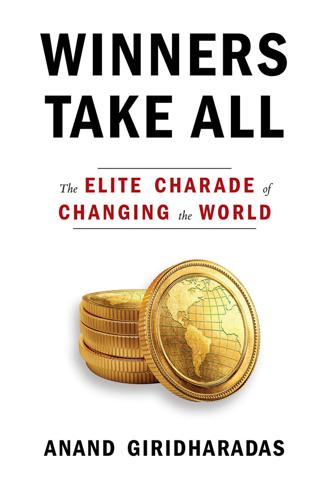
Winners Take All: The Elite Charade of Changing the World
by
Anand Giridharadas
Published 27 Aug 2018
Here was a leading investor in a company, Uber, that had sought to shatter democratically enacted regulations and evade the unions that have a record of actually, and not just rhetorically, fighting for the little guy, and he was proudly portraying himself as the one who was truly fighting for the people against the corrupt power structure. “In the era when political power corrupts, social and crowdsourced power cleanses,” Pishevar once wrote. “We must stir the hornet’s nest to build immunity to the sting of corruption.” Speaking of the regulations he didn’t like and unions he didn’t like, Pishevar said, “Finding companies that can disrupt those is one way of having some kind of ethical philosophy of saying, ‘We are going to use our capacity and our knowledge to improve our world by getting rid of some of those points of control.’ ” In short, technological disruption was the venture capitalist’s way of making the world a better place for everyone’s benefit.

The Big Nine: How the Tech Titans and Their Thinking Machines Could Warp Humanity
by
Amy Webb
Published 5 Mar 2019
Optimizing AI for Humans Some members of AI’s tribe believe that a shared set of guiding principles is a worthy goal and the best way to achieve it is to feed literature, news stories, opinion pieces and editorials, and articles from credible news courses into AI systems to help them learn about us. It involves crowdsourcing, where AI would learn from the collected wisdom of people. That’s a terrible approach, because it would only offer the system a snapshot in time, and curating what cultural artifacts got included could not, in any meaningful way, represent the sum total of the human condition. If you’ve ever made a time capsule, you’ll immediately know why.
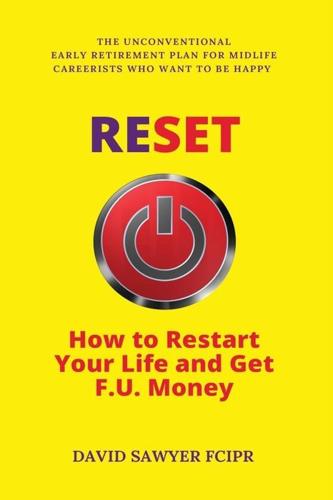
Reset: How to Restart Your Life and Get F.U. Money: The Unconventional Early Retirement Plan for Midlife Careerists Who Want to Be Happy
by
David Sawyer
Published 17 Aug 2018
Studies consistently show[164] that being part of a community is a key factor in happiness. Being part of my industry (PR) in Scotland has always been important to me. But as I grasped the digital nettle five years ago, I realised there weren’t a whole lot of people doing what I was doing. So I looked further afield for support. Step forward, eventually, #PRstack, a crowdsourced UK-wide attempt to catalogue the online PR tools that had sprung up over the past few years. I made friends for life, got to know influential industry people, bagged a few clients, and built my reputation through getting involved. As anyone who volunteers at their kid’s sports club or helps at their local school can confirm, getting involved in a community is one of the best ways to find out what’s going on.
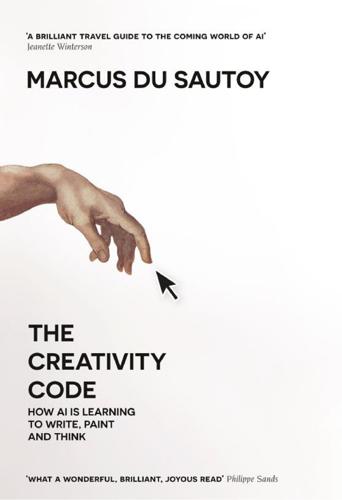
The Creativity Code: How AI Is Learning to Write, Paint and Think
by
Marcus Du Sautoy
Published 7 Mar 2019
Ecker and Matthias Bethge, ‘A Neural Algorithm of Artistic Style’, arXiv:1508.06576 (2015) Gondek, David, et al., ‘A Framework for Merging and Ranking of Answers in DeepQA’, IBM Journal of Research and Development, vol. 56(3.4), 14:1–14:12 (2012) Gonthier, Georges, ‘A Computer-Checked Proof of the Four Colour Theorem’, Microsoft Research Cambridge (2005) , ‘Formal Proof: The Four-Color Theorem’, Notices of the AMS, vol. 55, 1382–93 (2008) , et al., ‘A Machine-Checked Proof of the Odd Order Theorem’, Interactive Theorem Proving, Proceedings of the Fourth International Conference on ITP (2013) Goodfellow, Ian J., ‘NIPS 2016 Tutorial: Generative Adversarial Networks’, arXiv:1701.00160 (2016) Guzdial, Matthew J., et al., ‘Crowdsourcing Open Interactive Narrative’, Tenth International Conference on the Foundations of Digital Games (2015) Hadjeres, Gaëtan, François Pachet and Frank Nielsen, ‘DeepBach: A Steerable Model for Bach Chorales Generation’, arXiv:1612.01010 (2017) Hales, Thomas, et al., ‘A Formal Proof of The Kepler Conjecture’, Forum of Mathematics, Pi, vol. 5, e2 (2017) Hermann, Karl Moritz, et al., ‘Teaching Machines to Read and Comprehend’, in Advances in Neural Information Processing Systems, NIPS Proceedings (2015) Ilyas, Andrew, et al., ‘Query-Efficient Black-Box Adversarial Examples’, arXiv:1712.07113 (2017) Khalifa, Ahmed, Gabriella A.
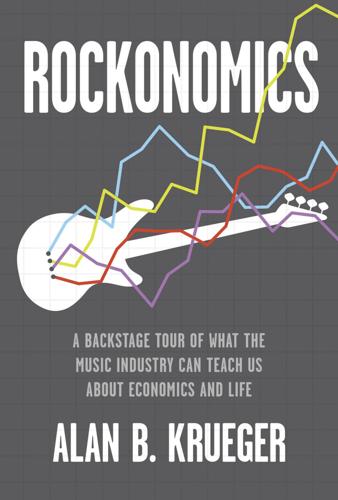
Rockonomics: A Backstage Tour of What the Music Industry Can Teach Us About Economics and Life
by
Alan B. Krueger
Published 3 Jun 2019
The main conclusion of my analysis is that although there are some lapses in the coverage of the Pollstar data, the Pollstar Boxoffice Database provides reasonably comprehensive, accurate, and reliable data on concert revenue for top artists, especially since the 1990s and in the United States. A comparison of the Pollstar data to other sources is possible because (1) the website Setlist.fm crowdsources information on concerts for major performers and (2) a large state university that operates two sizable arenas shared its confidential box office data with me on the condition that the name of the university remain anonymous.1 These two arenas do not directly report information to Pollstar, but managers and promoters of shows performed at the venues often do report the data.
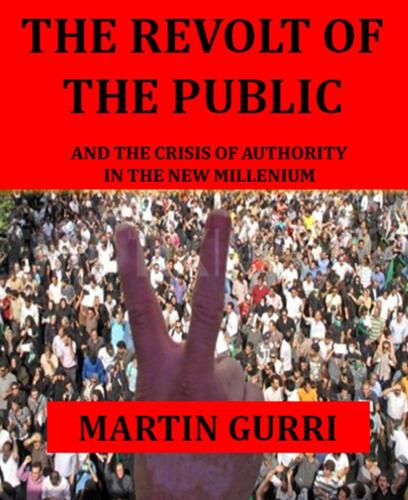
The Revolt of the Public and the Crisis of Authority in the New Millennium
by
Martin Gurri
Published 13 Nov 2018
Modern government, creature of the industrial age, would give way to networked government, able to exploit “small world” links to reduce, formally, the distance between power and the public.[238] Political issues – proposed legislation, for example – would be debated and resolved on a much vaster virtual stage, on which ordinary people, no less than elected or bureaucratic elites, have their say. The output of government would be crowd-sourced and thus sanity-checked. This won’t happen. Hierarchy is too stubborn a structure. The self-interest of the top and the disinterest in wielding power of the sectarian bottom makes it almost certain that the current structures will endure. The pyramid is losing height, but it almost certainly won’t flatten altogether.
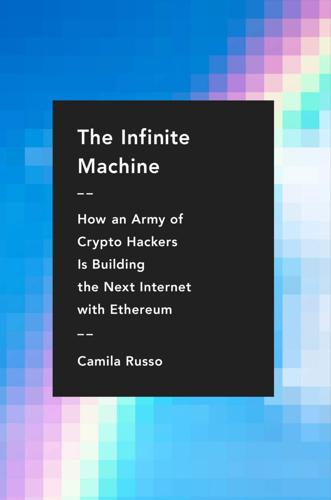
The Infinite Machine: How an Army of Crypto-Hackers Is Building the Next Internet With Ethereum
by
Camila Russo
Published 13 Jul 2020
Bitcoin, Stan argued, “can be viewed as an unmanned company,” as it automatically performs some of the same functions banks do, namely, keeping private books for customers’ accounts and transferring credits between accounts upon receipt of a properly signed “check.” But DAOs don’t have to be limited to cryptocurrencies: there can be unmanned escrow services, incorruptible arbitration services, governments that can’t ignore their constitution, crowdsourced venture capital firms, and many more, they argued.5 Invictus soon grew even more ambitious than building a peer-to-peer exchange. They also wanted to make a proof-of-work cryptocurrency, a decentralized identity management system, and an encrypted messaging platform. The idea was to build an ecosystem where users would be able to communicate and transact without having to give out personal information or trust centralized third parties.

Calling Bullshit: The Art of Scepticism in a Data-Driven World
by
Jevin D. West
and
Carl T. Bergstrom
Published 3 Aug 2020
Indeed, their basic finding—that an algorithm can guess sexual orientation at a rate better than chance—was replicated using different training and test data in an unpublished master’s thesis by John Leuner, though the algorithm had somewhat lower accuracy in that study. *6 Another concern is that the human judges were recruited through Amazon’s Mechanical Turk crowdsourcing system. As such, they could have been working from anywhere in the world and may have not have been familiar with US cultural norms around how self-presentation varies with sexual orientation. *7 Stand. *8 The authors do find a statistically significant correlation between a measure that they call “facial femininity” and the probability of having a homosexual orientation.
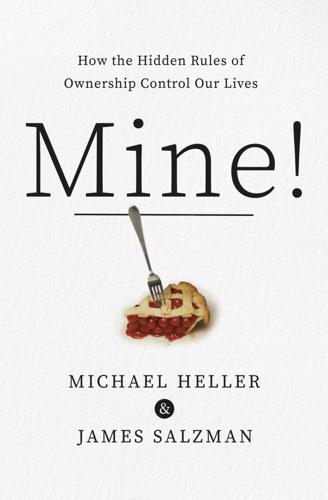
Mine!: How the Hidden Rules of Ownership Control Our Lives
by
Michael A. Heller
and
James Salzman
Published 2 Mar 2021
biopiracy: Janna Rose, “Biopiracy: When Indigenous Knowledge Is Patented For Profit,” Conversation, March 7, 2016. All they need ask is: Adaptation rights have become far more contentious in the new era of erotic fan fiction. Alexandra Alter, “A Feud in Wolf-Kink Erotica Raises a Deep Legal Question: What Do Copyright and Authorship Mean in the Crowdsourced Realm Known as the Omegaverse?,” New York Times, May 23, 2020. “has built into its very operation”: Merrill, “Accession,” 499. With land, the trend: Ibid., 493. Charlie Pitigliano’s grandfather: Bettina Boxall, “Overpumping of Central Valley Groundwater Creating a Crisis, Experts Say,” Los Angeles Times, March 18, 2015.
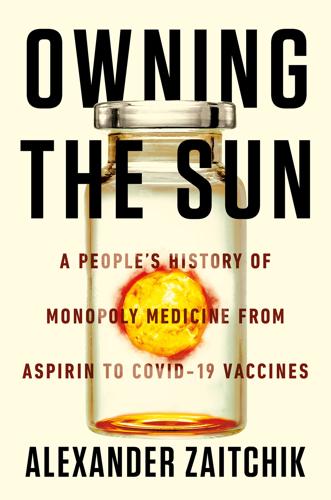
Owning the Sun
by
Alexander Zaitchik
Published 7 Jan 2022
This is not a book about how to hasten the combustion of monopoly medicine, or about the many fine alternatives that could take its place to humanity’s benefit. It is the story of how monopoly medicine came to be, from the earliest debates over the morality and practical value of granting monopolies on lifesaving inventions, to the globalization of this right by Washington on a basis of forced consent. It is the long prequel to our current age of crowdsourced online medical fundraisers; of hedge funds and Martin Shkreli getting a say in who lives and for how long; of the minting of biotech billionaires during a pandemic while vaccine factories sit idle; and of the lobbying, propaganda, and marketing machines that protect the system from the steaming volcano of a public that understands it to be fundamentally corrupt and unjust.

Hormone Repair Manual
by
Lara Briden
Published 14 Apr 2021
Male condoms A male condom is a latex or plastic sheath that you put over your partner’s penis before intercourse. It catches the ejaculated sperm and prevents it from entering your body. It’s a simple barrier method that has the added benefit of protecting against sexually transmissible infections. Condoms need not mean a loss of pleasure, because there are new, more comfortable brands, such as the crowd-sourced Hex™, which is allegedly unbreakable; and myONE Perfect Fit®, which offers 60 different sizes. Avoid condoms packaged with spermicide, because spermicide is toxic and could make you more susceptible to infections, especially urinary tract infections (UTIs), which are more common during perimenopause.
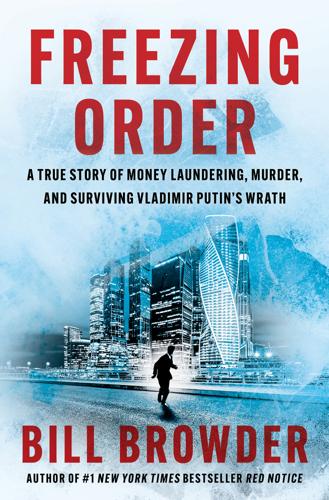
Freezing Order: A True Story of Money Laundering, Murder, and Surviving Vladimir Putin's Wrath
by
Bill Browder
Published 11 Apr 2022
Vladimir Kara-Murza continues to circle the globe advocating for Magnitsky sanctions and justice for Boris Nemtsov. Despite his poisoning, and attempts by me to persuade him otherwise, he still officially resides and spends most of his time in Russia, fighting for freedom and democracy. In early 2017, he was poisoned a second time. Again, he was saved by Dr. Denis Protsenko. A 2021 report by Bellingcat, a crowdsourced investigative organization based in London, identified four officers from the FSB who were behind Vladimir’s poisonings, including two who followed him to Kazan in May 2015. The same operatives were involved in the poisoning of other Russian dissidents and opposition figures, including Alexei Navalny.
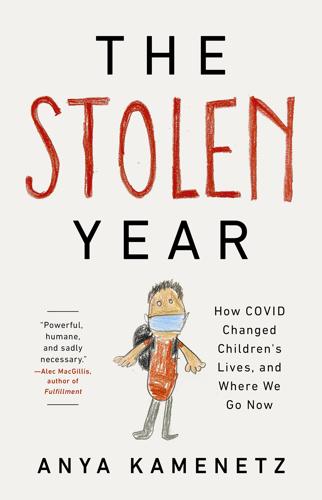
The Stolen Year
by
Anya Kamenetz
Published 23 Aug 2022
Eve Rodsky was working as a mediator, had a toddler and a newborn, and was living a privileged but hectic life in Los Angeles. One day she was driving to a client meeting with her breast pump and diaper bag when her husband texted her, “I’m surprised you didn’t get blueberries.” Lesser mortals might get divorced. Rodsky crowdsourced a spreadsheet with contributions from hundreds of women about their divisions of domestic labor and wrote a best-selling 2019 book called Fair Play, which she also turned into a card game that helps each partner visualize the work they are doing to keep the household running. Her mission is to make mothers’ invisible labor visible and to get women to stop being “complicit in their own oppression.”

Merchants of the Right: Gun Sellers and the Crisis of American Democracy
by
Jennifer Carlson
Published 2 May 2023
In contrast to consuming mainstream media, gun sellers tended to value knowledge gathered through their own efforts, searching the Internet for relevant historical anecdotes, policy white papers, and statistics. One gun seller described looking up past CDC reports; another mentioned researching crime rates since the early 1990s; still another discussed extensive learning about gun laws from YouTube and other Internet-based crowdsourcing. Traditionally a term to describe the work of trained scientists, some gun sellers used the word “research”38 as a commonplace practice that described a deliberate, bottom-up acquisition of knowledge as opposed to the humdrum consumption of information via government dictates and media headlines.
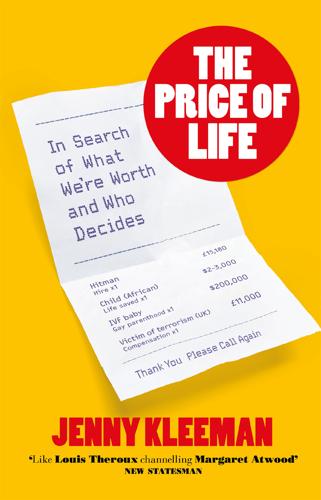
The Price of Life: In Search of What We're Worth and Who Decides
by
Jenny Kleeman
Published 13 Mar 2024
This silver bullet that promised to solve all Edward’s problems wasn’t yet approved by NICE, and cost six times the price of their family home. Megan opened new social media accounts, setting herself up as @SMA_mumma on Facebook, Instagram, TikTok and YouTube, connecting with families of kids with SMA and gaining thousands of followers from around the world. She created a JustGiving page to crowdsource funds to take Edward to the US for private treatment. She gave interviews to her local paper, trying to drum up support and donations. She raised tens of thousands of pounds within a couple of months. But despite her effort and energy, and the generosity of so many people, it was a drop in the ocean.

Indelible City: Dispossession and Defiance in Hong Kong
by
Louisa Lim
Published 19 Apr 2022
“Glory to Hong Kong” had been styled as a marching song by a twenty-something musician who called himself Thomas dgx yhl. He’d posted a draft version online, seeking feedback. The responses asked him to add the slogan “Liberate Hong Kong, Revolution of Our Times!” to the lyrics, which he did. Such crowdsourcing was a feature of the movement, a repudiation of the government’s top-down directives. Its aim was democracy, and it tried to use democratic methods at every level. Within days, “Glory to Hong Kong” was being sung at every march: Though deep is the dread that lies ahead Yet still, with our faith, on we tread.
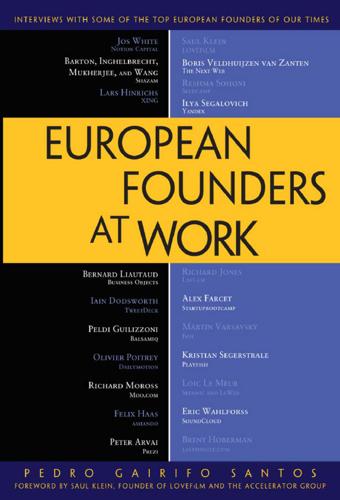
European Founders at Work
by
Pedro Gairifo Santos
Published 7 Nov 2011
Hoberman also founded www.mydeco.com, a VC-backed online furniture and interior design start-up that provides 3D technology for consumers to design their own rooms online. In July 2009, he co-founded PROfounders Capital, a fund that invests in early-stage internet start-ups. In 2010 he also co-founded made.com a company that crowdsources furniture and sells direct from consumers to factories. Pedro Santos: What was the original idea behind www.lastminute.com and how did it evolve to become what it is today? Brent Hoberman: The original idea was very much about me as a customer wanting to be able to buy things on the internet.
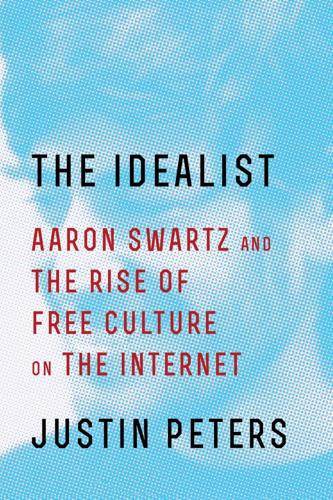
The Idealist: Aaron Swartz and the Rise of Free Culture on the Internet
by
Justin Peters
Published 11 Feb 2013
(“I don’t think I have any particular technical skills; I just got a really large head start,” he later reminisced.)33 Before reaching puberty, Swartz was writing simple computer programs and creating websites: for himself, for his family, for a local Star Wars fan club called Chicago Force. In 2000, when he was thirteen, Swartz built a website called The Info Network, which was a crowdsourced encyclopedia to which anyone could contribute. It was essentially the same concept as Wikipedia—but it predated Wikipedia by several months.34 Swartz submitted The Info Network for the ArsDigita Prize—a youth Web-design competition sponsored by the entrepreneur and MIT researcher Philip Greenspun—and was named a finalist.
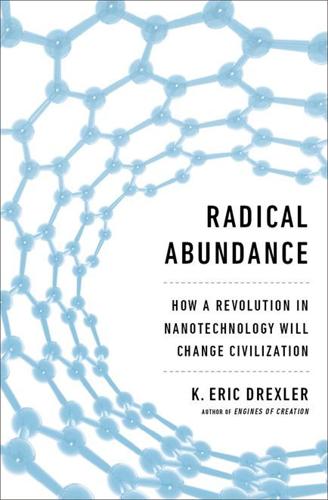
Radical Abundance: How a Revolution in Nanotechnology Will Change Civilization
by
K. Eric Drexler
Published 6 May 2013
NanoEngineer-1 also provided design tools for mechanical devices based on covalent materials, interfaced with standard molecular mechanics and molecular dynamics code (which for reasons discussed in Chapter 5 can be remarkably effective for testing how such devices behave). Similar software development projects will surely be pursued in the future, supporting both contemporaneous experimental research and forward-looking engineering exploration. Open-source design software can be expected to support crowd-sourced design organized as competitive games. The design work involved can be fun (based on my experience and what I’ve seen others do), and the results yield attractive, visual products, both pictures and videos. Further, designs can be evaluated by quantitative engineering criteria and metrics. Competitions can use these metrics as scores.* In short, we will likely see both open-source design tools and open-source design development, and the results are likely to be weighted toward high-end technologies.
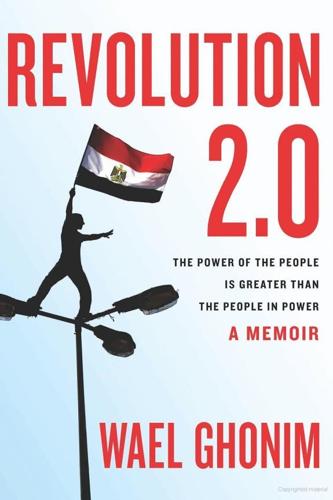
Revolution 2:0: A Memoir and Call to Action
by
Wael Ghonim
Published 15 Jan 2012
Rasd, whose page was linked to “Kullena Khaled Said” on Jan25, had twelve admins who regularly collected information, photos, and videos from protesters. Their page quickly became one of the major news sources on the Egyptian revolution. More than 350,000 people joined the page to keep up with the minute-to-minute updates, something traditional media simply couldn’t offer. This pro-revolution, crowd-sourced perspective was not limited to Rasd, either. Hundreds of other pages, Facebook accounts, and Twitter profiles were dedicated to disseminating the news. As a result, many Egyptians abroad were able to follow what was going on in Tahrir Square and accurately represent the protesters’ point of view to their local media.

How Not to Network a Nation: The Uneasy History of the Soviet Internet (Information Policy)
by
Benjamin Peters
Published 2 Jun 2016
A sideways look at some of the discourse about online commerce today proposes the enduring relevance of the Soviet socialist revolution that was consummated a century ago. Both the Internet and the Soviet command economy promise the revolutionary realization of the means for socialist or collectivist production on a mass scale. In the rhetoric of networking collective consciousness and crowd-sourced collaboration, we see the unlikely alliance of Wired editor Kevin Kelly’s hive mind, open-source software promoter Eric Raymond’s bazaar, and Marxist revolutionary Leon Trotsky’s collective farm.9 Long before Internet enthusiasts were around, Soviet enthusiasts were promising that workers (users) could meet the needs of the masses (crowds) through collective modes of resource sharing and collaboration (peer-to-peer production).
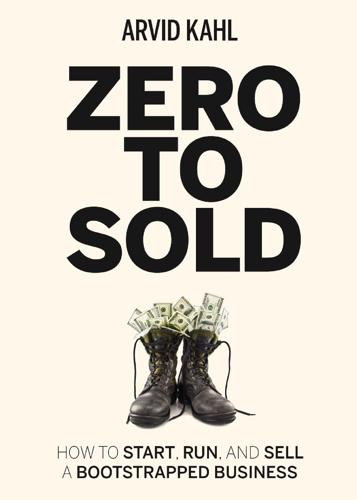
Zero to Sold: How to Start, Run, and Sell a Bootstrapped Business
by
Arvid Kahl
Published 24 Jun 2020
They built a referral system that would show the advocate exactly where their referred teachers were along their journey. And then, they would allow advocates and new users to communicate through their platform. They encouraged advocates to help and guide new teachers through their journey. Essentially, they crowdsourced their onboarding to existing customers. If you build a referral system where your experienced customers help the new users get up to speed, you can significantly reduce the workload of your customer service department. If you add a referral system on top of a mature product, you can expect the most basic questions to be answered by your advocates before the questions even make it into your customer service tickets.

Human Compatible: Artificial Intelligence and the Problem of Control
by
Stuart Russell
Published 7 Oct 2019
If formal standards, professional qualifications, and licensing procedures emerge for fact-checkers, that would tend to preserve the validity of the information flows on which we depend. Organizations such as the W3C Credible Web group and the Credibility Coalition aim to develop technological and crowdsourcing methods for evaluating information providers, which would then allow users to filter out unreliable sources. A second way to protect reputation systems is to impose a cost for purveying false information. Thus, some hotel rating sites accept reviews concerning a particular hotel only from those who have booked and paid for a room at that hotel through the site, while other rating sites accept reviews from anyone.
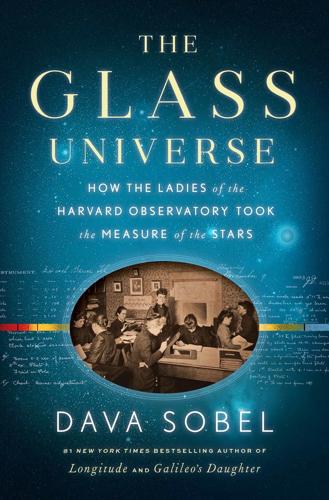
The Glass Universe: How the Ladies of the Harvard Observatory Took the Measure of the Stars
by
Dava Sobel
Published 6 Dec 2016
Next to the inked circle, an inked question arises: Galaxy? The index cards and logbooks that list the telescope, sky coordinates, date, and exposure time of each photograph are also coming online, thanks to willing individuals who spend a few hours every day transcribing them via the Smithsonian Institution’s crowdsourcing platform. Citizen scientists work in front of their own computer screens, from high-resolution photographs of each logbook’s hundred pages, each page crammed with statistics and remarks on as many as twenty plates. At the outset, DASC@H team members named reasons beyond data mining as justification for their long-term project.

The Deep Learning Revolution (The MIT Press)
by
Terrence J. Sejnowski
Published 27 Sep 2018
BRAIN Initiative, to develop innovative neurotechnologies that accelerate our understanding of brain function, is announced in the White House. 12 The Future of Machine Learning Chapter The Future of Machine 12 Learning © Massachusetts Institute of TechnologyAll Rights Reserved The age of cognitive computing is dawning. Soon we will have self-driving cars that drive better than we do. Our homes will recognize us, anticipate our habits and alert us to visitors. Kaggle, a crowdsourcing website recently bought by Google, ran a $1 million contest for a program to detect lung cancer in CT scans and is running a $1.5 million contest for the Department of Homeland Security for a program to detect concealed items in body scans at airports.1 With cognitive computing, doctor’s assistants will be able to diagnose even rare diseases and raise the level of medical care.
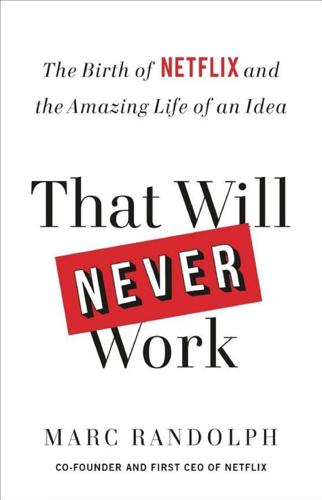
That Will Never Work: The Birth of Netflix and the Amazing Life of an Idea
by
Marc Randolph
Published 16 Sep 2019
Since it could only use the data available to it—things like genre, actors, location, release year, language, and so forth—the algorithm often made suggestions that made sense to a computer but didn’t really take into account any kind of real-world similarity. Or, it would give unhelpful suggestions: “You like Top Gun? Here’s another movie that came out in 1986!” In the end, we realized that the best way to give users what they wanted was to crowdsource data from them. At first, we did what Amazon did. Using a process called “collaborative filtering,” Amazon would suggest products to you based on common buying patterns. They still do this. Essentially, if you buy a wrench from Amazon, it groups you with other users who have bought a wrench, and then suggests that you buy other things that they’ve bought.

Reset
by
Ronald J. Deibert
Published 14 Aug 2020
It is important to underline that many people still receive the vast majority of their information from traditional news, but traditional news organizations do not operate in isolation from social media.158 News organizations increasingly analyze the popularity of their stories over social media, and adjust their production process accordingly.159 The more an audience “likes” a topic or editorial approach through social media channels, the likelier broadcast news organizations are to focus on and amplify them. Social media provide a resource for journalists to “crowdsource” stories and sources, but research has also found that doing so can distort their priorities. According to one survey study, for some journalists “Twitter has become so normalized that tweets were deemed equally newsworthy as headlines appearing to be from the AP wire.”160 Then there are the physical characteristics of digital interactions that affect the nature of discourse, a topic in which Marshall McLuhan would be right at home.

The Smart Wife: Why Siri, Alexa, and Other Smart Home Devices Need a Feminist Reboot
by
Yolande Strengers
and
Jenny Kennedy
Published 14 Apr 2020
Style Check, the video explains, “combines the best of machine learning with advice from fashion experts,” offering recommendations on what to wear based on “current trends and what flatters you.” The Look Book records what you wear and when, so that you can “keep track of your favorites and take your closet with you.”25 Amazon’s Echo Look also includes all the other usual Alexa accessories, and its features are likely to continue expanding. In 2018, Look users could crowdsource votes on their outfit; they will eventually be able to make use of a “mirror” that dresses them in virtual clothes.26 Using computer vision, pattern recognition, neural networks, and machine learning, the device is part of a system that will one day be able to design clothes by analyzing the Look’s database of images, identifying emerging trends, and then applying the learning to generate new items from scratch.

Moon Coastal Oregon
by
Judy Jewell
and
W. C. McRae
Published 13 Jul 2020
CAMPING State park and national forest campgrounds offer low-cost overnight lodgings in attractive settings. Most of Oregon’s state park campgrounds have restrooms, showers, fire rings, piped water, and electrical or full RV hookups. National forest campgrounds often cost less but offer more primitive facilities. A good source for campsite information is www.thedyrt.com, which offers crowd-sourced comments, photos, and other information for Oregon campsites. State Parks The coast’s state parks are still the most heavily used (per state park acre) in the country—a tribute to their excellence, and a clue as to the importance of reservations during the busy summer months. Prices for camping at state parks run about $26-34 for RVs, $17-24 for tent sites, $8 for hikers and bikers, $46-56 for yurts, and $53-100 for cabins.
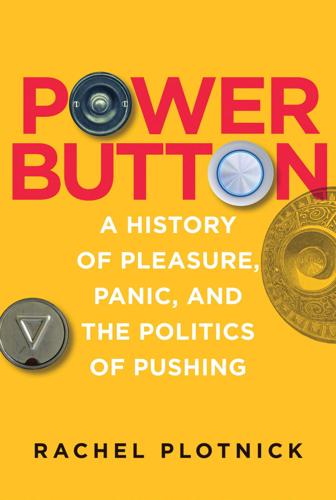
Power Button: A History of Pleasure, Panic, and the Politics of Pushing
by
Rachel Plotnick
Published 24 Sep 2018
As all of this activity transpired online, journalists, pundits, and psychologists jumped in to explain why an odd experiment had attracted so much attention. Some offered explanations about addiction and a fear of mortality. The Brookings Institute proposed that “the button” provided useful lessons for improved public policy and crowd-sourced government. News articles and blogs called the act of pressing the button “fascinating,” “ridiculous,” “craze-inducing,” “bizarre,” “hypnotic, divisive and possibly evil.” Yet far from outlandish or new, the experiment recycled a familiar image of buttons as simultaneously pleasurable and panic inducing that has perpetuated for more than 125 years.
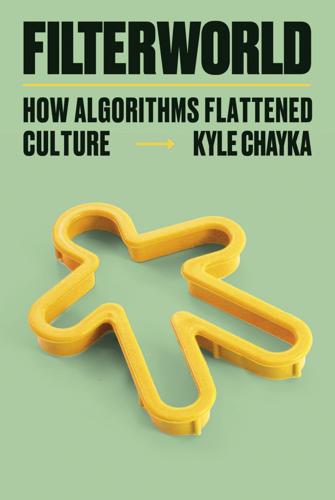
Filterworld: How Algorithms Flattened Culture
by
Kyle Chayka
Published 15 Jan 2024
It’s easy to overlook the fact that when consuming content through digital platforms, what we see at a given moment is determined more directly by equations than such tastemakers. With Netflix’s home page, Facebook’s feed, and Spotify’s automated radio, there is no direct influence from editor, DJ, or booker, but, rather, a mathematical processing of crowdsourced data stretching to encompass every user on the site. The curation, such as it is, is automated, scaled up until it’s beyond the grasp of any individual person. Through our algorithmic feeds, we get only the Amazon retail experience, not the McNally curatorial eye. GOOD TASTE The “taste” of tastemakers means personal preference, the discernment that we all apply to figure out what we like, whether in music, fashion, food, or literature.
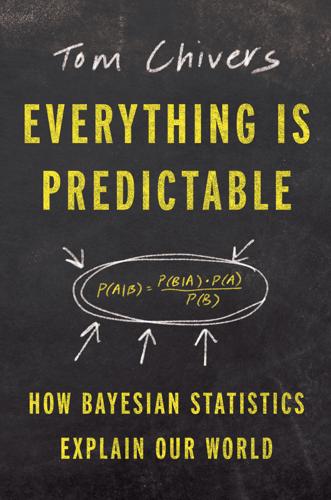
Everything Is Predictable: How Bayesian Statistics Explain Our World
by
Tom Chivers
Published 6 May 2024
But if we want to ask questions like How likely is it that my hypothesis is true, given this new data? we have to use prior probabilities—we have to be Bayesian—and the only way of having prior probabilities is to use subjective estimates. That doesn’t mean they can be pulled out of thin air—there are more and less reasonable priors to hold, and we can check whether ours are reasonable by crowdsourcing them and checking whether our discoveries would stand up if we’d started with somewhat different priors. But they’re still our imperfect guesses about the real underlying facts of the world. That doesn’t mean that science can’t know anything, or that it’s all perfectly postmodern. It just means that, once again, we’re building models of the world, and trying our best to check them against the real world: making predictions and updating them with new information, trying to minimize prediction error.
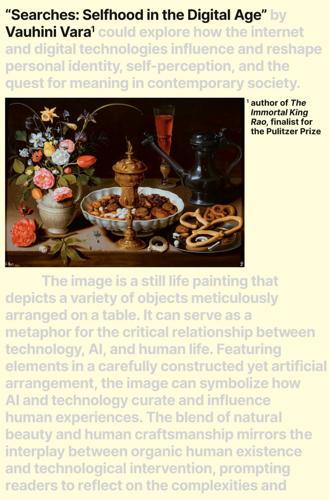
Searches: Selfhood in the Digital Age
by
Vauhini Vara
Published 8 Apr 2025
We already have the internet, why would we build something worse? It’s the internet but one that works and is collectively owned. Its a small physical device and it can fit in the palm of your hand, but it isn’t like all our other devices, it doesn’t link us into a system of global capitalism; instead it is crowd-sourced and it hums with a gentle energy when you hold it up. It’s a tiny button on the tip of our forefinger. When you touch your forehead with it you can tap into everyone’s imaginations. Two taps you can choose to be in one of those scenarios. Three taps and you’re back to your own. Four taps and you can meld with one specific person’s imagination for a set period of time.
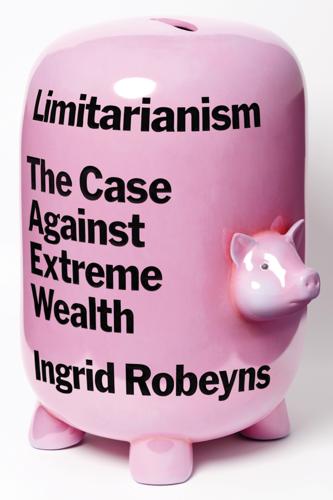
Limitarianism: The Case Against Extreme Wealth
by
Ingrid Robeyns
Published 16 Jan 2024
Some of these problems, such as climate change, are time-sensitive and require urgent, far-reaching interventions that go against the short-term interests of voters. In such cases, only drastic civil disobedience—leading to political revolution—may deliver the policies we need. This brings us to a unique justification for the giving by wealthy philanthropists, since they are able to fund such political movements instantly, whereas crowdsourcing is often a slow process, as is electoral change. In short, philanthropists can use their plutocratic power to help us address an urgent and severe crisis that democratic institutions, as we currently know them, are much less likely to address. Philanthropic power can then be used to rescue one form of democracy (defending the interests of all affected parties, including future generations) from another form of democracy (policy-making by majority voting).17 Yet even with this principled reason for philanthropy, two concerns remain.
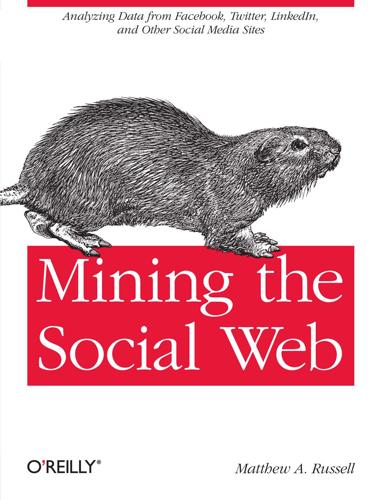
Mining the Social Web: Finding Needles in the Social Haystack
by
Matthew A. Russell
Published 15 Jan 2011
A sample tweet from a search API that illustrates tweet entities { "created_at" : "Thu Jun 24 14:21:11 +0000 2010", "entities" : { "hashtags" : [ { "indices" : [ 97, 103 ], "text" : "gov20" }, { "indices" : [ 104, 112 ], "text" : "opengov" } ], "urls" : [ { "expanded_url" : null, "indices" : [ 76, 96 ], "url" : "http://bit.ly/9o4uoG" } ], "user_mentions" : [ { "id" : 28165790, "indices" : [ 16, 28 ], "name" : "crowdFlower", "screen_name" : "crowdFlower" } ] }, "id" : 16932571217, "text" : "Great idea from @crowdflower: Crowdsourcing the Goldman ... #opengov", "user" : { "description" : "Founder and CEO, O'Reilly Media. Watching the alpha ...", "id" : 2384071, "location" : "Sebastopol, CA", "name" : "Tim O'Reilly", "screen_name" : "timoreilly", "url" : "http://radar.oreilly.com", } } By default, a tweet specifies a lot of useful information about its author via the user field in the status object, but the tweet entities provide insight into the content of the tweet itself.
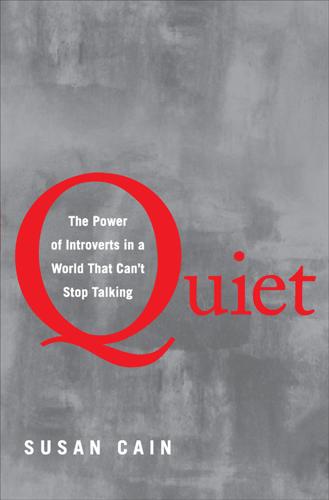
Quiet: The Power of Introverts in a World That Can't Stop Talking
by
Susan Cain
Published 24 Jan 2012
On the Internet, wondrous creations were produced via shared brainpower: Linux, the open-source operating system; Wikipedia, the online encyclopedia; MoveOn.org, the grassroots political movement. These collective productions, exponentially greater than the sum of their parts, were so awe-inspiring that we came to revere the hive mind, the wisdom of crowds, the miracle of crowdsourcing. Collaboration became a sacred concept—the key multiplier for success. But then we took things a step further than the facts called for. We came to value transparency and to knock down walls—not only online but also in person. We failed to realize that what makes sense for the asynchronous, relatively anonymous interactions of the Internet might not work as well inside the face-to-face, politically charged, acoustically noisy confines of an open-plan office.

The Master Algorithm: How the Quest for the Ultimate Learning Machine Will Remake Our World
by
Pedro Domingos
Published 21 Sep 2015
Everything we need is right there in a child’s mind, if only we can somehow capture its essence in computer code. Some researchers even argue that the way to create intelligent machines is to build a robot baby and let him experience the world as a human baby does. We, the researchers, would be his parents (perhaps even with an assist from crowdsourcing, giving a whole new meaning to the term global village). Little Robby—let’s call him that, in honor of the chubby but much taller robot in Forbidden Planet—is the only robot baby we’ll ever have to build. Once he has learned everything a three-year-old knows, the AI problem is solved. We can copy the contents of his mind into as many other robots as we like, and they’ll take it from there, the hardest part already accomplished.
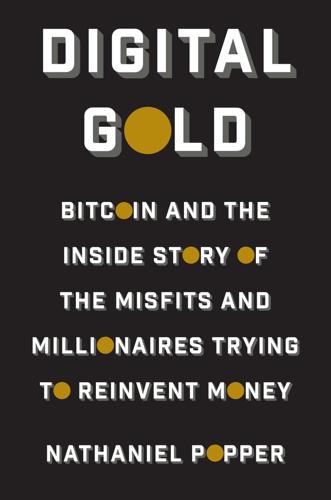
Digital Gold: Bitcoin and the Inside Story of the Misfits and Millionaires Trying to Reinvent Money
by
Nathaniel Popper
Published 18 May 2015
At the same time that he was buying, Roger announced on the Bitcoin forums that his computer hardware company, Memory Dealers, would immediately begin accepting payment in Bitcoin. Not long after that, he turned a regular Memory Dealers’ advertisement that he paid for on Free Talk Live into an advertisement for Bitcoin and crowdsourced the copy for the ad from the Bitcoin forums. Soon enough, he had put up a gold-and-black billboard, on the side of an expressway in Silicon Valley, with an enormous Bitcoin emblem and the phrase “We Accept Bitcoin,” over the Memory Dealers web address. The crowd on the forums went wild. “God I love Bitcoin!”

Digital Wars: Apple, Google, Microsoft and the Battle for the Internet
by
Charles Arthur
Published 3 Mar 2012
Meanwhile, they focused on the user experience. And while Google, like rival search engines, also had its own teething troubles with porn and spam, the PageRank system, plus in 1999 a ‘porn keyword’ effort (to root out the words being used to point to pornographic spam, or that appeared in pages trying to piggyback on innocent searches) crowdsourced from its own engineers, quickly helped drive irrelevant porn links out of the key first page of results. That helped, because the more people used Google the more they stuck to the first page of results, in contrast to the situation with other search engines, where people would often have to wade through two, three or even four pages to find something relevant.

The Blockchain Alternative: Rethinking Macroeconomic Policy and Economic Theory
by
Kariappa Bheemaiah
Published 26 Feb 2017
A Chatbot is essentially a service, powered by rules and artificial intelligence (AI), that a user can interact with via a chat interface. The service could be anything ranging from functional to fun, and it could exist in any chat product (Facebook Messenger, Slack, telegram, text messages, etc.). Recent advancements in Natural Language Processing (NLP) and Automatic Speech Recognition (ASR) , coupled with crowdsourced data inputs and machine learning techniques, now allow AI’s to not just understand groups of words but also submit a corresponding natural response to a grouping of words. That’s essentially the base definition of a conversation, except this conversation is with a “bot.” Does this mean that we’ll soon have technology that can pass the Turing test?
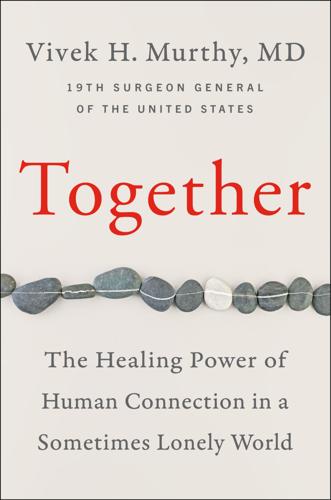
Together
by
Vivek H. Murthy, M.D.
Published 5 Mar 2020
His subjects are users of networking services such as Airbnb and Uber, and his premise is that online reputations, which users build through services’ apps, function as a form of social introduction. In the peer-to-peer marketplace, before you and your Uber driver or Airbnb host ever meet, you have a wealth of preliminary information about each other, which is distilled into a rating. This, in effect, crowdsources your trust in each other. One real benefit of this ratings system, Parigi said in a 2018 interview,12 is that it overrides superficial biases and increases the diversity of interactions in our daily lives. “What we found was that if you were interacting with someone who was different from you, but had a good reputation, using [the] Airbnb style of reputation (ratings and reviews), you were more likely to trust that person.”

System Error: Where Big Tech Went Wrong and How We Can Reboot
by
Rob Reich
,
Mehran Sahami
and
Jeremy M. Weinstein
Published 6 Sep 2021
The platform brings together government ministries, elected representatives, scholars, experts, business leaders, civil society organizations, and citizens with the aim of increasing legitimacy in the results of government action. According to Tang, there are more than 5 million active members (of the country’s 23 million inhabitants) on the vTaiwan crowdsourcing open platform. More recently, Tang helped lead Taiwan’s extremely successful COVID-19 strategy. By the end of 2020, Taiwan had recorded only 9 deaths and fewer than 1,000 total cases. Of course, Taiwan is a small country, so a better measure of Taiwan’s success is deaths per 100,000 people. In the United States, more than 160 people per 100,000 have died, whereas in Taiwan the number is .04 per 100,000, this despite the fact that Taiwan is less than a hundred miles from mainland China, the epicenter of the pandemic, and more than 1 million Taiwanese citizens work in China.
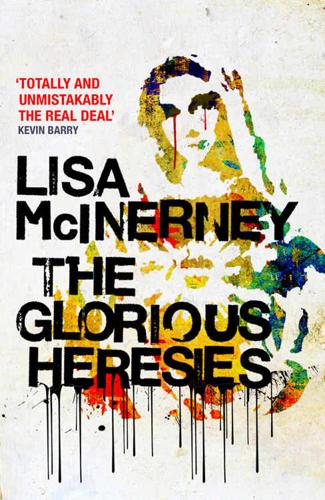
The Glorious Heresies
by
Lisa McInerney
Published 8 Apr 2015
And all around her you get people moving from here to there in the school yard like dancers in formation, like snowflakes in the sky, like shitty little bangers around a falling star. She’s all like ‘My friends think it’s mean’ and ‘My friends say it’s a really bad sign’ and it’s not like I’m whipped or nothing but what her friends think means a fuck of a lot more to me than she knows because you know the way ould dolls are, it’s all fucking crowdsourced. But I go, ‘Look, it shouldn’t matter what your friends think, it should matter only what you think,’ and she goes, ‘Well it is about what I think, Ryan, and I think it’s awful because I’ve done everything for you, you know?’ By ‘everything’ she means she’s let me fuck her and she’s not even being over the top with that; it was everything, it was the whole world.

City on the Verge
by
Mark Pendergrast
Published 5 May 2017
When I spoke to Meadows, he stressed the BeltLine Partnership’s role not only in fund-raising but in advocating for affordable housing and other equity issues and engaging community support. In January 2016, Meadows and Deputy Executive Director Rob Brawner, who had been at the Partnership since its inception, launched “Light the Line,” a grassroots crowd-sourced campaign to raise over $1 million to light the Eastside Trail. They were also hoping to convince commercial property owners along the BeltLine to create a “special services district” to pay an additional tax in order to finance a bond that might raise as much as $100 million. They planned to move their offices into the Atlanta Stove Works building adjacent to the BeltLine in the Old Fourth Ward, with exhibits, volunteer sign-up opportunities, and community meeting space.
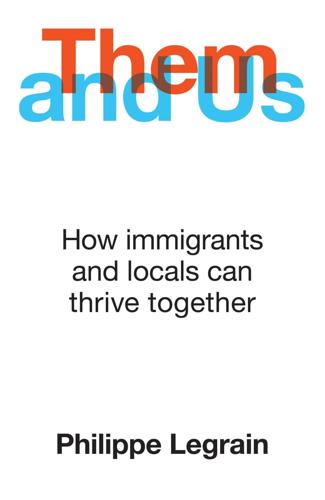
Them and Us: How Immigrants and Locals Can Thrive Together
by
Philippe Legrain
Published 14 Oct 2020
Each month the pair checked that day’s mid-market rate to find a fair exchange rate. Kristo put pounds into Taavet’s UK bank account and Taavet topped up his friend’s euro account with euros. Both got the currency they needed and neither paid a penny in hidden bank charges. That is how they how came up with the idea for TransferWise, a crowdsourced currency exchange service. By 2019 it had six million customers worldwide and was helping them to transfer £4 billion a month at a fraction of the previous cost. Unlike many tech start-ups it is profitable, earning £10 million after tax in 2018. And in 2019 it became Europe’s most valuable fintech company, after a funding round gave it a valuation of $3.5 billion (£2.7 billion).11 That makes it one of the rare UK-based unicorns.

Catch and Kill: Lies, Spies, and a Conspiracy to Protect Predators
by
Ronan Farrow
Published 14 Oct 2019
For the network, the firing had the added benefit of cutting off what several sources around Lack said were mounting tensions over Kelly’s focus on Weinstein and Lauer. The memo was only one in a series of steps designed to rewrite the history of the story at the network. NBC also hired Ed Sussman, a “Wikipedia whitewasher,” to unbraid references to Oppenheim, Weinstein, and Lauer on the crowdsourced encyclopedia. The Lauer matter, Sussman wrote, justifying one edit, “should be handled seperately.” He spun the material in NBC’s favor, sometimes weaving in errors. In one edit, he proposed that the month between the Weinstein story being greenlit and running at The New Yorker be revised to “several months.”
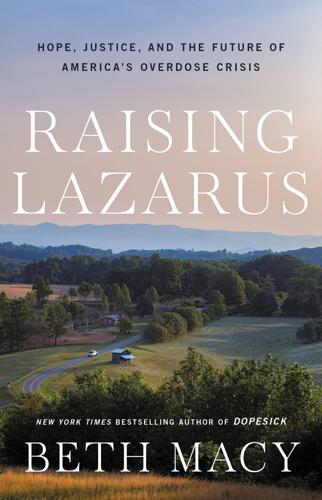
Raising Lazarus: Hope, Justice, and the Future of America’s Overdose Crisis
by
Beth Macy
Published 15 Aug 2022
“I told myself, ‘I’m going to treat Mitch just like Lisa treats Amelia.’ And then I asked everyone I could think of to help me do that. As opposed to me walking around with this bleeding child in my arms saying, ‘Help me. My kid is bleeding,’ there was no place where you could go for help,” Young recalled. “So families are crowdsourcing this on Google and Facebook. And it’s terrible information that’s out there, most of it. Terrible! It’s so dangerous, and so harsh, and, as a mother, it just didn’t feel right to me.” So Young created her own rules, based on the principles of harm reduction—though, because that concept was still on the edge of the periphery, she didn’t yet know the term.
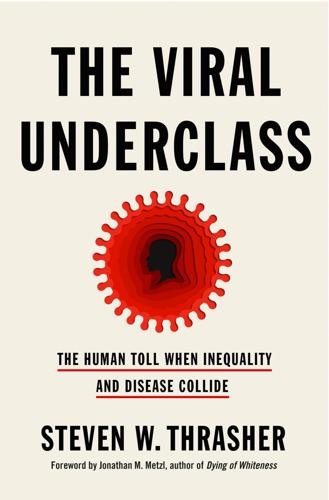
The Viral Underclass: The Human Toll When Inequality and Disease Collide
by
Steven W. Thrasher
Published 1 Aug 2022
The category of folks who did not get to work from home included people cooking food for minimum wage in fast-food restaurants, delivering food via Uber Eats, and shopping for groceries. The people who performed these tasks were often not legal employees at all, but “contractors,” with no guaranteed salary or benefits. Initially, these crowd-sourced human shields performed their work without personal protective gear, taking on viral risk so those above them in the class hierarchy could be safer. But the term essential worker is misleading: the jobs were considered essential, but the workers performing them were considered expendable. If someone died doing these jobs—and they did—they’d be replaced by someone else who couldn’t afford to avoid viral risk like the people staying at home.
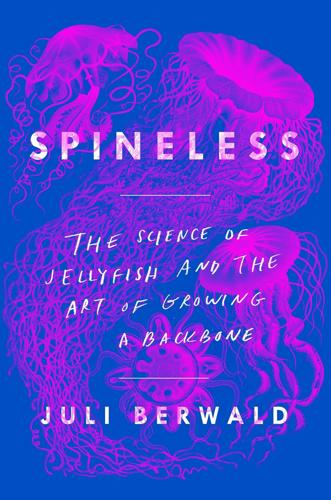
Spineless: The Science of Jellyfish and the Art of Growing a Backbone
by
Juli Berwald
Published 14 May 2017
No central brain is required to make a decision about what to do. Any pacemaker has the authority to speak up and take control if conditions demand it. That’s an idea we’re not used to, biased as we are to believe that intelligence originates from one centralized decision-making brain. But if there’s anything that crowdsourcing and social media have taught us, it’s that having eyes looking, ears listening, and brains thinking in many places and in various directions can be even more effective and elegant than a single authority. The collective wields great power. — In my final year of grad school, I snagged a lease on a rent-controlled studio apartment in a desirable zip code near the beach.

The Coming Wave: Technology, Power, and the Twenty-First Century's Greatest Dilemma
by
Mustafa Suleyman
Published 4 Sep 2023
This semi-improvised Ukrainian militia was called Aerorozvidka. A ragtag volunteer band of drone hobbyists, software engineers, management consultants, and soldiers, they were amateurs, designing, building, and modifying their own drones in real time, much like a start-up. A lot of their equipment was crowdsourced and crowdfunded. The Ukrainian resistance made good use of coming-wave technologies and demonstrated how they can undermine a conventional military calculus. Cutting-edge satellite internet from SpaceX’s Starlink was integral to maintaining connectivity. A thousand-strong group of nonmilitary elite programmers and computer scientists banded together in an organization called Delta to bring advanced AI and robotics capabilities to the army, using machine learning to identify targets, monitor Russian tactics, and even suggest strategies.
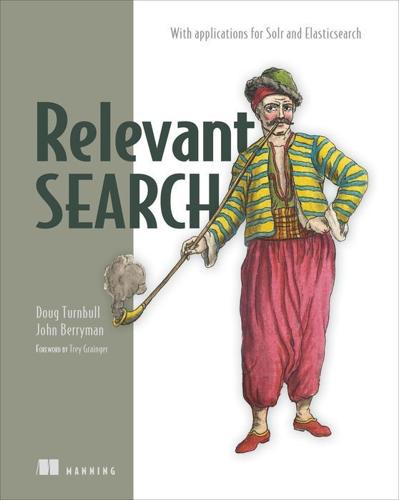
Relevant Search: With Examples Using Elasticsearch and Solr
by
Doug Turnbull
and
John Berryman
Published 30 Apr 2016
Only trained, domain-aware content curators can make these fine-grained distinctions. Tagging also takes a lot of human effort. It may require deep reading of the content, which may not scale to cover realistic data sets. One way to reduce the curation workload is by looking to your users as a possible way to crowd-source the concept signal. Do you recall the conversation about thrashing behavior in chapter 9? When thrashing, an unsatisfied search user quickly moves from one search to another, indicating that the search results don’t match their intent. Imagine that a user searches for “Myocardial Infarction,” spends about 20 seconds on the results page, and then makes a new search for “Cardiac Arrest.”

Nexus
by
Ramez Naam
Published 16 Dec 2012
The net was soon awash in new mutants descended from the variants that made it past the filter daemons. Some variants prompted the users who'd downloaded the package to enter new filenames names to add to the next generation. Evolution and human cleverness were cast against filter daemon cleverness. Bit by bit, crowdsourced evolution pulled ahead. NSA agents were slow to grasp the enormity of the new outbreak. When they did, they pulled the plug on all peer-sharing traffic within the United States, started to systematically sandbox any computer identified as a source of the new infection, used backdoors in email systems to try to filter out new generations of the files.

Dawn of the New Everything: Encounters With Reality and Virtual Reality
by
Jaron Lanier
Published 21 Nov 2017
Again and again we see virtual stuff floating in midair. Princess Leia did it, of course, but the depiction is almost universal. I don’t mind it in science fiction, but it’s also used in videos from defense contractors and by companies promoting VR products in a deceptive way. It’s been used to cheat people out of money on crowdsourcing sites. Worse, all of this often happens in a self-deceptive way! I periodically run into military brass or tech executives who were so enchanted by the lure of floating holograms in videos—that they themselves commissioned—that they poured huge sums into a technology that can’t actually exist, at least not in the present era.
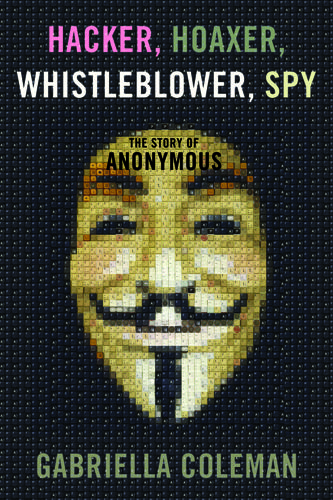
Hacker, Hoaxer, Whistleblower, Spy: The Story of Anonymous
by
Gabriella Coleman
Published 4 Nov 2014
Growing dissatisfaction with Barrett Brown inside Anonymous did not slow him down. He remained active within Anonymous for a few more months. The intimate portal into a private security firm like HBGary Federal galvanized him and facilitated the establishment of his web-based think tank ProjectPM, “a crowd-sourced wiki focused on government intelligence contractors.” It was clear to him that HBGary Federal was not an anomaly amongst defense contractors. In an op-ed published in 2013, Brown expressed his motivations behind PPM: “we must look not just towards the three letter agencies that have routinely betrayed us in the past, but also to the untold number of private intelligence contracting firms that have sprung up lately in order to betray us in a more efficient and market-oriented manner.”31 The ballooning size of this market-driven industry has been thoughtfully assessed by Tim Shorrock, one of the few investigative journalists to extensively research the topic.
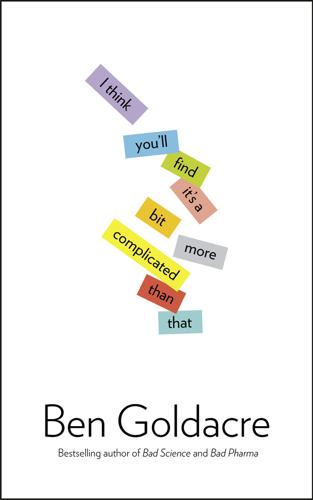
I Think You'll Find It's a Bit More Complicated Than That
by
Ben Goldacre
Published 22 Oct 2014
I could handle the travel time, five days a week, if the commute made adult life seem like a huge, silly game: through the fog, past the nuclear power station, waiting at a miniature station for my tiny train, then up to the mainline and on to meetings. All the while I’d know that my home, come nightfall, was a converted railway carriage, on a pile of shingle, by a nuclear power station, at the end of Toytown. Welcome to this very peculiar, working paradise. If you like nerdy day trips, you should visit www.nerdydaytrips.com, a crowd-sourced website I built with friends, filled with thousands of weird days out from all over the world (although it’s recently been infested with normal days out too, after someone posted it on a museum curators’ mailing list). It’s great for planning a comprehensive nerd itinerary into any journey. For example, when you visit Dungeness for the RH&D Railway, it is compulsory to grow a WWII moustache and stop in at the sound mirrors, just one mile away.
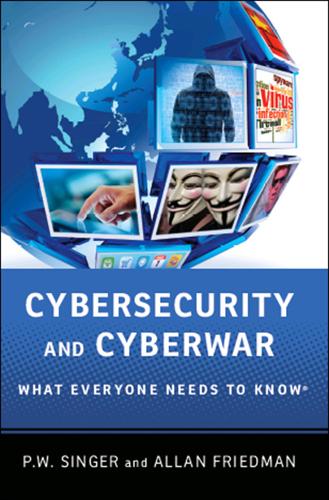
Cybersecurity: What Everyone Needs to Know
by
P. W. Singer
and
Allan Friedman
Published 3 Jan 2014
The revelation of NSA meta-data collection caused an immense scandal that is still shaking out, with implications for everything from the future of counterterrorism to broader public trust in government. But even the seemingly innocuous use by Netflix also demonstrates the dangers of Big Data for privacy. After releasing a de-identified list of user movie preferences to crowd-source an improvement to their recommendation algorithm, executives were shocked to learn that researchers could tie this data to real identities. In one instance, a list of what movies someone liked was enough to determine his or her closeted sexual orientation. More data, and better tools to understand it, can yield unprecedented knowledge, but they may also break down human social, legal, and ethical boundaries we aren’t yet ready to cross.
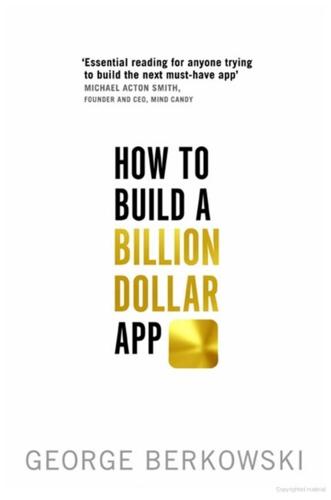
How to Build a Billion Dollar App: Discover the Secrets of the Most Successful Entrepreneurs of Our Time
by
George Berkowski
Published 3 Sep 2014
The team was 80 strong – 70 based in Israel, working on the product and engineering, and a small team of 10 in Palo Alto. The acquisition actually totalled $1.15 billion – $1.03 billion went to the company’s investors and $120 million was earmarked as retention payments for employees, who on average received $1.2 million each before taxes.7 Within a few weeks of the acquisition Google was featuring Waze crowd-sourced traffic information in Google Maps – a testament to how efficient Google’s integration process really is. The Best Defence is Offence The body-numbing price tag of $16 billion8 (plus another $3 billion in incentives) forked out by Facebook to acquire WhatsApp in early 2014 seems beyond the realms of lunacy on the surface.

The Black Box Society: The Secret Algorithms That Control Money and Information
by
Frank Pasquale
Published 17 Nov 2014
Their message varies widely: from the banal (@KimKardashian) to the 76 THE BLACK BOX SOCIETY profound (@SorenKQuotes), from networking to gibberish to satire (@KimKierkegaard). It can function as either a broadcaster or a narrowcaster, according to the predilections of individual users. It has also become a crowd-sourced democratic search engine for news and conversation. By putting a hashtag (#) in front of a term, users form an automatic “real-time” community around it; anyone who clicks on the term will see items tweeted about it in the past few seconds, hours, or days.104 The hashtag also serves to nominate some terms as “trending”— that is, interesting enough to be recommended generally rather than simply to the followers who subscribe to one’s own tweets.105 Trending topics are listed on Twitter’s Home, Discover, and Search pages.
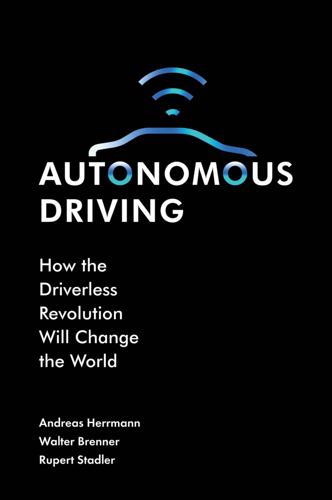
Autonomous Driving: How the Driverless Revolution Will Change the World
by
Andreas Herrmann
,
Walter Brenner
and
Rupert Stadler
Published 25 Mar 2018
Some of them drive very aggressively, others disregard traffic rules, while others are uncertain and decelerate or accelerate suddenly. To enable a vehicle to merge into traffic as smoothly as possible, Mobileye has developed a mapping technology called Road Experience Management. This technology makes it possible to provide crowd-sourced real-time data for precise localisation and high-resolution lane definition, which is an important element to support autonomous driving. This technology is based on software that extracts landmarks and road information with an extremely low bandwidth, approximately 10 kilobytes per kilometre driven.
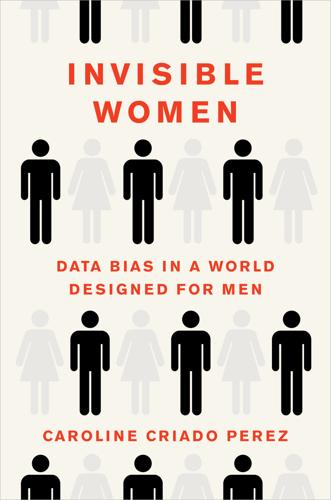
Invisible Women
by
Caroline Criado Perez
Published 12 Mar 2019
cmpid=facebook-post 70 Ceccato (2017) 71 http://transweb.sjsu.edu/sites/default/files/2611-women-transportation.pdf 72 Gardner, Cui and Coiacetto (2017) 73 https://matadornetwork.com/life/make-public-transportation-safer-women/ 74 https://matadornetwork.com/life/make-public-transportation-safer-women/ 75 http://wricitieshub.org/sites/default/files/Final_Report_24082015_0.pdf T 76 https://link.springer.com/article/10.1057/sj.2014.9; http://wricitieshub.org/sites/default/files/Final_Report_24082015_0.pdf 77 http://content.tfl.gov.uk/travel-in-london-understanding-our-diverse-communities.pdf 78 https://matadornetwork.com/life/make-public-transportation-safer-women/ 79 http://news.trust.org//spotlight/most-dangerous-transport-systems-for-women/ 80 http://indiatoday.intoday.in/story/delhi-gangrape-victims-friend-relives-the-horrifying-84-minutes-of-december-16-night/1/309573.html 81 https://www.nytimes.com/2017/05/05/world/asia/death-sentence-delhi-gang-rape.html 82 http://www.reuters.com/article/us-india-rape-attack-idUSBRE8BU02E20121231 83 Goodney, Suzanne, D’Silva, Lea Elsa and Asok, Abhijith (2017), ‘Women’s strategies addressing sexual harassment and assault on public buses: an analysis of crowdsourced data’, Crime Prevention and Community Safety, 19: 3–4, 227–39 84 https://www.theguardian.com/global-development-professionals-network/2016/oct/13/why-arent-we-designing-cities-that-work-for-women-not-just-men 85 https://www.theguardian.com/cities/2014/dec/05/if-women-built-cities-what-would-our-urban-landscape-look-like 86 http://www.dailytitan.com/2013/11/workout-culture-subconsciously-reinforces-sexist-norms/ http://www.telegraph.co.uk/women/womens-life/11587175/Womens-fitness-What-men-really-think-about-women-in-the-gym.html 87 Irschik, Elisabeth and Kail, Eva, ‘Vienna: Progress Towards a Fair Shared City’, in Roberts, Marion and Sánchez de Madariaga, Inés (eds.) (2013) 88 http://www.wpsprague.com/research-1/2017/1/6/more-girls-to-parks-case-study-of-einsiedler-park-viennamilota-sidorova 89 http://civitas.eu/sites/default/files/civ_pol-an2_m_web.pdf 90 https://malmo.se/download/18.1388f79a149845ce3b9ff3/1491301765672/F%C3%B6rstudie+j%C3%A4mstalld+stadsplanering+Add+Gender+2013.pdf 91 https://malmo.se/download/18.1388f79a149845ce3b9102b/1491300931437/Presentation+20120913.pdf 92 http://webbutik.skl.se/bilder/artiklar/pdf/7164–987-4.pdf?

Click Here to Kill Everybody: Security and Survival in a Hyper-Connected World
by
Bruce Schneier
Published 3 Sep 2018
Christopher Loran (13 Dec 2017), “How you can be tracked even with your GPS turned off,” Android Authority, https://www.androidauthority.com/tracked-gps-off-822865. 58In 2013, researchers discovered: Jialiu Lin et al. (5–8 Sep 2012), “Expectation and purpose: Understanding users’ mental models of mobile app privacy through crowdsourcing,” in Proceedings of the 2012 International Conference on Ubiquitous Computing, ACM, https://www.winlab.rutgers.edu/~janne/privacyasexpectations-ubicomp12-final.pdf. 58Any Wi-Fi networks your phone connects to: Retailers are tracking customers using their cell phones’ Wi-Fi as they walk around in stores.

The Job: The Future of Work in the Modern Era
by
Ellen Ruppel Shell
Published 22 Oct 2018
Amazon’s own website all but confirms this charge, boasting that the company “significantly lowers costs” by “leveraging the skills of Mechanical Turk Workers from around the world.” MIT mathematician and philosopher Norbert Wiener once warned that under capitalism the very job of new technology was to intensify the exploitation of workers. “Crowd-sourced” work marketplaces have certainly contributed to this problem. Many labor advocates and scholars believe that online platforms like MTurk are ripe for disruption, and some have designed alternatives. One of the more ambitious is Daemo, a comprehensive worker-cooperative platform currently under development at Stanford University’s Crowd Research Collective.
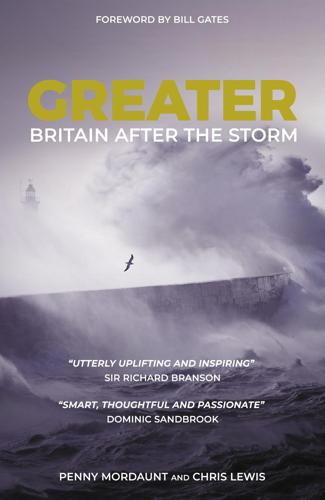
Greater: Britain After the Storm
by
Penny Mordaunt
and
Chris Lewis
Published 19 May 2021
The obsession with the past continues on TV today, with Downton Abbey, The Durrells, The Last Post, Home Fires and The Crown being notable examples of rose-tinted, revisionist, retro-representation. At the top of the list of TV programmes that symbolised the British phlegmatic approach was proto-consumer rights show of the early ’70s That’s Life! In many ways, it was ahead of its time. It was crowd-sourced, with vox pops and newspaper clippings sent in by the public and presented principally by a woman – unusual at the time. The show took on bureaucracy and companies for poor service and, surprise surprise, there was no shortage of stories. Everything was government-run back then – British Airways, British Telecom, British Steel, British Rail, British Leyland, the banks, the travel agents, all the utilities.
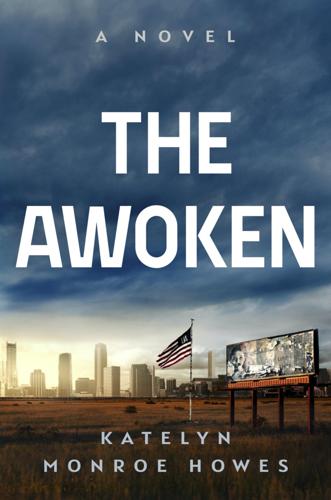
The Awoken: A Novel
by
Katelyn Monroe Howes
Published 8 Aug 2022
My intonation is somewhere between a question and a statement, so the doctor doesn’t quite know how to respond. It’s okay. I don’t need him to. I know the answer. I’m putting my life in the hands of a science that doesn’t even exist yet. All this could be for nothing. The savings I depleted. All that crowdsourced fundraising. The time spent at extra doctor appointments when I could’ve been with Max, living the little that was left of our life together. It could still never happen. I could remain a preserved popsicle until the end of time. But it’s my only chance. And then, even if I do miraculously come back, I’ll be alone.
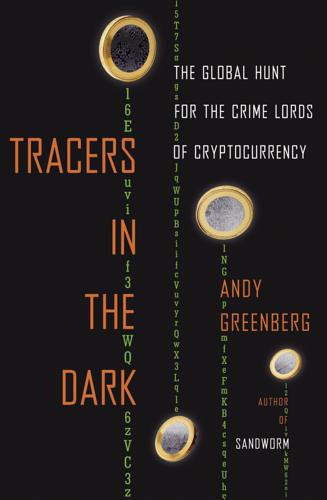
Tracers in the Dark: The Global Hunt for the Crime Lords of Cryptocurrency
by
Andy Greenberg
Published 15 Nov 2022
Sure enough, the address was one of the nearly 300,000 she had already tagged as belonging to the Silk Road. Meiklejohn had just connected Flycracker’s address directly to the source of the heroin he’d tried to use to frame Krebs. Meiklejohn couldn’t identify Flycracker or the heroin seller. But by following the money from Flycracker’s crowdsourced donations to a drug buy, she’d offered another solid piece of evidence exonerating an investigative journalist. “It felt really cool,” Meiklejohn remembers, “to just put the address in the database, see Silk Road pop up, and realize just how possible this was.” * * * · · · Around the same time, I was receiving some Silk Road drug deliveries of my own—voluntary ones, admittedly.
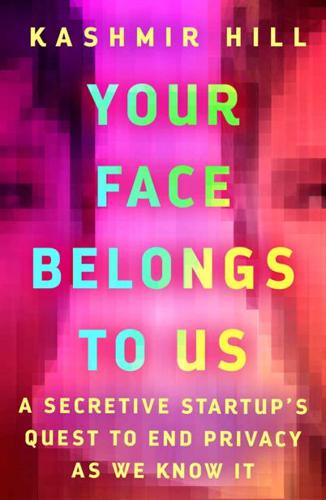
Your Face Belongs to Us: A Secretive Startup's Quest to End Privacy as We Know It
by
Kashmir Hill
Published 19 Sep 2023
*2 The Times had gotten highly classified documents from a whistleblower named Daniel Ellsberg revealing that the U.S. government had systematically lied to the American public about the true nature and toll of the Vietnam War. *3 One of the sources for officers’ photos, beyond Facebook, was OpenOversight, a crowdsourced database for looking up law enforcement officers by name or badge number. It had been created by a nonprofit in Chicago co-founded by Freddy Martinez; the nonprofit endorsed Howell’s use of the photos. The same people opposed to facial recognition by the police approved of its use on them, to hold them accountable
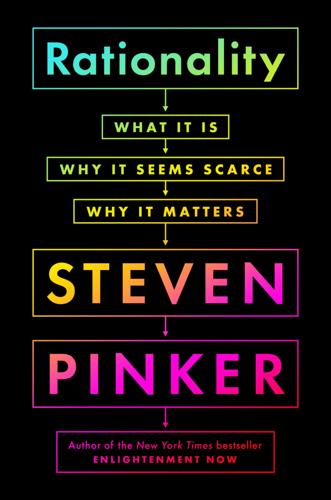
Rationality: What It Is, Why It Seems Scarce, Why It Matters
by
Steven Pinker
Published 14 Oct 2021
A recent quantitative analysis of the content of fake news concluded that “the same features that make urban legends, fiction, and in fact any narrative, culturally attractive also operate for online misinformation.”53 Often the entertainment spills into genres of comedy, including slapstick, satire, and farce: Morgue Employee Cremated by Mistake While Taking a Nap; Donald Trump Ends School Shootings by Banning Schools; Bigfoot Keeps Lumberjack as Love Slave. QAnon falls into still another genre of entertainment, the multiplatform alternate-reality game.54 Adherents parse cryptic clues periodically dropped by Q (the hypothetical government whistleblower), crowdsource their hypotheses, and gain internet fame by sharing their discoveries. It’s no surprise that people seek out all manner of entertainment. What shocks us is that each of these works of art makes a factual claim. Yet our queasiness about blurring fact and fiction is not a universal human reaction, particularly when it pertains to zones that are remote from immediate experience, like faraway places and the lives of the rich and powerful.

These Strange New Minds: How AI Learned to Talk and What It Means
by
Christopher Summerfield
Published 11 Mar 2025
OpenAI, currently the leading LLM developer, has also launched initiatives to democratize the process by which the linguistic output of its fleet of GPT models is curated. In early 2023, it offered sizeable grants for organizations to develop new methods for democratizing the inputs to AI, such as by crowdsourcing ideas for governance. One fascinating suggestion is that, rather than relying on the snap judgements of raters for fine-tuning, groups could be asked to debate the best possible response to a query, harnessing the age-old principle that a crowd is wiser than its individual members. Because LLMs can be trained to imitate people, the models themselves could even be used to simulate this debating process, so that it generated each reply after internally reasoning about what a diverse group of people might think.[*1] Questions that speak to the dynamics of interaction between humans and LLMs can be even trickier to navigate.

Dirty Wars: The World Is a Battlefield
by
Jeremy Scahill
Published 22 Apr 2013
“An NSA-created linkup called the Real Time Regional Gateway allowed operatives who seized scraps of intelligence from raids—a terrorist’s cell phone contacts, receipts for bomb ingredients, even geolocated terrorist cell phones—to send their crucial data to different nodes across the network,” reported Spencer Ackerman of Wired magazine. “One analyst might not appreciate the significance of a given piece of intel. But once JSOC effectively became an experiment in intel crowdsourcing, it soon got a bigger, deeper picture of the enemy it was fighting—and essentially emulating.” In effect, JSOC was running the covert war buried within the larger war and controlling the intelligence. In April 2004, Rumsfeld continued to hammer away on the theme that the Iraqi insurgency was being driven by remnants of the regime.
…
Richardson, “Acts of Conscience,” Esquire, September 21, 2009, www.esquire.com/features/ESQ0806TERROR_102. 161 “lapses of discipline”: General Stanley McChrystal (US Army, Ret.), My Share of the Task: A Memoir (New York: Portfolio/Penguin, 2012), pp. 201–202. 161 moved the task force: Sifton and Garlasco, “No Blood, No Foul.” 15: The Death star 162 “the Death Star”: Mark Urban, Task Force Black: The Explosive True Story of the SAS and the Secret War in Iraq (London: Little, Brown, 2010), p. 82. Other characterizations of the JOC come from Urban’s book. 162 “experiment in intel crowdsourcing”: Spencer Ackerman, “How Special Ops Copied al-Qaida to Kill It,” Danger Room (blog), Wired.com, September 9, 2011, www.wired.com/dangerroom/2011/09/mcchrystal-net-work/all/. 163 killed in an ambush: Jeffrey Gettleman, “Enraged Mob in Fallujah Kills Four American Contractors,” New York Times, March 31, 2004. 163 “Kick ass!”
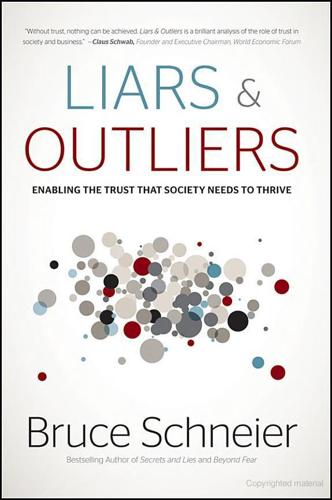
Liars and Outliers: How Security Holds Society Together
by
Bruce Schneier
Published 14 Feb 2012
The Internet reduces the cost of organization dramatically, enabling ad hoc and loosely connected organizations of individuals who contribute tiny amounts of effort towards a large goal.4 Linux and Wikipedia are both informally produced and freely available “products” created by legions of unpaid volunteers; and both are viable competition to corporate, traditionally created, alternatives. Crowdsourcing can produce results superior to more traditional mechanisms of delegating work. From a societal pressure perspective, the normal competing interests we've come to expect from traditional organizations don't apply in the same way to these ad hoc organizations. For example, Microsoft can be—and in the past has been—pressured by the U.S. government to deliberately weaken encryption software in its products, so the government could better spy on people.
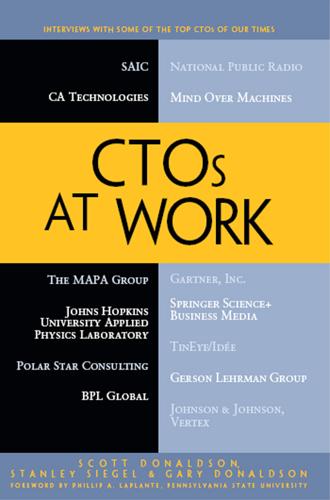
CTOs at Work
by
Scott Donaldson
,
Stanley Siegel
and
Gary Donaldson
Published 13 Jan 2012
Krill: Well, with initiatives, such as the Ignition Grants, to encourage and foster new ideas until they can be evaluated; inviting people to propose regardless of where they are within the Lab's organizational structure. We're working at the grassroots level. G. Donaldson: And how are you putting in, fostering the collaboration to do that so it's just not solo folks coming up with ideas but people wanting to put together ideas? Krill: This Ignition Grants initiative is essentially a ‘crowd-sourcing' approach, where our staff are invited to build on each other's ideas. And in the very first round, the winners, who reported their results during a colloquium, said that they are now working together with people and capabilities they didn't know existed prior to the Grants. Communities are forming around topics.
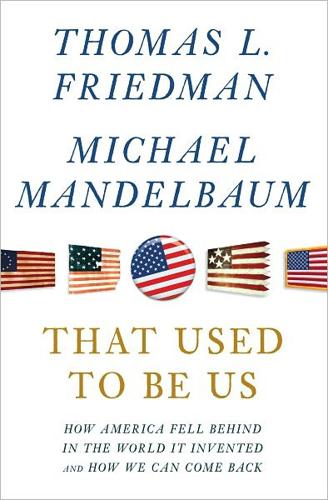
That Used to Be Us
by
Thomas L. Friedman
and
Michael Mandelbaum
Published 1 Sep 2011
Before the world became hyper-connected, American companies moved jobs around the world—that is, they outsourced parts of their business process—to save money that they then reinvested in new products, services, and people in the United States, because they could. Now companies move jobs around the world to do “crowdsourcing” and distributed innovation, because they must. They find the most creative brainpower, the most productive workforce, the most inviting tax rules, and the best infrastructure in or near the fastest-growing markets, because they must. They must use the whole global “crowd” to invent, design, manufacture, improve, and sell their products.
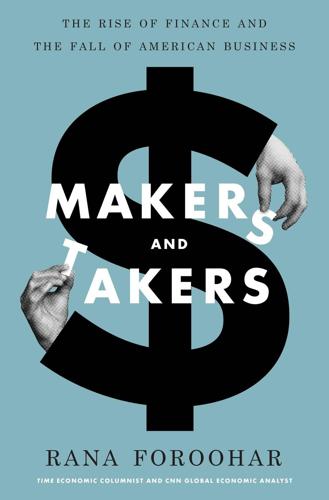
Makers and Takers: The Rise of Finance and the Fall of American Business
by
Rana Foroohar
Published 16 May 2016
The company will be providing fewer snazzy financial services and more “basic things, the sort of things that when you don’t have them, you have trouble—electricity, clean water, jet engines, efficient locomotives,” says Bornstein. “We want to be a technology company focused on solving the world’s biggest problems.”47 To that end, GE is trying to copy some of Silicon Valley’s methods. The company is crowdsourcing all over the world, posting engineering problems online and letting anyone who can solve them propose their solutions. (One recent design for a bracket on a jet engine came from a twenty-two-year-old in Indonesia.) GE is also partnering with a number of high-tech start-ups to jump-start new ideas.
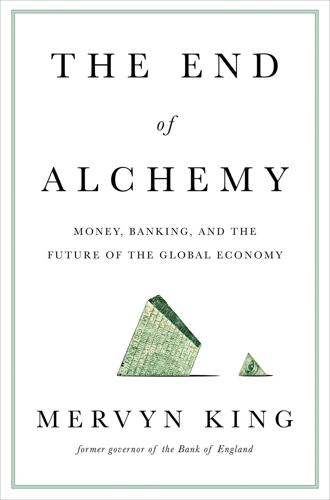
The End of Alchemy: Money, Banking and the Future of the Global Economy
by
Mervyn King
Published 3 Mar 2016
The Advocate General also raised questions about the potential conflict between the ECB’s roles in setting conditions for the eligibility of a country to join the programme and in deciding to buy sovereign debt. 23 Figures from Eurostat. 24 http://www.theguardian.com/news/datablog/2014/oct/02/crowdsourcing-youth-migration-from-southern-europe-to-the-uk. See also data from the respective national statistical organisations. 25 http://www.bbc.co.uk/news/world-europe-33535205 26 IMF Country Report No. 15/186, International Monetary Fund, Washington DC, 14 July 2015. 27 Connolly (1997). 28 If full-employment current account deficits (the trade deficit plus the net costs of servicing external debt) as a share of GDP returned to their 2007 levels then the external financing requirements of Greece, Portugal and Spain alone (ignoring Italy and France) would amount to 4.2 per cent of the GDP of Germany and the Netherlands (IMF WEO database, April 2015). 29 John Maynard Keynes, New Statesman and Nation, 10 July 1937. 30 Bergsten (2014). 31 Issing (2015). 32 ‘The German export success of German business also helps others in Europe … The eurozone as a whole has a level external balance.

Advertisers at Work
by
Tracy Tuten
Published 28 May 2012
I write and speak about trends as a public face for the agency and its innovative thinking. I generate an awful lot of content that we use in new business that helps show clients and prospects new ways of looking at things. And I spend time trying to generate things for Mullen. They range from a crowdsourced Gen Y blog that I incubated, called “The Next Great Generation.” It really runs completely and totally autonomously and has recently become the Gen Y content provider to The Boston Globe. I work on smaller things like playing with new platforms, social digital participation, and that sort of thing.
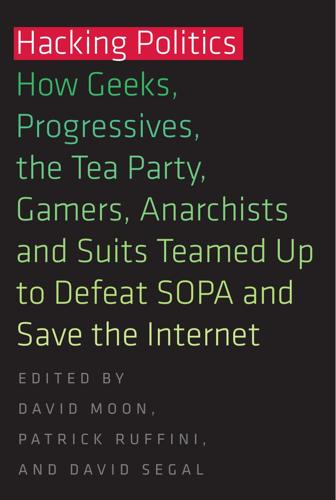
Hacking Politics: How Geeks, Progressives, the Tea Party, Gamers, Anarchists and Suits Teamed Up to Defeat SOPA and Save the Internet
by
David Moon
,
Patrick Ruffini
,
David Segal
,
Aaron Swartz
,
Lawrence Lessig
,
Cory Doctorow
,
Zoe Lofgren
,
Jamie Laurie
,
Ron Paul
,
Mike Masnick
,
Kim Dotcom
,
Tiffiniy Cheng
,
Alexis Ohanian
,
Nicole Powers
and
Josh Levy
Published 30 Apr 2013
The printer, BookMobile, is 100% wind-powered. Black cover: paperback ISBN 978-1-939293-04-6 • ebook ISBN 978-1-939293-06-0 Visit our website at www.orbooks.com First printing 2013. The following honorary co-publishers made substantial contributions to the funding of Hacking Politics via the Indiegogo crowd-sourcing platform. We’re grateful for their support. Anonymous Anonymous Anonymous Anthony Aiuto Kelly Birr Rosario Dawson Eric Decker Luke Gotszling Jim Lastinger Marian Maxwell Robert R Miles II Maxim Nekrasov Daniel R Quintiliani Michael Sriqui Eric Usher TABLE OF CONTENTS A Moment for Aaron Foreword by the Editors Hacking Politics: TLDR PART 1: The World Before SOPA/PIPA AARON SWARTZ For Me, It All Started with a Phone Call CORY DOCTOROW The History of the Copyright Wars JOSH LEVY Before SOPA There Was Net Neutrality MIKE MASNICK COICA, PIPA, and SOPA Are Censorship PART 2: The SOPA/PIPA Battle DAVID SEGAL Now I Work for Demand Progress PATRICK RUFFINI Beginning on the Right DAVID MOON Demand Progress Needs a “Washington Guy” GABRIEL LEVITT SOPA’s Elevation of Profits Over Patients: The Online Pharmacy Story PATRICK RUFFINI Lobbying Republicans Through the Summer DAVID SEGAL The Tea Party Enters the Fray DAVID SEGAL AND DAVID MOON Gamers and Justin Bieber Join the Cause DAVID MOON Clashes With the Big Guns DAVID SEGAL Labor Sides with the Bosses JONNY 5 Turning the Tide on SOPA DAVID SEGAL What Was Lamar Smith Thinking?
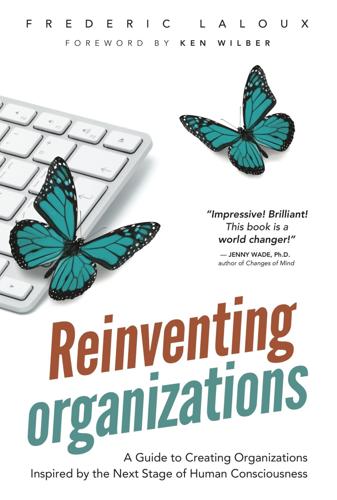
Reinventing Organizations: A Guide to Creating Organizations Inspired by the Next Stage of Human Consciousness
by
Frederic Laloux
and
Ken Wilber
Published 9 Feb 2014
For the first time in history, we can contemplate a future where all people, not just a happy few, are free to follow their calling, to live a life of creative self-expression. Evolutionary democracy Democracy as we know it emerged with the Orange/Green worldview. In all probability, Teal governance will deepen democracy with more citizen involvement (crowdsourcing technology applied to both the executive and legislative branches of government at all levels of power, for example). And we might find ways to ground human decision-making in the basic evolutionary unfolding of the world. Rather than projecting what people want onto the world (the basic premise of democracy), we might look for ways to listen in to what the world is calling for.
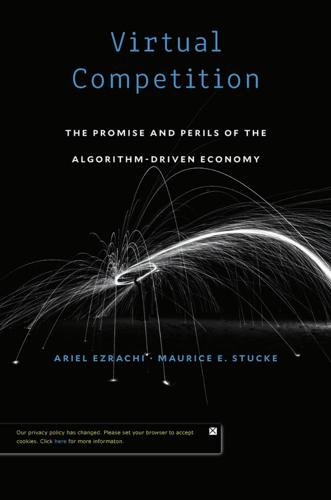
Virtual Competition
by
Ariel Ezrachi
and
Maurice E. Stucke
Published 30 Nov 2016
In 2015, Google’s cars were already “averaging 10,000 new self-driven miles a week, mostly on real-world city streets—not on controlled test tracks.”24 In 2015, Apple was also rumored to be launching an electric car that may eventually be self-driving.25 In addition, 2016 saw a significant investment by Apple in Didi Chuxing, a leading Chinese carhailing app.26 The investment, amounting to a billion dollars, formed part of Apple’s strategy in China, and may well affect the increasingly complex Frenemy dynamic to which Uber is party as well. When, in the future, consumers start using Google’s (and perhaps Apple’s) driverless cars and ride-sharing ser vices, the super-platforms have the potential to become a powerful force in these downstream markets. Both super-platforms already have the mapping technology. Google also has a crowd-sourcing app, Waze, which provides real-time traffic, accident, and police information. Furthermore, Google has a vast quantity of consumer data from its browser, e-mail ser vice, search engine, and social network. Finally, Google, by licensing its applications, largely controls the opensource Android operating system.
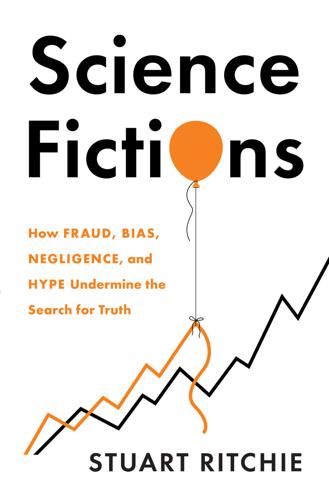
Science Fictions: How Fraud, Bias, Negligence, and Hype Undermine the Search for Truth
by
Stuart Ritchie
Published 20 Jul 2020
, https://freako-nomics.com/2011/07/07/another-case-of-teacher-cheating-or-is-it-just-altruism/(7 July 2011). 70. R. Silberzahn et al., ‘Many Analysts, One Data Set: Making Transparent How Variations in Analytic Choices Affect Results’, Advances in Methods and Practices in Psychological Science 1, no. 3 (Sept. 2018): pp. 337–56; https://doi.org/10.1177/2515245917747646; Justin F. Landy et al., ‘Crowdsourcing Hypothesis Tests: Making Transparent How Design Choices Shape Research Results’, Psychological Bulletin (16 Jan. 2020); https://doi.org/10.1037/bul0000220 71. Tal Yarkoni & Jacob Westfall, ‘Choosing Prediction Over Explanation in Psychology: Lessons from Machine Learning’, Perspectives on Psychological Science 12, no. 6 (Nov. 2017): pp. 1100–1122, p. 1104; https://doi.org/10.1177/1745691617693393 72.
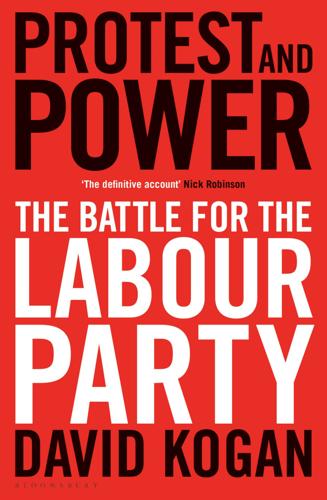
Protest and Power: The Battle for the Labour Party
by
David Kogan
Published 17 Apr 2019
From the other side, Labour was sued by five of its members, including one too young to be named, over its decision to freeze the votes of supporters who had joined after 12 January 2016. It was estimated that 130,000 people were affected. The case was made that these £3 supporters had joined on the premise that they could vote and this was in effect a contract. Crowdsourcing was used to fund this challenge and eventually raised over £90,000. Jeremy Corbyn was in the odd position of agreeing a High Court action against the party of which he was leader. Tensions were growing. Online abuse of MPs and supporters of Owen Smith were growing. The NEC had suspended local party meetings except for the election nominations.

Surveillance Valley: The Rise of the Military-Digital Complex
by
Yasha Levine
Published 6 Feb 2018
If they go to the next page of results, it’s a sign they’re not happy. You can use those signs that someone’s not happy with what we gave them to go back and study those cases and find places to improve search,” explained one Google engineer.39 Studying the logs for patterns, Google engineers turned user behavior into a system of crowdsourced free labor. It acted like a feedback loop that taught the search engine to be “smarter.” An auto-suggest spellchecker feature allowed Google to recognize minor but important quirks in the way people used language in order to guess the meaning of what people typed rather than just matching text to text.

Twitter and Tear Gas: The Power and Fragility of Networked Protest
by
Zeynep Tufekci
Published 14 May 2017
Even if it might have gone further—for example, the people might have decided to try to start a journal or a newspaper—a lot of work, resources, and luck would have been required. However, unlike citizens in a previous era for whom frustration with mass-media bias had engendered little more than sour feelings the next day or an uncertain, lengthy, journey, these young men—only four of them—immediately conceived 140journos, a crowdsourced, citizen journalism network on Twitter. “So you thought about it one day and started the next morning?” I asked, somewhat bewildered. They had. It resembled stories I had heard elsewhere: Tahrir Supplies of Egypt, which I will discuss further in chapter 3, had gone from an idea to a website and a Twitter page in one day and an effective field medical-supply coordinator in just a few more.
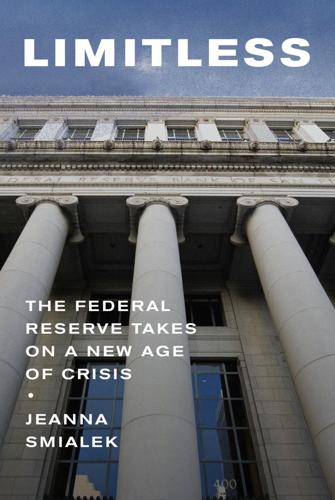
Limitless: The Federal Reserve Takes on a New Age of Crisis
by
Jeanna Smialek
Published 27 Feb 2023
It and other meme assets—stocks of Bitcoin and the movie theater chain AMC—had drawn lawmaker attention, as had the explosion in small-time trading on the Robinhood app and other platforms. Ordinary investors were carrying out complex transactions involving options, trading on borrowed money, and even staging crowdsourced rebellions against hedge funds. In GameStop’s case, a plan had coalesced on the forum Reddit and small-time investors had shut down a bet that Wall Street funds had taken against the stock. In a memorandum for the congressional hearing titled “Game Stopped?” the committee argued that the episode was raising “important questions” about “whether technology and social media have outpaced regulation in a manner that leaves investors and the markets exposed to unnecessary risks.”[11] Meme stocks making national headlines in 2021 did, at some level, trace back to the Fed, as participants in the phenomenon would tell you.
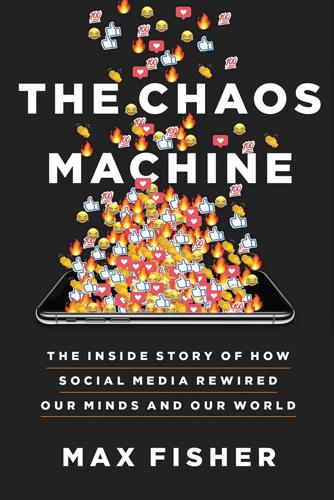
The Chaos Machine: The Inside Story of How Social Media Rewired Our Minds and Our World
by
Max Fisher
Published 5 Sep 2022
And they idolized WikiLeaks chief Julian Assange, an anarchist hacker whose politics, like 4chan’s, had drifted alt right. So when Assange published Podesta’s emails in October, a month before the election, they saw it not as a Russian-backed operation, but as the start of a thrilling campaign to expose the hated elite. Pursuing the 4chan pastime of crowdsourced dives, users scoured the tens of thousands of pages for revelations. In closed digital ecosystems, where users control the flow of information, evidence confirming the community’s biases can seem to summon itself, like a Ouija board drifting toward the letters of a word on everybody’s mind. When 4channers discovered that Podesta, an amateur chef, often mentioned food, they concluded it was a secret code.
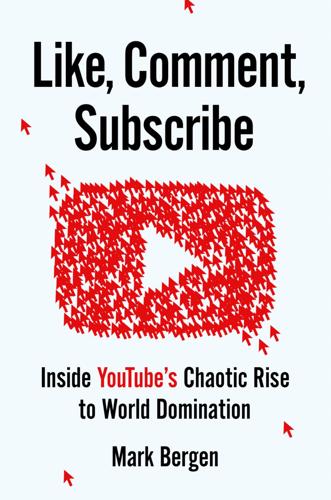
Like, Comment, Subscribe: Inside YouTube's Chaotic Rise to World Domination
by
Mark Bergen
Published 5 Sep 2022
Botha crunched its numbers: YouTube was paying around $4,000 a month to serve videos, with each play costing a tiny fraction of a cent in computing oomph. YouTube could conceivably charge people for features, like special video effects, or it could make money with ads, as Google did. In his memo Botha noted the recent success of “user-generated content” Web 2.0 companies like Flickr and Tripadvisor, a crowdsourced travel site that had sold for more than $100 million. YouTube could net at least that much. The memo worked. In November, Sequoia announced an investment of $3.5 million, praising the marvel of YouTube holding eight terabytes of footage, “the equivalent of moving one Blockbuster store a day over the Internet”—an astounding stat then, when Blockbuster still mattered.
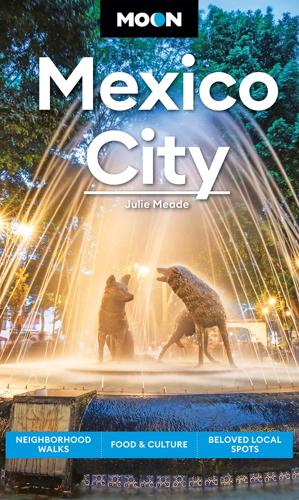
Moon Mexico City: Neighborhood Walks, Food & Culture, Beloved Local Spots
by
Julie Meade
Published 7 Aug 2023
NIGHTLIFE LISTINGS It’s hard to keep up with everything there is to see and do in Mexico City, but a few websites and periodicals can help you navigate the onslaught of movies, art openings, museum shows, concerts, and sporting events taking place across the city. There are a plethora of blogs and crowd-sourced websites covering food and culture in the city, but the following well-established publications are a reliable resource to stay up-to-date on the city’s cultural life. TIME OUT MEXICO The international magazine Time Out (www.timeoutmexico.mx) brings its signature service journalism to the capital, covering nightlife, dining, film, art and culture, and shopping throughout the metropolis.
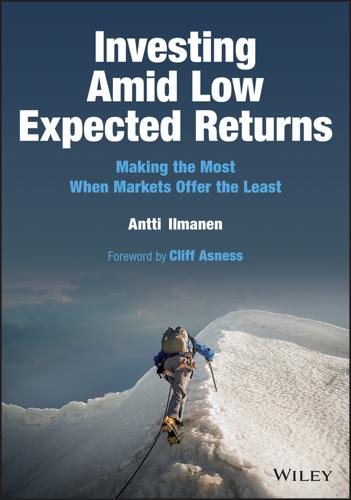
Investing Amid Low Expected Returns: Making the Most When Markets Offer the Least
by
Antti Ilmanen
Published 24 Feb 2022
.; and Harvey, Campbell R. (2018), “The equity risk premium in 2018,” Duke University working paper. Gray, Wesley; and Jack Vogel (2016), Quantitative Momentum, Wiley. Gray, Wesley; and Tobias Carlisle (2012), Quantitative Value, Wiley. Green, Clifton; Ruoyan Huang; Quan Wen; and Dexin Zhou (2019), “Crowdsourced employer reviews and stock returns,” Journal of Financial Economics 134(1), 236–251. Greenwood, Robin M.; Samuel G. Hanson; Andrei Shleifer; and Jakob Sørensen, (2020), “Predictable financial crises,” NBER working paper 27396. Greenwood, Robin; and Andrei Shleifer (2014). “Expectations of returns and expected returns,” Review of Financial Studies 27(3), 714–746.
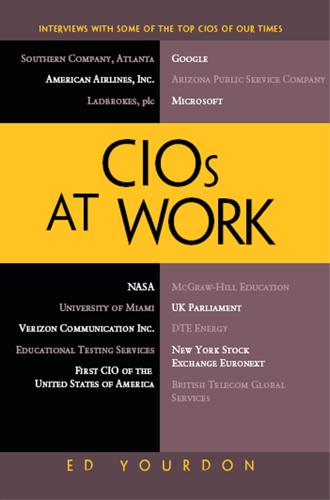
CIOs at Work
by
Ed Yourdon
Published 19 Jul 2011
And we also worked with Congress on the America COMPETES Act that now gives every agency the same authorities that DARPA and NASA have to launch challenges and prizes up to $50 million. Yourdon: Really? Kundra: Agencies can say, “Here’s our problem. We want it solved and are willing to pay $50 million.” And crowd-source solutions. Yourdon: You know, it’s fascinating because I present seminars in Rome on Enterprise 2.0, and up until now, the pharmaceutical industry has been one of the best examples of, of this concept. Kundra: Eli Lilly? Yourdon: And Pfizer. There’s one other one. And the people that I meet in Rome are just astounded and can’t believe that anybody would be doing this.
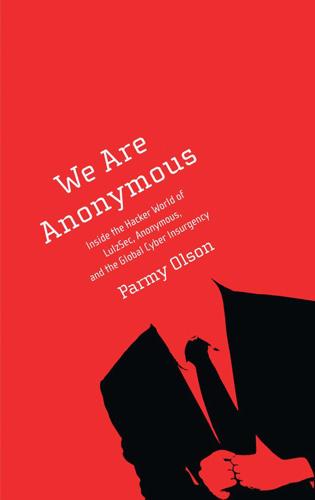
We Are Anonymous: Inside the Hacker World of LulzSec, Anonymous, and the Global Cyber Insurgency
by
Parmy Olson
Published 5 Jun 2012
To write a rousing post on /b/, for instance, you just needed to write in a way that would appeal to the Anon crowd, using linguistic devices like alliteration, repetition, sound bytes, and dramatic words like injustice, oppression, and downtrodden to describe corporations and governments, and justice, freedom, and uprising when referring to Anonymous. “You could inspire some fifteen-year-old, or someone with a fifteen-year-old’s mind-set, to hate whoever you want them to hate,” said William matter-of-factly. In having no clear goal, Anonymous was like any other modern-day movement that had become fragmented by the user-generated, crowd-sourced nature of a web-enabled society. Movements like the Tea Party and Occupy Wall Street had the same issue; they were often vague in their goals, but their supporters fought passionately against rival ideologies. Anonymous was a new movement, and a new process for fighting perceived oppressors. And it could be manipulated.
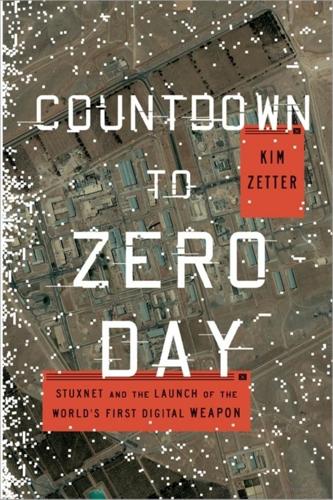
Countdown to Zero Day: Stuxnet and the Launch of the World's First Digital Weapon
by
Kim Zetter
Published 11 Nov 2014
But they were also left scratching their heads at the shocking rapidity at which operations that had remained stealth for so many years had unraveled so quickly in their hands—like the errant string of a sweater that when yanked causes the entire garment to disintegrate. The attackers had no doubt assumed, even counted on, the Iranians not having the skills to uncover or decipher the malicious attacks on their own. But they clearly hadn’t anticipated that the crowdsourced wisdom of the hive—courtesy of the global cybersecurity community—would handle the detection and analysis for them. With Stuxnet, a new world order was born in which security researchers and reverse-engineers became the unwitting draftees in a new kind of militia—one enlisted to dismantle and defend against the digital weapons that nations lobbed at one another.
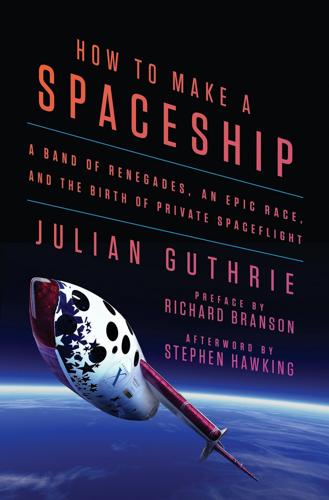
How to Make a Spaceship: A Band of Renegades, an Epic Race, and the Birth of Private Spaceflight
by
Julian Guthrie
Published 19 Sep 2016
Thank you; what a fun ride we’re on! A special note of gratitude goes to Scott Moyers at Penguin Press, for embracing this story from the moment he read my proposal. It was Scott who came up with the book title, How to Make a Spaceship. We had gone back and forth with dozens of titles over many weeks, and even crowdsourced a half dozen different titles. Nothing felt just right. How to Make a Spaceship fit for a number of reasons: As I see it, people make things while governments build things. There is a great renaissance under way with the maker movement and do-it-yourself culture. This book is about rolling up your sleeves and making things yourself.
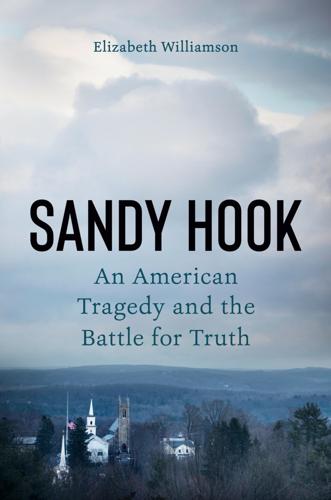
Sandy Hook: An American Tragedy and the Battle for Truth
by
Elizabeth Williamson
Published 8 Mar 2022
“He’s kind of smirking when he does his schtick.” In order to move products like My Patriot Supply storable food, solar generators, Supernatural Silver, Real Red Pill, and Tropic Mind Power supplements, Jones and his “reporters” mined for viral content that fit his agenda. He urged his fans to get out there, “crowd-source,” and “investigate.” These “citizen journalists” did most of the work, if you could call it that, combing official reports of major events for “anomalies” that to them suggested official lying and cover-up. “I was kind of a governor on him when he went over the edge, saying like, ‘No, don’t do that,’ ” Kelly told me of her role when she was more involved in the business.
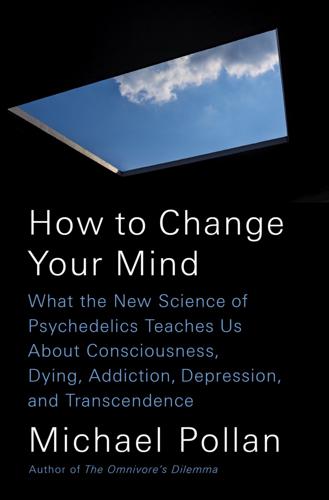
How to Change Your Mind: What the New Science of Psychedelics Teaches Us About Consciousness, Dying, Addiction, Depression, and Transcendence
by
Michael Pollan
Published 30 Apr 2018
While it left him uncertain whether he had experienced madness or transcendence, Hofmann immediately sensed the potential importance of this compound for neurology and psychiatry. So Sandoz, the pharmaceutical company for which he worked at the time of his discovery, did something unusual: in effect, it crowd-sourced a worldwide research effort to figure out what in the world Delysid—its brand name for LSD-25—might be good for. Hoping someone somewhere would hit upon a commercial application for its spookily powerful new compound, Sandoz offered to supply, free of charge, however much LSD any researcher requested.
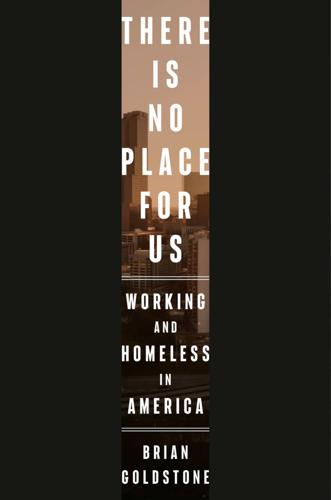
There Is No Place for Us: Working and Homeless in America
by
Brian Goldstone
Published 25 Mar 2025
Every day in America, caseworkers are forced to turn homeless families away for not being “homeless” in the right way. Staff at schools and colleges are forced to watch students struggle, able to offer little more than a gas card or a food bank referral or, as with Danielle’s teacher, a few days at a hotel paid out of their own pocket. In Reddit or Facebook groups, families crowdsource tactics for navigating a cruel and arbitrary system. Starting a GoFundMe is the most common suggestion. But our approach to counting and defining homelessness is not just robbing people of support. It also distorts our understanding of the problem. Narrow the lens, and perhaps we can persuade ourselves, as did those respondents to the CBS/New York Times poll four decades ago, that homelessness is a unique condition afflicting a particular type of person.
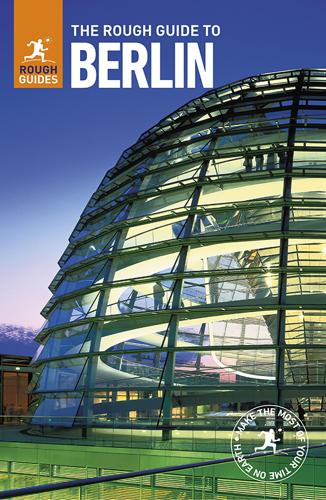
The Rough Guide to Berlin
by
Rough Guides
But in fact it’s as hipster as they come – from the two-lane, nine-pin bowling alley in the basement that’s given over to regular concerts, to the main room’s art exhibitions and pop-up community meals. The selection of tequila and mezcal is second to none. Daily 6pm–1am. Vagabund Brauerei Antwerpener Str. 3 030 52 66 76 68, vagabundbrauerei.com; Amrumer Strasse; map & map. This crowd-sourced brewery is run by three American friends with a highly infectious passion for craft beer. As well as their own excellent brews, they sell classic Belgian ales and lager from family breweries in southern Germany, all in a welcoming, unpretentious atmosphere that draws locals and expats alike. Mon–Fri 5pm till late, Sat & Sun 1pm till late.
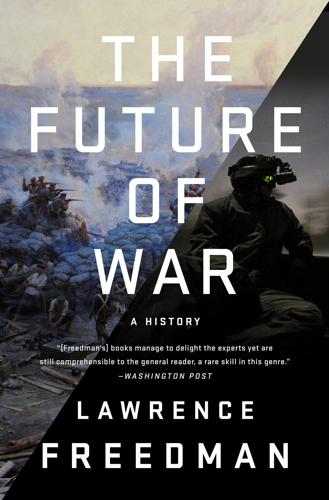
The Future of War
by
Lawrence Freedman
Published 9 Oct 2017
In its core scenario for the surprise attack, Ghost Fleet fitted in with what The Economist described as a distinctive feature of the genre that began with The Battle of Dorking, by presenting ‘new technologies as decisive, both a thrilling idea and a necessary device if… dominant nations were to be portrayed, initially at least, as victims,’ and as a means of imparting a stark message ‘of the wrongheadedness of politicians or senior officers, of national decline, of geopolitical change’.39 Cole was to the fore in an Atlantic Council project encouraging authors to generate insights in its ‘Art of Future Warfare Project’.40 One early product was a slim volume of short stories to demonstrate how fiction might alert policymakers to future possibilities. The themes varied from an American senator making an effective political pitch by encouraging crowdsourced cyber-attacks on Russian and Chinese systems to British intelligence analysts attempting to profile the population to pick out likely terrorists (in this case missing the brother of one of the analysts), to drone operators who could see distant battles better than those fighting them and so advise constantly on coming dangers and vulnerable targets.
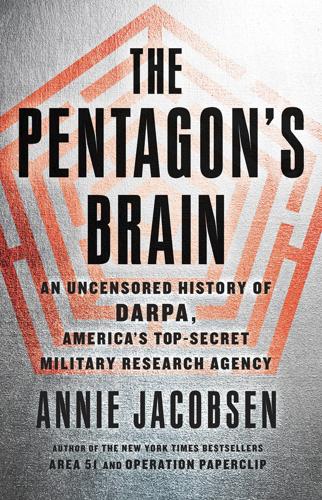
The Pentagon's Brain: An Uncensored History of DARPA, America's Top-Secret Military Research Agency
by
Annie Jacobsen
Published 14 Sep 2015
Illinois Historical Journal 84 (Summer 1991): 101–118. Klein, Naomi. “China’s All-Seeing Eye.” Rolling Stone, May 14, 2008. Kramer, Andrew E. “Leaving Camp Victory in Iraq, the Very Name a Question Mark.” New York Times, November 10, 2011. Kuniholm, Jonathan. “Open Arms: What Prosthetic-Arm Engineering Is Learning from Open Source, Crowdsourcing, and the Video-Game Industry.” IEEE Spectrum, March 1, 2009. Lang, Jenna. “Sci-fi writers take US security back to the future,” Guardian, June 5, 2009. Lee, Rhodi. “FDA Approves DEKA Arm System.” Tech Times, May 10, 2014. Licklider, J. C. R. “Man-Computer Symbiosis,” IRE Transactions on Human Factors in Electronics HFE-1, March 1960: 4–11.
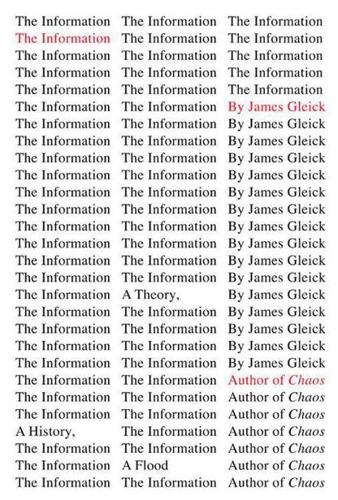
The Information: A History, a Theory, a Flood
by
James Gleick
Published 1 Mar 2011
Lust, likewise, according to Milton: “Eve, whose eye darted contagious fire.”♦ But only in the new millennium, in the time of global electronic transmission, has the identification become second nature. Ours is the age of virality: viral education, viral marketing, viral e-mail and video and networking. Researchers studying the Internet itself as a medium—crowdsourcing, collective attention, social networking, and resource allocation—employ not only the language but also the mathematical principles of epidemiology. One of the first to use the terms viral text and viral sentences seems to have been a reader of Dawkins named Stephen Walton of New York City, corresponding in 1981 with Douglas Hofstadter.
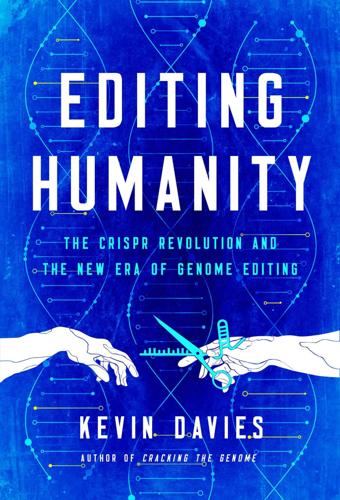
Editing Humanity: The CRISPR Revolution and the New Era of Genome Editing
by
Kevin Davies
Published 5 Oct 2020
“The price of Zolgensma seems insignificant now, don’t you think?”31 It wasn’t to the parents of Eliana Cohen. Shani and her husband Ariel despaired as their health insurer denied coverage for Zolgensma and spurned their appeals. With Eliana’s second birthday just a week away, the Cohens launched a desperate crowdsource campaign. Miraculously, they raised $2 million in just five days. On Maundy Thursday 2019, the New England Journal of Medicine published a study in which a team at the St. Jude Children’s Research Hospital in Memphis, Tennessee, successfully treated eight infant boys with “bubble boy” disease (X-linked SCID), the same disorder that Alain Fischer had treated two decades earlier.32 “We believe that the patients are cured,” said team leader Ewelina Mamcarz.
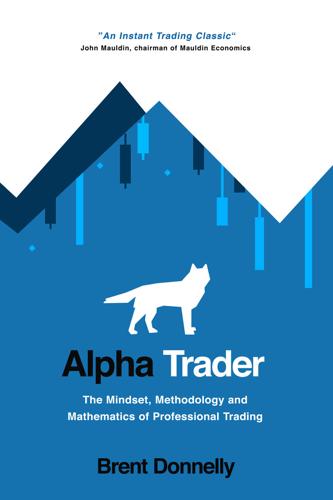
Alpha Trader
by
Brent Donnelly
Published 11 May 2021
The wisdom of crowds, though, relies on diverse and unbiased opinion. And it relies on incentives. If there is no prize, estimates will be lazy and less accurate. Or (for example) if the jar is extremely far away from the people trying to estimate the number of jelly beans (say at the very front of a huge lecture hall), the crowdsourced conclusion might be too low because the jar looks smaller from afar. If everyone is drunk or distracted, the estimate also might not be as good. In trading, if you can explain exactly why you think the crowd is wrong, you are on the right track. Usually this will be either because the crowd is biased or the crowd’s incentives are not aligned with the goal of finding the equilibrium price.
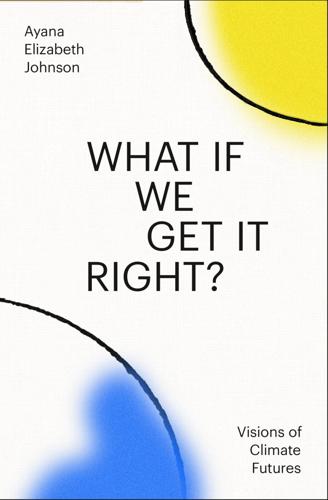
What If We Get It Right?: Visions of Climate Futures
by
Ayana Elizabeth Johnson
Published 17 Sep 2024
Ayana: What is the nerdiest, most esoteric thing we need to do to get it right on climate in terms of our legal system? Is there like a subsection 309B of something that we need to rewrite? Abbie: We need an army of law nerds. I love working in an organization of the most amazing law nerds in the world. I’m thinking now about all the answers that would pour forth if I emailed that question to our team and crowdsourced answers. I would get like two hundred different answers because it all matters. We have to sweat the details. I can’t pick just one; I can’t choose. Ayana: Okay, okay. Abbie: But the question reminds me of something we have to stop doing. We have to stop thinking that there’s one answer.
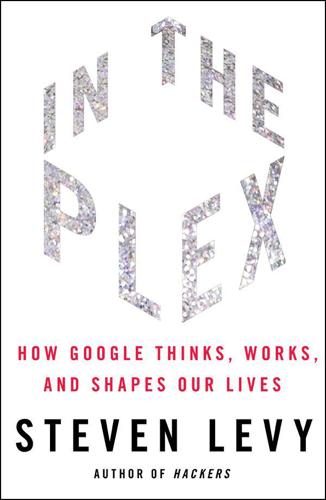
In the Plex: How Google Thinks, Works, and Shapes Our Lives
by
Steven Levy
Published 12 Apr 2011
▲ Google launched its Knol project in 2008, when the head of search engineering, Udi Manber, an aficionado of New Yorker–style cartoons, found unsatisfactory results for a query on that magazine’s wry artist Peter Arno. He began thinking of a project that would encourage people with expertise on a subject to create online encyclopedia-style articles on their specialties or just things they knew a lot about. (That would contrast with the hugely popular crowd-sourced Wikipedia items, which garnered reliably high rankings in Google searches.) Manber had a team set up protocols for creating “knols” on items—which could be financed by AdSense. (The term derived from “knowledge.”) He recruited his MD wife to write a prototype knol on insomnia and got Google to pay handsome sums to the country’s best medical specialists for seeding the service with succinct descriptions of their specialties.
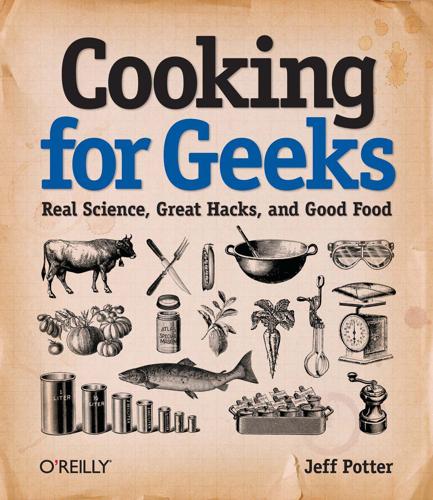
Cooking for Geeks
by
Jeff Potter
Published 2 Aug 2010
Back to Aunt Suzie’s jelly: Manchego cheese and quince jelly both have long histories in Spain, so the pairing is likely rooted in history. Given an ingredient, you can look at how that ingredient has been used historically in a particular culture to find inspiration. (Think of it as historical crowdsourcing.) If nothing else, limiting yourself to ingredients that would traditionally be used together can help bring a certain uniformity to your dish, and serve as a fun challenge, too. And you can extend this idea to wines to accompany your dishes, from the traditional (say, a French rosé with Niçoise salad) to modern (Aussie Shiraz with barbeque).
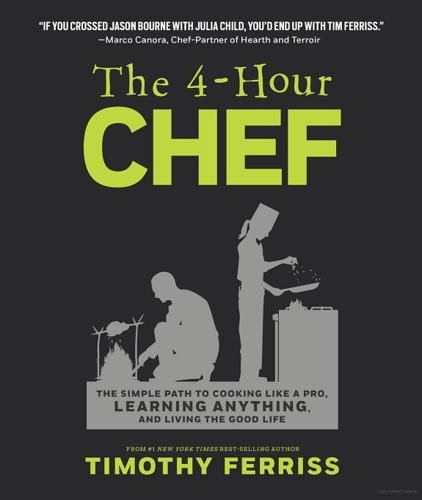
The 4-Hour Chef: The Simple Path to Cooking Like a Pro, Learning Anything, and Living the Good Life
by
Timothy Ferriss
Published 1 Jan 2012
Following a lecture in high-tech entrepreneurship at Princeton, which I give twice a year, a student named Greg Detre approached me to discuss angel investing. His new start-up, Memrise, focused on accelerating the acquisition of foreign languages. Detre was completing his PhD in computational neuroscience and aimed to crack the learning code by combining optimal spaced repetition with crowd-sourced (and crowd-vetted) images, among other things. As an aside, he’d also performed DARPA-sponsored research on using fMRI scans to read minds. His partner for Memrise was an unassuming and affable Brit named Ed Cooke. Google helped me figure out the rest. Ed has memorized a shuffled deck of cards in competition in 43 seconds.
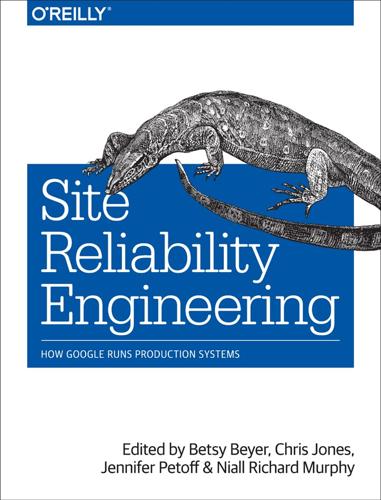
Site Reliability Engineering: How Google Runs Production Systems
by
Betsy Beyer
,
Chris Jones
,
Jennifer Petoff
and
Niall Richard Murphy
Published 15 Apr 2016
Our postmortem documents are Google Docs, with an in-house template (see Appendix D). Regardless of the specific tool you use, look for the following key features: Real-time collaboration Enables the rapid collection of data and ideas. Essential during the early creation of a postmortem. An open commenting/annotation system Makes crowdsourcing solutions easy and improves coverage. Email notifications Can be directed at collaborators within the document or used to loop in others to provide input. Writing a postmortem also involves formal review and publication. In practice, teams share the first postmortem draft internally and solicit a group of senior engineers to assess the draft for completeness.
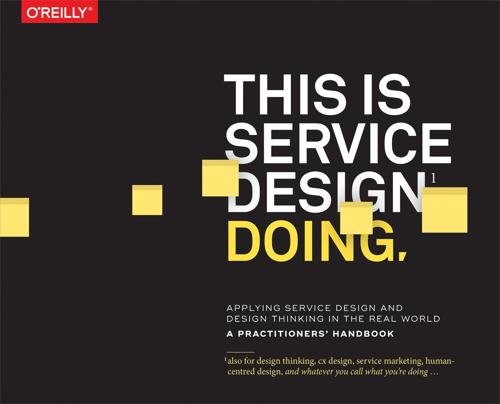
This Is Service Design Doing: Applying Service Design Thinking in the Real World: A Practitioners' Handbook
by
Marc Stickdorn
,
Markus Edgar Hormess
,
Adam Lawrence
and
Jakob Schneider
Published 12 Jan 2018
Service design is rooted in design thinking, and brings a creative, human-centered process to service improvement and designing new services. Through collaborative methods that engage both customers and service delivery teams, service design helps organizations gain true, end-to-end understanding of their services, enabling holistic and meaningful improvements.” 7 – crowdsourced by Megan Erin Miller Comment “Lumpers will often argue it is all about the mindset. Being open, empathetic, asking questions, starting with ‘I don’t know,’ and learning by doing. You can call yourself anything you like, but if you share this mindset you are a service design thinker … or rather a service design do-er
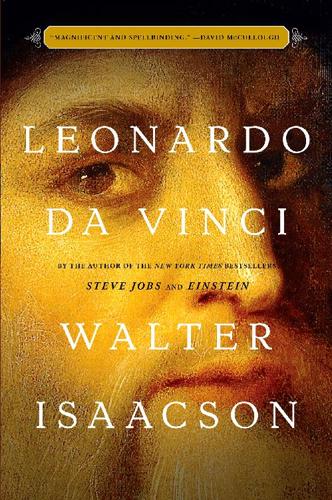
Leonardo Da Vinci
by
Walter Isaacson
Published 16 Oct 2017
If it could be matched to a fingerprint on another work by Leonardo, who often used his hands and fingers to smooth his colors, that would come close to being dispositive. Cotte gave an image of the fingerprint to Christophe Champod, a professor at the Institute of Criminology and Criminal Law in Lausanne. Finding it almost impossible to read, he crowdsourced the task, posting it on a website and getting close to fifty people offering their annotations. Alas, the result was inconclusive. No patterns could be determined. “I consider this mark as being of no value,” Champod declared.33 At this point a controversial character entered the tale. Peter Paul Biro, a forensic art examiner based in Montreal, specialized in finding and using fingerprints to authenticate art.

Architects of Intelligence
by
Martin Ford
Published 16 Nov 2018
I know there was an older project called Cyc that was a very labor-intensive process, where people would try to write down all the logical rules, such as how objects related, and I think it became kind of unwieldy. Is that the kind of thing you’re doing with Mosaic? OREN ETZIONI: The problem with the Cyc project is that, over 35 years in, it’s really been a struggle for them, for exactly the reasons you said. But in our case, we’re hoping to leverage more modern AI techniques—crowdsourcing, natural language processing, machine learning, and machine vision—in order to acquire knowledge in a different way. With Mosaic, we’re also starting with a very different point of view. Cyc started, if you will, inside out, where they said, “OK. We’re going to build this repository of common-sense knowledge and do logical reasoning on top of it.”
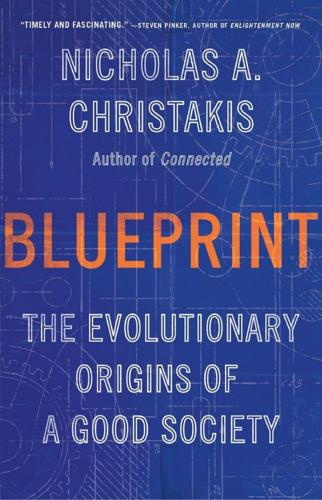
Blueprint: The Evolutionary Origins of a Good Society
by
Nicholas A. Christakis
Published 26 Mar 2019
For instance, using this platform, one firm hired fifty thousand people to label the content of fourteen million images in order to create a database to train computers in image recognition.2 After the humans did their work, the real machines could take over. Amazon Mechanical Turk and other crowdsourcing platforms introduced in the past decade have revolutionized science as well as business. Scientists use these platforms to code data (like galaxies in astronomical images, proteins in biochemical images, or ancient ruins beneath jungles in satellite photographs), conduct marketing and scientific surveys, and get subjects for social science experiments.
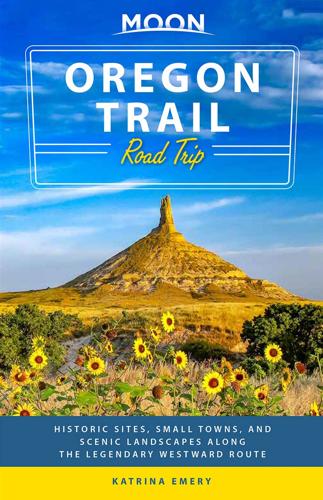
Moon Oregon Trail Road Trip: Historic Sites, Small Towns, and Scenic Landscapes Along the Legendary Westward Route
by
Katrina Emery
and
Moon Travel Guides
Published 27 Jul 2020
Events are centered at Tom McCall Waterfront Park and kick off around Memorial Day weekend with fireworks, signaling the start of another fantastic summer in Portland. Every June, the streets of Portland are awash in hundreds of bicycle rides, each celebrating the city’s fun, wacky bike culture. Known as Pedalpalooza (www.shift2bikes.org, June, free), the month-long party on wheels is a crowd-sourced mix of rides that anyone can volunteer to lead, from themed costumed rides to protest rides, family-friendly rides to adult-only dance-party rides. The month is capped off by Portland’s version of the World Naked Bike Ride, a celebratory event that attracts over 10,000 people in all states of dress.
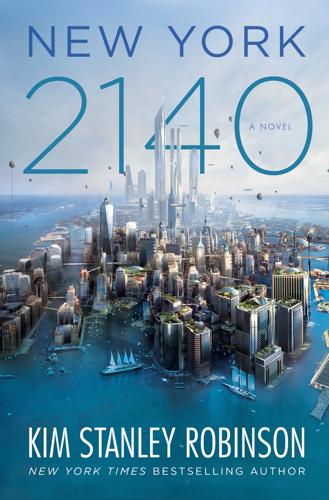
New York 2140
by
Kim Stanley Robinson
Published 14 Mar 2017
Money is thought of as value.” “Okay, I get that. We’re broke and I get that.” “So good, keep hanging with me. We live by buying things with money, in a market that sets all the prices.” “The invisible hand.” “Right. Sellers offer stuff, buyers buy it, and in the flux of supply and demand the price gets determined. It’s crowdsourced, it’s democratic, it’s capitalism, it’s the market.” “It’s the way of the world.” “Right. And it’s always, always wrong.” “What do you mean wrong?” “The prices are always too low, and so the world is fucked. We’re in a mass extinction event, sea level rise, climate change, food panics, everything you’re not reading in the news.”
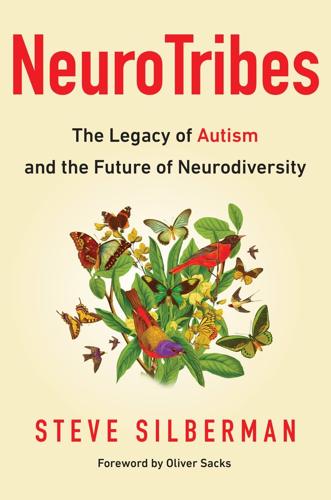
NeuroTribes: The Legacy of Autism and the Future of Neurodiversity
by
Steve Silberman
Published 24 Aug 2015
The book’s unexpected popularity inspired Rimland to launch the National Society for Autistic Children, which helped end decades of shame and isolation for families like his, and lobbied for legislation based on the principle that all children have the right to an education, including those with developmental disabilities. By crowdsourcing the search for effective autism treatments, he gave the parents in his network a sense of hope and progress at a time when research in the field was at a virtual standstill because the condition was still believed to be so rare. In many ways, his work set the stage for the rediscovery of Asperger’s lost tribe and the current surge of interest in autism research.
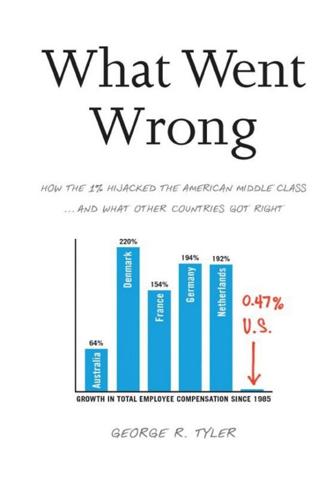
What Went Wrong: How the 1% Hijacked the American Middle Class . . . And What Other Countries Got Right
by
George R. Tyler
Published 15 Jul 2013
But it proved too complex for Silicon Valley to unravel despite aggressive support from the national treasure called the Defense Advanced Research Projects Agency (DARPA). The puzzle went unsolved for fifteen frustrating years, until DARPA figured out a solution. No, not the answer, just the solution. They configured the challenge into an online puzzle video game called Fold.it and crowdsourced it to let global gamers figure it out (ask your teenage son or daughter). Nearly an infinite universe of tiny interactions: a perfect puzzle. A perfect game. MSNBC reports it took the gamers ten days in September 2011 to solve it.40 Innovation is the lifeblood of economic growth and future prosperity.
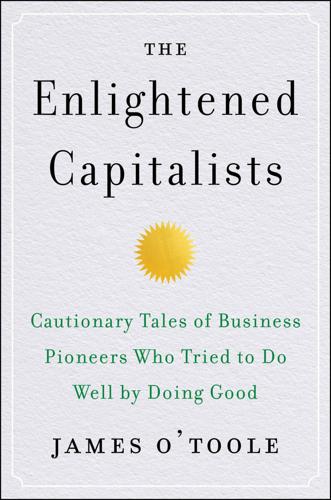
The Enlightened Capitalists
by
James O'Toole
Published 29 Dec 2018
The would-be buyer sued, but after a prolonged legal battle, Ben eventually prevailed in court on a narrow technicality. Ben then sold Jerry’s half of the business by private offering to friends, acquaintances, and local Vermonters who shared his values. (Jerry retained a small ownership position and agreed to continue to participate in promotional events.) The sale amounted to an early exercise in crowdsourcing. Enter Chico Ben was now in control, but the company was in trouble. For all his marketing brilliance and admirable commitment to social causes, he was a terrible manager, by turns autocratic and indecisive. As a result, his hardworking employees were not having the fun Jerry had promised, and their already poor morale was in decline.

Four Battlegrounds
by
Paul Scharre
Published 18 Jan 2023
This could occur by hackers or malicious insiders directly altering the training dataset. In a proof of concept, AI researchers showed the ability to poison a medical AI model to change the recommended dosage of patients’ blood medication. Attackers could also manipulate real-world data that an AI system uses to train itself over time. Spam filters, recommendation algorithms, and crowd-sourcing platforms all draw on data from external sources. Poisoning attacks can alter the data or even just the label applied to the data. Some forms of data poisoning are undetectable. Attackers can insert adversarial noise into the training data, altering the training data in a way that is hidden to human observers.

Elon Musk
by
Walter Isaacson
Published 11 Sep 2023
“If you have a wallet connected to a money-market account, that’s the key piece that makes the crystal glow.” Also speaking up, though somewhat reticently, was a young midlevel engineer, born in France, named Ben San Souci. “Can I give you an idea in nineteen seconds?” he asked. It was about ways to crowd-source moderation of hate speech. Musk interjected with his idea for giving each user a slider they could manipulate to determine the intensity of tweets they were shown. “Some will want teddy bears and puppies, others will love combat and say ‘Bring it all on.’ ” It wasn’t quite the point San Souci was making, but when he started to follow up, a woman tried to say something and he did a surprising thing for a tech bro: he deferred to her.

Solr in Action
by
Trey Grainger
and
Timothy Potter
Published 14 Sep 2014
Each of the approaches discussed so far for recommending similar documents is based upon information derived from the content of your documents. In the next section, we will explore the idea of using user behavior—how your users interact with your documents—to create an automatic feedback mechanism based upon crowd-sourced intelligence that can greatly improve the relevancy of your search system. 16.5.7. Collaborative filtering Collaborative filtering is one of the most commonly used and best performing recommendation algorithms in the machine-learning world. It deviates from the other recommendation approaches described so far in that it isn’t based upon content similarity, but is instead based upon the behavior of your users as they interact with your documents.
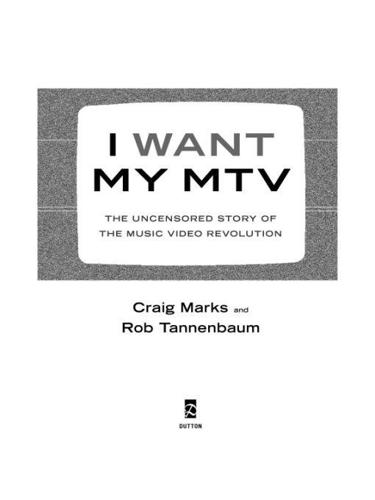
I Want My MTV: The Uncensored Story of the Music Video Revolution
by
Craig Marks
and
Rob Tannenbaum
Published 19 Sep 2011
“MTV helped people relate to me as more than just an image,” says Crawford, who became an integral part of the channel, via VMA broadcasts and even comedy interstitials. Ben Stiller had his own MTV show, where he impersonated Bono and Bruce Springsteen, before moving on to network TV and Hollywood. And for You Wrote It, You Watch It, an early experiment in crowd-sourcing, MTV hired Jon Stewart, a self-described “bitter little hairy man” who a year earlier hosted Short Attention Span Theater on Comedy Central. You Wrote It—which has become synonymous with the phrase “short-lived”—also propelled the comedy careers of Michael Ian Black, Michael Showalter, David Wain, and Thomas Lennon.
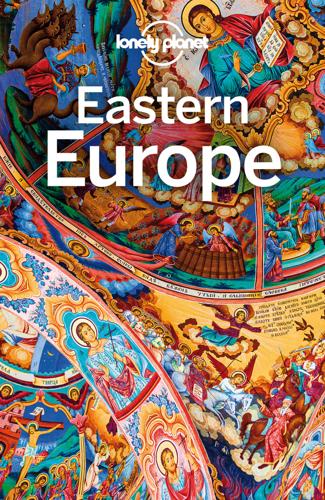
Lonely Planet Eastern Europe
by
Lonely Planet
,
Mark Baker
,
Tamara Sheward
,
Anita Isalska
,
Hugh McNaughtan
,
Lorna Parkes
,
Greg Bloom
,
Marc Di Duca
,
Peter Dragicevich
,
Tom Masters
,
Leonid Ragozin
,
Tim Richards
and
Simon Richmond
Published 30 Sep 2017
Useful Websites Lonely Planet (www.lonelyplanet.com/europe) Destination information, hotel bookings, traveller forum and more. Deutsche Bahn (www.bahn.de) The best online train timetable for the region. Like a Local (www.likealocalguide.com) Free online guides to cities across the region, written by locals. Atlas Obscura (www.atlasobscura.com) Crowd-sourced travel guide to offbeat attractions around the world; plenty on Eastern Europe. VisitEurope (www.visiteurope.com) Info and inspiration for travel in 36 European countries. Spotted by Locals (www.spottedbylocals.com) Insider tips for cities across Europe. What to Take Flip-flops (thongs) for overnight trains, hostel bathrooms and beaches Hiking boots for treks and cobbled streets Earplugs and eyeshades for hostels and overnight trains European plug adaptors Unlocked mobile phone to use local SIM cards Spork or cutlery for hikes, markets and train picnics Exchange Rates Australia A$1 €0.69 R44 Canada C$1 €0.71 R45 Japan ¥100 €0.81 R52 New Zealand NZ$1 €0.66 R42 UK UK£1 €1.18 R75 US US$1 €0.96 R61 For current exchange rates, see www.xe.com Daily Costs Budget: Less than €40 AHostel beds €10–25 AAdmission to museums €1–15 ACanteen meals €3–6 ABeer €1.50–4 Midrange: €40–150 AMidrange hotel €40 AMain meal in a decent restaurant from €10 AInner-city taxi trip €10–15 AHalf-day activity like horseriding or rafting €30–50 Top End: More than €150 ATop-end hotel rooms per night from €100 ASwanky, big-city restaurant meal from €20 AHire cars per day, around €30 APrivate hiking or tour guide per day €75–150 Accommodation Hotels From Soviet-era behemoths to palatial five-star places.
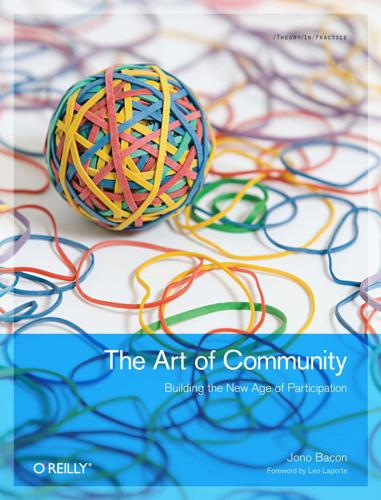
The Art of Community: Building the New Age of Participation
by
Jono Bacon
Published 1 Aug 2009
Linux and open source were different: these companies had to understand that volunteers in bedrooms, basements, and universities had as much input in the direction and focus of that software as anyone else. We now know that if these community members are welcomed and treated in a collaborative manner, a company can net a huge amount of unpaid development. The buzzwords crowdsourcing and peer production are widespread in the business world. Unfortunately, many of the companies jumping on the open source bandwagon back in 2004 failed to understand and embrace this community. Instead, they merely tolerated it as a politically correct nod to the wider open source community. Ubuntu was different.

Enlightenment Now: The Case for Reason, Science, Humanism, and Progress
by
Steven Pinker
Published 13 Feb 2018
Cheap hi-fi headphones and, soon, cardboard virtual-reality glasses enhance the aesthetic experience well beyond the tinny speakers and muddy black-and-white reproductions of my youth. And those who like paper can buy a used copy of Doris Lessing’s The Golden Notebook, Vladimir Nabokov’s Pale Fire, or Wole Soyinka’s Aké: The Years of Childhood for a dollar apiece. A combination of Internet technology and crowdsourcing from thousands of volunteers has led to flabbergasting access to the great works of humankind. There can be no question of which was the greatest era for culture; the answer has to be today, until it is superseded by tomorrow. The answer does not depend on invidious comparisons of the quality of the works of today and those of the past (which we are in no position to make, just as many of the great works of the past were not appreciated in their time).
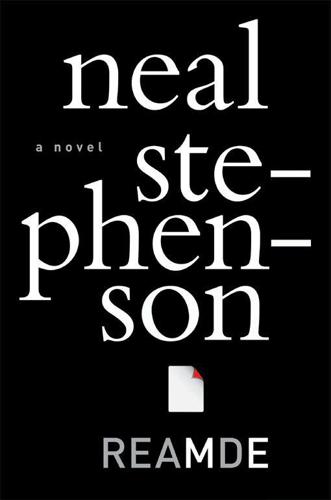
Reamde
by
Neal Stephenson
Published 19 Sep 2011
Once it was up and running, they could point to it and to its 100 percent success rate as vindicating the premise of APPIS, which was that real-world problems—especially problems that were difficult to solve because of hard-wired deficiencies of the human neurological system, such as the tendency to become bored when given a terrible job—could be tackled by metaphrasing them into Medieval Armed Combat scenarios, and then (here brandishing two searingly hip terms from high tech) putting them out on the cloud so that they could be crowdsourced. The system, despite its bogosity—which was fundamental, evident, and frequently pointed out by huffy nerd bloggers—immediately became a darling of hip West Coast tech-industry conferences. APPIS had to be turned into a separate division and expanded onto a new floor of the office building in Seattle, which conveniently had been vacated by an imploding bank.

Engineering Security
by
Peter Gutmann
“Matching design sketches to the desired level of design feedback”, Jan Miksovsky, 26 October 2006, http://miksovsky.blogs.com/flowstate/2006/10/using_crude_ske.html. “Napkin Look and Feel”, http://napkinlaf.sourceforge.net/. “Issues and Applications of Case-Based Reasoning in Design”, Mary Maher and Pearl Pu, Lawrence Erlbaum Associates, 1997. “Applying Case-Based Reasoning: Techniques for Enterprise Systems”, Ian Watson, Morgan Kaufman, 1997. “Crowdsourcing user studies with Mechanical Turk”, Aniket Kittur, Ed Chi and Bongwon Suh, Proceedings of the 26th Conference on Human Factors in Computing Systems (CHI’08), April 2008, p.453. “Are Your Participants Gaming the System? Screening Mechanical Turk Workers”, Julie Downs, Mandy Holbrook, Steve Sheng and Lorrie Cranor, Proceedings of the 28th Conference on Human Factors in Computing Systems (CHI’10), April 2010, p.2399.
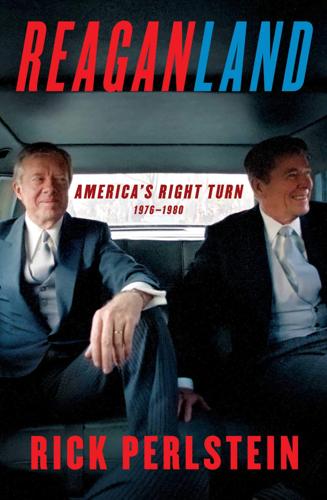
Reaganland: America's Right Turn 1976-1980
by
Rick Perlstein
Published 17 Aug 2020
Linder of the University of Missouri–Kansas City School of Law, whose Famous-Trials.com was useful in reconstructing the trial of Dan White; Dave Leip, whose U.S. Elections Atlas provides indispensable statistics; the diehard Saturday Night Live fans behind SNLtranscripts.jt.org; and Hawes Publications, which has uploaded every week’s New York Times bestseller list for easy reference. Brewster Kahle is an American hero for providing a platform for crowdsourced historian preservation through his nonprofit Internet Archive, where, for example, one kind soul uploaded transcripts of all the ABC News broadcasts from 1979 to 1980. Julian Assange remains a controversial figure, but the State Department documents uploaded to Wikileaks.org documenting the fall of the Shah of Iran were indispensable to me.